

The Cost of Travel in Japan: My 2024 Budget Breakdown
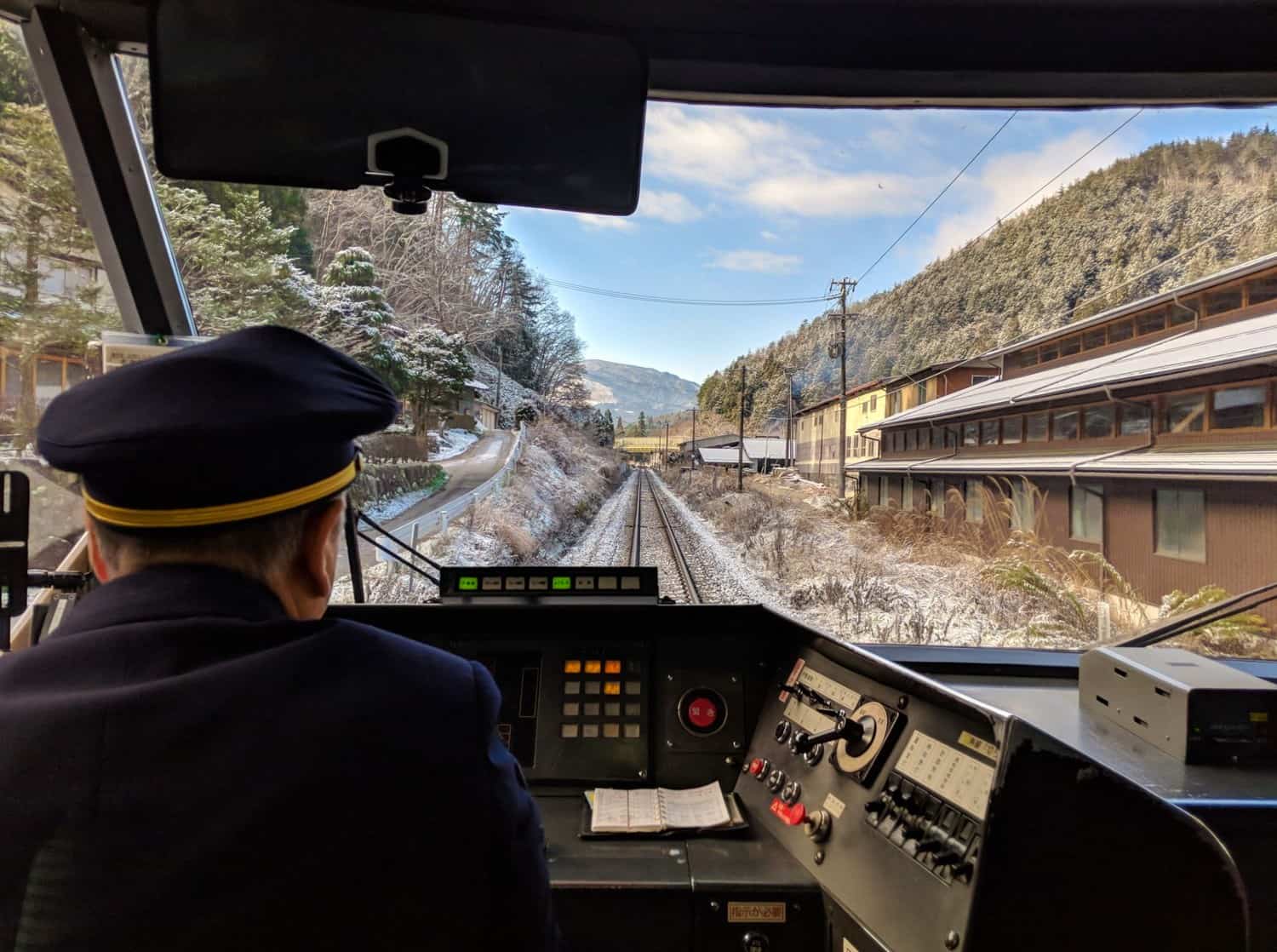
It took me six years to get to Japan.
I didn’t think I could afford it.
Every time I seriously looked into visiting, I would wince at the high cost of the train passes, read about how the hotels were super-expensive, and then fly to Vietnam instead. Or Taiwan. Or even Australia. Japan was simply too expensive for a budget traveller, so I decided to save it for when I was rich.
With that not happening any time soon, I decided to blow my money anyway, because I wanted to go and the gushing blog posts from travel writer friends had convinced me it would be worth the splurge.
Imagine my surprise, then, when I discovered that it really wasn’t that expensive.
I arrived in Japan fully expecting it to be the priciest country I’ve ever been to, but I discovered it’s more on a par with Western Europe or North America, and cheaper than Australia. It was way more affordable than Namibia , where my daily expenses came to $132, and way, way, way more affordable than the Democratic Republic of the Congo , where I averaged, um, $550 a day.
Anyway! This is about the cost of travel in Japan rather than my poor financial decisions, so let’s get started!
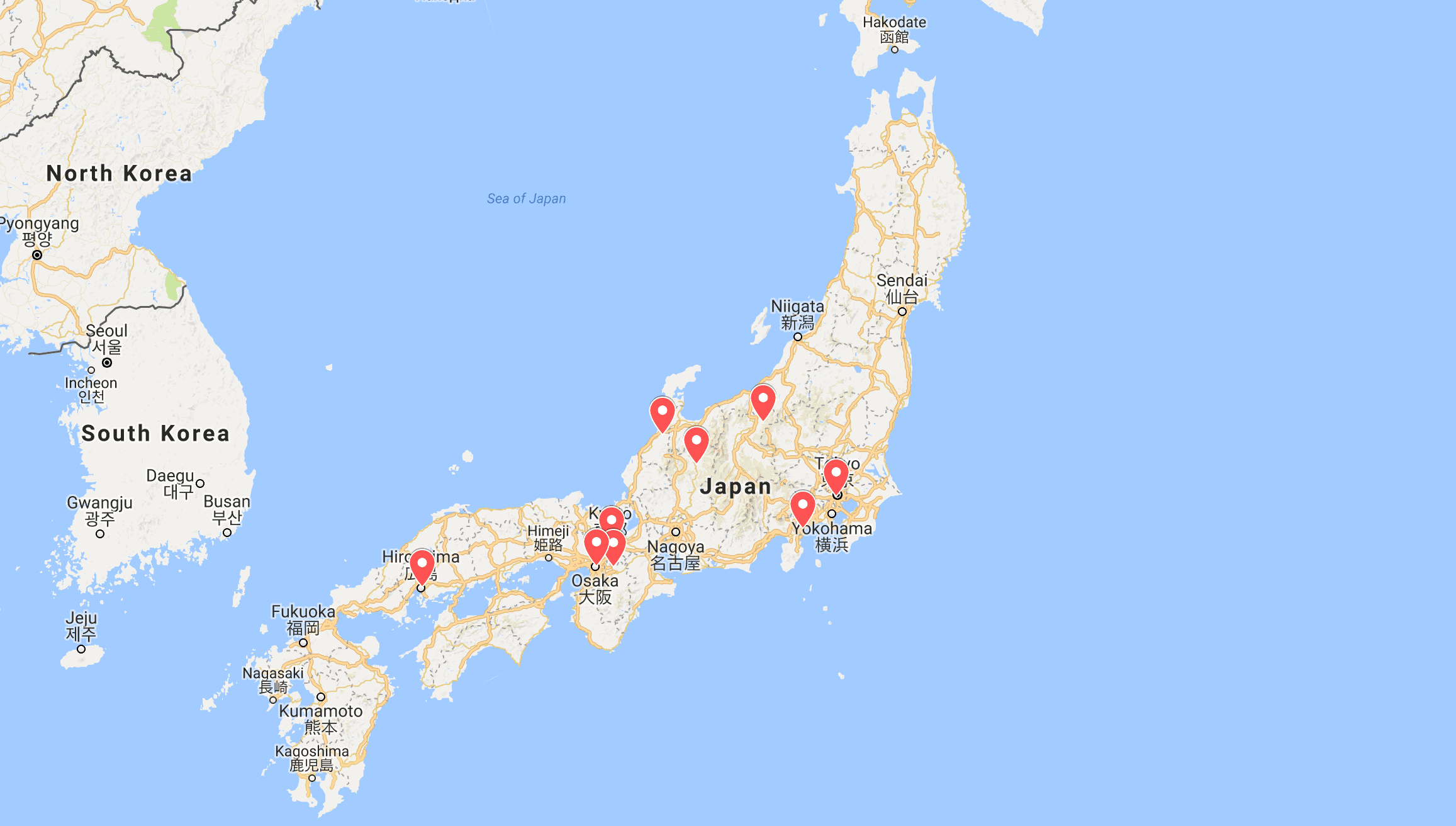
My 16-Day Japan Itinerary
Here’s a brief rundown of where I visited over my 16 days in the country — I think I managed to put together the perfect itinerary for first-time travellers to Japan .
Tokyo: 4 nights Hakone: 1 night Yudanaka: 1 night Kanazawa: 2 nights Takayama: 1 night Kyoto: 3 nights Hiroshima: 1 night Osaka: 3 nights
What’s Included in this Post
This budget breakdown covers how much I spent on accommodation, transportation, activities, food, and whichever miscellaneous items popped up while I was in country.
I’ve not included my flights into and out of Japan because this is going to vary significantly based on where you’ll be arriving from. In case you’re interested, though, I paid $320 for a return flight from Rome to Tokyo, which I scored through browsing my favourite site for flight bargains, Secret Flying .
The amounts in this guide are listed in Japanese Yen and U.S. dollars, simply because the vast majority of my readers are from the U.S. And finally, these are the three rules I always abide by on this site:
- I do not accept sponsored trips, so everything listed in this post is something I personally paid for with my own money
- I travel anonymously to ensure my experiences accurately reflect what yours will be. I don’t want special treatment!
- Every single word of this article was written by me, based on all of my own experiences. I strictly do not use AI to compose my guides.
Okay — let’s get started with my expenses.
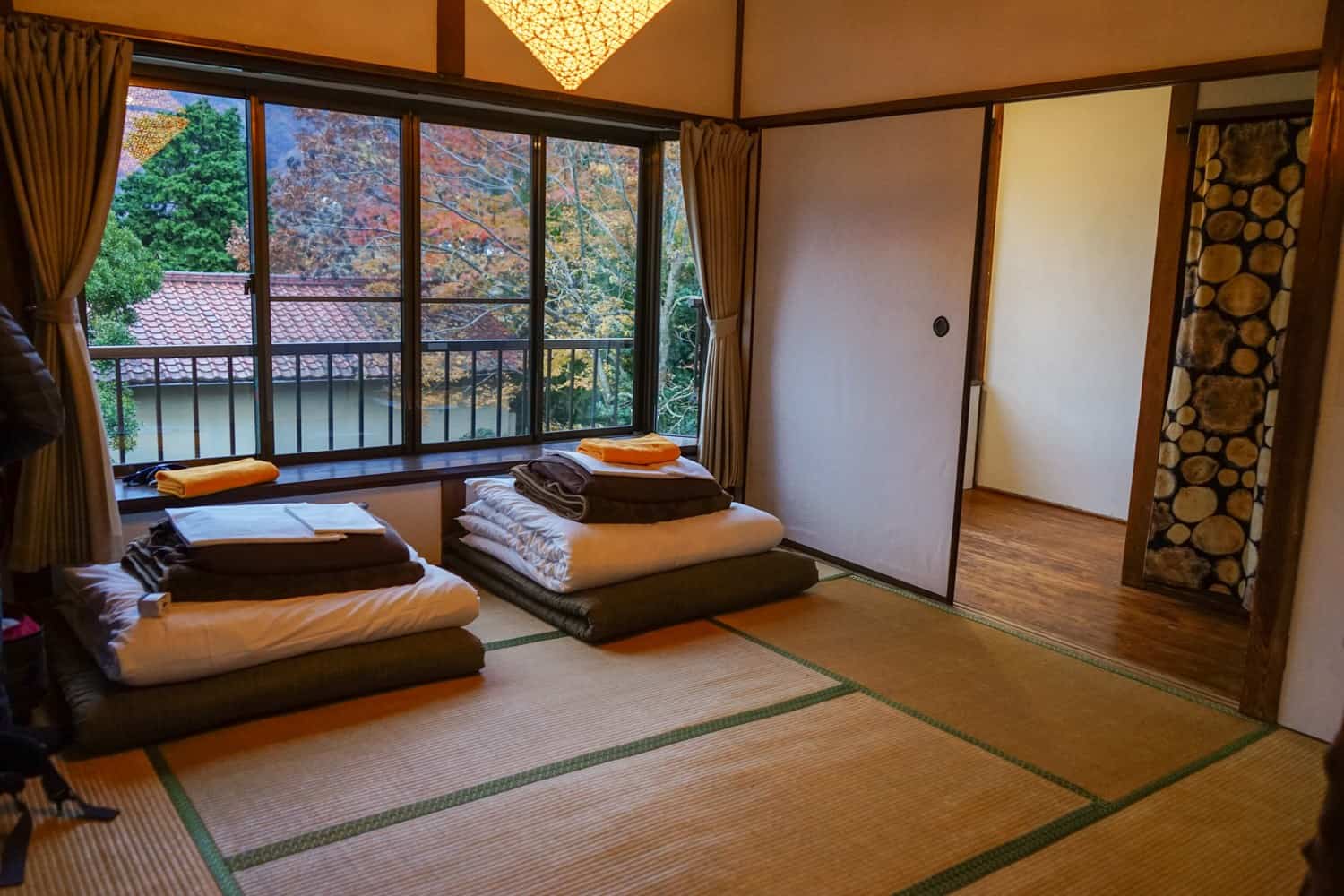
The Cheapest Accommodation Options in Japan
Like practically every country in the world, prices in Japan have increased post-pandemic.
In 2024, you’ll be paying a little more for everything than you would have done a few years ago — in fact, prices almost doubled between my first trip in 2017 and today! — however costs are still on a par with most Western countries. Travel in Japan shouldn’t be too devastating to your travel budget.
I’ll start on the lower end of the spectrum. If you’re willing to put in the time and effort, it’s possible to avoid paying for accommodation entirely.
Couchsurfing exists in Japan and allows you to stay with a local for free , usually sleeping on their sofa and enjoying a local’s insight into life in their country. Yeah, it’s not the most comfortable of living situations, but if your budget’s tight, it’s worth sending out a few requests to hosts to see if anything comes of it. You can browse through the 300,000+ Japanese hosts on the Couchsurfing site — just be sure to read the references of anybody you choose to stay with.
Housesitting is a more upmarket option, aimed at mid-range and luxury travellers. Housesitting involves taking care of somebody’s house for free while they’re away, often (but not always) looking after their pets, too. It’s best for long-term travellers or retirees, as you can’t pick and choose dates and destinations, so you’ll need to have a lot of flexibility as to where you go and at what time of year. If you do have that freedom, though, it’s a wonderful way to cut down your travel expenses, soak up some home comforts, and live like a local for a while. Trusted Housesitters is the main site for getting started with housesitting, as they have the highest number of listings.
Finally, when it comes to free accommodation, you could take a look at WorldPackers in Japan , where you’ll be able to volunteer for locals in exchange for food and board. There are some seriously cool options available on the site right now, from helping harvest honey for a bee farm in the countryside to lending a hand in the garden of a Buddhist temple. Readers of this site get a $10 discount for WorldPackers with the promo code neverendingfootsteps .
If you’re not looking to travel for free and just want a clean and comfortable room to sleep in, there are plenty of great budget options, too.
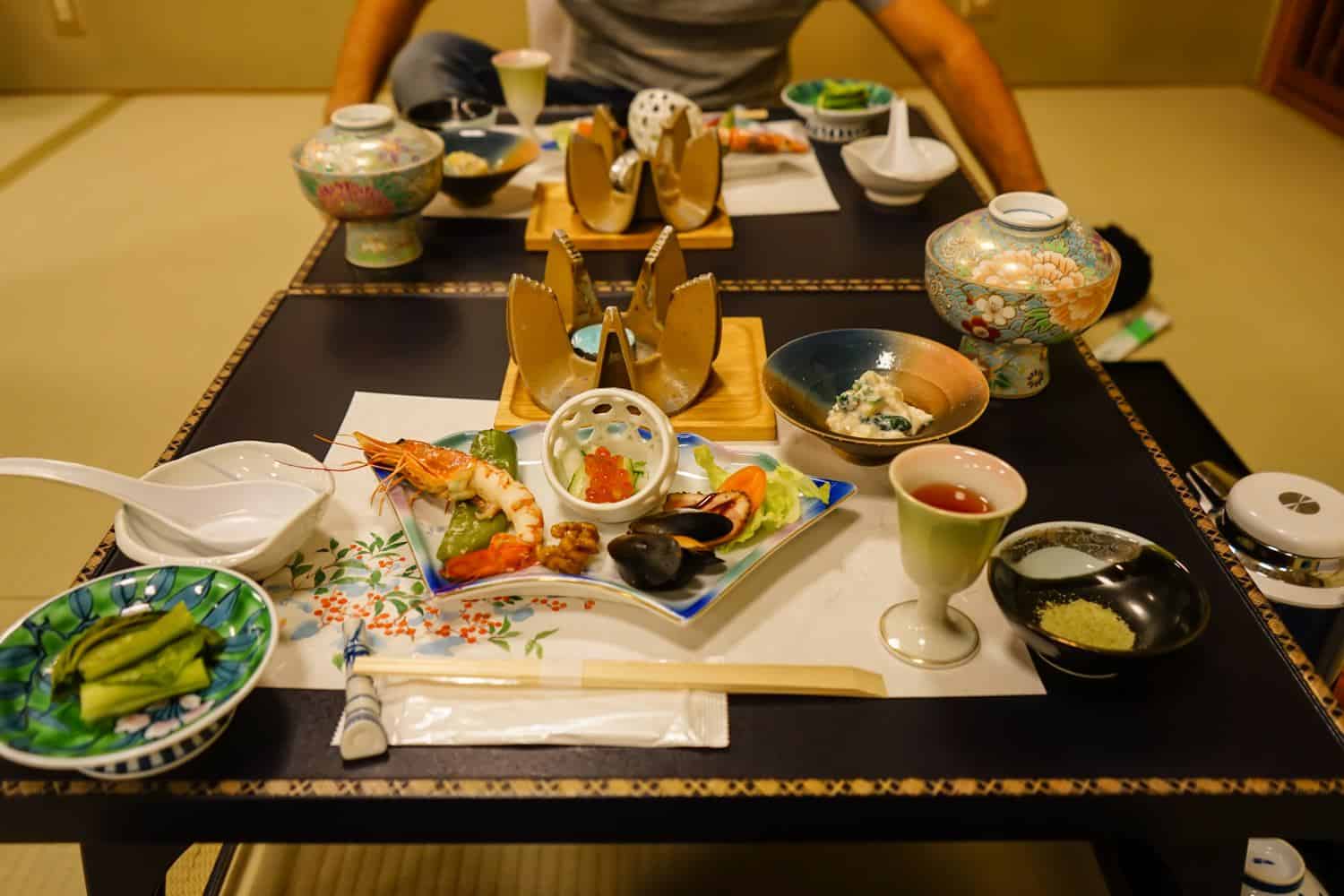
And then we have hostels . In Japan, you’ll come across hostels all over the country, finding them on tiny islands, large cities, and even within the national parks. They’re one of your best options for saving money.
Hostels in Japan are on a par with the rest of major cities in East Asia, and you can expect to spend $25 a night for a dorm bed for a well-reviewed hostel, with the price increasing slightly to around $45 a night for the absolute best of the best.
When it comes to private rooms in hostels, you’ll be looking at $50 a night for a clean, basic room in a good location, so if you’re travelling with friends or with your partner, you may find it cheaper to grab some privacy over settling for two beds in a dorm room. $90 a night will get you an exceptionally well-reviewed private room in a hostel.
I use HostelWorld to find the cheapest hostels, as they tend to have the greatest number of listings at the lowest prices.
And then there are hotels, which I’m going to jump into next.
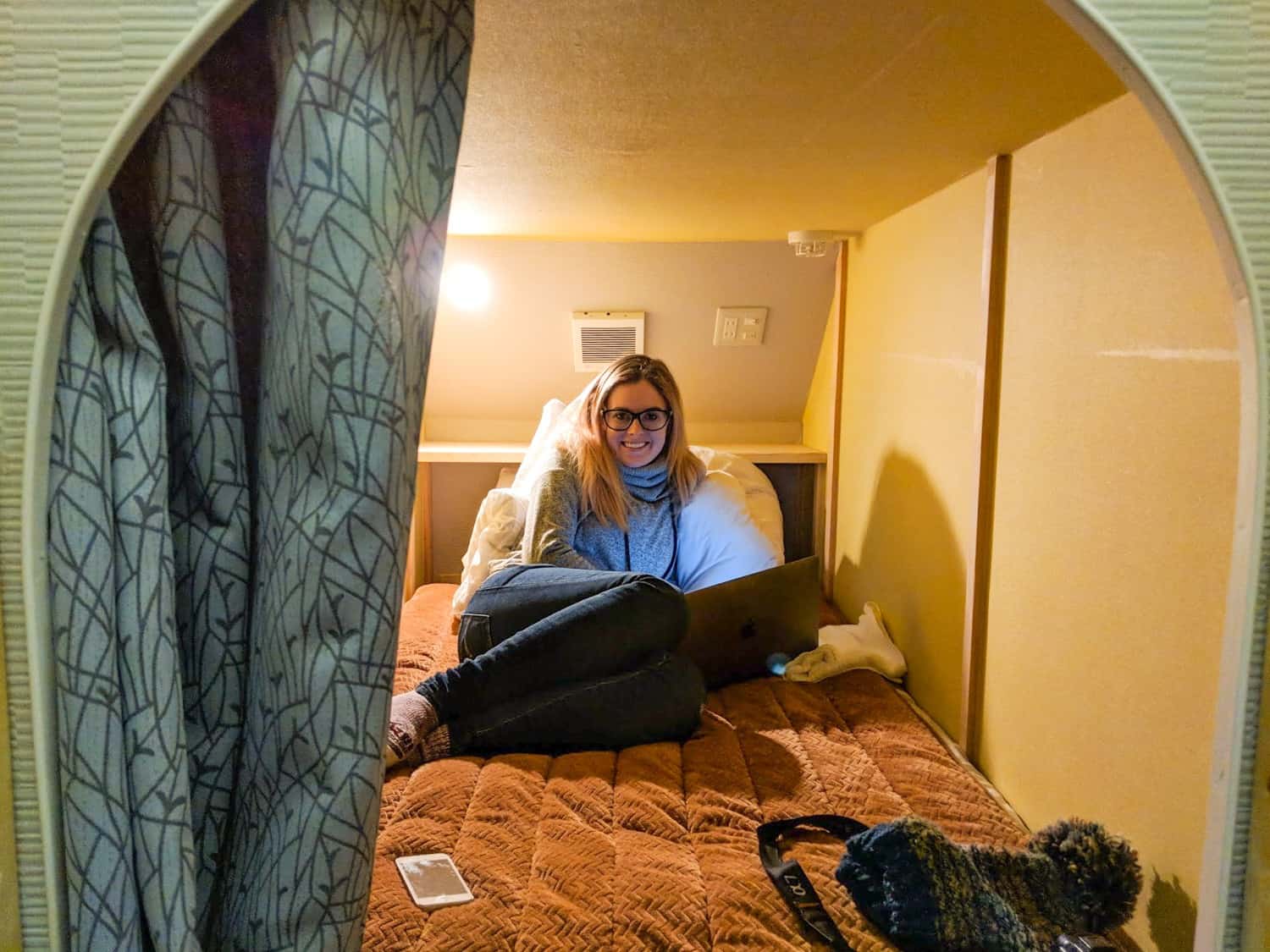
The Cost of Accommodation in Japan
There are so many different types of accommodation in Japan! I attempted to experience as many as possible while I was in the country.
I stayed in a capsule hotel, prioritised hunting down a ryokan, slept on a tatami mat floor, stayed in family-run guesthouses, and checked out some pretty cool hostels. While I did attempt to save money by staying in some cheaper places, I was also happy to splurge on extremely well-rated rooms, too.
As always with these budget breakdowns, I like to share the prices of where I personally stayed, along with a description of the property and whether I’d recommend choosing it, too — hopefully this helps make your trip planning easier!
I visited Japan with my partner, Dave, and we travelled on a mid-range budget; searching out good value accommodation that was highly-rated and in a central location. We prioritised locally-run properties that weren’t too flashy or fancy; for us, a cosy vibe, unique furnishings, and welcoming staff are far more important than the generic decor of a hotel chain.
(Oh and just a quick note: hotels do charge different prices across a range of dates, depending on how busy a certain travel period is going to be. Because of this, it’s hard to be super accurate in the costs that I list. To get to the quoted prices below, though, I looked at the rates across the next six months and took the average: it could be slightly cheaper or more expensive, depending on when you’re visiting.)
Tokyo: $135 a night Odds are, you’re probably going to kick off your Japan adventures in Tokyo, and if so, it only makes sense to really throw yourself into the local experience. That’s why we decided to stay at this lovely onsen-ryokan in Shinjuku. (Whenever readers ask me which neighbourhood to choose in Tokyo, I always recommend Shinjuku or Shibuya.) The reason why I loved this specific property, though, is because it’s a ryokan (traditional Japanese Inn) that also has an onsen (hot pool). It’s a great way to jump immediately into all things Japanese.
And it was wonderful; my favourite hotel in the country. The rooms were small and cosy and felt super-traditional and calming. The views over Tokyo at night from the window were incredible. And the rooftop onsen? With free popsicles afterwards? So good. It’s located in a quieter neighbourhood, but still only a 10-minute walk to the subway. I really recommend this one!
Hakone: $80 a night In Hakone, we opted for a private room in a lovely guesthouse , with a tatami mat floor to sleep on and a private onsen on-site. The photo of the tatami mat room above is of our room here. It ended up being another one of our favourite stays in Japan! The staff were lovely and there was a restaurant/bar that served up fantastic pizzas. It had a cosy and chilled-out atmosphere, with great food and wine, and lots of blankets to snuggle up with as we ate. It was also worth staying here just to experience the private onsen — we got to go in as a couple!
Yudanaka: $105 per night In Yudanaka, we opted for a stay in a wonderful little ryokan ; this one was even more traditional than the one in Tokyo! Often, ryokans can be super-expensive in Japan — as much as $500 a night for the experience — so I was thrilled to have stumbled across a more budget option in Yudanaka. It was run by an adorable Japanese couple and their house came with a private onsen, return transport to see the snow monkeys , and one of the most extravagant meals of my life. A kaiseki is a multi-course (like, 20 courses) meal that will see you eating roughly a week’s worth of food in a single night, sampling fresh, local-to-the-region Japanese cuisine. It was phenomenal, and I loved having no idea what anything was. It even included homemade plum wine, which was so good! I highly recommend the experience (although strongly advise you not to add breakfast to your booking — we were still so full that we couldn’t eat any of it!)
Kanazawa: $65 per night Kanazawa is home to some seriously cool accommodation! We had a hard time choosing where to stay because every property looked so cosy and inviting. In the end, we settled on this minimalist, modern set-up — it was great value for money relative to most other places we stayed in Japan, especially when you consider it’s only been open a year. It’s in a great location, right outside Omicho Market, where you’ll sample the best sushi of your life. Also within walking distance is Kanazawa Castle and Kenroku-en Garden, so you’re really staying in the heart of it all. I recommend signing up for the traditional Japanese breakfast, as you’ll likely not have had anything else like it before! There’s also an onsen and laundry facilities (always appreciated mid-trip!), and the staff were so sweet and kind.
Takayama: $76 per night In Takayama, we stayed in a small, locally-run guesthouse in the centre of town. It felt like particularly good value for Japan, as it was one of the few places we stayed that you could describe as spacious! It even had a kitchen and washing machine. The beds were comfortable and the hotel was within walking distance of everywhere, including the train station. It was quiet, the staff were lovely, and overall, it made for a comfortable stay!
Kyoto: $84 a night In Kyoto, we stayed in a cosy hotel in the heart of town — we loved this place so much in 2017 that when we returned to Japan this year, we knew we’d have to stay there again! The property was in a fantastic location for exploring Kyoto and the bathrooms were nicer than anywhere else we stayed. It’s one of the top-rated guesthouses in the city — while also being one of the cheapest — so when you take that into consideration, I’m convinced you won’t find anywhere better to stay in Kyoto.
Hiroshima: $40 per bed In Hiroshima, we opted for a capsule-style hostel because I didn’t want to leave the country without trying one — you can see a photo of the “capsule” at the top of this section. Fortunately, we found ourselves in a room with only two other people staying there, so our capsule room with 20-odd beds was light on snorers. The owner of this place was ridiculously lovely and it was within walking distance of all of the monuments and activities. Really great bathrooms, a fun common area, and a cheap price: surprisingly, I would have stayed another night!
Osaka: $108 a night I rounded off my time in Japan with a little bit of a treat, opting for this four-star hotel that offered a ton of freebies. It’s all about the onsen here — it’s open all day and is simply beautiful. After you’ve finished your daily bathe, there’s free ice cream to eat, free comics to read, massage chairs to relax in, and even free ramen to slurp on. Yes, really! It was in a great location for Osaka — just a couple of blocks from the nearest metro station. The decor was calming and traditional; the perfect way to say goodbye to Japan.
In total, I spent an average of $97 per day on accommodation over my 16 days in Japan.
The Cost of Transportation in Japan
Okay, so let’s talk about transportation now. And specifically transportation post-2024.
It used to be the case that practically every visitor to Japan would invest in a JR pass (a train pass that grants you unlimited rides over a certain time period). After all, the best way to explore this country is by train, and by buying said rail pass, you’d be saving a significant amount of money on your trip — especially if you were taking a similar route to my one. A JR Pass pre-October 2023 would have saved me a whopping $175 over buying individual train tickets.
Seems like a no brainer, right?
In October 2023, the Japan Rail Pass skyrocketed in price. No exaggeration here: prices increased by an incredible 70% .
What a baffling decision.
What that means is that it’s not such a clear-cut decision anymore. The Japan Rail Pass still holds some benefits: If you’re a first-time visitor to Japan and don’t feel too confident about buying multiple single-journey train tickets, the pass will make it a lot easier: you just show it at any station and get on a train. You won’t need to worry about any extra charges and will have the flexibility to take train-based day trips whenever you want.
For most travellers, however, the value proposition is simply no longer there. For example, my recent 16-day itinerary (Tokyo – Hakone – Tokyo – Nagano – Kanazawa – Takayama – Kyoto – Nara – Kyoto – Hiroshima – Osaka) cost me 50,000 Yen ( $350 ) with single tickets. However, a 14 day rail pass is priced at 80,000 Yen ( $530 )!
Alas, the Japan Rail Pass is no longer something I recommend — unless you’re going to be taking enormous, lengthy rail journeys (like across the whole country) in a short period of time. Alternatively, if you do want that added sense of security and ease by not having to juggle a dozen train ticket bookings, you may find the extra price worth it.
So with all that being said: you’re most likely going to be using the JR West website to book your single train tickets online. This covers the entirety of Japan that’s west of Tokyo (all of the places I visited were west) and allows you to book your train tickets all in one place — and then you can reserve a seat on said train one month before its departure date. Honestly, it’s pretty easy to use, book, and reserve — and being able to do it all online means you can get everything sorted before you step foot in the country.
Let’s take a look at the some of the prices that a typical train journey in Japan costs — in this case I’ll use my itinerary mentioned above to plot out the costs:
Tokyo – Hakone: 2,500 Yen ( $17 ) Hakone – Tokyo: 2,500 Yen ( $17 ) Tokyo – Nagano: 7,500 Yen ( $50 ) Nagano – Kanazawa: 8,500 Yen ( $57 ) Kanazawa – Takayama: 5,000 Yen ( $33 ) Takayama – Kyoto: 9,000 Yen ( $60 ) Kyoto – Nara: 700 Yen ( $5 ) Nara – Kyoto: 700 Yen ( $5 ) Kyoto – Hiroshima: 10,500 Yen ( $70 ) Hiroshima – Osaka: 10,000 Yen ( $67 )
So if you were to replicate my Japan route exactly, you would end up spending $381 on rail tickets. It sounds like a lot of money but I do want to stress that the trains in Japan are some of the best in the world. They’re spotless, comfortable, modern, and lightning-fast. You will feel like you’re travelling in luxury.
If you’re not down to spend hundreds of dollars on trains, then the buses are going to be your best option. They’re cheaper, slower, less comfortable, often run overnight, and are complicated to book. The best sites I’ve found for booking long-distance buses is Willer Express and Japan Bus Online — but even they don’t run buses for several of the routes I took on my trip.
I thought it would be a good idea to share the cost of buses for the trip I took, so that you can compare them to the train and see how much money you could save.
Tokyo – Hakone: 2,250 Yen ( $15 ) Hakone – Tokyo: 1,800 Yen ( $12 ) Tokyo – Nagano: 2,200 Yen ( $15 ) Nagano – Kanazawa: No bus for this route Kanazawa – Takayama: 3,300 Yen ( $22 ) Takayama – Kyoto: 3,800 Yen ( $25 ) Kyoto – Nara: No bus for this route Nara – Kyoto: No bus for this route Kyoto – Hiroshima: 4,300 Yen ( $29 ) Hiroshima – Osaka: 4,000 Yen ( $27 )
As you can, see prices are generally around half what they are for the trains. You’d be looking at paying $212 in total for taking the bus, with three trains replacing the routes where I couldn’t find any existing buses.
We’ve covered the main ways to get in between the destinations, so now it’s time to take a look at how much you could spend on transportation within the cities.
Fortunately, this was where I found Japan to be really affordable. I love to explore cities on foot and I found many of the places I visited to be surprisingly walkable. In total, I spent $6 on the metro in Tokyo, $7 on the metro in Osaka, and $2 on the metro in Kyoto! Everywhere else, I just walked.
A reasonably big expense was our Hakone Free Pass (spoiler: not free), although this was more of a combined transportation and activity cost. At a cost of 6,100 Yen, or $41 , It provides you with unlimited transport around Hakone (where you’ll find Mount Fuji), and discounted entrance to all the attractions in town. If you’re going to Hakone, this will save you money because it covers everything you’ll definitely do there.
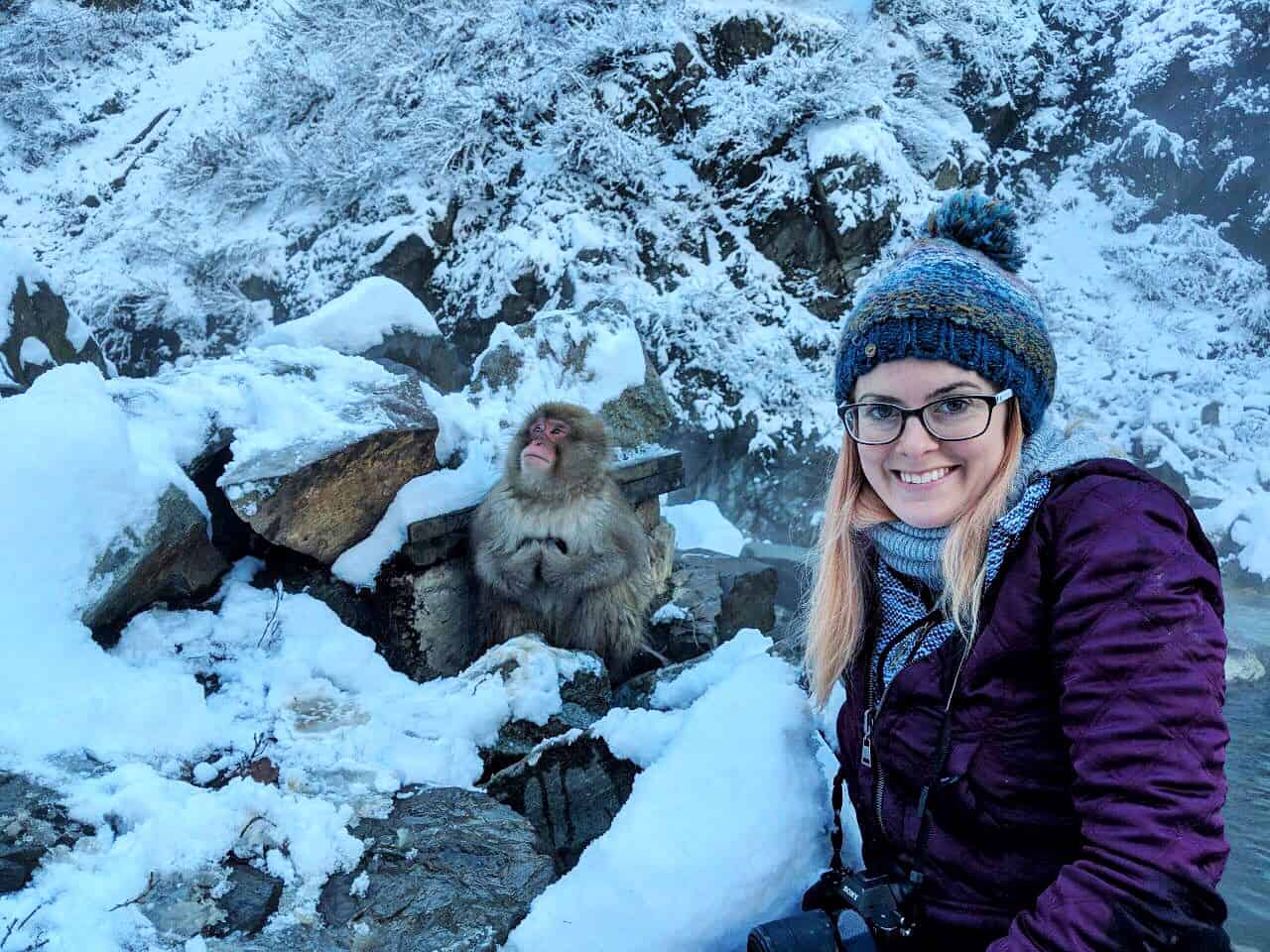
The Cost of Activities and Entrance Fees in Japan
Activities and entrance fees in Japan were very reasonably priced, and I never found myself outraged over the cost of anything. You’ll typically pay less than $5 to enter most temples, museums, and gardens.
Here’s how I spread my cash around:
Entrance fee for the hedgehog cafe in Tokyo: $13/1400¥ Entrance to the Snow Monkey Park : $7/800¥ Entrance to Kenroku-en gardens in Kanazawa: $3/310¥ Entry to the Golden Pavilion in Kyoto: $3/300¥ Entry to Ryoan-ji zen garden in Kyoto: $5/500¥ Ticket for the Hiroshima Peace Memorial: $2/200¥
My total cost of activities in Japan averaged out to $2 a day.
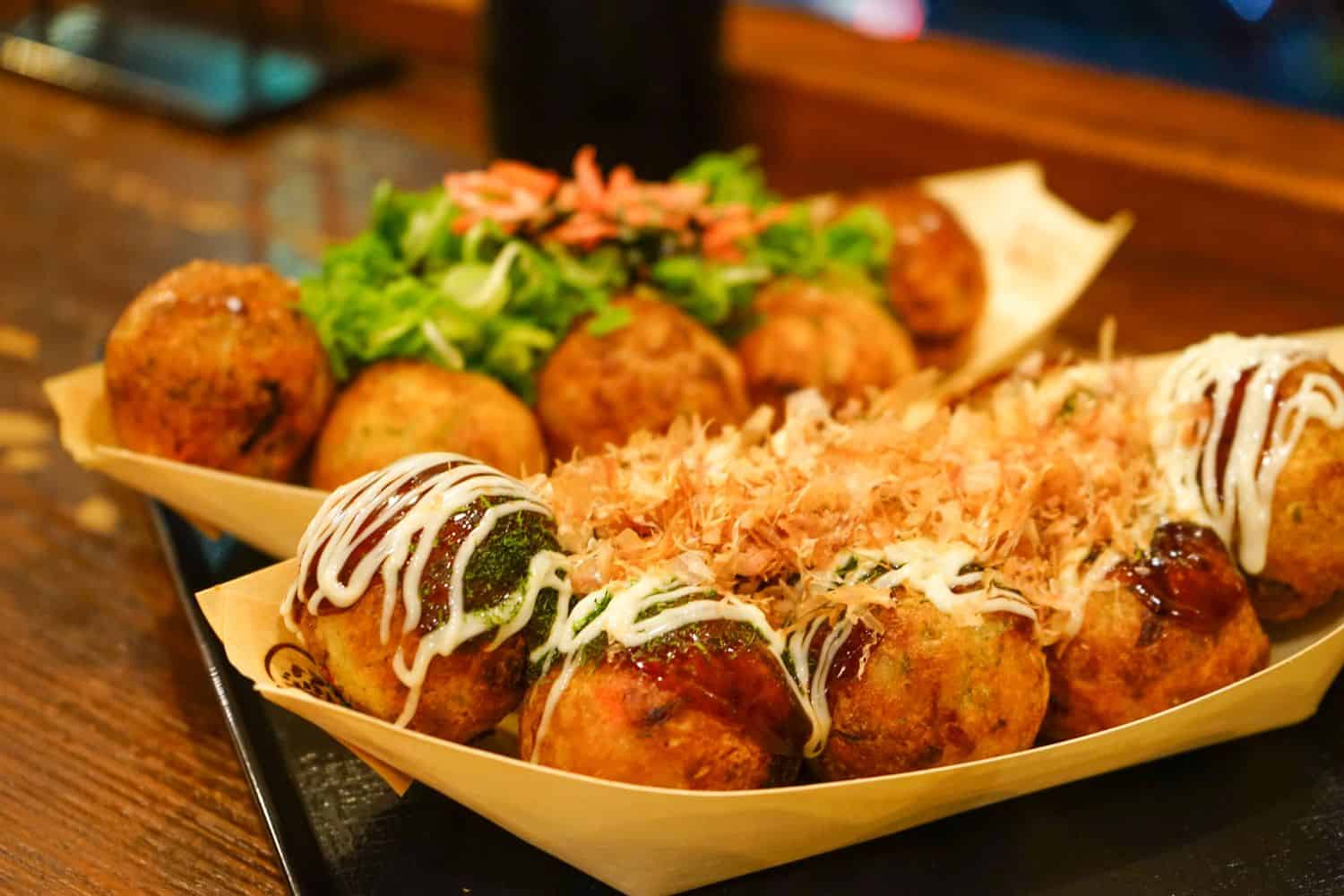
The Cost of Food in Japan
Oh, Japanese food — I love you so freaking much. And in Japan, I ate .
The good news is that as long as you’re not going out to fancy restaurants, meals in this country can be great value. I rarely paid more than ¥1000 ($9) for a bowl of ramen, and street snacks like takoyaki were ¥500 ($4.50) . We splurged on our kaiseki experience at our guesthouse in Yudanaka and paid ¥4000 ($36) for our food extravaganza. It’s a budget option compared to many other kaisekis, which can easily come to $100 for the experience, but still our most expensive meal. Another splurge was on sushi in Kanazawa, which I paid ¥2000 ($18) for.
Whether you’re on a budget or ready to splurge, it’s essentially impossible to eat badly in Japan. If you’re on a really tight budget, you can even get surprisingly decent food from 7-Eleven !
My total cost of food in Japan averaged out to $23.20 per day.
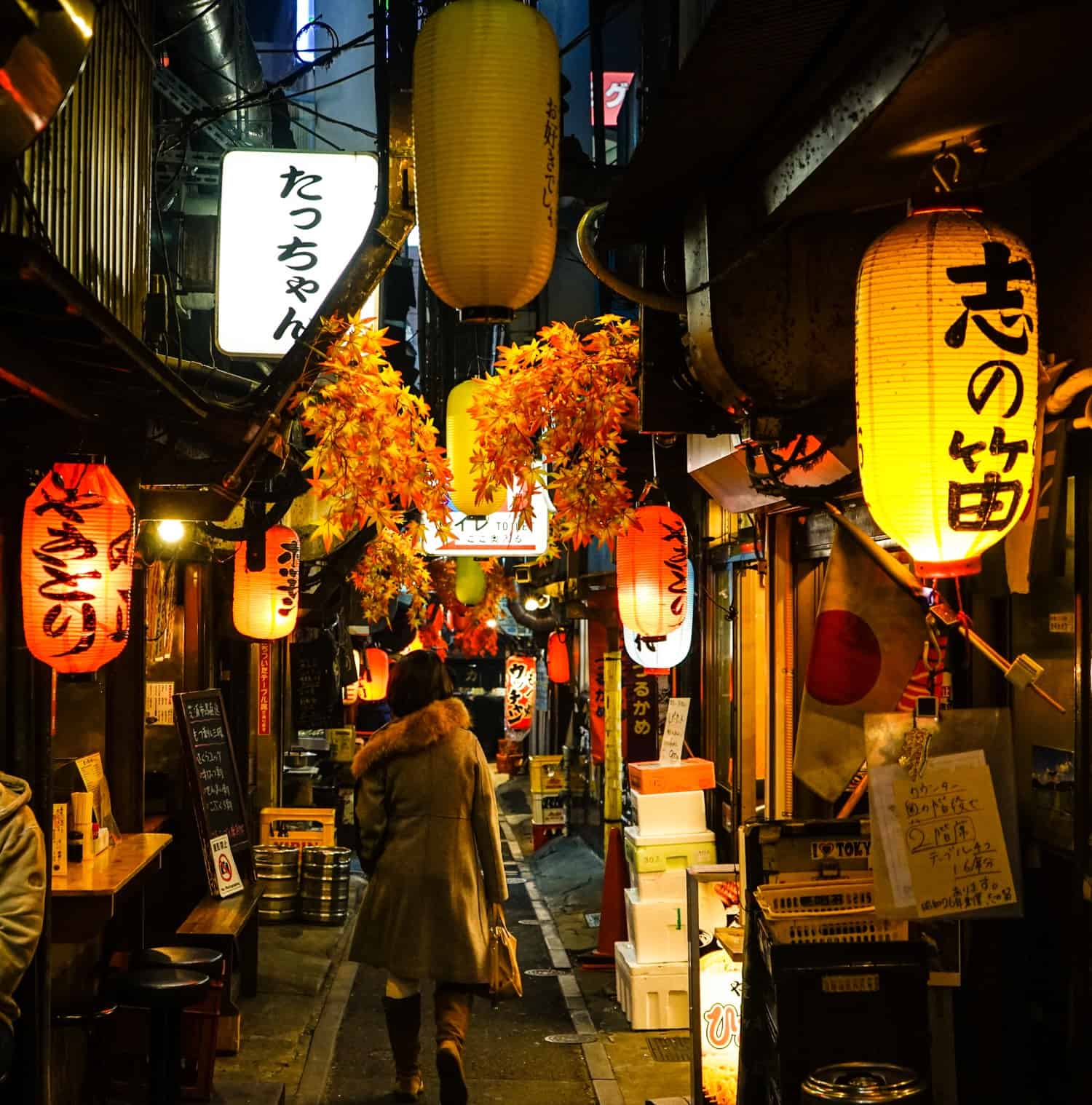
Miscellaneous Expenses in Japan
A local SIM card: $14
I mentioned above that I was able to buy a local SIM card when I purchased my rail pass. If you aren’t going to be using a rail pass in Japan, I recommend taking a look at Airalo instead. Airalo is a company that sells local e-SIM cards for travellers. What that means is that you can buy a virtual SIM card online before you arrive in Japan, and then as soon as you land in the country, can switch on your data and start using it.
It’s worked flawlessly for me and I’ll never go back to physical SIM cards. It’s just so easy! You’ll pay $6 for 1 GB of data or $14 for 3 GB for Japan and can also top-up through the Airalo app.
If you’re going down the Airalo route, just make sure your phone is e-SIM compatible first (all recent iPhones and many Androids are).
Insight Guides guidebook to Japan: $10
My sister bought me this guidebook as a gift before I left for Japan and at first I was like, Insight Guides? Meh. I wish she’d got me the Lonely Planet instead. Then when I opened it up and started reading, I swiftly discovered that Insight Guides are my new favourite guidebook company. It was so, so useful!
What I love about Insight is that their books focus heavily on the history and culture of Japan, with big, beautiful pictures, tons of information about local customs, food, and how to travel responsibly and respectfully. I recommend picking up a copy before your trip to Japan, but not taking it to the country with you — they’re big and heavy, so this is one for inspiration, planning, and education.
Luggage storage at Snow Monkey Park near Yudanaka: ¥500 ($4.50)
We had our backpacks with us when we visited the snow monkeys, so utilised the on-site storage facility while we hiked up the mountain in the snow. You can also hire snow shoes and winter gear if you’re unprepared for the climb, but I was fine in my totally impractical sneakers.
Travel insurance for 16 days in Japan: $60
If you’ve read any other posts on Never Ending Footsteps, you’ll know that I’m a great believer in travelling with travel insurance. I’ve seen far too many Go Fund Me campaigns from destitute backpackers that are unexpectedly stranded in a foreign country after a scooter accident/being attacked/breaking a leg with no way of getting home or paying for their healthcare. These costs can quickly land you with a six-figure bill to pay at the end of it.
In short, if you can’t afford travel insurance, you can’t afford to travel.
Travel insurance will cover you if your flight is cancelled and you need to book a new one, if your luggage gets lost and you need to replace your belongings, if you suddenly get struck down by appendicitis and have to be hospitalised, or discover a family member has died and you need to get home immediately. If you fall seriously ill, your insurance will cover the costs to fly you home to receive medical treatment.
I use SafetyWing as my travel insurance provider, and recommend them for trips to the Japan. Firstly, they’re one of the few companies out there who will actually cover you if you contract COVID-19. On top of that, they provide worldwide coverage, don’t require you to have a return ticket, and even allow you to buy coverage after you’ve left home. If you’re on a long-term trip, you can pay monthly instead of up-front, and can cancel at any time. Finally, they’re more affordable than the competition, and have a clear, easy-to-understand pricing structure, which is always appreciated.
With SafetyWing, you’ll pay $1.50 a day for travel insurance.
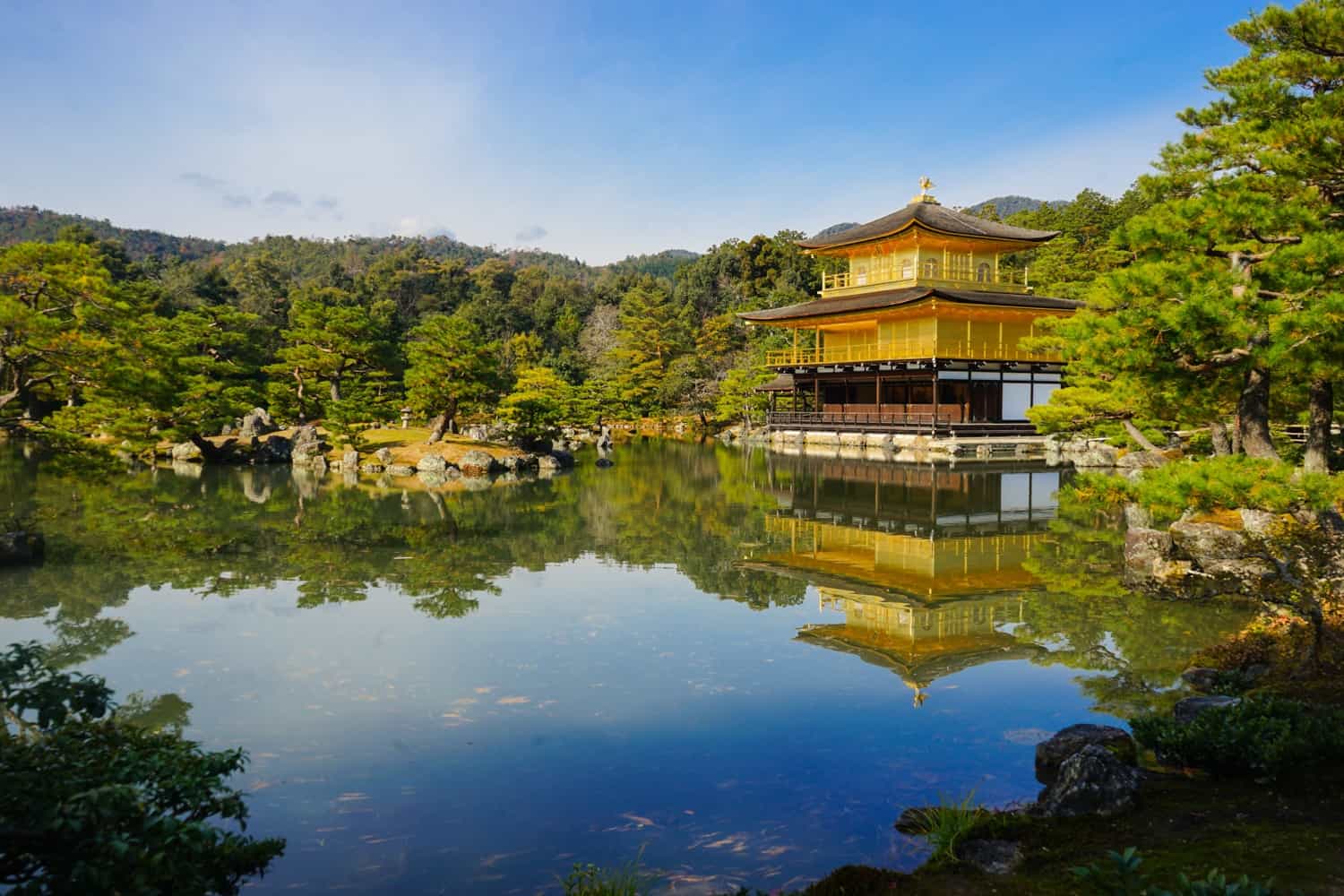
How I Track My Expenses While I Travel
Every time I share my expenses, you guys always want to know how on earth I manage to keep track of so many details from my travels!
Because Never Ending Footsteps is my company, the vast majority of my travel expenses are business expenses. I therefore studiously record everything I spend everywhere I go. I take photos of every receipt I receive and use Xero accounting software to record these expenses. In cases where I can’t get a receipt, I’ll take a photo of the price list and my ticket or food, or something as evidence.
Once a week, I then sit down and spend an hour or so uploading my receipts to Xero and making note of every penny I spent in each country I visit. It makes writing these posts super easy!
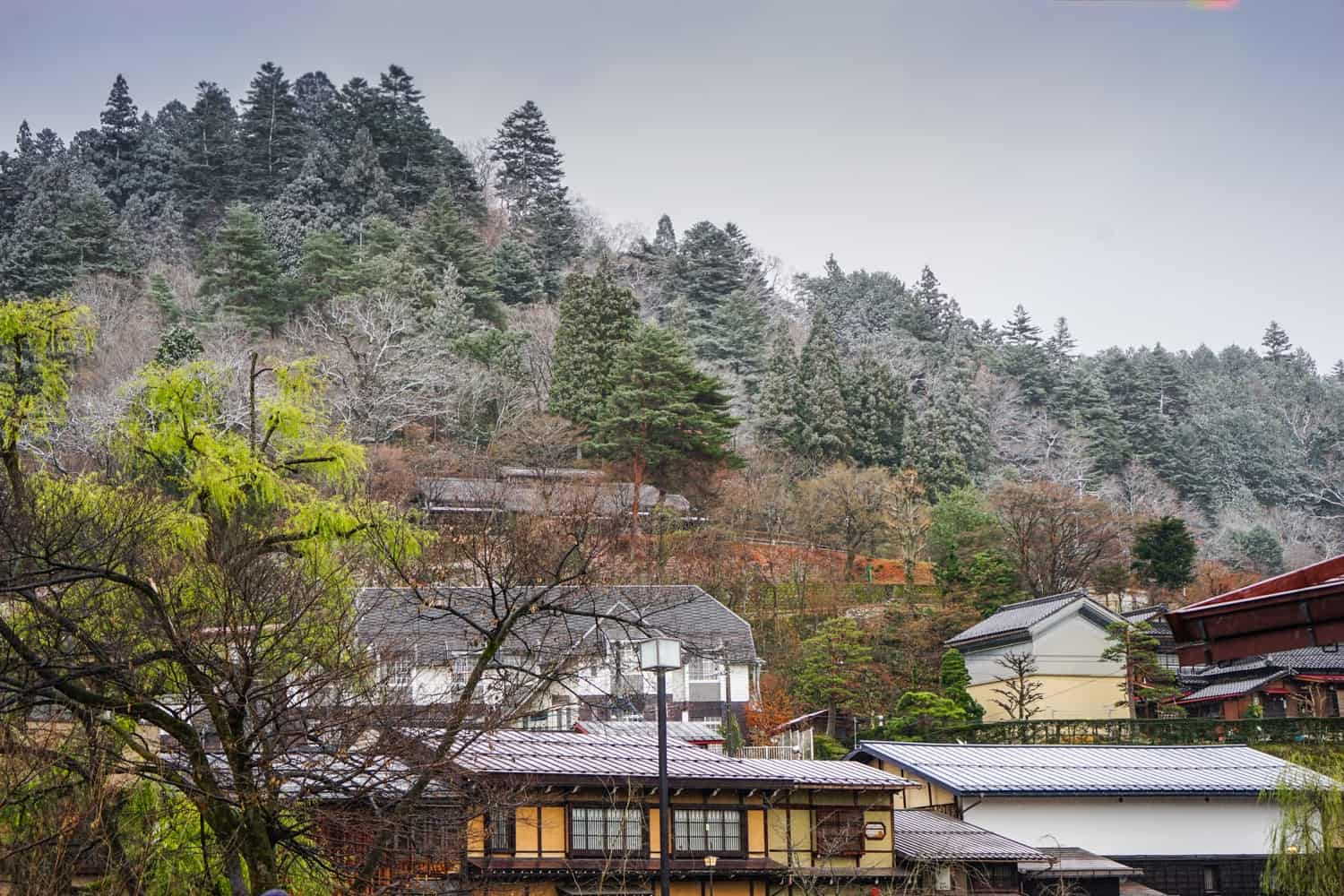
How Much Does it Cost to Travel in Japan?
It’s time to tally up all of my expenses to see my total travel costs!
Accommodation: $97 per day Transportation: $27 per day Food: $23 per day Activities/Entrance Fees: $2 per day Miscellaneous: $2 per day
Average amount spent in Japan: $151 a day!
I don’t know about you, but given Japan’s pricey reputation, I’m fairly impressed with the amount I spent in the country, especially as I included quite a few splurges in there.
How about you? How expensive were you expecting a trip to Japan to be?
Related Articles on Japan 🇯🇵 What’s it Like to Travel in Japan? 🏯 How to Spend Two Weeks in Japan: An Itinerary for First-Time Visitors 🍣 15 Weird and Wonderful Things to Eat in Japan 🎌 23 Incredible Things to Do in Osaka, Japan 🗼 21 Spectacular Things to Do in Tokyo, Japan 😎 Hipster Harajuku: The Coolest Neighbourhood in Tokyo 🦔 Should You Go to a Hedgehog Cafe? My Experience in Japan 🐒 Why Seeing the Snow Monkeys in Japan Sucked
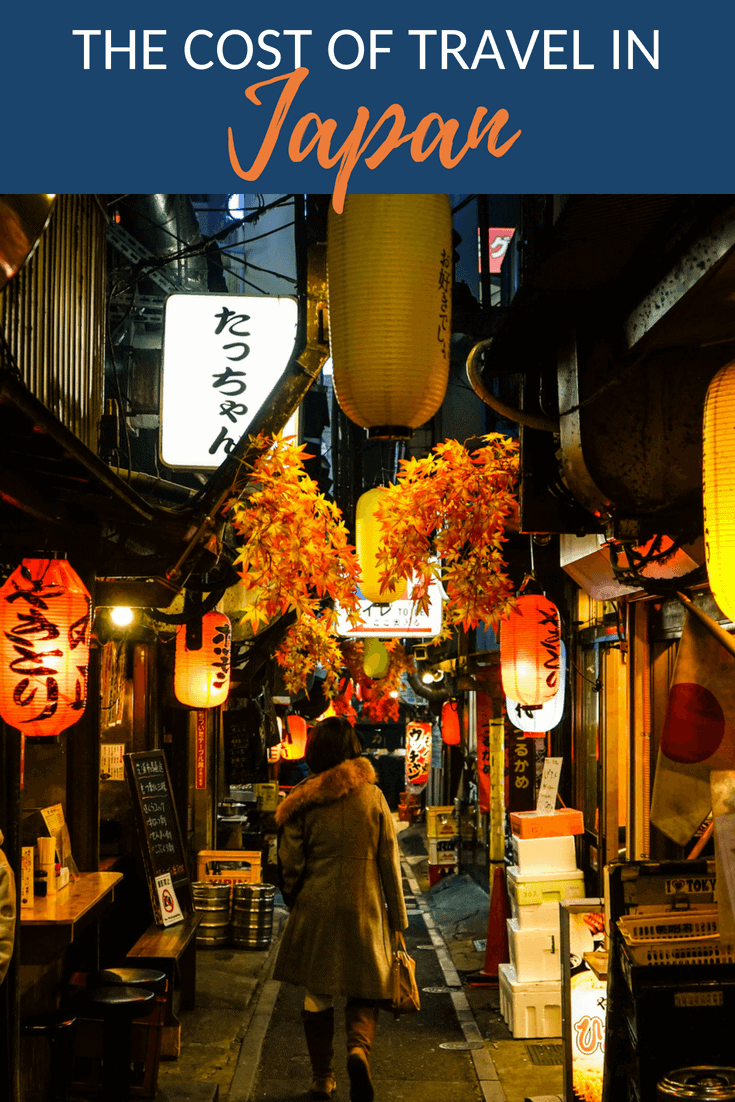
How useful was this post?
Click on a star to rate it!
Average rating 4.5 / 5. Vote count: 21
No votes so far! Be the first to rate this post.
Thanks so much!
You can follow along on my travels through my social media accounts below
Sorry you didn't find this article useful!
Help me improve it by leaving your comments below
All feedback is anonymous and emailed directly to me. If there's anything I can do to improve the quality of this article, please do let me know and I'll make the suggested changes within 24 hours
Lauren Juliff
Lauren Juliff is a published author and travel expert who founded Never Ending Footsteps in 2011. She has spent over 12 years travelling the world, sharing in-depth advice from more than 100 countries across six continents. Lauren's travel advice has been featured in publications like the BBC, Wall Street Journal, USA Today, and Cosmopolitan, and her work is read by 200,000 readers each month. Her travel memoir can be found in bookstores across the planet.
Related Posts

The Cost of Travel in Mauritius: My Detailed Budget Breakdown

The Cost of Travel in Thailand: My Detailed Budget Breakdown

2023: My Travels in Review

The Cost of Travel in South Korea: My 2024 Budget Breakdown

How to Spend Three Perfect Days in Delhi: An In-Depth Itinerary

Pushkar Travel Guide: 11 Things to Do in Pushkar
105 comments.
Wow! that’s amazing. I especially got fascinated seeing the capsule hotel…must have been a unique experience.
It was surprisingly cosy! I would totally stay in one again.
Thank you so much for your information. We will go to Japan in October 2023 for 1 month. Have paid fully for 16 days. Using your guides to budget the remaining 2 weeks. Thanks again.
This is great! Do you think it would be much more expensive in summer or any of the peak holiday seasons? I’m going over July this year and wondering if the prices change much with the seasons.
Wow! That’s quite an eye-opener! I’ve wanted to visit Japan for years, and this has certainly nudged me a little closer, as I assumed it was expensive too. The costs seem much better than I found in Amsterdam this spring! (my boyfriend still gets a thousand-yard stare when I mention how much we paid for drinks in one bar.)
Yay! Yeah, it really did feel about the same price as Western Europe, if not cheaper. The transportation is more expensive, but the food was cheaper in Japan.
This is super awesome! I, too, was under the impression that Japan was a super expensive place to visit! Good to know that you can save so much on accommodation and activities! Are you going to be posting about food in Japan? My knowledge of what to eat there is very minimal…
Yes! I published a guide to my favourite things to eat in the country last week: https://www.neverendingfootsteps.com/best-food-japan/
Ditto for here in New Zealand Lauren. All said it would be expensive. But we house sat – rent-free – and saw that food and travel are on par or cheaper than New Jersey. We also saw that virtually all things are cheaper than folks said. Methinks many labeling Japan and NZ as expensive as can be are used to paying $1 for lunch in Chiang Mai LOL. Budget folks see all Western lands as expensive. Granted I am from NJ; living by NYC makes for a high cost of living. But not bad at all, living in these lands.
Yeah, definitely true. I know that when I wrote off Japan as being too expensive, it was in the early days of my travels, when I could only afford to live in Southeast Asia!
Loving the posts about Japan so far. Do you have many more articles planned? I’ve a trip booked in November and this has been the most useful of the blogs so far for help in planning – thank you. Although I’ve had to cut the hedgehog cafe off my plans after reading your article as I hadn’t quite considered the ethics enough!
Yes! So many. I’ll probably post another half a dozen or more over the next few weeks :-)
I always assumed Japan to be very expensive. Thanks to your blog I don’t anymore. Cheers!
This is all very useful info! I’m impressed with your budgeting skills. Awesome, Thanks for sharing this!
Ha! Thank you :-) It comes naturally (finally) after seven years of doing this.
Great article. I’m planning a visit for early 2025 to go with my grandson … was the budget breakdown for one person or a couple … because you mentioned going with your partner?
The accommodation prices are the total cost of the room (rather than just my share), while the transportation, food, and activities are all my share of the costs.
Fantastic article. Love your budget posts because you never leave anything out.
I try not to! Thanks so much :-)
Beautiful photos, Japan look amazing and thank you for sharing your budget tips as well. :)
No problem! :-)
Thank you so much for this! I’m going to Japan in September and I’ve been worrying about my budget. This has definitely put my mind at rest!
Yay! Happy to hear that :-)
I’m so happy that you have posted so much lately, you’re my favourite travel blog and I check this page a lot more often now that the pace of the posts has increased :)
Thank you! :-) I’m aiming to stick to a three-times-a-week posting schedule now that I have a base and more time to dedicate to writing.
This is so much cheaper than I expected. Do you have any idea about prices for solo travellers though? Would I have to pay for a double room most of the time (apart from dorm beds of course)?
No, lots of hotels and guesthouses have single rooms, so you wouldn’t need to pay out for two people very often, if at all.
Thanks, that’s good to know!
Very useful breakdown that would be very helpful for first-timers to Japan.
Just to share, one of my own major expenditure in JP is … vending machine contribution! I simply can’t resist them and can end up buying seven times a day. “P
Yes! I couldn’t believe how many vending machines there were in the country, as well as the variety of things you could buy from them.
Hello! This is a very timely article for me to read as I’m actually going to visit Japan for a week on September. I really love Japan’s culture and their people. There are a lot of places that I want to visit and a lot of things I want to do but I am on a strict budget. Hopefully, your article would be able to help me fix my budgeting for my trip to Japan.
I hope so! I really didn’t find it horrendously expensive, so I think you’ll be surprised by how much you can do there for free.
I love your budget posts because they give me such a good idea of how much I can expect to spend in places around the world. Are you thinking of doing them for everywhere you visit?
That’s my plan! I’m slowly working my way through my records and adding more and more to the site.
Hey, thanks so much! :-)
I’ve planed to visit Japan next year, Thank you for sharing your budget, I’ll try to not exceed 100$/day, following your information on this post.
Have a fantastic trip, Ingrid! :-)
Which month you visited Japan? I am thinking for Cherry blossom (April 2019) and everything is coming up too expensive. Are those above for cherry blossom season you visited?
Ah yeah, unfortunately, the cherry blossom season is the most expensive time of year to visit Japan. I was there in December, so prices will be higher than the ones mentioned in this post. I’ll add that detail to my post now!
I was under the impression that Japan was a super expensive place to visit! Good to know that you can save so much on accommodation and activities! This article includes all the places you can visit in Japan and their expenses. It is very educative and it can be improved by providing expenses in INR. Thank you for posting this useful information.
Thank you! I usually just price these articles in the local currency and USD, which is where the vast majority of my readers are located. If I started including currencies for everyone, the post would quickly get ridiculous :-)
Seems a dumb question, but I’m assuming all the values are in USD, is it correct?
Yep! I write at the start of the post: “The amounts in this guide are listed in Japanese Yen and U.S. dollars, simply because the vast majority of my readers are from the U.S.”
That is a very good breakdown cost analysis there. i am planning to go to japan as well with my wife. and planning to stay for 10 days only. 4 in tokyo 3 in kyoto and 3 in osaka. i like to idea of 100 aud / day it’s a good target to keep but i guess the expense on buying cloths and souvenir would be uncontrollable though i heard things in japanese is not that dear if you know where to shop and avoid tourist trap. i didn’t see you mention buying internet data in advance ? or i missed it somewhere. i guess the expense for a couple will be double up. but i guess 3000 aud for 2 people is unavoidable.
amazing detailed guide
You’re welcome!
I’m so glad I found your website! I love the detail and photos. I just booked a trip to Japan with my boyfriend for this upcoming October, and your site will be very helpful. Question: do most hostels and accommodations that you experienced have you sleeping solo? I’m wondering if I should expect to sleep in a separate area than my partner for most of the trip…
Hi Lauren, Thanks for such a detailed description of your time in Japan! I’m going to Japan October this year with my wife and my major concern is how you managed to book sleeping pods for you and your boyfriend as almost all accommodations are either “male only” or “female only” from the options I’ve seen so far. Did you have to get separate beds for those nights?
Yeah, the capsule hotel-style accommodation is all single beds. You can see in my photo in this post that there’s not much room for anybody else!
My wife and I are heading to Japan in mid May and I plan to use your itinerary.
Would it be possible for you to write something about the travel logistics if you can remember them – ie to get from Tokyo to Mt Fuji we booked the following train, leaving at…from the following platform which took X hours and arrived at Mt Fuji at. We then bought our day pass from….and ……..
This would be really helpful to me and other independent travellers – from where did you buy your JR pass and how did you book your individual train rides?
Cheers Paul
Oh, man. That would take me hours and hours to put together and I’m sure times and platforms change so it would be impossible for me to keep the information up-to-date and accurate.
I recommend downloading the mobile app Hyperdia — you can plan your train travel out using that. Just enter in your destinations and it will tell you which train to take and from which platform. Super easy to use! :-)
The site I used to buy the JR Pass is this one . I booked the other train tickets in person at the stations when I arrived — there weren’t many that weren’t covered by the rail pass. Just the small regional ones to get to and from Yudanaka, I think.
Hello Lauren, I love the details in your blog. Your expenses were for 1 or 2 people?
I cover that at the start of the blog post: “And finally, these are the expenses I paid while travelling with my boyfriend. That means that accommodation prices (with the exception of the dorm bed in Hiroshima) have been halved to indicate my share.”
Great super helpful article. THANK YOU!
Hi Lauren, Thanks so much for this article, it is so helpful!!! on which dates did you fly to japan? what dates are you recommending on?
I spent the first two weeks of December in Japan. I’d recommend looking at May or September as the best months to travel there.
Hi Lauren I’d love your advice. I’m traveling with my 22yr old daughter to celebrate her graduation and my birthday. I booked the first two nights a hotel in Tokyo and then figured we would VRBO or Airbnb but after reading your post it looks like things have changed. I love the idea of the capsule hotels and the standard tatami mat rooms look enchanting. So how do I search for either? We’d like to experience both for the trip. oh by the way, I’m a traveler too, let me know where in the world are you now. Perhaps we can meet up and collaborate, I do video production, just got back from Colorado and am going to Cancun in June.looking forward to hearing back from you, Peace and Love always, “L” oh let’s connect on IG
Just book them through Booking.com — no need to go to any specific site. I’m in Bristol, in the UK. I actually don’t have an Instagram account — it wasn’t doing good things for my mental health, so I deleted it :-)
G’day Lauren,
Loved your detailed description of your travels through Japan. However; I’m not so brave as you travelling around on my own, especially with the language problem. I am a single traveler from Bangalore, India and would love to spend 7-8 days in Japan, with my journey starting and ending in Tokyo, reasonably priced hotels or local hostels, but preferably single accommodation, if possible. (willing to pay extra).
I love train travel and Japan is one of the best places to do that..your take on that would be appreciated. If you feel, I meet your requirements, would love to get an itinerary and costing for my 7-8 day stay in Japan.
Hello! I am really curious on how you got a 14 days pass JR for only 420$, from where I am from (Canada) it is 567!
If you click the link in the post, you can buy it through there. It’s currently listed for 414 USD.
$95/day seems cheaper than what I had expected – is that a tight budget? What can you do more with $150/day? I’d prefer to spend that extra on living in nice hotels + do more activities. Does that seem possible with $150/day?
No, not really. It was a mid-range budget and all of the hotels we stayed in were nice — I made zero effort to stick to a tight budget.
Hope you’re well. I’m wondering if you still advise from not booking Airbnb for Tokyo? Thanks.
Until moments ago, I had always assumed Japan to be too expensive to even consider. Never thought the cost of activities and entrance fees would be so cheap. This is an encouraging article, thanks, Lauren!
Really remarkable post, Lauren. Extremely thorough and helpful. I’m looking to plan a trip to Japan soon and stumbled across your blog. As you clearly hoped from city-to-city, (this may be a silly question) what did you do with your luggage on a day-to-day basis?
Thanks for any insight.
Oh, just left it in my hotels. If I spent less than a full day somewhere, it was visited as a day trip, so I didn’t take my luggage with me. And then whenever I arrived somewhere, I’d time my arrival with the check-in time of the hotel, drop my bags first, then head out exploring.
great article! As I have said in the past you always put out great stuff that’s very valuable information.
I just came across your website when searching for trips for Japan for my son. I have to say I am really so happy and want to thank you so much for the information. My eldest son has been taking Japan as a language course for the last 3 years and was looking forward to trying to get into the high school Japan trip in end of july beginning of August 2020. He also wanted to go to TUJ(Temple University Japan).
However, because of the olympics the high school Japan trip has been canceled for 2020. Unfortunately, he will be a senior next year so the 2021 high school program will not be available for him. Plus going to olympics are so expensive. If you can give me any advice, I would greatly appreciate. Thank you so much in advance for your time!!!
What advice do you need? About what?
Hi Lauren, I really liked you post and I think is really helpful. When exactly did you go in Japan? We have to change our plans for next February (previous planned for Philippines but to risky for my wife pregnancy) and we consider to go in Japan instead. So, do you think it is good idea travelling in Japan in February? Thank you and advance.
I went during the first half of December. As long as you keep in mind that it’ll be pretty cold (5-10 celsius), I think it’s a great time of year, as it won’t be as crowded as peak season.
is it favorable to use credit card or cash is much preferred? thanks
Hi. Thank you for the information! I am so inspired to go to Japan now. My mom who was from Japan, always told me it’s too expensive to go back and visit. I am now 56 and it has been my lifelong dream to go. My husband and I will go with backpacks like we did when we were younger and before having kids. Is October a good time to go? I read September can be humid. I want to follow your itinerary for the most part. My mom lived in Kanazawa. My heart is full right now and my eyes are misty. Thank you for making my dream a little bit closer.
Hey Lauren!
Thank you so much for the information. I actually got invited on a delegation to go to Japan this evening and am trying to get the average cost to travel in the country. Obviously, your trip was on a very impressive budget. I have two questions, 1. Based on the $95/day over the course of your 16-day trip, would it be right to say that (flight included) you only paid ~$1,600 for your entire trip? 2. Would you say for a trip including cultural experiences, transportation and stays in nice hotels for a week, a grand total of $3,700 is reasonable?
In advance, I appreciate your advice on this!
Hi Lauren, Are you able to name all the accomodations you stayed with? I would like to visit Japan next year on a very tight budget. Thanks.
Yes, they’re already linked in the post along with the reviews of them under the accommodation section.
Hi Lauren. I’m debating spending 5 nights in Osaka and doing day trips to kyoto, nara and himeji castle. (I have hotel points where i can stay at osaka). Based on your experience – is that ok? or is better to stay 2 nights in Osaka and 3 nights in kyoto. There is a lot of different opinions online, thought id ask you if you think i’d be missing out on anything if staying in osaka. The one plus is i can save some money if using points and also staying in 1 location for 5 nights vs packing and moving to another location. Thanks so much for your posts!
Hey i found this really helpful but I’ve been planning to visit japan for a while and have hopes of going after i graduate high school. With some research i found that the JR pass isn’t needed if you’re just staying in one city. How much do you think i would spend on transportation for 2 weeks in Tokyo? Will it come out to more than what you spent or less?
Definitely less! You can walk to a lot of places, but otherwise the metro won’t cost much at all — a dollar or two per trip.
Would you be able to give recommendations for food places in Kyoto that are affordable.
Hi Lauren. Came across your site on a Google search for budget travel. It convinced e that a trip to Japan is affordable. Never have done international travel and would like your advice on a couple of things. 1. What is the best way to pack? Do I have to just use a back pack? 2. Can I use a credit card or should cash be used? 3. Can I get cell phone coverage in Japan.
Thanks, you site is great!
1) I prefer to travel with a backpack, but you’ll do okay with a suitcase, too. I personally find backpacks easier for navigating train stations, as you don’t have to drag it up and down stairs, etc. It doesn’t really matter either way, though. Depending on how long you’ll be staying there, I usually pack for a week no matter how long my trip is, then do laundry once a week.
2) Japan is mostly cash-based, so plan for lots of trips to the ATM. I didn’t find many places that accepted cards, although I also wasn’t looking very hard either.
3) Yep, you can pick up a local SIM card at the airport when you arrive. I bought mine through the rail pass company I link to in this blog post, but you can also just buy one when you arrive. Super easy to do and they’ll get it set up for you in the shop, too.
Love your posts! have been browsing but when I stumbled upon your page found it really helpful! Planning for Japan and Singapore so finding both blogs is perfect timing :) We are still not sure if the JRpass will help us- when we did calculation for the main routes we are going it resulted not worth it, however then not sure if we will require any additional rails/trains in between these. Tokyo>Hakone>Kyoto> Osaka without returning back… your input will be appreciated :) P.S. Feel free to visit the island of Malta, my home country
Wooow !! This is amazing , My wife and I have been planning to visit japan and we always had a misconception that Japan is expensive to visit .. This is a great blog .. So the overall cost including your flight tickets and local travel in japan would cost around 2500 $ per person ?
This was so incredibly helpful! Normally I don’t find myself reading entire articles but yours was so informational and in depth. Thank you so much for helping me get an idea of how much I would roughly spend!
Ah, no problem! Thanks for reading, and I’m glad you found it useful :-)
I super love this article Lauren! I thoroughly enjoyed it. When all is well and my country allows us to travel again, this is going to be on my top 3 places to visit (the 1st 2 will be diving spots as I’m a freediver). I made sure to bookmark this page for reference. Again, thank you for writing this. One question though, when you say $ do you mean USD?
Yep, USD! “The amounts in this guide are listed in Japanese Yen and U.S. dollars, simply because the vast majority of my readers are from the U.S.”
How much did you spend on transportation in Tokyo? I mean if you hadn’t had the JR Pass? How much did you save in Tokyo by having the pass?
Oh, I didn’t activate the pass when I was in Tokyo — I activated it on the day I left — so that was my total expenses without using it.
Hi Lauren! I just read your post. My boyfriend and I are backpackers and we are planning our next trip to Japan. I wanted to ask you when did you go there? (what time of the year). Because we can only take time off during winter time (dec-jan) and I don’t know if that’s a good time of year to go. We are from Denver and snow doesn’t bother us but we also want to enjoy it.
Thanks in advance! Love your blog
I was there in December! There’s fewer crowds then, which makes it a great time to go! As an added bonus you get to enjoy all of the cosy onsens in the snow :-)
Even in these unprecedented times, I feel as if I have already traveled to Japan! I loved every minute of the information you gave me. This place is definitely next on my list, of course! It can be months or a year from now.
It appears you’re still getting traffic in the comments here (excellent) so I thought I would ask a broad question. Wife and I are thinking to take our 6 and 9 year old to Japan for about 11 days. Any destinations you might leave off your itinerary given a bit less time and traveling with kids?
Fantastic! I’ve never seen any article about travelling to japan so specific and detailed before!! It sure will help me prepare for my own first&solo trip! thank you so much
Great post, but the prices are wildly outdated now. Your $30/night hotels in 2018 are going for around $220/night in 2023. Insane!
Hi CS, what time of year are you looking to visit? I’ve had a quick check and every hotel I link to still displays roughly the correct prices (a couple were out by about $10-20 a night, but nothing like $190!). If you’re looking at going in May, for example, Hakone Tent prices their rooms at $176 a night, but then offers rooms at a price of $73 a night a month later in June, so the time of year can affect the pricing. I’ll make a note to mention this in a future update to the post.
I visited in the low season, in December, so the prices I paid were lower than they might be at a more popular time of year.
This is amazing on every level. Thank you! only issue is prices for accomodations double during sakura season so what can I do
Thank you Lauren, for this insightful and complete post.
Out of curiosity, do you know what was the average USD/YEN exchange rate when this trip took place?
Kind Regards,
I update the prices in this article every two months so the exchange rate used in the post is recent
How recent was your travel to Japan and what exact dates were you there? I’m planning to take my family of 4 there in 2025 and would like to schedule it during cherry blossom season. I heard prices usually go up during this time so I was wondering if your trip happened during peak or off-peak season.
I was there in December. Prices do increase a lot during cherry blossom season, unfortunately — that’s the most expensive time to visit.
Leave a reply Cancel reply
Your email address will not be published. Required fields are marked *
Meet Lauren Juliff
Japan on a budget: 17 ways to get more for your yen

Mar 28, 2024 • 7 min read

These top tips to low-cost living can help you stretch your budget on a trip to Japan © Monzenmachi/Getty Images
Japan has a reputation as an expensive place to travel, but it’s an image that doesn’t hold up on the ground.
With a little strategy, a visit can be very reasonable – budget-friendly, even. Many of the country’s major sights, for example, cost nothing, and free festivals take place year-round.
With these top tips on finding the best-value places to stay, the right transportation tickets and places to eat that suit all tastes and wallets, you can make your yen go further on a visit to Japan .
A guide to daily costs in Japan
- Capsule hotel room: ¥4,000 (US$30)
- Basic room for two: ¥8,000 (US$60)
- Self-catering apartment: (including Airbnb) ¥6,000 (US$45)
- Coffee: ¥400 (US$3.50)
- Sandwich: ¥300 (US$2.20)
- Beer/pint at the bar: ¥600 (US$4.50)
- Dinner for two: ¥5,000 (US$38)
- Hour of karaoke for two: ¥2,000 (US$15)
1. Consider staying in a business hotel
These economical (and, to be honest, rather utilitarian) hotels offer the best prices for private rooms with en suite facilities.
It’s possible to find double rooms for as low as ¥8,000 (and single rooms for as low as ¥6,000), though these will be a little more expensive in cities like Tokyo , Kyoto and Osaka .
Look for places that include a free breakfast buffet – they can be substantial enough to keep you going for hours.
2. Book direct at a guesthouse or hostel
Japan has fantastic guesthouses and hostels all over; not only are they generally clean and well-maintained, but friendly English-speaking staff are usually on hand to offer near concierge-level service.
A double or single room is comparable to a business hotel (but usually has shared facilities); dorm beds cost around ¥3,000.
Some places do charge extra for towel rentals, so you can save a few yen by bringing your own. Note that rates are often slightly cheaper if you book directly rather than through a booking site.

3. Sleep in a capsule hotel in the cities
Capsule hotels, which offer small rooms with enough space for just a bed, provide a budget-friendly place to spend the night.
A capsule berth costs slightly more than a dorm bed in a hostel (¥4,000 per night), but you get more privacy.
You probably wouldn’t want to stay every night in a capsule, but they’re good for saving money in cities where hotels are pricier.
4. Go camping in the summer months
If you really want to do Japan on the cheap, you can rely on its network of well-maintained campsites in rural or resort areas; prices range from ¥500 to ¥1,000 per person or tent. Note that many sites are only open in the summer.
5. Swap a night in a hotel for an overnight bus ride
Long-distance buses, like those operated by Willer Express , are the cheapest way to get around, and longer routes have night buses, which saves a night on accommodation. There are also bus passes, which can make this an even cheaper option.

6. The Japan Rail Pass is a great travel bargain
Like the famous Eurail Pass, the JR Pass is one of the world’s great travel bargains and is the best way to see a lot of Japan on a budget.
It allows unlimited travel on Japan’s brilliant nationwide rail system, including the lightning-fast shinkansen (bullet train).
There are also more regionally specific train passes that are cheaper, so examine your itinerary carefully before deciding. Purchase a pass online or from a travel agent like JTB in your home country.
7. Ride local trains for less with the Seishun 18 Ticket
The Seishun 18 is another great deal, but with very specific conditions: for ¥12,050, you get five one-day tickets good for travel on any regular Japan Railways train (meaning not the shinkansen or any high-speed limited express trains) during a limited period of a few weeks.
The Seishun 18 Ticket is only available at certain times during the year – during school holidays (the ticket is designed for students, but there’s no age cap) – and can only be purchased from JR ticket windows in Japan.
If the timing works, and you’re a fan of slow travel, this is a unique, ultra-cheap way to get around in Japan .
8. Consider renting a car to go beyond the cities
Highway tolls and petrol in Japan are expensive; however, renting a car can be economical if you’re traveling as a group or family, or are plotting an itinerary that takes you away from major rail hubs.
9. Take domestic flights with low-cost airlines
Japan has several budget carriers, like Peach , Jetstar and Air Do , that offer bus-like pricing on some routes – just be sure to factor in the time – and cost – of going to/from the airport.

10. Japan’s shrines and temples are free to visit
The vast majority of Shintō shrines in Japan cost nothing to enter. Likewise, the grounds of many temples can be toured for free (often, you only have to pay to enter the halls or a walled garden).
11. Eat cheap food and meet locals at a traditional festival
Throughout the year , festivals take place at shrines and temples and through city streets. They’re free, an excellent way to see traditional culture come alive, and are well attended by cheap food vendors.
12. Opt for hikes and walking tours
Going on a hike or a trek is free and can be the most rewarding part of your trip: explore an up-and-coming city neighborhood , walk old pilgrimage trails or rural lanes, or get up into the mountains in one of Japan’s national parks .
Japan’s cities, especially Tokyo, have some fantastic buildings designed by many of the big names in Japanese architecture. With a little bit of planning, you could chart your own architecture tour. Ask at a tourist information center or your accommodation for suggestions.
13. Spend time relaxing in the city parks
Urban parks are generally free to enter (and some gardens are, too) and are popular with locals on weekends; pack a picnic and settle in for an afternoon of people-watching. If you time your visit right, you could be bathing in the beauty of Japan's cherry blossoms .
14. Shop for cheaper goods at a local market
Many seaside towns have fish markets, some rural spots have morning markets, and some cities still have their old-fashioned open-air markets. Visits here are a great way to connect with local culture and are often a source of cheap, fresh food.
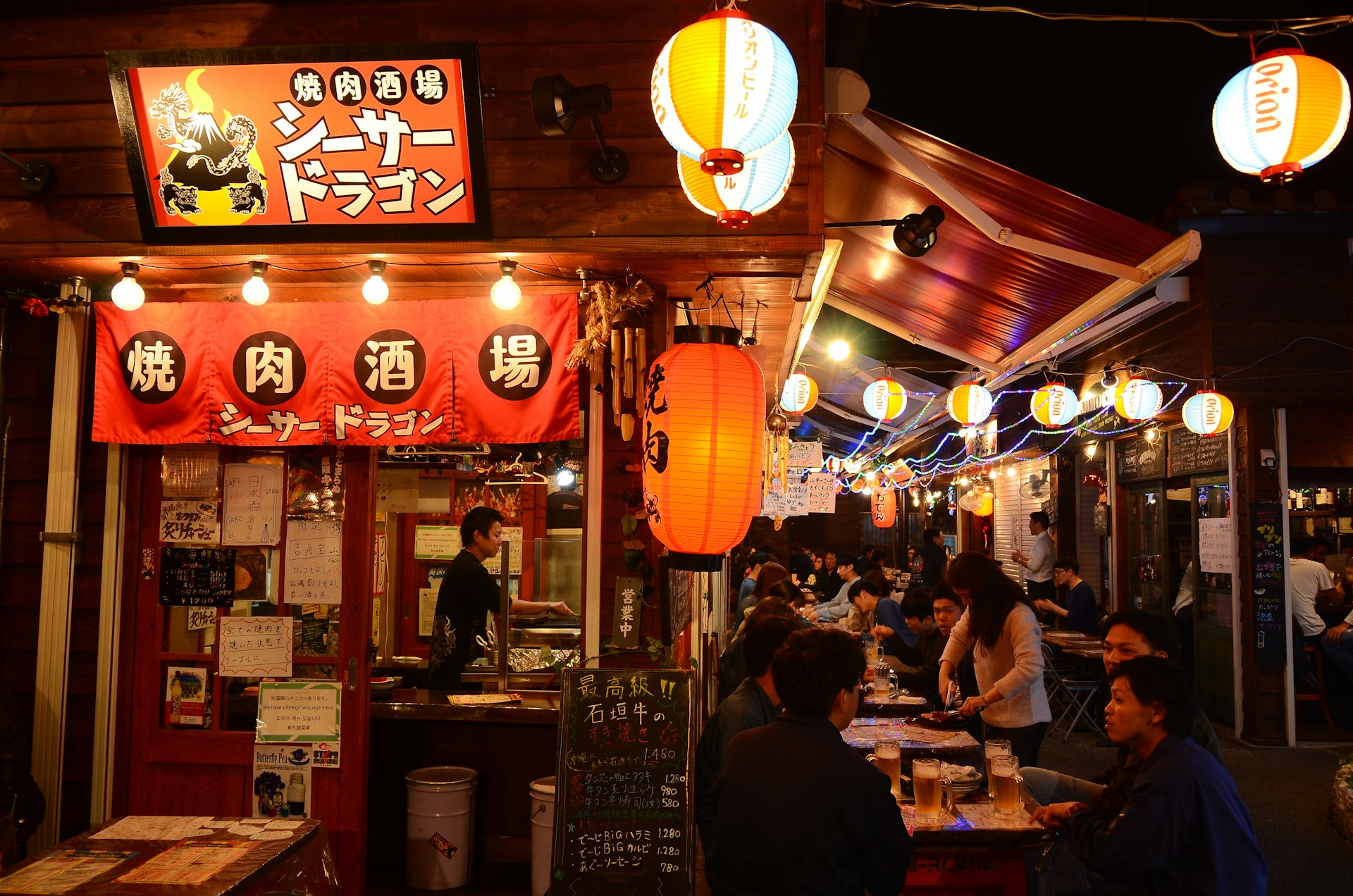
15. Choose the right dish in the right place to save money
You can get a good, filling meal in shokudō , Japan's answer to the greasy spoon, for under ¥1,000. A steaming bowl of tasty ramen can be picked up in many places for as little as ¥600.
Tachigui (stand-and-eat counter joints) sell soba (buckwheat noodles) and udon (thick white wheat noodles) for even less – starting as low as ¥350 per bowl.
Many upscale restaurants in Japan offer a smaller course at lunchtime for significantly less than they charge at dinner, so for a bargain deal have your larger meal then. In all restaurants in Japan, tea and water are complimentary, and tipping is not required.
16. Bentō are a budget alternative to a meal out
These "boxed meals," which include a variety of dishes, can be picked up for under ¥1,000 at supermarkets. Department store food halls sell gourmet ones for a little bit more; visit just before closing to buy them on markdown.
17. Get everything you need and more at the convenience store
Convenience stores are the best friend to all budget travelers. They stock sandwiches, rice balls, hot dishes and beer, all of which you can assemble into a very affordable (if not exactly healthy) meal. Accommodations always have kettles, so cup noodles are always an option.
Keep planning your trip to Japan:
Save this guide to the top things to do in Japan . Find out what to expect during every season from cherry blossoms to winter skiing . Before you book your trip, read these t op things to know before you go . Do you need a visa? Discover more here. Want to see Japan by train? Railway enthusiast John Walton shares his advice.
This article was first published May 2012 and updated March 2024
Explore related stories
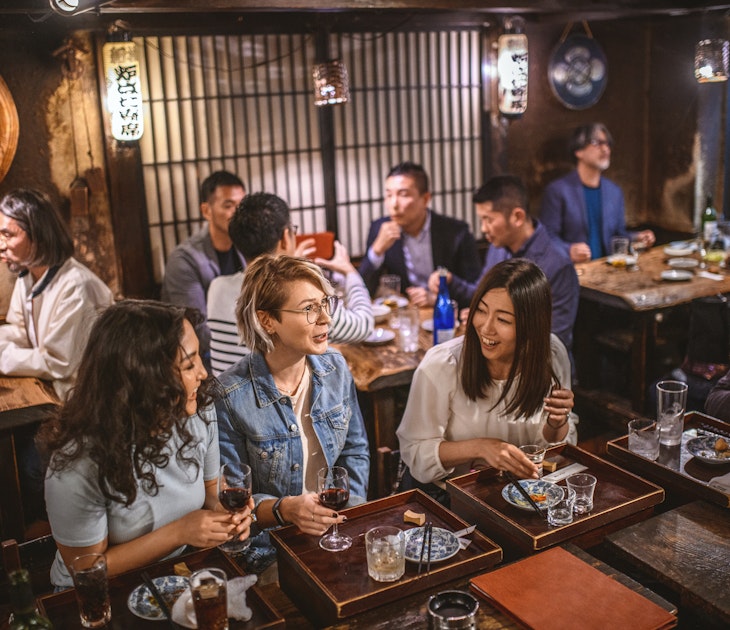
Budget Travel
Mar 23, 2024 • 7 min read
Tokyo is expensive but you don't need to max out your credit card to enjoy. Our insider tips and tricks will stretch your yen and save your bank account.
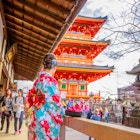
Dec 10, 2023 • 6 min read

Oct 20, 2023 • 13 min read

Jan 29, 2020 • 9 min read

Jan 12, 2020 • 5 min read

Oct 28, 2019 • 19 min read

Apr 3, 2024 • 17 min read

Apr 2, 2024 • 10 min read

Mar 31, 2024 • 7 min read

Mar 28, 2024 • 6 min read

Budget Travel in Japan – Ultimate Backpacking Guide [2024]
- Last Updated: February 5, 2024
From seeing up close the famous Mt Fuji, exploring the architecture of Japanese castles to slurping down the best bowl of ramen you ever had, all these epic memories to-be-made are possible even with our guide to budget travel in Japan .
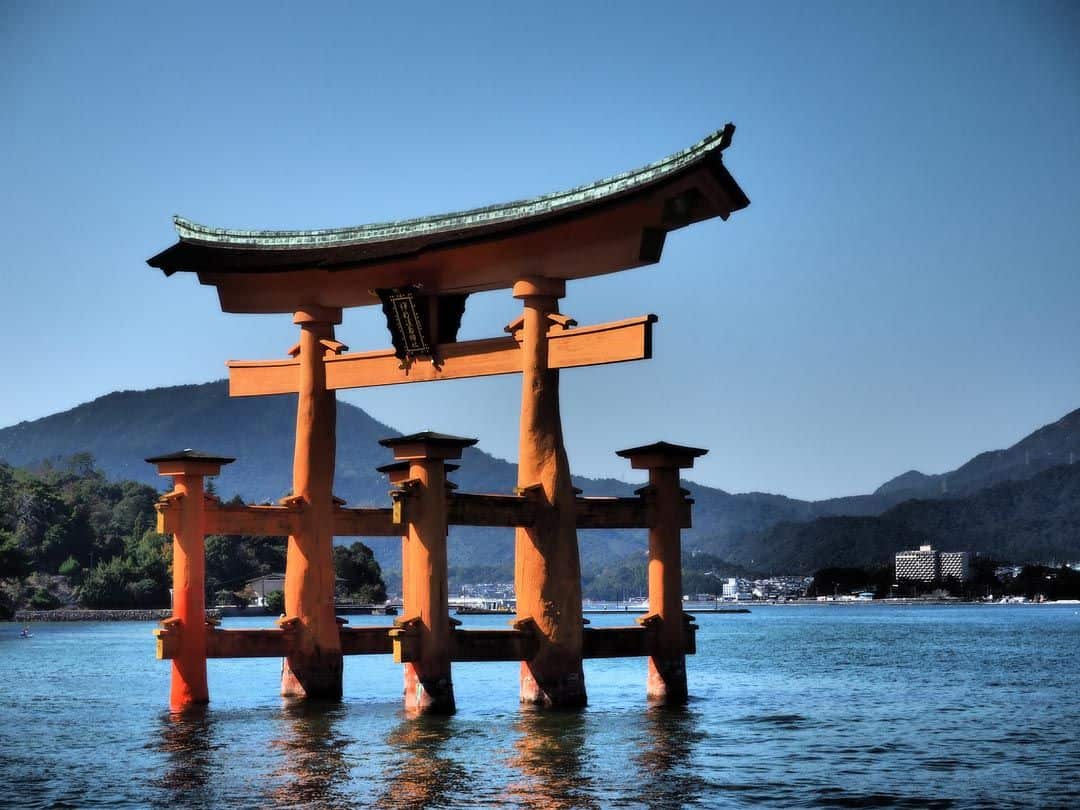
Today’s Japan is a fascinating example of blending the ancient traditions and modern day culture.
Throughout the country you’ll witness dynamic mountainscapes in stark contrast to futuristic cities that are inspiring new trends in architecture worldwide.
It’s also thought of to be notoriously expensive but we managed to travel to Japan on a budget, and so can you.
Table of Contents
Get A JR Rail Pass
Take some flights, deals in hiroshima, deals in osaka, deals in kyoto, deals in tokyo, cheap eating and drinking in japan, save this pin for later, budget travel in japan.
Japan has had a reputation as being expensive for a very long time, people paying hundreds of dollars for a piece of Kobe beef or a sliver of the finest blue fin tuna.
Prices of hotels can be among some of the most expensive in the world. Public travel, whilst incredibly reliable, can sometimes be quite expensive.
Well, some of this is true and some of it is a little more than a rumour that we have all perpetuated. Many people are put off traveling around for a long period of time because of the belief that the costs will be astronomical.
This isn’t always the case.
We have just finished 1 month of travel in Japan and it is comfortably cheaper than Australia, New Zealand, Western Europe and in some cases is even cheaper than China!
It sounds crazy, but here are a few really simple tips for budget travel in Japan that will save you some dollars on your next trip.
Note – At time of travel $1 USD was equal to about 110 Japanese Yen.
READ MORE: Don’t miss our brand new complete guide to help you travel to Japan!
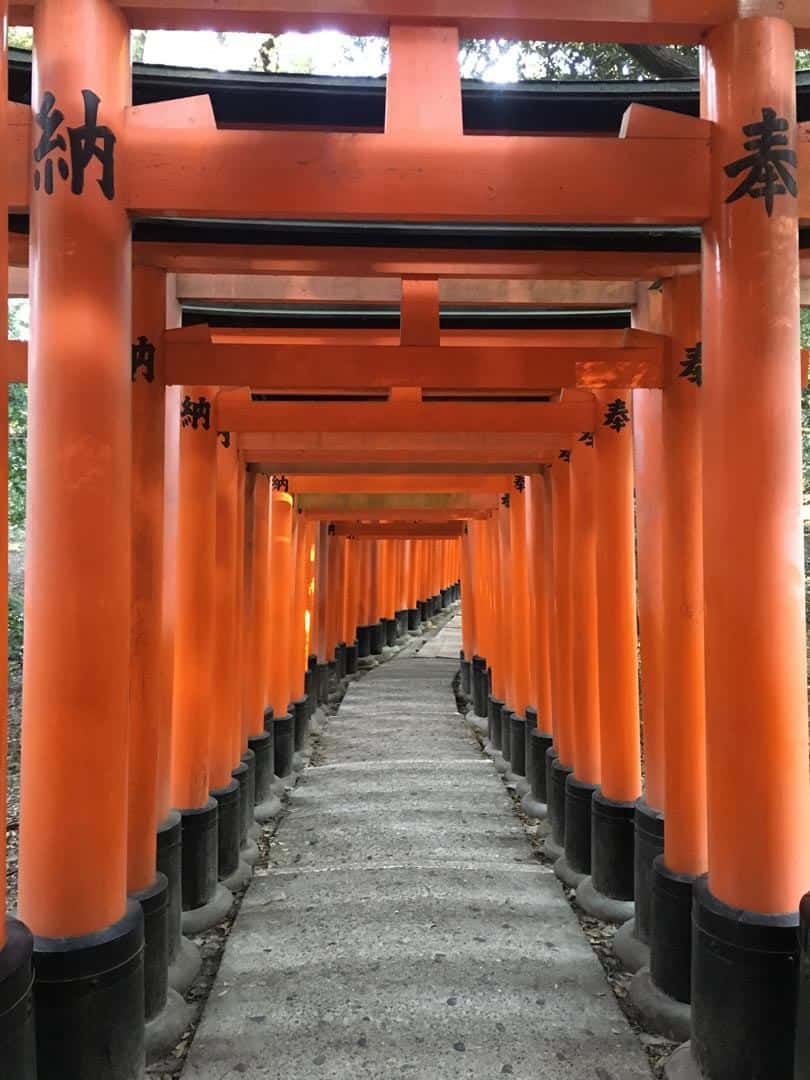
This is a no-brainer. Anyone travelling between cities in Japan should consider investing in one of these.
However be very careful about which JR pass you choose as you could end up spending more than you need to.
I’ll use our situation as an example.
We spent our first 12 days figuring out an excellent Hokkaido itinerary , which is absolutely incredible and definitely our favourite part of Japan. From Sapporo we flew down to Hiroshima .
From here we planned to go on to Miyajima, Osaka, Himeji, Nara, Kyoto and Tokyo.
A few of these were day trips and a few were for a bit longer, but as you can see we had a lot of travel ahead of us.
A regular JR pass that allows travel across the whole country costs 29,100 yen. This is incredibly reasonable. If you take a train from Tokyo to Kyoto, throw in a day trip to Nara and you’ve started saving money.
Our plan was as follows:
- 3 days – Hiroshima and Miyajima
- 2 days – Osaka
- 1 day – Himeji
- 1 day – Nara
- 4 days – Kyoto
- 5 days – Tokyo
We decided to purchase a Kansai-Hiroshima pass through JR West for 13,500 yen per person.
We activated this when we travelled from Hiroshima to Osaka. We used it for our day trips to Himeji, Nara and our trip to Kyoto. We then travelled from Kyoto to Tokyo by night bus for 6500 yen per person.
A total of 20,000 yen, 9000 yen less than a 7 day rail pass.
We would not have had time to do everything we wanted to do around Kansai and get to Tokyo in 7 days. Hence why we elected to go this route.
The JR pass website states that a JR pass cannot be used on the Nozomi or Mizuho trains. However if you purchase ANY JR west railway pass, which ours was, you can use these trains. This is great for longer routes, notably Hiroshima to Osaka/Kyoto.
Plan where you want to go and what you want to see and then search on the Klook website to find the pass that best fits your plan.
You could end up saving yourself a lot of money.
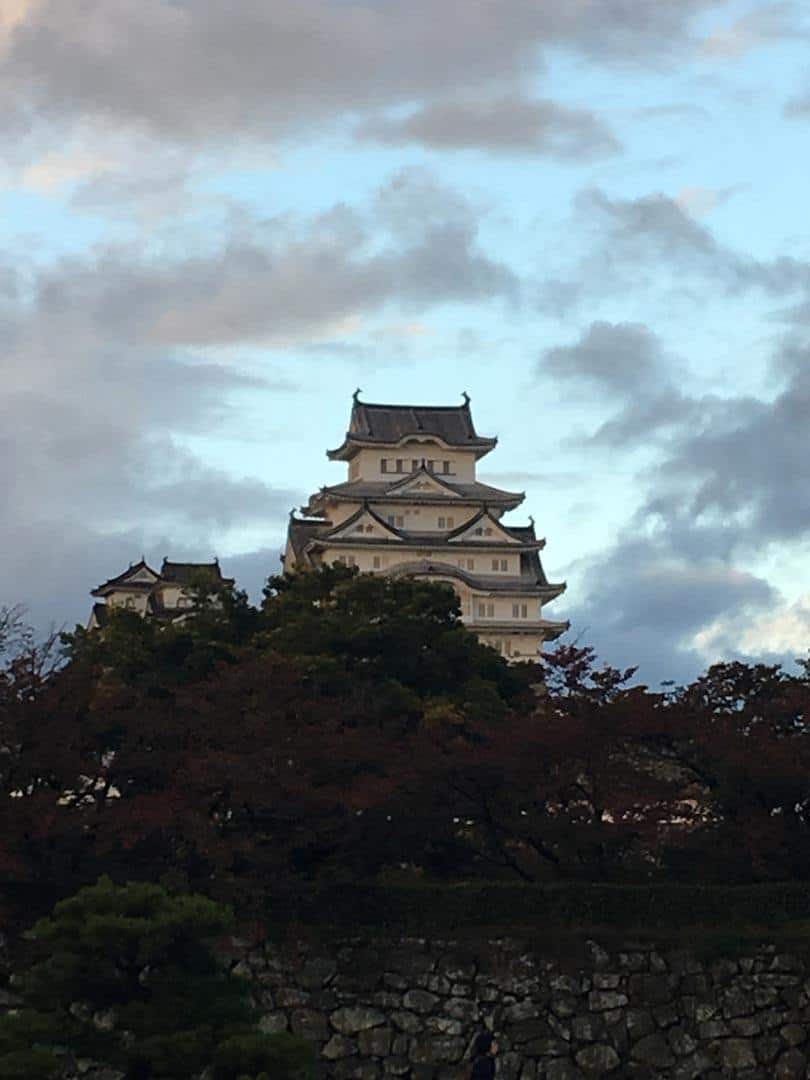
I read about this little deal on the amazing website Japanguide , a must for anyone planning a trip to the land of the rising sun.
In essence, this deal covers cheap flights all over Japan for any visitors to the country. It’s advertised as a 10,000 yen deal however there are some flights that are cheaper and some that are slightly more expensive.
We paid 10,000 yen each to fly from Sapporo to Hiroshima. If we were to booked these flights without this deal it would cost us closer to 50,000 yen per ticket.
There are two airlines that participate in this amazing deal: JAL and ANA. We ended up flying with ANA and it was great.
One thing to remember is that for this to work you usually have to book from outside Japan. As always in Japan there are a variety of deals.
The deals that we researched are linked below, but the link above has information on all of the deals available.
- JAL – Japan Explorer Pass
- ANA – Experience Japan
Both of these links take you straight to the booking page where you can research and compare prices. This deal is a must for anyone looking to get away from the Tokyo-Kyoto-Osaka route. This saved us a huge amount of money.
Day Passes for Attractions
Many of Japan’s cities have a variety of day passes allowing giving unlimited rides and even discounts to various attractions. This is a lifesaver for budget travel in Japan.
In Hiroshima you can purchase a 1 day street car and ferry pass for 840 yen. This is a great option if you are doing Miyajima as a day trip.
- Street Car to Miyajimaguch i = 280 1 way – total of 560
- Ferry to Miyajima = 180 yen 1 way – total of 360
- 560+360 = 920
This also means that you can use the streetcars to get around in the evening as your legs will be knackered after a day in Miyajima.
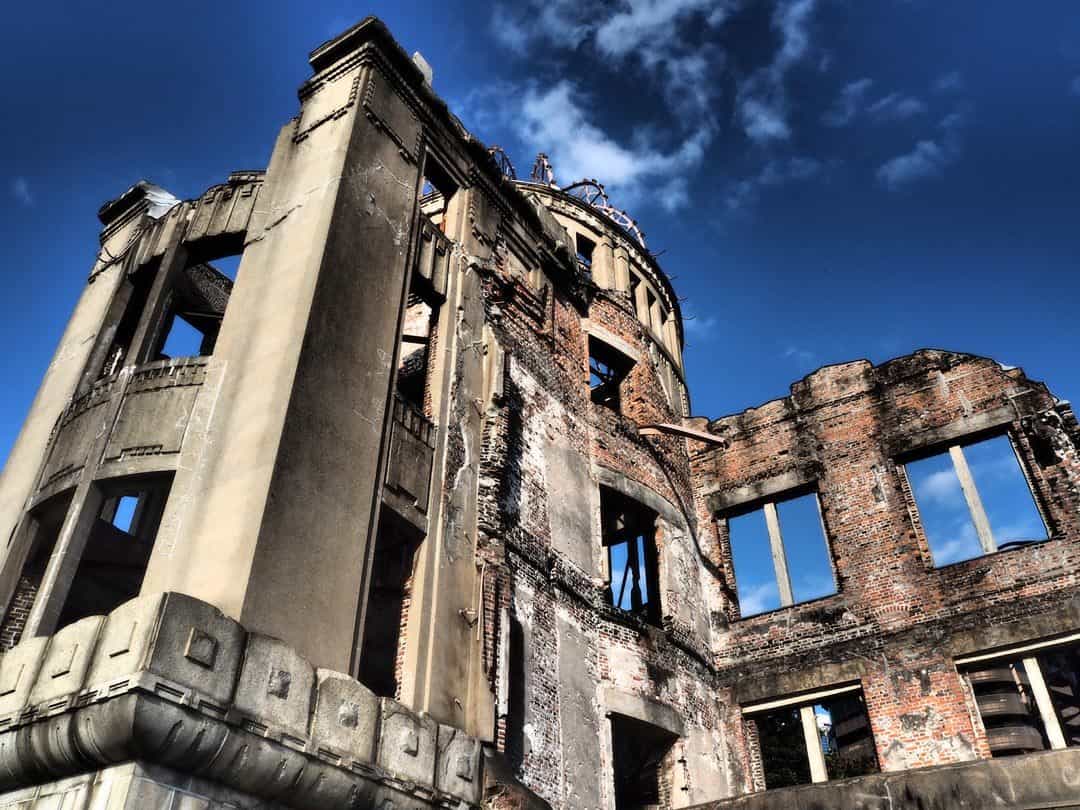
In Osaka you can pick up the “Osaka Amazing Pass” that covers subway and entry in a huge number of attractions for one day.
When we used it we headed to Osaka Castle, did the HEP5 ferris wheel, went to the top of the Umeda tower and took in an evening cruise (which was not that great to be honest).
It costs 2500 and it ended up saving us 2500 yen in transport and entrance fee’s definitely worth it.
Possibly the most popular tourist destination in Japan (it certainly felt that way when we were there).
Kyoto’s subway system is quite useful for accessing Northern Higashiyama and the city centre, but other than that it’s the bus and JR that are king.
However the JR routes to Arashiyama and Inari are very cheap so it’s not worth activating a rail pass just for this. Save it for intercity travel.
Kyoto’s bus network is both extensive and convenient. For 500 yen you can pick up an all day bus. You end up saving money if you take 3 or more buses. With Kyoto’s sites spread all over the city, this will not be a problem.
Here’s our list of the best things to do in Kyoto .
Japans greatest urban metropolis has one of the most impressive and confusing transportations systems on planet earth. The truth is there are huge number of tickets. Outlines of all of them are listed here .
Suica: This is just a simple subway card, like the oyster card in London or the octopus card in Hong Kong. You need to pay a 500 yen deposit for the card, but this is returned to you when you return the card at the end of your trip. Also the fares a few yen cheaper than if you buy tickets at the machine. They can be used on every line in Tokyo.
All Day Pass: There are 2 all-day pass options. The all-day metro card for 600yen which can only be used on the Tokyo metro, or you can include the Toei lines for 1500yen.
We found the all-day metro card fantastic value. If you take 4 trips you will be saving money. Just remember, neither of these passes include the JR lines, so sometimes the journeys are a little longer.
While you’re at it, check out these great things to do in Tokyo.
Eating out in Japan can be extremely cheap, in some case it was far cheaper than eating similar food in Beijing. Obviously eating out can be as cheap or as expensive as you wish, but here is a very rough price guide based on 2 people eating.
- 500-1000 Yen – Bento boxes – can be brought from any convenience store
- 1000-1500 Yen – Ramen and Udon
- 1500-2000 Yen – Katsu Curry
- 2000-3000 Yen – Tempura Sets
- 3000-5000 Yen – Yakiniku (Japanese BBQ), Izakaya/Yakitori (Japanese style pub serving sticks of meat, sashimi and other wonderful delights), Sushi and Sukiyaki (type of Japanese hot pot)
This is not a definitive list, but it’s generally a good guide as to what type of food is generally cheaper or more expensive.
The big thing that raises the cost of meal is alcohol. A couple of draft beers would generally add at least 1000 yen to the bill. So an easy way to save is to limit your alcohol intake.
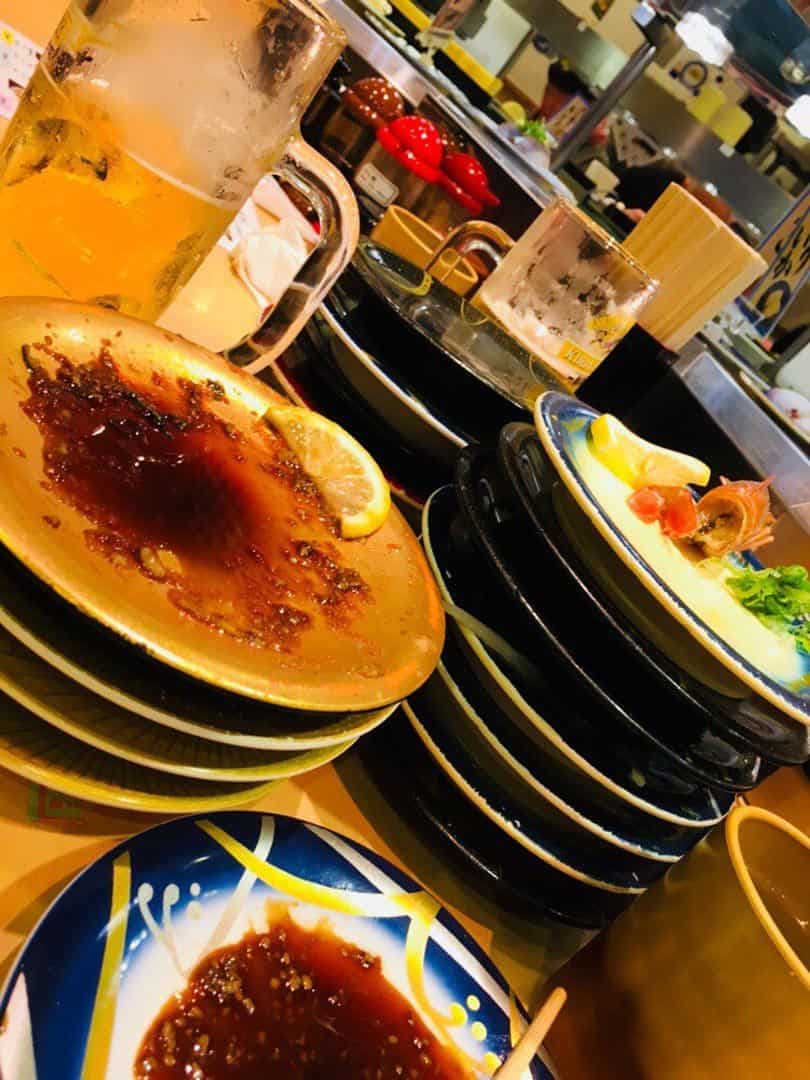
Budget Accommodation in Japan
Accommodation is usually the most expensive part of any trip.
Hokkaido – Booking.com and agoda.com offered us the best rates for anything outside Sapporo. In this region of Japan AirBnB is can be pretty pricey. In the national parks it can be around 9000yen per night, with breakfast included. However this is offset by the cost of food being much cheaper than other parts of Japan.
Hiroshima to Tokyo – Here AirBnB was generally cheaper and that was what we used the majority of the time. We managed to rent entire apartments for half the price of a hotel room in Hokkaido.
Another thing to be aware of is that paying for 2 beds in a dorm is usually more expensive that getting a room in a hotel or guesthouse, so plan accordingly.
Sign up using our AirBnB link to get $50 credit to go towards your first booking and make help make your trip even cheaper.
In truth Japan is much more affordable than people would believe. Hope you found this useful. Head over to www.abearandapig.com to see more of what we do.
That’s it for our guide to budget travel in Japan. Please leave a comment below if you found this article useful, or if you have anything else to add.
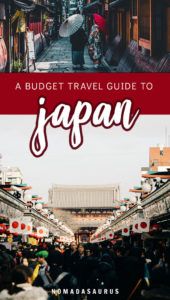
Richard Barnes
Hi, We’re Alesha and Jarryd!

We’ve been traveling the world together since 2008, searching for the planet’s best destinations and adventures.
Love Travel?
Sign up for our free weekly newsletter for the best travel tips, ideas and deals!
We respect your privacy. Unsubscribe at any time.
READ MORE...
The Perfect 3 Days in Tokyo Itinerary
The Best Day Trips from Every City in Japan [2024]
18 Amazing Things to Do in Kyoto at Night (2024 Guide)
Related Posts
12 awesome things to do in hakone, japan (2024 guide), visting yamakoshi, nagaoka – japan’s most picturesque village, the 15 best places to visit in japan (2024 guide), how to plan your perfect hokkaido itinerary in 2024, 6 thoughts on “budget travel in japan – ultimate backpacking guide [2024]”.
People may think that Japan is very expensive, but there are many ways to travel in there very cheaply if you know some “secrets” like right organizations where you can get some very unbelievable travel deals 😉
What kind of organizations would those be?
Thanks for sharing this kind of information Thanks for the tips I’ve always enjoyed traveling, the idea of seeing the world fascinated me, but I was never able to take a very long trip
Thank you for your comment Luana. Travelling is definitely amazing in so many ways. Hope you can travel where you want to soon and stay for a long trip and immerse yourself in the country and the people. Happy travel planning 🙂
I love to visit this places in japan this year..Thanks for sharing such kind of information..I think Travelling is the most important way to enjoy life and know something different from your routines..
We agree. Travel is amazing. Have a great trip.
Leave a comment Cancel reply
Save my name, email, and website in this browser for the next time I comment.
Lists by Lukiih 🍀
Practical travel guides with less fluff
- 💰 My 2024 Japan Trip Cost: A Budget Breakdown
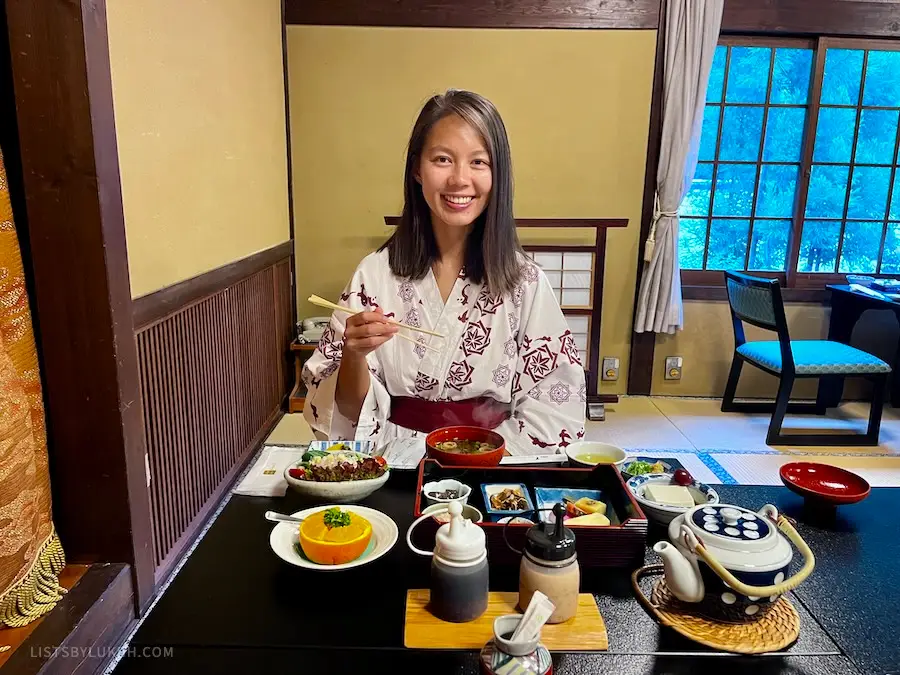
Japan, a country famous for its cherry blossoms and temples, can be visited with a budget of $60 to $120 a day.
My two-week trip to Japan cost a total of $2,829 . In this post, I share:
- 💰 Expected travel costs
- 💡 Budgeting tips
- 💵 How much cash to bring
- ✈️ My trip’s costs by category
- 📍 My trip’s costs by major cities
Planning a trip? Here’s what to know about Japan .
- Is Japan Expensive?
- How Much Is a Trip?
- About My Trip
- Cost Breakdown
- Daily Budget: $145
- Flight: $796
- Accommodation: $807
- Transportation: $374
- Entertainment: $155
- Kyoto: $616
- Withdrawing Cash
- How Much Cash To Bring
- Cash-Only Places
- Tipping Etiquette
Japan Trip Planner
Lists By Lukiih is readers-supported. If you buy through an affiliate link on this post, I may earn a small commission. Thanks!
Is Japan Expensive To Travel To?
Japan ranks as one of the most expensive destinations in Asia. While it can be visited with a lower budget, Japan has pricey accommodations in major cities, the Japan Rail Pass is not cheap, and fees for attractions can add up.
Along with Singapore and Hong Kong, Japan is often considered a luxury destination in Asia.
However, with advanced planning and the willingness to forego certain experiences, Japan can be visited on a small budget .
💰 Trip Daily Budget for Destinations in Asia
For comparison, I visited these countries in Asia within a year of visiting Japan, and here’s how much I spent per day at each one:
*My Cambodia daily budget is high because I splurged on accommodation.
See all my daily budget for each destination I’ve visited .
How Much Is a Trip to Japan?
This section covers estimated trip costs depending on your travel style. I share my actual travel expenses further below.
🎒 Budget Traveler – Japan Trip Cost
Budget travelers can expect to spend approximately $60 per day or $840 for two weeks of travel in Japan, excluding flights.
Here’s what a budget traveler’s cost breakdown can look like:
To travel on a budget to Japan, below are some things you’ll need to do.
Accommodation Budgeting Tips
- Stay in a dorm-style hostel for about $30 a night in big cities like Tokyo. You can find hostels for closer to $15 a night in more remote areas.
- If you want more privacy, consider staying at a capsule hotel, where you can rent an enclosed bed for less than $40 a night.
- The average cost of a private room in a budget hotel can also be cheap, but only if you stay on the outskirts of central areas . Otherwise, budget hotels are priced like mid-range hotels in central places of major cities like Tokyo, Kyoto, and Osaka.
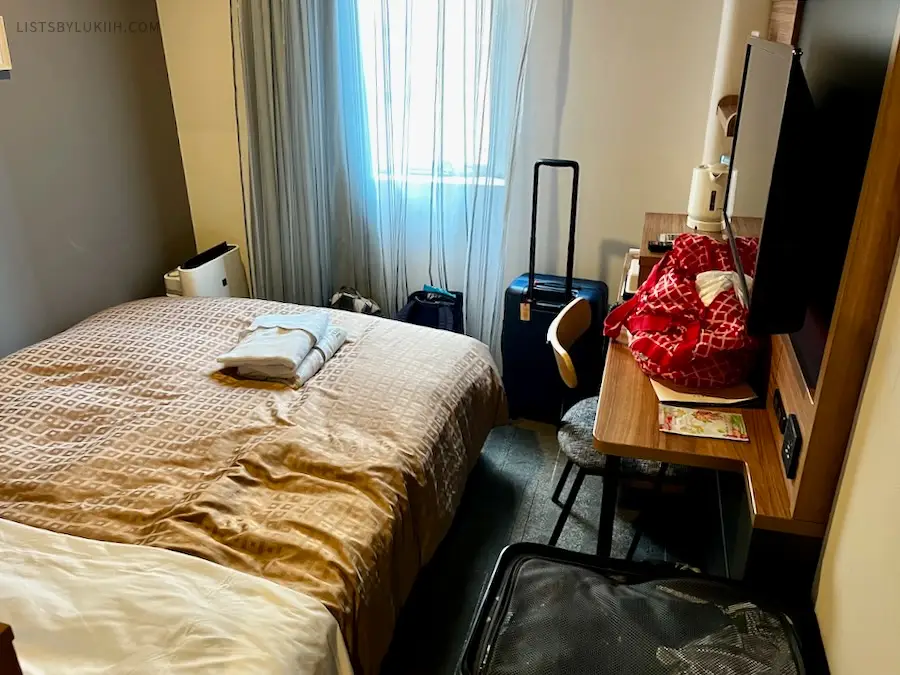
- Avoid traveling during Japan’s high season, which is the cherry blossom season in the spring (March to May). Traveling during the low season, which is summer or winter, will get you the best deals on accommodation .
See what traveling to Japan is like in December .
Transportation Budgeting Tips
Japan’s public transportation, a complex and vast network of trains, makes traveling convenient and cheap.
- If you know you’ll be taking the train a lot, consider buying a day pass, which can be as cheap as $4 per person in Tokyo.
- If you’re traveling long distances around Japan, consider getting the Japan Rail Pass , which gives you unlimited rides for a set time and includes access to high-speed bullet trains.
The JR Pass is expensive , so you should know your rough Japan itinerary before purchasing it. That way, you can evaluate whether it’s worth it.
Food Budgeting Tips
You can eat cheaply in Japan and find meals for $5, even in big tourist cities.
- A great way to save money on food is to shop at convenience stores like Family Mart, 7-Eleven, and Lawson. These stores provide decent meals for less than $5 . I had a latte and onigiri (rice ball) for breakfast several times at convenience stores, which cost only $2 per meal.
If you buy a refrigerated meal, like gyudon, ramen, or pasta, they will warm it up for you and provide utensils .
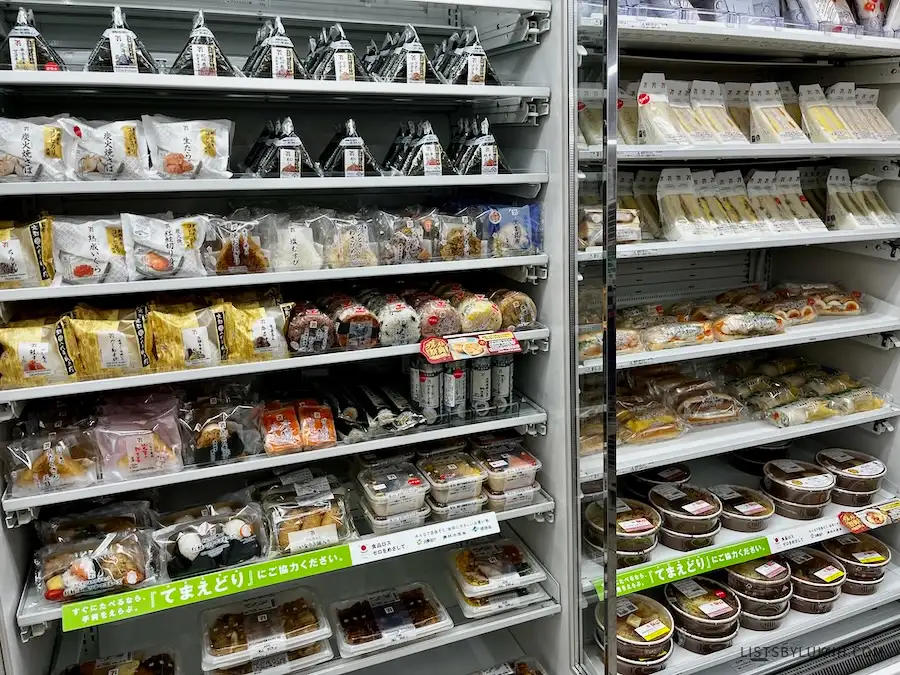
- Fast food places that typically have automatic ordering machines also provide hearty meals for $5 or less. In Kyoto, I had an udon bowl for $3; in Tokyo, I ate at a ramen restaurant for $7.
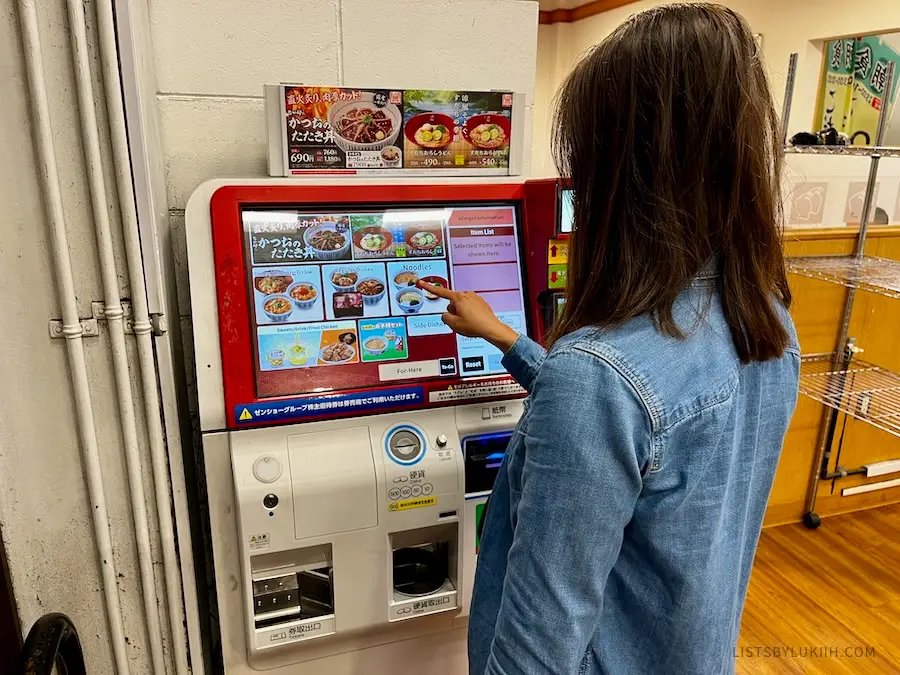
- Markets, like the popular Nishiki Market in Kyoto and the Kuromon Ichiba Market in Osaka, are cheap places to try a wide variety of good food for less than $12 , as each stall sells $1 to $3 snack-bite food.
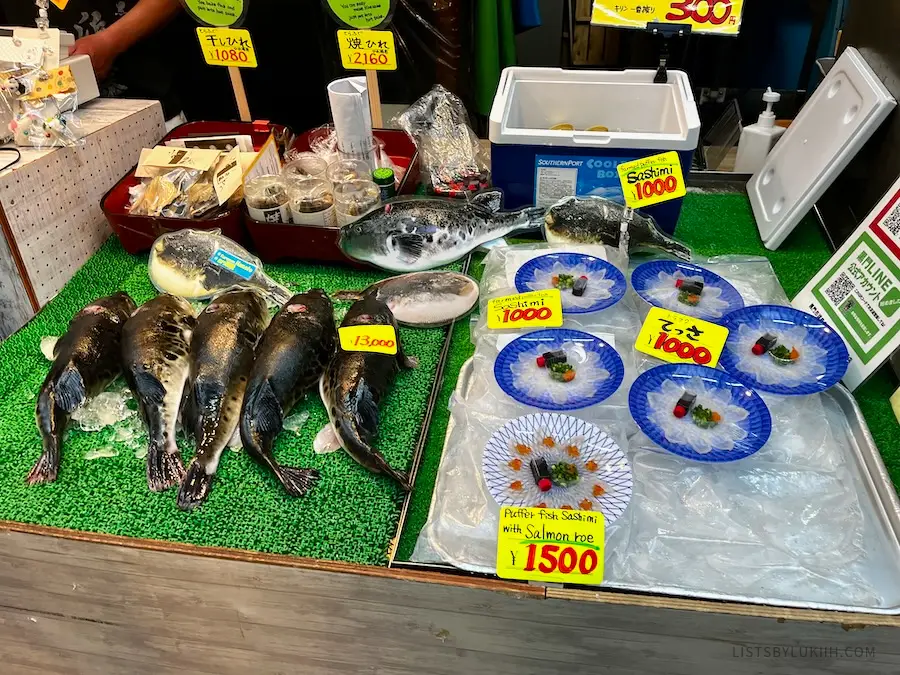
- Conveyor belt sushi restaurants are a good deal if you’re craving seafood . I ate at one in Shinjuku, a central location in Tokyo, for $13.
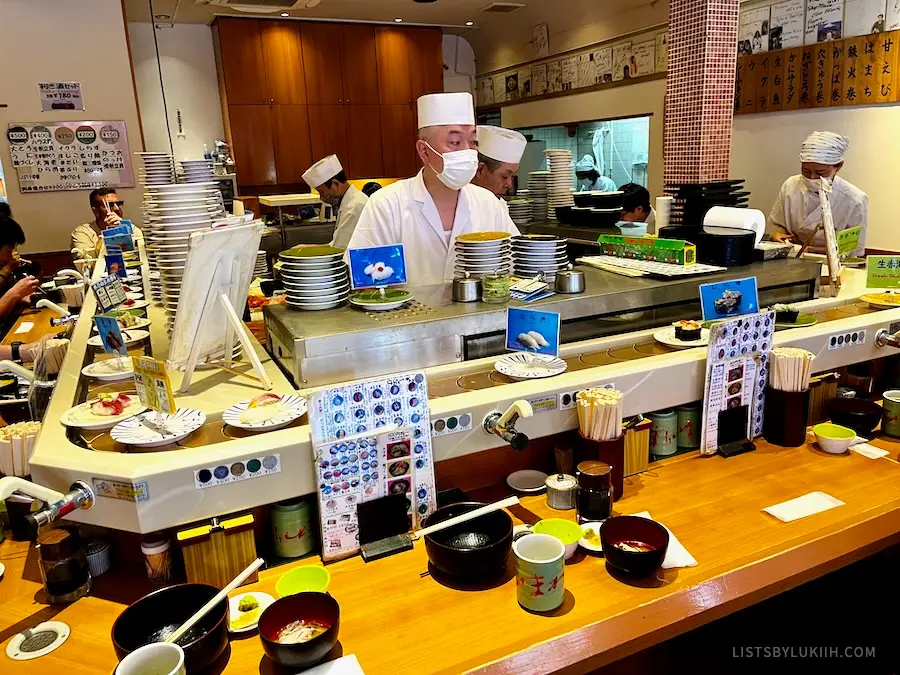
Entertainment Budgeting Tips
While many of Japan’s main attractions require an entrance fee, there are plenty of ways to enjoy the country without spending much money . Some of my best days in Japan didn’t require me to pay for any attractions.
- Many famous temples have a small entrance fee, but there is an abundance of other less well-known temples around Japan that are free .
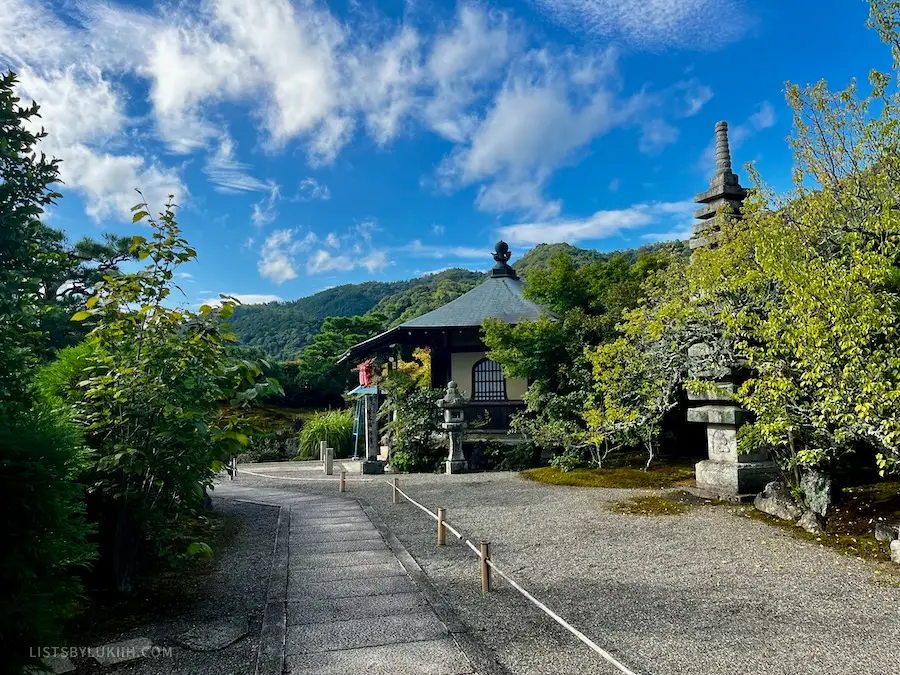
- Similarly, gardens and some bigger parks will also have entrance fees, but many urban parks have free access.
💰 Mid-Range Budget Traveler – Japan Trip Cost
A mid-range budget traveler like myself can expect to spend approximately $120 per day or $1,680 for two weeks of travel in Japan, excluding flights. I break down my trip expenses by travel category below.
About My Japan Trip
To give context to the expenses below, here’s what you need to know about my trip:
- Tokyo : 6 days
- Kyoto : 2 days
- Osaka : 1 day
- Mount Fuji hike : 2 days
- Shimanami Kaido cycle : 2 days
- ☀️ High season – I visited Japan in September, the beginning of the high season. Japan has two high seasons: one in the spring and one in the fall.
See the upsides and downsides of visiting Japan in September .
- ✌️ Group travel – I traveled with one other person, so we were able to split some costs, such as housing.
- 💰 Mid-range budget – I consider myself a mid-range budget traveler, and these expenses reflect that. I don’t aim to travel on a budget, but I’m thoughtful about how and where I spend.
- 🍀 Self-funded – My trips are self-funded, so I paid for everything listed below. None of my excursions or experiences are sponsored.
- 💵 US dollars – All costs listed in this post are per person and in US dollars, which have been converted from Japan’s local currency, the Japanese yen.
The exchange rate was $1 USD = 142 JPY at the time of writing.
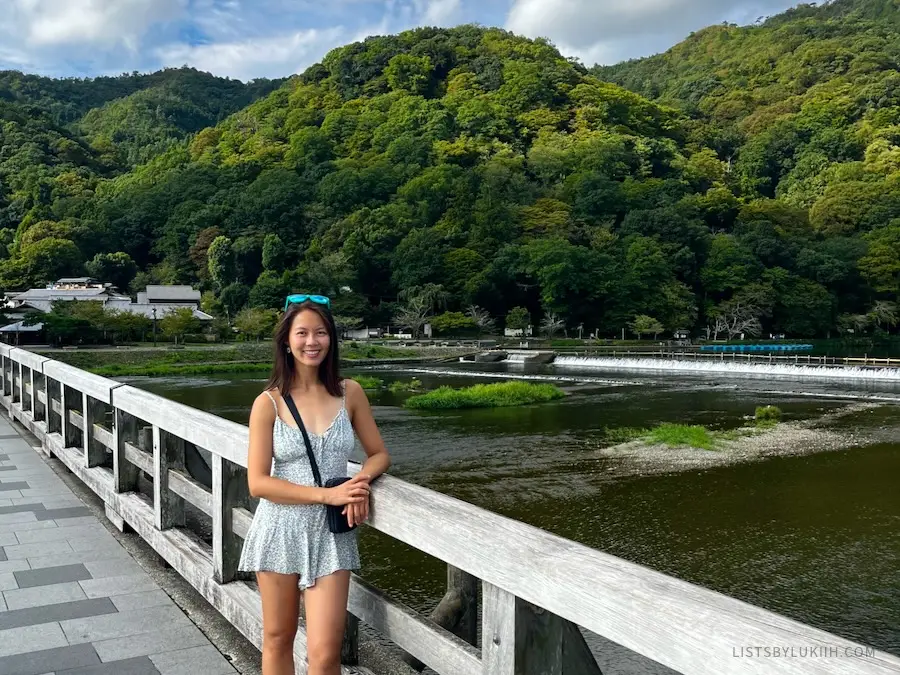
Japan Trip’s Total Cost: $2,829
My two-week trip to Japan cost a total of $2,829 , including flights.
See the highlights of my trip in this Japan itinerary .
💰 Cost Breakdown for Japan
Here’s a quick overview of my expenses by travel category:
🗓️ Daily Budget in Japan: $145
My Japan trip cost $145 per day , excluding my round-trip flights from and to the United States.
A mid-range budget traveler can expect to spend $120 per day in Japan. This generally means staying at accommodations that cost about $70 per night, eating a mix of food from convenience stores and restaurants, and visiting several of Japan’s big cities.
✈️ Flight Cost to Japan: $796
My round-trip flight from the West Coast of the United States to Haneda Airport in Tokyo was $796 .
A round-trip flight between the US and Japan that costs under $700 is considered cheap; international flights typically cost over $900.
🏠 Accommodation Cost in Japan: $807
My average cost of accommodation in Japan was $58 per day . I was able to split accommodations with one other person at all times.
Here are the accommodations I stayed at and how much I paid for each:
Budgeting Tips for Accommodations in Japan
Here are my budgeting tips and things to note regarding accommodations in Japan:
- Accommodations are pricey – While accommodations in Japan can be affordable in non-central areas, expect to pay $70 for mid-range hotel rooms in central areas of Tokyo, Kyoto, and Osaka. Luxury hotels in those major cities will be as high as $900, but I recommend staying in a ryokan if you have a larger accommodation budget.
- Be prepared to shell out for a ryokan – Ryokans, which are traditional Japanese inns, are typically more expensive than mid-range hotels; a decent one starts at around $150.
Ryokans are usually attached to onsens and serve kaiseki, a multi-course Japanese meal, for breakfast, dinner, or both. Despite their higher costs, they’re considered a unique experience that’s worth a one- or two-night stay.
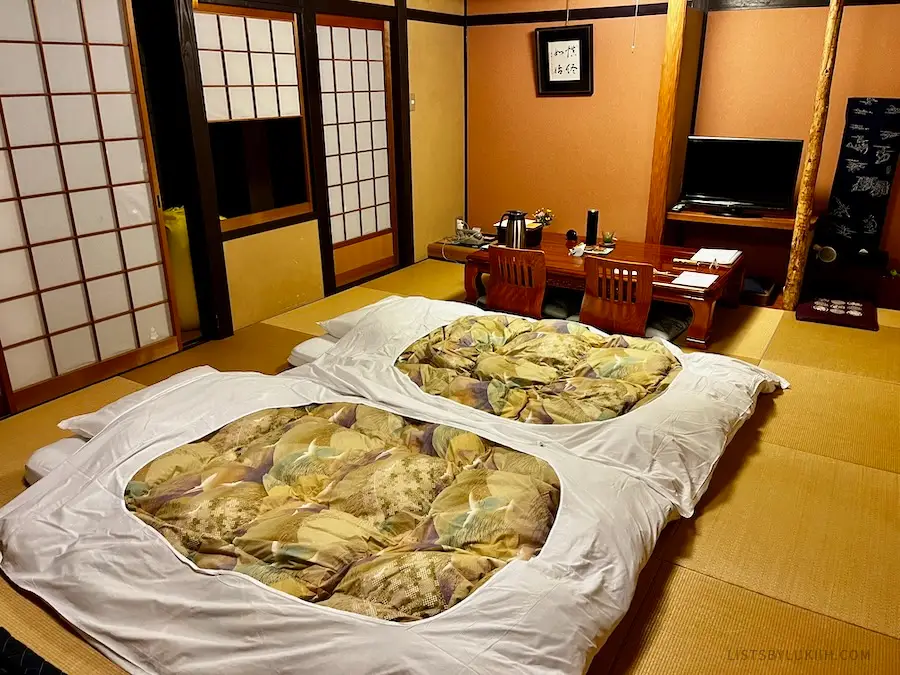
- Don’t pack toiletries (optional) – Many hotels in Japan will provide toiletries, pajamas, and breakfast sets as part of their accommodation costs. All the hotels I stayed at (with Mt. Fuji hut being the exception) provided toothbrushes, toothpaste, face lotion, etc.

🍣 Food Cost in Japan: $489
My average cost of food in Japan was $35 per day .
Food costs in Japan vary widely ; you can eat on a budget or extravagantly. For either budget, try eating at local spots for the best authentic eats.
Here’s a hack for finding local eats in Japan .
Cheapest Meals in Japan
Here are the most affordable meals I ate during my trip:
If you’re on a budget, you can eat Japanese food for $3 to $10 at convenience stores (Family Mart, 7-Eleven, and Lawson), street food markets, and fast food restaurants where you sometimes order at a machine resembling a vending machine.
Most Expensive Meals in Japan
Here are the most expensive meals I ate during my trip:
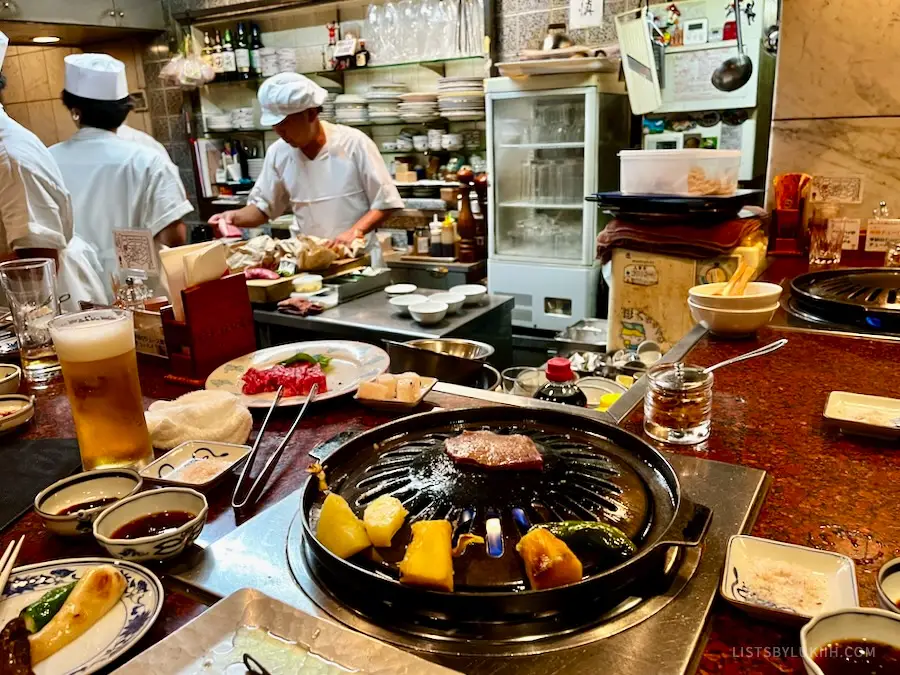
You’ll notice that fresh fruits in Japan can be very expensive (e.g., over $15 for a handful of grapes) because fruits hold more significance in Japanese culture. But if you go to local supermarkets, you can buy them for reasonable prices.
🚆 Transportation Cost in Japan: $374
My average cost of transportation in Japan was $26 per day .
Here are the transportation methods I took and how much I paid for each:
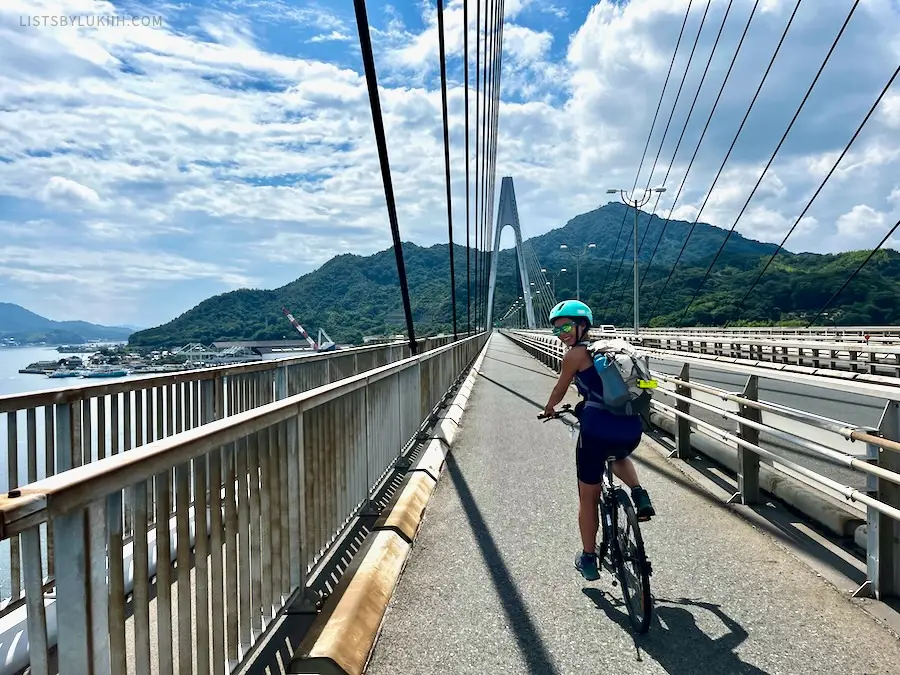
When figuring out transportation, know that many of Japan’s train stations have coin-operated luggage storage that is cheap and convenient. It typically costs less than $5 for 24-hour storage . As the name implies, they are sometimes cash-only and need exact change. Train station attendants can give you change for larger bills.
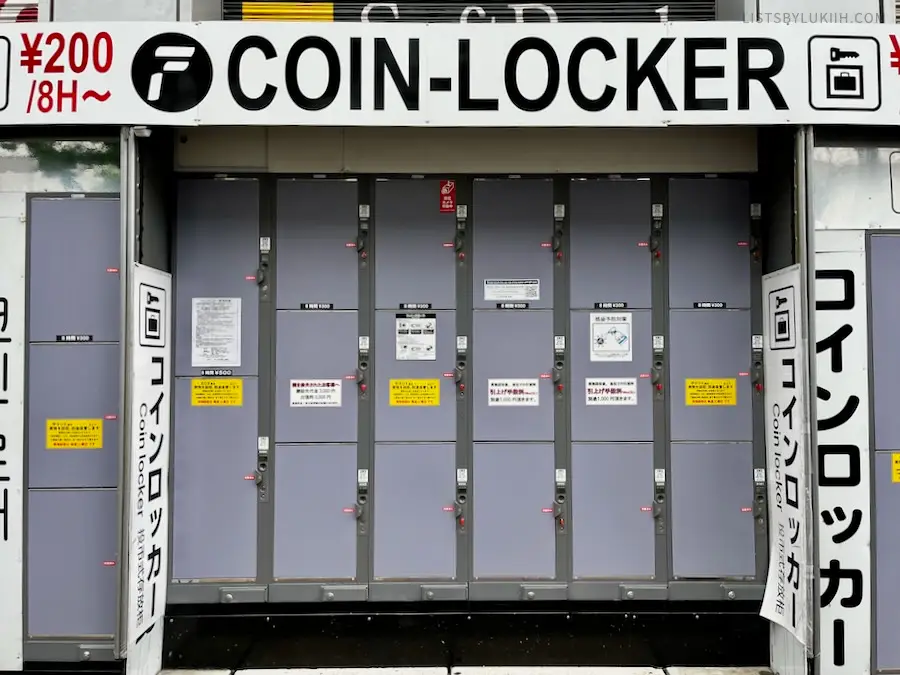
Budgeting Tips for Trains in Japan
The best way to travel around Japan is by train. Here are my budgeting tips and things to note regarding trains there:
- Consider getting the JR Pass – JR, the same group that operates all the bullet trains (called Shinkansen ), serves many of Japan’s trains. A bullet train ride can be expensive (around $100 from Tokyo to Kyoto), so you should determine whether getting a JR Pass , which gives you unlimited rides for a set time, is more economical. I got the 7-day JR Pass for my Japan itinerary because it was cheaper than buying individual rides.

- Take advantage of day passes – Some local transportation, like Tokyo’s local trains, offers a cheap day pass that is usually cost-efficient if you take the train more than three times within 24 hours.
- IC cards can make things more convenient – You’ll notice that many places in Japan, including public transportation, convenience stores, restaurants, and vending machines, will accept IC cards like PASMO and Suica. An IC card is a rechargeable travel card that you can get to make navigating Japan easier.
⛩️ Entertainment Cost in Japan: $155
My average cost of entertainment in Japan was $11 per day . My entertainment costs are on the lower end because I did many free things and took advantage of the country’s beautiful nature, which is usually low-cost.
A typical mid-range traveler in Japan will likely spend closer to at least $30 a day on entertainment.
Costs of Activities and Attractions in Japan
Here are all the activities and attractions I paid for and how much each cost:
Japan is a beautiful country where many people like to take photos. Before snapping a photo of a local, ask them for permission , as doing so without consent is considered disrespectful. Learn more about proper Japanese etiquette .
Free Things To Do in Japan
Japan is known for its natural beauty, so there are many free outdoor activities and attractions available.
Here are the attractions and activities I did in Japan that were free:
- Fushimi Inari Taisha – This famous shrine complex in Kyoto has no entrance fee.
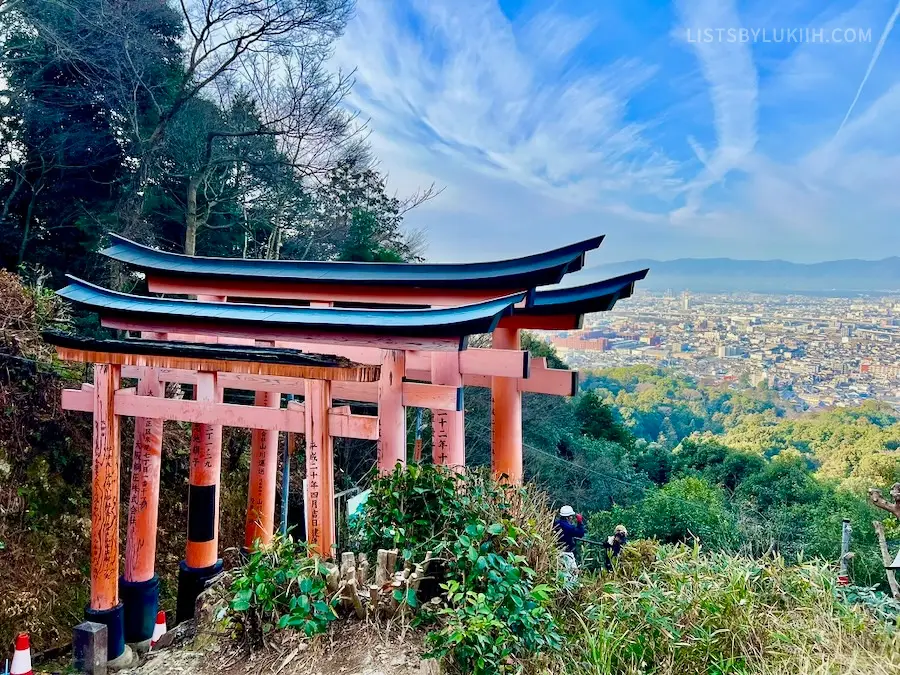
- Mount Fuji hiking – Mt. Fuji has four trails, and starting in 2024, you only need to pay for the Yoshida Trail, the most popular one. When I did the Subashiri trail, I just had the option to donate a small amount.
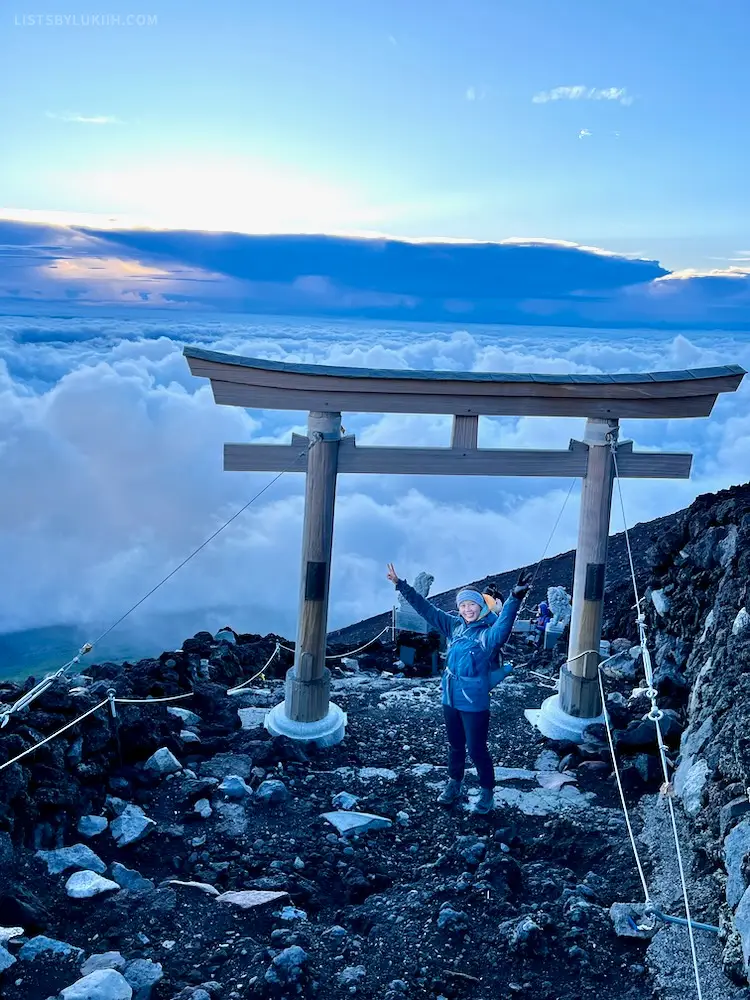
- Tokyo Metropolitan Government Building – Shibuya Sky is a popular sunset observation deck in Tokyo, but you can save $15 by going to the deck on the 45th floor of the government building instead.
- Parks – Tokyo has tranquil and beautiful urban parks, including Yoyogi Park and Shinjuku Central Park.

- Smaller temples – Many of Kyoto’s smaller and less well-known temples in the Arashiyama district and Philosopher’s Path are free.
- Bustling districts – You can spend hours walking around and window shopping in districts like Tokyo’s Akihabara and Osaka’s Dotonbori.
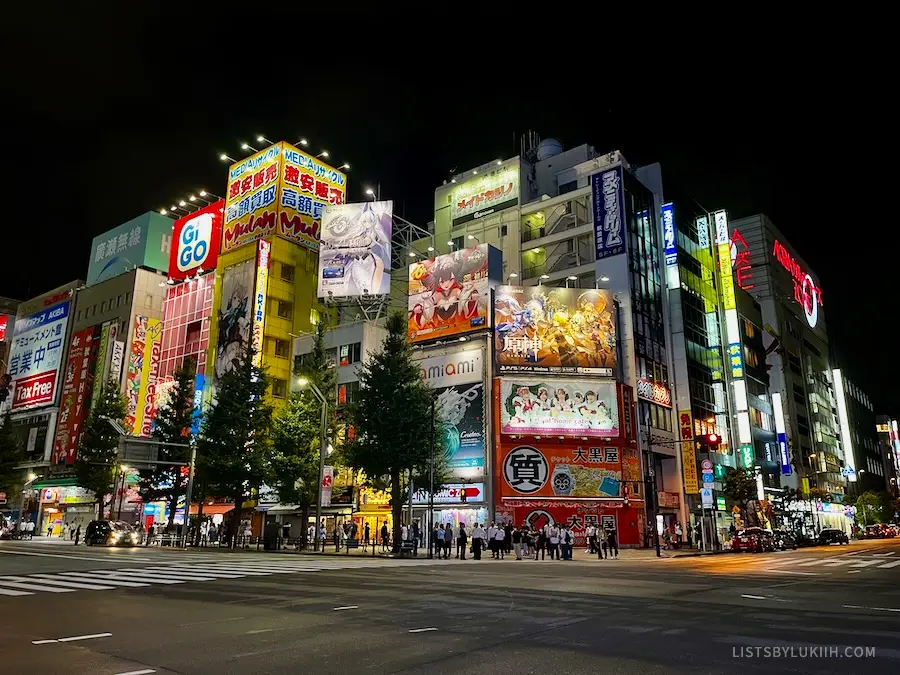
Cost Breakdown by Destination in Japan
Below are my trip expense breakdowns for Tokyo, Kyoto, and Osaka . These three major cities are often featured in first-timers’ travel itineraries.
I also spent time in the following places:
- I stayed at Gotemba , a nearby city of Mount Fuji, to hike up the iconic volcano . I spent $139 over two days while doing the hike.
- As part of the Shimanami Kaido two-day cycling activity , I stayed on Ikuchi Island and Imabari City. I spent $223 cycling the route.
🍱 Tokyo Trip’s Total Cost: $97
During my six-day trip to Tokyo, I averaged $99 in daily travel expenses.
In Tokyo, I stayed at two hotels in the Shinjuku and Nihonbashi areas to be close to major train stations. I paid to visit the Shinjuku Gyoen National Garden , watch an Olympics Qualifiers volleyball game at Yoyogi Stadium, and sing karaoke with some locals.

Tokyo is the most expensive city in Japan to live in, but it’s not the most expensive city to visit . With a plethora of restaurants and sights to see, you can explore Tokyo on your own for free or hire a local guide to optimize your time there.
⛩️ Kyoto Trip’s Total Cost: $616
During my two-day trip to Kyoto, I averaged $308 in daily travel expenses.
Kyoto is where I splurged more on accommodation as I stayed at a ryokan and a nicer hotel near the Kyoto train station. I also spent more on dining, as my two most expensive Japanese meals were here.
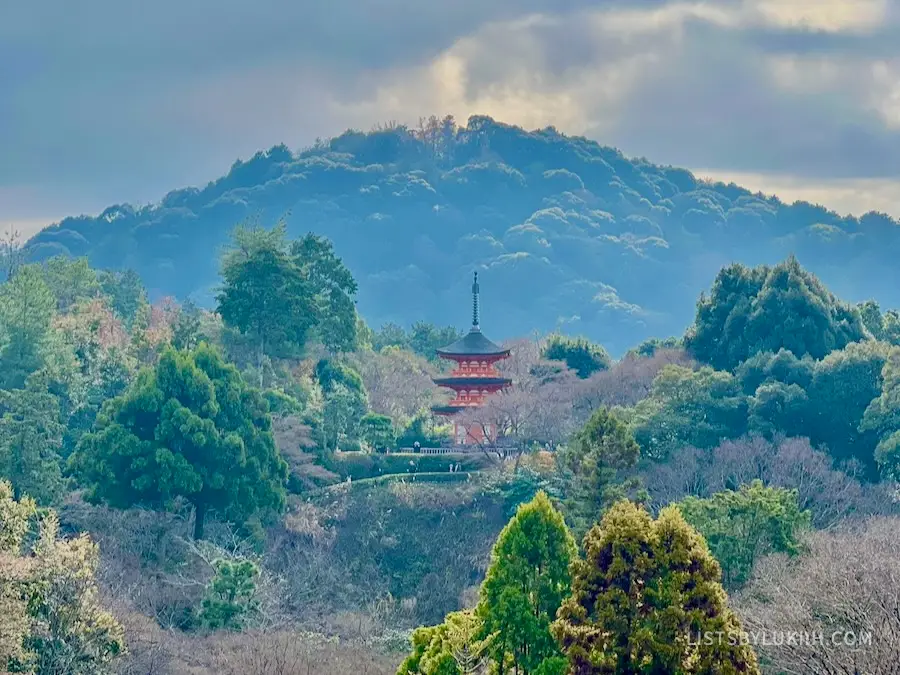
Kyoto is known for its well-preserved historical sites. It boasts over 1,600 temples, and all the major or popular ones have a small entrance fee (usually around $5). The city also has many free temples , like the ones found on the Philosopher’s Path or in the Arashiyama district.
🐙 Osaka Trip’s Total Cost: $50
I did a day trip to Osaka from Kyoto. During my short trip, I visited the Kuromon Ichiba Market , walked around the popular and bustling Dotonbori area, and visited the Osaka Aquarium , which I found to be unique and well-designed.
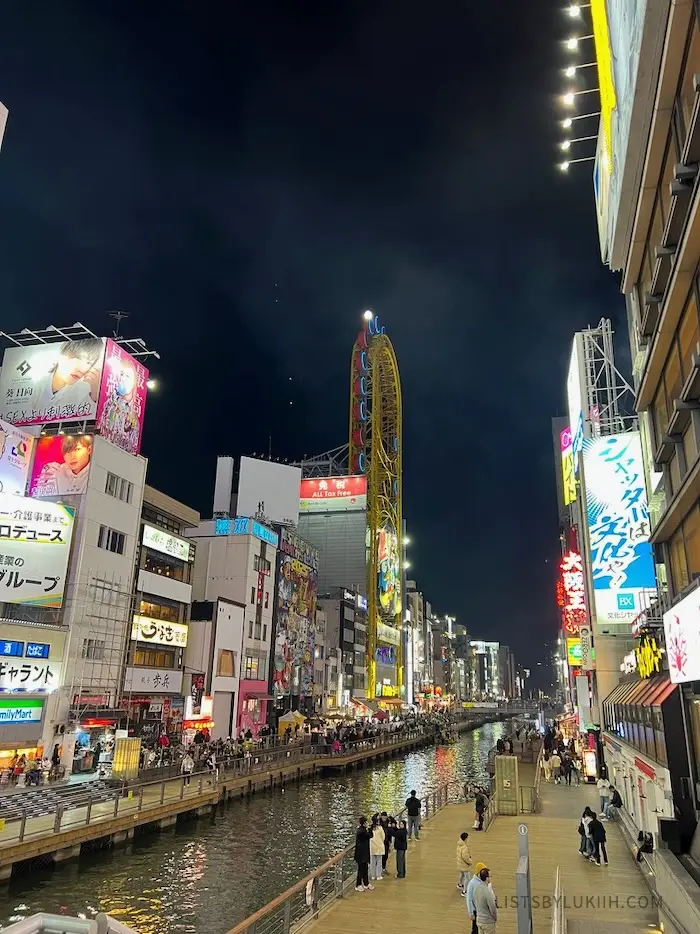
Osaka is called “Japan’s Kitchen” and a foodie’s paradise. It’s well-known for its street food, nightlife, and numerous Michelin-starred places, so expect to spend a bit on dining . If you like some guidance, plenty of English-speaking guides offer street food tours .
Do You Need Cash in Japan?
Although Japan has a good credit card infrastructure, a significant part of its economy is based on cash transactions . This is especially true once you wander outside its major cities, so make sure to bring some cash.
Below are tips on bringing and using cash in Japan.
💴 1. Withdraw cash in Japanese yen.
Japan’s currency is the Japanese yen (JPY), and the US dollar is not widely accepted.
ATMs are readily available in many central areas of Japan, but you might have trouble finding them elsewhere. For example, during my ryokan stay, I had trouble finding an ATM on the outskirts of Japan.
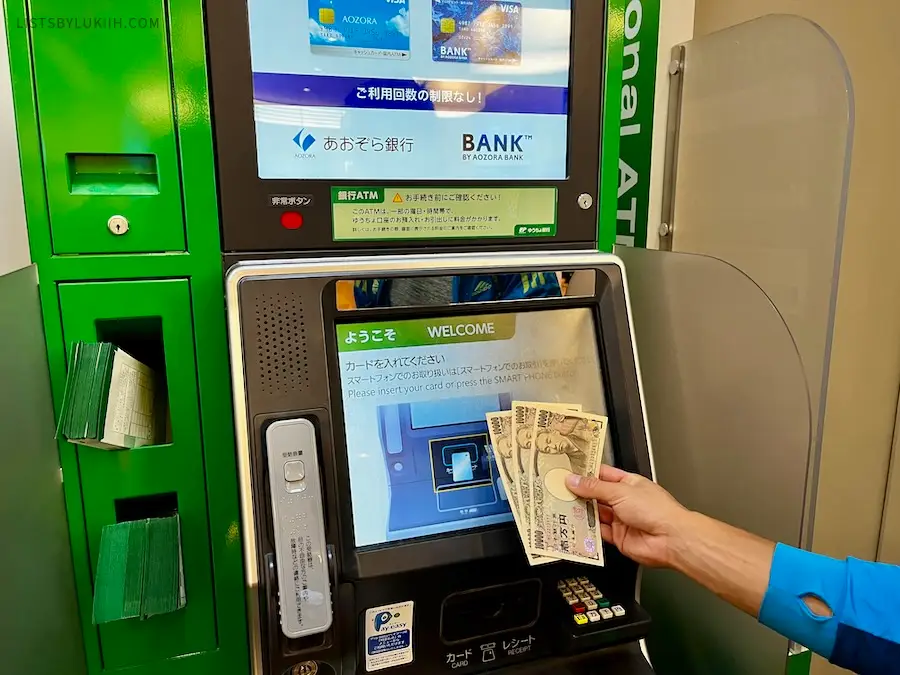
💵 2. Carry about $40 worth of cash per day in Japan.
On a typical day, a mid-range budget traveler in Japan will need at least $40 in cash to cover food, transportation, and attractions. A daily cash expense breakdown can look like this:
- $15 at restaurants and cafes
- $10 on shopping
- $5 on attractions
- $5 on taking the trains
- $5 on miscellaneous spending like vending machines, coin-lockers, etc.
Japan’s trains have a fixed price based on the distance traveled, so you must calculate the price every time you ride and buy a disposable ticket. However, you can buy a PASMO card to avoid calculating the price every time and minimize the amount of cash you need to carry.
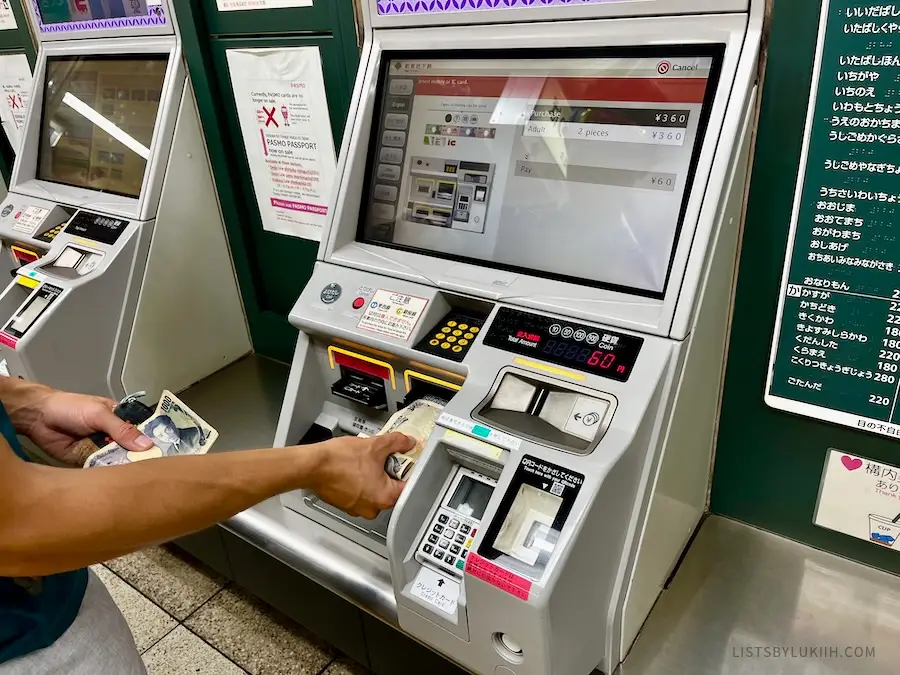
On my Japan trip, I spent a total of roughly $200 (about $15 per day) in cash. Here’s a breakdown of how I used my cash:
I keep my cash in my crossbody bag , but if you want extra protection against pickpocketing , carry it in a hidden money belt instead.
🏧 3. Many places in Japan are cash-only.
While credit cards are commonly used in Japan, I still had to use cash more than 30 times during my two-week trip. Here are some of the places that were cash-only in Japan:
- Markets – Kyoto’s Nishiki Market and Osaka’s Kuromon Ichiba Market are both cash-only.
- Restaurants – This includes places in major cities and smaller towns. I had to use cash in restaurants specializing in tofu, fluffy pancakes, ramen, and conveyor belt sushi.
- Cafes and bakeries – This includes a popular matcha place in Kyoto and an ice cream stand in Onomichi.
- Smaller shops – Shops tend to be cash-only in less accessible areas (e.g., at the top of the Fushimi Inari in Kyoto).
- Train stations kiosks – None of the kiosks took my Chase travel credit card, so I used cash for all my train rides.
- Coin-operated lockers – As the name implies, these lockers only accept coins.
- Smaller temples – Some less well-known temples in Kyoto had small entrance fees.
- Vending machines – Most vending machines in Japan are cash-only.
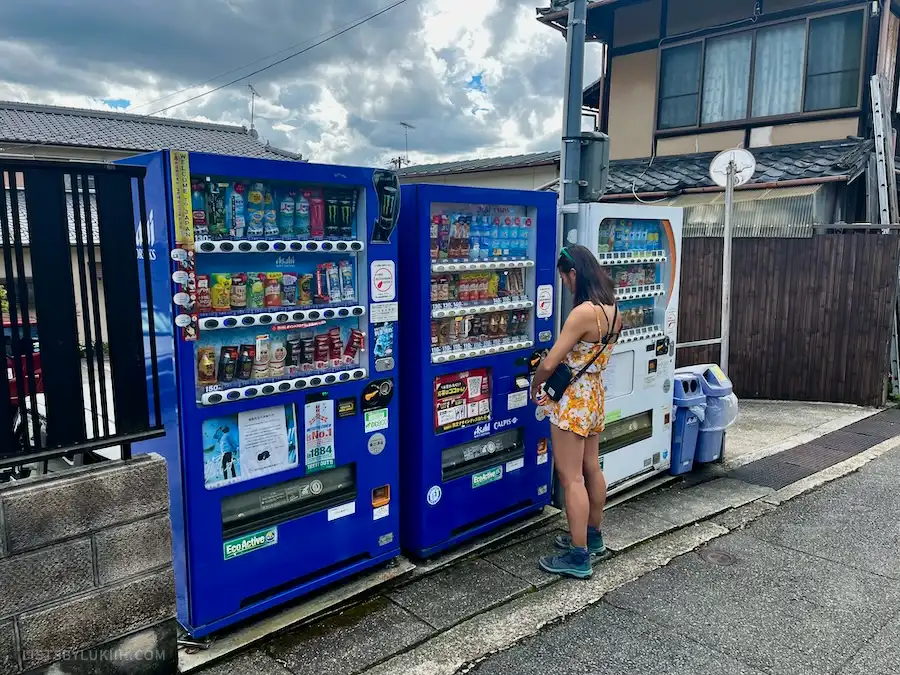
💰 4. Tipping is not customary in Japan.
Japan does not have a tipping culture, and you’ll find that locals will refuse tips even if you offer or insist. This is because they feel you’re already sufficiently paying for their service.
I offered a tip out of habit twice while in Japan, and my tips were refused both times.
See other essential travel tips for Japan before visiting.
To make your travel planning easier , download the trip planner below and use it as a starting point. The planner has country-specific travel information, an itinerary, a packing list, and a map with key places pinned.
The trip planner is built on Notion, which I use for all my travel planning (I genuinely love this tool). If you don’t have Notion, creating an account is free .

If you have any questions or thoughts, feel free to leave a comment below.
Japan Travel Guides
- 🇯🇵 Planning a Trip to Japan: 11 Practical Things To Know
- ⛩️ 10 Epic Days in Japan: A Unique & Active Itinerary
- 🌋 Hiking Mt. Fuji: How To & My Subashiri Trail Experience
- 🚲 Cycling Shimanami Kaido: How To & Firsthand Tips
- 🙅🏻♀️ Etiquette in Japan: 13 Things Tourists Should Not Do
- ☀️ Visiting Japan in September: Tips & What To Know
- ❄️ Visiting Japan in December: Tips & What To Know
Lists by Lukiih is Readers-Supported
If you find my travel tips helpful, say thanks with a bubble tea 🧋!
Leave a Reply Cancel reply
Your email address will not be published. Required fields are marked *
Save my name, email, and website in this browser for the next time I comment.
We use essential cookies to make our site work. With your consent, we may also use non-essential cookies to improve user experience and analyze website traffic. By clicking Accept, you agree to our website's cookie use as described in our Privacy Policy .
Accept Close

Travel Budget Japan: How much it costs and how to save
This article may contain links to products and services we use and recommend. We may receive compensation when you click on links to those products. For more information, see our Disclosure Policy .
Are you planning a trip to Japan and wondering how much it will cost you? You’ve come to the right place. In this article, we outline our actual travel costs during our three-month trip to Japan in 2023. Contrary to popular belief, Japan can be an affordable travel destination, with surprisingly reasonable accommodation and dining options. Plus, with the current exchange rate working in your favour, now is the perfect time to explore the Land of the Rising Sun . We also share some useful tips on how to save money during your time in Japan .
Download our 2024 Minimalist Travel Wardrobe and Carry-On Packing List
This list for women and men was created as a result of more than seven years of full-time travel around the world in all seasons with only carry-on luggage. This is the packing list we have used as we embark on our adventures into 2024.
The fine print: I agree to receive the Minimalist Journeys newsletter full of news, actionable tips and practical advice every month. I know I can unsubscribe at any time. I have read and agree to the Terms of Use and Privacy Policy .
What is the currency of Japan?
The Japanese Yen (JPY) – the word yen meaning circle or round object – has been in existence since 1871. In circulation these days are
- Banknotes in JPY1,000, JPY 2,000, JPY5,000 and JPY10,000 denominations; and
- Coins in JPY1, JPY5, JPY10, JPY50, JPY100 and JPY500 denominations (though the latter two are most commonly used).
Travel Cost Assumptions
When reading this article, please keep the following in mind:
- The costs are based upon a couple travelling together.
- We are independent travellers, researching and organising our own itinerary using curated travel resources .
- Accommodation: We usually stay in self-catered accommodation - in our own room and (preferably) our own bathroom, though the kitchen may be shared.
- Dining and Groceries: We have at least two meals a day at home . We like to eat out at cafes or restaurants every few days.
- Transportation: Wherever possible, we travel by public transport .
- Experiences: We pay for some tourist attractions or activities , but are selective as our funds are limited (just like everyone elses).
- In addition to above expense categories, we also include in the overall daily costs (though only for the period we are in the country) our mail scanning and forwarding service , mobile phone plans and travel insurance .
- Not considered are the costs for entry or exit transport into/out of the country.
During our most recent visit, we spent the maximum time we could in Japan (that is, 90 days on a tourist visa ), which means we travel slower and see fewer attractions/do fewer activities each day than someone who spends two or three-week vacation in Japan and tries to see and do as much as possible each day.
Japan Travel Cost Summary
Bearing those assumptions in mind, we spent on average JPY9,205 per person per day in Japan (or USD69 using the foreign exchange rate applicable at the time).
Certainly not the cheapest country we’ve visited to date , but surprisingly more affordable than we thought.
Map of Accommodation, Points of Interest, Eateries and Transport
Below is a map of the recommended accommodation, points of interest, eateries and transport terminals/stops mentioned in this article.
If you are interested in our other detailed maps containing recommended accommodations, points of interest, eateries, and transport terminals/stops, check out:
How much does accommodation cost in Japan?
As independent travellers, we booked almost all our accommodations ourselves via the various platforms we recommend below. We only used the help of an agent when organising accommodation for our two multi-day hikes – the Kumano Kodo ( Kumano Travel ) and the Nakasendo (the Tsumago Tourist Information Center). Most accommodations were short-term rentals – studios or one bedroom apartments with a small kitchen (where basic meals could be prepared), bathroom and laundry facilities. During our hikes , we also stayed in family-run guesthouses (minshukus), often with onsen facilities.
During our three months in Japan , our accommodation costs averaged JPY7,720 (USD58) per room per night :
Our most expensive accommodation was at Koyasan Saizenin [ Google Maps location ], a Buddhist Temple in Koyasan – at JPY14,199 per night. While not cheap compared with our other accommodations in Japan , the temple stay (shukubō) was well worth it, as it allowed us to experience a multi-course shōjin ryōri dinner and breakfast (not included in above price), bathe in the traditional onsen and attend the Buddhist early morning prayer.
At just JPY4,500 per night , our most affordable accommodation was a stay at Guest Cafe Kuchikumano [ Google Maps location ] on Day 0 of our Kumano Kodo Hike. This was a traditional Japanese guesthouse (minshuku) with a large shared kitchen and bathroom. The host was super nice, and we had a lovely evening around the fire, toasting mochi balls (the Japanese version of marshmallows) and then dipping them in zenzai, delicious sweet red bean soup .
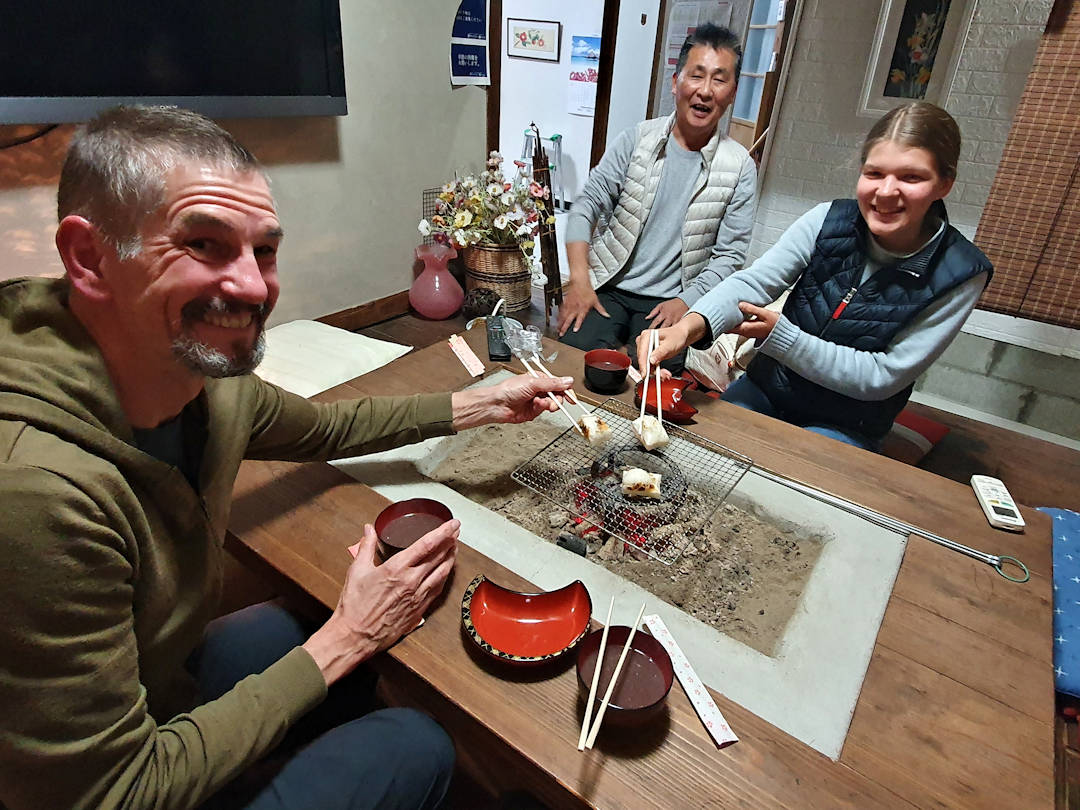
Interacting with your Japanese hosts and other guests is a wonderful experience
Laundromats
Although most of the accommodations we booked had a washing machine, over the three months in Japan , we did use laundromats eight times, costing us a total of JPY4,600 (or JPY575/USD4 per laundromat use ).
Communications
Prior to arriving in Japan , we purchased and received two NIPPON 4G-LTE SIM cards (one for each of our mobile phones) at a cost of JPY3,280/USD25 each – to use when we didn’t have access to Wi-Fi while travelling. Each SIM card came with 15 GB of data, valid for 180 days.
How much to budget for experiences in Japan?
You can pack a lot into a three-month trip in Japan , and we did. All our experiences added up to JPY131,583 (USD984) between the two of us – on average, JPY756 (or just under USD6) per person per experience.
Here are some of our favourite things to see and do (including the cost per person when we visited – note that some were FREE):
- Chubu Region
- Chugoku Region
- Hokkaido Region
- Kansai Region
- Kanto Region
- Kyushu Region
Gifu Prefecture
Kamitakara-no-Yu Onsen , Shinhotaka [ Google Maps location ]: JPY800 Kanda House , Shirakawa-go [ Google Maps location ]: JPY400 Matsuri no Mori Museum , Takayama [ Google Maps location ]: JPY1,000 Takayama-Shinhotaka Ropeway (Bus and Cable Car) Two-Day Pass, Takayama [ Google Maps location ]: JPY6,800
Ishikawa Prefecture
Yasue Gold Leaf Museum , Kanazawa [ Google Maps location ]: JPY310
Nagano Prefecture
City Museum of Art , Matsumoto [ Google Maps location ]: JPY410 Miyamoto shōkai one-day bicycle rental, Nagano [ Google Maps location ]: JPY1,500 Nagano Marathon Foreign Athlete Entry Fee: JPY15,437 Obuse 3-in-1 Museum Pass (Hokusai, Kozan Takai and Obuse Museums), Nagano: JPY1,300 Togakushi Bus Day Pass , Nagano: JPY3,000
Yamanashi Prefecture
Bike ride around Kawaguchi and Saiko Lakes, Fujikawaguchiko: FREE (bicycle was provided by accommodation) Witnessing Magomi Matsuri/Chigo-no-Mai at Kawaguchi Asama Shrine and Hike to Tenku no torii, Fujikawaguchiko: FREE Kubota Itchiku Art Museum , Fujikawaguchiko [ Google Maps location ]: JPY1,300
Hiroshima Prefecture
Mt Misen Hike, Miyajima : FREE Hiroshima Castle , Hiroshima [ Google Maps location ]: JPY370 History and Folklore Museum , Miyajima [ Google Maps location ]: JPY300 Mitaki-dera Temple, Hiroshima [ Google Maps location ]: JPY200 Peace Memorial Museum , Hiroshima [ Google Maps location ]: JPY200
Hokkaido Museum , Sapporo [ Google Maps location ]: JPY1,200 Okurayama Ski Jump Stadium , Sapporo [ Google Maps location ]: JPY1,000 Sapporo Snow Festival : FREE Teine Ski Field (Day Pass and Gear Hire), Sapporo [ Google Maps location ]: JPY11,800 TV Tower , Sapporo [ Google Maps location ]: JPY1,000
Hyōgo Prefecture
Great Hanshin-Awaji Earthquake Memorial , Kobe [ Google Maps location ]: JPY600 Himeji Castle and Koko-en Garden , Himeji [ Google Maps location ]: JPY1,050 Nunobiki Herb Gardens , Kobe : JPY1,130
Kyoto Prefecture
Botanical Gardens , Kyoto [ Google Maps location ]: JPY400 Free Walking Tour , Kyoto: FREE/Donation Hike Mt Inari , Kyoto [ Google Maps location ]: FREE Gion Corner Cultural Performance , Kyoto [ Google Maps location ]: JPY5,500 Ninomaru-Goten Palace , Kyoto [ Google Maps location ]: JPY1,050
Naha Prefecture
Todai-ji , Naha [ Google Maps location ]: JPY600
Tokyo Prefecture
teamLab Planets , Koto City [ Google Maps location ]: JPY3,500 Hokusai Museum , Sumida City [ Google Maps location ]: JPY1,000 Japan Olympic Museum , Shinjuku City [ Google Maps location ]: JPY500 Watching the sunset from Carrot Tower , Setagaya City [ Google Maps location ]: FREE Yayoi Kusama Museum , Shinjuku City [ Google Maps location ]: JPY1,100
Kanagawa Prefecture
Open-Air Museum , Hakone [ Google Maps location ]: JPY1,600
Okinawa Prefecture
Rental Charinko Bike Ishikawa , Zamami [ Google Maps location ]: JPY2,800 Fukushuen Garden , Naha [ Google Maps location ]: JPY200 Himeyuri Peace Museum , Naha [ Google Maps location ]: JPY310 Japanese Naval Underground Headquarters , Naha [ Google Maps location ]: JPY600 Okinawa Prefectural Museum , Naha [ Google Maps location ]: JPY555 Shuri Castle Grounds, Naha [ Google Maps location ]: FREE Tsushima-maru Memorial Museum , Naha [ Google Maps location ]: JPY500
How much to budget for Dining and Groceries in Japan?
As mentioned above, during our time in Japan , we stayed mostly in accommodation that had a kitchen with basic cooking facilities, enabling us to have at least two meals a day at home . That said, it was sometimes easier and cheaper to buy ready-to-eat meals from convenience stores such as Lawsons, 7-Eleven or Family Mart – though we did try to limit those occasions to avoid adding to Japan ’s plastic waste problem .
Our daily dining costs in Japan averaged JPY1,193 (USD9) per person , with our most expensive dining experience costing us JPY2,350 per person at Steakland Kobe-kan [ Google Maps location ] – a worthwhile luxury to taste the famous beef the city is renowned for.
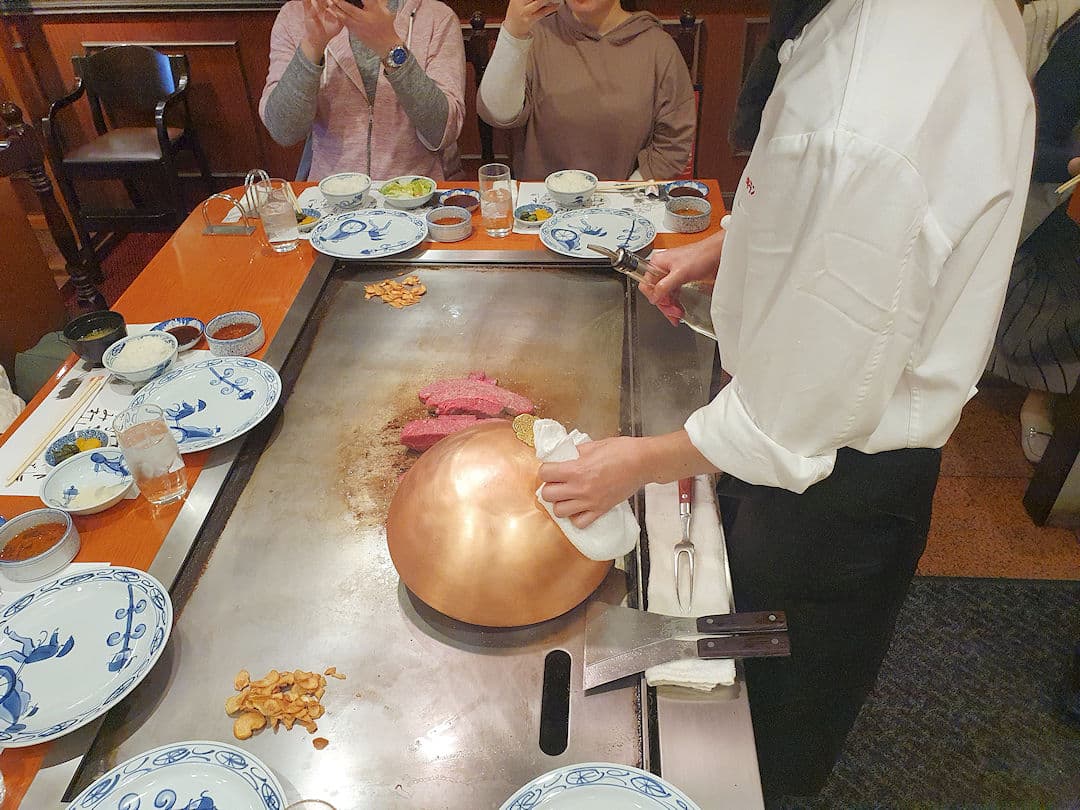
Our most expensive meal was at Steakland Kobe - but it was well worth it
Our daily groceries expenses in Japan averaged JPY1,043 (USD8) per person . We found Aeon supermarkets offered some of the best value for money, and between the major convenience store brands of 7-Eleven, Lawson and FamilyMart, we found Lawson offered the best range at the most affordable prices.
If you happen to visit Sapporo, make sure to pop into a Bostonbake branch [ Google Maps location ]. They have delicious pastries and buns daily (which are super affordable) – great to stock up on some items when you’re out and about during the Snow Festival . Sadly, Bostonbake only exists in Hokkaido.
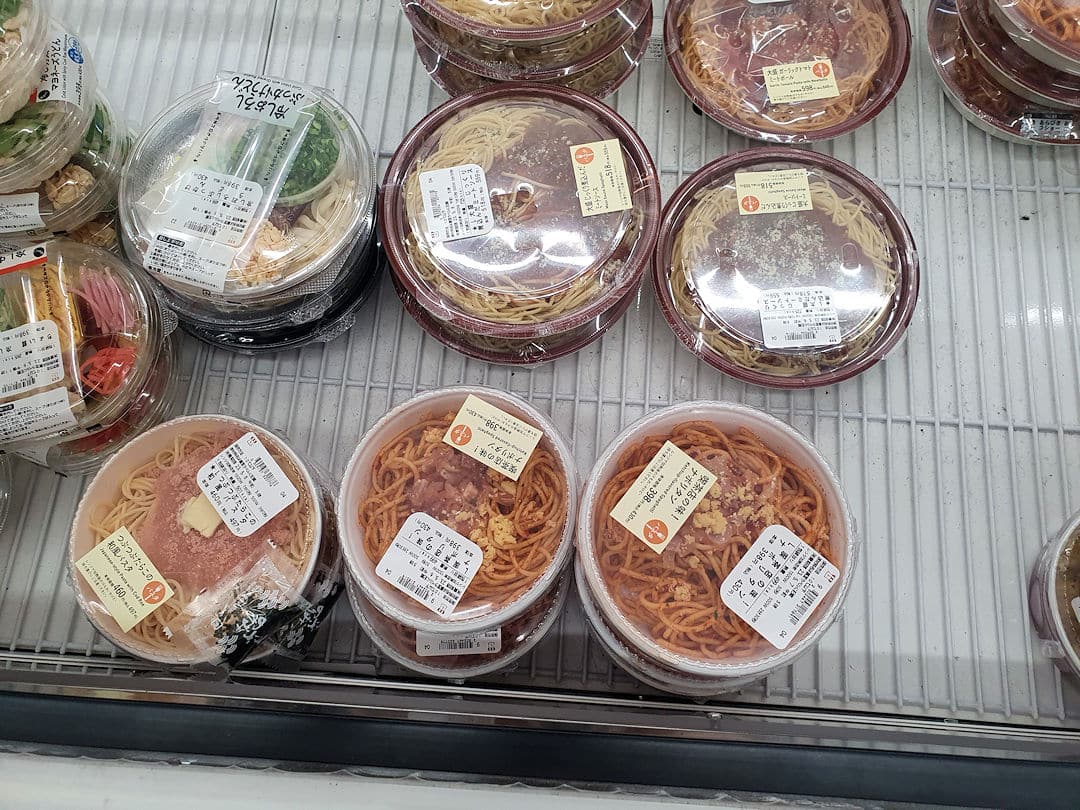
In Japan , ready-made meals are always available at supermarkets and convenience stores
Recommended Foodie Experiences
As Anthony Bourdain is famously quoted as saying: You learn a lot about someone when you share a meal together. And the best way to learn about a destination is by spending it with locals, in their homes and in local markets. If you're a foodie and would like to join some incredible cooking classes and food tours, here are our recommended EatWith offers in Japan :
- Food and Sake Pairings in a Traditional Kyoto House
- Home style Ramen and Gyoza cooking class in a Japanese home
- Tokyo West-Side Walking and Street Food Tour
- Izakaya Food Tour in Shinjuku
How to save money on dining and groceries?
Dining out all the time can quickly get expensive. We always try and book accommodation where we have access to a kitchen - either our own little kitchenette or the kitchen of our host. That way, we can store food in the fridge and make our own meals. We usually have breakfast and one other meal at our accommodation, and one meal when we're out and about.
Restaurants (even in tourist hotspots) often have special lunch offers (for example, a three-course meal for EUR10). Portion sizes in many parts of the world are usually quite substantial, so we often share a three-course meal. The same applies if you go out for dinner: Order a starter or salad and a main, and that's usually enough for two people. An added benefit: there is less food waste.
As for groceries: every country has more expensive and cheaper supermarkets. Ask your host what the cheaper options are (for example, Aldi or Lidl in many European countries) and avoid convenience stores as much as possible.
Experiencing the local cuisine is one of the reasons why WE travel… Paul and I tend to only eat out once a day (sometimes only once a week), usually at lunchtime. This allows us to try local dishes while taking advantage of awesome lunch deals. It also means we don’t have to roam around unknown parts of town every night in search of a restaurant.
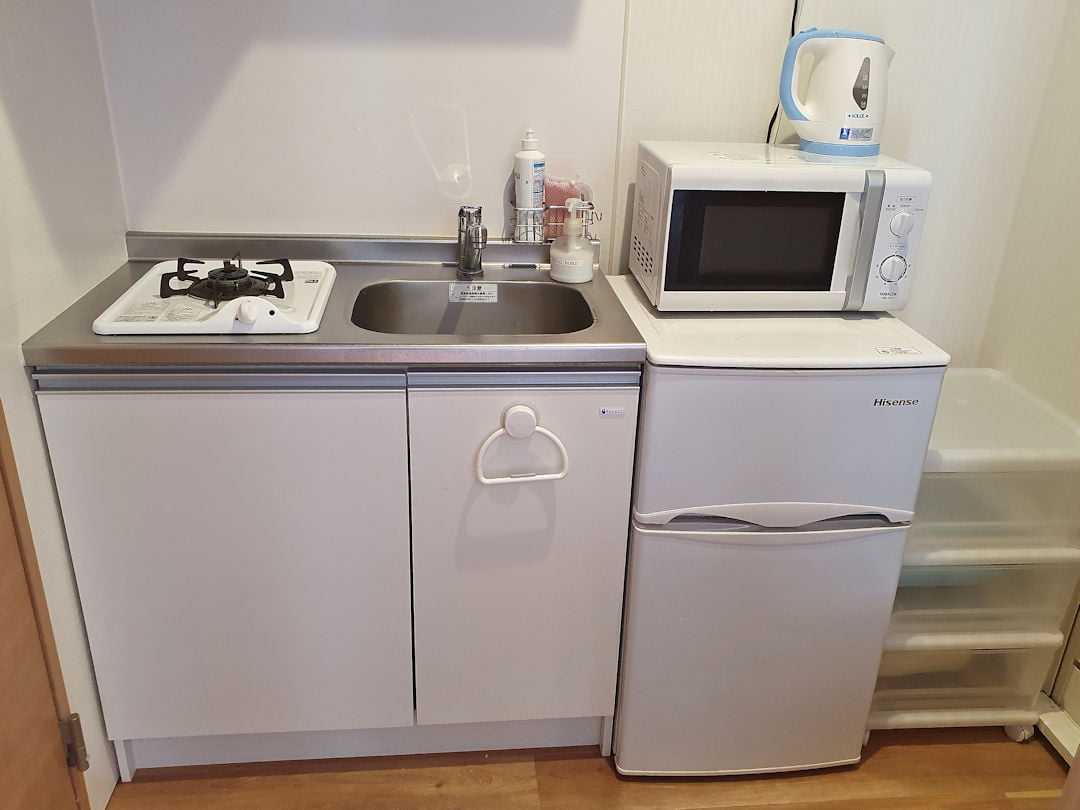
A Japanese apartment kitchen is not big but allows you to prepare your own meals (and save on dining out)
How much to budget for Transportation in Japan?
Our transport costs over the three months we explored Japan averaged at JPY1,569 (just under USD12) per person per day .
Given Japan is an island country, we ended up taking two internal flights: The flight from Sapporo, Hokkaido to Nara, Okinawa cost us JPY16,580 each (with Peach Aviation ); while the flight from Nara, Okinawa to Hiroshima on Honshu cost JPY14,460 per person (with ANA ). In both cases unfortunately, we had to check in our travel packs as the strict carry-on limit was seven kilograms.
Train Travel
As we were keen to see the country and had more time to explore Japan than most foreign tourists, we always considered taking slower (and thus cheaper) train options over the Shinkansen. That said, we did want to ride the Shinkansen (and in some cases, there was just no feasible alternative). In the end, we took the bullet train three times: Our Hiroshima to Himeji trip cost JPY8,040 per person ; the Kanazawa to Nagano journey JPY8,590 each and the train ride from Odawara to Tokyo JPY3,280 per person .
The Shinkansen was always markedly more expensive than slower train options. As an example, the distance from Hiroshima to Himeji was 239 kilometres, with a per kilometre cost of JPY33.64 on the Shinkansen, whereas the (slower) Rapid Express train from Himeji to Kyoto – a distance of 127 kilometres – cost JPY2,310 per person or JPY18.19 per kilometre. So if you have time, take the slow train and save money.
And speaking of travelling slowly: If you’re in the Hakone area, make sure to ride the Hakone Tozan Train [ Google Maps location ] between Gora and Odawara. The scenery is stunning, and the train does a number of switchbacks as it journeys down the mountain (or up if you do the trip in reverse) – a very unique experience.
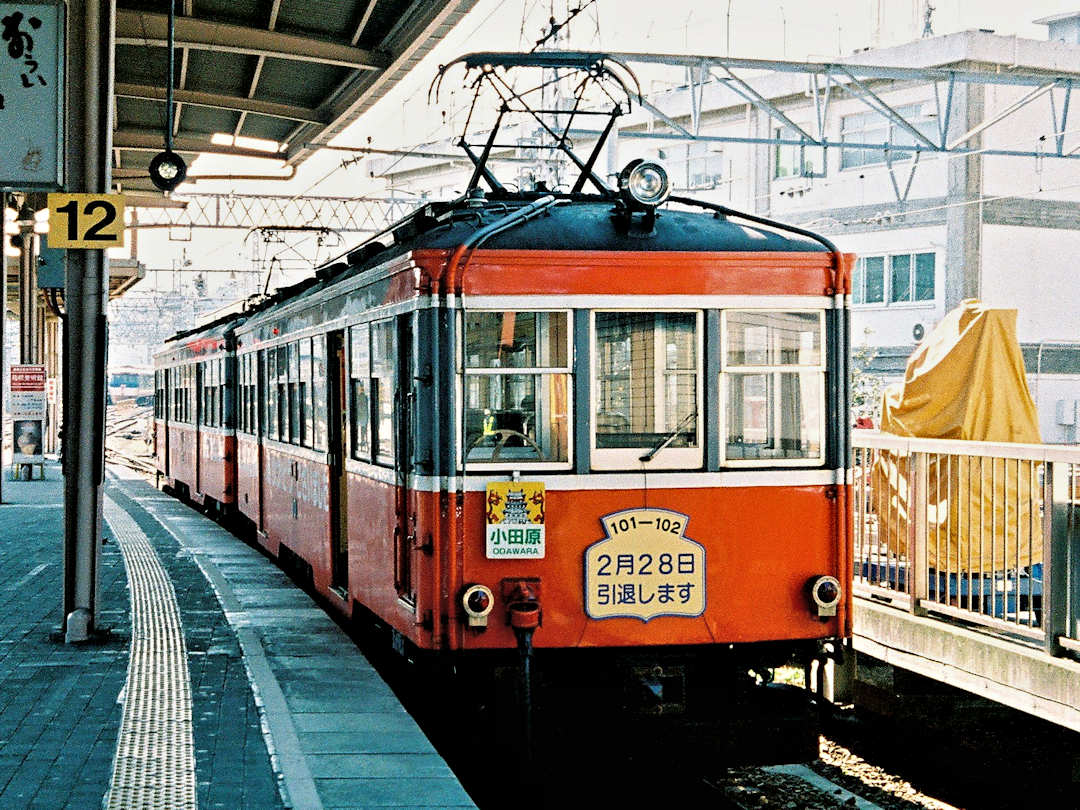
Take the Hakone Tozan Railway for its unique switchbacks down (and up) the mountains | Photo on Wikimedia Commons
How to save on transport costs in Japan?
Japan boasts an efficient transportation system. But, as we found out, transportation costs add up quickly, especially if you’re travelling a lot around the country.
Rail Transportation
Japan-wide rail pass.
The Japan-wide JR Rail Pass is a cost-effective option for visitors who plan to move around a lot during their stay. It’s available for 7, 14 and 21 day periods and valid on consecutive days within the chosen timeframe. The pass allows unlimited travel on JR-operated services, including JR trains – even the Shinkansen (just NOT the Nozomi and Mizuho) – and JR-operated city buses. Seat reservations are included with the JR Rail Pass but need to be obtained (free of charge) prior to travel.
The Japan-wide JR Rail Pass can only be purchased by foreigners outside of Japan and must be exchanged for the actual pass upon arrival.
Although the JR ( Japan Rail) Pass is a popular option for foreign tourists visiting Japan , it’s not the only way to save, and it may not even be worthwhile pending your itinerary. To determine if the Rail Pass is worthwhile, use an online route calculator to compare the costs of individual ticket purchases against the price of the pass.
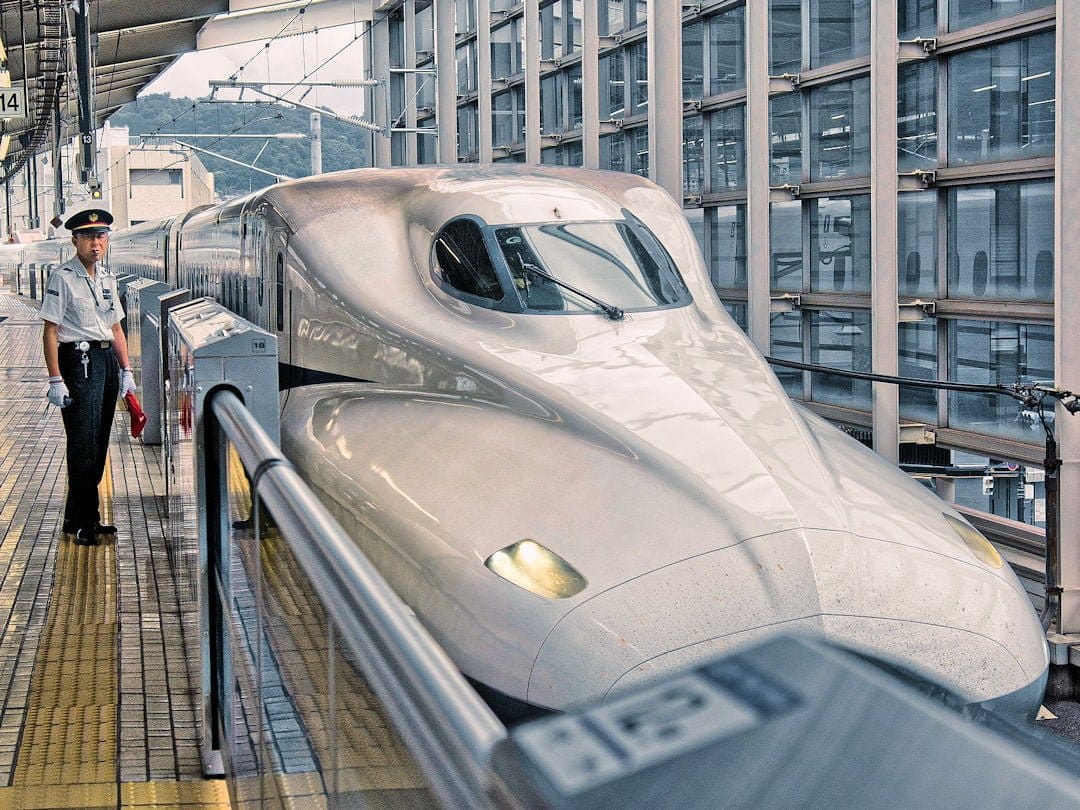
Trains in Japan are (almost) always on time, making train travel easy and convenient | Photo by Armin Forster on Pixabay
Regional Rail Passes
If the Japan-wide JR Rail Pass is of no use to you, one (or several) of the many Regional Rail Passes might be worthwhile. A big difference to the Japan -wide Rail Pass: you can buy these passes while already in Japan (though they are slightly more expensive than if you bought them from overseas). Worthwhile options to check out include:
- JR East: the JR Tokyo Wide Pass
- JR West: the Kintetsu Rail Pass, JR West Kansai Area Pass, JR West Kansai Wide Area Pass or the JR Kansai-Hiroshima Area Pass
- JR Central: the JR Takayama-Hokuriku Area Tourist Pass or JR Alpine-Takayama-Matsumoto Area Pass.
Without Rail Passes
Even without any of the rail passes, there are still ways to save on train travel in Japan :
- Shinkansen – Buy a non-reserved seat ticket (where available): This also offers greater flexibility as you’re not bound to a specific train. Which carriages are non-reserved varies from train to train (most often it’s carriages 1-3 or 1-5). Arrive at the platform early to check out where the non-reserved carriages are located and position yourself/queue at the door marker of one of those carriages to increase your chances of getting a seat as you board.
- Alternatives – Opt for Limited Express trains: You may need to change trains along the way, but the trains in Japan are usually on time, and changing trains in Japan is not really stressful, especially if you travel light. Unless you’re travelling during rush hour, Limited Express trains are often less crowded than the Shinkansen, which also means you can save the seat reservation cost (where possible).
Extra tip: In many areas in Japan , you can use an IC card to tap on/off rather than having to purchase individual paper tickets for each journey. This saves time and makes train travel more convenient.
What are IC cards?
In Japan , you will come across the term IC card a lot (IC stands for Integrated Circuit ). IC cards are essentially plastic cards that can be topped up and the amount stored on the card is used for transportation - simply by tapping on/off at the card reader - and more and more at convenience stores and other places.
Each region issues their own version of the IC card, for example
- If you enter via Tokyo Narita or Haneda Airports, you would buy the Suica Card or PASMO card.
- If you enter via Osaka Kansai Airport, you will find the ICOCA card for sale.
Fortunately, 10 of the most common IC cards (including the two above) can be used across regions (and likely more will be added over time). Some regions (including Nagano and Okinawa prefectures) only allow their own IC card (at this stage) or cash.
Also, note:
- Cards (including any stored funds) will expire after 10 years of non-use, which means you can reuse the card if you return to Japan within that timeframe.
- You can return it (and get a refund of the money on the card plus the deposit you paid for the card itself) - as long as it's in the region you bought it.
- You can load the IC card onto your smartphone - via Apple Pay or Google Pay - but you won't be able to get a refund of your deposit or any funds stored when you leave the country.
Bus Transportation
Buses can be a good alternative to trains (especially for medium to long-distance travel and on competitive routes). Do note though that while train timetables are (mostly) reliable, buses can be stuck in traffic just like any other road transport (and delays of 30 minutes and more are not unusual).
One way to save on transport costs in Japan is by purchasing a Willer Express Bus Pass . This pass allows you to travel for 3, 5 or 7 days within a period specified by you.
- Advantages: The days of travel do not need to be consecutive, giving you flexibility in your itinerary. Willer Express has a number of night buses which can save on accommodation costs. Additionally, you can easily book your seats in advance online through the user-friendly Willer Express website.
- Disadvantages: The pass can only be used on Willer Express buses and only on the least comfortable 4 seats per row bus types.
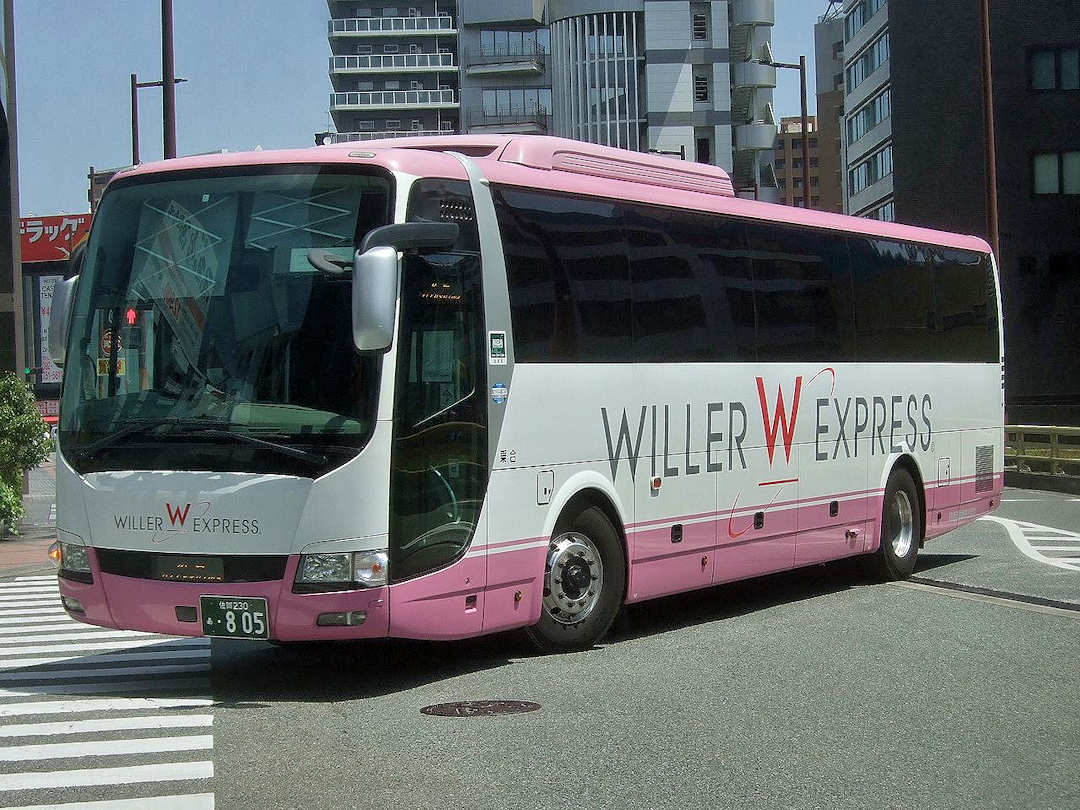
Travellers to Japan may also be able to save on transport costs by using intercity bus services like those provided by Willer Express | Photo on Wikimedia Commons
Even without a bus pass, you can save money when travelling by bus in Japan :
- Avoid backtracking and travel point to point instead – For example, stop in Shirakawa-go on the way from Takayama to Kanazawa (or vice versa) rather than visiting the UNESCO World Heritage site on a day trip – this also reduces carbon emissions.
- Make use of specials – Just ask at the local tourist office at your destination or check the websites of the bus companies operating at your destination, for example Alpico and Nohi Bus in the Japanese Alps. Do make sure though they are worthwhile by comparing individual fares (via Google Maps ) against the special fare.
Other Expenses you may incur when travelling to Japan
Travel insurance.
We always buy travel insurance – because medical expenses overseas can add up quickly and because our carry-on backpacks are pretty much everything we own.
Whenever we buy travel insurance , we make sure we thoroughly read the fine print. It’s tedious, we know. But if you’re planning certain activities (for example, hiring a motorbike or hiking above 3000 metres), it’s crucial to know whether your insurance pays if the worst happens. Otherwise, you may have paid all that insurance premium and are still left to foot a (potentially) massive bill.
For this trip, we used Cover-More. For our three months in Japan , our joint Cover-More Travel Insurance Single Trip International Comprehensive+ Policy cost us AUD1,519/USD1,022 (or just under AUD9/USD6 per person per day) . Although we didn’t need to submit a claim and therefore don’t have first-hand experience of their claims process,we won’t be buying another policy from Cover-More again,

Finance and Bank Fees
To our surprise, cash is still King in Japan , thus ATM withdrawals are a regular occurence. To avoid unnecessary ATM withdrawal fees we always research before our trips to figure out which overseas bank/s offer/s the best exchange rate and charge/s the lowest fees for ATM withdrawals.
In the case of Japan , we had done all our research. We knew our Bankwest Debit Card charged no foreign transaction fees, and that 7Bank ATMs charged no ATM withdrawal fees. What we didn’t know was that you had to press “Credit” when trying to withdraw with the debit card overseas (Bankwest only told us about that small fact when queried afterwards). After our debit card was declined multiple times, we ran out of time and had to use our credit card. While we had topped up the card with some money beforehand (to avoid nasty cash advance fees), the credit card provider still charged us AUD4 (or JPY382) for the ATM withdrawal. You live and learn.
Luggage Transfer and Storage Services
Unless you’re planning to hike the Kumano Kodo or Nakasendo , you are likely not going to need luggage transfer service. We ended up using luggage transfer twice (both times with Yamato Transport):
- on our final day on the Kumano Kodo , paying JPY2,500 for the same-day transfer of one travel pack from Koguchi to Nachikatsuura; and
- during our Nakasendo hike , paying JPY1,620 for the standard transfer of one travel pack from Osaka to Matsumoto.
We also used luggage storage facilities on occasion to store our travel packs for a few hours or excess luggage during our Kumano Kodo hike for a whole week. Those storage costs added up to JPY3,640 in total ( an average of JPY607 per storage use ).
If you need to store excess baggage in Osaka, we recommend Daikoku Locker . Alternatively, you can try Radical Storage who have agencies all over Japan .
Haircuts and Massages
When you explore a country for three months, you will likely need a hair cut (in that country). I had mine at a barber in Osaka about half-way through our trip for JPY2,200 (a bit over USD16) .
We both also took the opportunity to get a 90 and 60 minute massage, respectively, just before the Nagano Marathon at Relaxation Salon Lovina [ Official website , Google Maps location ] for a total cost of JPY13,200 (or JPY6,600/around USD49 per massage ). It was well worth it, and we both would recommend it to anyone visiting Nagano.
Withdrawing cash overseas can be expensive but it doesn’t have to be. We can show you how to avoid unnecessary fees and make your travel budget stretch further.
How do you determine which card is best for your overseas trip? Using the right one can save bank fees and make your travel budget stretch further.
Ever been caught out by the bad FX rates and exorbitant commissions charged by FX bureaus? These tips allow you to minimise these charges in future . We also recommend XE Money Transfer to keep more of your money when you complete a transfer.
Donations and Gifts
When visiting a Shinto shrine, it is traditional and appropriate to make a donation. It doesn’t have to be a lot, especially when you are throwing loose change into the large container before you bow your head and clap your hands. All our donations added up to JPY1,511 .
How much did it cost you to explore Japan?
I wrote this Japan Travel Costs article based on our own unique experience. If you have been to Japan recently as well and you have something to add to the costs for exploring Japan , please feel free to contact us. If you liked my Japan Travel cost tips and found them helpful, I would appreciate it if you could share them with your friends and family via the Share buttons below. Even better, link to the page from your personal blog or social media platforms.
Author: Paul Ryken
- Work With Us
- Blogging Bootcamp

- Van Conversion Academy
- Campervan Shop
- Campervan Rentals
- Plan a Trip
- Itineraries
- Destinations
- Responsible Travel
- Family Travel
- Budget Travel
- Scuba Diving
- Travel Credit Cards
- Digital Nomad
- Teach English Abroad
- Blogging Resources
- Income Reports
- Travel Shop
- Meet Katie & Ben
- About Two Wandering Soles
- Personal Stuff
- Portfolio & Press
Japan on a Budget: 26 Money-Saving Tips + Free Things to Do!
Home » Blog » Japan » Japan on a Budget: 26 Money-Saving Tips + Free Things to Do!
If you’re planning a trip to Japan on a budget, we’ve got you covered with tons of money-saving tips that’ll cut costs on everything from accommodation to entertainment. Plus we’ve included a list of free things to do in Japan that won’t cost a thing!
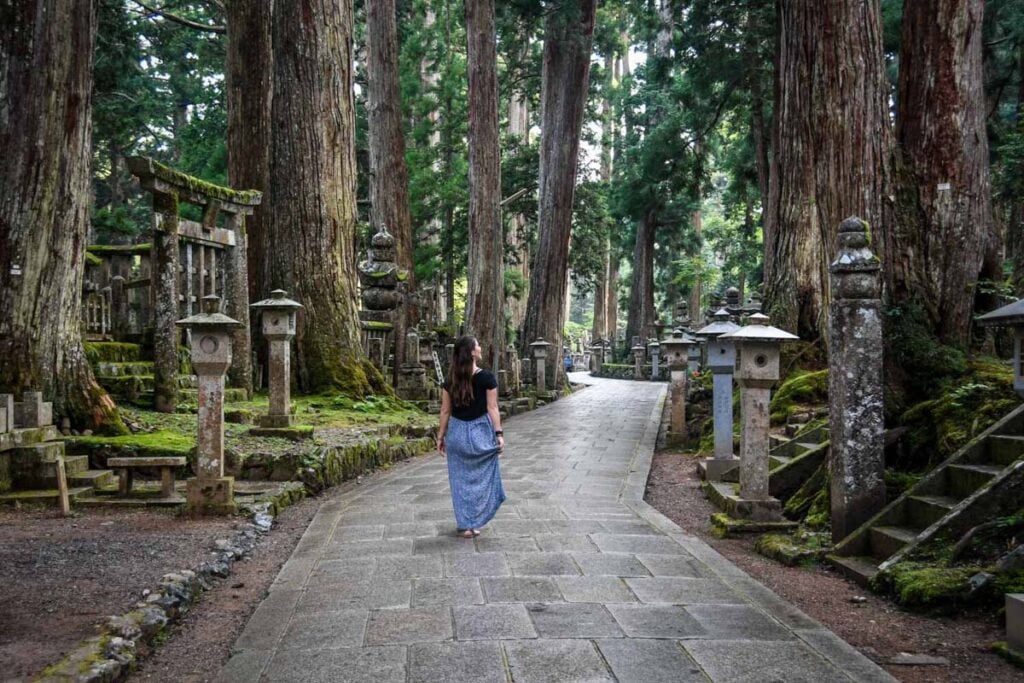
Japan is a notoriously pricey destination.
When you break down the cost of a trip to Japan , there’s no getting around it: Japan is expensive. However, there are ways to travel to Japan on a budget if you know what you’re doing.
We’ve personally traveled to Japan several times, and have rounded up our best money-saving tips so you can travel to Japan without breaking the bank!
Japan on a Budget Guide
- Top money-saving tips
- Tips for saving money on transportation
- Tips for saving money on food
- Tips for saving money on accommodation
- Tips for saving money on entertainment
- Free (& cheap) things to do in Japan

If you’re planning a trip to Japan, we have the ultimate resource for you!
This FREE PDF download includes everything you’re going to want to pack for your Japan trip, including what NOT to bring, plus tons of insider tips!
Sign up for our ultimate Japan packing list now and get a copy sent straight to your inbox.
Japan on a budget: Top money-saving tips
If you’re looking for our top money-saving tips for traveling Japan on a budget, here they are!
- Travel during low season to get the best rates on accommodation.
- This article breaks down how much the Japan Rail Pass costs and how to purchase it .
- Get your breakfasts and snacks at 7-Eleven or Family Mart (they are everywhere around the country!). While you might never consider eating at a convenience store in your home country, the fresh food options are surprisingly good at these stores in Japan. I’m not joking. You’ll see many locals doing the same.
- Have your biggest meal midday and take advantage of “lunch sets” which often consist of a large meal (sometimes with a dessert) and are typically very affordable.
- Conveyor belt sushi is a good way to try all the types of sushi your little heart (and stomach!) desire without a huge price tag. Plus, it’s a fun experience in itself!
- Use an app to record your spending and see how well you’re staying on top of your budget! We find it’s much easier to overspend when you don’t know how much it’s all adding up to.
- Download a converter app on your phone like this one to see the exact exchange rate for your selected currency at the time of your trip, so you always know exactly what you are spending.
- Withdraw yen from the ATM using a card that reimburses all ATM fees (like the Charles Schwab debit card).
Keep reading for more tips on how to save money on different aspects of traveling in Japan…
General tips for saving money in Japan
Let’s start with some of the general money-saving tips that will help you keep your budget under control.
1. Travel during low season
Hotel rates vary a lot with demand, so traveling during peak tourist season (especially “Golden Week”) means you’ll pay a heck of a lot more than during less busy times of the year.
To save a lot of money overall, plan your trip for shoulder or off-peak season (ex. we loved visiting Japan in the winter because it was far less expensive and busy). During low seasons, you may be able to score a deal on accommodation.
- High season: mid-March – May (cherry blossom season), summer months
- Low season: late November – March (except around New Years holiday)
Related: Read more about Japan’s seasons and the best time of year to go !
2. Withdraw yen from the ATM
Instead of getting a bunch of yen at your home bank or using currency exchange counters, head straight to the ATM when you land in Japan.
ATMs give you the best exchange rate. Plus, if you use a card that reimburses all ATM fees (like the Charles Schwab debit card), you won’t pay anything for this exchange.
This is how we always get local currency. We haven’t done it any other way in 10+ years of travel.
3. Understand the conversion rate
Download a converter app on your phone like this one to see the exact exchange rate for Japanese yen at the time of your trip, so you always know exactly what you are spending.
It can be easy to spend more than you’d like if you don’t know the exchange rate for yen.
4. Keep your spending in check
We recommend coming up with a budget before your trip so you don’t accidentally overspend.
Psst! We recorded all sorts of average costs in Japan so you can get a really great idea of how much to budget.
While on your trip, use an app to record your spending and see how well you’re staying on top of your budget! We find it’s much easier to overspend when you don’t know how much it’s all adding up to.
5. Score a cheap flight
Sign up for a mistake fare newsletter , like Thrifty Traveler , so you can get alerted when there are really good deals on flights from your home airport to Japan.
Keeping an eye on the flight prices will help you understand what’s an average flight and what’s a good deal.
Flying to Japan is a long haul for many travelers coming from Europe or North America. This makes it a good opportunity to use airline points to pay for some or all of your tickets.
6. Book early
Japan is a destination that we’d recommend booking earlier than you typically would for other trips.
When you book earlier, you’ll have a better selection of accommodations to choose from, making it easier to get a good deal.
There are also certain activities that must be booked in advance and you won’t want to miss out.
We created a Japan booking timeline that should help!
7. Pack right
Put some extra thought into what you pack. While there are many things you can easily get once you get to Japan if you forget them, there are certain items that are very hard to come by . And if you do find them, they can be quite expensive.
Some examples of items that are hard to find or expensive in Japan:
- Menstrual products
- Shoes or clothes in larger sizes
Save yourself the time, hassle, and money by checking out our Japan packing list so you don’t forget any essentials and make a costly mistake!
Tips for saving money on transportation in Japan
There are some really great money-saving options for transportation in Japan if you know what you’re looking for. We’re going over a handful of different options that will save you money on transportation in Japan:
8. Get the Japan Rail Pass (maybe…)
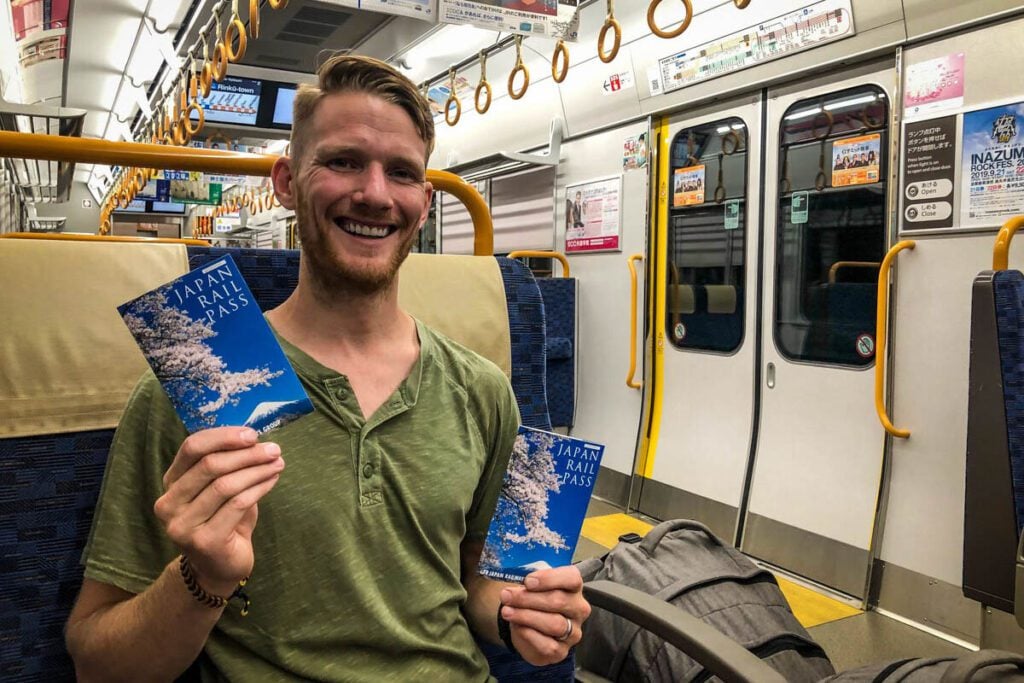
It is a train pass only available to foreign tourists in Japan.
It allows you to ride specific trains for one bundled price instead of paying for each ticket.
Is the JR Pass worth the money?
This is a tricky question to answer… In the past, I would have said 100% YES. It was a huge cost savings.
However, there was a pretty major price increase to this super discounted pass in late 2023. This means that it won’t be as big of a cost savings as it used to be.
Depending on your itinerary, it may not even make sense to purchase the JRail Pass… Alternatively, it could still save you a bunch of money. You’ll need to do some calculations to figure out if it makes sense.
Don’t worry – we’ve gotchu!
We put together a guide that walks you through how to decide if this pass is a good purchase for your trip or not.
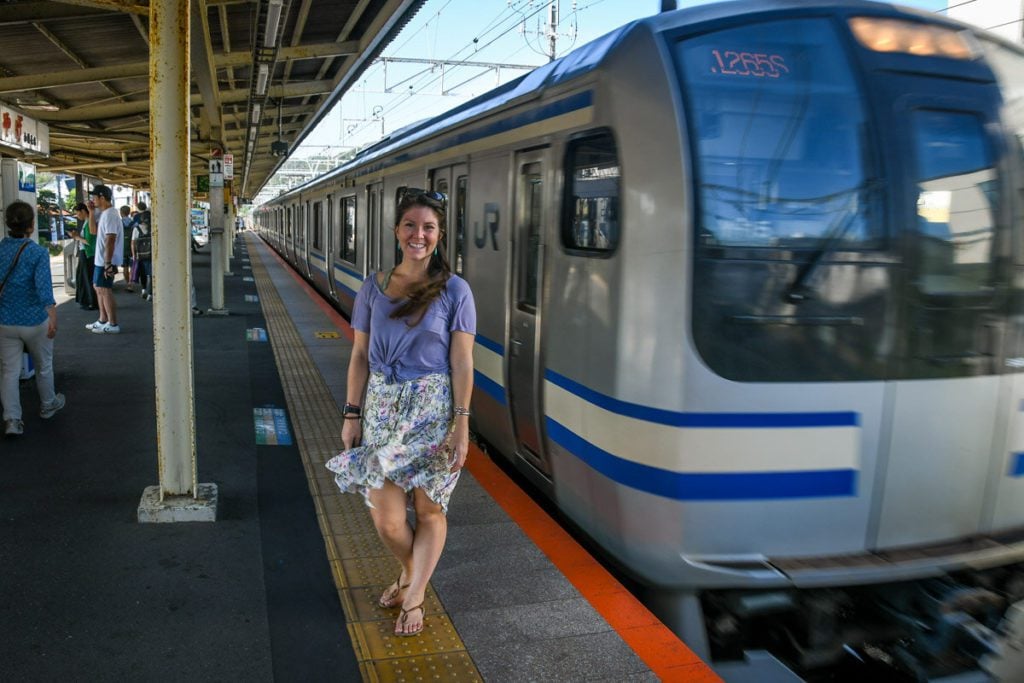
Japan Rail Pass: Where to Buy a JR Pass & Is it Worthwhile?
If you’re traveling to Japan, the Japan Rail Pass can be a huge money saver. We’ll explain exactly when you should purchase the JR Pass and if it is worthwhile for your route. This is everything you need to know including where to buy the rail pass.
We don’t want you to spend unnecessary money, so be sure you read this thoroughly in order to make the best decision for you.

9. Compare trains with other modes of transportation

Depending on your itinerary, it might actually make more financial sense to rent a car or to take a domestic flight.
Due to the price increase on train tickets, these other modes of transportation can actually be cheaper, depending on where you’re going.
Psst! We’ve got an entire guide to renting a car in Japan (we did a 15-day car rental and absolutely loved it!). Our guide breaks down all the costs involved with renting a car and goes over some essential driving tips.
10. Look into tourist transportation passes
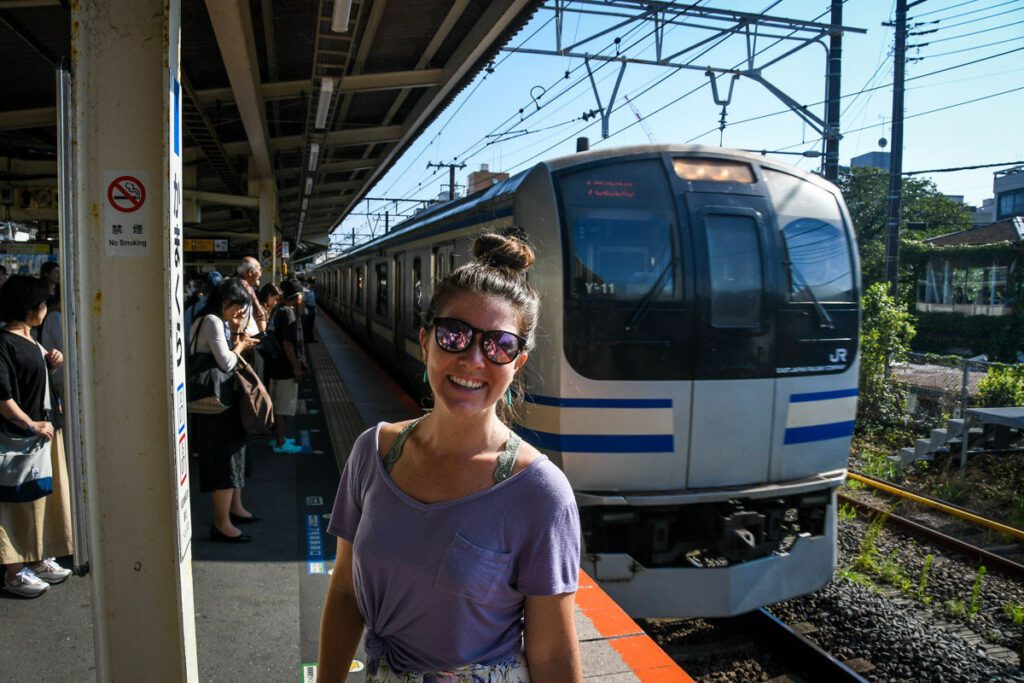
Many places in Japan are not connected with JR lines or metro systems. Instead, there are sometimes regional tourist passes available .
This will be a “bundle” pass which generally includes different modes of transportation, like rides on regional buses, cable cars or a funicular.
If you’re traveling outside of major cities in Japan (and you should!) check to see if that region has a tourist pass.
Here two examples of bundles that can potentially save you money:
- Hakone: This small mountain town known for onsen and views of Mount Fuji can be reached by JR trains, but once you’re there, getting around the area is not covered. Instead, most tourists buy the Hakone FreePass , which includes all bus, boat, and cable car transportation in the area.
- Koyasan: This area known for Buddhist temple stays and stunning Okunoin Cemetery cannot be accessed with JR trains. The Koyasan World Heritage Ticket is what most visitors use for this area.
Tips for saving money on food in Japan
This is one of the areas you can really save on if you are traveling Japan on a budget. We’re going over a handful of different options that will save you money on food in Japan:
11. Order “breakfast sets” from coffee shops
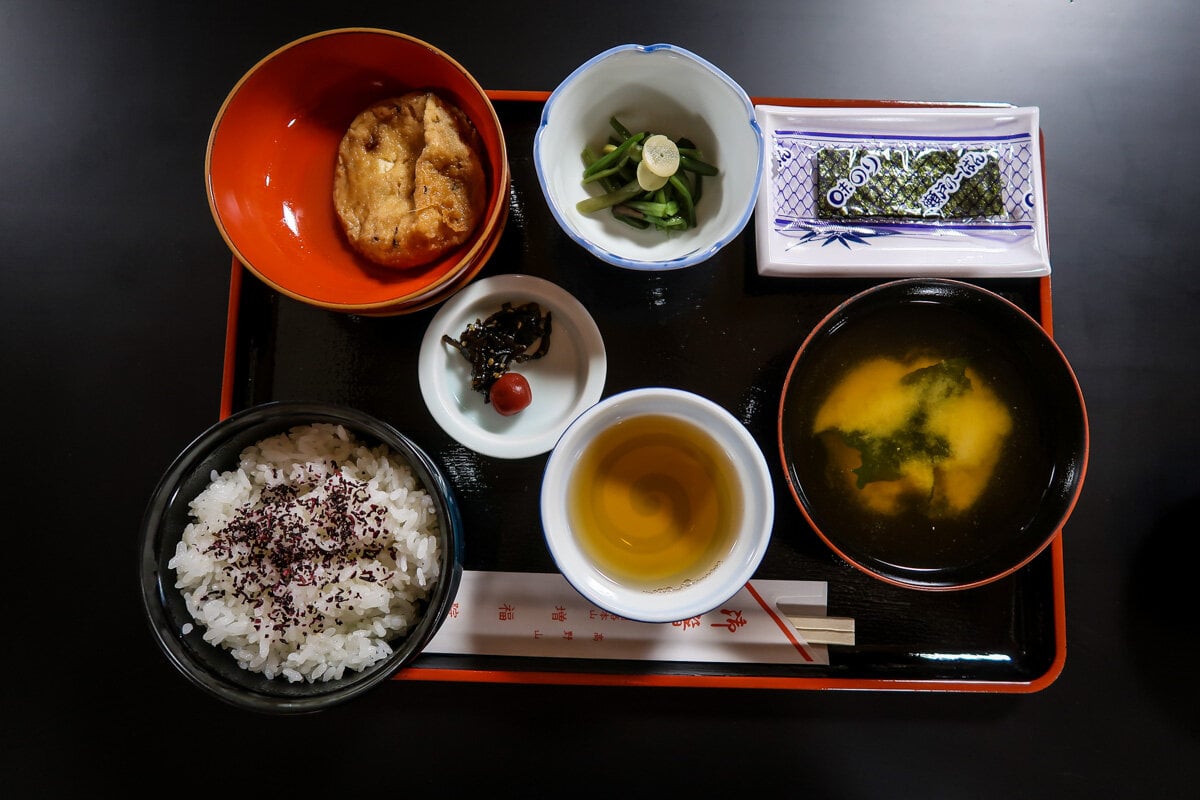
I love breakfast. Give me a smoothie or scrambled eggs and I’m one happy lady. But in Asia, breakfast is just different.
Rice and soup are common breakfast items, and there just really aren’t many breakfast restaurants. For that reason, many hotels catering ot Western tourists will have an option to add on breakfast, typically for $10 – 15 USD.
If budget is a constraint, skip this and instead, head to a nearby chain coffee shop where “breakfast sets” can be a pretty good deal .
You’ll select a breakfast option, like an egg sandwich, croque monsieur, or a pastry, as well as coffee or tea. Together, the meal and the drink will come to around 400 – 600 yen .
Common coffee shop chains in Japan that offer “morning sets” are Doutor, Caffe Veloce, St. Marc, and Pronto. Alternative: Another option is to grab something at a convenience store, like a pastry item and iced coffee.
12. Have your biggest meal at lunch
Restaurants in Japan often have “ lunch specials ” where they serve a similar meal to what you’d get at dinner, but for a cheaper price.
13. Eat meals at convenience stores
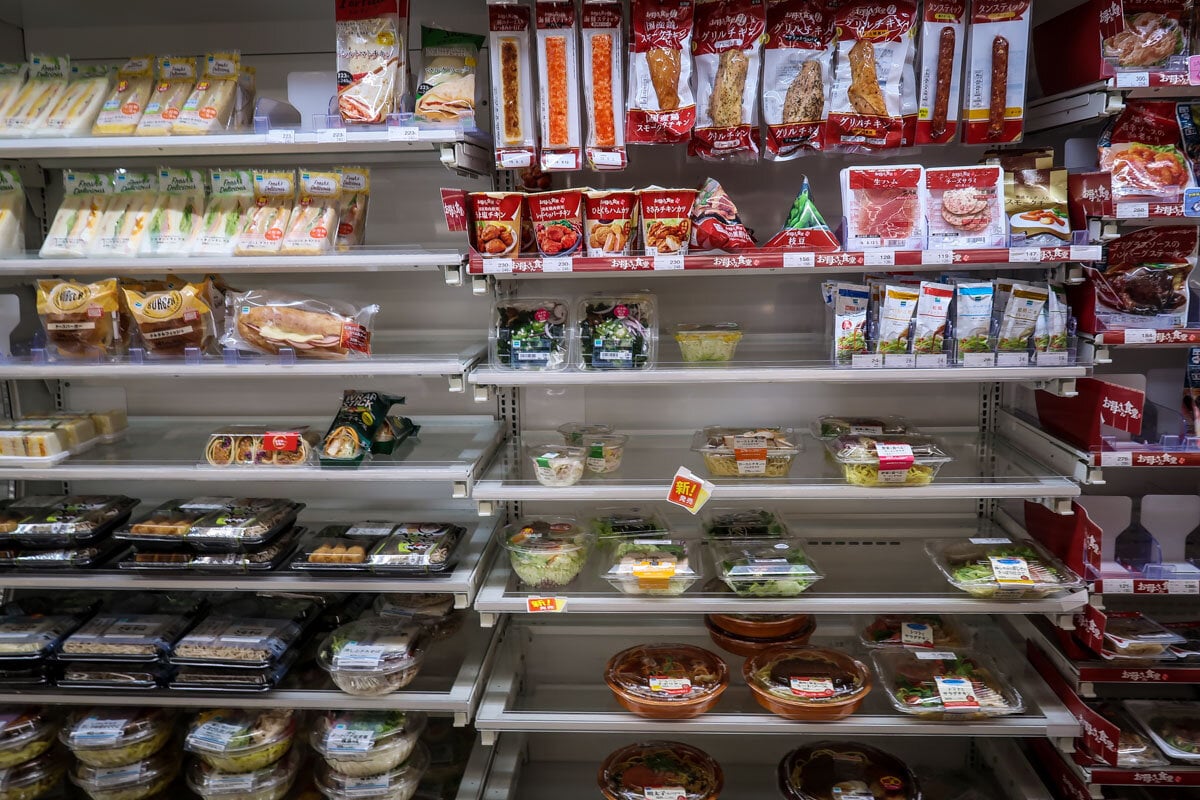
If you’ve been researching Japan, you’ve probably heard a bit about the convenience store culture . You’ll be able to find marts ( konbini) on just about every block (sometimes multiple on a block), and entire meal options inside .
Many Japanese businessmen and businesswomen rely on these meals for quick lunches and dinners, and you’ll find options like fresh noodle dishes, dumplings, sushi, rice bowls, meat cutlets, and pasta that can all be heated up by the cashier if needed.
Additionally, you’ll find desserts, pastries, chips, and other snacks, just like any convenience store.
Sometimes I hear travelers talk about how they are only going to eat at 7-Eleven during their trip to Japan to keep costs down; but I think this is a mistake for two reasons:
- Trust me when I say you’ll want something other than super processed foods for every meal. Yes, there are many options at the convenience stores, but finding actually healthy options is challenging , to say the least.
- You’ll want to have some splurge-worthy meals! Unless you’re really not into food, you’ll definitely want to explore Japanese cuisine outside of 7-Eleven. There are so many incredible places to eat in Japan, and it would be a shame to not try any of the cuisine outside of convenience stores.
Moral of the story: Plan to balance your cheap meals with some splurge-worthy ones to have a balanced food budget.
14. Book accommodation with a kitchen
We booked a handful of accommodation options with kitchens, which really helped us keep our food costs down.
Many hostels have kitchens, as do some of the budget-minded guesthouses . Sometimes hostel kitchens are gross and have minimal equipment, but in Japan we found all the kitchens to be really well-stocked and clean!
Tip: Convenience stores usually have a section with frozen vegetables and other meals, which is a good place to look if you want a cheap and easy dinner.
15. Get cheap sushi
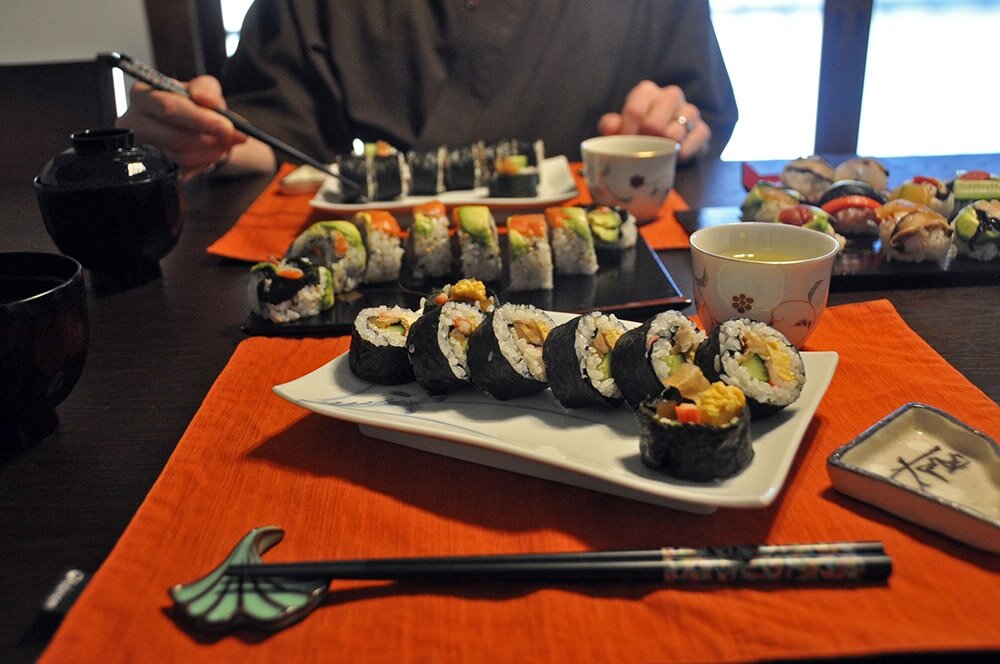
If you’re a sushi-lover, you’re definitely going to want to go to the famous fish markets and order a set at least once. This will set you back a cool $40 USD (if not more!), but it’ll be worth it for some of the freshest fish in the world.
That said, it’s not possible for most of us budget travelers to do this more than a couple of times. So if the sushi craving strikes again during your trip, consider some cheaper alternatives.
Conveyor belt sushi is popular with locals and it allows you to try many different types while keeping the cost down.
Another surprising option is getting sushi at convenience stores . I would never recommend doing this in say, the United States, but in Japan, it’s far less sketchy than it sounds. Japanese people do this all the time, and the quality is actually very good for the price you pay.
16. Eat less fruit
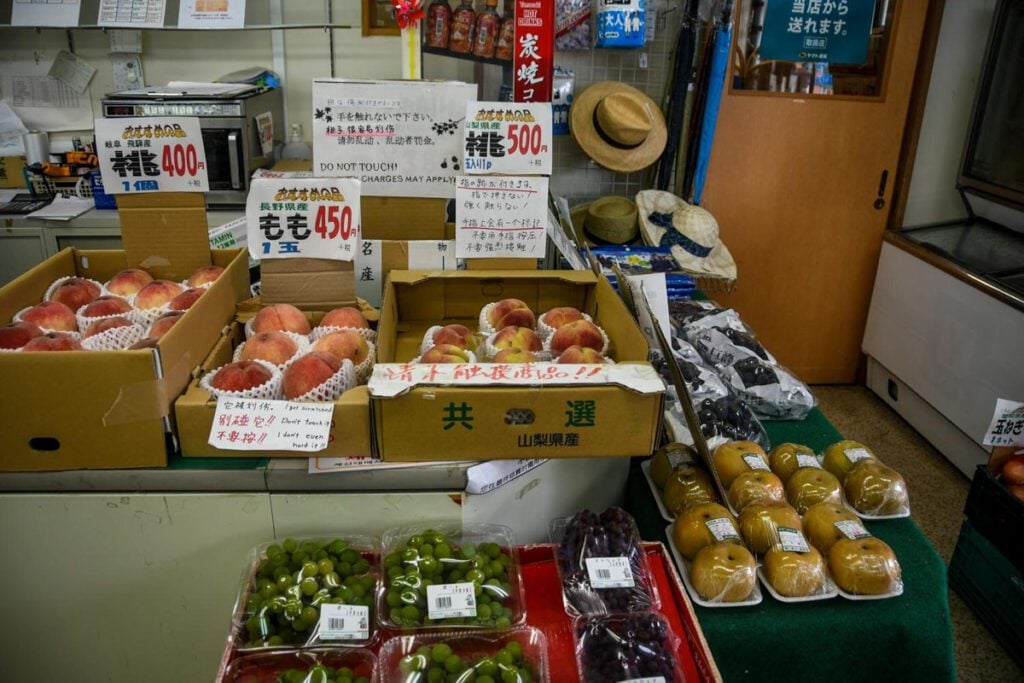
I’m about to drop a bad news bomb: Fruit is generally pretty expensive in Japan.
Think $3 – $4 for a single peach and $1 for a single (plastic-wrapped) banana…
It’s fine every once in a while when the craving strikes, but if fresh fruit is a daily habit, it’s gonna add up.
Interesting Tip: We found that some local fish markets had fruit stands, and the prices were the cheapest we found anywhere. Also, keep your eyes peeled for small roadside stands next to farms. We found a few of these selling fruits and veggies for reasonable rates.
17. Pack your own snacks from home
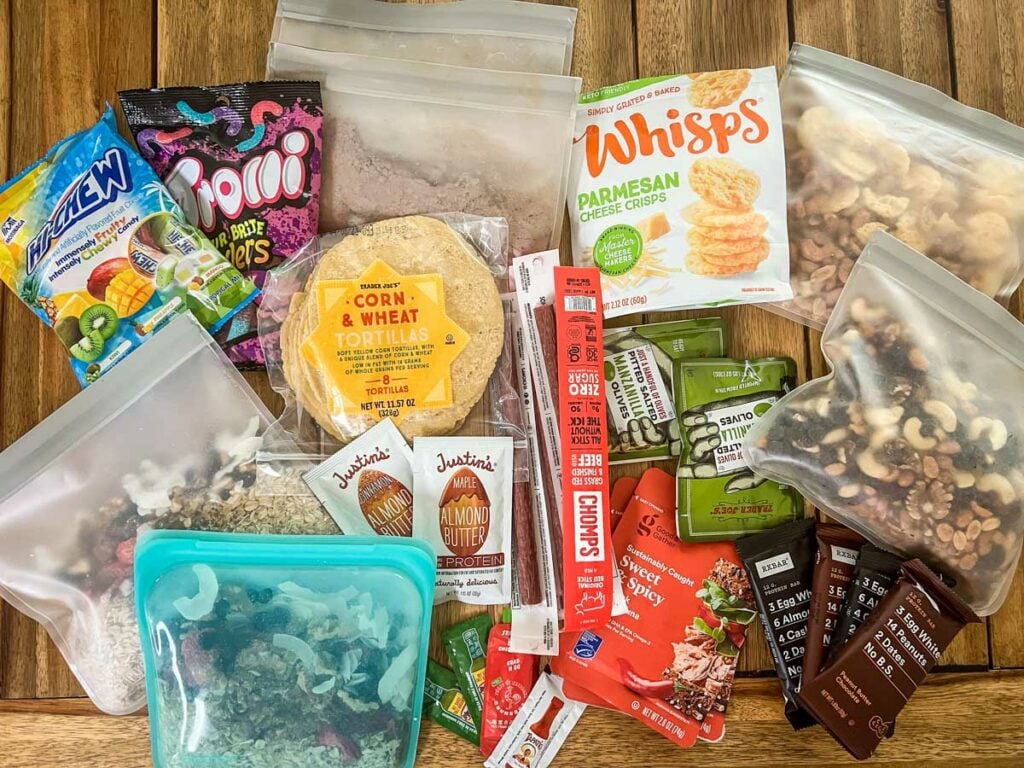
If you’re flying to Japan from your home country, consider packing some snacks like protein or granola bars, trail mix, and dried fruits .
You can find some of these things in Japan (with a lot of searching), but they tend to be quite expensive or come with added sugar, which we’re not huge fans of.
Having these handy will help keep your snacking costs down, and will help you avoid the “but I’m so hungry I just need something” splurges (we’ve all been there). And most importantly (in my opinion), it’ll keep you feeling healthy during your trip.
18. BYO Coffee
If you love to start your morning with coffee, you may want to consider bringing your own. Most hotels in Japan do not have coffee makers , like you might be used to in other parts of the world.
We packed our travel Aeropress and were so happy we did. We could enjoy our morning coffee without having to seek out a coffee shop (many of which actually open quite late!) and we saved a lot of money by not buying daily Americanos!
19. Don’t tip
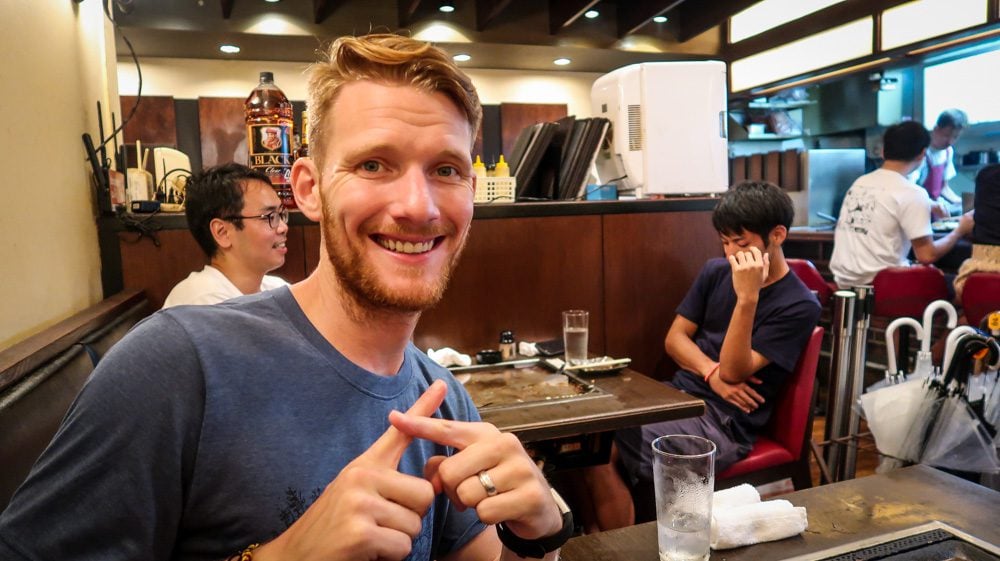
You won’t have to account for tipping in your budgeting because it is not customary in Japanese culture , and in some cases it can even be seen as slightly offensive.
20. Fill up with tap water
The tap water in Japan is safe to drink , so fill up instead of buying bottled water.
Not only will this help lessen plastic waste, but you’ll also save money.
Tips for saving money on accommodation in Japan
Accommodation is arguably going to be one of your biggest expenses when traveling in Japan. Below are some tips that will save you money on accommodation in Japan.
21. Know where to look for budget accommodations
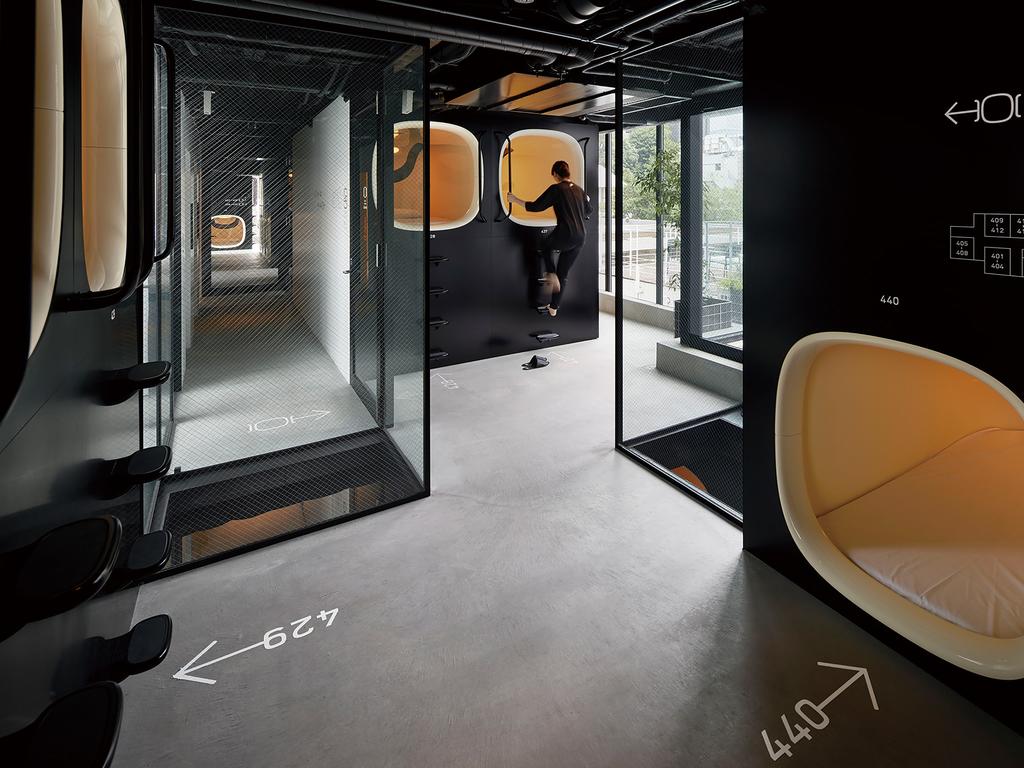
The following types of accommodation are good options for those on a tight budget:
- That said, they had a pretty high standard of cleanliness and each dorm bed had privacy curtains. One thing to note is that we found hostels in Japan to be less friendly/communal than most other places in the world. That could have just been our personal experience though.
- Staying in a capsule hotel is just one of those “Japanese experiences” you should have at least once on your trip!
- Bonus: Check out our genius tips for booking the best Airbnb !
22. Book your hotel like a pro
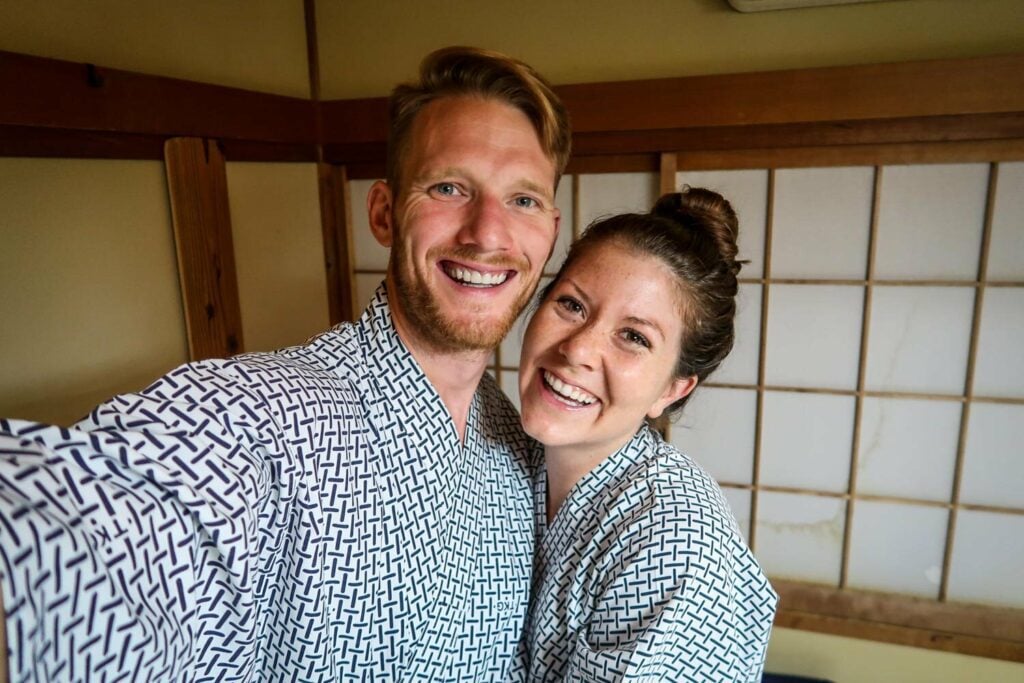
Here are a couple of tips that will help you when booking hotels in Japan:
- We like looking at Booking.com and Agoda in order to compare prices . Typically, they’re similar, but there have been times where one booking platform has a significantly cheaper price.
- You may also want to compare these platforms with booking directly through the hotel , as this is more common in Japan than in many other countries. Sometimes the hotel’s rate is cheaper. Other times it is the same and booking through them is cumbersome to navigate.
- When booking, we like to use all the filters to our advantage . With Booking.com for example, there are tons of different options to click on the left side of the page. That way in a city with tons of options, like Tokyo or Osaka , you can narrow it down to a hotel that is perfectly suited to you. Select your budget, preferred neighborhood, guest rating, type of room, breakfast preference, etc.
- When possible choose hotels with free cancellation . Booking.com often offers this up until a few days before your arrival. This can make it easier to secure a great price when you see it because there isn’t a risk of losing money if you change your plans.
23. Consider Couchsurfing, House Sitting or WorkAway
If you’re on a super tight budget and have some flexibility in your timing (lucky you!), you might want to consider Couchsurfing or WorkAway opportunities.
Couchsurfing: Stay in a local’s home for free! Couchsurfing is more than just a free place to crash; it’s an opportunity to connect with a local and see their home country through their eyes.
Oftentimes accommodation on Couchsurfing will be outside the city center so be sure you know how you’ll get around. Also, many hosts require guests to stay a certain number of days so they don’t get people only interested in a free bed.
House Sitting: Truthfully, there aren’t a ton of house sitting options in Japan , however, it’s worth a shot if you have really flexible dates.
WorkAway: Volunteer your time in exchange for room and board. Many places require that you stay at least a week (or sometimes even two!), so you’ll need to have a flexible schedule. This can be a great way to see a different side of Japan than you’d see otherwise. Just be sure to read reviews before you make a commitment.
Here are some opportunities that look pretty cool:
- Volunteer on an organic farm.
- Here’s another organic farm opportunity, just for good measure!
- Work at a B&B near a ski resort.
- Volunteer on a bee farm.
- Help in an art village.
And those are just a handful!
Tips for saving money on entertainment in Japan
There are some really great budget options for entertainment in Japan if you know where to look. Below are our top tips that will save you money on entertainment in Japan:
24. Find free (and cheap!) things to do
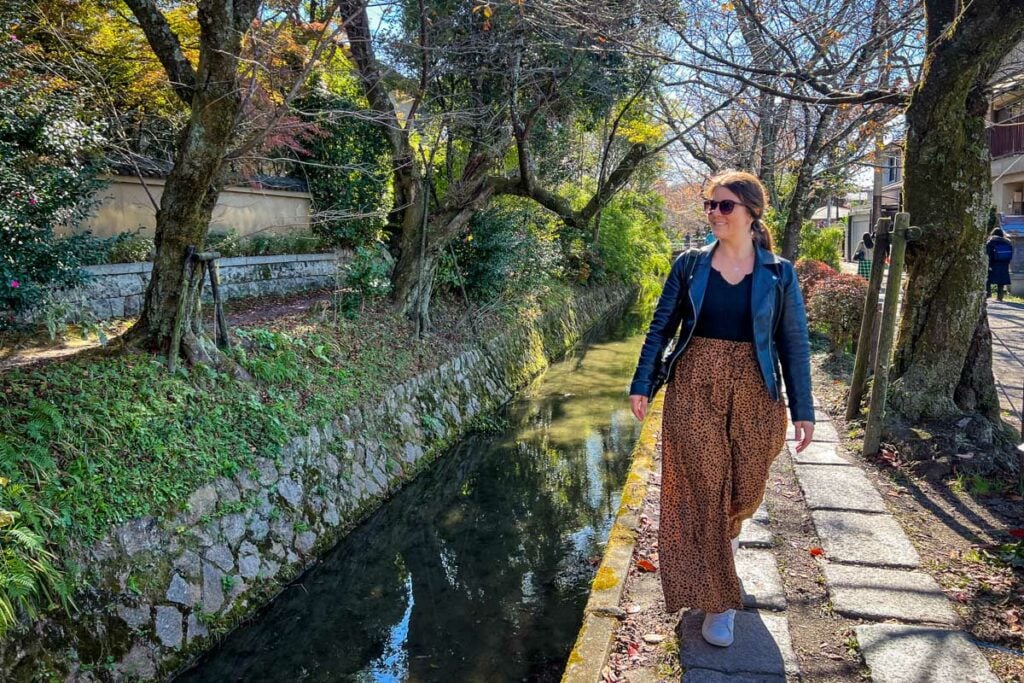
Japan is full of exciting activities and things to do , but trying to do and see everything can easily rack up your budget. Finding cheap—or better yet, free!—things to do in Japan is a great way to cut down on costs.
Here are just a handful of our favorite free/cheap experiences:
- Explore local markets
- Wander around parks
- People-watch on super busy streets
- Go to an arcade
- Try Purikura (Japanese photo booth)
- Explore historic districts
- Visit Shrines and temples
We have a whole section at the bottom of this article with more free and cheap things to do. Jump down to see the rest !
25. Choose your entertainment wisely
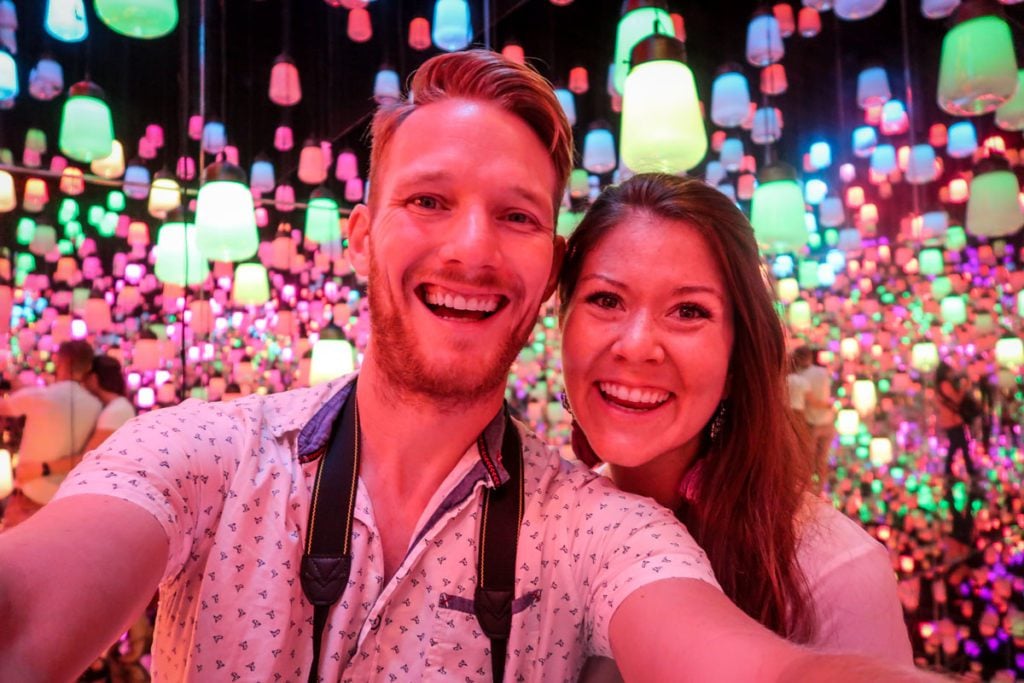
There are some tours and experiences that are well worth the splurge, whereas other activities can be done on your own without a tour group at all!
When planning your trip to Japan on a budget, write down all your bucket list experiences that you absolutely must do.
Now, go through that list and determine which things you can do on your own for less money than tour operators charge. And for those things that you absolutely have to book, like visiting the TeamLab Borderless Museum , Universal Studios , or doing the Alpine Route , write down the prices and keep that in mind as you create your travel budget.
Insider Tip: Compare prices of the same tour between Airbnb Experiences , Get Your Guide , and Klook . Sometimes tours are on just one platform, and other times they’re on all three, allowing you to choose the cheapest version.
It’s okay to have some splurges , as long as you are prepared for them.
Don’t let a small budget make it feel like you can’t do the experiences you’ve been dreaming about. Instead, cut costs in other places, like accommodation or food, to even it out.
26. Limit your shopping
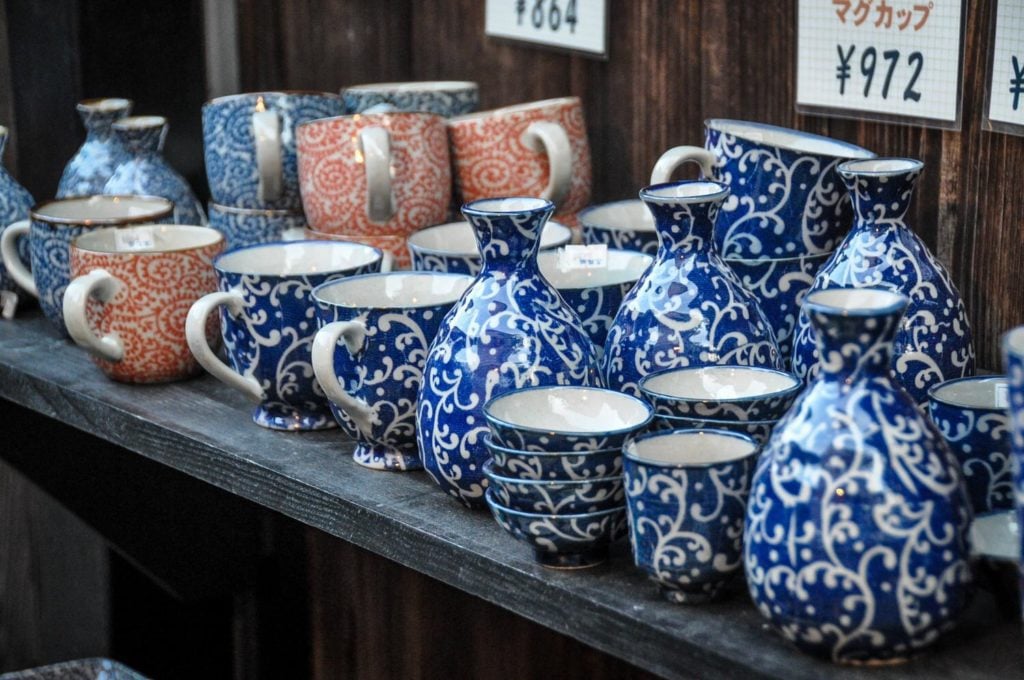
With endless shopping opportunities, it’s easy to get carried away. Before your trip, do some research and make a list of things you want to buy in Japan and include estimated prices.
Now comes the hard part: Stick to that list during your trip! If you stick to your pre-made list, you’ll make sure that you’re only purchasing things that are really meaningful or special. And you’ll stick to your budget!
Free (& cheap!) things to do in Japan
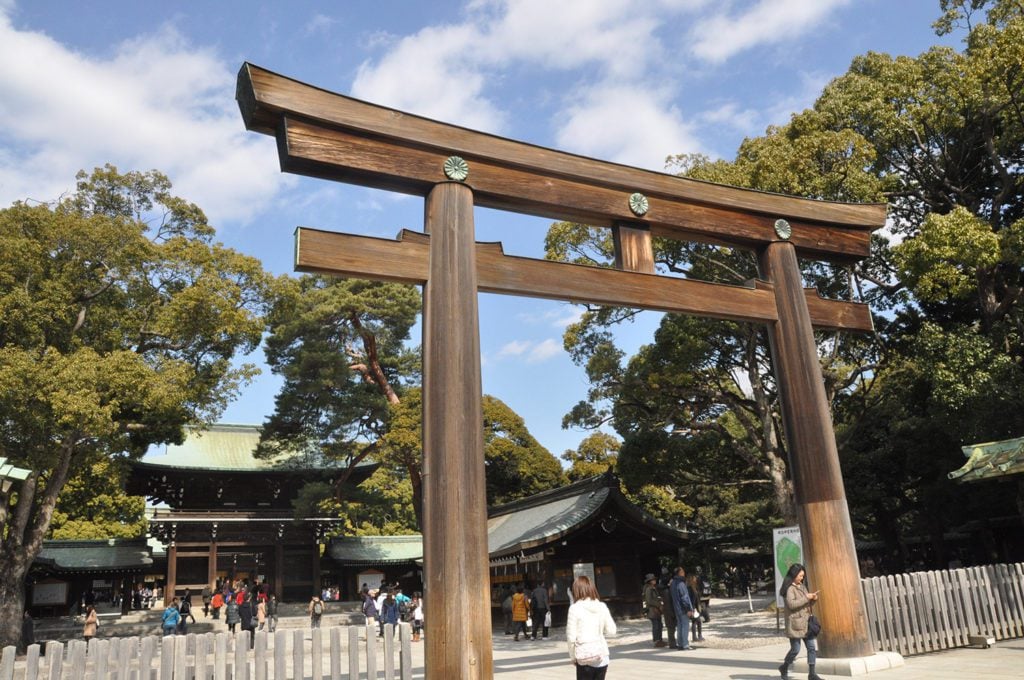
Japan is not the cheapest travel destination, but there are some free and inexpensive activities you can take advantage of to keep your wallet happy!
- Find a free walking tour: You’ll meet other travelers and learn stories and information that you’d never find out on your own! You can find walking tours in the bigger cities, like Kyoto Free Walking Tour , Osaka Free Walking Tour and Tokyo Free Walking Tour .
- Visiting shrines and temples: Many temples and shrines in Japan are free to enter and explore. For example, Meiji Shrine, which is not far from Tokyo. Just be sure to read up on the etiquette for visiting before you go!
- Explore historic districts: Wander on foot through the historic districts of the various cities/towns you visit in Japan and get a sense of the history of the place—all without paying a dime (or should we say yen!).
- Parks: There are tons of free parks throughout Japan, including Minoo Park outside of Osaka and Arashiyama bamboo grove in Kyoto.
- Join a Meetup: There are plenty of meet up groups that you can find online. Simply Google “Meetups in [your city].” Here is the Meetup site for Tokyo .
- Explore the markets: There are thousands of markets all throughout Japan. You can’t miss the Tsukiji Fish Market in Tokyo or the Nishiki Market in Kyoto. We also love the walking street/restaurant haven in the Dotonbori neighborhood of Osaka.
- Go to an arcade: Japan has lots of arcades in major cities where you can enter for free and pay a few coins to play games. Be sure to try Pachinko, Japan’s glammed-up version of pinball. We have instructions in our article here .
- Try Purikura: These Japanese photo booths are a quick and fun experience and a great way to bring home a cheap souvenir!
More resources for traveling in Japan
We have TONS of resources on travel in Japan and destinations throughout the country. Check out our Ultimate Japan Travel Guide for all the answers to your most burning questions, or read some of our favorite articles below!
- Japan Trip Planner: How to Plan Your First Trip to Japan
- How Many Days in Japan is Enough?
- Best Time to Visit Japan: When to Go & When to Avoid
- Japan Rail Pass: Where to Buy & Is It Worthwhile?
- Renting a Car in Japan: Essential Driving Tips You Need to Know!
- Japan Travel Cost: Exactly How Much is a Trip to Japan?
- One Week in Japan: Best Itinerary for Your First Visit
- Expert Tips for Visiting Japan (Dos and Don’ts!)
- Japan Pocket Wifi vs. Japanese SIM Card: Review & Comparison
- Best Japan Travel Apps
- Foods to Eat in Japan: Guide to Japanese Cuisine
- Helpful Japanese Words & Phrases to Know for Traveling in Japan
Be sure to download our complete packing list for Japan ! It’s packed with good suggestions and insider tips to help plan your Japan trip. And it’s completely FREE , so why not!?

Save this article on Pinterest for later!
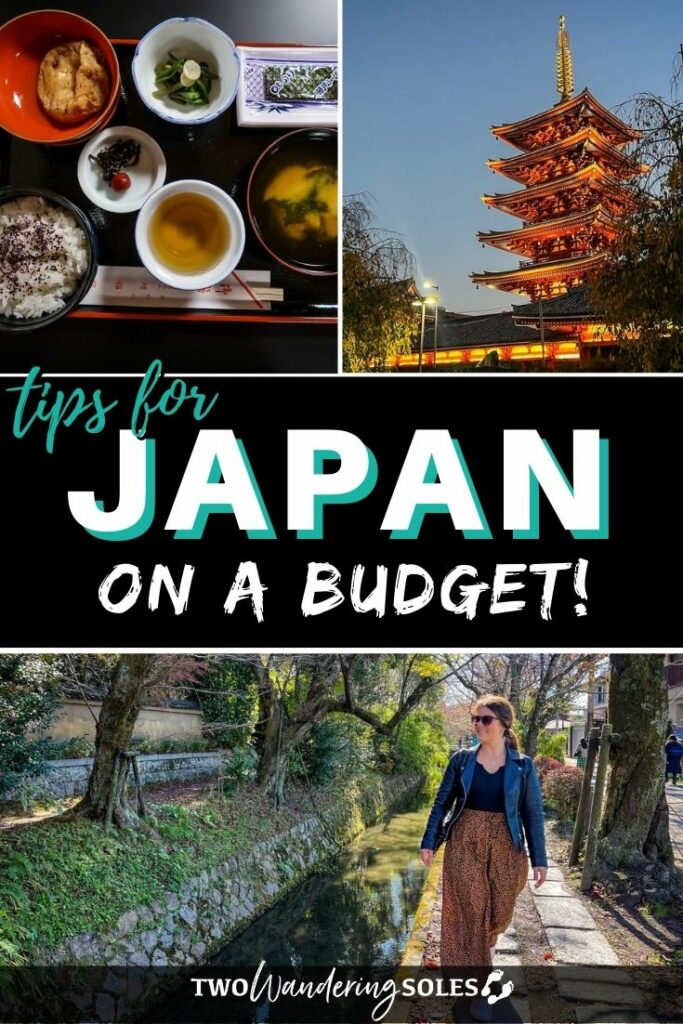
We want to hear from you!
Which of these money-saving tips for traveling Japan on a budget do you think will be the most helpful? Do you have any more budget tips you think we should add to this list? Comment below and we’ll do our best to get back to you!
Comments (3) on “ Japan on a Budget: 26 Money-Saving Tips + Free Things to Do! ”
I read your article so good , thanks for share
Golden Triangle Tours offers the best-selling Golden Triangle tour packages in India. Come and discover these incredible cities of India with our carefully planned and custom-tailored packages.
I Appreciate your work, I read your article and found something new here keep it up and, Thanks for sharing this.
Leave a Reply Cancel reply
Your email address will not be published. Required fields are marked *
Save my name, email, and website in this browser for the next time I comment.
- Media & Industry
- Meetings & Events
- Select Language 简体中文 繁體中文(香港) 繁體中文(臺灣) India (English) Bahasa Indonesia 한국어 ภาษาไทย Tiếng Việt Singapore (English) Philippines (English) Malaysia (English) Australia/New Zealand (English) Français Deutsch Italiano Español United Kingdom (English) Nordic countries(English) Canada (English) Canada (Français) United States (English) Mexico (español) Português العربية Japan(日本語) Global (English)
- India (English)
- Bahasa Indonesia
- Singapore (English)
- Philippines (English)
- Malaysia (English)
- Australia/New Zealand (English)
- United Kingdom (English)
- Nordic countries(English)
- Canada (English)
- Canada (Français)
- United States (English)
- Mexico (español)
- Global (English)
- Fujiyoshida
- Shimonoseki
- Ishigaki Island
- Miyako Island
- Kerama Island
- Tokyo Island
- Koka & Shigaraki
- Hida Takayama
- Ginza, Nihonbashi
- Beppu & Yufuin (Onsen)
- Ginzan Onsen
- Nagasaki Islands

- Kumano Kodo
- Shikoku Karst
- Amami Oshima
- Hachimantai
- Omihachiman
- Aizuwakamatsu

- Diving in Japan
- Skiing in Japan
- Seasonal Flowers in Japan
- Sustainable Outdoors
- Off the Beaten Track in Japan
- Scenic Spots
- World Heritage
- Home Stays & Farm Stays

- Japanese Gardens
- Japanese Crafts
- Temple Stays
- Heritage Stays
- Festivals and Events
- Theater in Japan
- Japanese Tea Ceremony
- Cultural Experiences in Japan
- Culture in Japan

- Local Cuisine Eastern Japan
- Local Cuisine Western Japan
- Local Street Food
- Japan's Local Ekiben
- Japanese Whisky
- Vegetarian and Vegan Guide
- Sushi in Japan Guide
- Japanese Sake Breweries

- Art Museums
- Architecture
- Performing Arts
- Art Festivals
- Japanese Anime and Comics
- Japanese Ceramics
- Local Crafts

- Scenic Night Views
- Natural Wonders
- Theme Parks
- Samurai & Ninja
- Iconic Architecture

- Wellness Travel in Japan
- Japanese Ryokan Guide
- A Guide to Stargazing in Japan
- Relaxation in Japan
- Forest Bathing (Shinrin-yoku)

- Experiences in Japan
- Enjoy my Japan
- National Parks
- Japan's Local Treasures
- Japan Heritage
- Snow Like No Other
- Wonder Around Japan

- Visa Information
- Getting to Japan
- Airport Access
- COVID-19: Practical Information for Traveling to Japan
- Anime Tourism
- Countryside Stays
- Accessible Tourism
- Hokkaido Great Outdoors
- Scenic World Heritage in Tohoku
- Shikoku’s Nature and Traditions
- Southern Kyushu by Rail

- Traveling by Rail
- How to Travel by Train and Bus
- JR Rail Passes
- Scenic Railways
- Renting a Car
- Sustainable Travel in Japan
- Travel Brochures
- Useful Apps
- Online Reservation Sites
- Eco-friendly Accommodation
- Luxury Accommodations
- Traveling With a Disability
- Hands-free Travel
- How to Book a Certified Tour Guide
- Volunteer Guides
- Tourist Information Center

- Japanese Manners
- Spring in Japan
- Summer in Japan
- Autumn in Japan
- Winter in Japan
- Cherry Blossom Forecast
- Autumn Leaves Forecast

- Japan Visitor Hotline
- Travel Insurance in Japan
- Japan Safe Travel Information
- Accessibility in Japan
- Vegetarian Guide
- Muslim Travelers
- Safety Tips

- JAPAN Monthly Web Magazine
- Arts & Cultures
- Nature & Outdoor
- Festivals & Events
- Insider Blog
- Things to do
- Local Guides
- Food & drink
- Traditional
- Hokuriku Shinetsu

My Favorites
${v.desc | trunc(25)}
Planning a Trip to Japan?
Share your travel photos with us by hashtagging your images with #visitjapanjp
GUIDE Guide to Traveling Japan on a Budget A guide to budgeting your trip to Japan
- Stories & Guides
- Guide to Traveling Japan on a Budget
Plan in advance to make your trip to Japan affordable
You may have heard that Japan is an expensive place to visit, but don't be discouraged. With some advance planning, Japan is an affordable destination for even the most budget-conscious traveler. Take some time to decide which options best suit your budget.
There are a wide variety of budget accommodation options, transportation passes and sightseeing discounts available. Browse our list for more details.
Transportation
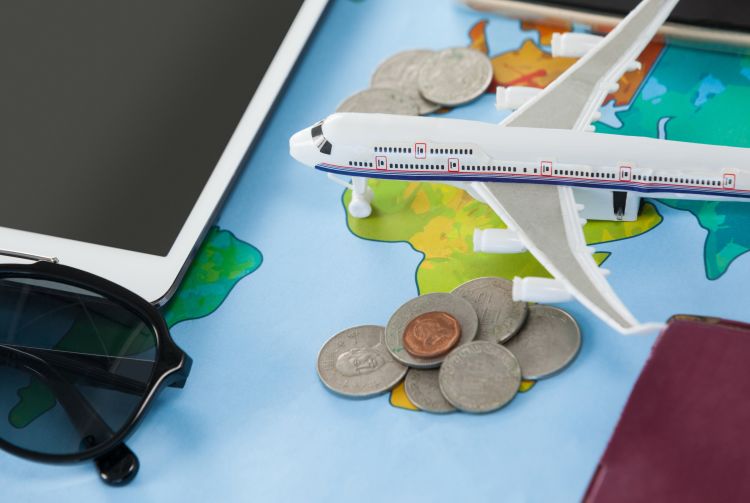
Long distance buses
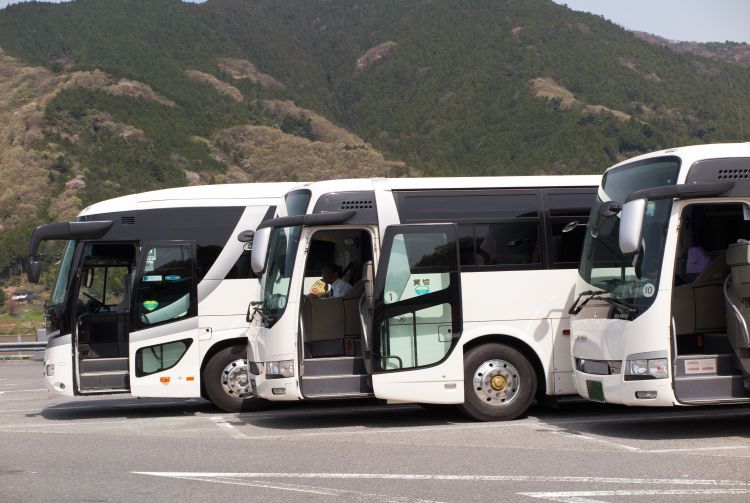
Ferries and passenger boats
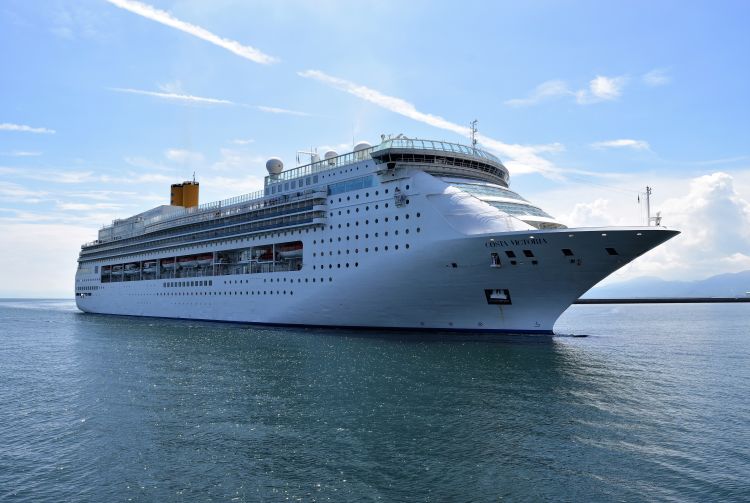
Accommodations
Dining out in Japan doesn't have to be expensive, and is often better value for money than most other world capitals. Wherever you travel, restaurants in popular tourist areas will always cost more. Follow the locals and you will generally find both lower prices and more authentic Japanese cuisine. Avoid restaurants that don't list their prices outside the door. Budget dining can usually be enjoyed at more casual establishments such as izakaya (Japanese pubs), shokudo (small casual restaurants, often with set meals), kaitenzushi (conveyor belt sushi) and okonomiyaki restaurants.
Comparing Prices
Improvements in the foreign exchange rate mean more favorable prices for overseas visitors to Japan. The price chart on this page is designed to give an idea of what you can expect to pay for a variety of everyday and travel-related items in Japan.
The latest information may differ, so please check the official website.
* The information on this page may be subject to change due to COVID-19.
- Story & Guide
- Travel Tips
Did this information help you?
out of found this information helpful.
Thank you for your feedback.
Recommended for you.

Please Choose Your Language
Browse the JNTO site in one of multiple languages
- Travel Planning Guide
How much does a trip to Japan Cost?

How much money should you budget for your trip to Japan?
- How much does a one-week trip to Japan cost?
- How much does a two-week trip to Japan cost?
- How much does a one-month trip to Japan cost?
- Hostel Prices
- Hotel Prices
The Cost of a Trip to Japan
For a trip to Japan, you should plan for daily costs anywhere between $49 to $318. If there's two of you traveling, your daily expenses could range from $98 to $636. These price ranges are based on the average daily spending of $125 (¥18,714) per person which comes from the travel expenses of other visitors. These costs include food, accommodation, sightseeing activities, and getting around locally. Keep in mind, though, these figures can vary somewhat based on your individual travel style, level of luxury, and chosen activities. Destinations across the country, such as Tokyo, Osaka, and Kyoto, might might vary somewhat from the overall average price, but they usually stick close to this range. Read on for a breakdown of travel typical expenses as well as a comparison of tour prices versus Independent travel.
If you're planning an Independent trip to Japan, budget travelers should plan to spend around $49 (¥7,364) per day for their trip. This average includes hostels and budget hotels, affordable meal options, local transportation, and activities. If you're on a mid-range budget, plan for around $125 (¥18,714) a day which covers the cost of typical hotels, normal restaurants, and a variety of popular attractions. Luxury travelers should allow for $318 (¥47,763) a day, which would cover higher-end hotels, nicer restaurants, and more private tour options. All of these price ranges are based on our extensive travel cost data for Japan from other travelers, along with hotel and tour data from travel companies.
How much does a one week trip to Japan cost?
On average, visitors to Japan spend between $343 and $2,227 for their week-long adventure, with the average being $873. This covers sightseeing, local transportation, food, and accommodations. With a duration of one week, you'll have the opportunity to explore one, two, or even three locations within Japan, depending on the level of depth you desire for your visit. Some of the most popular places to consider exploring are Tokyo , Osaka , and Kyoto . It's important to note that these figures are averages and can vary based on personal preferences and choices. Ultimately, the goal is to create a memorable and enjoyable experience tailored to your specific interests.
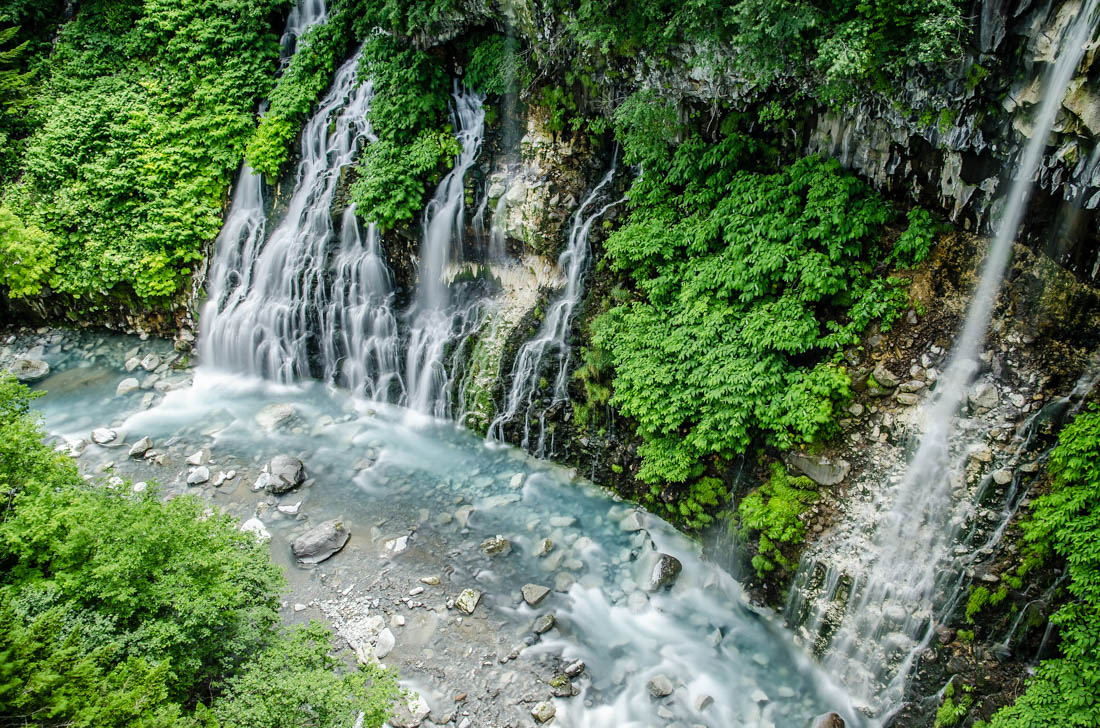
How much does a two week trip to Japan cost?
With two weeks, you should budget between $687 and $4,455 for your trip to Japan. The average price for a two week trip is $1,745. Two weeks will allow you enough time to visit between three and five places. If you're on a budget, you might want to consider some of the more affordable places such as Sado, Mashiko, and Dewa Sanzan.
How much does a one month trip to Japan cost?
When embarking on a month-long trip to Japan, expenses can range from $1,472 to $9,546, with an average cost falling around $3,740. For those fortunate enough to have a full month, considering a vacation rental with a kitchen for at least a portion of your stay can help save money with meals. Backpackers often opt for hostels due to their affordability and the added benefit of a social vibe.
Hostel Prices in Japan
With more than 210 hostels in Japan, the average price is $25 per night for a dorm bed. Hostels are a terrific option for younger independent travelers looking to save money while staying social during their trip. With many types of hostels, it can be overwhelming to sort out the best places, though. Our analysis of the hostels in Japan not only found the average price, but also uncovered some surprises about the overall quality, amenities, and atmosphere of hostels in the region. You can see more details from our analysis about typical hostel prices in Japan here .
Here are a few sample prices from popular hostels in Japan.
- $26 for a dorm bed at Sakura Hostel Asakusa in Tokyo more details
- $23 for a dorm bed at Guesthouse U-En in Osaka more details
- $26 for a dorm bed at Backpackers Hostel K's House Kyoto in Kyoto more details
Hotel Prices in Japan
You'll find a wide range of hotel options across Japan. Below are prices for some of the destinations, and for more details see our analysis of hotel costs in Japan .
Disney Ambassador Hotel
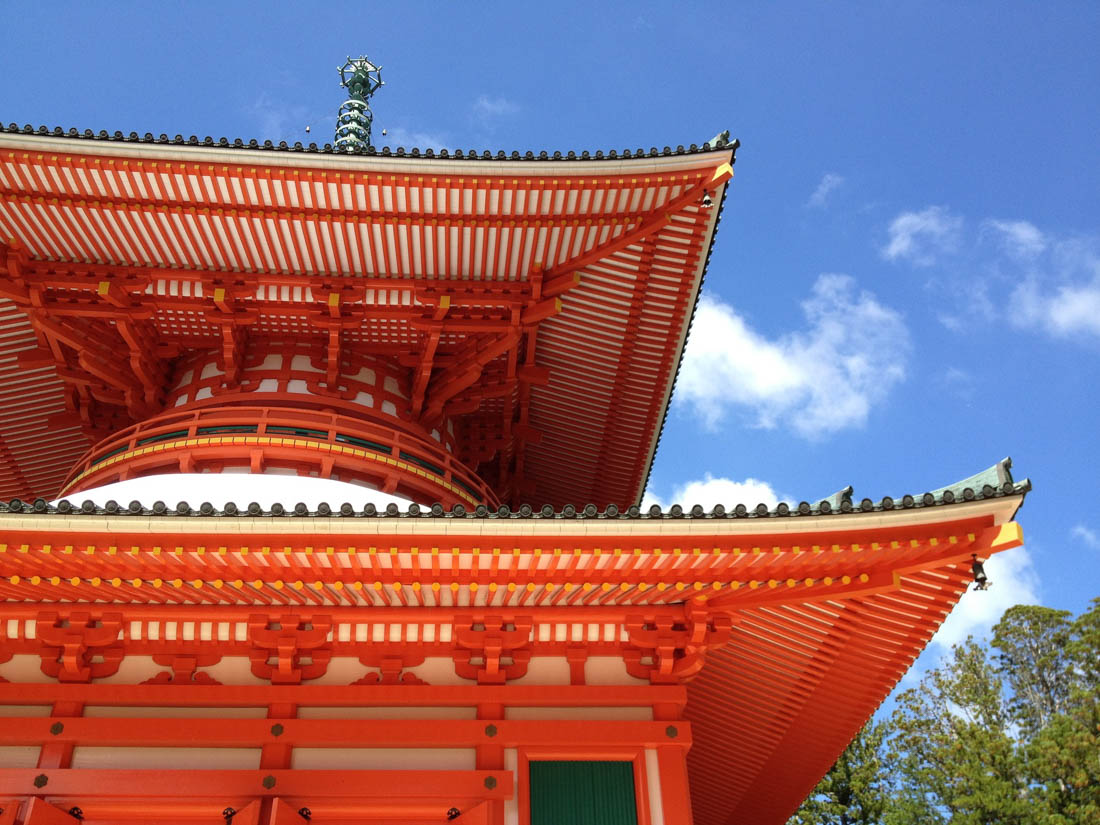
Should you do an organized tour or travel independently in Japan?
Organized tours and independent travel are essentially the two main ways to plan a trip to Japan. Organized tours offer a convenient and hassle-free experience, with travel experts handling all the logistical details and the added benefit of an expert guide imparting valuable insights. This option is favored by those who appreciate the convenience and ease provided by tours that often include transportation and expert guides.
On the other hand, independent travel provides a different set of advantages, allowing for greater freedom and flexibility in customizing itineraries and exploring at one's own pace. This option appeals to individuals who value spontaneity and control, enabling them to immerse themselves in local culture on a deeper level.
Ultimately, the choice between organized tours and independent travel depends on personal preferences and travel style, considering factors such as convenience, guidance, and flexibility.
Comparing Trip Costs in Japan
When we compare the prices of organized tours to the average costs of independent travelers, we can see that sometimes the prices are fairly even.
Tours vs. independent Travel: Pros & Cons
Organized tours.
- An expert guide familiar with the culture
- Convenient transportation
- Fellow travelers to socialize with
- Well researched activities
- Efficient and thought out itinerary
- The security of have a trip leader if something goes wrong
- Limited options
- Usually not customizable
- The fast pace often means you can’t visit one place in depth
- Usually more expensive than independent travel
- There may be limited time to interact with the local culture and community
Independent Travel
- Completely customizable
- Opportunity to visit off-the-beaten-path destinations
- Can fully immerse yourself in the local culture
- Freedom to move at your own pace
- Flexibility to change your itinerary at any time
- More affordable
- Challenging to plan an efficient itinerary
- Transportation may be challenging or inefficient
- Booking and trip planning can be a hassle
- Popular sights may sell out well in advance
- If something goes wrong, you're on your own
Are organized tours more expensive than independent travel in Japan?
Organized tours typically average around $450 per day and provide the convenience of an all-inclusive package with one comprehensive payment. On the other hand, independent trips usually average around $125 (¥18,714) per day and involve individual payments for accommodations, local transportation, meals, and sightseeing. Both organized tours and independent trips have their own unique challenges and benefits, so it's crucial to thoroughly understand the aspects of each to make a fair comparison. For a detailed analysis of tour prices in Japan, check out our comprehensive guide on tour prices in Japan here .
Here are a few sample tours in Japan:
- Environmental Conservation Volunteering, Cultural Immersion and Temple Stay on Sado Island ($759) 8 days, 1 destinations more details
- Japan´s Landscapes ($4,539) 13 days, 21 destinations more details
- Essential Japan and Hakone end Tokyo ($3,669) 10 days, 16 destinations more details
- Japan In-depth Cherry Blossom Tour ($5,287) 13 days, 17 destinations more details
- Japan Uncovered ($9,012) 16 days, 13 destinations more details
More for Japan
If you're planning a trip to Japan, check out these other informative travel guides.
We've been gathering travel costs from tens of thousands of actual travelers since 2010, and we use the data to calculate average daily travel costs for destinations around the world. We also systematically analyze the prices of hotels, hostels, and tours from travel providers such as Kayak, HostelWorld, TourRadar, Viator, and others. This combination of expenses from actual travelers, combined with pricing data from major travel companies, gives us a uniqe insight into the overall cost of travel for thousands of cities in countries around the world. You can see more here: How it Works .
Subscribe to our Newsletter
Coupons and discounts! Travel tips!
1 Categories averaged on a per-item basis. 2 Categories averaged on a per-day basis. For example, the Food 2 daily average is for all meals for an entire day, while Entertainment 1 is for each individual purchase. Thus, the overall daily average cost is not a summation of the individual categories.
- You are welcome to reference or display our travel costs on your website as long as you provide a link back to this page .
- For a basic link, you can copy and paste the HTML link code, or this page's address. Address Link HTML Japan Travel Costs " disabled />

Some of the links on this website are sponsored or affiliate links which help to financially support this site. By clicking the link and making a purchase, we may receive a small commission, but this does not affect the price of your purchase.
- Privacy / Terms of Use
- Activities, Day Trips, Things To Do, and Excursions
Nomadic Matt's Travel Site
Travel Better, Cheaper, Longer
Japan Travel Guide
Last Updated: February 18, 2024
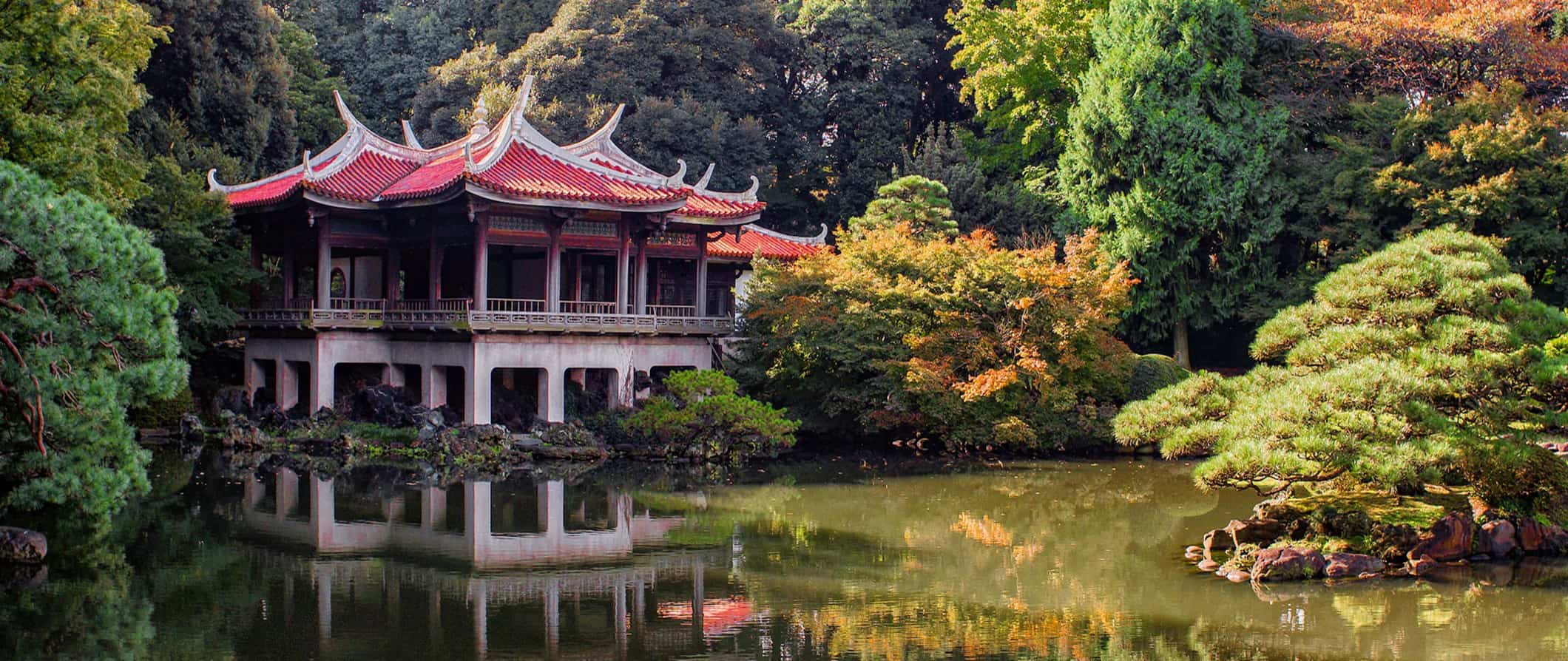
It was a lifelong dream to visit and, when I finally did, it lived up to all my expectations. Since that first visit, I’ve been there over five times. Japan is a country that blows everyone away. From the food to the people to the architecture and everything in between, I’ve never met someone who didn’t go to Japan and fall in love with it.
A lot of people delay visiting Japan because they think it’s super expensive. And, while some aspects of traveling there are expensive, there are plenty of ways to make it affordable. I was actually shocked how easy it was to see Japan on a budget .
This Japan travel guide can help you plan an affordable trip so you can see more, eat more, and spend less.
Table of Contents
- Things to See and Do
- Typical Costs
- Suggested Budgets
- Money-Saving Tips
- Where to Stay
- How to Get Around
- How to Stay Safe
- Best Places to Book Your Trip
- Related Blogs on Japan
Click here for City Guides
Top 5 things to see and do in japan.
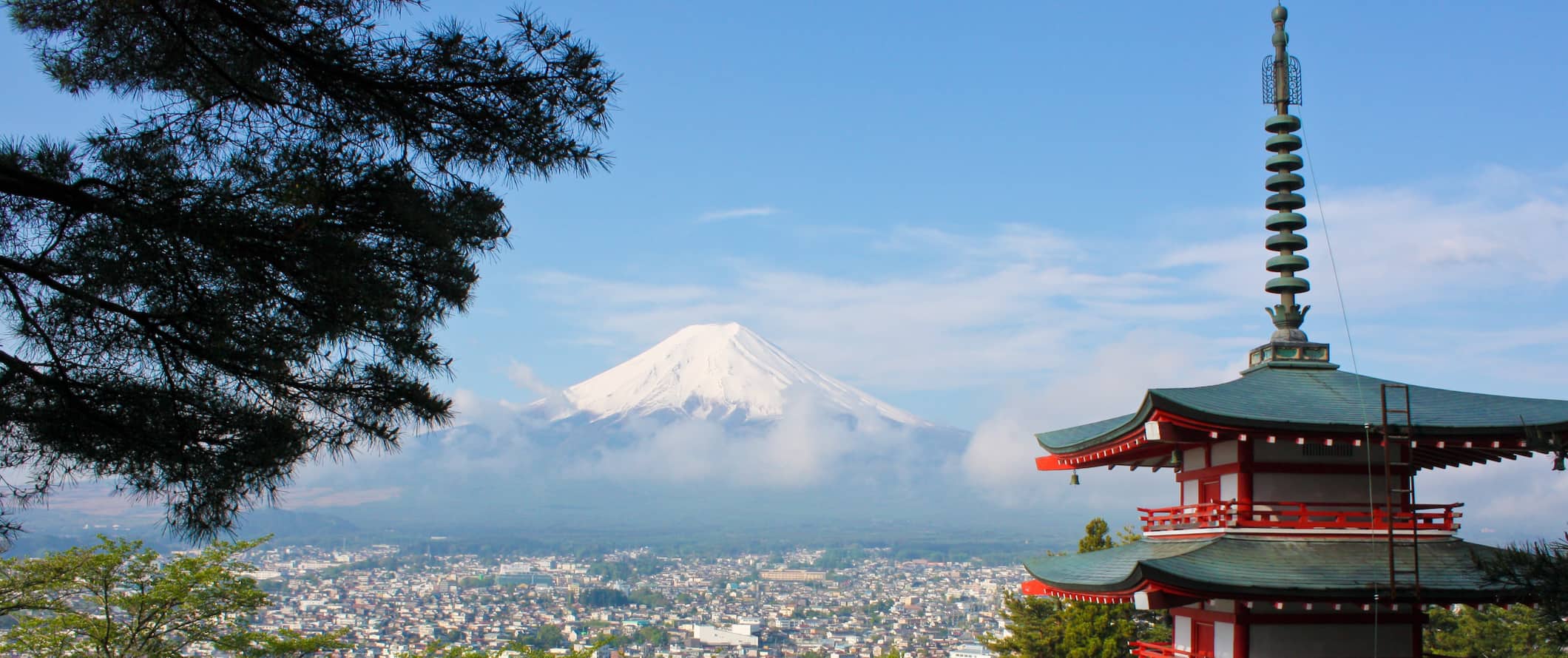
1. Explore Tokyo
Tokyo is one of the best cities in the world. Here you will find shrines, palaces, temples, hip clubs, fancy cocktail bars, weird fashion, and, of course, incredible people. Tokyo is a fast-paced, futuristic city. Be sure to also hit some of the quirky-themed cafés, wander the Harajuku district, walk across the iconic Shibuya crossing, and admire the Imperial Palace. Visit my detailed guide for more information .
2. Wander Kyoto
Boasting beautiful temples and Japanese gardens, Kyoto is one of the most popular destinations in Japan. This place definitely lives up to the hype because it retains much of the traditional lifestyle and is a good juxtaposition to fast-paced and high-tech Tokyo. See as many temples as possible , wander the enchanting bamboo forest of Arashiyama, (just get there early to beat the crowds), and do some hiking here. It’s a city not to be missed.
3. See Hiroshima
In 1945, the first atomic bomb to be used in combat was detonated in Hiroshima . Around 80,000 people were killed instantly and tens of thousands more died afterward due to radiation exposure. Visit the Hiroshima Peace Memorial (Genbaku Dome), which was the only building left standing after the bomb was dropped on August 6, and learn about one of the most controversial events in human history. I found the museum’s photos and artifacts sobering and eye-opening, and yet a must-see if you want to understand modern Japan. You can also take a cycling tour around the city to learn more about the bombing and its aftermath.
4. Climb Mount Fuji
This 3,776-meter (12,389-foot) mountain is located near Tokyo. As Japan’s tallest mountain, it is often covered by fog and clouds during the day, so ascents tend to happen early in the morning or overnight. In fact, some 400,000 people take part during the short climbing season that is only from early July to mid-September. If you’re visiting outside of the climbing season or just don’t want to hike the mountain, there are many tour providers that offer day trips from Tokyo from around 12,000 JPY.
5. Visit Sapporo
The gateway to Japan’s northern island of Hokkaido, this city is famous for its surrounding mountains, thermal baths, ski resorts, and lengthy beer brewing history. Hosting the 1972 Olympic Winter Games put the city on the international map, and it remains hugely popular for its cold-weather sports. It’s also home to the hugely popular Sapporo Snow Festival, where you can see world-class ice and snow sculptures each February (over two million people attend!). Although Sapporo is very much a ski haven, I also loved going in Spring because of the lush greenery and in particular, the thousands of Japanese cherry blossoms in Moerenuma Park. Don’t miss the Beer Museum and be sure to take the train to the coastal town of Otaru for uni (which is harvested there).
Other Things to See and Do in Japan
1. visit the tsukiji and toyosu fish markets.
Tokyo’s fish markets start bright and early at 4am. Here you can see the frenzied buying and selling of the world’s largest tuna market. Tsukiji was the original market but, as of 2018, the inner fish market moved to Toyosu and is now known as the Toyosu Fish Market. However, the outer market (where you can find food and shops) is still at Tsukiji. You can take a guided tour to learn about its history, how it works, and even learn how to roll sushi in a workshop at the end. Shops start opening around 6am so it’s a perfect place to go when you have jetlag.
2. Spend a day in Kyoto’s Gion District
Otherwise known as the Geisha District, this neighborhood is filled with fascinating historic architecture and is a good area for window shopping. Geishas (traditional professional entertainers) have worked here for centuries, and if you’re lucky, you may be able to spot one going to or from a social engagement at one of the establishments. (Just note that photographs are forbidden on the narrow alleys to prevent harassment of the geishas.) You can also take a nighttime walking tour .
3. Explore Nara
Located just one hour from Kyoto , Nara is famous for its 1,300 “wild” deer that freely roam Nara Park. The Japanese consider deer to be messengers of the gods, so they are free to roam the city (their horns are cut short, so they can’t hurt people). There are vendors selling crackers all around the park, so you can feed them by hand. While here, be sure to take in the world’s largest wooden building, Todai-ji, which dates to the eighth century and was reconstructed in the 1700s. Most travelers visit Nara as a day trip from Kyoto, but I suggest staying at least a night to really see everything.
4. See Osaka
Osaka is the third-largest city in Japan and its financial heart. It’s also a big foodie hub. Mouthwatering sushi and sashimi, Kobe beef, Japanese barbecue, and flavorful ramen can all be found here in abundance. There are also popular specialties like okonomiyaki (a savory pancake with egg and vegetables) and kushikatsu (skewered kebabs). You can take a food tour for around 12,000 JPY or just wander and eat.
Beyond the food, don’t miss Osaka Castle. While it’s not the original (this version dates to 1931), it’s nevertheless an impressive sight. It’s home to a small but insightful museum and an observation deck that offers some picturesque city views.
5. Relax in Ueno Park
Established in 1873, Tokyo’s Ueno Park is a great place to spend the day. It’s the perfect spot to see the cherry blossom trees (April is the best time of year if you hope to catch them in full bloom). Year round, you will find events on the weekend, people hanging out here on a beautiful day, and plenty of museums to visit. The park is home to the Tokyo National Museum, a couple art museums, and a zoo. You can also take a three-hour architecture tour around the park .
6. Admire the Imperial Palace
The Imperial Palace is home to the emperor of Japan (whose lineage stretches back over a thousand years). It was built on the site of the former Edo Castle, which was originally constructed in the 15th century. Though you can’t go inside the palace itself, the surrounding grounds and park are beautiful, and you can watch the changing of the guard. You can visit select parts of the grounds on a 75-minute guided tour at 10am and 1:30pm Tuesday-Saturday. The Imperial East Gardens are free and open daily except Mondays, Fridays, and holidays. There’s also a lot of free walking tours that take you around and give you a history of the palace.
7. Visit Miyajima Island
Miyajima is a UNESCO World Heritage Site located about an hour outside of Hiroshima, known as “Shrine Island” because of its temple and iconic floating torii gate. Itsukushima Shrine, the main one here, dates back to the 12th century. There’s also a five-story pagoda that dates back to the 15th century, and the tranquil Momijidani Park, one of the most beautiful maple valleys in the country. And, like Nara, there are plenty of deer here too. A trip to the island can easily be made into a full day if you hit the walking trails nearby. And be sure to hike up Mount Misen — it’s a great workout, and the views are stunning! There is also a cable car to the peak you can take for 2,000 JPY round-trip.
8. Tour Bitchu Matsuyama Castle
At 430 meters (14,100 feet), not only is this Japan’s highest castle but it’s also its only remaining original one (most were destroyed in fires or during World War II). The castle was originally built on a nearby mountain in 1240 by Akiba Shigenobu. In 1929, restoration work began, and it is now a popular tourist site. Admission is 500 JPY for just the castle or 1,000 JPY for the castle, temple, and nearby samurai houses. If you’d like to patronize the Takahashi Folk Museum and Yamada Hokoku Museum, the entire combined ticket costs 1,500 JPY.
9. Go on the temple pilgrimage
The 88 Temple Pilgrimage (also known as “Shikoku Henro”) is an ancient route that circles the island of Shikoku, one of Japan’s four main islands. Under consideration for UNESCO status, the route stretches 1,200 kilometers (745 miles) and can take between 30 and 60 days. Pilgrims typically wear special white robes and carry a walking stick so they stand out (locals take pride in helping and welcoming pilgrims so standing out is a good thing). It’s one of the only circular pilgrimages in the world, with roots dating back over a thousand years. Between 150,000 and 200,000 people do the hike each year. In addition to the 88 official temples, there are also 20 additional sites you can visit as well. Most pilgrims hike between March-May or October-November since the summer is too warm. If mobility is an issue, you can also explore the route via car or bus, which takes around 10 days.
10. Explore Nikko
Located two hours north of Tokyo in the mountains, Nikko has welcomed worshippers of both Buddhist and Shinto traditions for centuries, so there are many temples and shrines in the woods to visit. Nikko is also the home of the imperial summer palace (the only imperial residence opened as a museum) and the resting spot of Tokugawa Ieyasu, the first shogun of Tokugawa Shogunate (1603–1868). You’ll also find lots of waterfalls in the area and a beautiful lake to go boating on. The trails at nearby Nikko National Park offer excellent hiking. Don’t miss Nikko Toshogu, Kegon Falls, Ryuzu Falls, Shinkyo Bridge, Lake Ch?zenji, Kanmangafuchi Abyss, and the Imperial Palace! Only a few hours from Tokyo, Nikko is a really nice destination for two or three nights.
11. Stay in a ryokan
A ryokan is a traditional Japanese bed-and-breakfast, usually found in the more scenic regions. They date back over 1,200 years and are known for their traditional tatami floors, communal baths, sliding doors, and cozy interiors. Ryokan s make for an intimate and unique Japanese experience, featuring included meals and traditional Japanese robes (called yukata ). Beds are traditional futons, and there is usually a common area where you can make tea and chat with the owner.
12. Soak in an onsen
Natural hot springs are widespread throughout the country, and can be found both indoors and outdoors. They are a great way to “soak in” some traditional Japanese culture. Each has a different mineral composition. Expect to pay around 1,000 JPY for a budget bathhouse. (Just note that many do not allow people with tattoos or require tattoos to be covered. They are also separated by gender.) Hakone is the most popular onsen destination as it’s just 90 minutes away from Tokyo and is nestled into the mountains. Other popular choices include Beppu, Yufuincho, Noboribetsu, and Ibusuki.
13. Explore Daisetsuzan National Park
If you make it all the way up to Hokkaido (the northern prefecture of Japan and second-largest island), be sure to spend some time exploring Daisetsuzan (“Great Snowy Mountains”) National Park. Located around two hours from Sapporo, the park offers numerous trails, and some of the most rugged and beautiful landscapes in the country. It’s also one of the last remaining places in Japan to see brown bears. The most popular hike here is Mount Asahidake, a challenging volcano that takes 3-4 hours. The park is a far cry from the tourist trail and usually just sees Japanese visitors, so you’ll get to enjoy a spot locals favor.
14. Relax in Okinawa
If you need a break from the fast pace of Japan, hop on down to Okinawa Prefecture, considered “the Hawaii of Japan.” Life proceeds at a much slower pace here, and the climate is subtropical. Even Naha, the biggest city in the region, is laid-back. Okinawa is famous for its diving opportunities as well as World War II sites and memorials. From Okinawa Honto (the main island), you can hop to other smaller islands by ferry, including some that are very remote and rarely see visitors (such as Iriomote or Kume). Camping, whale watching, and hitting the beach are some of the most popular activities here.
15. Admire Kanazawa
Located on the west coast, Kanazawa is known for its incredibly well-preserved Edo-era (1603–1868) districts (the final period of traditional Japan). Home to under 500,000 people, the city is called “Little Kyoto” — but without the oppressive crowds. I think this is a really nice, off-the-beaten-path destination. Make sure to see Tsuzumi-mon Gate, admire Kanazawa Castle, and explore the geisha districts and samurai district (Nagamachi), where numerous preserved houses remain. Head to the Omicho Fish Market for fresh fish and seafood (there are dozens and dozens of stalls here). And if you want to learn more about Buddhism, visit the DT Suzuki Museum (Suzuki was a Zen Buddhist academic and philosopher who helped introduce Zen Buddhism to the West).
16. Hike in the national parks
Japan may be a small country but it’s preserved a lot of its natural landscapes. There are 34 national parks, each offering respite from the hectic and dense cities that Japan is known for. Nikko (mentioned above) is best for seeing fall colors; Daisetsuzan (also mentioned above) has lots of remote onsen and challenging trails; Keramashoto, located in Okinawa, has some of the best islands and beaches, as well as over 250 types of coral; and Yoshino-Kumano is famous for its cherry blossoms. There are a lot of parks to choose from! Try to see at least one!
17. Visit Takashima
Home to just 50,000 people, Takashima is just a short drive from Kyoto on the coast of Lake Biwa (the largest freshwater lake in Japan). The city boasts castle ruins, plenty of old shrines and Buddha statues, and a picturesque floating torii gate (similar to the one in Miyajima) at the Shirahige Shrine. There’s also a four-kilometer (2.5-mile) walking route lined with cherry trees. Moreover, this town is famous for its Hida beef, which I think is the best beef in all of Japan. For a fun day trip, head to Chikubushima, a small island on Lake Biwa where you can visit centuries-old temples as you hike around the island.
For information on specific cities in Japan, check out these city guides:
- Hiroshima Travel Guide
- Kyoto Travel Guide
- Tokyo Travel Guide
Japan Travel Costs
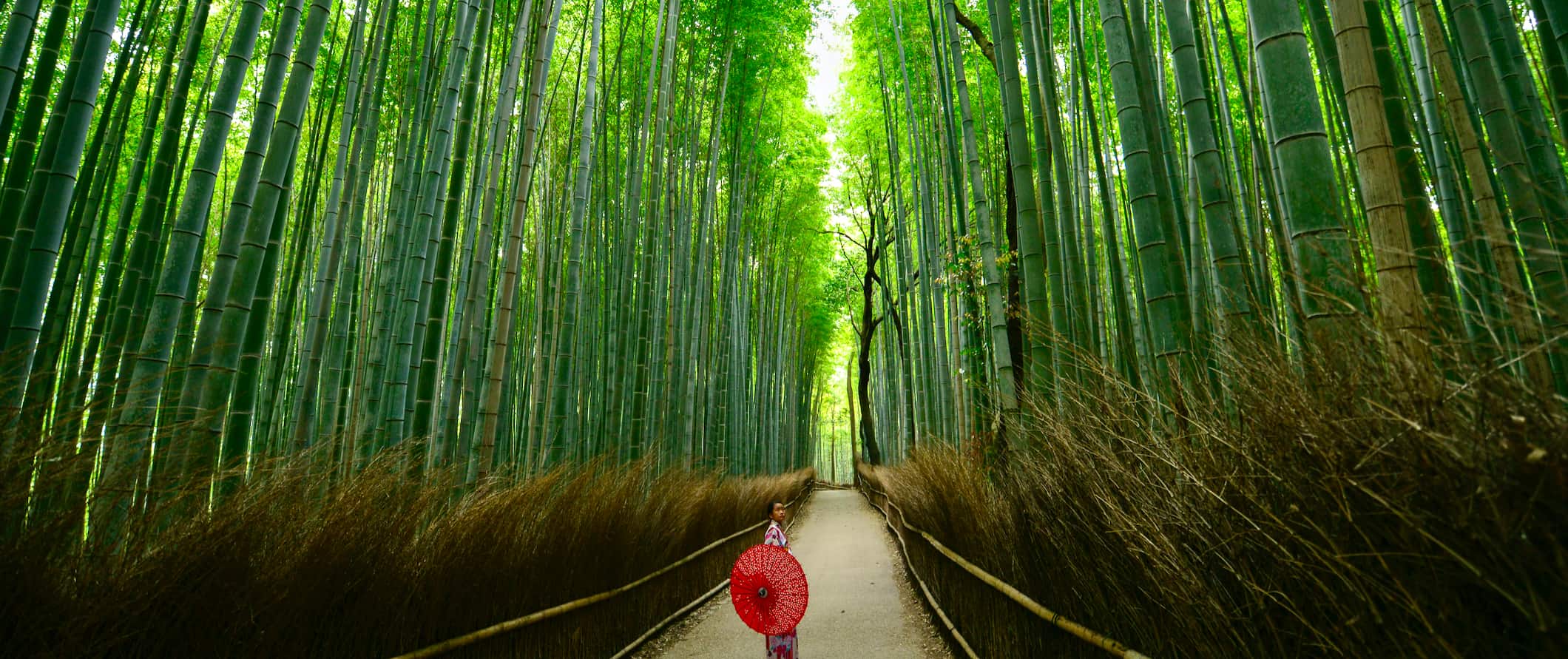
Accommodation – Expect to spend 2,500-4,500 JPY per night for a dorm room in a hostel (prices are on the higher end in larger cities like Tokyo or popular tourist destinations like Kyoto). Free Wi-Fi, private lockers, and self-catering facilities are standard in most hostels. But it’s uncommon for them to provide breakfast here. For a private room with a twin or double bed, expect to pay 6,500-15,000 JPY per night. Prices are generally the same year-round.
Capsule hotels cost 3,000-5,500 JPY for a tiny coffin-like pod that’s essentially just a bed, often with a small TV, light, and outlet to charge your devices. There are shared bathrooms and sometimes a small common room as well. It’s not fancy, but it’s a unique (and very Japanese) experience.
For (non-capsule) budget hotels, expect to spend 6,000-10,000 JPY per night for a double room. For Western hotel chains, expect to spend around 20,000 JPY or more per night. Note: For accommodation in Tokyo, add 50% to all these prices.
Airbnb is heavily regulated in Japan and, as such, there aren’t too many options. What rooms are listed are mostly hotels and guesthouses. Private homes/apartments usually start around 15,000-20,000 JPY per night, while private rooms (i.e., hotel rooms) run 8,000-10,000 JPY per night and up.
If you are looking for a more unique experience, consider staying at a ryokan , a traditional Japanese bed-and-breakfast. While they are more expensive than a standard hotel, it’s a unique and memorable experience, as you’ll get to sleep on traditional futons and tatami mats.
Food – Japanese cuisine is world-renowned and has even earned a spot on UNESCO’s Intangible Heritage List. While each region has its own specialties, rice, noodles, seafood, and seasonal produce all feature heavily no matter where you are. Plus, there’s izakaya (small plates), yakitori (grilled food), curry bowls, BBQ, and so much more. One of the best things about visiting Japan is the food.
Food in Japan is relatively inexpensive so long as it’s not imported (fresh fruit will blow your budget!). The most common cheap eats are using curry, donburi (bowls of meat and rice), or ramen. Curry and donburi bowls cost 500-700 JPY while ramen or soba noodles are usually around 1,200 JPY. Okonomiyaki (a Japanese pancake with noodles or rice) is between 1,000 and 1,300 Yen.
Fast food (think McDonald’s) is around 800 JPY for a set menu. You can also find plenty of cheap meals and prepackaged items at 7-Eleven (locals actually get a ton of food here as it’s delicious and quick). Noodles, rice balls, tofu, and prepackaged sushi are all available for only 250-500 JPY per item. (Trust me, it’s good!)
Most sit-down restaurant meals are going to cost you 2,000-3,000 JPY. Sushi conveyor belt restaurants (which are super fun) will run you 125-600 JPY per piece. Quicker lunch spots are going to be around 1,500 Yen.
Fine dining is a tradition rooted in Japanese culture, and kaiseki ryori is a style of high-end, multi-course Japanese dining that originated in Kyoto. It costs about 8,000-10,000 JPY for a set menu of seven courses, covering everything from chicken to Wagyu steak to sushi.
High-end omakase sushi restaurants (where dishes are selected by the chef) will set you back at least 10,000 JPY, though more likely closer to 20,000 JPY. (In Tokyo, the best ones are 30,000 JPY.)
Domestic beer is around 450-550 JPY, and sake is about 800-900 JPY per glass. A cocktail will set you back about 1,200 JPY, though at the famous cocktail bars in Tokyo, expect to pay closer to 1,600 Yen per drink. A latte or cappuccino is 500-600 JPY, and a bottle of water is 100-130 JPY. Soda is around 200 Yen.
Expect prices to be higher in the bigger cities and cheaper in the countryside.
Buying groceries costs around 5,000-6,000 JPY per week for basic staples like rice, vegetables, and fish. However, given the availability of such cheap food, it’s doubtful you’ll go grocery shopping to prepare your own meals.
Backpacking Japan Suggested Budgets
If you’re backpacking Japan, plan to budget 7,000 JPY per day. This assumes you’re staying in a hostel dorm, cooking some of your meals, eating at the cheap restaurants and takeaways, visiting free museums and temples, and using public transportation to get around.
On a more midrange budget of 16,000 JPY per day, you can stay in nicer accommodations, eat out more liberally, indulge in more drinks, visit more attractions, and, overall, just have some more breathing room in your travels! On this budget, you’ll be able to do most things.
On an upscale budget of 28,000 JPY per day or more, you can stay in traditional Japanese accommodations or two-star hotels, eat at nicer restaurants each day, splurge on some meals, enjoy drinks as often as you want, take tours, and, overall, just afford whatever you want!
You can use the chart below to get some idea of how much you need to budget daily, depending on your travel style. Keep in mind that these are daily averages — some days you’ll spend more, some days you’ll spend less (you might spend less every day). I just want to give you a general idea of how to make your budget. Prices are in JPY.
Japan Travel Guide: Money-Saving Tips
I think Japan’s reputation as an expensive country is overstated. Outside of accommodation and transportation, it’s actually really affordable. Is it super cheap? No. Is it super expensive? Not at all. There are plenty of ways to lower your costs and all non-imported food is really inexpensive. Here are some ways to save money when you visit:
- Visit the free attractions – With its countless museums, galleries, shrines, temples, historic neighborhoods, and parks, Japan is filled with opportunities to immerse yourself in its culture without spending a Yen. Moreover, many of the nation’s parks and gardens are also free. Start with them and you’ll fill your days on the cheap!
- Get a JR Pass – The bullet trains in Japan are ridiculously expensive, with one-way fares costing hundreds of dollars. If you plan to do a lot of traveling around the country, get the JR Pass , which allows you unlimited train travel and can save you a ton of money. It comes in 7-, 14-, and 21-day options. (Keep it mind it can only be purchased outside of Japan, so be sure to plan ahead.)
- Take the bus – Buses are a far more economical option than the trains. They cost a fraction of the price. For example, the unlimited Japan Rail Pass costs 29,650 JPY for seven consecutive days of travel, but this is far more expensive than using the bus. But buses take a lot longer. For example, the two-hour bullet train ride from Tokyo to Osaka becomes a 10-hour bus ride. Bottom line: if you have the time, take the bus.
- Shop at the 100-yen stores – There are many 100-yen shops around the country. They all sell meal sets, groceries, water bottles, toiletries, and household items. Store names vary by region, so ask your hotel or hostel reception where the nearest “Hyaku En” store is located.
- Eat at 7-Eleven – 7-Eleven, Family Mart, and other convenience stores have a lot of pre-made meals that make for a cheap lunch or snack. The food is actually really good and you’ll always see locals dipping in and getting a quick lunch or snack here. Don’t be afraid to at them.
- Cook your own food – Many hostels have kitchens where you can cook your own meals. Combining this with shopping at the 100-yen stores will drastically cut your food costs.
- Eat curry, ramen, and donburi – These dishes are the best option for eating cheap, filling meals. These cost from 400 – 1200 Yen (ramen is 1200). Shops specializing in these dishes are all over the country so you can easily find them. They are on every corner and the cheapest way to eat on a budget.
- Stay with a local – Using hospitality sites like Couchsurfing allows you to stay with residents, so you not only get a free place to stay but you get to interact with someone who can share their insider tips.
- Buy food before grocery stores close – After 8pm, many supermarkets discount their fresh food, as they have to get rid of it by law. You can save up to 50% on almost all ready-made meals. It’s a great cheap dinner.
- Hitchhike – Japan is one of the world’s safest countries, and many locals are curious enough to pick up foreign visitors. Hitchhiking isn’t really practiced by Japanese, so you will stand out as a tourist, which will increase your chances of finding a ride.
Where to Stay in Japan
There’s a lot of affordable accommodation in Japan, especially if you avoid Western style hotels and chains. To help you save money on accommodation, here’s my list of the best hostels and budget hotels in Japan:
- Hostel Chapter Two Tokyo (Tokyo)
- Hotel Century Southern Tower (Tokyo)
- Backpacker Hostel K’s House Kyoto (Kyoto)
- Gojo Guest House (Kyoto)
- The Pax Hostel Records (Osaka)
- Roku Hostel Hiroshima (Hiroshima)
- Guesthouse Akicafe Inn (Hiroshima)
- WeBase HAKATA Hostel (Fukuoka)
How to Get Around Japan
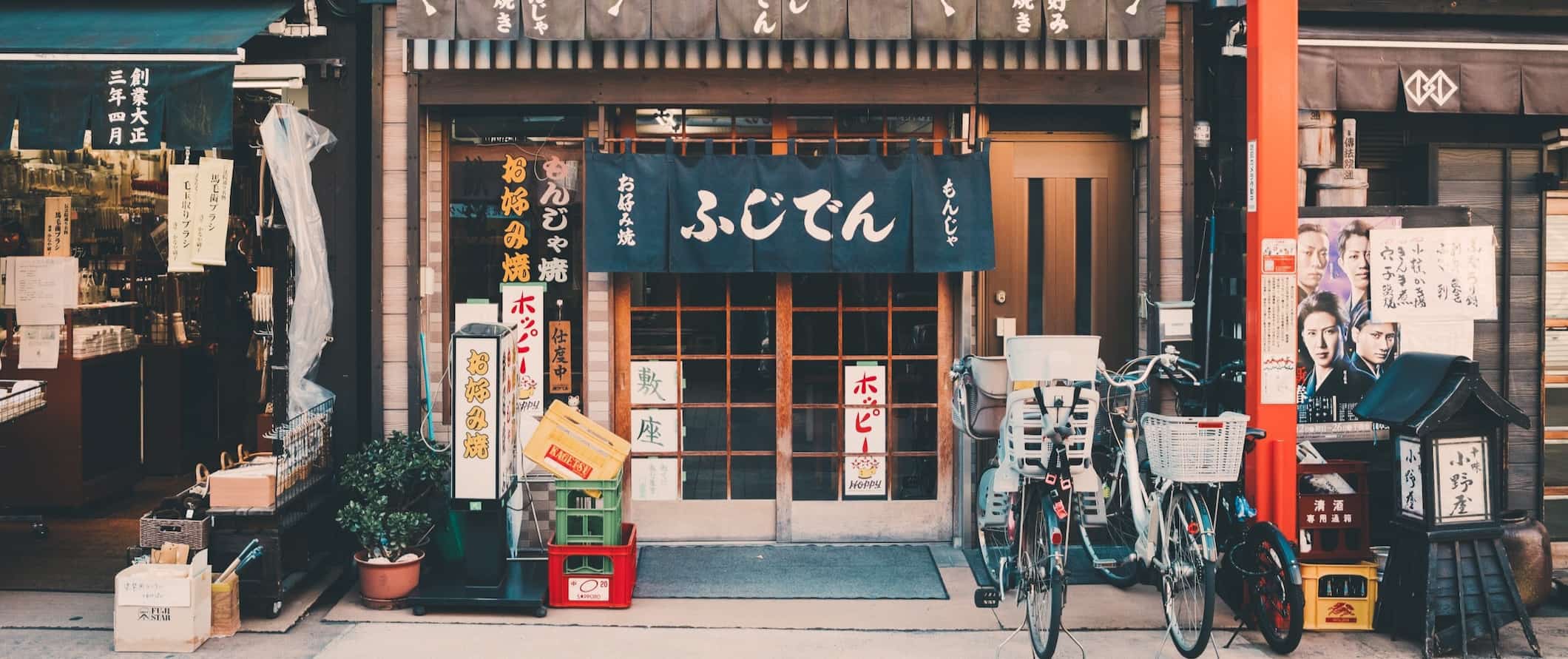
Public transportation – Metro or bus tickets cost 150–300 JPY for a single journey. (The price varies by distance and may often be higher.) Fares are usually around 220 JPY to travel across Tokyo but less for shorter distances. In most major cities, you can buy a day pass, which gives you unlimited travel for 24 hours for around 800-1,100 JPY.
Train – Train travel is the quickest way to get around Japan. The bullet train is awesome, comfortable, and super-fast — but it’s not cheap. Individual tickets can cost hundreds of dollars. In order to reduce your train costs, get a Japan Rail Pass , which is indispensable for travel here.
Even if you just get the seven-day pass, it’s the same price as a round-trip train ticket from Osaka to Tokyo. Moreover, the JR trains also serve urban areas and so can be used within cities. I used my pass to get around Kyoto and Tokyo instead of buying metro tickets.
So, even if you aren’t going to do much traveling around Japan, buying a pass is better than buying individual tickets. While the high price of the pass can cause sticker shock, the alternative is worse.
Additionally, be sure to download the Navitime app . It has offline maps, train and public transit routes, and info on train stations. It’s a lifesaver when trying to figure out how to get around the country.
Bus – Buses are a less expensive alternative to the bullet train system in Japan, but they take more time. For example, the two-hour bullet train ride from Tokyo to Osaka becomes a ten-hour bus ride. The price for that seat is 4,500-8,000 JPY, but at some point, you need to think about how much your time is worth.
There are also bus passes that offer unlimited travel and begin at 10,200 JPY for three nonconsecutive days of travel. You can use these two websites to book your bus journeys:
- Willer Express
- Japan Bus Lines
If you have more time than money, take the bus. Otherwise, I’d say splurge and take the train, because they really are much faster and much, much more comfortable.
Flying – Generally, flight prices are on par with bullet train tickets. ANA, one of the country’s two main carriers, offers special last-minute fares via a hidden page on its website , usually for around 14,000 JPY for a seat. It’s only available to foreigners and can sometimes be cheaper than the flights you find on booking platforms, especially for longer routes around the country.
Flights from Tokyo to Okinawa are around 23,000 JPY (round-trip) while those from Tokyo to Sapporo are around 16,000 JPY (round-trip).
Car rental – With efficient public transportation and nationwide bullet trains, renting a car here really isn’t necessary. However, if you do need one, multi-day rentals start at 6,000 JPY per day. Just remember that people drive on the left here! For the best car rental prices, use Discover Cars .
When to Go to Japan
Temperature and weather vary drastically across Japan, meaning it’s always a good time to visit some part of the country. While most of Japan does have four seasons (including snowy, freezing winters in the north), Okinawa and the islands in the south are warm year-round. It gets cold in Tokyo, but it generally doesn’t snow.
Expect warm, humid weather from June through August, with temperatures hovering around 32°C (89°F). Japan also gets a lot of rain, mostly in the summer months, from mid-June to mid-July. It gets a little drier in August, before the precipitation picks up again in September. Typhoon season occurs from May to October. Japan is well-equipped to handle all types of typhoons, but be sure to purchase travel insurance in advance !
Overall, there’s no real bad time to visit. Winter is awesome for skiers or snowboarders, spring is famous for its cherry blossoms, summer is full of festivals, and fall has brilliant autumn colors and nice temperatures. I personally prefer spring and fall, as the summer heat and humidity is pretty oppressive.
How to Stay Safe in Japan
Japan is a very safe country. There’s virtually zero chance you’re going to get robbed, scammed, or hurt here. Your biggest issues will most likely come from other foreigners who get drunk and are causing trouble.
Solo female travelers should generally feel safe here, but the standard precautions apply (never leave your drink unattended at the bar, never walk home alone intoxicated, etc.). Japan does have a problem with groping, especially on packed trains. Most train companies now have “women-only” cars during rush hour (you’ll see pink signs indicating where women should board).
Scams in Japan are nonexistent. No one is going to rip you off. The listed price is the listed price and the same for everyone. There are no tourist prices here.
Your main risk here is from Mother Nature. Earthquakes and typhoons aren’t uncommon, so make note of exits when you arrive at your accommodation. Download offline maps to your phone, as well, in the event you may need to navigate the city during an emergency.
If you do experience an emergency, dial 110 or call the nonemergency Japan Helpline at 0570-000-911.
The most important piece of advice I can offer is to purchase good travel insurance. Travel insurance will protect you against illness, injury, theft, and cancelations. It’s comprehensive protection in case anything goes wrong. I never go on a trip without it, as I’ve had to use it many times in the past.
Japan Travel Guide: The Best Booking Resources
These are my favorite companies to use when I travel. They consistently have the best deals, offer world-class customer service and great value, and overall, are better than their competitors. They are the companies I use the most and are always the starting point in my search for travel deals.
- Skyscanner – Skyscanner is my favorite flight search engine. They search small websites and budget airlines that larger search sites tend to miss. They are hands down the number one place to start.
- Hostelworld – This is the best hostel accommodation site out there with the largest inventory, best search interface, and widest availability.
- Agoda – Other than Hostelworld, Agoda is the best hotel accommodation site for Asia.
- Booking.com – The best all around booking site that constantly provides the cheapest and lowest rates. They have the widest selection of budget accommodation. In all my tests, they’ve always had the cheapest rates out of all the booking websites.
- Get Your Guide – Get Your Guide is a huge online marketplace for tours and excursions. They have tons of tour options available in cities all around the world, including everything from cooking classes, walking tours, street art lessons, and more!
- SafetyWing – Safety Wing offers convenient and affordable plans tailored to digital nomads and long-term travelers. They have cheap monthly plans, great customer service, and an easy-to-use claims process that makes it perfect for those on the road.
- LifeStraw – My go-to company for reusable water bottles with built-in filters so you can ensure your drinking water is always clean and safe.
- Unbound Merino – They make lightweight, durable, easy-to-clean travel clothing.
- Japan Rail Pass – This is a flexible transportation pass used for navigating Japan. Similar to the Eurail pass in Europe, it turns expensive bullet trains into budget-friendly modes of transportation. You honestly can’t visit Japan without one.
Japan Travel Guide: Related Articles
Want more tips? Here are all the articles I’ve written on Japan travel to continue planning your visit:
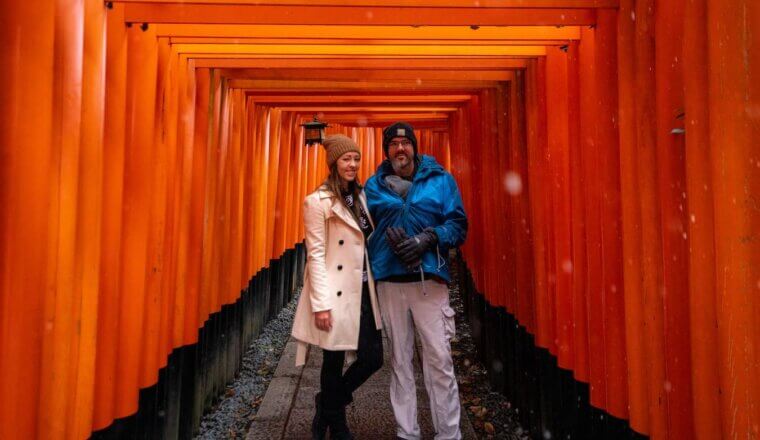
How to Travel Japan with a Baby
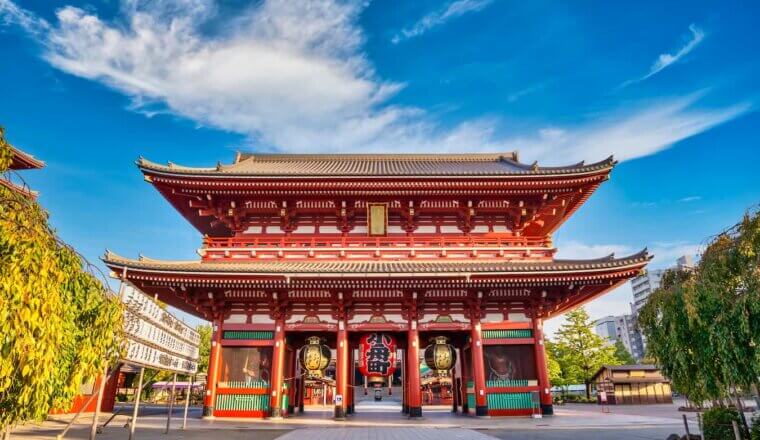
Where to Stay in Tokyo: The Best Neighborhoods for Your Visit
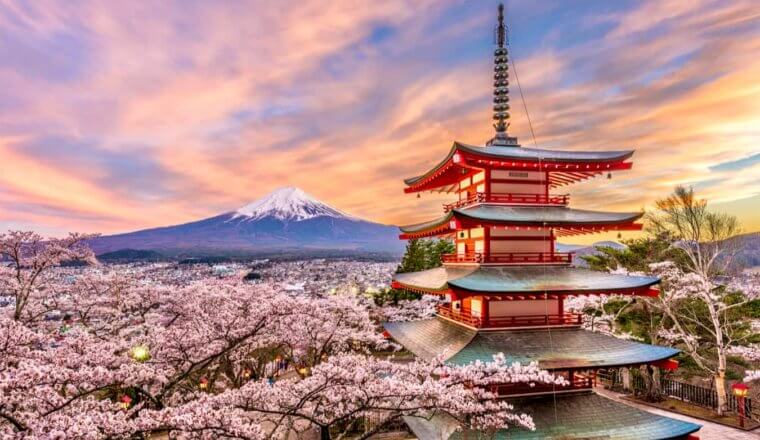
The Ultimate Japan Itinerary for First-Timers: From 1 to 3 Weeks
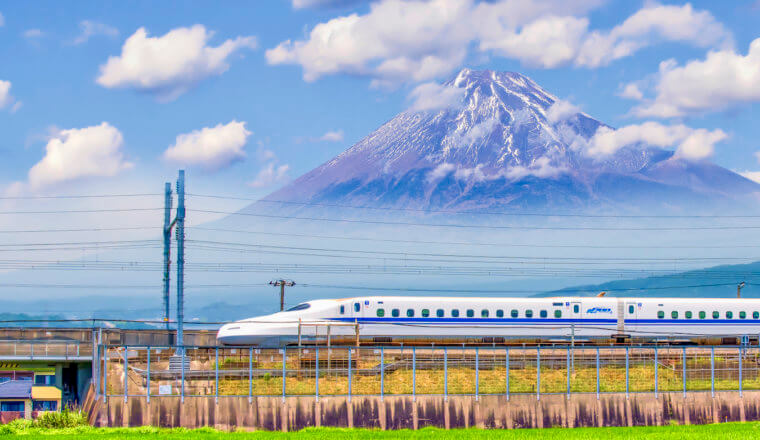
A Complete Guide to the Japan Rail Pass
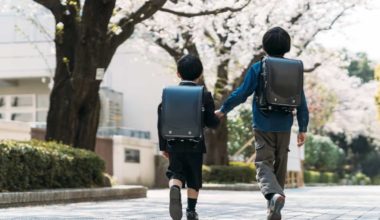
How to Teach English in Japan
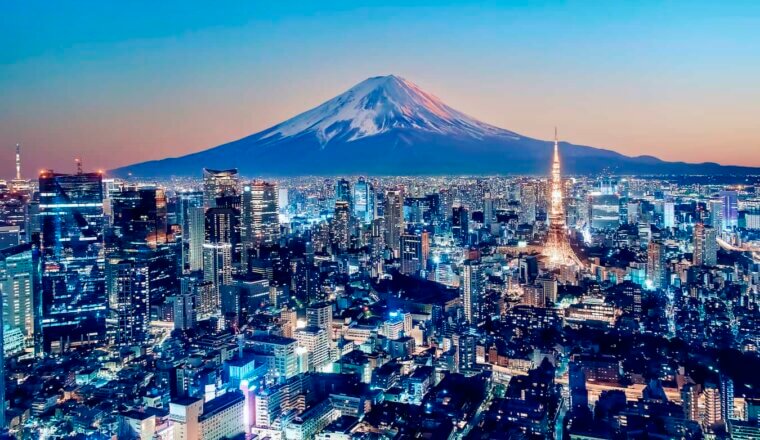
The 30 Best Things to Do in Tokyo
Get my best stuff sent straight to you, pin it on pinterest.
- Where To Stay
- Transportation
- Booking Resources
- Related Blogs

2 Week Japan Itinerary | With Budget and Top Tips
by Bex Band | Last modified on Mar 3, 2024 | Japan

I put together this comprehensive itinerary for 2 weeks in Japan based on my first time visiting the country (with a few tweaks based on my subsequent visits). I’ve shared what were the highlights and what you should leave out….specifically for someone visiting Japan for the first time. To make the planning as easy as possible for you, I’ve also included a budget breakdown and top tips for travelling in the country.
From cat cafes to cherry blossom picnics and robot shows to bowing deer….Japan is like nowhere else on the planet. It’s one of my favourite countries!
2 weeks isn’t a lot of time to explore Japan. Thankfully though, the efficient transport system makes it possible to fit in a lot during that time. Most visitors will have a budget to stick to as it is a pricey destination. So you’ll want to do a fair bit of planning to ensure make the most of your perfect Japan itinerary.
A few notes on my budget and travelling style
I’d describe my itinerary as energetic and diverse. I wanted to fit in as much of Japan as possible (while ensuring it wasn’t so fast you couldn’t get a feel for the places) with a good mix of city and towns, old and new.
I was travelling on a low-medium budget….with a splash of luxury. It’s really worth stretching the budget for a couple of top-end nights in Japan! If you are 2 people (as I was – travelling with my husband) often the price of a double in a simple hotel works out the same as 2 people in a hostel room.
A lot of the Ryokans (traditional Japanese Inns) also include meals so while they might initially seem expensive, once you’ve factored in the food, and the experience, they are actually quite reasonable.
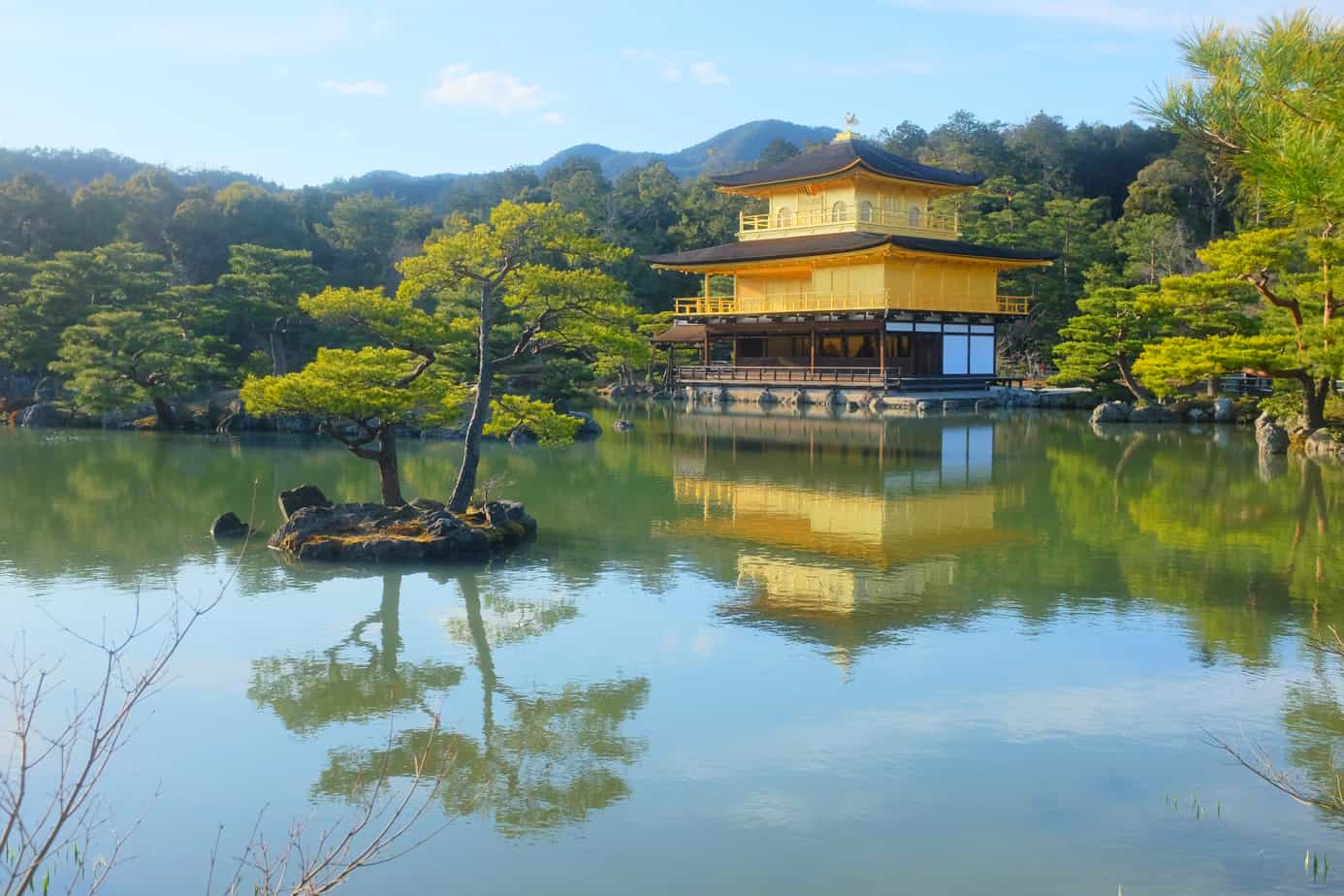
Before we start….
If you are new to this blog, I’m Bex Band – a full-time UK adventurer and founder of the women’s adventure community, Love Her Wild . I’m on a mission to make the travelling and going on adventures as easy as possible. You can read more about me here .
If you have any questions, please do use the comments box below. And for ongoing tips and inspiration, make sure you follow me on Facebook and Instagram.
2 week Japan itinerary
This is the exact itinerary of my 2 week Japan visit (note the changes I’d make below). Prices below from my Japan 2 week itinerary are all per night for 2 people sharing a double room (updated 2022). I made all the bookings online in advance.
- Tokyo – 2 nights
- Osaka – 2 nights
- Koya San – 1 night
- Miyajima – 1 night
- Kyoto – 3 nights
- Hakuba – 2 nights
- Yudanaka – 1 night
2 x nights TOKYO
What did we do: I used these 2 days to see the highlights of the city going to Shibuya park (and the crossing), taking a boat ride, seeing the markets of Asakusa and catching a show at the Robot Restaurant.
Where did we stay: Kiba Capsules Hotel – $45 A capsules hotel offering couples and single capsules. Such a great Japanese experience!!! Only worth staying here if you are a couple and looking to share as there are nicer capsule hotels available for singles. If you are looking for the best single room capsule you’ll want to check out Nine Hours .
If staying in a capsule hotel isn’t your thing I’d recommend the Knot Hotel Shinjuku ($75) which is in a great location and is a really nice hotel at a good price.
2 x nights OSAKA
What did we do: The first day I saw a sumo wrestling match and spent the evening in Dotonbori, a packed district full of restaurants, shops and lights. The second day I spent at Universal Studios.
Where did we stay: Drop Inn Osaka – $60 Basic private Ryokan rooms at an affordable price. It is a very modern hotel with a great location (walking distance from the station, which is handy) and helpful staff. I would definitely stay here again.
1 x night KOYA SAN
What did we do: This was my favourite place of the trip, don’t hesitate to visit. The journey initially seems complicated but was very easy and didn’t take long.
While there we saw the Okunoin Cemetery both in the day and at night (completely different experiences) and spent the rest of the time enjoying our temple lodgings with its traditional monk cuisine.
Where did we stay: Shukubo Fudoin – $240 (dinner & breakfast included) Incredible Temple lodgings with beautiful grounds, delicious vegan cuisine, a modern onsen and friendly monks. I loved staying here, it was a highlight of the trip. You can even join the monks in the morning to observe the morning prayer.
All the temples in the area are expensive but it is well worth the money. They also include an impressive breakfast and dinner experience.
1 x night MIYAJIMA
What did we do: We arrived on the island by early afternoon to get the cable car to the top of Mt Misen before watching the sunset behind the Torii gate.
Where did we stay: Coral Hotel – $65 (breakfast included) A simple western hotel right by the Miyajima ferry port, offering good views of the island. Basic but comfortable and cheap. We saved a lot of money by not staying on the island. The ferry is easy to catch and runs until quite late so I don’t think it’s worth spending the extra to be on Miyajima Island unless you really want to.
Another option would be to use Hiroshima as your base as you need to pass through here to get to Miyajima Island. You are then conveniently located for visiting the Atomic Bomb museum with more restaurant and nightlife options for the evenings. I’d suggest staying at Hatchobori Hiroshima ($120 breakfast included) for its convenient location.
3 x nights KYOTO
What did we do: On the way to Kyoto, we broke up the journey and stopped at Hiroshima to see the A-Bomb memorial and museum (taking about 3 hours total….it was enough time as it’s not an easy museum to take in).
We also stopped at Himeji to visit the castle (we had 3 hours in the castle). For both, you can use railway lockers at the train stations to store suitcases.
For our 3 nights in Kyoto, we hired an electric bike (about $15 a day) which provided a great way to see the never-ending temples and the palaces.
Seeing a Geisha dance was particularly memorable (only available during cherry blossom season. Tickets are hard to come by, but we used this website and asked them to organise the tickets for us). On our final morning in Kyoto, we visited NARA to see the giant Buddha and the bowing dear.
Where did we stay: Kyoto Tower Hotel – $110 A great value hotel for Kyoto which is an expensive city. The location near the station makes it a perfect base for exploring.
On a later trip to Kyoto, we stayed at Hotel tou nishinotoin kyoto ($70), a relatively new hotel that propped up in 2023. Its beautiful, comfy rooms and a beautiful hot bath.
If you want somewhere more budget then Piece Hostel ($50) is the place for you! There are also some really good Airbnb options in the area, which have the advantage of a kitchen, so you can save a lot of money on food as well.
2 x nights HAKUBA
What did we do: We arrived late in Hakuba, so we spent the evening enjoying the mountainous views and having numerous hot spring baths. The following day, I went to see the Olympic jump before having my first ever skiing lesson.
Where did we stay: Hakuba Onsen Ryokan Shiroumaso – $190 (breakfast and dinner) Just amazing! A really fantastic family-run Ryokan – don’t hesitate to stay here. This felt like traditional Japan with a lot of luxury. The food here was also great. I loved my stay here; definitely worth the price for a bit of luxury.
1 x night YUDANAKA
What did we do: We spent a night in Yudanaka, which is the closest town to see the famous Snow Monkeys. Check my review below, though, to hear my thoughts on the snow monkeys….you’ll probably want to skip this!
Where did we stay: Yudanaka Seifuso – $110 A very traditional family-run ryokan. The family don’t speak a word of English but are sweet and welcoming. The rooms were just ok. Being around the family was what made this stay nice.
What did we do: Returning to Tokyo, we spent the first day in Uneo Park, experiencing the cherry blossom in full bloom and all the festivities. The final day was spent at DisneySea – a lot of fun!
Where did we stay: Tokyo Hilton Odaiba – $220 Top, luxurious hotel – we like to finish our holidays in style. A comfortable location for the bay, close to Disney, offering a free shuttle. Well worth splashing out on. With a rooftop infinity pool (AMAZING), phenomenal service and the biggest breakfast layout I’ve seen.
What would I change?
We managed to fit in a lot more than I thought was possible because trains are just so quick and easy. They are also very comfortable and clean so I didn’t feel tired from the long journeys.
The train station lockers are great for fitting in quick stops to see sights along the way without needing to stay overnight.
This 2 week Japan itinerary was busy but I felt like it was a good pace. The hot onsen most evenings meant that I felt like I got lots of relaxation time even though most days we were on the move and seeing lots.
Koya San, although a bit tricky to get to, really is a definite. Miyajima makes a great day out, but I wouldn’t spend any more than a day there.
Hakuba also turned out to be really fun, and I loved skiing, seeing the mountains and also experiencing a different side to Japan. If you weren’t keen on skiing, though, I would skip Hakuba in favour of Kanazawa.
The biggest disappointment was Yudanaka . It was expensive to get to (it wasn’t covered by the JR Pass) and took a long time. The monkeys themselves are in a grotty area, and there really is nothing else to do in the area. They throw rice into the pools to make the monkeys go in them as it wasn’t that cold when I was there. Don’t go – it’s not worth it!

If I dropped Yudanaka and Hakuba from the 2 week Japan Itinerary, I would have spent the extra days in Kanazawa visiting the famous garden and art museum with an overnight visit to Shirakawa-go and Gokayama on the way back to Toyko (see my suggested alternative Japan 2 week itinerary below).
Some people suggest spending more time in Tokyo and Kyoto. For me, 3 days exploring both was enough time. Although there was more I wanted to see in Kyoto, it is also very touristy, so I was happy to have a change after a few days.
Alternative Japan 2-week itinerary
With all that in mind – if you weren’t desperate to see the snow monkeys or try your hand skiing, then this could be an alternative itinerary:
- Koy San – 1 night
- Miyajima – 1 night (staying in Hiroshima and doing Miyajima as a day trip)
- Kyoto – 3 nights (day trip to Nara)
- Kanazawa – 2 nights
- Shirakawa-go and Gokayama – 1 night
Travel insurance for Japan
On my most recent journey, my luggage was misplaced during the connecting flight to Tokyo, resulting in me spending the first five days of my trip without my checked bag. Fortunately, the airport located my bag and sent it to my hotel. This experience underscores the crucial importance of travel insurance. It’s advisable to purchase it as soon as you book your flights.
World Nomads Travel Insurnace
It’s important that you have travel insurance for your travels. World Nomads are a travel insurer that I’ve used multiple times before for my adventures. World Nomads covers more than 150 adventure sports and activities and worldwide coverage.
I’m part of World Nomads’ affiliate program (which means I get a small recommenders fee if you choose to use them, at no extra cost to you). Get a quote here .
When is the best time to visit Japan?
The most obvious answer is Spring to see the cherry blossom. Although it was busy, it was mostly with Japanese tourists who were quiet and considerate, so the crowds didn’t feel too much.
It is well worth going for the blossom as it makes the whole country look so pretty and there is a real sense of excitement and celebration. It will also give you an opportunity to see the Geisha Spring Dance. Weatherwise it was sunny and pleasant but still a bit cold. Most days I was wearing my coat. It didn’t rain once while we were there.
Japan has very defined seasons. Summer can get very hot and uncomfortable and winter can be bitterly cold, even snowing. For this reason, Autumn is a more comfortable time to travel if you don’t want to go in spring. The Autumn colours across the country are also very pretty!
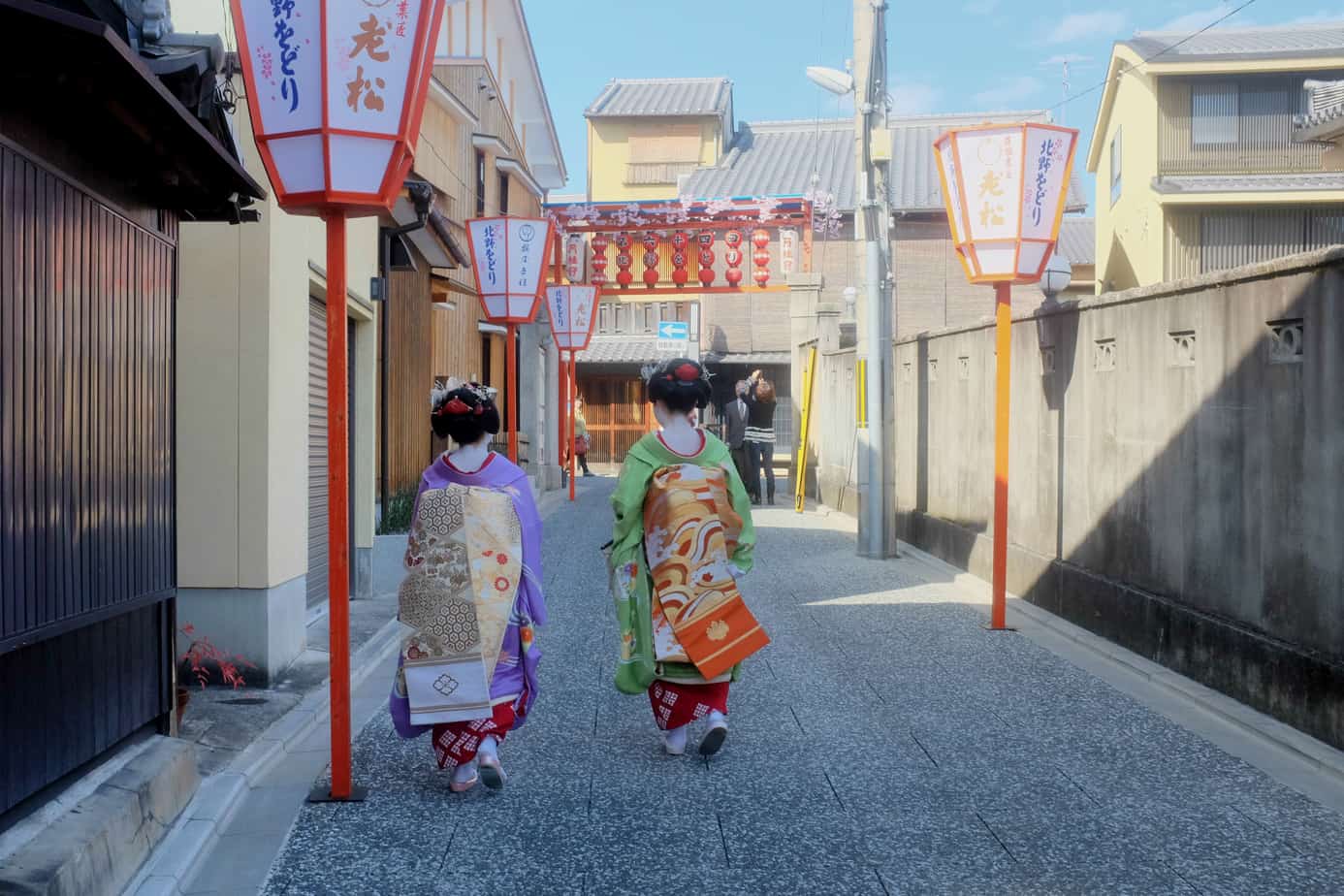
Japan Rail Pass – a must!!
The trains in Japan are very expensive. But if you are a visiting tourist, you are eligible for a Japan Rail Pass. Getting this card is a no-brainer. It will give you unlimited travel across most of Japan’s rail network, allowing you free access to visit all the major places – Tokyo, Kyoto, Hiroshima, Kanazawa, Osaka, etc, etc.
The cost for the pass is:
7 Days – $279 14 Days – $445 21 Days – $570
To get a railcard, just follow this link and purchase the length of time that you want. Do this in advance of your holiday. When you arrive in Japan, head to the JRP help desk (you’ll find them in airports and train stations) and swap your receipt for your bass booklet. There can sometimes be a bit of a queue so factor this in.
I’d suggest reading this helpful guide to using the pass, which says where you can exchange your pass, where it is valid and how to reserve your seats. It is helpful to reserve seats if you can (it’s easy to do) as some of the journeys we took were busy, and we would have been standing otherwise.
How much does 2 weeks in Japan cost?
The budget below is based per person for the entire 2 week Japan Itinerary laid out above.
The accommodation, which was double rooms shared between 2, has been split in half.
Our accommodation was a mix of budget stays with a few nights of luxury. We didn’t hold back on tickets or events…they’re just too good to miss. Food-wise I was more on the lower end budget (especially as I am a vegetarian) – eating from bakeries, supermarkets, and street food to save costs – with a few exceptions on expensive set menu meals.
Japan being expensive is a bit of a misconception!
I was really surprised by how cheap the holiday worked out to be. The Japan Rail Pass meant that we were able to travel a huge amount at a set price (we definitely got our money’s worth!) and most of the attractions we visited (like temples and museums) only cost a couple of pounds to go in or were free.
It’s not what you would call a cheap destination but it also wasn’t crazy expensive. I found it cheaper than London prices.
Breakdown of budget for 2 weeks in Japan:
Flights (from London to Tokyo return, via Warsaw on using Lot airlines)- $830 Accommodation – $870 Transport (14-day Japan Rail pass) – $360 Food (Daily cost averaged $30, which in most cases was street food lunch/snacks and a low-average priced dinner) – $420 Sumo Wrestling tickets – $80 Geisha Dance Tickets – $60 Universal Studio Tickets (with express 7 pass) – $80 DisneySea Ticket – $60 Skiing (equipment hire, lift pass and a private 2-hour lesson) – $150 Daily costs (averaging $20 a day for entry to temples, drinks, and small souvenirs) – $280
TOTAL – $3190 (roughly £2,553)
Top tips for visiting Japan
…….Buying the tickets in advance is essential as everything sells out – but problematic because the sites are all in Japanese. We used Buy Sumo Tickets who were brilliant. Not only did they get us sumo tickets but they also brought our Geisha show and Universal Studio tickets for just a small fee.
………I struggled with the food, especially as I am a vegetarian and wish I had brought some snack bars with me to save me the hassle of finding something for the journeys. The supermarkets are bizarre and I often had no idea what I was buying!
……….vegetarian? It’s not an easy country to be veggie in. Check out my Guide to being a vegetarian in Japan for some top tips.
…….If you eat fish, bento boxes are great. These are packed lunches that you can buy for journeys or picnics. You can get them from stall holders and shops in rail stations and shopping malls.
……Tipping is not the done thing in Japan and is even considered rude.
…..Ryokan’s are traditional Japanese inns. You should try to stay in at least one for the experience. They are often cheaper than in Western hotels. I can also recommend checking out Airbnb, especially for longer stays, if you are trying to save money.
……If you stay in a ryokan, you will need to take your shoes off before entering either the building or the room. There will be slippers available for you to use and somewhere to store your shoes.
……I was surprised that barely anyone spoke English. People are incredibly kind and helpful, though, so I never got stuck. If there is something you need to communicate (like eating preferences), get someone with good English to write it down in Japanese on a piece of paper that you can show people.
……Unless you are happy being naked in front of other people, you will need to book hotels with private onsen which are considerably more expensive. The Japanese are incredibly polite and discrete so public bathing isn’t daunting. Learn the etiquette before you go through it.
…….There are lots of new customs to get used to in Japan but don’t worry about offending people. The Japanese are very forgiving and understanding!
……..I’d recommend reading these books before heading to Japan:
- Lonely Planet Japan – offers the most comprehensive guide to travelling around Japan
- Memoirs of a Geisha – the streets of Kyoto come alive in this gripping story told from the perspective of a Geisha living in Japan
- Shogun – another gripping international bestseller set in Japan!
- Death Note – anime is everywhere in Japan and is read by people of all ages. Don’t knock it till you’ve tried it! The Death Note series is a really good anime book to start with.
You can stay updated with my adventures and advice on Facebook and Instagram . Or you can subscribe to my YouTube channel . I give all my advice for free on my website. If you want to say thanks, you can buy me a coffee !
Good luck with your Japan travels……please use the comments below to ask questions or to let me know how you get on 🙂

- Follow Follow
24 Comments
Great post!
Thanks Explore 🙂
Really useful post, thank you. Your travelling style is very much like ours, a mix of local and luxury.
Thank you Carole…I’m glad it was helpful! I think a mix of local and luxury makes for the perfect hol. Enjoy Japan!! 🙂
I really liked the info here thanks. I am thinking of visiting Japan next year alone but I’m a fit 72 and wondered if you, as an experienced traveller to Japan, could advise if would be okay with the travelling and also the hostel accommodation. I would appreciate any comments you may have thanks Tess
Thank you Tess. Absolutely….I can’t see any reason why you can’t travel Japan and use the hostel accommodation. Japan is very clean and comfortable no matter what budget level you use! Most of the travellers I met there were a little older. Good luck with your trip. Japan is a brilliant country! 🙂
Thanks Bex. I love traveling alone as I find I meet more people that way and get a better insight into the culture and people. When I go I’ll let you know how I get on thanks again
I think so too! Do let me know how you get on 🙂
Hello Bex, as I am planning a trip to Japan, I made a search and your site popped up. Not only did I find this post particularly useful, but I found your whole site very enjoyable. You have a very nice writing style, keep it up! Cheers Ged
Thank you so much Ged!! Your kind words made my day 🙂
Good blog thanks, very useful tips. Had a couple of gripes about grammar but hey I am the grammar police! Thanks for the insights. Not sure about if it’s worth buying a JR pass if you don’t want to run from one place to another, still weighing that up. Hoping to go to Japan in the fall.
I’m dyslexic so there’s not much I can do about that I’m afraid! It’s probably worth calculating the cost of individual journeys you may take and then comparing it to the railcard. Usually the railcard works out cheaper even if only for a couple of day trips.
Hey, thanks for this post! Maybe I missed it but I wasn’t sure what currency your budget was? Is it USD?
Budget is in USD 🙂
Very informative! Thanks!
Thank you Joanne. Really happy it was of help! 🙂
Hi. We’re planning a trip to Japan for my birthday. This is really helpful. Thank you. Quick question though… is the $2300 per person or for both of you already? Thanks in advance for your reply. ^^
Glad it is helpful! It was $2300 for each of us….so $4600 in total for 2 🙂
Great post! Thanks for sharing the knowledge and keep up the good work.
Thank you Brian!
I’ve been looking around at a bunch of different websites and they say around $4,000 per person, but you say about $2,300 per person. Would it be a better trip if a saved more than what you had?
It’s hard to say as traveling is always very personal. We did a mix of cheap places and then splashed out in some luxury places. So it would depend on your spending habits. I didn’t feel like I needed to spend any more money though.
I’m planning my first trip to Japan in November, and I think I will follow a similar itinerary to the one you propose (skipping the monkeys!) so I was delighted to find your very informative post 🙂 I have one question: did you go straight from Koy San to Miyajima, or did you stop in Osaka or Hiroshima in between? Many thanks!
We stopped in Hiroshima to see the museum then stayed at a hotel by the ferry port to Miyajima. You can get from Koya San to the island in a day but accomodation on Miyajima is very expensive so it’s cheaper to stay in Hiroshima.
Submit a Comment Cancel reply
Your email address will not be published. Required fields are marked *
Submit Comment
Related Posts
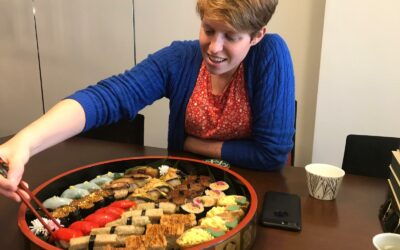
Vegan & vegetarian in Japan | Ultimate Guide (2024)
Being a vegan or vegetarian in Japan is definitely not easy at times. I knew that fish featured highly in Japanese cusine, but it amazed me just how...
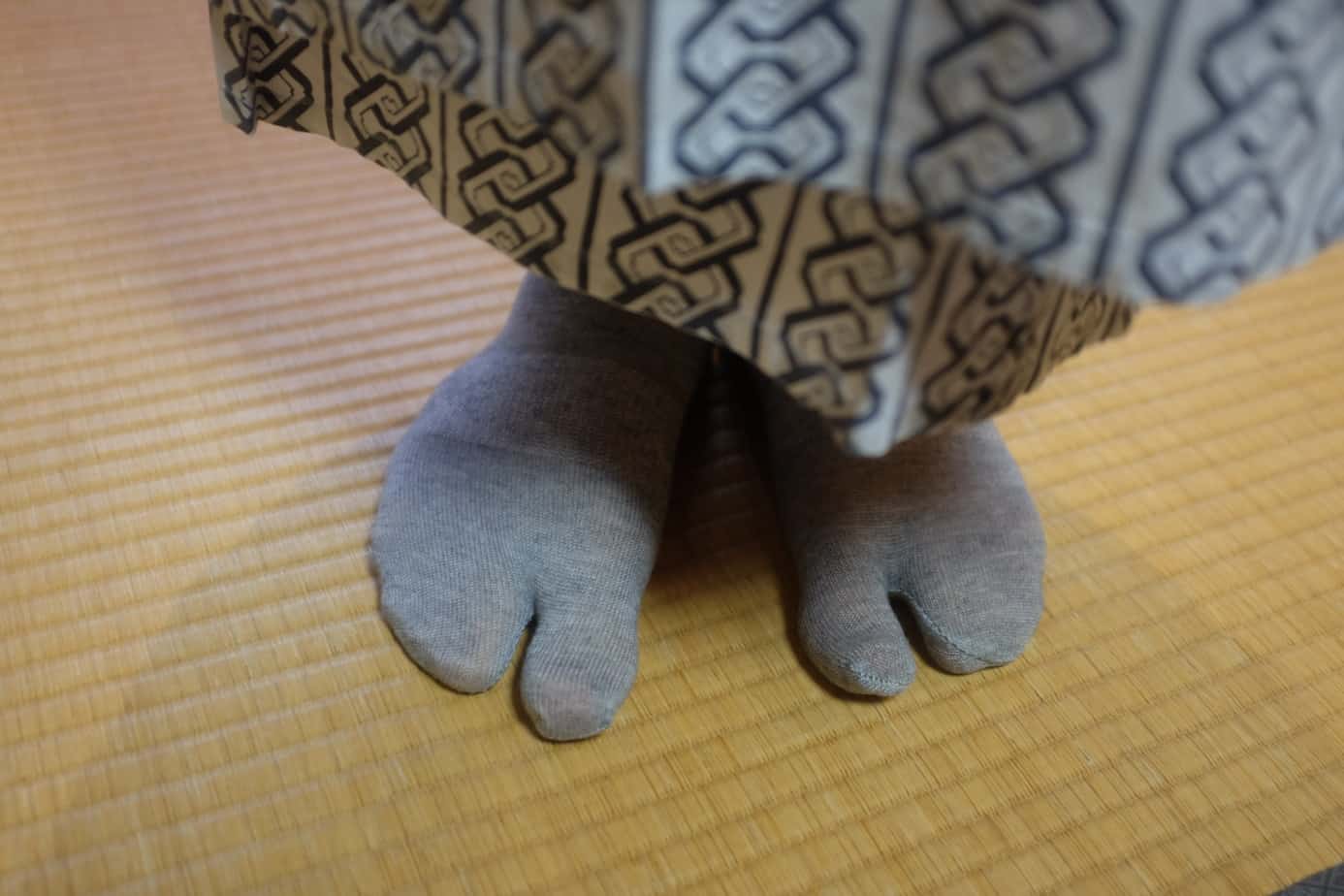
Japan: Hakuba, the Snow Monkeys and Tokyo
Catch up with the final travel Journal from our 2 weeks trip to Japan (for a full breakdown of our itinerary and budget, check out Japan itinerary 2...
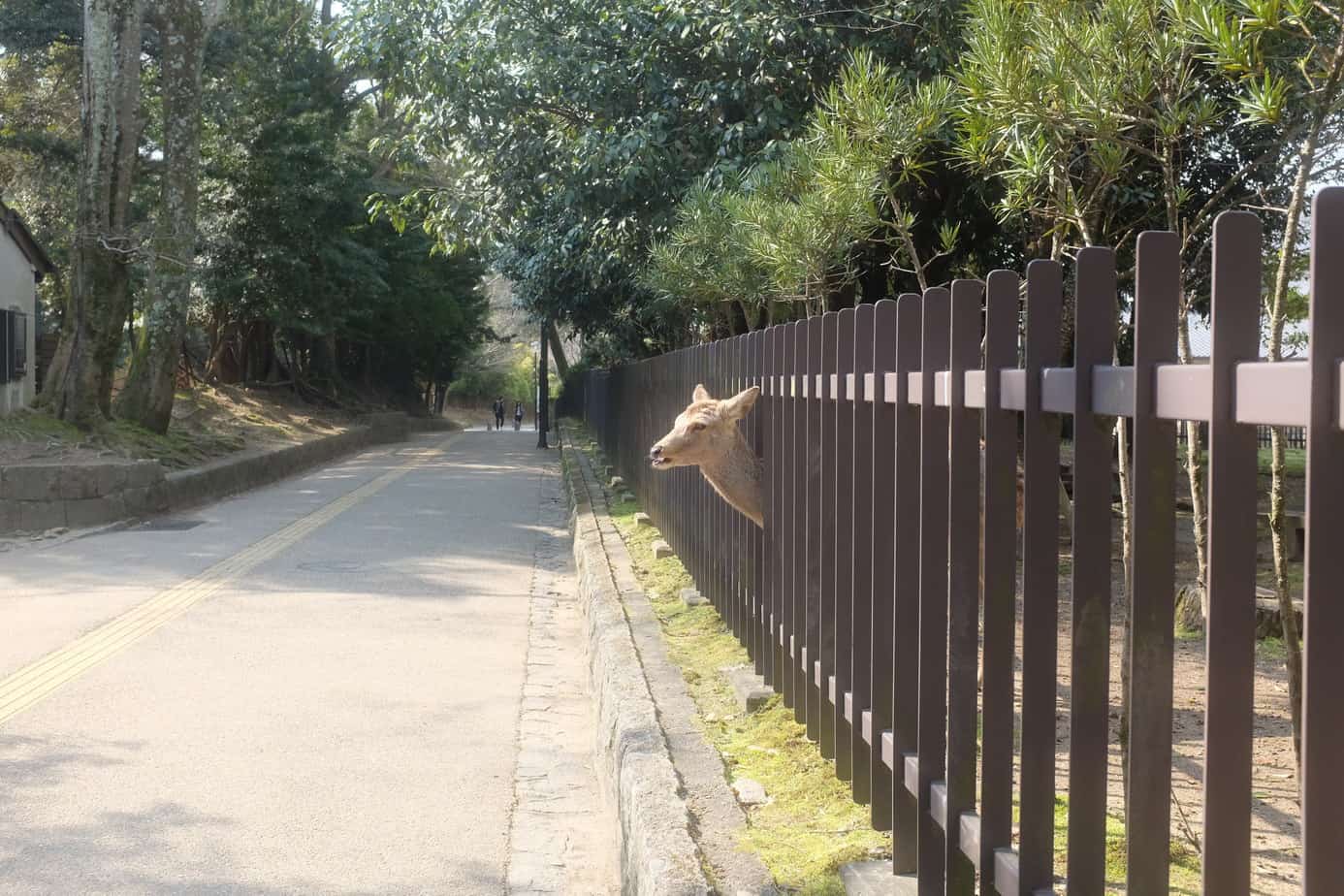
Japan: Miyajima, Hiroshima and Kyoto
This is my second journal from my 2-week visit to Japan. For a full breakdown of our itinerary and budget, check out Japan itinerary 2 weeks. We had...

Adventures, updates and tips to your inbox!
Join over 3,500+ others and subscribe to my newsletter., you have successfully subscribed.
By subscribing, you consent to the processing of your personal data in according with our privacy policy - link in the footer.

Japan on a Budget: The Complete Guide to Cheap Travel in Japan

How to Travel Japan on a Budget: The Only Guide You’ll Ever Need
Is is possible to travel to Japan on a budget? Definitely! Japan is one of the most fun and amazing travel destinations in the world. However, many travelers are reluctant to plan a trip to the Land of the Rising Sun because of the cost.
Known for being an expensive place to visit, many Japan lovers give up when they hear how much it costs to travel to Japan. In doing so, they miss out on the trip of a lifetime. It’s true that Japan has tons of luxury hotels, world-class restaurants, and first class transportation options that cost more money than most people’s mortgages.
However, Japan also has lots of cheap lodging, amazing food, and transportation options that are very easy on the wallet. In fact, Japan can be one of the CHEAPEST destinations to travel on a budget. If you want to visit Japan on a budget, this article will provide you with all of the tips, tricks, and advice to save you as much money as possible.
How to Get Cheap Flights to Japan
While it is possible to visit Japan by boat (namely from Australia, China, Taiwan, and Korea) the vast majority of visitors choose to go by air.
If you live in one of these nearby countries and have LOTS of time, check out your local boat companies for deals. Sometimes they sell last minute tickets at a fraction of the cost.
However, it’s almost always more efficient to travel by air.
So here are 5 tips to getting the cheapest airline tickets to Japan.
5 Tips to Find Cheap Flights to Japan
1. book as early as possible.
When searching for a flight to Japan, booking as far in advance as you can is best. Waiting until the last minute to grab reduced price tickets can certainly pay off, but it’s a big gamble if the tickets sell out (which happens more often than not).
You’re better off by being prepared, planning in advance and choosing to visit Japan at a cheaper time of year.
I usually buy my tickets at least a month before my travel date. I found that this is the latest I can wait before tickets sell out or really get expensive.
2. Avoid Peak Periods of Travel: Peak Times

Not only does the cost of airfare increase during peak times of travel in Japan, but hotels, attractions, and even restaurants raise their prices as well (usually buffets or nice restaurants that offer things like “special” holiday menus). If possible, try to avoid these peak travel times in Japan if you are on a tight budget:
- Golden Week: End of April – start of May
- Cherry blossom viewing: Late March – early May
- Summer: Mid-August is the busiest due to the Obon Festival
- Autumn: Changing colors of leaves (busiest time is late September due to Silver Week, a period of national holidays grouped close together)
- Spring: The end of March – the beginning of April. School children are on spring break, and lots of families travel during this time
- New Years: A popular time to travel during this time (domestic and international)
3. Cheapest Time to Fly to Japan
Here are the dates that generally have the cheapest flights to Japan
- Early to late December (before New Years)
- Just after the New Year holiday ends (people are usually back to work by January 5th) up until the end of March. However, Hokkaido has lots of visitors during this time due to all of the incredible ski slopes and winter foods. The world-famous Snow Festival also takes place in early February, which makes finding a cheap ticket to Hokkaido difficult.
- Mid May – June is also a cheaper time to visit.
While the winter season might not be the best time to visit Japan in terms of weather, you’ll usually save money on plane tickets. Winter foods in Japan are absolutely delicious as well. Delicious hot pot dishes, fresh crab, and other seafood are especially delicious in winter.
If you want all of the details and insiders tips on when to visit Japan, check out our best time to visit Japan guide.
4. Check for Internet Deals
Or course you could get cheap airlines tickets by choosing non-direct flights with long, inconvenient waits in between. But who wants to do that? Sure, you can save some money, but you’ll be giving up a lot of time and comfort by doing this.
Before going this route, spend an hour or two searching the Internet for the best deals. You can decide if a reduction in price with a 12-hour wait in some random airport is worth the inconvenience.
How to do Internet Research for Cheap Flights to Japan
Here are the steps I use to find the best deals to Japan:
1. Determine Both Your Budget and Which Airlines Companies You Want to Use
Of course, if you are willing to fly with any airlines, you’ll have the best chances of finding a cheap flight. However, I highly recommend you only use reputable carriers. There are lots of airlines with cheap flights to Japan, but they usually have very long layovers or delays, poor service, and safety issues.
Sometimes, it’s just not worth the risk. So to minimize your chances of having a bad flight, go with a reputable airline company. Airlines that fly to Japan differ depending on where you live, but I like Hawaiian Airlines, Japan Airlines (JAL), All Nippon Airways (ANA), and Korean Airlines.
2. Always Check Your Favorite Airline Carrier’s Website First
I always check the Hawaiian, JAL, and ANA Airlines website first. Most of the time, I find the best deals directly on their website.
Booking directly with the airline carrier is usually safer and more secure than booking with a third-party company. Be sure to check the prices often, as they can change frequently.
If the prices are high, proceed to step 3.
3. Do a Quick Search for Ticket Prices on a Multi-Search Website like Kayak.com
Other websites such as Skyscanner, Expedia, Jetstar, Kayak, Lastminute, and Farecompare are also good places to analyze ticket costs. Remember that flight costs will depend on where you’re flying from. Heading out from a major “hub” airport rather than a local one will certainly cut costs.
These websites search hundreds of travel sites and find the cheapest tickets out of all of them. Filter the searches by the airline carrier and how many layovers you are willing to have on your trip. Be sure to check the prices for different dates. Sometimes traveling just 1 day later can drop the prices significantly.
NOTE: I just do this to see what the average prices are for that dates of travel. I DO NOT purchase my tickets through Kayak unless there is an amazingly good deal though a REPUTABLE company. While there are usually cheap tickets that show up in the results, most of these are either a) flights with LONG layovers or b) flights listed by bad, untrustworthy third party companies.
In my experience, many of the companies that are listed on their website aren’t very trustworthy. Many of them have very bad reviews, with some even having complaints filed against them. Stick with the bigger companies like Expedia. Just use it to check the prices of the airlines you want to fly on.
4. Consider Buying a Ticket from Another Country or with a Different Currency
Choose the best 3 or 4 itineraries you found on Kayak/Expedia/Priceline/etc. I usually have the best results with Expedia.
At the bottom of the Expedia website, there’s a section called “Global Sites” with pictures of flags of different cultures. Choose a different country and search for the same flight. The ticket prices might be lower if you book it through another country with Expedia.

5. Fly into a Different Airport in Japan

If all of the flights to your desired airport in Japan are crazy expensive, consider flying to a different airport and then using the JR Rail Pass to take the train the rest of the way. If you don’t mind having a longer trip, the JR Rail Pass is a good way to cut costs.
You can fly into another major airport in Japan and then cash in your rail pass at the nearest participating station. Then you can take the bullet train to your desired location. While this does take more time, it can save you money and is much more fun that riding an airplane.
The seats on the bullet train are much more spacious than a plane and are much easier to travel. The only downside is that the bullet train doesn’t have space for big pieces of luggage.
Transportation in Japan: Saving Money on Domestic Travel
Finding a cheap way into the country is only half the problem. Domestic travel within Japan is also expensive. Of course, you could explore only one or two cities, which can cut costs dramatically by only paying local fares, especially if there are city passes available.
What makes Japanese so awesome is traveling to different areas to eat local foods and to experience the culture throughout Japan. If you want to explore many places in Japan, purchasing a travel pass will be your best bet. These passes can save you both time and money if you plan to travel a lot in Japan.
The JR Rail Pass: The Best Deal in Japan

The Japan Rail Pass is essential if you want to experience all that Japan has to offer. This pass allows you unlimited rides on most JR trains, including the bullet trains, as well as some JR buses and the JR ferry to Miyajima.
This pass opens up the whole Japan to you. You’re free to travel wherever, and whenever you want. I highly, highly recommend getting this pass.

This pass also makes traveling much easier. You don’t need to research ticket prices or deal with buying or keeping track of your tickets for each trip. Just walk on through the gates on the side and show your pass to the attendant.
Also, if you don’t mind sitting in the unreserved area, you can walk straight onto the train too – although reserving specific seats ahead of time is certainly recommended for busy times/seasons/routes.
How the JR Rail Pass Works
IMPORTANT: You can’t buy a Japan Rail Pass while in Japan. You must purchase your pass before you arrive in Japan. The pass is only for those on a tourist visa.
Also, keep in mind that the JR pass cannot be used on every type of transport. For example, you cannot ride the NOZOMI or MIZUHO type bullet trains using a Japan Rail Pass. This isn’t usually a problem, though.
The NOZOMI trains travel the exact same route as other types of bullet trains but only stops at major stations. A full list of what you can and can’t use the pass for can be found on the rail pass website .
JR Rail Pass Prices
There are two types of pass you can buy. A “green pass” allows you to sit in the first-class section of the train. However, not every train has a green car (first class section). The “ordinary” JR Rail Pass is the more economical option. Both of these passes can be used to make seat reservations for the bullet train.
Passes are available for periods of 7 days, 14 days, or 21 days. The countdown will start on the day you activate your pass. You do not have to activate it as soon as you arrive in the country. You can redeem it anytime during your trip.
Just take your rail pass voucher to a JR Station that can redeem it. A list of places should be included on a sheet with your voucher. However, most big, urban JR stations can activate your rail pass.
JR Rail Pass Prices (2017)
Prices for adult “original” passes:
- 7-day pass: 29,110 yen
- 14-day pass: 46,390 yen
- 21 day pass: 59,350 yen
Prices for child passes (age 6 to 11):
- 7-day pass: 14,550 yen
- 14-day pass: 23,190 yen
- 21-day pass: 29,670 yen
The passes may seem expensive but can save you an incredible amount of money if you travel a lot during your trip. A round-trip ticket from Tokyo to Kyoto would already cost 28900 yen, nearly the full price of a one week pass.
A typical 7-day trip for tourists would look like this:
- Days 1&2: Tokyo
- Day 3: Osaka
- Days 4&5: Kyoto
- Day 6: Hiroshima
This itinerary would cost you 41,640 yen, not including all of the local trains you’ll ride within these cities. If you were to return to Tokyo from Hiroshima, the total cost would be 60,200 yen, which is more expensive than a 21-day pass.
If you plan to visit more than one city by bullet train on your trip to Japan, a rail pass is an absolute must.
Where to Buy the JR Rail Pass
There are a few different agents you can use to order your Japan Rail Pass. Be sure to check the details. Some airlines sell rail passes, but you must book your airlines ticket with them as well.
Here are some of the main agents through whom you can purchase the pass: Tobu Top Tours, JTB Corp., KINTETSU INTERNATIONAL, Japan Airlines, Nippon Travel Agency, ANA Sales Americas (Los Angeles), and JALPAK. Check the website for details on how to purchase a rail pass.
Special Passes to Save You Money on Travel in Japan
As well as the Japan Rail Pass, there are other special tickets and passes you can buy to cut costs on your trip to Japan. Some tickets are regional, but others can be used all over the country.
Seishun 18 Pass

This is another offer from the JR (Japan Rail) company. This ticket is similar to the Japan Rail Pass, but it is more limited. However, the reduced cost makes this pass a great option if you’re trying to travel on a budget (and have lots of time).
The Seishun 18 ticket is a seasonal offer only. You can use the ticket for a 5 day period during the spring (early March to early April), summer (mid-July to early September), or in the winter (early December to early January). The exact dates are released when the tickets become available.
You can use this pass for unlimited travel on all local and rapid JR trains. You cannot use it on Shinkansen rides (bullet train) or on limited express travel.
The Seishun 18 is a 5-day ticket, costing 2,370 yen per day – a total of 11,850 yen.
A fraction of the price of the Japan Rail Pass, this is a great option if you want to do lots of little trips or one or two big journeys during the 5 day period. Interestingly, the ticket can also be shared between up to 5 people. You could have use of it for one day each and your friends could use it the other days.
Where to Buy the Seishun 18 Pass
You can buy the Seishun 18 ticket in the JR East station travel centers, or at JR Ticket Offices. Advance booking is available. Dates for when the passes go on sale are listed on the website along with the details, which usually becomes available from 1 to 3 weeks before the pass becomes available.
Hakone Free Pass
Hakone is an amazing place to visit. It is filled with stunning natural beauty, especially when the autumn leaves change and the cherry blossoms bloom in the spring. Whatever the season, Hakone is a wonderful place to visit. Amazing hot springs, outdoor walks, mountain hikes, surrounded by peace and quiet. It’s pure bliss.
The Hakone Free Pass is a must for people heading out that way. It gives you free travel on eight different types of transport in the Hakone area for a 2 or 3 day period, as well as discounted entry to dozens of attractions, including hot springs, museums, galleries, historical sites, parks, restaurants, shops and more. A full list is available on their website .
The Hakone Free Pass has different prices depending on where you depart from.
While you can get passes that are valid from Machida and Odawara, most travelers start their journey at Shinjuku. However, if you are heading off from one of the other two locations, be sure to check out the details as those tickets are a little cheaper.
From Shinjuku:
2-day adult pass: 5,140 yen
3-day adult pass: 5,640 yen
For children:
2-day pass: 1,500 yen
3-day ticket: 1,750 yen
Where to Buy the Hakone Free Pass
Hakone Free Passes can be purchased at any Odakyu line station, including Odakyu line ticket machines.
JR Tokyo Wide Pass

If your trip to Japan will be focused in and around Tokyo (there is so much to do there that you could easily spend your whole holiday there) then you should consider buying the Tokyo Wide Pass.
This 3-day ticket offers unlimited travel in Tokyo and the surrounding Kanto area. Including both the Narita and Haneda airports, you can pick up your pass on arrival, and it will cover the cost down into central Tokyo, and everything else for the rest of the period of validity.
Like the Japan Rail Pass, this ticket is only available to people with a tourist visa. As it is only valid for 3 days, you could easily get yourself one of these passes to use for a few days in Tokyo, then after that head off around the rest of the country using a Japan Rail Pass.
The 3-day pass is 10,000 yen for adults and 5,000 yen for children aged 6 to 11.
Where to Buy the JR Tokyo Wide Pass
You can buy a Tokyo Wide Pass at the JR Ticket Offices and JR Travel Agents located in the Haneda International Airport and in the Narita Airport Terminals 1 and 2, and 3.
The passes are also available at JR travel centers and general travel service centers at various locations, including Shinjuku, Tokyo, Ueno, Shinagawa, Shibuya, Ikebukuro, Yokohama, and Mito. Check the website for details.
Domestic Air Travel
Train passes are good for people who want to travel a lot, but what if you only want to explore one or two areas? While the rail passes are, on the whole, cheaper than buying individual tickets, they are still quite costly if you aren’t going to be getting a lot of use out of them. So if this applies to you, take a look at budget local airlines for domestic travel.
Low-Cost Carrier (LLC) Flights

Several airlines in Japan offer flights to various locations, and often at a fraction of the price of the same journey by train. Of course, you need to factor in all costs to make sure you’re getting the best deal. Keep in mind that getting to the airport might involve time-consuming/costly trips on the subway or train.
However, this depends on the city. For example, in Fukuoka, the airport is only a 5-minute subway ride away from the central train station.
Two of the most well-known budget airlines in Japan are Peach and Jetstar.
Both of these airlines fly to a variety of locations, including Tokyo, Osaka, Sapporo, Kagoshima, Fukuoka, and Nagasaki.
Other popular domestic airlines include JAL (Japan Airlines) , ANA (All Nippon Airways) , Skymark Airlines , Vanilla Air , Spring Airlines and Solaseed Air .
Taking a plane instead of a train, even for a short journey, can make a huge difference in price.
For example, reserving a seat on the train from Kumamoto to Tokyo will cost a total of around 27,000 yen (and take about six hours!) whereas the same journey by plane (using Jetstar airlines) will cost less than 7,000 yen.
Taking the train from Kagoshima to Osaka will set you back around 22,000 yen, vs. a flight on Peach Airlines can cost you less than 6,000 yen. That’s a huge discount!
Special Airlines Discounts
If you prefer to take Japan Airlines or ANA Airlines, here are a couple of special discounts you can use.
JAL: Special Japan Explorer Pass – 10,800 yen flights to over 30 different cities in Japan.
Restrictions: Only for short-term visitors. Must have a ticket leaving Japan to be eligible for this special pass. You also need to purchase these flights directly through the JAL website.
ANA: Experience Japan Special Fares : 5,500 yen flights to cities within Hokkaido, or 7,700 – 11,000 yen flights for any other destinations.
Restrictions: You need to reside outside of Japan, have a passport from a country other than Japan, and have an international ticket leaving Japan.
Traveling by Bus

Probably the cheapest way to travel long distances in Japan is by bus. Taking a highway bus is not the most popular option, but can be a great way to save money on both short and long trips.
A popular bus provider is Willer Express. You’ll be surprised to know that you can make online reservations in English when booking through Willer Express. Most other bus companies don’t have online or English reservations.
Other companies to look into are Japan Bus Online, Hankyu Bus, and JR Bus branches (split into eight regional companies).
Insider’s Tip
Most bus companies offer different types of seating for overnight buses. These range from the cheapest 2-seater style seats (think of an American school bus) to super comfortable individual seats.
The price difference is significant, but if you’re taking a long bus (over 8+ hours) I highly recommend that you purchase a better seat. The buses with 3 seats per row are very comfortable. The seats are not connected, which makes it feel like you have your own personal space.
I took an overnight bus from Kobe to Tokyo on Willer Express with the cheapest seats (which was only 2,500 yen or so). While the bus looked new and the ride was smooth, it was the one of most cramped, cold (it was during winter), and uncomfortable experiences of my life. The better seats were 2 to 3 times more expensive, but I would definitely purchase those seats next time. These upgraded seats would still be much cheaper than taking a bullet train.
Taking the bus can also save you on money on hotels. You can sleep on overnight buses that run late into the night.
Japan Bus Pass
If you plan on traveling all around Japan, consider the Japan Bus Pass.
This pass can be used on all daytime and overnight buses provided by Willer Express. There are 3-day, 5-day, and *7-day passes, with 2 different prices depending on if you’ll be using it from Monday to Thursday or over a weekend period. A 3-day Monday to Thursday pass costs just 10,200 yen.
*NOTE: The 7-day pass is only valid during Monday – Thursday, but you don’t need to use the 7 days consecutively.
There are a few rules. The pass can be used for up to 3 rides per day, but you can’t use it on premium buses. However, on the plus side, this is one of the “only for foreign visitors” passes which can also be used by foreign residents. That means that JET teachers and other ex-pats who usually miss out on the great travel deals can use the Japan Bus Pass.
For more information: Willer Bus Pass Page
Cheap Places to Stay Overnight in Japan
Finding a place to stay is one of the major concerns for people wanting to travel Japan on a budget. There are tons of luxury hotels that cost a fortune, but there are also lots of budget hotels as well. A discerning eye can track down cheap accommodation all over Japan. The key is knowing what kind of lodging to look for, and where to find it.
Finding Cheap Deals Online

With price comparison websites and dedicated travel companies providing endless lists, this is the best place to start your search. However, bear in mind that these websites have more listings in big cities. Small towns in the countryside will probably yield very few search results. If you’re hoping to visit somewhere off the beaten track, you may need to find other ways to find lodging there.
One of the best websites to use is Booking.com . This website is easy to use and often has great deals. It is also a reputable company that most people trust. I recommend Booking.com because it offers a whole range of different sorts of accommodations. From fancy hotels to local ryokans, you can find something in your budget.
However, there are some popular hotels that are not listed on Booking.com. Agoda.com comes to the rescue in most cases.
Most of the lodging options that aren’t listed with Booking.com can be found on Agoda. I always check both of these websites anyway, to compare prices for the same hotels.
Other good websites are Rakuten, Hostelworld, Japanican and Jalan.
Accommodation Booking Websites
Booking.com : Best choice to reserve most types of accommodations (hotels, Japanese inns, hostels, capsule hotels, etc.)
Agoda.com : Not as easy to use as Booking.com, but has some hotels that are not listed on Booking.com
If you’re having trouble finding something, or the hotel you want is fully booked, check out the Japanese version of the site.
Particularly on Jalan and Rakuten, it might appear that something is fully booked, but when you check the local website, there is still availability! Also, the Japanese website sometimes lists a cheaper price.
The only downside to this is you need to be able to read Japanese.
However, if you are just booking a room (no meals or other services) you can probably book a reservation in Japanese by using “rikaichan” which is an add-on to the Mozilla Firefox browser (for Google Chrome, the extension is called “rikaikun.” When you turn it on and hover your mouse over Japanese characters, it will show you the reading and the definition of the word.
Google Chrome: Rikaikun Mozilla Firefox: Rikaichan
Business Hotels

One of the most affordable types of accommodation in Japan, business hotels are certainly “no frills, ” and you get what you pay for.
They are hugely popular, as the name suggests, with Japanese business people (mainly men) who travel a lot for work.
Business hotels are a good choice if you plan to explore Japan all day and just want a bed to sleep in at night. You find them all over Japan, with many big chains all over the country, with their rooms looking the same whether you’re staying in a big city or out in the countryside.
Major companies to look out for include Toyoko Inn, Daiwa Roynet Hotel, Dormy Inn, Chisun Hotels and Route Inn.
How Comfortable are Business Hotels?
Rooms are functional with minimal decorations. Some rooms can be very small (the bed and drawers take up most of the space). Beds are very standard but usually pretty comfortable. There’s usually a TV, small refrigerator, a hot water pot, and internet access (either by ethernet cable or wi-fi).
The bathrooms are usually very tiny but they do the job unless you are very tall or big. Most business hotel bathrooms are stocked with basic amenities (toothbrush, soap, shaving razor, etc.).
Average Prices
A single room in a business hotel will cost you between 4,000 Yen to 10,000 yen a night, whereas a twin or double room will be the cheaper option if split between 2 people. For a twin, prices are around 7,000 yen to 12,000 yen per night.
Capsule Hotels

One of the most famous types of Japanese lodging, staying in a capsule hotel is definitely an experience. The first ever capsule hotel opened in Osaka, Japan, and now you can stay in similar lodgings all around the world.
They may look like fun, but capsule hotels aren’t always all that they’re hyped up to be. It is small, but not as small as most people think. Most capsules are big enough for you to sit up inside without hitting your head.
However, it’s somewhere to sleep and nothing else. Also, many capsule hotels are for men only. They’re geared at businessmen and often don’t have capsules for women. Some capsule hotels have a “female only” floor, though. You’ll find them in big cities, but smaller towns throughout Japan are unlikely to have mixed gender capsule hotels if they have one at all.
Are Capsule Hotels Comfortable?
For the first day or so, capsule hotels are decently comfortable. However, it doesn’t take an expert traveler to know that these are not good for long term stays. There is only so many nights in a row that sleeping in what is basically a well-lit coffin can be counted as a fun novelty rather than an annoyance.
Depending on your fellow travelers, capsule hotels can easily be noisy, crowded places, and while many hotels offer lockers or other places to store your belongings, theft, while not rampant, is more common in these lodgings than in other types of accommodation.
Capsule hotels are far from the most luxurious hotel, but they do come cheap! Spending a night in a capsule hotel can cost as little as 2,000 yen. However, is it worth it? Some travelers thrive on this sort of “simple” accommodation, but if it doesn’t sound like your cup of tea, move on to another type of hotel.
At best, make your stays in capsule hotels a one-night-at-a-time affair when you are just stopping over or arriving somewhere too late to make use of a regular hotel room. In these instances, the low cost is worth the inconveniences.

Japanese Hotels
This is probably the type of lodging with the widest variation between properties. Some hotels in Japan are little better than business hotels. The rooms have basic furnishings, no decorations or excessive comfort, and is just somewhere to spend the night.

At the other end of the scale, you have fancy hotels which are amazingly luxurious. Fully furnished rooms, spacious bathrooms, communal areas with massage chairs, gym facilities and even swimming pools.
There is great variety between different hotels in Japan. The number of choices can be overwhelming. The good thing is that many hotels are conveniently located near to train stations or bus stops.
Are Hotels in Japan Comfortable?
This really depends on what kind of deal you’re looking for. A cheap hotel will, naturally, not be very comfortable, but it will cost a mere fraction of the cost when you compare it to mega hotel chains like MyStays, APA or Nikko. In general, bigger hotels in Japan are comfortable and are good for both sleeping and relaxing in.
Cheaper hotels are usually around 8,000 yen per night, with luxury hotels priced 30,000 yen to 60,000 yen or more per night. While many hotels might look out of your budget, it’s worth keeping an eye out for special deals. For example, the MyStays chain is a delightful place to stay, but with the rooms usually priced at 20,000 yen per night, it’s not exactly a budget choice.
However, on websites like Booking.com you can regularly see special deals when booking in advance, which see those rooms listed at half price, or less!
Why pay 8,000 yen to stay in a terrible business hotel when you can splash out a little and stay in a palace for 10,000 yen?
Even budget travelers need to relax once in a while, so if you need a night of luxury, this is a great option to check out.
Minshuku / Ryokan

These are types of traditional Japanese accommodation, which are just as popular with foreign visitors as they are with locals. Cheap hotels are all well and good, but if you want to experience local hospitality and step back in time, you can’t beat spending the night in a ryokan or minshuku.
They are pretty similar, it’s just that minshuku tend to be smaller, located in older buildings and usually run as a family business. Ryokans are often run like this too, but sometimes they are located in newer, bigger buildings and have more staff with more services.
Are Ryokan and Minshuku Comfortable?
Staying in traditional Japanese accommodation isn’t for everyone.

For starters, you’ll be sleeping on the floor on a traditional futon, and the flooring will probably have tatami mats rather than carpet.
Sometimes ryokans and minshukus have showers, but often they only have traditional communal bathing facilities – and these will likely be down-to-earth and not luxurious unless you’re staying in an “onsen ryokan” which is specifically designed for spa relaxation.
However, if you like experiencing different cultures in local style, these can be very comfortable places indeed. They vary a lot – some have fun, bubbly atmospheres like youth hostels, with a variety of characters lounging in the common areas, and are quieter than an emply library. Check reviews to see what other travelers think before you make a booking.
These can vary quite a lot, particularly between little minshuku out in the countryside, and fancy onsen ryokan in a swanky location. However, lodging like this is seen less and less in big cities – it’s more frequent to see ryokan and minshuku out in the countryside and on the outskirts of small towns.
The cheapest minshuku can be seen at around 4,000 yen per night, up to about 9,000 yen per night. Ryokan can be as cheap as 5,000 yen or less per night, up to 60,000 yen per person for luxury inns. Be sure to check whether prices are per person or per room.
Internet Cafe / Karaoke Rooms

If you told a Japanese person that you were planning on spending the night in an internet cafe or private karaoke room instead of booking into a hotel, they’d probably think you were a bit weird. That isn’t because you can’t stay overnight in these places – it’s certainly a popular option.
It’s just that few people plan to use this kind of accommodation. The usual overnight clients at these types of establishments are salarymen who stayed out too late drinking and don’t want to go home and face the wrath of their wives, or young party animals who missed the last bus home and need somewhere to stay.
You can choose a public or private space, and choose between a normal chair, reclining chair, floor space or whatever other options they provide.
Are Internet Cafes in Japan Comfortable to Sleep In?
Generally not comfortable in at all. These rooms are not designed for sleeping in, they’re designed for surfing the internet or playing online games. You probably will not get a good nights sleep in a place like this.
They can be noisy, uncomfortable and full of people who are doing anything but sleeping. However, they are super cheap, and often there are shower facilities which you can use for a small charge, and machines which provide free soft drinks, ice-cream, etc.
If you want to try and get a good night’s rest in an internet cafe, be sure to choose the “floor” type of room. This is the only type of room that has enough space to lie down. The other types, come with reclining chairs, or small couches, which makes sleeping difficult.
This depends on how long you stay. Some places charge by the hour, and others have deals where you can stay up to a certain number of hours for a fixed price. You may have to pay in advance. Generally, one night in an internet cafe or similar place will cost 2,000 yen or less.
You can’t book in advance – just turn up, and be wary of busy times. There is usually a crowd around the time just after the last trains/buses have left, so be sure to arrive before then.
Food on a Budget

Eating out in Japan can cost a lot of money if you don’t know where to go. When you arrive in Tokyo, everything looks so delicious it can be difficult to hold back, even when you know you’re on a budget. But there are several ways to make savings in Japan without sacrificing all the delicious culinary experiences that are waiting for you.
Knowing a few tricks can save you a bundle – which you can use to treat yourself to a really extravagant meal. Use these tips to eat well while saving you some cash.
Cheap Restaurants in Japan
Just because you’re cutting down on costs doesn’t mean you need to miss out on eating at restaurants during your trip. There are plenty of budget restaurants in Japan where you can get a tasty meal for a reasonable price. Following these few hints will ensure you get the best value for money without sacrificing your dining experience.
Lunch Deals
If you want to find deals for food in Japan, lunchtime is king. Many restaurants have special menus at lunchtime where you can get the same food available in the evening, but at a lower price. The portions are usually a little smaller, but still worth it.
There are some hearty lunch sets that will leave you stuffed until dinnertime though. Even fancy restaurants offer lunchtime sets for 1,000 yen to 2,000 yen.
Cheaper restaurants sometimes offer a “one coin” lunch which will set you back just 500 yen (1 coin). This is especially a good deal for expensive foods like Kobe beef. Eating Kobe beef for lunch can save you a lot of money.
Gyudon (beef bowl) is one of the more popular cheap eats in Japan, and it soon becomes a favorite of foreigners traveling Japan on the cheap. “Don” means a bowl (with rice), and “Gyu” refers to the beef topping. Plenty of different “don” are available throughout Japan.

Thin strips of beef and slices of onion are simmered in a sweet sauce consisting of soy sauce, mirin (sweet rice wine) and dashi (Japanese broth). Gyudon sets are often accompanied by a raw egg (for dipping the beef in), miso soup, salad, pickles, and tofu. You can get extra toppings like kimchi, cheese, green onion and grated yam.
Popular chain restaurants where you can purchase these dishes, and other cheap options, are Sukiya, Matsuya, and Yoshinoya. You can find these restaurants all over Japan, serving gyudon in portions of different sizes depending on how hungry you are.
A simple bowl of gyudon will cost you about 350 Yen (bargain!). For a set, you’re looking at between about 500 yen and 750 yen. An awesome deal for a quick and delicious meal for the hungry traveler.
Famiresu – Family Restaurants

As eating out is a popular weekend treat for families in Japan, there is a special type of restaurant which cater to this demographic – famiresu ファミレス , which stands for “family restaurant.”
With a mix of Japanese and Western style food at low prices, these places are also a great choice for budget travelers as it allows you have a filling meal in a comfortable environment for a relatively cheap cost. They also tend to have cheap alcohol so are good of you need a treat!
There are many different chains of famiresu in Japan, some of which have specialty dishes or styles, but they are all pretty much the same.
Here are some of the big names which you’ll see around: Gusto, Royal Host, Jolly Pasta, Denny’s, Joyful, and my personal favorite, Saizeriya. Meals cost as little as 500 yen, but taste great.
Teishoku Restaurants – Set Menus
Teishoku restaurants serve meals that follow this basic principle: one main dish, soup, and one side dish. You order whichever main meal you’d like, and it comes with a little plate of pickles, perhaps some tofu or a salad, and a bowl of miso soup.

These vary from place to place, but the combinations are the same. Main meals vary, serving seasonal products throughout the year but also traditional Japanese favorites: udon, katsu don, gyudon, karaage fried chicken, etc.
Some restaurants have a vending machine at the front where you purchase a ticket for your meal. You then hand the ticket to the server once you’ve taken your seat. Food is cheap, ranging from about 500 yen to 1,000 yen for a meal. Teishoku meals give you a taste of popular Japanese foods that can be found all over Japan.
Japanese Supermarkets

You may not think of visiting a supermarket for food during your trip to Japan, but it’s actually a great place with lots of choices. Supermarkets in Japan, whether they are small or large, have a great selection of ‘prepared food,” and they usually have a microwave where you can heat it up too.
Larger supermarkets will often have a seating area with tables where you can sit and eat. Bento boxes are a popular choice, with rice, meat, vegetables all packaged up neatly together. You can get all sorts of food in the supermarket – tempura, sushi, tendon, udon, salads, sandwiches, onigiri (rice balls), fried rice, Chinese steamed buns…the list goes on and on.
Price wise, a small bento at the supermarket could be 300 yen or less, while bigger bento with lots of different dishes cost around 400 yen to 600 yen.
Daily Discounts
The best thing about supermarket dining is the price discounts at the end of the day. From the early evening up until closing time, supermarkets reduce the price of their prepared food, making it even cheaper. At about 6:00 pm you can see savings of 10% or 20%, and then by 9:00 pm the reductions are as low as 50% off, or more.
However, by this time it’s slim pickings and the other customers around at that time as just as eager to grab a bargain, so you have to be decisive and time your visit wisely. If you go too early the savings are small, but go too late, and all of the food is gone.
This is a great option if you’re staying somewhere with a fridge. You can buy your meal late at night and then keep it for lunch the next day. If you really want to save money, you could easily get by on spending around 1,000 yen per day on food.
Cheap Attractions in Japan
If you aren’t fussy about how you spend your leisure time in Japan, it doesn’t need to drain your bank account to see and do amazing things. There are plenty of attractions which you can see cheaply, or even for free.

Parks and temples are often free to visit, and while some specialist museums can be costly, many others have very cheap admission fees.
Hiking and city walks don’t cost a thing, and attending local festivals are some of the best attractions you can see for free in Japan.
For attractions you need to pay for, you can often get combination tickets or discounts. Some small towns offer a combination ticket to encourage visitors to see more of their attractions. Big cities offer pricier combination tickets where you can get entry to dozens of attractions with just one ticket.
The best place to find out information about free and cheap attractions is at a local tourist center. Many centers have brochures with coupons for discount tickets, and the staff there can advise you on how to make the most of your trip for the cheapest cost.
Free local guides are a popular way to see Japan on the cheap. Often run by volunteers who want to practice their English, taking a free tour can be done in a group or even on a one-to-one basis. Research free guides for the area you’re visiting to see what’s available.
Shopping on a Budget in Japan

The cost of shopping in Japan varies greatly depending on where you are and what you want to buy, but the best tip I can offer you is to visit a 100 yen store.
These shops sell everything under the sun, including stuff that tourists want to buy (like Japanese fans, hand towels, chopsticks, fake lacquer bowls).
Almost everything in the store costs 100 yen (+ 8% tax) and if things cost more then they are clearly marked.
Popular 100 yen store shops are Daiso, CanDo and Seria.
TheTrueJapan
Leave a comment cancel reply.
This site uses Akismet to reduce spam. Learn how your comment data is processed .
This site contains affiliate links to products and services we recommend or review. If you click through the links we provide and make a purchase, we may earn a commission.
As an Amazon Associate, I earn from qualifying purchases.
Copyright © 2023 The True Japan

Japan travel budget calculator
What will exactly cost my trip to Japan? Every prospective tourist for the archipelago wondered about the amount necessary to plan a travel in their dream country.
Kanpai’s Budget Calculator provides a precise estimate of the travel expenditures item-by-item, with numerous possible choices. As a matter of fact, a backpacker’s 10-days trip will not cost the same as a 3-weeks stay for a family looking for a very comfortable trip.
Fill in the questionnaire below to discover the expenses to expect and many advices on how to keep the cost down.
How much should I budget to go to Japan?
- Number of Travelers
- Your Travel
- Itinerary & Transportation
- Accommodation
- Outings & Shopping
April, July and August are peak touristic seasons: many services are more expensive during these periods. Consider traveling in January, February, March, May, June, September, October, November or December to keep your costs down.
- Flights and Airports
- Transportation
- Internet & Phones
- Budget and money
- Japanese Food
- Visit with Kids
- Seasons: spring / summer / autumn / winter
- Weather forecast
- Time in Japan
- Holidays & Festivals
- Natural Disasters
- Customs and Duties
- Works and Closures
- From April 14 to 15 -- Sanno Matsuri (the Spring Takayama Festival)
- From April 29 to 5 May -- Japanese Golden Week
- May 12 -- Mother's Day in Japan
- June 6 -- Beginning of the rainy season (Tsuyu) in Japan
- June 21 -- Summer starts in Japan
- From July 1 to 31 -- Gion Matsuri Festival in Kyoto with float processions on July 17 and 24
- Tokyo : Shinjuku , Shibuya , Harajuku , Asakusa , Akihabara , Odaiba , Ikebukuro , Ueno , Roppongi , Chiyoda , Ryogoku ...
- Around Tokyo: Kamakura , Nikko , Hakone , Mount Fuji , Mount Takao , Yokohama ...
- Kansai: Kyoto , Nara , Osaka , Mount Koya , Himeji , Kobe , Kinosaki , Kumano Kodo , Ise ...
- Japanese Alps: Kanazawa , Matsumoto , Takayama , Shirakawa-go , Nakasendo ...
- West: Hiroshima , Miyajima , Shikoku , Onomichi , Naoshima , Izumo , Kurashiki , Matsue ...
- South: Kyushu , Okinawa , Yakushima ...
- North: Hokkaido , Tohoku ...

- Temples and Shrines
- Gardens and Parks
- Hiking and Trekking
- Observation Decks
- Public Baths (Onsen and Sento)
- Festivals (Matsuri)
- Amusement Parks
- Visit on a Budget / Luxury

Keikaku is a travel agency specialist of Japan and providing different kind of services:
- Japan Rail Pass
- English speaking Guides
- Pocket Wi-fi
- Japan Nightlife
- Working in Japan
- Religion and Spirituality
- Arts and History
- Movies / Animated Movies
- Japanese Music
- Studio Ghibli
- Photos / Videos
- Weird Japan
- Translations
- Kana & Kanji
- Japanese Swear Words
- Honorific Suffixes (san, kun, chan...)
- Introducing yourself
- Thank you / Apologize
- Count / Say Your Age
- Say the Date / Tell the Time
- Happy birthday
- Enjoy Your Meal
- Writing your name

Kanas are the much-needed basic characters of written Japanese language. Memorize them at a fast pace with our method.

Ask any kind of question and share your knowledge about Japan in Kanpai’s community space, our Q&A section Kotaete.

Isshoni means "together" in Japanese: share your trip details (dates, places you would like to visit) and find companions to travel in Japan.

Create your Kanpai account to manage your profile and view your participation history (questions, answers).
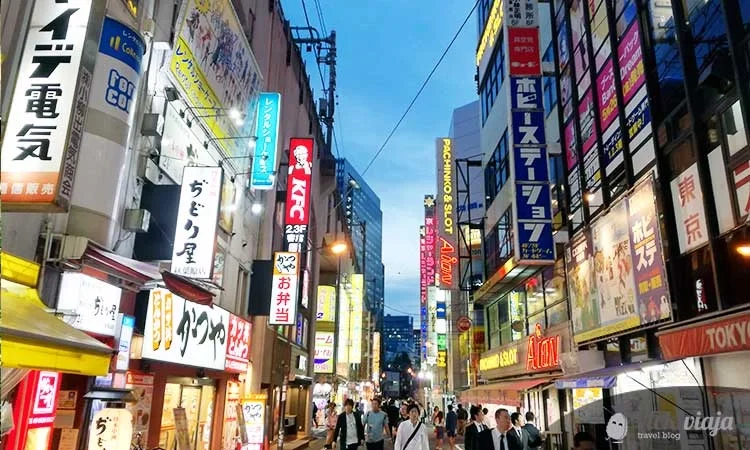
Home » Topics » Budget Travel » 1 Month Japan Cost – How to travel Japan on a Budget for under $ 1,200
1 Month Japan Cost – How to travel Japan on a Budget for under $ 1,200
Anyone who has ever been to Japan knows that traveling in Japan is anything but cheap. So often, I have heard from people that they’d love to visit Japan but just don’t think it’s affordable for them to go. Those who book a standard travel tour in an agency easily pay € 2,000 – € 3,000 for two weeks in the country.
I have often heard from traveling friends and acquaintances something along the lines of “ Japan is my absolute dream, but I just can’t afford a trip to Japan “. But how much does a trip to Japan really cost ?
The truth is, traveling to Japan on a Budget is actually not that difficult if you keep a few simple things in mind. In order to show you how easy it is, we want to share our 1 month Japan cost with you in this article. (Yes, we kept a precise account!)
Honestly, we really didn’t miss out on anything during our trip to Japan. We went to restaurants, had a beer in the evening, and admired all kinds of attractions. Here, I want to show you how you can do the same without breaking the bank.

What to find out in this post
- 1 Average travel costs in Japan per day
- 2 Travel Cost Calculator for Japan
- 3 Our Japan Travel Cost (27 Days)
- 4 Average Japan Cost per Day (27 Days)
- 5 Our Daily Japan Budget per Day per City
- 6 Japan Prices – What costs what
- 7 How to Travel Japan on a Budget
- 8 Money and Currency in Japan
- 9.1 Save money when flying to Japan
- 9.2 JR Pass
- 9.3 Day Passes
- 9.5 Hitchhiking
- 10.1 Convenience Stores
- 10.2 Affordable Restaurants
- 10.3 Avoid fresh fruit
- 10.4 Cooking
- 12.1 Temple Pass
- 13.1 Booking in advance
- 13.2 Capsule Hotels and Dorms
- 13.3 Couchsurfing
- 14.1 Alcohol
- 14.2 Sim Card
- 15.1 Well-planned is half-saved
- 15.2 About the AuthorVicki
Average travel costs in Japan per day
Travel cost calculator for japan.
The average traveler in Japan spends about € 130 ($ 138) per day . If you are a backpacker or on a small budget, you usually spend € 60 ($ 64) per day . Those traveling in more luxury will pay around € 320 ($ 340) per day .
We even managed to stay under 40 € ($ 47) per day on our trip. Later in this article, I will tell you step by step how we did it.
Our Japan Travel Cost (27 Days)
Total: 995.22 €/ $ 1.103.37 per Person
Author’s note: Of course, all listed expenses were made in the local currency (yen). The Japan prices are listed in Euros and USD only for better understanding. Any discrepancies are caused by rounding.
All costs are per person.
Average Japan Cost per Day (27 Days)
Our daily japan budget per day per city, japan prices – what costs what.
- Budget accommodation (Private double room for 2): approx. $ 60 – 120 (50 – 100 €) per night
- Budget accommodation bed in a hostel: from $ 19 (16 €) per night
- Lunch cheap restaurant (menu): from $ 6 (5 €)
- Lunch: Sushi Menu: ca. $ 12 (11 €)
- Dinner at a cheap restaurant: approx. $ 7 – 12 (6 – 10 €)
- Dinner for 2 in a good restaurant: about $ 45 – 60 (40 – 50 €)
- Dinner for 2 in an upscale restaurant: approx. $ 120 – 360 (100 – 300 €)
- 1.5 liters of water in the supermarket: approx. $ 1.20 (1 €)
- Bottle of wine in the convenience store: approx. $ 4 – 5 (3.5 – 5 €).
- 0.5 l bottle of local beer in the restaurant: approx. $ 4 – 4 (3.50 – 5 €)
- 0.5 l bottle of local beer in the supermarket: approx. $ 3 (2.50 €).
- A bowl of ramen: $ 7 – 12 (6 – 10 €)
How to Travel Japan on a Budget
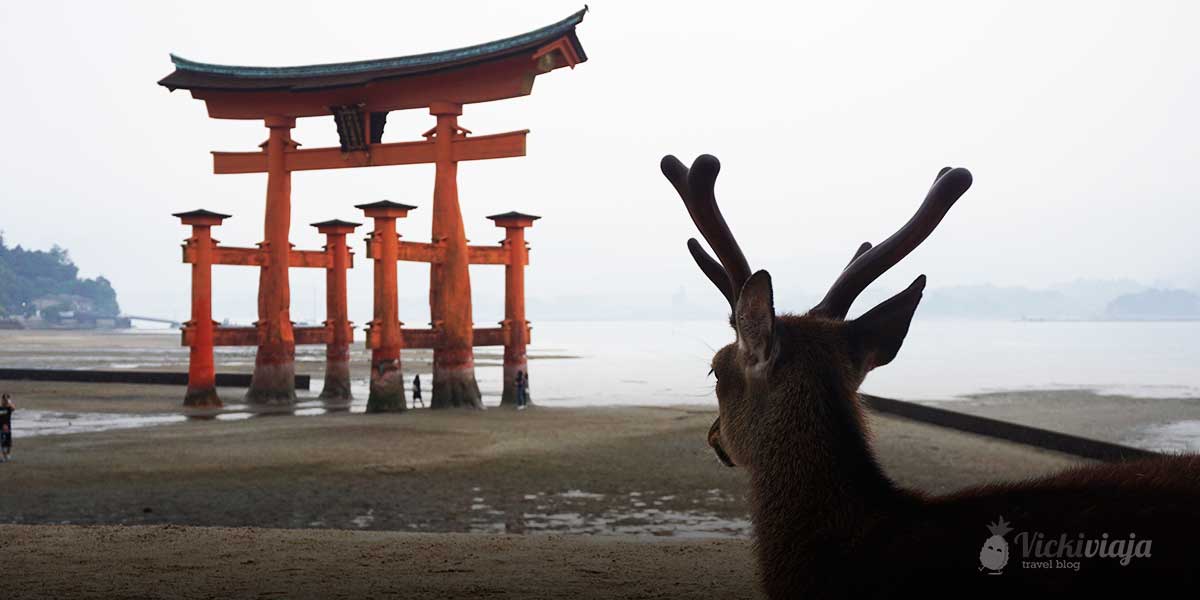
Ugh. That was a lot of numbers. Now you surely want to know how we managed to spend so little money. Here is a small summary.
Money and Currency in Japan
In Japan, you pay with the so-called Yen (¥). One Dollar is currently equivalent to about 150 Yen. Depending on where you exchange your money, you will get a similar or worse exchange rate. It is usually advisable to exchange only a small amount at first and to change your money on-site (e.g., at the airport). Be sure to check the exchange rate.
It may be worthwhile to compare the exchange rate locally before deciding on a place to exchange. First of all, only exchange as much money as you actually spend. This way, you will avoid losing too much money by exchanging currencies.
Also, when choosing a credit card, make sure that there are no or very low withdrawal fees when you withdraw money from abroad. You may also be charged exchange fees if you pay with your credit card in a foreign currency. Before you leave, get advice on which credit card is best for your trip.
Japan Transport on a Budget
Transport costs make up about 42 % of our whole costs in Japan. Quite a lot, right? It can be very difficult to keep your transportation costs as low as possible because they are just incredibly expensive in Japan. Here are a few tips on how you can still save a few Bucks transportation costs.
Save money when flying to Japan
In general, you should expect the average cost of your Japan flight to be around $ 800 for a round-trip flight to Japan from the US and $ 700 from (Central) Europe.
For our flight to Japan, we paid just under € 250 per person (outbound only). Since travel is usually a big part of your travel costs, it is especially important to hope for a good price when booking. Although there is always a little bit of luck involved in finding a good flight, there are also some tricks that can help you save money.
Since I specialized in airline management in my studies, I know a few tricks of the airlines and can always find the best flight. In my low-cost flight guide, I pass on some of the most important tips to you. If you don’t feel like reading the whole guide, here is a short version:
- Start comparing airfares a few weeks (preferably several months) before departure.
- Always delete cookies or search from an incognito window
- The more flexible you are, the better chance you have of finding good flights.
- Compare different days, airports, and flight times
- Direct flights are usually more expensive
- Use flight comparison sites like Skyscanner to find the best flights
- Set a price alert to notify you when prices change
Most travelers in Japan choose the JR Pass to get from A to B in Japan. With this pass, you can use all means of transportation from JR free of charge for the selected days.
Make sure to check beforehand which routes are covered by JR. In Tokyo, in particular, many routes are covered by other companies and therefore have to be paid for additionally. The best is to plan your Japan itinerary ahead of time to see whether the JR pass is worth it or not .
More information on the JR Pass can be found here .
Within big cities like Tokyo, Osaka, or Kyoto, it is worth buying a day or metro pass. Especially if you want to see a lot in a short time and travel a lot by public transport, buying a Metropass usually pays off.
Examples are the Icoca Card (for Osaka and Kyoto) or the Tokyo Metro Pass .
Even if you have a JR Pass, public transportation within the cities is not always included. Especially in Tokyo, many routes are covered by other companies, and therefore you have to pay extra. Here, a Suica-Card is a good idea, with which you can pay for all train companies. Simply load money at the machine in each metro station, and off you go. This saves a lot of time because you don’t have to buy a new ticket every time. You can purchase the Suica card at Tokyo Station.
Buses in Japan are often the cheaper alternative to expensive train rides. Many routes are covered by buses, and the buses are mostly of very good quality. Almost all buses have a toilet on board, and there are stops at service stations every 2 hours.
Willer Bus Pass
In addition to the JR Pass for trains, foreigners can also buy a Willer Bus Pass before arriving. The principle is similar. You can choose a certain number of days on which you can use the Willer buses. Here the days are calculated based on the trips you take. That means days do not have to be contiguous.
Although we first decided on the Willer Bus Pass, we canceled it on-site because we had to cancel a planned day tour due to the bad weather and found that a route we wanted to take was not covered by our pass. Therefore, it was ultimately cheaper for us to book our buses separately. But it all depends on your chosen route.
Hitchhiking

Another option to save real money is hitchhiking. Japan is considered one of the safest countries in the world, and the people of Japan are incredibly friendly. If you have enough time, you should definitely try it.
We hitchhiked almost 400 km during our trip to Japan, and it was a great experience. If we had had more time, we would definitely have hitchhiked further distances.

It actually sounds quite obvious, doesn’t it? The more you walk by yourself, the fewer transport costs you have to pay. You can save a lot of money, especially in cities. During our time in Tokyo and Osaka, we walked around 20 km every day. If the next destination is only 3 metro stations away, it can be very worthwhile to simply choose to walk.
Japan Food on a Budget

First of all, eating in Japan is not nearly as expensive as many blogs say. We were pleasantly surprised, as we had set our budget for around € 5 per meal per person. There are many ways to save a lot of money on food while traveling in Japan.
Convenience Stores
It’s hard to walk around Japan’s cities without passing by a 7/11 and Co. (and this can be taken literally). Many affordable dishes are offered here.
For breakfast, there are different types of pastries and sandwiches. You can even find fruit (Unfortunately, fruit in Japan seems to be priceless. Only bananas fit in our budget. and watermelons for € 20 apiece are not uncommon)
For lunch and dinner, you can find all kinds of dishes here. Simply slide it into the microwave when paying, and you’re done. – Backpacker Heaven.
Affordable Restaurants
If you’ve had enough of convenience stores and microwaves, you can also eat at one of the many affordable restaurant chains. You can usually find the prices displayed outside. Many restaurants display plastic dishes in the shop windows so that you know what you are ordering. But many also have English menu cards.
You can find dishes starting at about $ 6/5 €. There are usually a lot of people in suits looking for a quick lunch during their lunch break. The quality and freshness of the dishes differ from restaurant to restaurant but generally correspond to our Western standards.
Avoid fresh fruit
I love fruits and fresh vegetables. However, I recommend you give them a wide berth in Japan. Except for a banana or an occasional apple, we did not dare to eat the fruit in Japan. Unfortunately, the prejudice that fruit is hardly affordable in Japan is true. Watermelons for 20 € are not uncommon here. And other fruits and vegetables can also tear a big hole in your budget.
If you have booked accommodation with access to a kitchen, it may be worth making use of it. Don’t worry, you don’t have to miss out on the delicious Japanese food . But if you already replace just one meal in a restaurant with a homemade meal, you can really save money.
Of course, you can use local ingredients and be inspired by the selection of Japanese supermarkets. If you choose Couchsurfing as we did, your host will be happy to have a delicious meal cooked by you.
Staying hydrated while traveling is important. Saving money for water in Japan is very easy, though. The magic word is tap water. The tap water throughout the country is very clean and has drinking water quality. So just fill up the bottle before leaving the house, and you’re done. Since drinking water in Japan is not exactly cheap, tap water is a real alternative that saves you a lot of money.
Entrance & Activities

Saving money is probably the most difficult thing when it comes to admission costs. Many attractions offer student or group discounts. In the Edo Museum, we even received a couple-discount. Otherwise, you can only check blogs you trust (maybe this one? *blink blink*) to see if the attraction is really worth the entrance fee. (Because a few times it was clearly not). Another option is to check the attractions you might want to see on Tripadvisor and see what other travelers are saying.
Temple Pass
There is another way to save on entrance fees and activities in some places in Japan: tourist passes. With the purchase of such a tourist pass, you get free access to the attractions included in the pass. This way, you can save a lot of money compared to buying individual tickets.
Such passes are, therefore, especially worthwhile in places where you want to see several sights, such as the Osaka Amazing Pass .
Japan Accommodation on a Budget
Booking in advance.
We Germans are known for planning everything in advance and being super organized. My way of traveling is usually completely different. I like to travel spontaneously and decide on the spot where to go, where to sleep, and how long I stay.
In Japan, it was a bit different. Already two months before departure, we set up a (worst case) budget (approx. 1,200 €) and collected information about all the places we wanted to visit during our trip to Japan. We compared prices for various types of transport, accommodation, and activities and summarized everything in an Excel table.
Before we started, we had a detailed plan with all our routes, accommodations, and prices. So we weren’t as flexible anymore, but we were able to save a lot of money. And somehow, it is nice to travel and to know exactly what to expect in the next place.
We almost exclusively use Booking.com to book accommodation. It is super easy to use, and thanks to the many reviews, you usually know what to expect. You can find accommodation for all types of Budgets.
Check accommodation in Japan on Booking.com
Capsule Hotels and Dorms
It doesn’t always have to be such “extreme” possibilities as Couchsurfing (see next point). In Japan, you can save money by choosing a classic dormitory in a hostel instead of a private (single) room. Since you share your room with other travelers, you usually pay only a fraction of what you would pay for a private room.
Such a bed in a dormitory also gives you the great opportunity to get in touch with other travelers from all over the world. Especially for solo travelers, this is usually a great advantage.
Another option – and a real experience in Japan – is the so-called capsule hotels. Maybe you’ve seen such a capsule on TV or social media. As the name suggests, instead of renting a whole room, you rent a small capsule to sleep in. The concept is similar to that of a dorm room. However, the capsule usually offers you a bit more privacy than a conventional single bed. This is because you are shielded from the other guests by walls.
Couchsurfing

It’s time to Couchsurf. Couchsurfing is not quite as popular here as it is at home in Europe. But you can find Couchsurfers in many cities. Whereas in Europe, there are more younger people using the platform, in Japan, there are also older Couchsurfers or even whole families.
We had a little bit of everything. We slept in student apartments on the floor or with families in our own room, lived for four days in the unique Couchsurfing house in Kyoto (an entire house just for Couchsurfers – such a fun experience), and even had an entire flat for us in Hiroshima.
So if you look at the average price of our accommodations per night and consider that we spent 21 nights with Couchsurfers and friends, you can calculate that we might have saved about € 706.02 for accommodations.
But please don’t see Couchsurfing just as a way of saving money. Every day, I get requests from people who are only just looking for free accommodation and don’t even take the time to read my profile.
Couchsurfing offers much more than the opportunity to meet new people from other cultures, exchange ideas with them, and learn from them. Couchsurfing gave us the opportunity to get a much deeper insight into Japanese culture and to get to know different areas. (Student life, family life, life as an expat living in Japan, etc.) It was an incredible experience that you cannot book in any travel agency. And I can only recommend this to everyone.
Update: Unfortunately, Couchsurfing in the post-pandemic world is not as easy to use as it used to be. In the meantime, the site has evolved into a platform that you have to pay to use. Accordingly, there are far fewer people Couchsurfing. It may still be worthwhile to see if there are still interested hosts in Japan.
Random Expenses in Japan
Alcohol in Japan is much more expensive than we know in Europe. So if you want to go out for a drink, expect to spend a little more.
It becomes cheaper if you buy a bottle of sake or beer in the supermarket and have a drink with your hosts or in the park. But if you follow all the tips and tricks to save money during your trip to Japan, you can treat yourself to a drink or two with a clear conscience. 😉 (Sake and Japanese plum wine (mixed with mineral water) should definitely be tried)
Anyone who is traveling naturally wants to stay mobile. But it is already clear at the airport that a SIM card and mobile internet are not for free. Of course, it is practically always available, no matter where you are. But is it really necessary to buy a sim card in Japan?
Our tip: In our experience, a Japanese SIM card is not necessary. Almost every convenience store offers free wifi for up to two hours a day. You can also find wifi in most accommodations, in many metro stations, and in enough restaurants and cafes. So there is always a way to google something, check WhatsApp or similar in about five minutes. The easiest way to connect to free wifi is the Japan Connected-free Wi-Fi app .
If you want to have a GPS map to get your bearings, just try maps.me. This app works similarly to Google Maps but is completely offline. Super practical. And on this trip, this app saved us several times from getting lost.
We didn’t buy a SIM card and didn’t miss it. But if you don’t want to rely on public wifi, I recommend using pocket wifi during your trip to Japan (e.g., this one ).
More One Month in Japan Budget tips
Your travel time
Like most tourist places, there is a high and low season in Japan. If you travel in the high season, you have to expect higher prices. Especially during the cherry blossom season ( Sakura ) in spring, you will pay a lot more for accommodation and activities than in other seasons.
The same is true for a visit during the Christmas season as well as the ski holiday season. Since it gets very hot in Japan in the summer, surprisingly, the months of July and August are considered more affordable.
Well-planned is half-saved
If you really want to save money, you should plan a good bit before your trip. Accommodations and flights are usually cheaper if you book them in advance. The Japan Rail Pass is also cheaper if you book it before you arrive in the country.
In addition, you have more time in advance to compare the prices of different providers and generally the different offers in the country.

Interested in Japan?
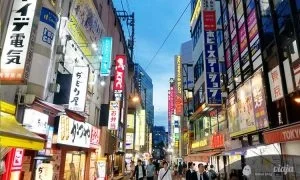
About the Author Vicki
Hi, we are Vicki & Eduardo, an international travel couple on a mission to help you save money for priceless travel experience. Follow us through the miracles of this world and you will be rewarded with a bunch of practical travel tips.
17 thoughts on 1 Month Japan Cost – How to travel Japan on a Budget for under $ 1,200
Oh this is super useful! Japan is a definite bucket list destination for me and if I can do it on a budget, even better!
Japan is just wonderful. The people are so kind there. I’m sure you will love it.
I love these kind of posts!! Budget travel is something I need to work on and this post was so helpful thanks!! 🙂 Saving it for when I go to Japan!
I’m always happy if I can help people saving money for traveling 🙂
I am dreaming about Japan butt pff way too much expensive!! It worths the effort though ?
It doesn’t have to be that expensive as you can see 😉
I’ve always wanted to visit Japan but have always been put off by the cost – this had been really helpful in opening my eyes, it certainly looks achievable with a bit of planning! Thanks for sharing.
Thank you. I hope you can go. It’s such an amazing country
I love your post, I love how you have broken the expenses down, by destination as well. Really helpful for a budget traveller like me. My theory is the more you budget the longer you can travel. Thanks for sharing
I totally agree. If I wasn’t on a tight budget all the time I would be back home already. 🙂
This is so funny that I’m reading this because I just told someone yesterday that I don’t want to visit Japan because it’s too expensive ?. These are awesome tips and I’m definitely saving this post for if/when I go. So good to know about the buses because I know trains are insanely expensive there! Thanks for all of the info!
Awesome post… Definitely helpful.
I’m looking to spend 4 days in Akihabara Tokyo this year, And I was wandering if it’s possible for me to go for $1200 counting the flight?? $1500 is the max that I can spend.
I live in Houston Texas USA
I just checked and yes, it is totally possible to go for $1200. For example, if you’d go from the 16th April to the 20th April, there are flights for $722 round trip from Houston to Tokyo. To find it, just scroll up to the section on this posts and click on the Momondo-Link under the Text. (or I guess this link will work as well: http://www.awin1.com/awclick.php?gid=309328&mid=7198&awinaffid=450159&linkid=627845&clickref= ) The average spendings from us per day (with breakfast at 7-11, and cheap lunch & dinner) are $33,64 per day, which is $134,56 for 4 days. The accommodation, in general, is $40,06 per night (thus $160,42 for 4 days), but you might be able to find something even cheaper or maybe a little more expensive here: http://www.booking.com/searchresults.en.html?district=2040&aid=1341044&no_rooms=1&group_adults=1
In Total that would be $1016,08.
So, you even have some money left for different things to do or souvenirs. 😉 I hope this helps you! Please let me know!
Hey Vicki! Did you apply for Couchsurfing in advance also? Im travelling Japan for 1 month, 20 days on Okinawa and 10 days from kagoshima -> Tokyo. We booked all of our stay in Okinawa, and Tokyo, but nothing else.. Love your post, It’s very helpfull! Best regards, Sofie
thank you so much for your comment! Yes, we applied around 1 month beforehand, because Japanese are usually pretty organized and like to know whether someone is coming in advance. 🙂 We didn’t have time to see Okinawa during our stay in Japan, but I’ve heard it’s super beautiful. Enjoy!
Hi! Thank you for this post, it was very useful, we are now in Cambodia and then in a few weeks going to Japan so I’m a bit afraid of the expenses since here is so cheap! My name is also Vicky, my husband is german and we meet also through couchsurfing in Barcelona six years ago haha what are the odds?!? 🙂
That’s truly crazy how much we have in common! Would love to meet you guys one day 😀 We did it exactly the other way around. We went to Japan first and afterwards to Cambodia, so we didn’t get used to cheap prices before going to Japan haha
Comments are closed.
- Philippines
- South Korea
- National Parks
- Travel Stories
- How Much Does It Actually Cost to Travel the World?
- What’s In My Backpack: The Ultimate Long-Term Travel Packing List
- My Favorite Non-Fiction Travel Books
- All Budget Travel Resources
- Writing Portfolio
15 Tips For Visiting Japan on A Budget (How to Travel Cheap in Japan!)
This post may contain affiliate links. This just means I may receive a small commission at no extra cost to you for helping them promote their product or service. I don’t endorse any services I don’t personally use or recommend.
Japan is widely known as the most expensive destination in Asia. I’m not going to contest that fact, but I am going to show you how to save LOTS of money on your next trip. Because Japan is one of those places that everyone wants to visit. A bucketlist destination if you will. While it wasn’t cheap, it was also not nearly as expensive as we had originally thought. And with these tips for visiting Japan on a budget, it can even be a rather affordable destination open to exploration by all kinds of travelers.
This list isn’t going to include any Workaway or long-term travel tips for those staying months in the country. Instead, it’s going to focus on actionable easy budget-saving tips that people on a short trip can use to save bigtime in Japan.
15 Tips For Visiting Japan On a Budget
Transportation is by far the most expensive cost for travelers in Japan. We’re gonna start with ways that you can save while hopping from destination to destination in the country.
1. The big question: Japan Rail Pass or no Japan Rail Pass?
I actually wrote an entire post detailing my decision NOT to buy the Japan Rail Pass for $370 per person. The low-down is that we saved about $100 each by purchasing bullet train tickets on our own. We didn’t have to do an immense amount of research either. We just turned up and bought tickets.

Check out my full post to see everywhere we went so you can compare your itinerary and make sure that buying the Japan Rail Pass isn’t right for you.
2. Get Unreserved Train Seats.
When you’re purchasing your Shinkansen (Bullet Train) tickets be sure to specify that you want unreserved seats. This means you’ll be sitting somewhere in cars 1-6 and left to choose your own spot. These are much cheaper. If you’re traveling as a duo you’ll most likely still be able to find seats next to one another.
3. Choose buses.
Buses are cheaper than trains & astronomically cheaper than bullet trains. If time isn’t a constraint for you (or if you can plan for these travel days) choose at least a few buses to save hundreds of dollars.
4. USE the Metro!
I probably don’t need to tell you that Japan has impressively clean, well-connected metro and train lines in each major city so you’ll never need to use a taxi. You can reach every single destination by metro, bus, or walking. I promise. In slightly smaller cities biking is a great way to get around and is very popular among Japanese people.
Keep in mind that most metro stations (and all buses) require cash to purchase tickets.
5. Skip the SIM.
Everyone told us you need a SIM card to travel in Japan. But honestly, we found Japan super easy to travel without one. There’s free wifi everywhere (buses, trains, some towns) and maps.me has accurate metro info for offline use. All kiosks for restaurants and metro use had English language options and for the few menus that didn’t— use can download Google translate offline.
6. Book your accommodation ahead of time.

Budget-friendly places fill up first. Unfortunately, Japan is one of those countries where planning ahead is going to save you lots of money. Our guesthouses and hostels were all booked on Booking.com and Hostelworld.com for anywhere from $7.50-$23 per person. Hakone and the areas around Mt Fuji are the most expensive regions while Osaka had a $15 private room (not a great one but hey, what can you expect).
You’ll probably need to book at least a month ahead for the high season.
7. Where you stay in Tokyo matters.
Tokyo is huge. Sprawling. But luckily there are lots of interconnected metros including one circular JR line that rings the best part of the city. We stayed in Nippori. This is in the far northeastern part of the city. Most of the places we wanted to see were located in the West and Southwest. This meant lots of metro trips, most 40 minutes or more.
If you plan to stay less than 4-5 days in Tokyo, instead of simply choosing the cheapest place to stay, look for a conveniently located neighborhood. Otherwise, you’ll spend a lot of time and money on the metro.
Consider the 24-hour Tokyo Pass (cost: 800 yen) on days you’ll do LOTS of sightseeing in various neighborhoods. You can purchase it at all the major metro stations.
8. Don’t visit ANYWHERE on a weekend.
Obviously, you have to do something on a weekend. Make sure it’s Tokyo, Osaka, or another major city. Tourist cities like Hiroshima, Kyoto, Magome, Hakone, and more are absolutely flooded with local tourists. I mean A LOT of tourists. It’s kind of insane. You’ll have to wait in incredible lines. Plan accordingly.

9. Kyoto is all about picking and choosing.
To keep Kyoto budget-friendly you can’t see everything. Many Buddhist temples in the city charge an $8-$15 entrance fee. This is probably to combat overtourism in an area that sees an incredible amount of visitors. We found that the free shrines were often the best because they saw fewer people and it wasn’t just massive crowds jostling for a photo op. Shoren-in Temple even has a tea ceremony that’s authentic for half the price of typical touristy tea ceremonies. I wrote about how to attend it here.
I recommend making a list of a few attractions and sticking to those rather than trying to see everything. These are our favorite things in Kyoto.
- Bike to the Bamboo forest just out of town early in the morning.
- Hike to the top of Fushimi Inari Taisha, not just a quick photo op visit.

If you’re looking to splurge on food in Kyoto, and it’s got some excellent options, definitely pay Teppan Tavern and La Bac a Sable a visit. Teppan Tavern serves Wagyu A5, traditional Kyoto bites, and homemade Umeshu (plum wine) that’s better than anywhere else for dinner. Seriously, this is the highlight of Japanese hospitality and it won’t break the bank. We spent $40 on a full meal with a few drinks. The French bakery is the perfect lunch pick-me-up.
10. 7/11, Family Mart, and Lawsons.
These are convenience stores scattered all over Japan. They have the cheapest beer and chu-hi, the cheapest coffee, and a wide array of Japanese snacks and desserts. But the best part is the bento boxes and hot food. You might be put off by the sushi, pizza or curry stuffed bao, habanero chicken strips, and tonkatsu meals but they are actually excellent and good quality! It’s a very popular stop for commuting Japanese residents. Keep in mind that hot food is usually restocked just before popular meal times.

In my professional opinion, the best food goes to Family Mart— but the best coffee goes to Lawsons.
Most restaurants don’t open until 10-11 AM and few hostels offer breakfast which leaves you out of luck. But these stores are a great cheap option for breakfast. Or late night meal. Or lunch.
11. Another cheap meal option? Conveyor belt sushi.
These places are the best. And they happen to be the most budget-friendly restaurants for great traditional Japanese sushi. You can typically get 10 plates between $8-15 depending on the items you select. This is a great way to familiarize yourself with sushi menus and sample new things too without having to commit to a whole set.

12. Share meals!
Unlike South Korea , a country we visited just before Japan, it’s very easy to order one dish and share. In Korea, you often pay by the person for popular meals like Korean BBQ. A major pain in the wallet for budget travelers looking to sample a lot of different items. Japan, fortunately, does not follow this rule and it’s quite easy to share several small plates for cheap.
13. Buy food for your Magome excursion.
I wrote an entire post detailing everything you need to know about hiking from Magome to Tsumago. I highly recommend this trip but since all restaurants close by 5 PM and I found most to be overpriced in the area— be sure to buy your own food from a Family Mart before you head to the mountains. Don’t forget trail snacks!

14. Beer is the most expensive alcohol in Japan.
Skip the beer and instead opt for Japanese Whisky highballs, Plum Wine, Shochu, and sake for cheaper drinking options.
15. Choose Omoide Yokocho over Golden Gai for a night out.
If you are looking for Tokyo drinking hot spots and nightlife, Omoide Yokocho is cheaper and more authentic than the late-night Golden Gai district. In Golden Gai, the drinks aren’t as strong and you’ll often have to pay a cover to even sit at the bar. It was still worth wandering through the alleys of each but I much preferred Omoide for dinner and a night of drinking.

How much did we spend in Japan on a Budget?
Let’s look at a quick budget breakdown of what we spent while visiting the country. Keep in mind, we only took trains and bullet trains because we had a short amount of time. We also didn’t know many of the above tips beforehand and would have booked our Magome accommodation much further in advance. So basically, I think you could save hundreds by following our tips above.
How much we spent in total for 19 days for two people: $2,687.55
How much we spent per day per person: $70.72 per day per person!!!
I hope this information helps you feel more confident to visit Japan on a budget and save lots of money while you do so! This was our most expensive trip BY FAR and with these tips, we could have easily cut costs by hundreds of dollars. Let me know in the comments if you think you have any Japan budget travel tips to add to my list.
Save This Post For Later!

Further Reading...

How to Experience a Traditional Japanese Tea Ceremony in Kyoto

What It’s Really Like Staying in Hostels (For Travelers 25 & Older)

A Savvy Budget Travel Guide to Jordan (How to Save on Petra + Wadi Rum)
No comments, leave a reply cancel reply.
Save my name, email, and website in this browser for the next time I comment.
Notify me of new posts by email.
Sign up to our newsletter!
This site uses Akismet to reduce spam. Learn how your comment data is processed .
10 Days in South Korea: A Mini Travel Guide (2023)
Beyond_the_bucketlist.


How Much Does a Trip to Japan Cost? Average 2024 Budget
Japan is a great first destination for American tourists looking to travel to Asia. It offers a unique taste of East Asian culture, in a highly-developed, Western-influenced setting. If Japan is on your bucket list but you are wondering “how much does it cost to go to Japan?”, that answer can sometimes be a lot. The Japan trip cost is the main reason it took us so long to finally take a family trip to Japan.
The bottom line is that the Japan trip cost for a two-week trip for a family of four, staying in four-star level accommodations with a few paid activities will cost about $13,420 or $280 per person, per day.
However, while Japan is an expensive country, there are options for budget travel in Japan. The trip to Japan cost depends on your travel style, but it need not be as expensive as you thought. This Japan trip budget breakdown will show you how and where to save on your visit. I will cover the cost of airfare, intra-country transportation, accommodations, food, and activities .
Planning a trip to Japan
Japan has so much to offer, but for a first trip, splitting your time between Tokyo , Kyoto , and maybe Osaka over two weeks in Japan is best. I’ve created a 14-day Japan itinerary and you can also see my friend Vaness’a suggestions for two weeks in Japan .
Your first experience with Japan is a total assault on the senses, so you really should slow down and stick to just a couple of destinations. If you return, you can then follow this longer 3-week Japan with kids itinerary or visit places like Hokkaido, the western coast of Honshu and Kanazawa, Shikoku, and Okinawa. Be sure to also read my Japan travel tips .
How much does a trip to Japan cost?
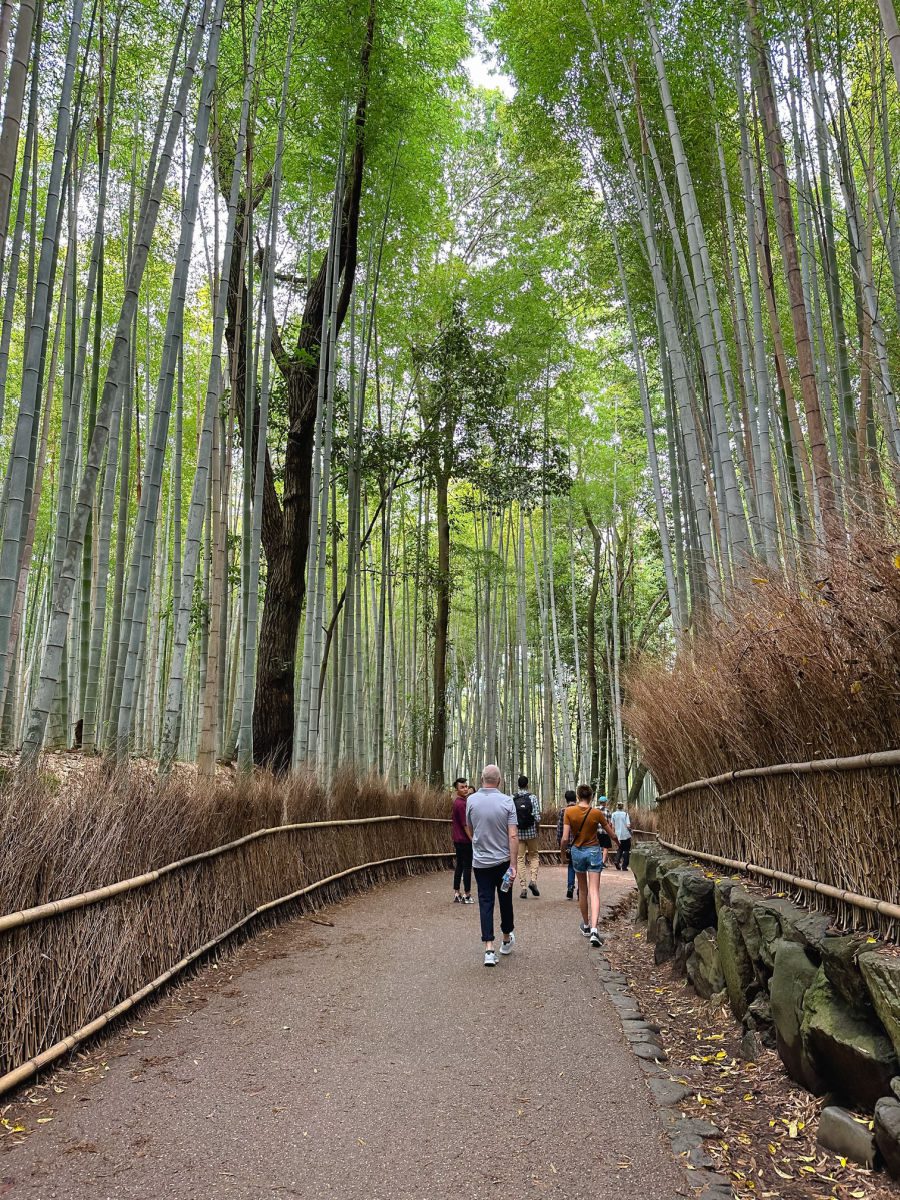
Note: This post contains affiliate links. If you click a link and make a purchase, I may receive a small commission at no cost to you.
I based this budget on my personal experience of what it costs to travel to Japan and broke it down by airfare, accommodations, transportation, activities, and food. This breakdown assumes you are visiting Japan with kids for the following:
- A family of four with two adults and two kids under 12
- Two-week trip, including two travel days, with 12 nights in Japan
- Five nights in Tokyo, five nights in Kyoto, and 2 nights in Osaka
- Traveling during high or shoulder seasons (although not the top peak travel dates during Cherry Blossom season, then you can expect to pay premium pricing across the board.)
- Independent travelers that are comfortable exploring on their own and not looking to book a package tour or use private guides
Airfare to Japan
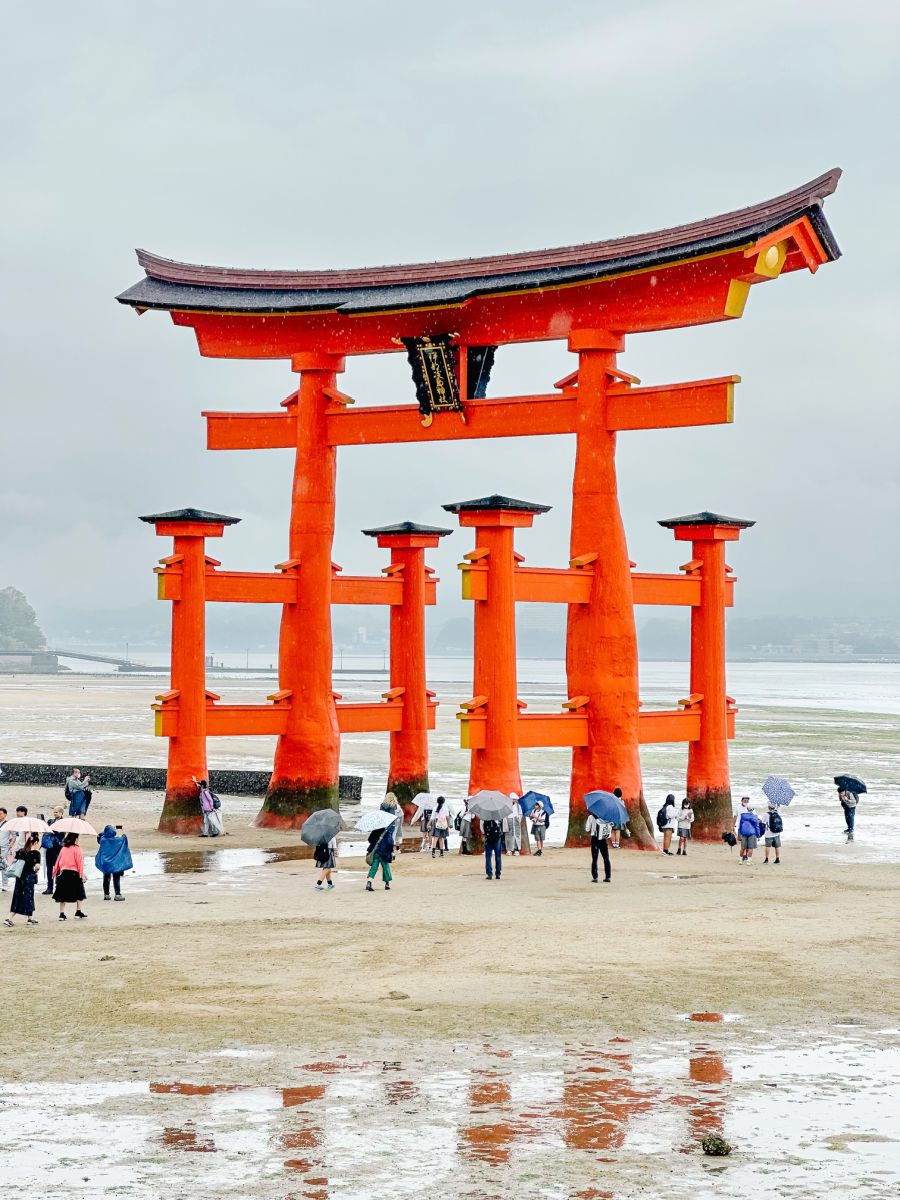
The first big expense for a trip to Japan is, of course, airfare. Economy class flights to Japan from New York during shoulder and high seasons will likely start at around $1,300 per person and easily go up to $2000. We paid about $3,200 per person to fly Delta from Boston to Tokyo through Detroit (but we used points for one flight at least!)
Air Canada and Delta with layovers in Toronto and Detroit, respectively, are common offerings at a price point like this. If you are looking to fly nonstop to Japan on United or one of the more upscale Asian carriers like Japan Airlines will probably cost around $2,000 from the East Coast.
West Coasters might find slightly cheaper fares, but whichever coast you start from, it is a good trip to use your frequent flier miles and points as that will really help with your Japan trip budget. It is best to book airfare at least six months in advance, or as early as possible.
I also highly recommend signing up for a membership in Going , to get alerts for flight deals to your dream destinations.
If you want to find the best way to accumulate points and miles through credit card spending and sign up bonuses, I’d suggest downloading the Travel Freely app to track your credit cards and learn how to earn points.
Total airfare cost: $1,300+ each x 4 travelers= $5,200
Accommodations in Japan
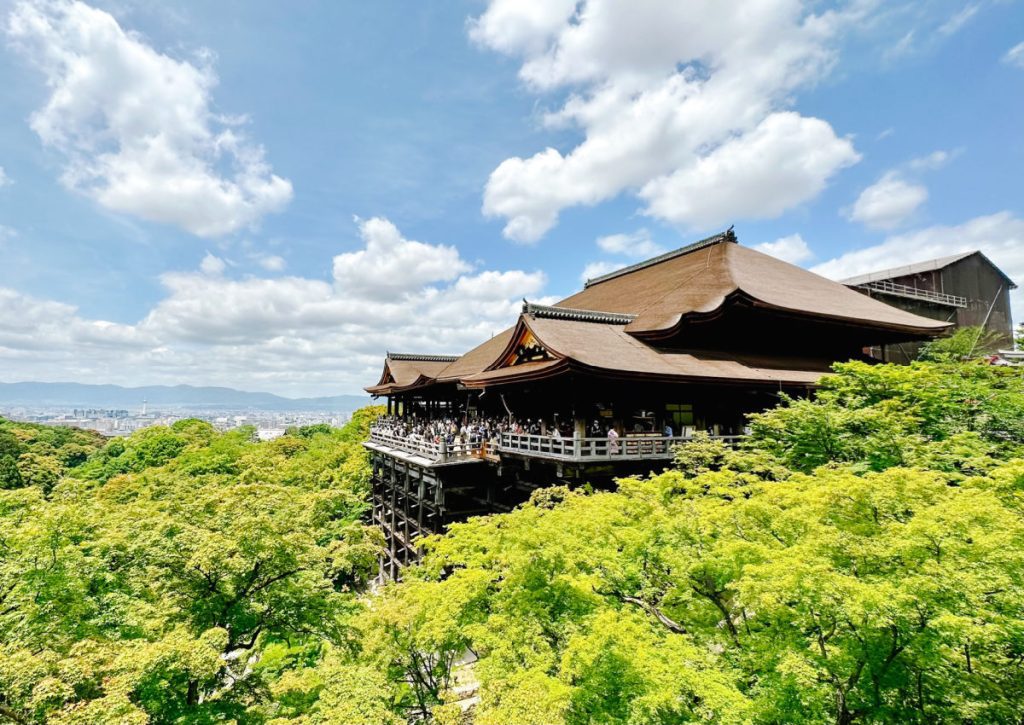
The good news is that airfare is definitely the most prohibitive cost for a trip to Japan. The accommodation are pricey when staying in big cities, but there are plenty of budget options (including those tiny capsule hotels). A night in a 4-star hotel in Tokyo will range anywhere from $250-$450 per room, with an average of $350 per night for a room large enough to sleep four. Just keep in mind that if you stay in a Japanese-brand hotel, the rooms are going to be quite small, be sure to check square footage.
We enjoyed our stay at the Hilton Tokyo , because it was a great location for using public transportation and the rooms were spacious and the full-service hotels had good amenities like free breakfast for Club level rooms.
Find a Hotel in Tokyo :
Hotel prices in Kyoto are wider-ranging, perhaps because there are far fewer options than in Tokyo. The overall average comes out to about $350 per room, per night for a 4-star property that will fit a family of four.
We stayed at the Hyatt Regency Kyoto , which was accessible to public transportation and walkable to many of the main attractions. For cheaper accommodations, look at brands like the Mimaru .
Find a Hotel in Kyoto:
Osaka is a huge city with plenty of hotel options. It makes sense to stay near one of the main train stations or metro hubs to make it easy to get around. We loved our stay at the Intercontinental Osaka , where we splurged on a two-bedroom, two-bath residence with a full kitchen, living room, and amazing view (they have regular hotel rooms too). If you can book through American Express Fine Hotels with your Platinum card or a Virtuoso travel agent, you can also get perks like free breakfast and the breakfast is amazing!
A typical three to four-star hotel that can accommodate a family in one room is about $300 per night, but could go up to $600+.
Find a hotel in Osaka:
If you are traveling as a family, you will probably want more space than what you find in a typical Japanese hotel room (even beyond the capsule hotels). If you want to save money and get more space, I would recommend renting an apartment through vrbo or Airbnb.
You can get a nice, family vacation rental for about $130 per night (and a really nice one for about $180 a night). The best part is that you’ll have a kitchen and a dining room where you can bring prepared food home to eat or even try cooking yourself, which is helpful for budgeting since eating out in Japan can be pricey.
Rental options in Kyoto are much more limited and more expensive, but it is possible to find something affordable and really cool. A lot of the rentals in Kyoto are in older houses built in traditional Japanese styles.
Total accommodations cost if you stay in hotels: $350 x 12 = $4,200
Total accommodation costs if you stay in apartments: $200 x 12 = $2,400 (but it can be cheaper)
Transportation Costs in Japan
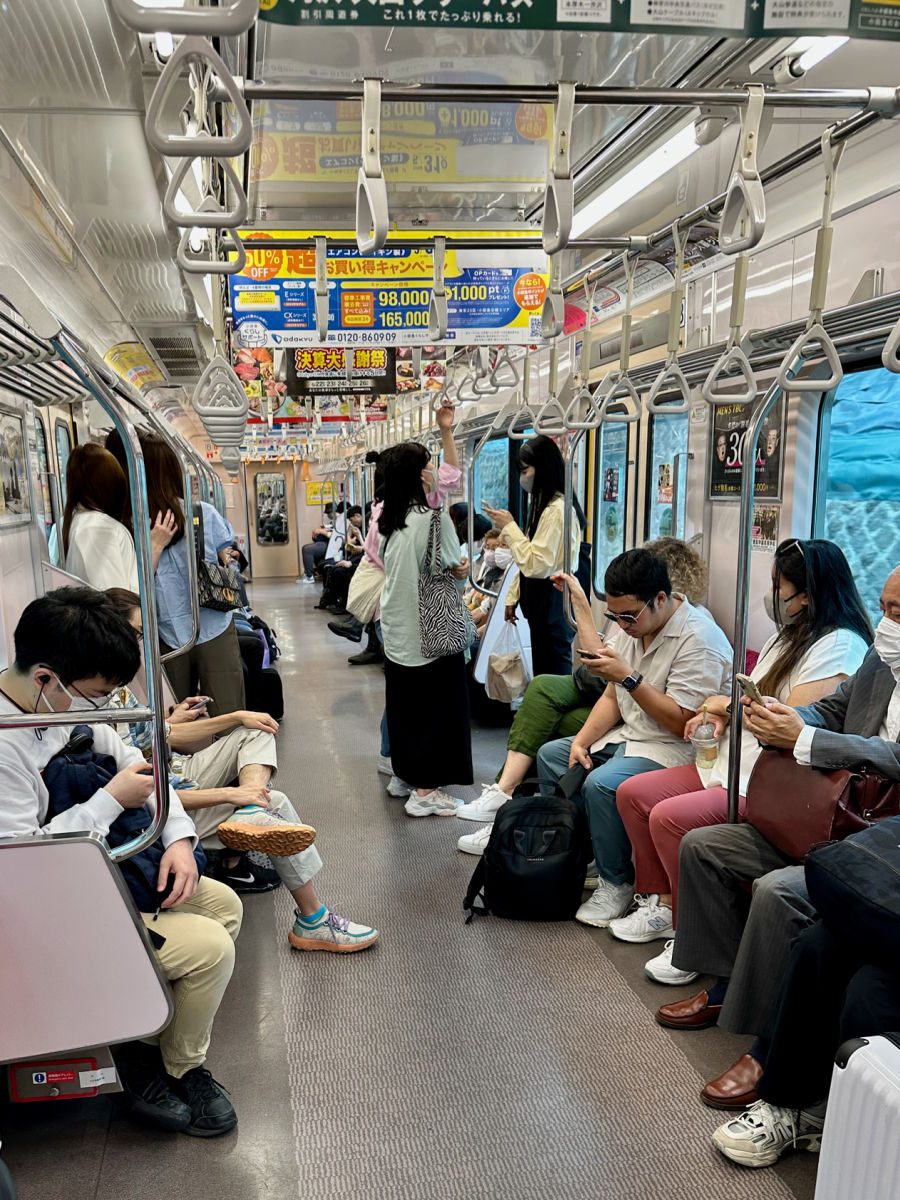
Transportation is another pricey part of traveling in Japan. I don’t recommend traveling by taxi very often in Japan, since they are quite expensive, but there will be times when it is the best choice, especially in the heat of summer. Taxis in Japan work similarly to taxis in the U.S., charging a higher starting fee for the first couple kilometers of travel with additional costs added on for any further distance.
For example, you will be charged about ¥500 for the flat fare and an additional ¥200 for each additional kilometer. (Japan Guide gives a detailed explanation of how taxi fares work in Japan.)
Japan’s public transportation networks in metropolitan areas are feats of modern urban planning. Trains arrive and depart at the precisely scheduled second . They are perfectly clean, they run smoothly, and they take you to wherever you need to go.
It can be a bit daunting if you have no knowledge of Japanese to make sense of the transit system maps, but you will eventually get the hang of it. Buying a train ticket isn’t too complicated either, as there is usually an English-language option on the self-service booth screens.
In Tokyo, one-day tickets for the metro are ¥600 (about $4.00) for adults and half that for children. In Kyoto, the metro is a little more expensive, with one-way fares costing about the same as the one-day tickets in Tokyo do.
For traveling longer distances in Japan, suburban trains and the Shinkansen (bullet train) are the way to go. If you are planning on taking several railway trips, then it may make sense to get a rail pass, but those rates recently went up so you really need to do the math to see how much you will use it. Rail passes are sold by duration (i.e., each week costs an extra amount of money), class of service, and region vs. national, and they are not cheap.
A regular fare for the JR 7-day rail pass is about $200, and a 14-day pass is $315 (children’s passes are less.) This does not include shipping and handling and any other processing fees. Make sure to book rail passes far in advance.
You cannot buy them in Japan— they have to be purchased within the United States with a valid passport several weeks before traveling to Japan. There are several websites where you can buy passes including JR Pass . When you arrive, you need to stop by the JR Train office and exchange your vouchers for actual passes.
The rail pass comes with added perks, which include not having to reserve a seat on long-distance trains, the ability to use the pass on suburban JR trains, as well as free access to the Narita Express between downtown Tokyo and Narita International Airport.
Rail pass costs: $315 per full price JR pass x 2 +$158 per children’s price JR pass x 2 = $946, plus (always double check for current rates)
Metro ticket costs: [2 x $4.00 metro tickets x 2+ 2 $2.00 children’s price metro ticket x 2] x 12 days = $144, plus
Taxi fare: $20 per occasional taxi ride x 4 = $80
Total transportation costs: $1,170
Sightseeing and Activities Costs in Japan
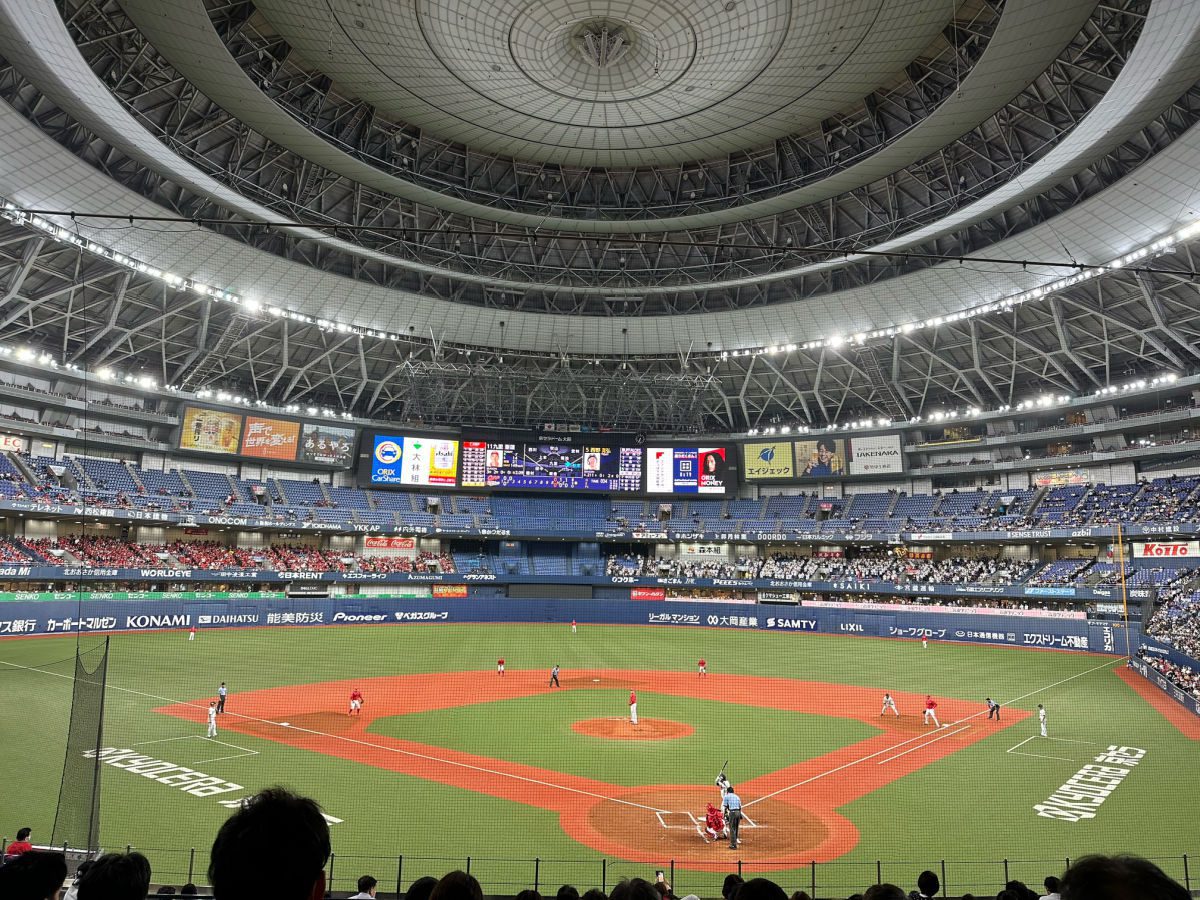
One of the best parts about budgeting for Japan is that it is easy to sightsee on your own without a guide and many of Tokyo and Kyoto’s most famous attractions are free.
Temples and museums charge small entrance fees, usually ¥600 (about $4.50) per adult, half price for children. This includes things to do in Tokyo like Senso-ji temple, and the Tokyo National Museum in Ueno Park.
Most of Kyoto’s attractions and temples typically charge similar small entrance fees, like Ginkaku-ji temple, Temple of 10,000 Buddhas, and the Iwatayama Monkey Park near Arashiyama.
There are a couple of major attractions that will cost, most notably the Tokyo Sky Tree, which charges about $15 per adult ticket (not including Fast Track), with a reduced fare for children.
Tokyo Dome charges about $30 per ticket with reduced fares for children, but that ticket covers all of the amusement park– the individual museums there (like the Japanese Baseball Museum) are about the same price as most temples would be. The Mori Art Museum also charges higher than usual ticket prices, but the ticket includes access to multiple galleries, as well as Tokyo City View.
Of course, many families are also going to want to go to Tokyo DisneySea or Universal Studios Japan in Osaka.
Japan’s fascinating history has produced a rich and complex culture. Tourists looking for traditional Japanese experiences have plenty of options when it comes to cultural activities. They come with a price tag though.
Option 1: Attending a Sumo Practice or Match
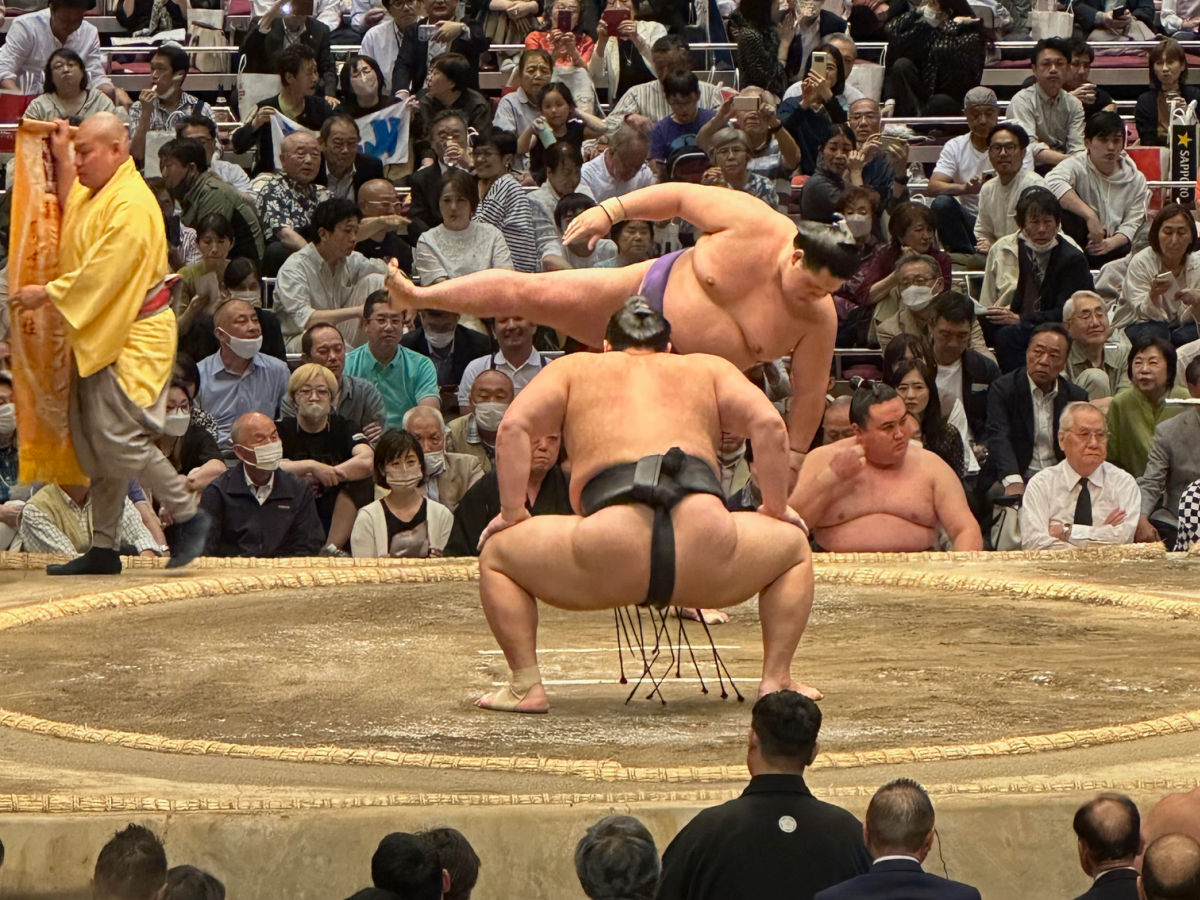
Watching Sumo wrestlers hone and practice their martial art is a stunningly beautiful cultural experience. Tournaments are only held seasonally, and tickets need to be booked in advance. Not to fear if you won’t be in Japan for a tournament though, Sumo practices are held in Sumo-beya (Sumo Stables) throughout the rest of the year.
General admission tickets for Sumo Matches are only about $2, but if you want better seats, a cheap seat will go for about $35, with a lower-end family box going for about $110. Expect to pay several times as much for a better ticket or box.
Option 2: Kabuki
Kabuki is a type of traditional Japanese theater. The costumes and masks are beautiful, and the performances are fascinating, even if you can’t really understand what is going on. The typical places to watch Kabuki are the Kabuki-za Theatre in Tokyo and the Minami-za Theatre in Kyoto.
Tickets can cost anywhere from $27-$220, based on the seat quality. There are tablet rental services for ¥500 available for tourists who don’t speak Japanese that attach to your seat during the performance so you can get a better sense of what is going on.
Other options for cultural activities include tea ceremonies , sushi making workshops , origami classes, calligraphy classes, and kimono sampling classes . A rough estimate of the price for each of these activities is probably somewhere between $50-$100 per person.
If you’re in Japan for a little under two weeks, I would recommend picking 1-3 cultural activities, depending on your budget. I’d also suggest taking a food tour in Osaka or Tokyo. Another thing that older teens would love would be dressing up in costumes and go karting through the streets of Tokyo.
Total sightseeing and attractions costs: $1,100
Food Costs in Japan
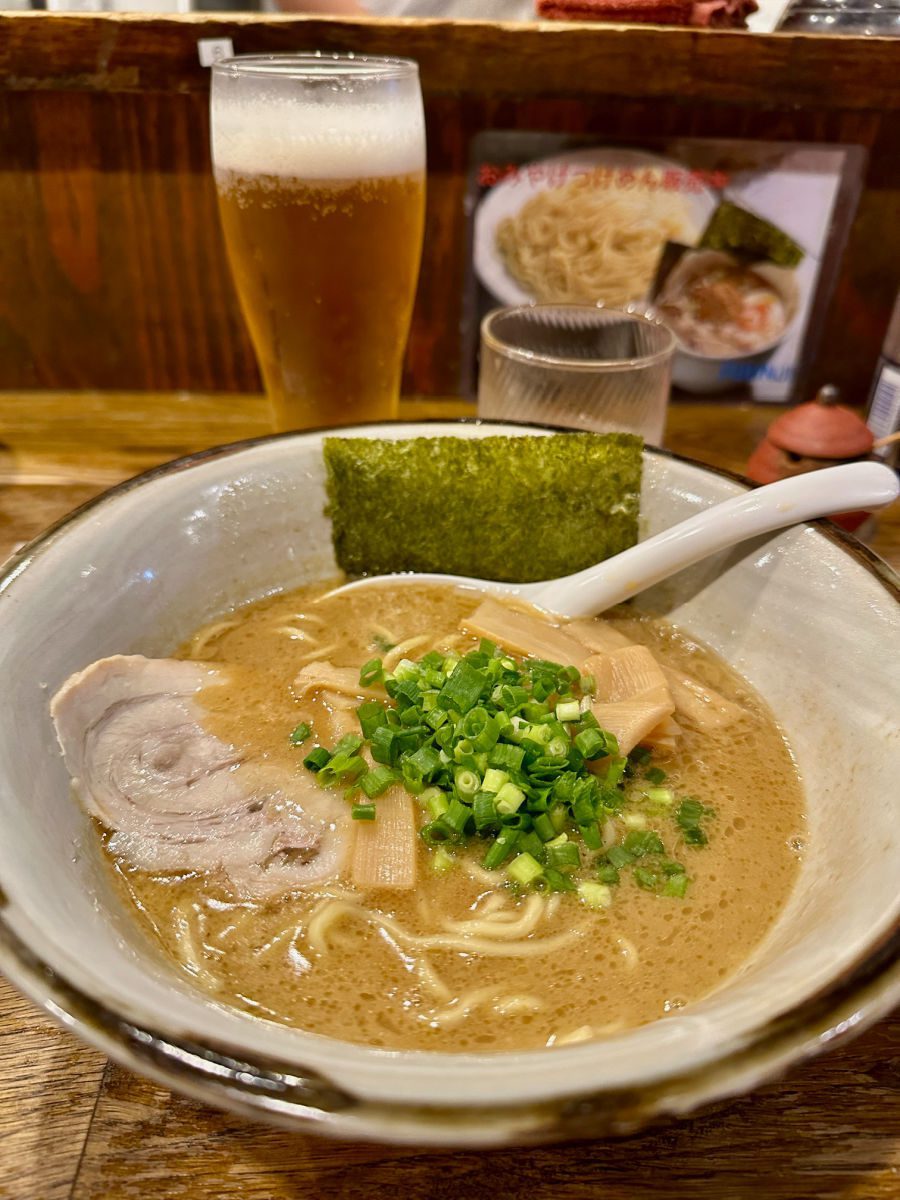
If you aren’t going to Japan at least partially for the food, then you’re doing it wrong! Eating Japanese food is a really special experience, no matter your price point. With such a unique cuisine, it is impossible to get bored of eating on a visit to Japan— that is, if you are an adventurous eater.
Eating out in Japan can be expensive. Moderate-range restaurants and Izakaya (restaurants with bars) will cost about $15-$20 per person for lunch, and $25-$35 for dinner. The good news is that it is possible to experience great Japanese food without eating in these types of venues all the time.
Specialized restaurants, like ramen bars, are Japanese staples that serve up specific types of food and are perfect for those doing Japan on a budget. It is possible to find amazing ramen bars (including some Michelin-starred ones) that charge between $5-$15 for a large bowl. These types of venues exist for many other types of Japanese foods, like gyudon, tonkatsu, udon, okonomiyaki, curry houses. The only downside is that these venues are typically quite small and don’t take reservations so you need to be prepared to wait in line.
There are also shokudo and teishoku, which are smaller restaurants that serve meals that are less fancy, but often equally as tasty as Izakaya. Prices are about the same as what you would find at ramen bars— sometimes more, sometimes less. Some of these restaurants are chains where you order set meals, either from a paper menu or on these chunky, vending machine-looking devices that spit out tickets.
Another option for eating out is picking up bento boxes from the prepared foods sections of department stores, like Daimaru, Takashimaya, Mitsukoshi, and Isetan. The food is actually very high quality and is painstakingly prepared, as is often the case with anything in Japan. You can find almost anything at the department stores, including sushi, karaage, tonkatsu, yakisoba, zaru soba, eel, gyoza (dumplings), yakitori.
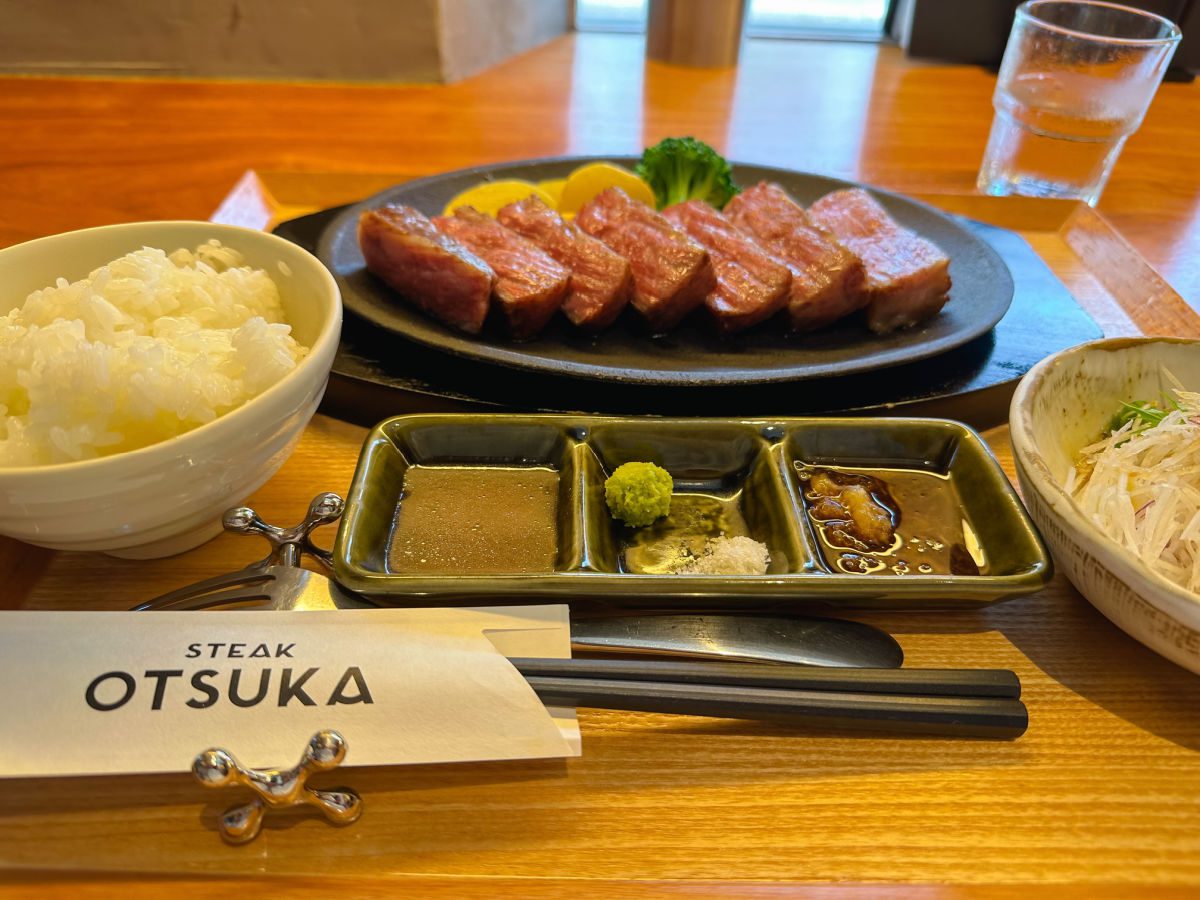
Good-sized meals at higher-quality department stores will probably cost around $15 per person. They are easily transportable and a great option to eat great quality Japanese food at a lower price point. Konbini (Japanese convenience stores) offer similar options, albeit in smaller quantities and of lower quality.
Street food is also great in Japan. Since Japan is a highly developed country, eating street food is pretty safe, unlike other countries in Asia where Americans need to be more cautious. Japanese treats like taiyaki, takoyaki, yakitori, and other fan favorites can be purchased, usually for cheaper than the food you will find even at ramen bars. Japan also has a proliferation of high-quality vending machines almost everywhere that spit out great Japanese snacks and drinks for cheap. And don’t underestimate the wonders of a 7-11 sandwich or rice ball!
Breakfast in Japan is a smaller meal that consists of various fish and rice dishes, as well as soup. A decent quality breakfast shouldn’t cost more than $10. It is also easy to make a DIY breakfast, especially if you’re staying in a flat if you pick up prepared and easy-to-prepare foods from konbini.
Just a warning though, if you do want to experience a Michelin-star sushi restaurant or a traditional Keiseki meal, it is going to cost about $250-500 per person!
Total food costs in Japan: $75 per adult, $50 per child, per day x 14 days = $1,750
This cost is subject to vary greatly, depending on whether or not you’re staying in a hotel or in a rental, how fancy a restaurant you prefer, whether or not you’re willing to shop for your own food in the department stores, whether or not you want to splurge for special meals, etc.
Total Japan Trip Budget
If you don’t overdo it on food or activities, your family of four can spend 12 nights in Japan for $13,420 or a little about $1,118 per day. Of course, this assumes average-priced flight tickets during the high season, staying in three or four-star hotels, and eating at lower-to-mid price range restaurants.
If you want an English-speaking guide to attractions, or if you take a lot of tours, your activities costs will go up significantly. But if you stay in vacation rentals, your costs can be lower.
Clearly, this number can be higher or lower based on how you choose to travel.
How Much Does it Cost to Go to Japan?
The bottom line is that for a family of four, with two young children, staying in one room or a rental apartment, a 12-night trip to Japan with 5 nights in Tokyo, 5 nights in Kyoto, and 2 nights in Osaka will cost approximately $13,420 including flights. This assumes you are using public transportation, eating at casual restaurants or picking up takeaway food, and limiting the number of activities. This comes to approximately $280 per person, per day.
Keep in mind that this cost will go up significantly if you want to take private tours, private transportation, or enjoy more cultural activities or fine dining.
If Japan sounds too expensive, you can also check out our trip budgets for:
- London trip cost
- Iceland budget
- Ireland trip cost
- Italy trip budget
- Hawaii trip cost
- Morocco trip cost
- Greece trip cost
PIN THIS FOR LATER
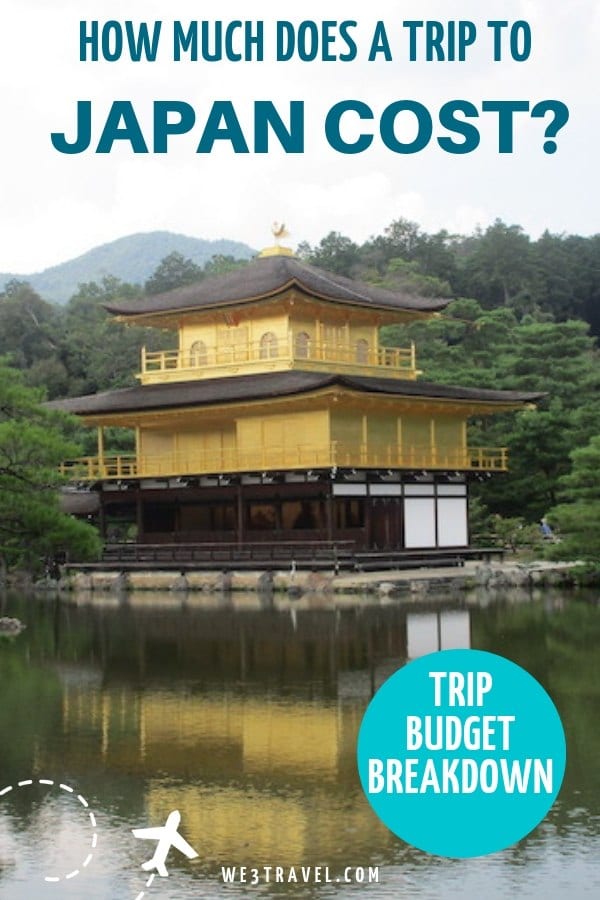
Tamara Gruber is the Founder and Publisher of We3Travel. A former marketing executive and travel advisor, Tamara is an award-winning travel writer and recognized expert in family travel. Tamara is a member of SATW and the Adventure Travel Trade Association, and serves on the Board of the Family Travel Association. She is also the publisher of YourTimetoFly.com and the co-host of the Vacation Mavens travel podcast.
Find this useful? Share it!
Publish Date: November 23, 2023

SIGN UP FOR OUR NEWSLETTER & RECEIVE A FAMILY VACATION PLANNING KIT!
We3Travel.com will use the information you provide on this form to send you newsletters. You can unsubscribe at any time by clicking the link in the footer of any email you receive from us, or by contacting [email protected] . By clicking below, you agree that we may process your information in accordance with these terms.

Start typing and press enter to search
Travel, culture, and stories from Japan.
The japan vacation budget calculator.

I love researching the best places to go when I go on holiday, especially when it’s in Japan. I love planning, and I love knowing I’ve got the money to do it all. But I can absolutely see that for some people, calculating all of the potential costs associated with a vacation to Japan seems like their worst nightmare.
Well, now you don’t have to! I’ve built a Japan vacation budget calculator to do all the hard work for you. Either compare your holiday’s actual spending to your initial budget or plan everything out beforehand and find out how much money you’ll have left to spend on fun things!
Halfway down this page, you’ll find that calculator and I hope it’ll change the way you plan your trips to Japan!
Table of Contents
Why You Need a Budget in Japan (5 Reasons)
Before you use the Japan trip cost calculator, let’s run through a few reasons why you actually need a budget in Japan (Even if that yen is burning a hole in your pocket!) and why I made it in the first place.
If you’re dreaming of savoring sushi in Tokyo, meditating in serene temples, or getting lost in the vibrant streets of Kyoto, then Japan is calling your name. As a seasoned adventurer and as someone who lives here, I can vouch for the incredible experiences that await you in the Land of the Rising Sun .
However, there’s one essential tool that’ll make your Japan trip even more unforgettable and stress-free: a budget! Actually sitting down and making a budget sounds a bit boring to me, so instead I made something that does it all for you!
Here are just a few reasons why having a budget will make your trip to Japan just that little bit better.
1. Making the Most of Your Yen
Let’s face it – Japan isn’t the cheapest destination on the map. While it offers an array of experiences that are worth every penny, you want to make sure your hard-earned money goes where it matters most – creating memories, not going down the drain.
By having a budget, you’re putting yourself in the driver’s seat of your spending. You’ll know exactly how much you can allocate to flights, accommodations, food, activities, and shopping. This way, you can focus on the things you’re truly passionate about, whether it’s riding Japan’s last sleeper train or skiing on Mount Fuji , without worrying about overspending.
2. Avoiding Post-Trip Regrets
So you’ve had this incredible time in Japan and have all these fantastic memories, and then you return from your magical Japan adventure, only to be greeted by an alarming credit card bill. Ouch!
That’s the last thing you want after having such an awesome trip.
Budgeting in advance helps you avoid those post-trip regrets and the unpleasant surprise of a depleted bank account. By planning your expenses, you’ll have a clear idea of your financial boundaries throughout the trip, ensuring you don’t overspend and end up with a mountain of debt when you return home.
3. Unleashing Your Adventurous Spirit
Here’s a little secret – budgets aren’t about killing spontaneity; they’re about empowering it! Once you’ve used the Japan trip cost calculator and you know how much you can spend on various aspects of your vacation, you can embrace your adventurous spirit fully (and buy all the Pokemon cards in Tokyo that you want ;)).
Imagine being able to say “yes” to that thrilling helicopter ride over Hiroshima or indulging in a Michelin-starred dining experience without guilt. With a budget as your trusty guide, you’ll feel liberated to explore Japan in all its glory, knowing you’ve got your finances under control.
4. Discovering Hidden Gems and Local Experiences
One of the most incredible aspects of traveling is uncovering hidden gems and immersing yourself in local culture. Japan has this in bucketloads!
The beauty of budgeting is that it encourages you to seek out these authentic experiences that often cost little to no money at all.
From strolling through quaint alleyways to stumbling upon a traditional festival, Japan has a plethora of magical moments waiting for you. The latter of which has happened to me in Kyoto before!
A budget helps you prioritize these local adventures, making your trip more meaningful and unforgettable.
5. Creating Lifelong Financial Habits
Last but not least, budgeting isn’t just a travel skill; it’s a life skill that you’ll carry with you long after your Japan journey. Maybe it’s not entirely relevant to your trip, but learning how to manage your money effectively, set financial goals, and stay accountable are invaluable habits for your future endeavors, whether they involve travel or not.
With a budget in hand, we’ll make the most of every yen, embrace our adventurous spirits, and craft memories that’ll last a lifetime.
How can you set a budget for Japan as easily as possible? By using the Japan trip cost calculator underneath!
How to use the Japan vacation calculator
So! It’s time to get to the fun part, the Japan Travel Cost Calculator – your ultimate tool for planning an unforgettable trip to Japan!
Follow these simple steps to gain valuable insights into your travel expenses. And no need to worry if you’ve already been, you can use it as a retrospective calculator to see how your initial budget matches your actual spend.
If you haven’t been yet, it’s a great way to get your head around some of the finances. A lot goes into planning a holiday, especially somewhere like Japan.
It’s all too easy to spend way more than you thought!
This calculator will show you how close you stuck (or will stick) to your initial budget, and let you know the actual cost of your holiday to Japan vs your original budget.
- Select Your Currency and Exchange Rate: Begin by choosing your preferred currency from the dropdown menu. Enter the current exchange rate to Japanese Yen (JPY) or the rate you exchanged your currency for yen. All subsequent inputs will be in your chosen currency, making it easy for you to manage your budget comfortably.
- Input Your Ideal Overall Budget: Enter your ideal overall budget for the entire trip. Don’t worry if it’s not exact; you can always fine-tune it later after the calculations have been made.
- Estimated Flight Costs: Add the expected flight costs per person. This will give you a clear picture of the flight expenses, ensuring you stay well within your budget.
- Consider Hotel Costs: Include the cost of hotels per night for all travelers. Ensuring comfortable accommodation within your budget is crucial. Plus, Japan can be overwhelming and there’s nothing like coming back to a nice relaxing room!
- Calculate Daily Transport and Food Costs: Estimate the expected daily transport and food costs per person. Even a rough estimate will do if you haven’t finalized your itinerary yet. $20-$30 per person should easily cover you for an average day’s traveling.
- Ensure You’re Covered with Travel Insurance: Don’t forget to add the total cost of travel insurance. Having comprehensive travel insurance ensures peace of mind throughout your trip and really isn’t worth skimping on.
- Account for Miscellaneous Costs: Miscellaneous costs can be diverse, ranging from airport parking to pre-booked trips and other expenditures. Make sure to include these costs to have a complete overview of your budget, and be as thorough as you can.
- Specify the Number of Travelers and Trip Duration: Enter the number of travelers joining you on this adventure and the number of days you’ll be exploring Japan.
- Hit Calculate and Uncover Your Insights: With all inputs in place, click the “Calculate” button, and let the magic unfold. Discover valuable insights into your trip costs, including the total estimated expense, a detailed cost breakdown, and any budget left over for extra exploration!
Let’s talk a little bit about those insights and how to understand what they mean.
Your Trip Cost
Upon entering your travel expenses and clicking the “Calculate” button, the Japan trip cost calculator instantly provides you with a comprehensive overview of your estimated total trip cost. The magic happens as the calculator considers essential elements like flight expenses, hotel costs, daily transportation, food, travel insurance, and miscellaneous expenses.
The total trip cost is displayed in your selected currency, such as USD, GBP, or EUR, and simultaneously converted to the Japanese Yen (JPY) for your convenience. This yen conversion allows you to have a clear understanding of the local currency, enabling seamless financial planning while in Japan.
In the case where the total cost exceeds your initial budget, the calculator promptly notifies you, prompting an opportunity for reevaluation and adjustments to align your expenses with your planned budget effectively.
Conversely, if the total cost falls within your budget, you’ll be reassured that your financial planning is on point. This reassurance provides peace of mind and empowers you to embark on your Japan vacation confidently.
Cost Breakdown
The Japan Vacation Budget Calculator goes beyond presenting the total trip cost. It provides a detailed cost breakdown, categorizing expenses to unveil a more comprehensive view of your budget. The breakdown includes individual expenses for flights, hotel accommodation, daily transportation, food, travel insurance, and miscellaneous costs.
For each category, the expenses are presented both in your chosen currency and its equivalent in Japanese Yen (JPY). This dual presentation ensures that you have a crystal-clear understanding of how your expenses translate into the local currency, making your financial decisions in Japan hassle-free.
The cost breakdown also reveals the cost per person, which allows you to analyze expenses on a per-traveler basis. This insight is incredibly beneficial for group trips, ensuring transparency and equal distribution of costs among all travelers.
Budget Left Over
One of the most exciting aspects of using the Japan Vacation Budget Calculator is discovering how much budget you have left after considering all your expenses. If the calculator determines that you have a remaining budget, it will provide this information in your chosen currency, as well as its corresponding value in Japanese Yen (JPY).
Having a budget left over allows you the flexibility to explore additional activities and indulge in unique experiences during your trip. This extra budget, expressed in daily amounts and per person, provides a practical guideline for your daily spending while ensuring you have a safety net for unexpected opportunities or expenses.
With this knowledge, you can confidently immerse yourself in Japan’s rich culture, savor local delicacies, and engage in memorable adventures, knowing that you have budgeted wisely for an unforgettable experience.
Anyway, that’s enough talking from me. It’s time to have a go for yourself!
The Japan Travel Budget Calculator
Japan vacation budget calculator.
Has the calculator shown you a bigger number than you first thought? No problem, here are 5 ways to save money on your trip to Japan
5 Ways to Save Money on Your Trip to Japan
Traveling to Japan doesn’t have to be a drain on your bank account, even if it can sometimes feel like it might be. With a little savvy planning and some insider tips, you can experience the best of this fascinating country without breaking the bank.
Here are five practical ways to save money on your Japan trip:
1. Scoring Cheaper Flights
Let’s start with the big expense – flights. Booking early is your ticket to snagging those sweet deals.
Keep an eye on airlines’ sales and sign up with Going to catch the best prices (literally like 90% off your flights…). Also, consider being flexible with your travel dates – flying mid-week or during shoulder seasons often comes with lower fares.
Another nifty trick is to check nearby airports and alternative routes. Sometimes, flying to a different city in Japan and taking a domestic flight can save you a bundle. Not always the case, and not always ideal, but it can sometimes work out well.
2. Making Extra Income Along the Way
Now, this might sound a bit unconventional, but hear me out – you can actually make some extra yen while traveling in Japan! How? Well, put your skills to good use! If you’re a talented photographer, consider offering photography services to fellow travelers. Love writing? Start a travel blog and share your Japan adventures.
I’ve written a massive article about how to earn money in Japan , and while the majority of those suggestions are for people considering living in Japan, it could absolutely work for you as well
Alternatively, and depending on your visa, you can teach English online during your downtime or offer language exchange sessions with locals. This gives you a chance to earn a little extra income and enriches your travel experience by connecting with people on a deeper level.
3. Traveling Off-Peak
Want to experience the beauty of Japan without the crowds and the hefty price tags? Travel during the off-peak seasons. Spring and autumn are popular, but consider visiting during the shoulder months when the weather is still lovely, and prices are more budget-friendly.
Not only will you save on flights to Japan and accommodations, but you’ll also enjoy a more authentic experience, mingling with locals rather than fellow tourists. Plus, attractions and activities are less crowded, allowing you to immerse yourself fully in Japan’s culture and beauty.
4. Embracing Free Things
Ah, the beauty of freebies – they’re the traveler’s best friend! Japan offers a wealth of free or low-cost activities that are as enriching as they are enjoyable.
Explore the serene gardens, parks, and temples scattered throughout the country – many of them are open to the public at no charge. Enjoy the city lights by taking a leisurely stroll through bustling neighborhoods.
Don’t forget to research free events, festivals, and cultural activities happening during your visit – they’re fantastic opportunities to experience Japan’s traditions without spending a yen.
5. Eating Smart and Savvy
Let’s talk about everyone’s favorite topic – food! Japanese cuisine is undeniably delicious, but it doesn’t have to be expensive. While treating yourself to something special during your trip is a must, balance it out with more budget-friendly options as well.
Seek out local eateries, “izakayas” (Japanese pubs), and “tachinomiya” (standing bars) are perfect for affordable and tasty meals. Convenience stores are your best friend for quick and cheap bites, and they’re also so damn delicious!
Additionally, some restaurants offer lunchtime specials or “set meals” that give you great value for your money.
Congratulations! You have now mastered the art of budgeting for your dream vacation to Japan with the help of our Japanese Travel Budget Calculator. Armed with valuable insights into your trip costs, including the yen conversion, you can confidently plan your itinerary, book accommodations, and explore the wonders of Japan without worrying about exceeding your budget.
So, you’ve sorted out the budget, but you’re still a little sure about where to go? Take this Japan travel quiz I’ve made specifically for you. It’ll tell you where your next great adventure lies in Japan!
My Top Japan Travel Resources:
What’s the best way to get cheap flights to Japan?
Going is BY FAR the best way to secure dirt-cheap flights to Japan. We’re talking as much as 90% off!
Should I live in Japan?
Maybe – I’ve made this quiz specifically for you! Who knows, perhaps you’re closer to those bowls of ramen than you think 😉
Where should I visit next in Japan?
It depends – To help you figure it out, I’ve made this quiz just for you!
Can I get online in Japan?
You can! – The eSIM is the one I’d recommend using, plus it’s perfect if you’re planning to travel somewhere else afterward.
Can you help me plan my trip to Japan?
Yes – I’ve got a Japan bucket list just for you! Simply download the PDF, print it out, and tick off some of the things you’d like to see, do, and eat.
Can I get money out in Japan without getting charged?
Yep – The Zero-fee card I use to get money in Japan hasn’t steered me wrong yet. Highly recommended to any traveler!
You might be interested in
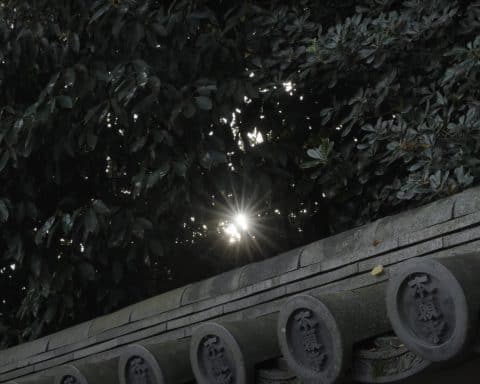
How Many Days Should You Spend in Kyoto?
If you’re coming to Japan for the first time, I can almost guarantee you’ve put Kyoto somewhere on your itinerary. Now you need to…

Is Hiroshima Worth Visiting?
The route that first-time visitors to Japan usually take is from Tokyo – Osaka (and surrounding areas) – Tokyo. Of course, there are trips…

Easily Avoid Jet Lag When Travelling To Japan.
Japan is a bucket list destination for many and takes a load of planning which makes it so important to make the most of…
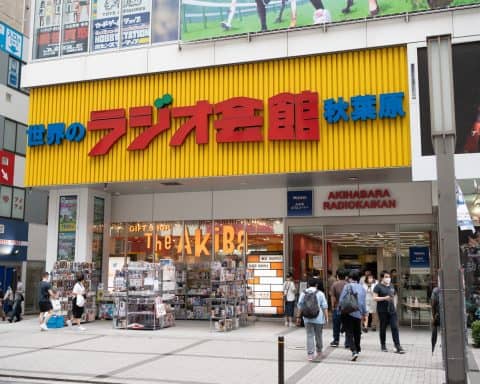
The Complete Guide to Radio Kaikan
I start lots of these introductions by telling you how I love geeky things, and this is no different. Akihabara is an otaku’s paradise…

HARD-OFF: The Magical World of Japanese Second-Hand Stores.
There are a few things you should absolutely plan to do on your first trip to Japan: Cross Shibuya Scramble, Visit the country’s ancient…
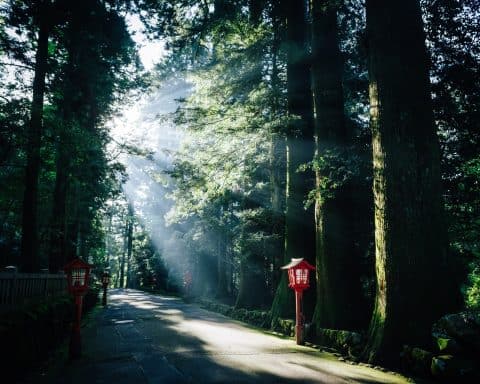
Is Hakone Worth Visiting?
With so many places to visit, many people wonder whether it's worth taking a trip outside the capital to visit. Let me tell you…
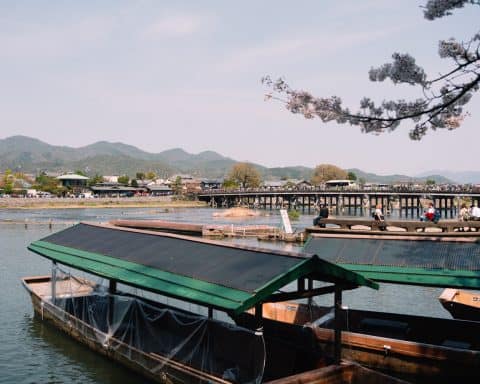
Is Arashiyama Worth Visiting?
Whenever I write these ‘Is it worth visiting’ type of articles, my decision usually lines up with what most people think. However, this wildly…
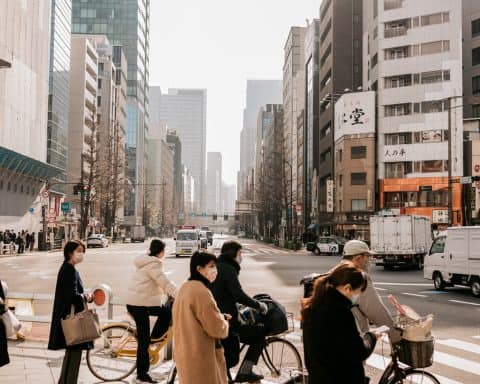
12 Things You Should Do After Landing in Tokyo
You’ve done it! You’ve planned your trip to Japan, saved up, and finally landed in Tokyo. Now what? Depending on the time your flight…
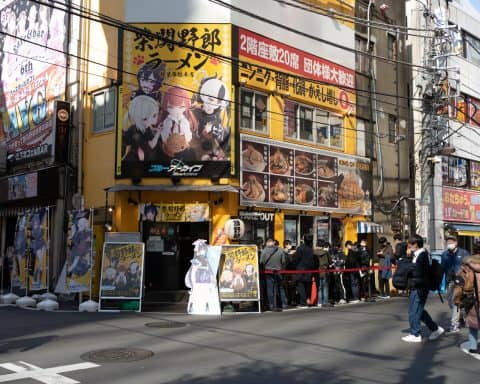
20 Things to Do in Tokyo in the Morning
Have you arrived in Tokyo early in the morning and don’t know what to do? Or perhaps you’ve got some time to fill before…
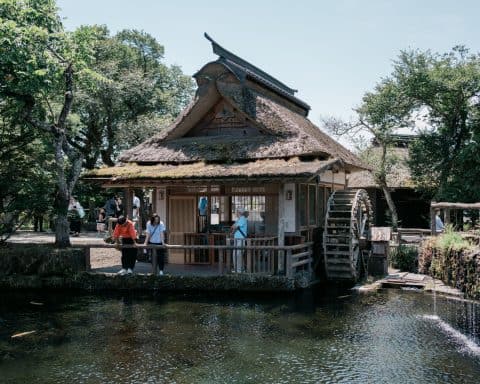
Oshino Hakkai: Japan’s Crystal Clear Pools
If you’ve used this quiz to help you decide on where to visit in Japan, and this calculator to make sure it’s affordable, I’ll…

Jonny Gleason
Jonny is the founder of A Day of Zen and has an unhealthy obsession with Japan. In 2022 he moved to Japan on a mission to give his audience the best possible information. He's helped over 300,000 plan their trip so far, and is eager to make that number much bigger!
Read the story...
Leave a Reply Cancel reply
Your email address will not be published.
Save my name, email, and website in this browser for the next time I comment.
Notify me of follow-up comments by email.
Notify me of new posts by email.
Copy short link
Budget for a trip to Japan
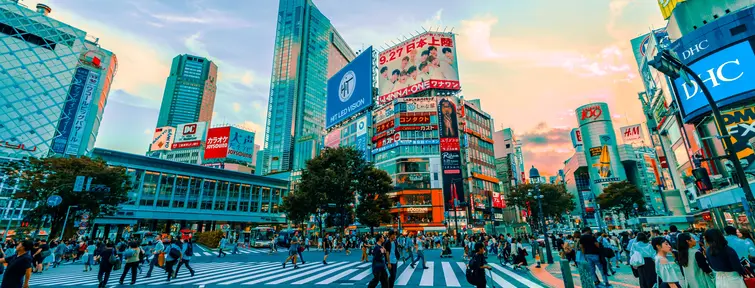
Shibuya, Japon
© Jezael Melgoza / Unsplash
What is the budget for a trip to Japan?
Japan has long been one of the expensive destinations, departing from the old continent. Geographical remoteness and the lack of competition in the airline industry had a lot to do with it. Today, Japan is more open to tourism than it was before, and traveling to Japan is becoming much more affordable, provided you modulate your choices according to your travel budget and priorities!
Let's see together what the budget for a trip to Japan can be.
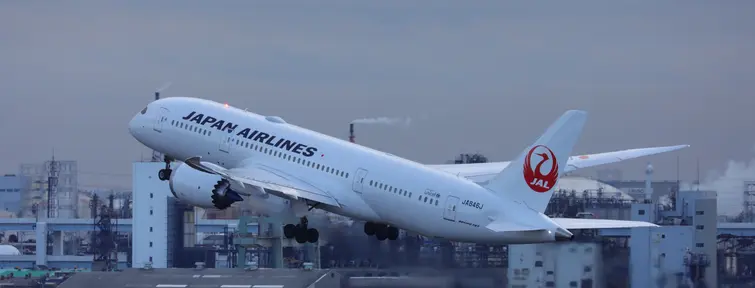
Photo by Tango Tsuttie on Unsplash
Budget for a plane ticket France - Japan
Increasingly attractive rates.
The price of a France - Japan flight varies greatly depending on whether you opt for a direct flight or a flight with a stopover. Before booking your plane ticket to Japan, some useful points of reference:
Price of a direct flight France - Japan: Allow 11 to 12 hours of direct flight, with one or two meals on board. The average price of a direct flight is 1000 EUR / pers. in the regular season.
Price of a flight with stopover France - Japan : Count from 14 to 18 hours of flight with transit and waiting time in the main airport of the airline. The average price of a flight with a stopover is around 800 EUR / pers. in the regular season.
- Price of a discount flight France - Japan: Expect flight times in the evening or very early in the morning, as well as a long waiting time in transit, of the order of 4 to 8 hours. On the other hand, the price of your plane ticket for Japan will be really attractive, around 600 EUR / pers. in the regular season.
- See our comparison of airlines

Photo de Lucas Calloch sur Unsplash
Budget for accommodation in Japan
For all tastes and all budgets.
The range of options for accommodation in Japan is important, and allows you to find the type of accommodation best suited to your budget:
- Renting a detached house
This is the formula offering the best value for money, especially if you are traveling as a family to Japan. Renting a house in Japan allows you to be independent and to live in the Japanese way during a trip.
- Japanese hotel
Standard class, business class, luxury hotels... the hotel offer is very important in Tokyo and Osaka, but falls drastically in the provinces. Looking for a hotel in Japan costs an average of ¥8,000 for a standard hotel room, ¥15,000-30,000 for superior hotels, and ¥60,000 and more for luxury addresses.
The traditional Japanese inns, with tatami, futon and onsen bath are one of the essentials of a trip to Japan. Count on average 20,000 - 30,000 ¥ / pers. with meals and breakfast included.
Home cooking and direct contact with the locals, the minshuku are the equivalent of our guest rooms. The average price per person is ¥6,500-8,500, for half board and home cooking.
- guest house
Japanese youth hostels offer different types of sleeping accommodation: dormitories with bunk beds, Japanese rooms with tatami, private rooms... For an average price of ¥3,500 per night, this is the preferred solution for young people and children. budgets!
- Capsule Hotel
For fans of exotic experiences, a night in a capsule hotel gives you a taste of the daily life of a Japanese salary-man. Spa, massage, gym, video games... Many additional services are also available on site. From ¥2,000/night.
Read also :
- Ryokan, quintessence of Japanese art
- The minshuku, closer to the Japanese
- Capsule hotels, a unique experience
- Find out more about our house rentals
Discover Japan Experience's Rental Houses offer in Japan
Rent a house in tokyo.
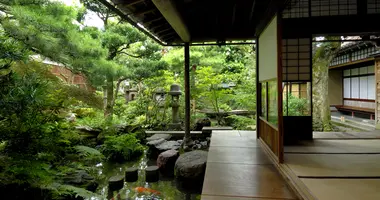
Experience an authentic stay in the city and rent a house in Tokyo. Our comfortable accommodations in Tokyo are all centrally located in the Ikebukuro district, close to Shinjuku and Tokyo Tower.
Rent a house in Kyoto
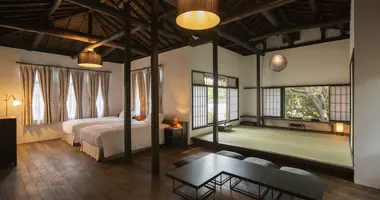
Rent a house in Kyoto and experience the city, by living like a local. We have many houses and apartments in Kyoto in great locations throughout the city.
Rent a house in Kanazawa
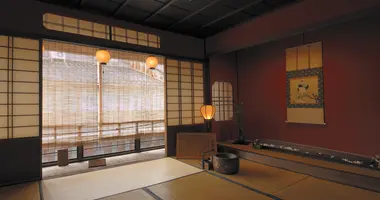
Discover the wonders of Ishikawa Prefecture and rent a house in Kanazawa. Our traditional and cozy accommodations in Kanazawa are located in different areas of the city, which are steeped in tradition.
Rent a house in Takayama
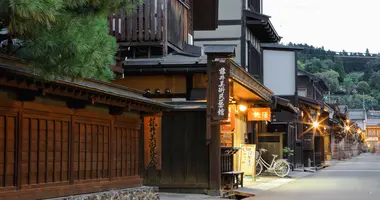
Our rental homes in Takayama offer an ideal home base in the Japanese Alps . These Takayama accommodations allow you to explore the city and Gifu Prefecture in peace.
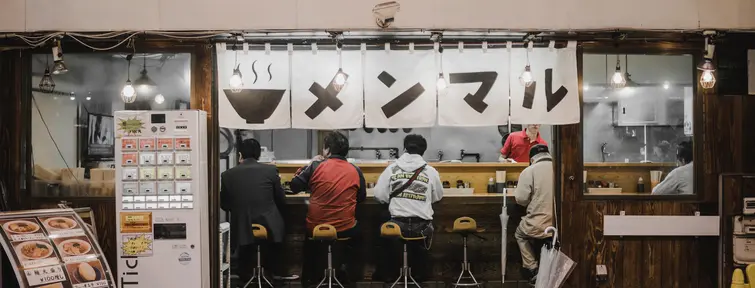
Photo de bantersnaps sur Unsplash
Catering budget in Japan
Eat well and inexpensively.
Contrary to popular belief, the price of a meal in Japan is often half that of a similar meal in a major European city. In fact, eating at low prices in Japan is a reality that allows you to adjust your budget as well as possible:
- Budget meals in Japan
Many fast food chains allow food for the equivalent of ¥300-500. The Sukiya, Yoshinoya and Matsuya chains offer you to taste Japanese curry, gyûdon (preparation made from rice and beef), katsudon (hot rice with a slice of breaded pork) with a miso soup! Another option is kaiten-zushi, plates of sushi served on a conveyor belt that start at ¥100.
- Budget for a standard meal
For heartier meals, restaurants of the teishoku (meal tray) type allow you to taste Japanese home cooking for a price between 500 and 1,000 ¥. These restaurants are easily identifiable by their storefronts displaying meal trays with resin food. Ootoya and Yayoi are two emblematic chains.
- Budget for a larger meal
A sort of Japanese-style brasserie, the izakaya are a great place to observe the Japanese in their daily lives. Ideal for tasting the variety of Japanese cuisine, but be careful, the quantities are small and the note quickly becomes salty. Count on average 3,000 - 5,000 ¥ / pers. Many izakayas now have English menus, like the iconic Izakaya Gompachi in Roppongi , Tokyo.
- Read also : All about donburi , these popular dishes that we all love
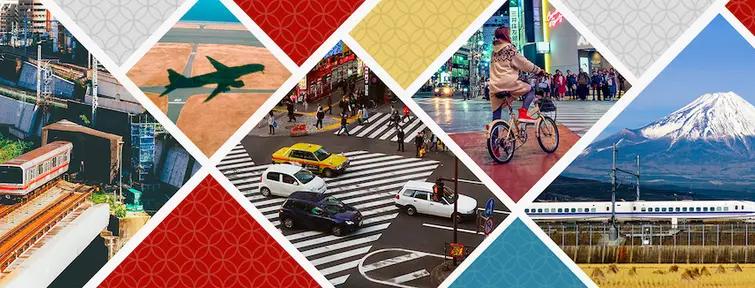
Transport budget in Japan
Travel far and explore japan.
If you want to explore Japan far and wide, you will have to think about your transport budget.
- Take the train in Japan
To travel between major Japanese cities, the easiest and fastest way is to take the Shinkansen, the Japanese high-speed train. If the price of a single ticket is quite expensive (about ¥14,000 or €117 for the trip from Tokyo to Kyoto), the most economical solution if you plan to take the train several times during your stay is to buy a Japan Rail Pass which allows you to take unlimited JR rail lines for 7 (approximately €246), 14 (approximately €393) and 21 days (approximately €503).
The major Japanese cities are all equipped with a very efficient public transport network (bus or metro) which will allow you to visit the city up and down with ease. Beware though, prices are slightly higher than in France and different private rail companies will have different prices.
- Car rental in Japan
The ideal solution if you want to travel all over Japan in freedom and go to more remote places is to rent a car. For example, it is possible to rent a 5-passenger car from €42 per day or an 8-passenger minivan for €91 per day.
- Traveling in Japan by train
- Driving in Japan
Discover the transport offer of Japan Experience
Discover all rail passes in japan.
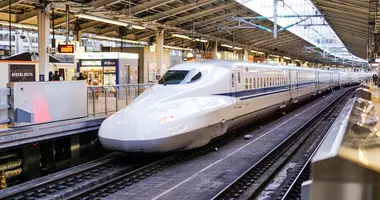
Best quality/price ratio for unlimited travel and, the Japan Rail Pass is the ideal travel solution, and the best way to discover Japan by train!
A0909C1A-93FB-4548-8F2A-CE5CA53C0BF6 Created with sketchtool. Prepaid Cards
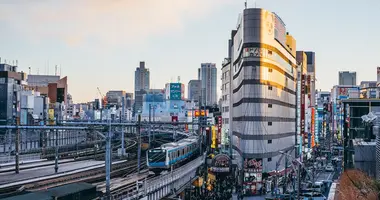
The Suica Card and Pasmo Card are a pre-paid top up card that allows you to use most public transport (metro, trains and buses) in Japan.
Airport Transfers
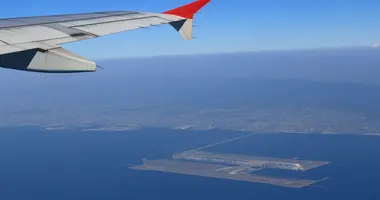
Make your journeys between Tokyo, Kyoto, Osaka and their respective airports easier by choosing our airport transfer services!
Our offer of tours in Japan for all budgets
Group tours in japan.
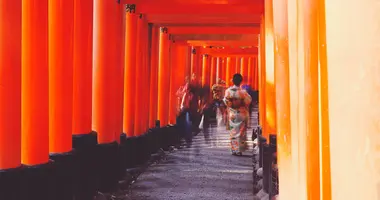
Our tours have been created in response to a high level of demand for a tour which gives a unique view and interaction with Japan.
Self-Guided Tours in Japan
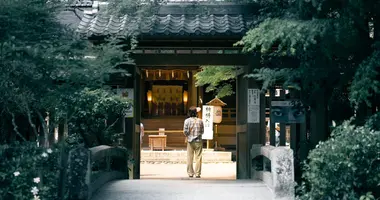
Enjoy tours created by our specialists in Japan. We organize your logistics: accomodation, airport transfers, Japan Rail Pass and Pasmo card.
Tailor-made Tours in Japan
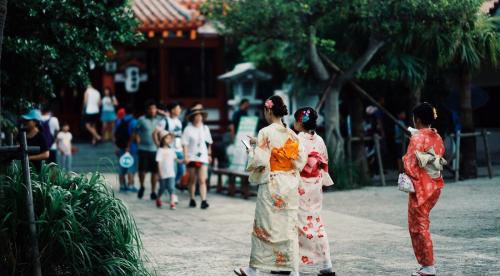
Explore Japan differently through unique and exclusive experiences!
Are you considering visiting Japan, but you're not sure where to begin? If touring with a group isn't your style or you can't find what you're looking for on our catalog of self-guided tours, designing a custom tour might be the perfect option for you.
A trip that's entirely flexible and unique: multiple types of transportation options (trains, cars, boats...), different accommodation options, original activities, personalized itineraries... Organize your dream trip with our experts! Booking a tailor-made tour allows you to travel with 4 key advantages:

100% Customized
With our tailor-made tours, you are the architect of your itineraries in Japan.
Plan your trip with our local experts who are passionate about sharing their knowledge and love for Japan.
Unique Lodging
We have a privileged network of local partners working with our onsite team.
This means we can offer you a diverse and unique choice of accommodations.
Amazing Activities
This vast network of partners also offers you a wide choice of activities.
Don't just see Japan, experience its deeply interesting culture, arts & folklore with activities!
Best Transportation
By train, by car, by boat... With our tailor-made tours, we'll get you the best transportation options.
You'll get to experience Japan travel through all means of transportation, and get everywhere you need!
Meet our Travel Planners
Japan Experience has been organizing top-notch trips to Japan for more than 40 years .
All of our travel planners have either lived in Japan or visited it more than once, and have extensive knowledge of Japan , making sure that you visit and experience the best that Japan has to offer.
Regardless of your interests, our travel planners are local experts who know all the best places to dine, stay, and explore, including both well-known attractions and undiscovered hidden gems . We'll customize your trip to Japan to fit your individual interests and needs, and we'll make sure you have the most amazing experiences.
Our promise is to provide extraordinary experiences for all our customers. Find more about our travel planners by clicking here .
How can our Travel Planners assist you in building your travel plan?
Build your customized itinerary
Our Travel Planners are here to craft the trip of your dreams with you. They'll be able to use their invaluable Japan experience to help you make your dream itinerary realistic.
Because they have already traveled Japan through and through, they'll be able to optimize your itinerary and materialize your ideas into an actually feasible and interesting route.
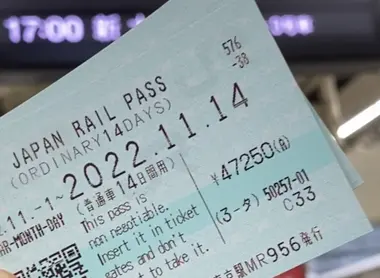
Give you local insight into Japan
Just as they'll be able to craft your tour's itinerary thanks to their extensive knowledge, our Travel Planners will give you their best tips & tricks.
Thanks to real-life experience, you'll skip the unnecessary sights and be given hidden gems recommendations. Secret spots to eat, to visit or even just to see the sunset... Follow the guide!
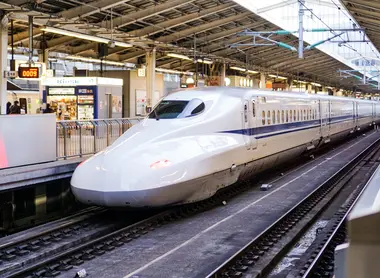
Craft a travel guidebook for you
Along with your tailor-made tour, you will receive a personalized digital travel guidebook (that can be printed, of course). In it, you'll find everything you need for your trip.
Carefully created by our team, this travel guidebook will also be a valuable asset to help you: see it as a condensed version of all our Japan knowledge!
Why book a tailor-made tour with Japan Experience?
Here at Japan Experience, our tours are imagined, built, crafted and carried out by the same team. A team that's been driven by the same passion: turning your dream trip to Japan into a reality. This makes us your perfect partner for your trip to Japan, for 3 reasons:
- We offer the best advice. We specialize only in Japan travel, meaning we know the country inside and out. Our team is made exclusively of passionate individuals having either lived or traveled extensively in Japan. Activities, accommodation... Unique spots and things to do, to create a trip that'll be personalized for you ! Of course, our team also has plenty of secret travel recommendations they'll share with you. As we're already doing with our over 5,000 articles of Japan travel advice.
- We offer the best prices. Thanks to being 100% focused on Japan travel, we have a unique network of local partners who work daily with our local team in Japan, as well as our international team making multiple trips a year to negotiate the best deals for you. This means we have a direct relationship with our local partners, which means cheaper travels for you: no intermediaries taking a cut.
- We guarantee a safe trip. Indeed, our sales team, our booking team and our assistance team are all in-house and work together to build your trip. Over 40 years of experience, multiple offices across the world, thousands of travelers trusting us every year, countless partnerships with media & influencers... Japan Experience is a leader in the Japan travel field. Oh, and we're also the 1st worldwide seller of the Japan Rail Pass.
How to book a Custom Japan Tour with Japan Experience?
Personalized Consultation
Share with us the main points of your itinerary, along with the dates, preferences you prefer during your visit and budget.
Customized Itinerary
Your dream journey takes shape here.
We design a personalized itinerary with the cities, lodgings, and activities of your choice, based on our experience and your goals.
Booking and Confirmation
Once your ideal itinerary is set, we handle the rest.
Pay your deposit and step into a world where all your travel arrangements are meticulously taken care of.
Pre-Trip Support
Our dedicated team remains at your service for any last-minute queries, before and during your trip, ensuring you embark on your journey with confidence and excitement.
Frequently Asked Questions about Tailor-Made Tours
What are the advantages of choosing a custom trip to Japan?
Opting for a tailor-made trip to Japan allows you to customize your itinerary according to your desires and interests. Whether you want to discover the temples of Kyoto, the excitement of Tokyo, the cultural richness of Osaka or travel off the beaten path, our Japanese travel experts will work with you to create an itinerary that suits your wishes. You will be able to fully enjoy the discovery of Japan at your own pace and according to your preferences.
How much does a custom tour in Japan cost? What is included in the price?
The cost of customized tours in Japan depends on many factors such as the duration of the trip, the cities visited, the accommodations chosen (hotels, ryokans, etc.), transportation, guided tours and activities. We work with you to create a customized itinerary that fits your budget. The price of your customized trip will generally include accommodations, transportation (international flights not included), some tours and activities, and the assistance of our Japan specialist consultants.
How to plan a cultural tour of temples, mountains and cities in Japan?
With custom tours, our Japan travel experts will help you plan a cultural itinerary to discover the country's riches. For example, you can visit iconic temples such as Kinkaku-ji in Kyoto, explore the Japanese mountains such as Mount Fuji or the Japanese Alps, and discover cultural cities such as Kanazawa, Hakone or Hiroshima. We will adapt to your wishes and advise you on the sites you should not miss.
What is the ideal duration of a trip to Japan?
The ideal duration for a trip to Japan depends on your interests and the time you have available. For a first trip, we recommend a stay of at least 10 to 14 nights to discover the main cities and sites of the country, such as Tokyo, Kyoto, Osaka and Hiroshima. To explore Japan in more depth and discover the beauty of its islands, countryside and mountains, it is best to stay for 3 to 4 weeks.
Can't find the answer you were looking for?
If you haven't found the answer you're looking for, please check our FAQ page for more information about our Tailor-made Tours.
The various tours we provide can be compared, allowing you to choose the one that best meets your needs. Simply click here: All our Tours in Japan
Activities in Japan
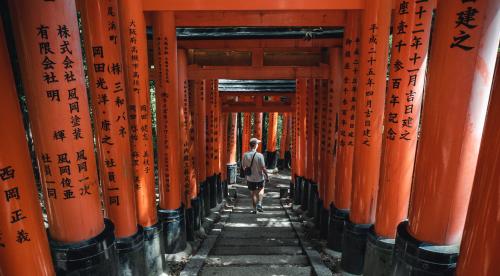
Discover our selection of things to do in Japan!
Japan isn't just Tokyo, Kyoto and Osaka; there are incredible activities to do all over the country , in places like Nara, Okayama, Nikko, Hiroshima, Kobe, or even places off the beaten track. Japan Experience offers a wide range of activities to discover the best of Japan!
- Variety of activities: Over 100 activities across Japan, to suit all tastes and interests, from culture to a tour of Japanese nature to unique experiences.
- Educational experiences: Our activities offer opportunities to learn things about Japanese culture, crafts, cuisine, religion and much more.
- Local English-speaking guides: Enjoy a tailor-made private tour at a reasonable price, accompanied by our local English-speaking tour guides for a more personal, informative and memory-filled experience.
- Quality and professionalism: All our activities are carefully selected and designed by our team of expert professionals with a passion for Japan.
- Authentic discovery: We offer you access to authentic and fascinating Japan experience, enjoyed by local people that are far from the tourist clichés.
Our most popular activities
If you're not sure where to start for your dive into Japanese culture, take a look at and book one of our most popular activities for the best way to enjoy your visit!
For thrill-seekers looking to experience a day of fun and leisure, Universal Studio Japan in Osaka is a must. In Tokyo, immerse yourself and tour the future at TeamLab Planets , one of the best art experiences in Japan or indulge in the timeless magic of Tokyo Disney Sea and Tokyo Disneyland. For an authentic Japanese experience, Kyoto offers a picturesque evening tour in Gion, a soothing tea ceremony that encapsulates the spirit of Japan, or the delicate art of making your own chopsticks. A dinner at a Yakatabune in Tokyo along with other food tour options are the best option to delight gourmets. Each of these bestseller activities offers a medley of unique experiences, ensuring that there's something for everyone to enjoy for your next visit to Japan, either in a private setting or with other ambitious travelers looking for adventure that day.
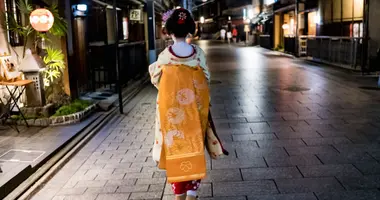
Gion Night Walk Activities in Kyoto
- Duration : 2 hour
- Location : Kyoto

Make your own chopsticks Activities in Kyoto
- Location : 京都市

Universal Studio Japan Activities in Osaka
- Duration : 8 hour
- Location : Osaka

teamLab Borderless Activities in Tokyo
- Location : Minato City

Tokyo Disney Sea Activities in Tokyo
- Location : Tokyo

Tokyo Disneyland Activities in Tokyo
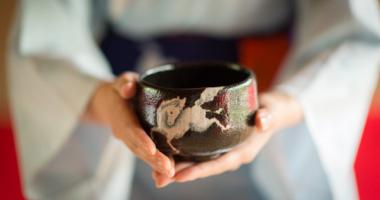
Tea Ceremony in Kyoto Activities in Kyoto
- Duration : 1 hour
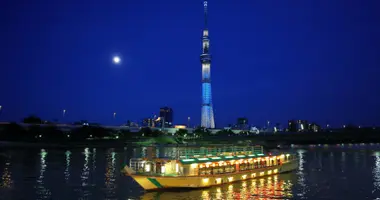
Yakatabune Diner Activities in Tokyo
- Location : Shinagawa City
Our recommended activities
We've carefully selected a range of activities to help you best discover the many facets of Japan and the local culture. Let yourself be immersed in an evening tour through Shinjuku in Tokyo and see where the local people go, or embark on a day of discovery along the tea route in Kyoto. Treat yourself to an enriching exploration of Hakone or a full day of travel in Kamakura. Become a sushi chef during a workshop in Shinjuku City or learn the art of Bento in Kyoto , activities guaranteed to be great experiences for any lover of Japanese food. Or perhaps you'd prefer a complete discovery of Kyoto from top to bottom? There are even special activities for younger travelers with our "Tokyo for Kids" experience. This is the best way to enjoy a visit with family and introduce the richness of Japanese culture. Whatever your preference, we have a unique experience waiting for you.

The Cranes of Japan Kushiro
- Location : Shibecha
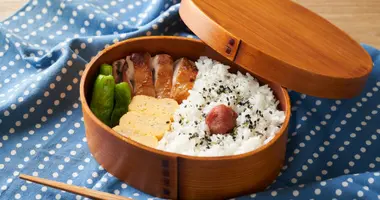
Bento cooking workshop Activities in Kyoto
- Duration : 3 hour

On the Tea Road Activities in Kyoto
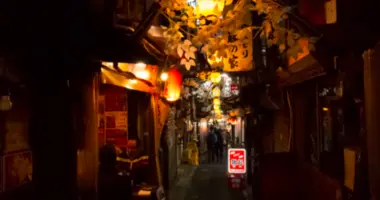
Night stroll in Shinjuku Activities in Tokyo

Kamakura Discovery, full day Kamakura
- Location : Kamakura
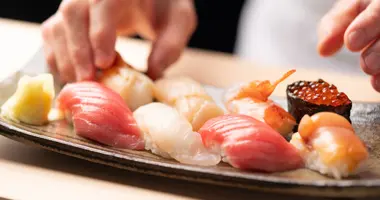
Sushi Workshop Activities in Tokyo
- Location : Shinjuku City

Tokyo for Kids Activities in Tokyo
- Location : Taito City
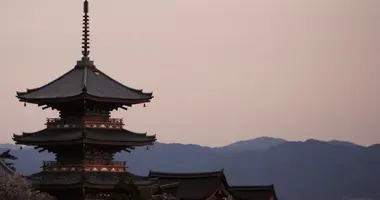
Kyoto Discovery, full day Activities in Kyoto
Frequently Asked Questions
How do I book activities ?
Booking activities is a straightforward process. Simply go to the activity page of the desired experience, follow the steps to book and pay for the activity online.
After booking, you will receive instructions about the meeting place, the time and the tickets via email. Depending on the activity, you may receive your tickets via email or through the post office. Be sure to check the instructions carefully to ensure that you have all the necessary information before your activity.
If you have any questions or concerns about booking activities, do not hesitate to reach out for assistance.
Are activities suitable for all ages?
Yes, our activities are designed to be enjoyed by all age groups. However, some may require a certain level of fitness or may not be suitable for very young children. We always encourage our customers to check the details of each activity to ensure that it is suitable for all participants. Our team is also available to help you select the best experiences to suit your needs.
What languages are available for guided tours?
The guided tours we offer are all available in English and French, as a minimum. However, guide availability may vary according to activity and date. In addition, some tours may also be available in other languages. We recommend that you consult the page dedicated to each activity for more information on the language options available.
What are the must-sees on a visit to Japan?
Japan offers a multitude of unforgettable experiences and major attractions worth exploring. Here are a few must-sees:
Tokyo : Japan's capital is a fascinating blend of modernity and tradition. Don't miss the electronic district of Akihabara, the Senso-ji temple in Asakusa, the bustling crossroads of Shibuya and Tokyo Tower. For pop culture fans, the Harajuku district and Studio Ghibli are a must.
Kyoto : Known as the cultural heart of Japan, Kyoto is home to numerous ancient temples, Zen gardens and Shinto shrines. Be sure to visit the Golden Pavilion (Kinkaku-ji), Kiyomizu-dera temple and the Fushimi Inari Taisha with its thousands of vermilion torii. A stroll through Gion's geisha district is also recommended.
Mount Fuji : Japan's highest peak, Mount Fuji is an iconic sight. For outdoor enthusiasts, climbing Mount Fuji in summer is a memorable experience. Alternatively, Fuji-Hakone-Izu National Park offers magnificent views of the mountain.
Hiroshima : Visit Hiroshima Peace Memorial Park to understand the city's history and its message of peace. Then take a short ferry to the island of Miyajima and its large floating torii at Itsukushima Shrine.
Nara : The city of Nara is famous for its huge park, home to free-roaming fallow deer. The park is also home to Todai-ji temple, which houses the world's largest bronze Buddha statue.
Osaka : Don't miss Osaka Castle and the Kaiyukan aquarium, one of the largest in the world. Enjoy takoyaki and okonomiyaki, two emblematic Osaka dishes, in the Dotonbori district.
Kobe : This port city is famous for its Kobe beef, but don't miss the picturesque Kitano district with its historic Western houses and panoramic views from Mount Rokko.
Ultimately, it is quite possible to quickly lower the price of a trip to Japan by playing on your different budgets (catering, accommodation, transport), without sacrificing the quality of your stay!
For further :
- Japan Rail Pass, the practical and economical solution for traveling by train in Japan
- How much does it cost to climb Mount Fuji?
- Preparing for your stay in Tokyo
- Preparing for your trip to Japan
Please select your country on the list below:
- Switzerland
- United Kingdom
- Other countries

Japan 2023 Cost | A Two Week Itinerary And How Much To Budget For Your Trip
Visiting Japan In 2023
Japan has such an incredible array of offerings for travelers that it can be overwhelming trying to see everything in one trip.
Some careful planning is your best chance at successfully making your way through some of the major sites to see in the country for your first trip.
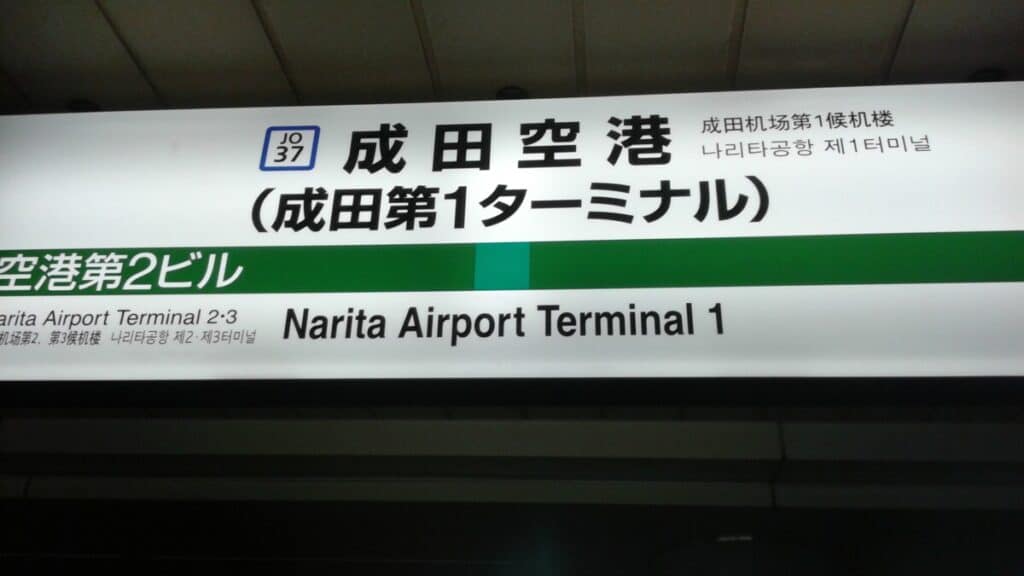
With how much there is to see and do in Japan, it’s a country that people will often come back to more than once.
Not only does it allow them to see and do more, but even experiencing Japan in different seasons is worth coming back for. This guide will help you plan your own trip of a lifetime.
What Makes Japan So Enticing?
One of the many fantastic traits of Japan compared to other countries is the way it’s been able to retain a lot of tradition and remnants of culture from centuries ago while also embracing modern technology and Western influences.
You can move from a big city to a small town in a short train ride, almost as if you’re being transported from one time period in Japan to another.
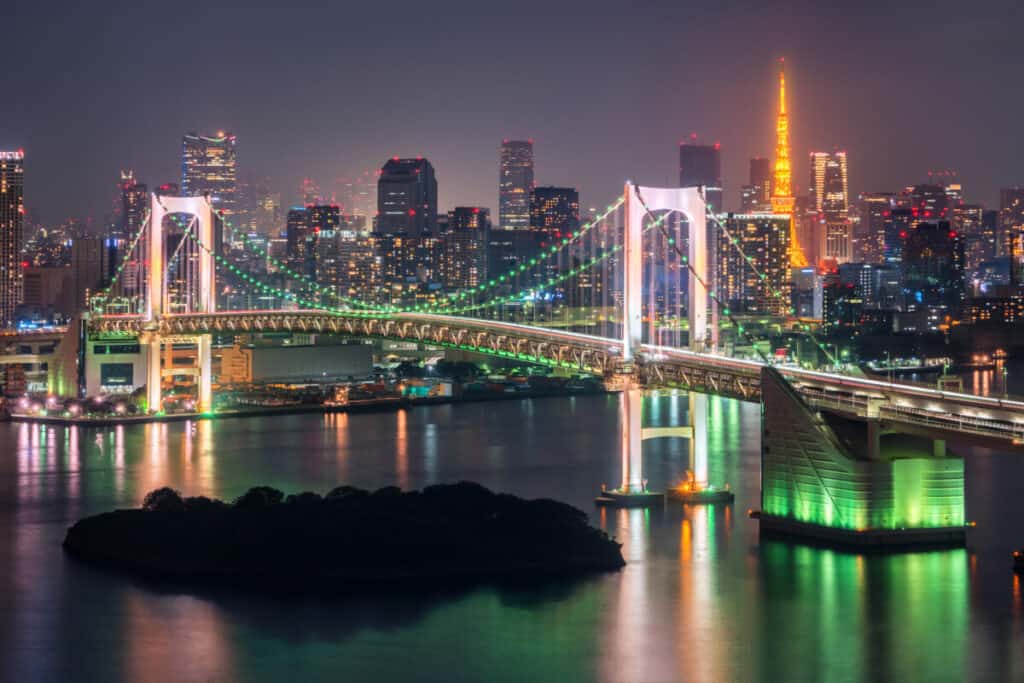
Japan is also a very safe country comparatively, both for locals and tourists. Tourists who are respectful of Japanese culture are embraced and treated with kindness and hospitality wherever they go. Many people in Japan love to share their traditions, food, and their ways of life with those willing to learn.
Getting Around Japan
It’s completely unnecessary to rent a car when traveling through Japan, though it is something you can do should you need one.
The public transportation system in Japan is one of the best systems in the world and is clearly the best way to venture from city to city or within a city itself.
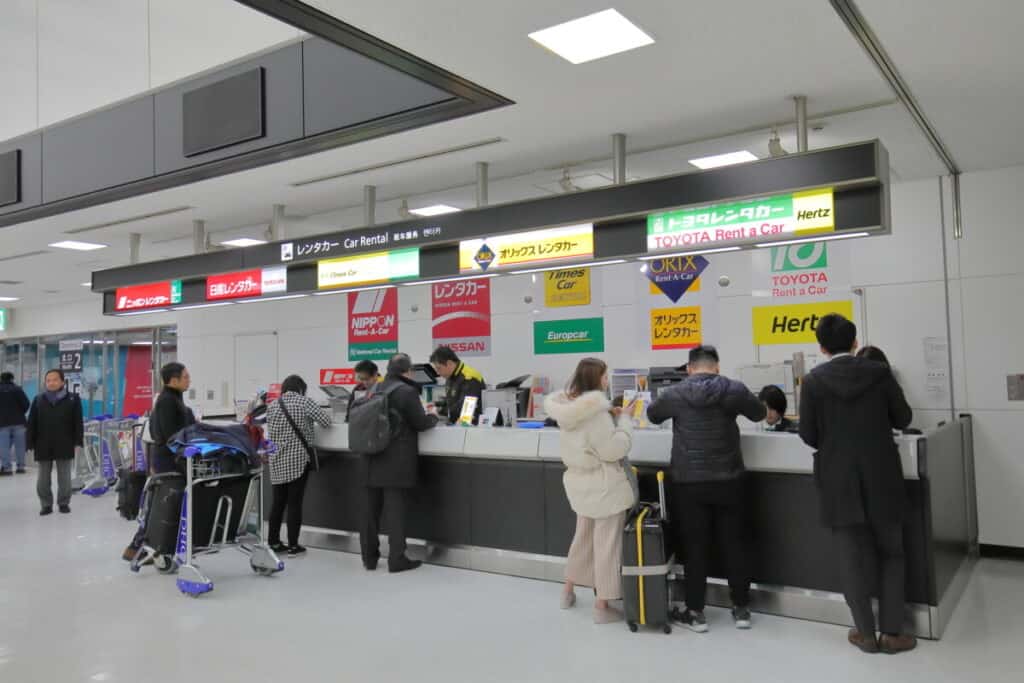
While it takes some time, planning out the specific routes for where you want to go in Japan is crucial, so you know how to budget for your transportation costs. It also helps you understand what your options are in terms of getting from one place to another.
It can be overwhelming traveling through a foreign country when you don’t speak the language fluently .
It’s highly recommended that you purchase a pocket wifi device so you can pull up translation apps and maps with ease, as well as communicate with your loved ones back home.
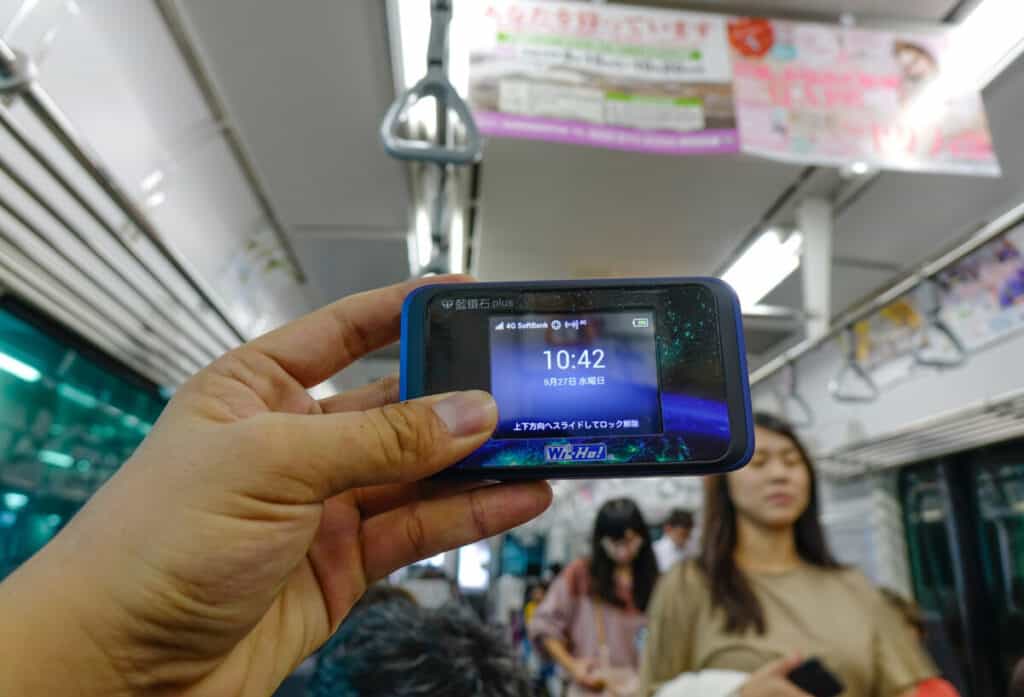
It’s relatively inexpensive and easy to find these devices; you can book one in advance and pick it up at the airport you fly into.
To have access to pocket wifi for a two-week trip, you’re looking at around $50 USD or so. It’s worth adding that to your budget to stay connected and look up directions when needed.
The Japan Rail Pass
One of the most economical ways to utilize public transportation when making your way through Japan is to purchase a Japan Rail pass . A JR Pass gives you the ability to ride many of the local trains and even some bullet trains, or shinkansen, simply by presenting your pass at any train station.
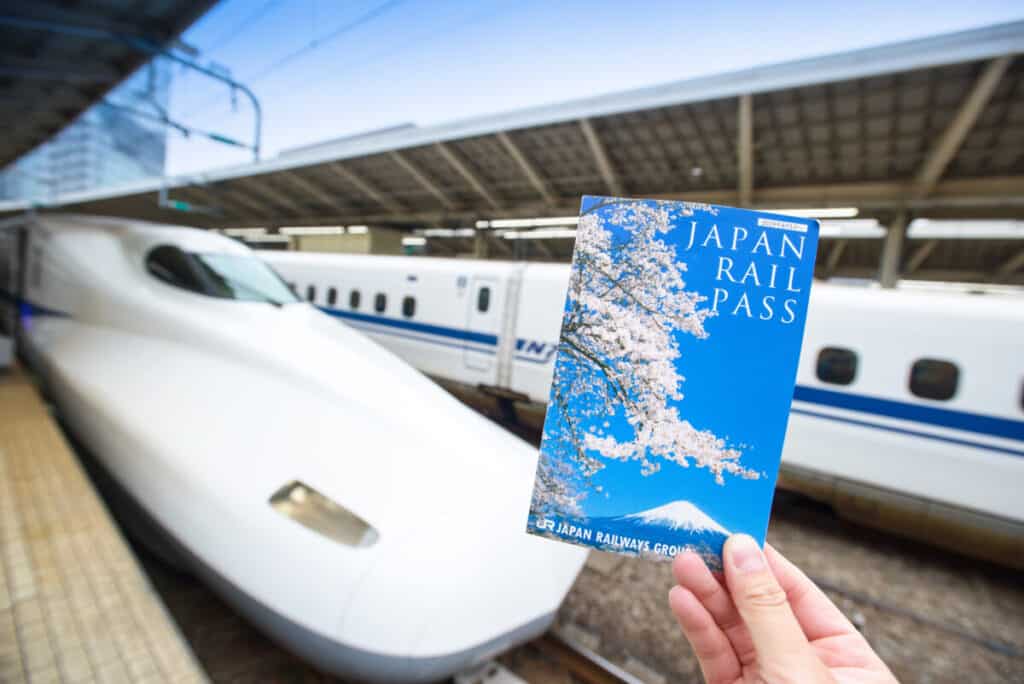
You’ll save a lot of money using a pass, even if some of the routes you plan on taking don’t accept the pass. The 14-day pass is an excellent bargain if you want to see as much of Japan as possible. If you’re mainly spending your trip in Tokyo , it’s not worth buying a pass.
The cost of the Japan Rail Pass will likely vary depending on which pass you choose, as well as whether or not you want to buy an upgraded pass to get luxury seating on select trains .
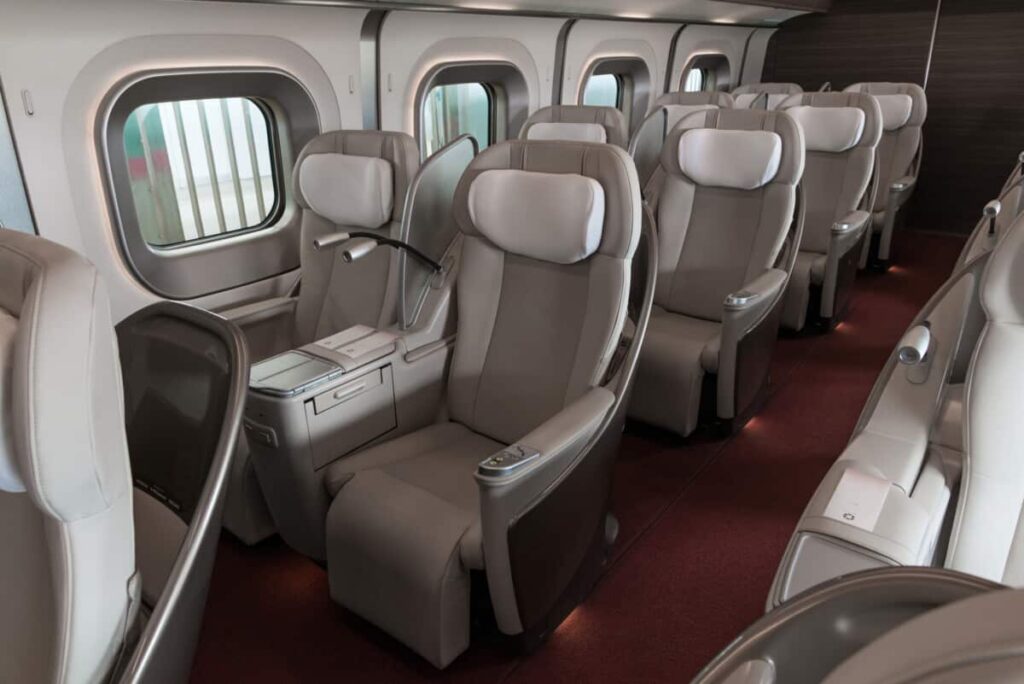
While it’s quite a cool experience to have a green pass, especially if you plan on riding a bullet train, it’s not a necessary expense.
The Limits Of The JR Pass
It’s important to note that while the JR Pass is extremely convenient and cost-effective for traveling through Japan, there are some limitations to where you can use the pass.
You’re only going to be able to use it when traveling on a Japan Rail-owned public transportation medium. Take note that there is some extra cost when using limited express or shinkansen routes.
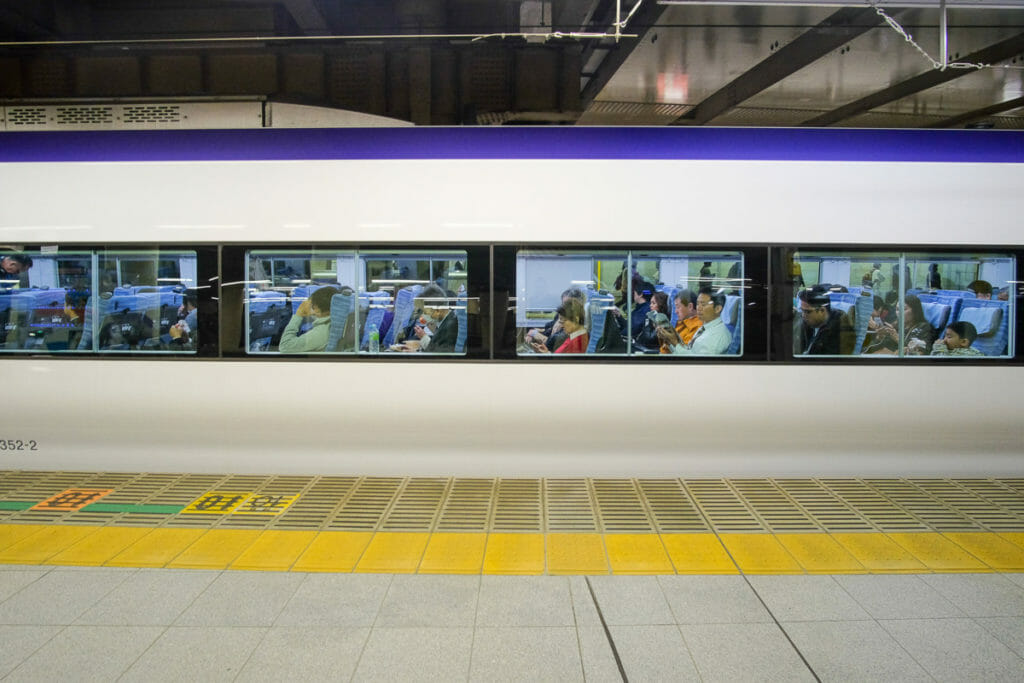
If you find that you’ll have to ride some subways or public transportation owned by other transportation companies in Japan, it’s worth looking into an IC Card . IC Cards are available for major transportation companies such as Pasmo and Suica.
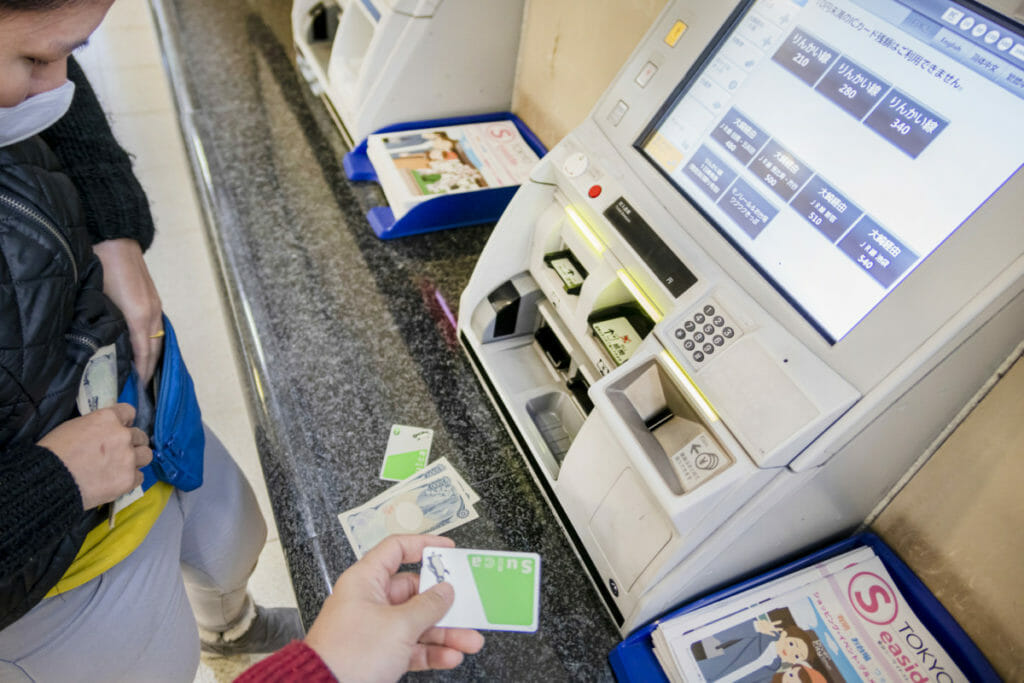
These cards let you board these trains and subway cars, as the Japan Rail pass doesn’t work on them.
The IC Card doesn’t get you any special deals when you use them, but they help you limit the number of yen you have to carry on you.
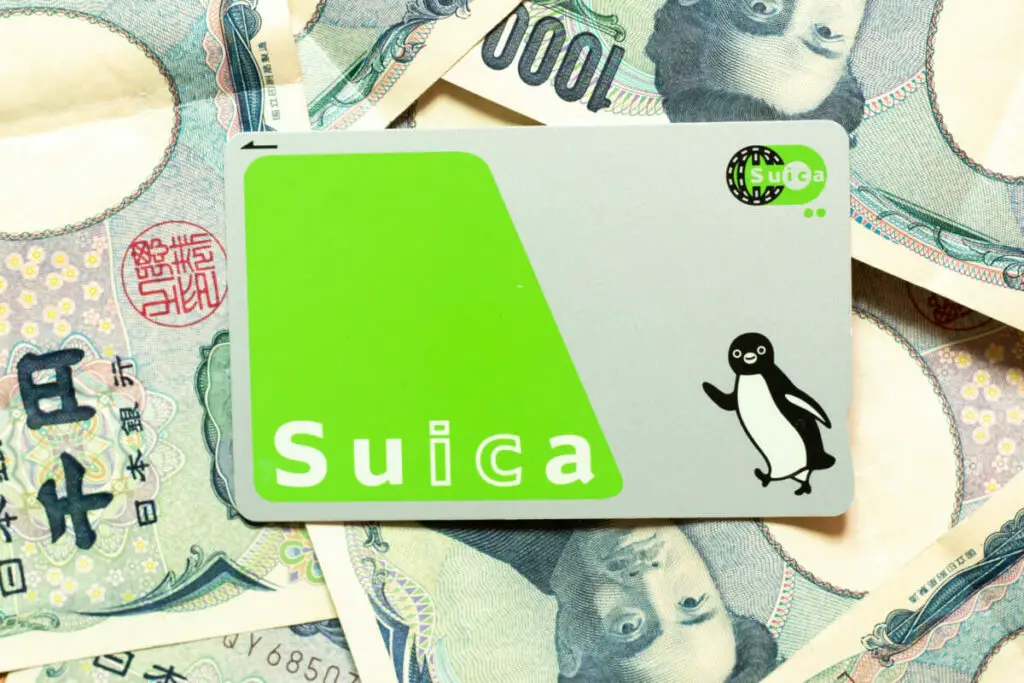
Furthermore, you can use these cards at some vending machines and convenience stores around Japan , so it’s worth setting it up and having some extra yen on it just in case.
Since there are numerous companies that offer IC Cards, your research is going to have to be thorough once you decide where you’re going, so you choose the right card.
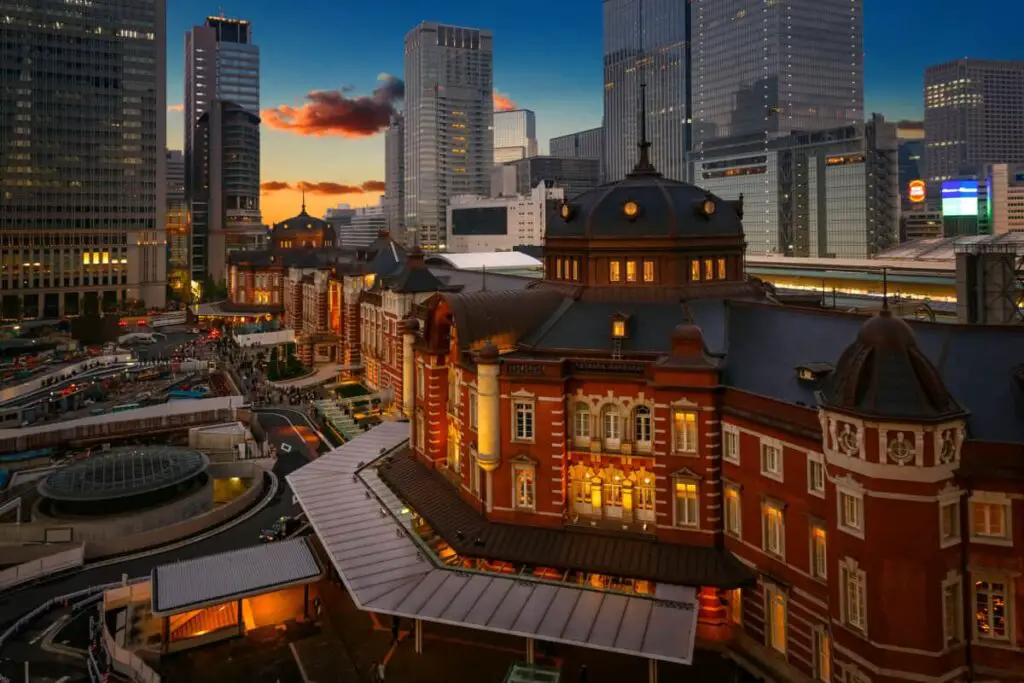
You can purchase and load an IC Card at a train or subway station; Tokyo Station will likely be your best bet since you’ll likely make your way there on your trip.
Tips For Using Public Transportation In Japan
When you’re planning out your routes for getting around Japan, planning around where the JR Pass and IC Cards can get you is the most effective way to get around.
It’s not only convenient but helps you keep your travel costs down as much as you can.
What most seasoned travelers and locals do is use their JR Pass to get as close to their intended destination as possible, as JR routes tend to go pretty far through Japan.
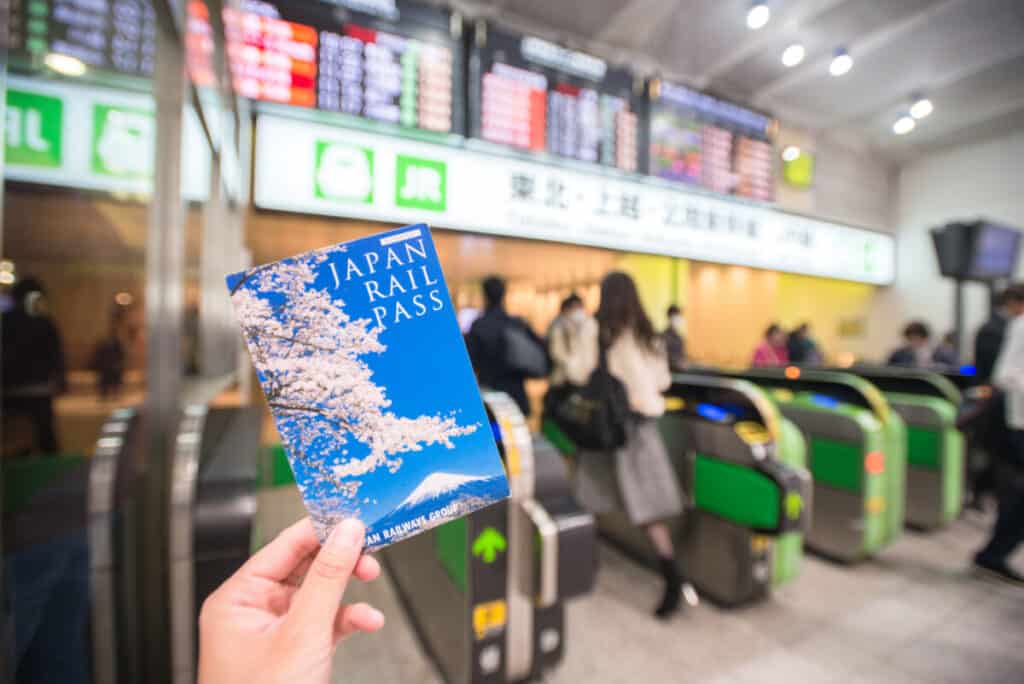
Then, they will use their IC Cards for the more direct route to get to their intended destination.
You can take your luggage on public transportation with you, but you’ll want to be cognizant of how much you pack when you know you’ll be using public transportation.
Some trains will have limits on what you can bring on board with you in an effort to make sure you don’t take up too much space.
Preparing For Your Trip To Japan
You’ll want to prepare yourself with a good portion of yen based on what you decide to do on your trip. A lot of places in Japan either only accept cash or prefer cash.
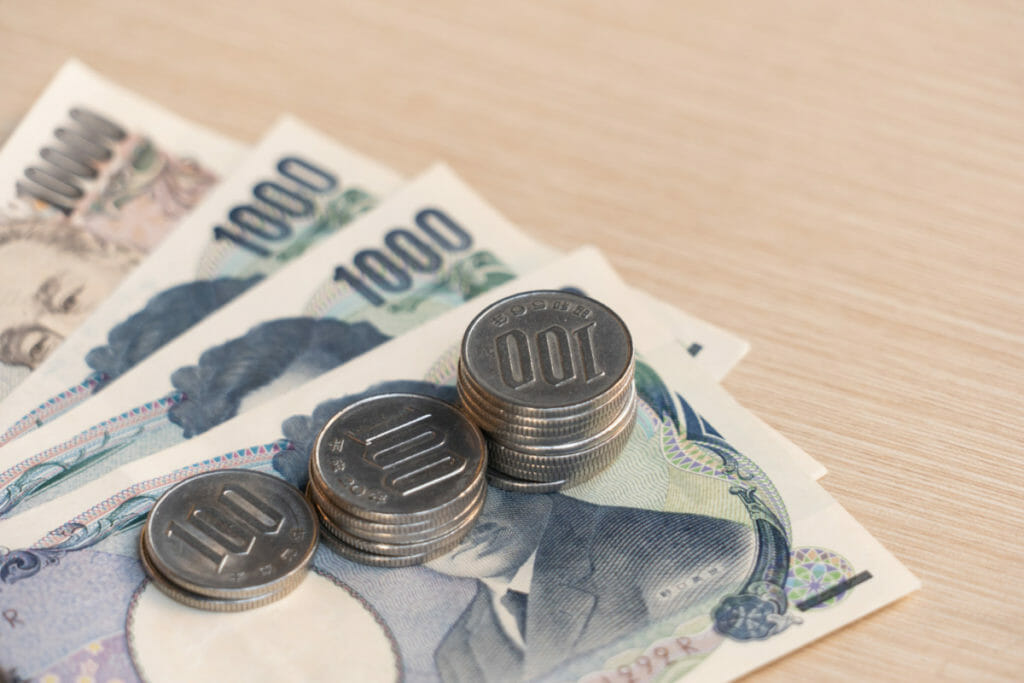
Be sure you have a small and secure spot for storing your cash when you have it on you. Japan is safe, but you can never be too careful.
Japan has centuries of history that may be overwhelming to some, but taking the time to learn basic manners and important aspects of the culture can help you navigate the country much more seamlessly. Some light online reading about manners and a translation app on your phone will do wonders for you.
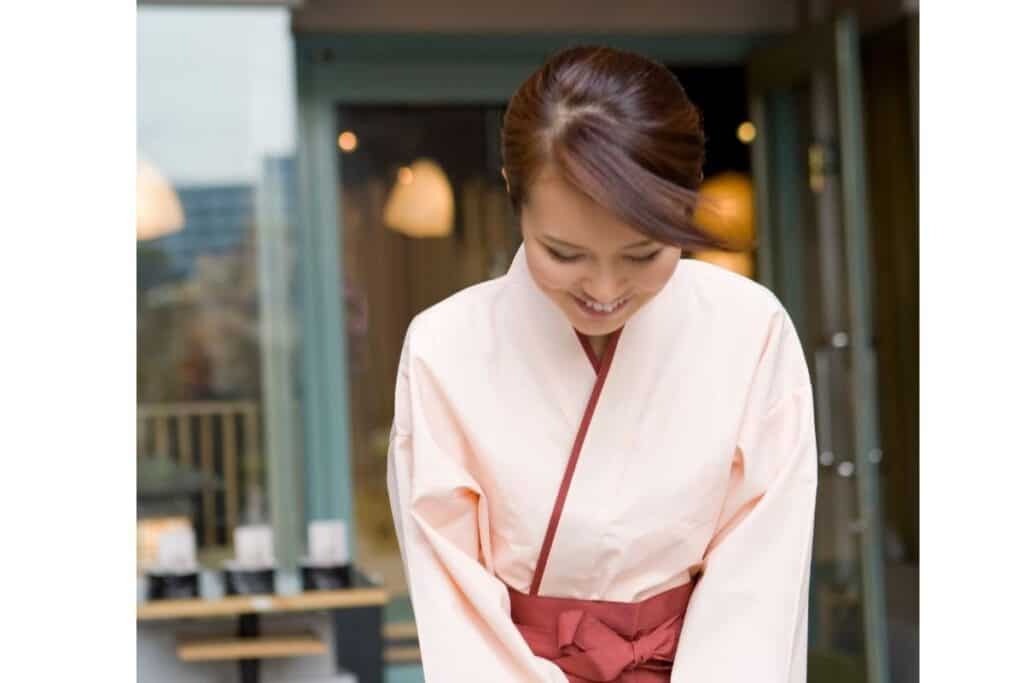
So long as you’re sure to be polite, say please and thank you, and avoid being too loud or rowdy, you’re likely going to fit in very well in the country.
Visiting Japan: Why Two Weeks?
Japan is not a country to visit for only a couple of days, or even a week. Two weeks will give you the opportunity to see a sufficient portion of the country.
One of the best ways you can pack in as much adventure and sightseeing as you can hope for is to organize your trip by the cities you want to stay in.
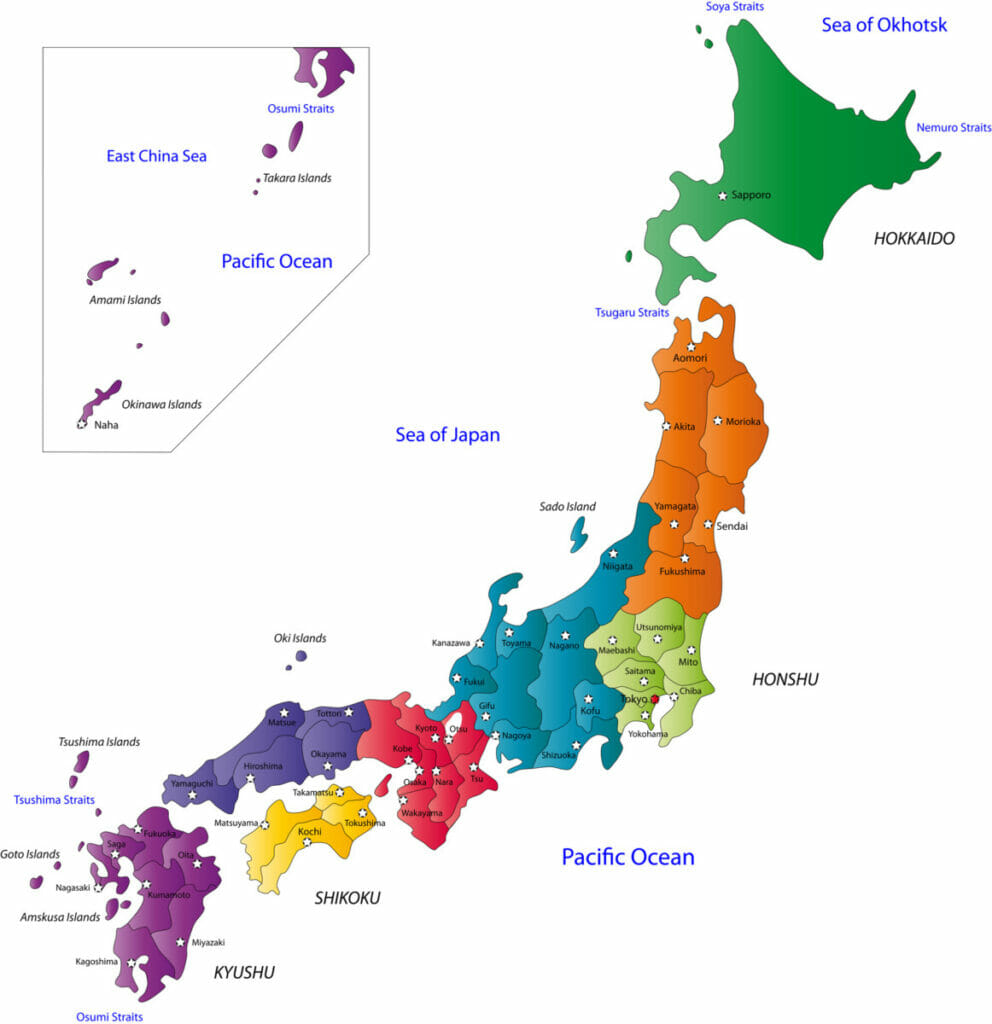
If you plan to spend two or three days in each city, you’ll have the opportunity to not only explore the city itself but explore nearby towns. Pretty much all of Japan is accessible by train or bus, so you have the ability to make day trips to nearby cities or towns a part of your trip.
A Two-Week Itinerary For Visiting Japan In 2023
Japan is a fairly big country, and narrowing down where to go can be tough. If you have two weeks, planning to see a couple of cities at minimum is not only doable but recommended, especially if you have a JR Pass. While Tokyo is a grand city and is worth spending a couple of days in, it’s not the only big city worth seeing.
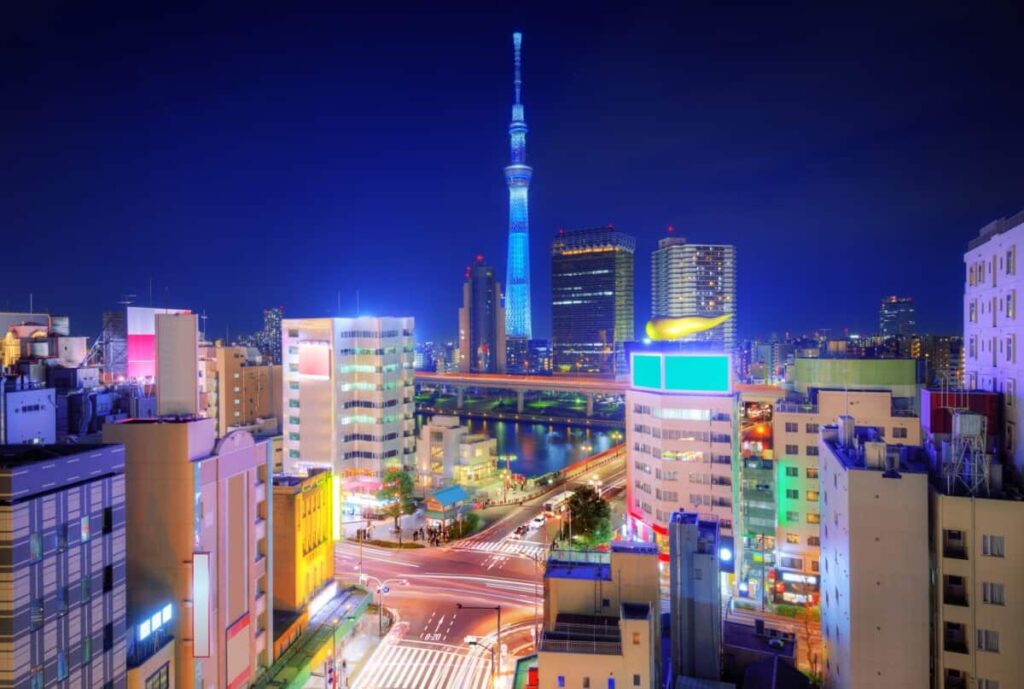
You also don’t want to overlook smaller villages and cities where the amount of learning you can do is tremendous. So many of these smaller cities and towns have remnants of traditional Japanese culture and ways of living that you have the opportunity to witness.
When visiting Japan for the first time, you’re likely going to want to hit some of the popular spots that bring people to the country every year.
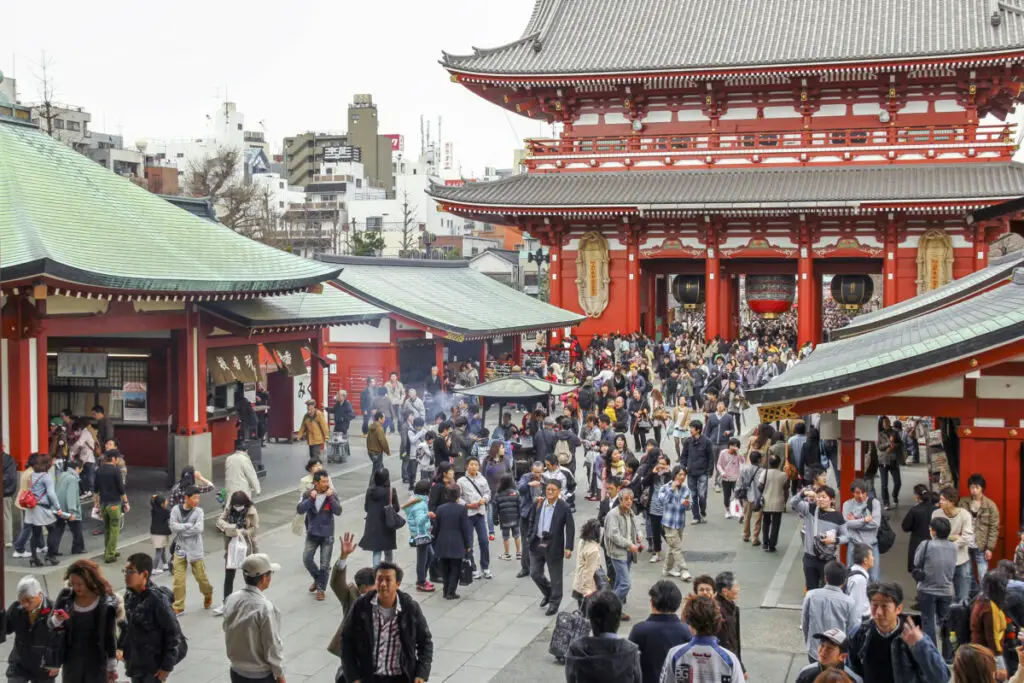
You’ll eventually want to come back again to explore some of the hidden gems of the country and the smaller neighborhoods where unique culture abounds.
To make your two-week trip as comprehensive and adventure-packed as possible – without spending too much time traveling and overwhelming yourself – your best bet is as follows:
- Start your trip in Tokyo and spend three to four days there, with the option of staying in the Fuji Five Lakes for a day
- Make your way to Kyoto for three to four days
- Next go to Hiroshima for two days, making a jaunt to Miyajima island for the day
- Spend your remaining days in Osaka before heading back to Tokyo to head home
Below are some of the top destinations for each of these cities, as well as some other ways to enjoy your time in between seeing the big sights.
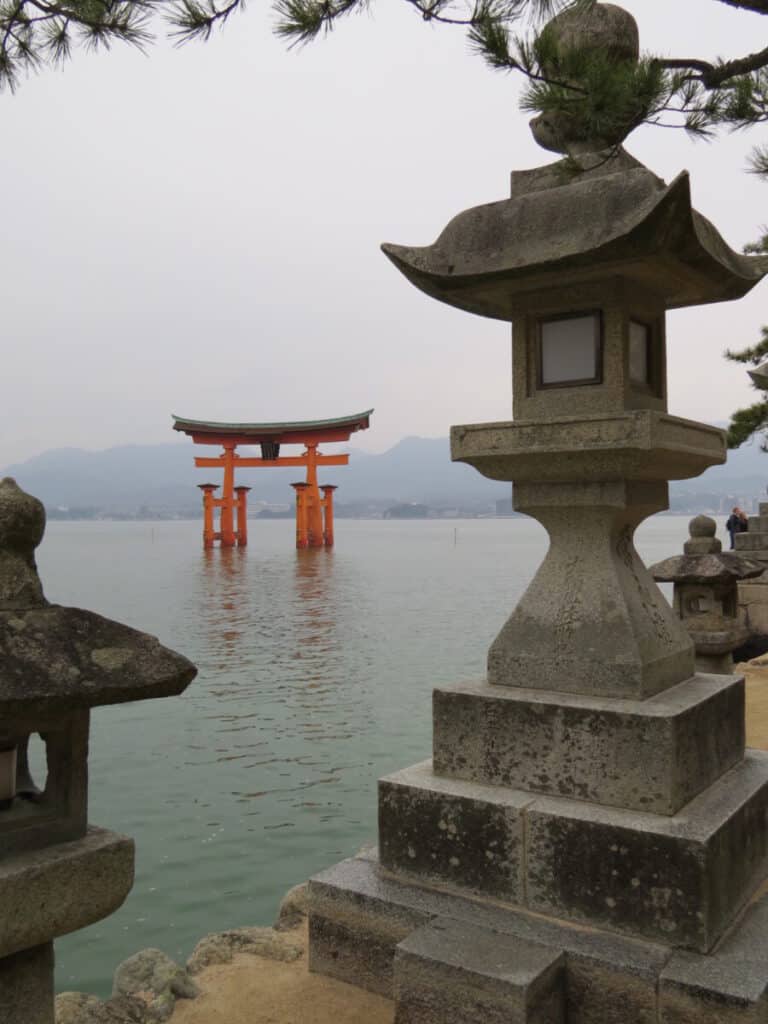
It’s important to note that there are so many other places in Japan that are just as beautiful and full of places to see, but you’d need much more than two weeks to see them all.
There are lots to see and do in the large city of Tokyo, and you have access to so many other places in Japan through a bus or train ride. For instance, making your way to Mount Fuji from Tokyo to spend a day or two there is very easy. You could easily spend your whole two weeks in Tokyo, but you don’t want to limit yourself.
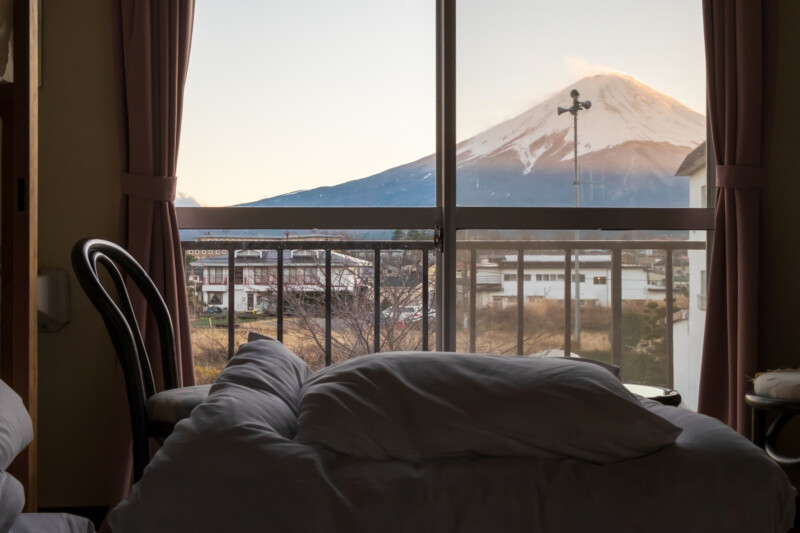
Tokyo is made up of several different districts and neighborhoods and is divided by Central, North, South, East, and West Tokyo.
No matter which part of Tokyo you decide to stay in, you have the opportunity to visit special districts dedicated to certain aspects of Japanese culture while also being able to shop, see shrines , and enjoy various activities and delicious foods.
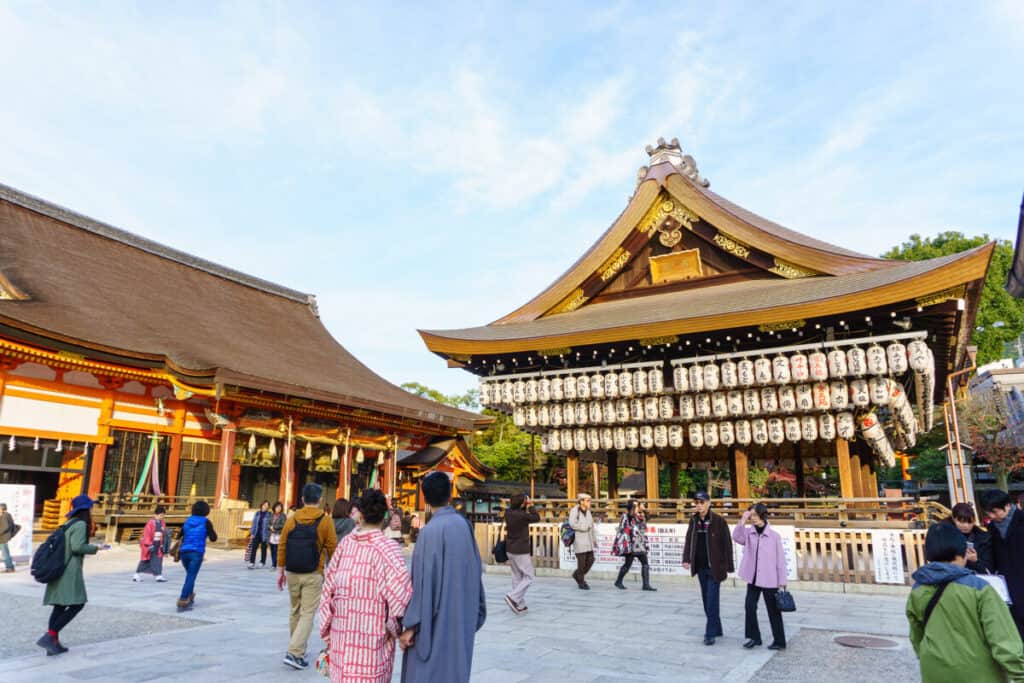
In Central Tokyo, you’ll find Tokyo Station, the Akihabara District, which is perfect for anime, manga, and tech lovers, as well as Ginza , home to the best shopping you’ll do in Tokyo. You’ll also find the Tokyo Dome and the nearby Koishikawa Korakuen garden, as well as the Yasukuni Shrine.
North Tokyo features the infamous Tokyo Skytree and the Tokyo National Museum, in addition to Ryogoku, known as the sumo wrestling epicenter . You’ll also want to see the Sensoji Temple or the landscapes of the Botanical Garden or Ueno Park .
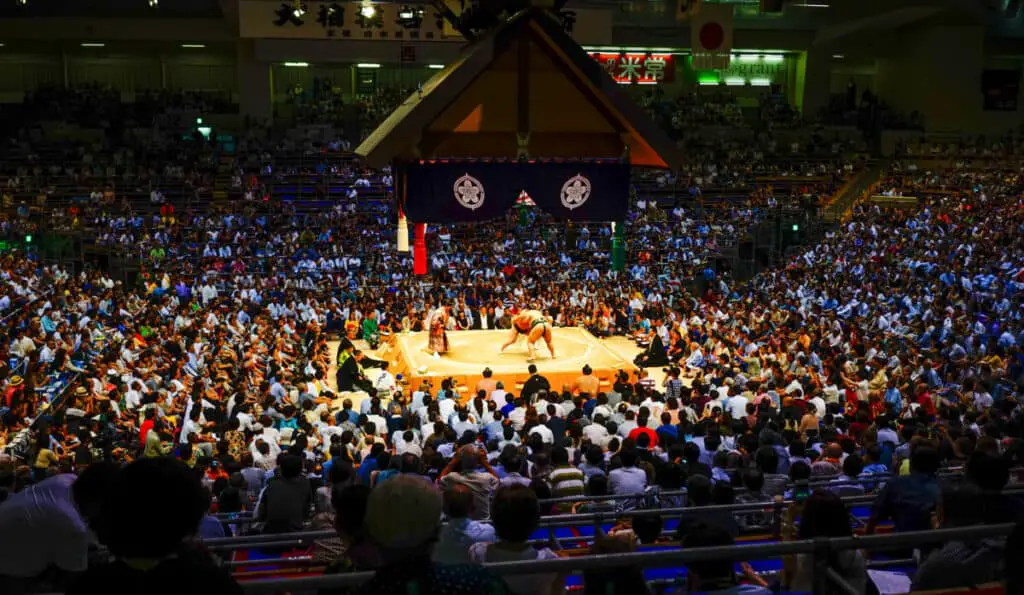
South Tokyo is home to some temples and shrines , such as Sengakuji, and the man-made island of Odaiba . You can also enjoy a ride on the Tokyo Water Bus, or do some shopping and exploring in Roppongi or Shiodome districts .
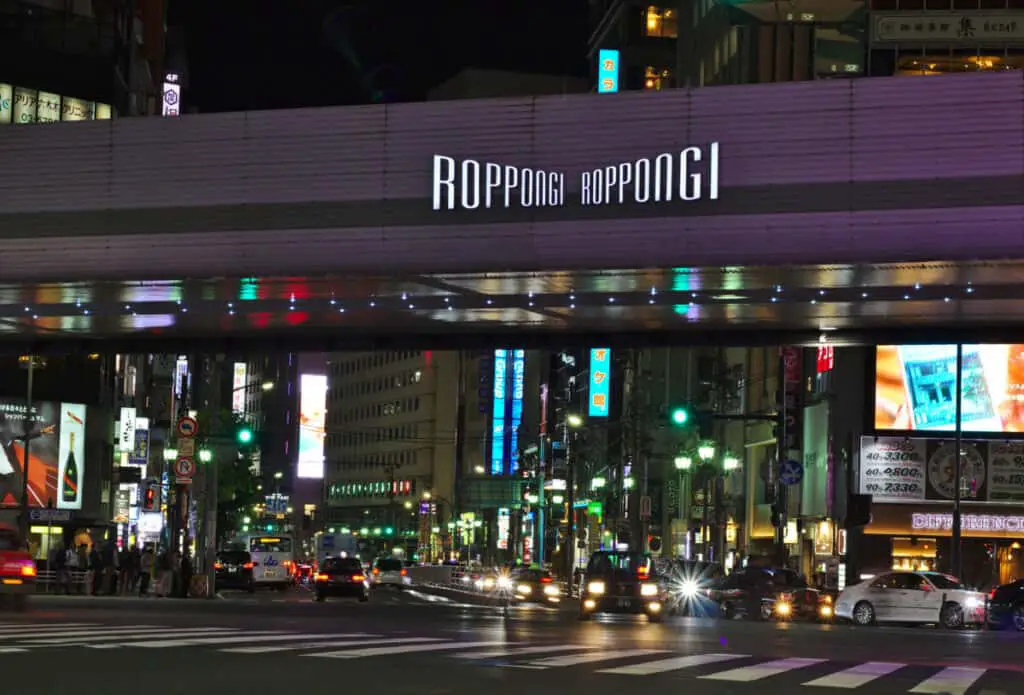
Finally, West Tokyo is home to the fantastic Shibuya , Harajuku, and Shinjuku districts, full of shopping, fun activities, and various subcultures. Yebisu Garden Palace is a great place to enjoy some Japanese beer, and the Meiji Shrine is a gorgeous place to see.
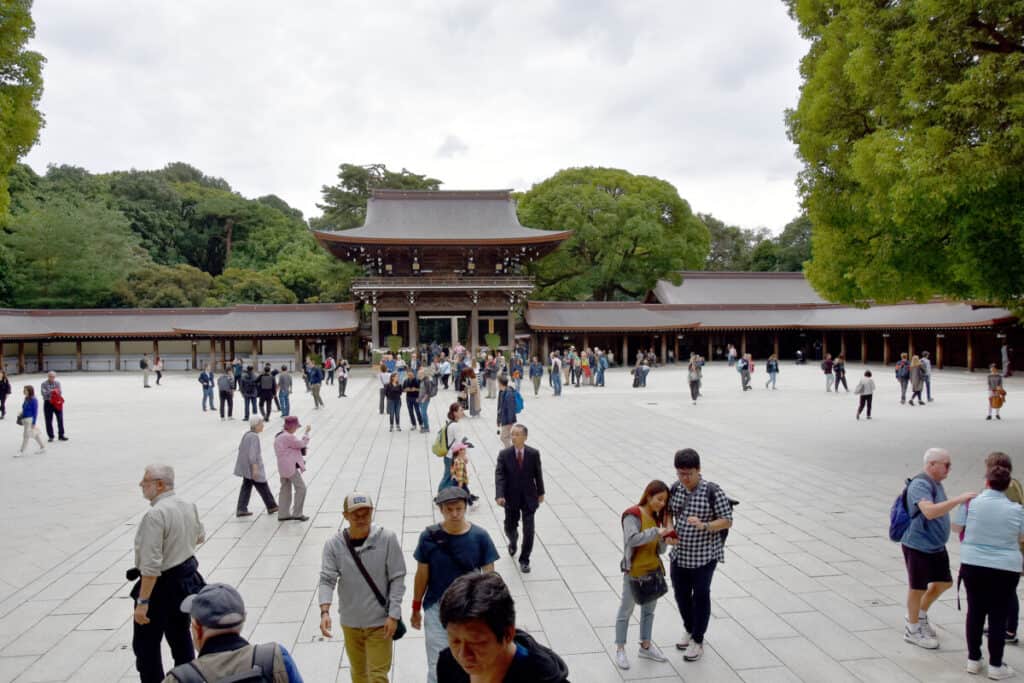
Tokyo can be a confusing city to traverse, so google maps are highly recommended to aid you in your exploration.
Tokyo Station
You’re likely going to make your way through Tokyo Station a few times in your travels through Japan. Don’t just let the station pass you by, though; in and around Tokyo Station, you’ll find a wealth of things to see and do.
Tokyo Station is also where you’re able to catch the shinkansen , or bullet train, which is likely to get you to many of your intended destinations.
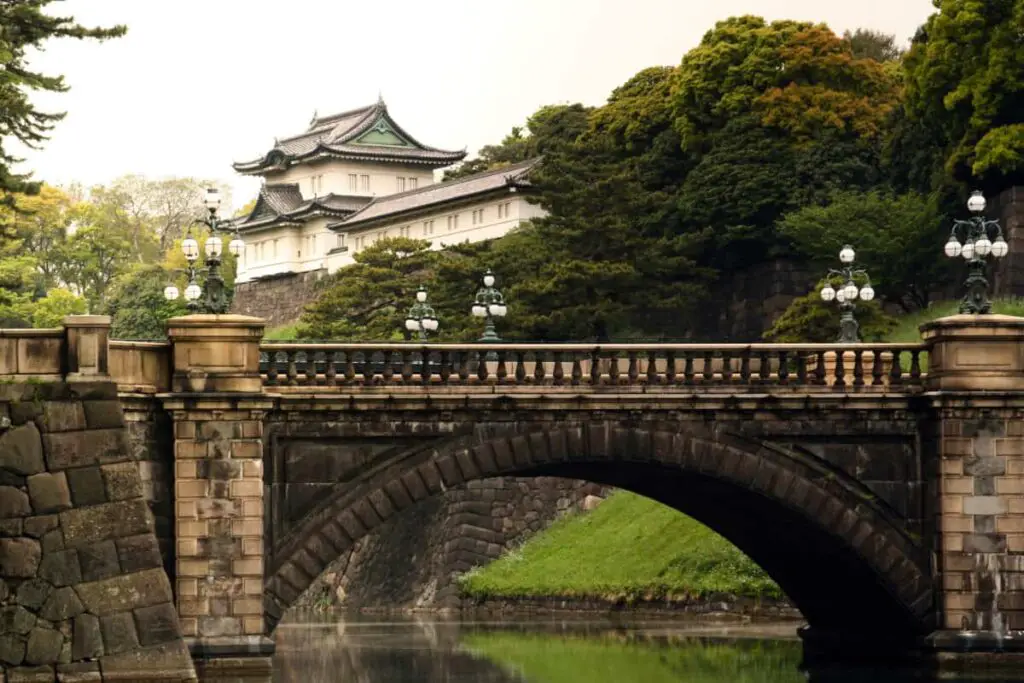
When you venture outside of Tokyo Station, which is in Central Tokyo, you’re surrounded by the Marunouchi business district , a vast array of shopping, and the Imperial Palace and accompanying garden. There’s also a lot of green space to sit down, relax, and enjoy some fresh air.
Mount Fuji And Fuji Five Lakes
Mount Fuji brings floods of tourists to Japan every year. This UNESCO World Heritage Site is a crucial element of Japanese culture and spirituality and is a very important symbol for Japan.
The beauty of Mount Fuji cannot be understated, and it’s worth the trek to the area. There’s a lot more to do around the Mount Fuji area than some might realize.
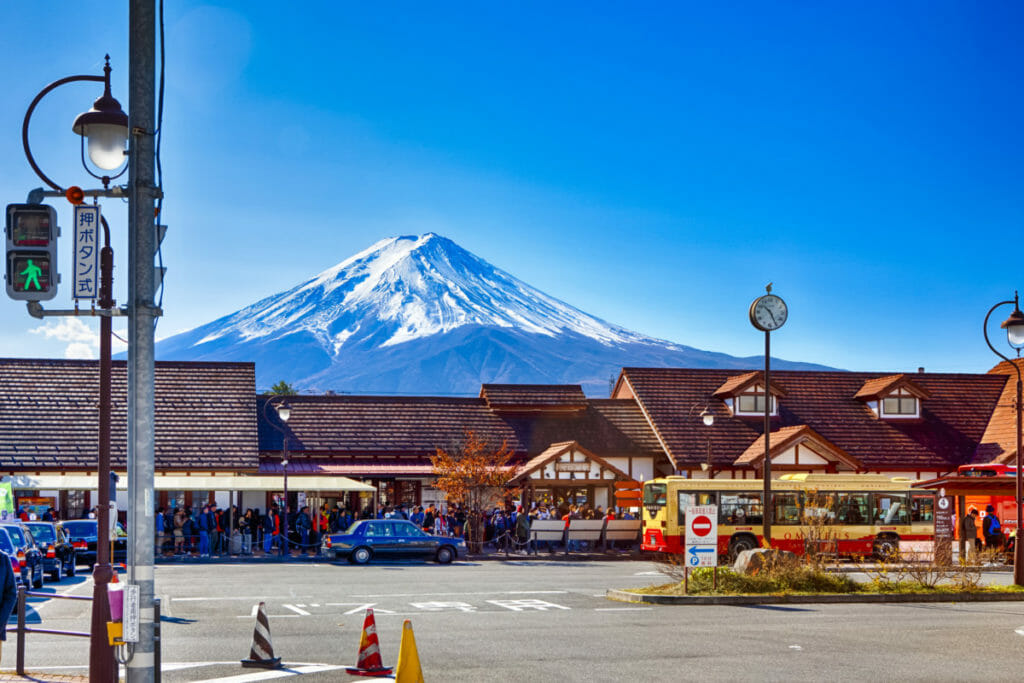
The Fuji Five Lakes area surrounds Mount Fuji, and you’ll find various ryokans to stay at, as well as shrines, hot spring baths , and even an amusement park.
While it can be hard to pick where to stay since there are so many enticing spots in Fuji Five Lakes, you’ll want to stay at least one night to get to explore as much as possible.
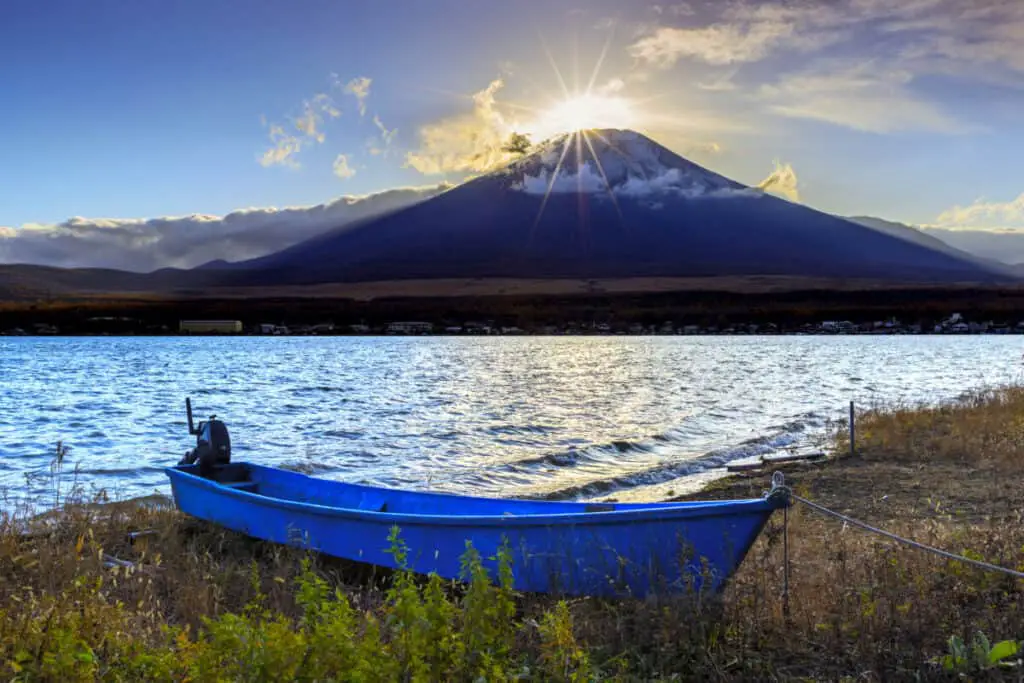
You’ll be surrounded by some of Japan’s main attractions in this one region. Mt. Fuji is the symbol of Japan itself. There is a cable car in the area, but it does not offer a trip to the summit of Fuji. If you have a few extra days to spend in the area, you’ll be rewarded with incredible mountain views at sunset and sunrise .
Kyoto is a place in Japan that is so full of history, a lot of which can be learned about from various museums and temples in the city . Many of these historically significant sights in the city have been standing for a very long time, despite the amount of devastation the city has seen over centuries of strife.
Like Tokyo, Kyoto is split up into Central, Eastern, Western, Northern, and Southern Kyoto, so you’ll want to spend a couple of days in the city at least. Central Kyoto is home to palaces and temples galore, such as Sento Palace and the Kyoto Manga Museum.
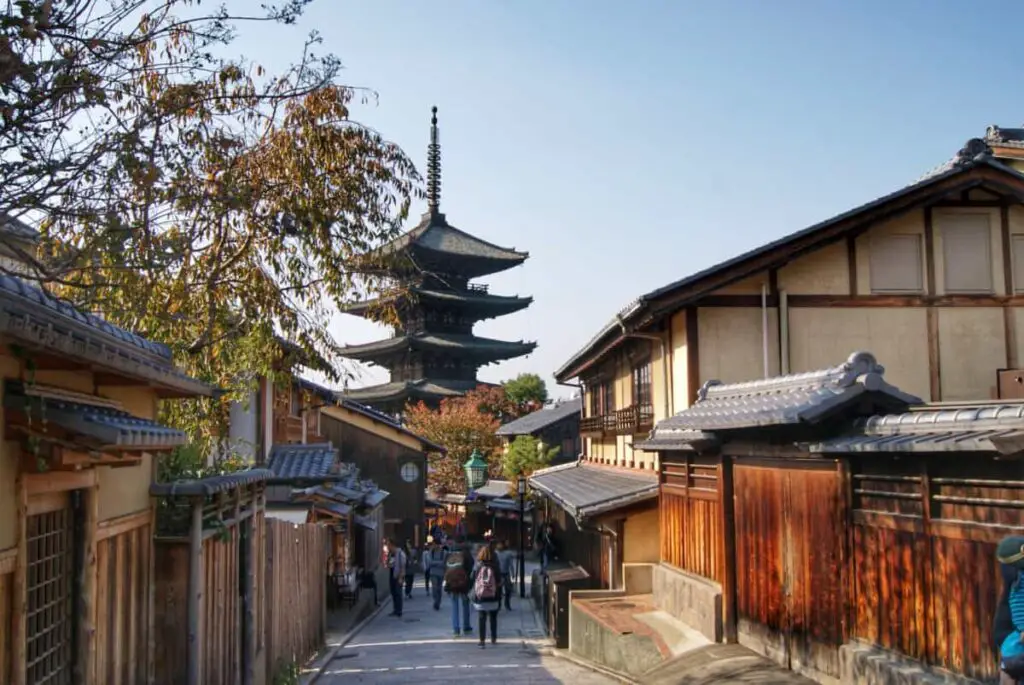
In Eastern kyoto, you’ll find numerous temples and shrines, as well as Maruyama Park and Gion, the famous geisha district.
Northern Kyoto houses a wealth of stunning locations of both historical and spiritual importance, including the Kinkakuji Golden Pavilion , the Enryakuji Temple, and the Kamo Shrines.
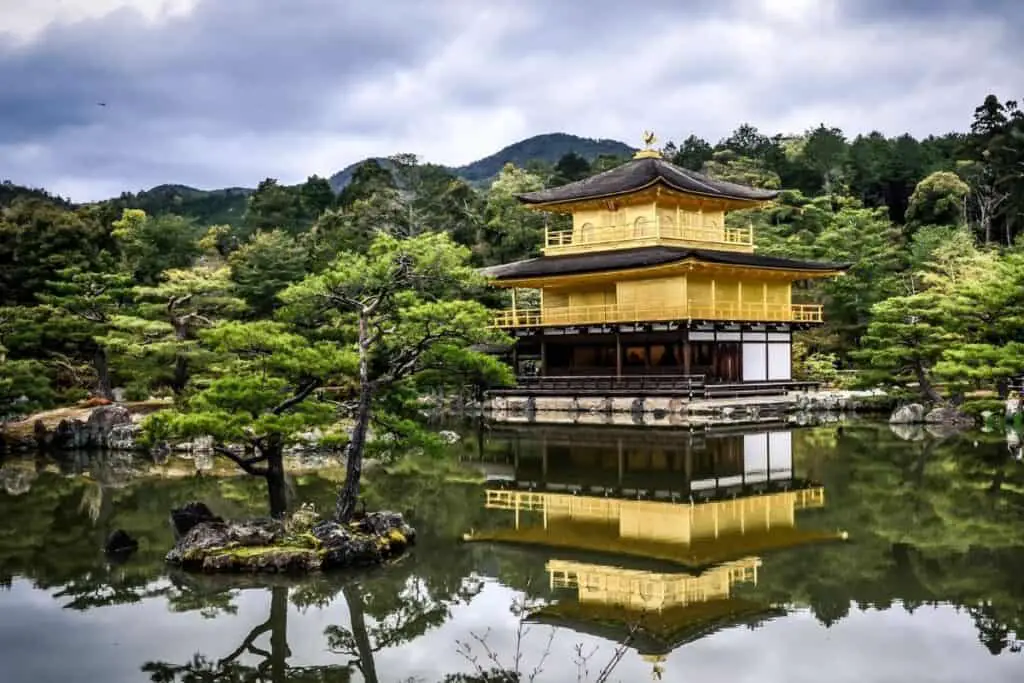
In Western Kyoto, you can sip some Japanese whiskey in the Yamazaki District, or take a boat ride through the Hozugawa River. Southern Kyoto has the Fushimi Sake District and the Daigoji Temple among other sites. Don’t forget to visit Nishiki market in downtown area. Kyoto itself is one of the best cities to see cherry blossoms in the spring.
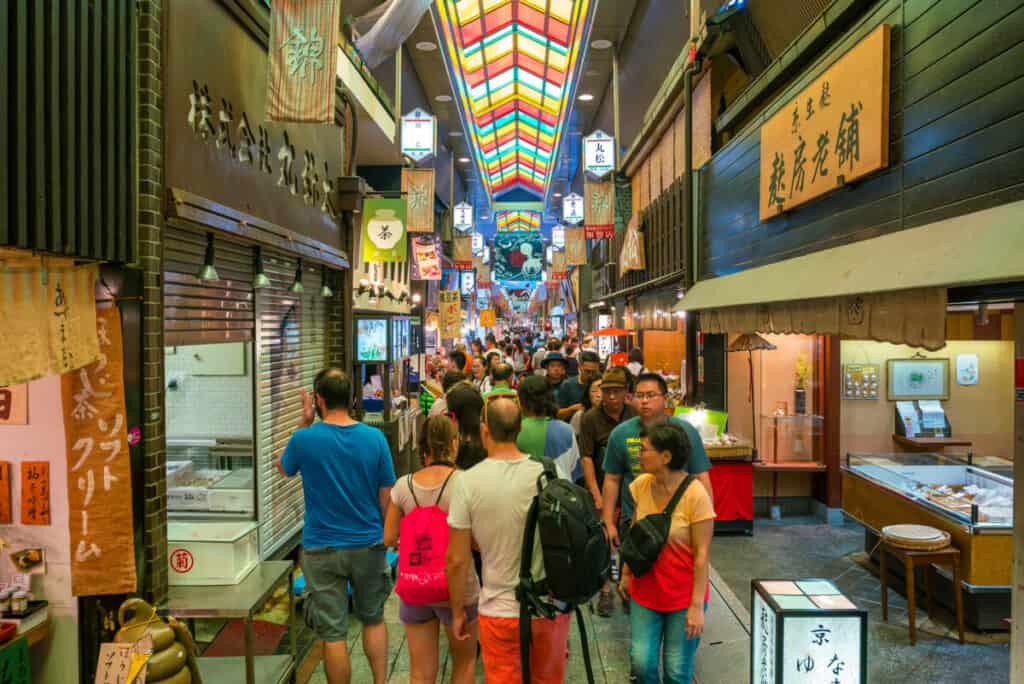
Of All Japanese cities kyoto is one you should not miss if you want to see the real Japan.
Hiroshima is the city known for falling victim to the atomic bomb, but the resilient city is so much more than that. The picturesque city is full of natural and created beauty, and there’s a lot to be learned from the major sites there.
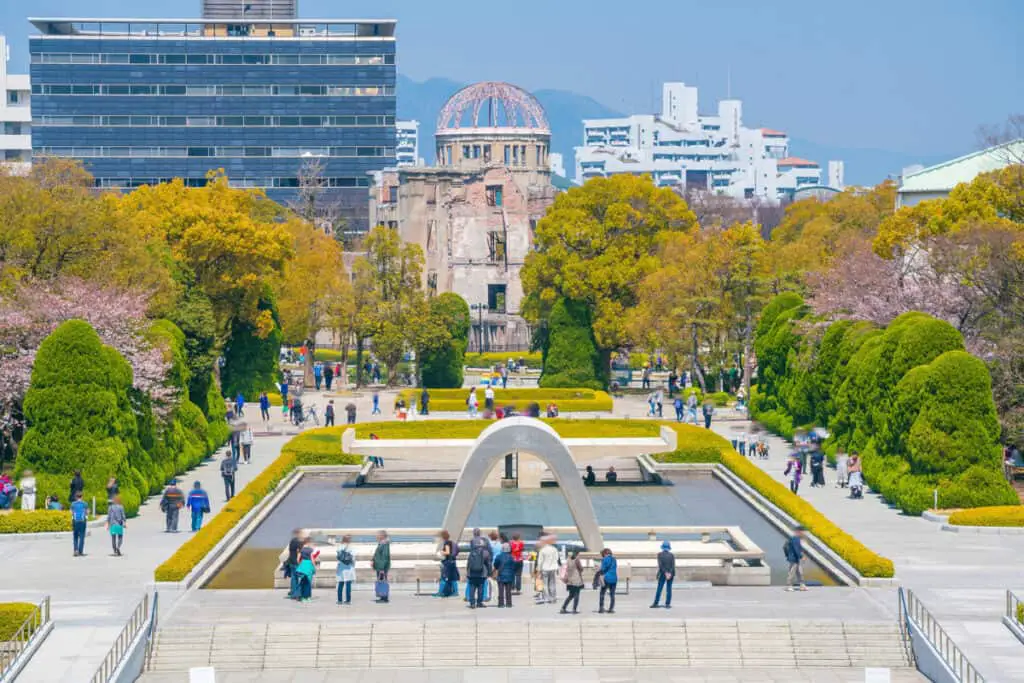
The Peace Memorial Park is the place to remember the lives lost from the atomic bomb, and the Hiroshima Castle is truly a marvel in construction.
When you make your way to Hiroshima to stay for a couple of days, you’ll want to split up your trip to venture to nearby Miyajima.
Miyajima is a stunning island that’s not too far from Hiroshima, and you can take a short boat ride to spend the day there before heading back to Hiroshima.
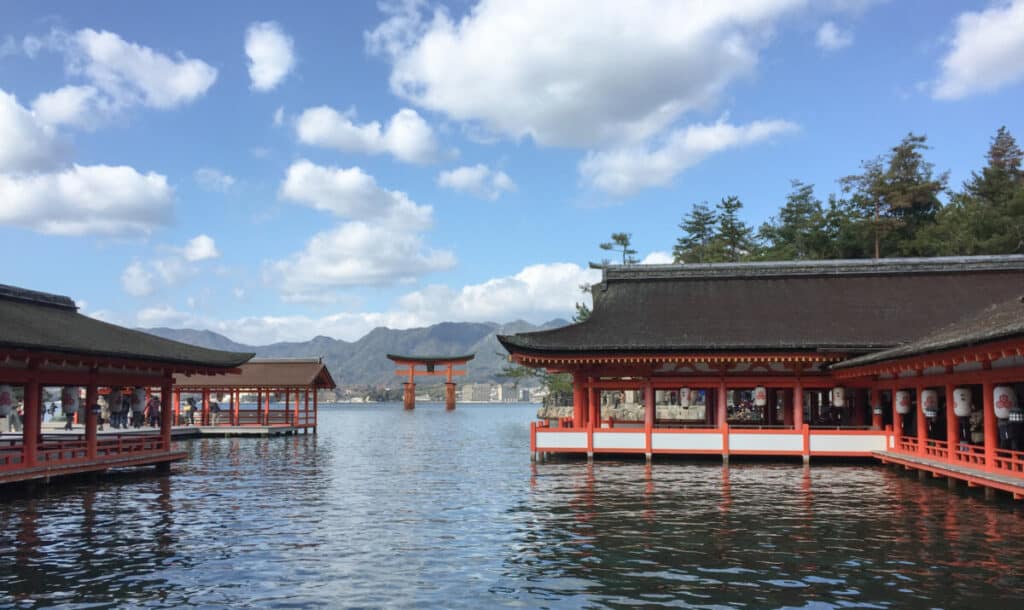
Miyajima is also where you’ll find the very famous red torii gates of Itsukushima.
Nature lovers will enjoy seeing the very large Mount Misen, and making their way along the various walking trails around the island. A truly beautiful city you will want to see if you’re visiting Hiroshima.
Finally, you’ll absolutely want to make your way to Osaka to spend the final days of your trip there. Osaka is full of bright lights, bustling city life, and many things to see and do. For instance, you can do some shopping and exploring in Shinsekai, a district that looks a lot like old Japan.
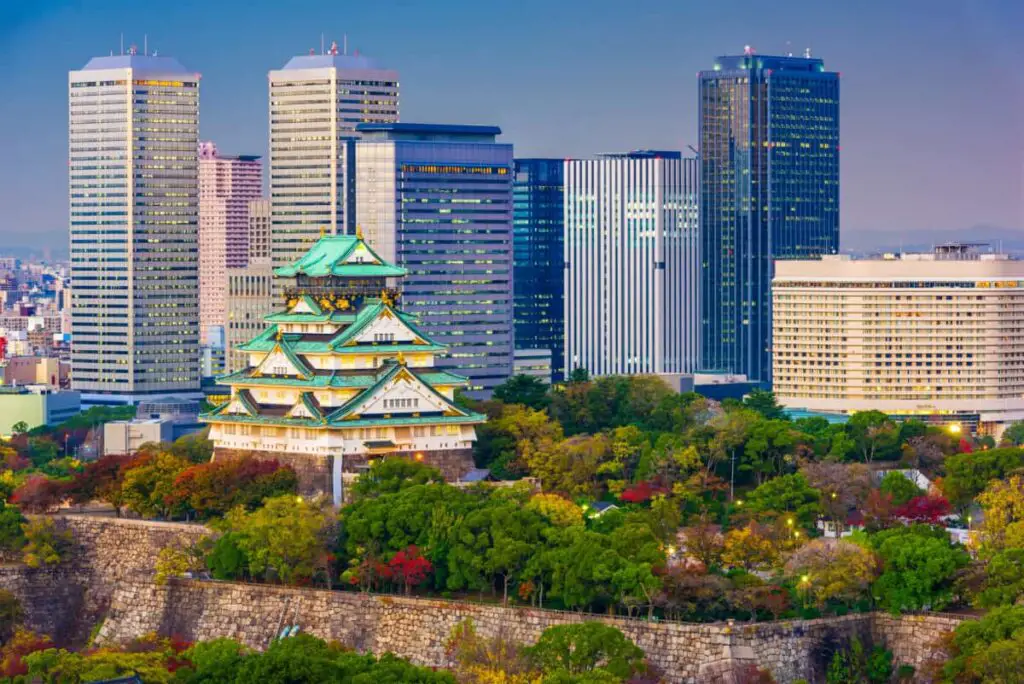
Minoo Park and Mozu Tombs are great places to get some sun and see some nature, and the Tenma District is the place to go for arcade games. Kuromon Market is a great place to go for some food-based souvenirs or some snacks to take home for yourself.
Osaka is the perfect place for hardcore foodies. The good news is that so many restaurants ensure you have enough time to sample Osaka’s various dishes.
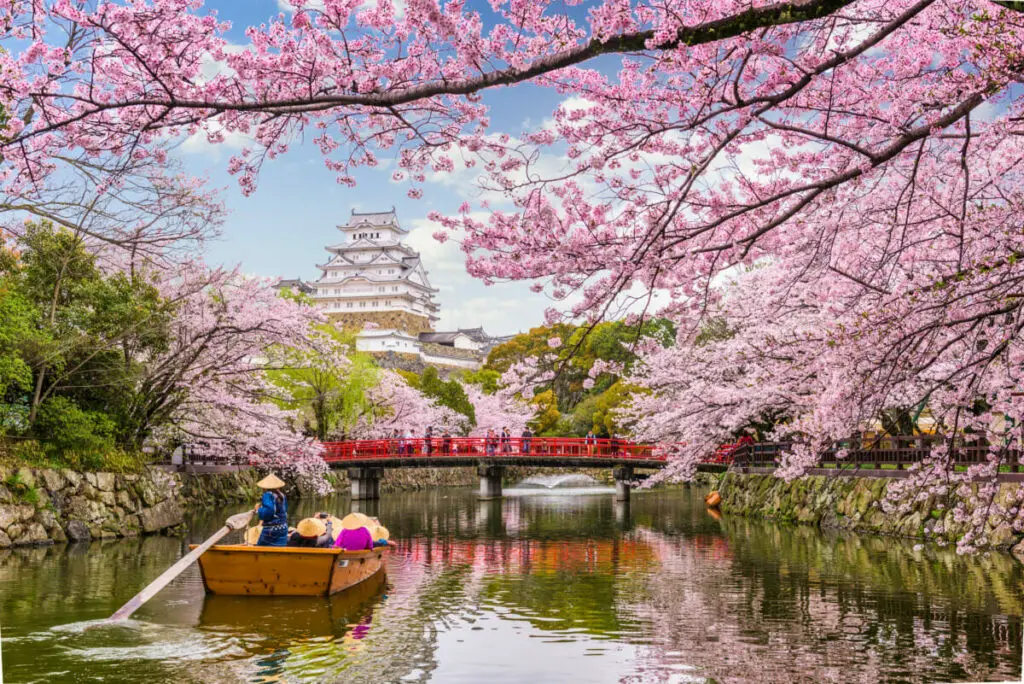
If your visiting Osaka for more than a couple of days, a short train ride will take you to Himeji Castle Japan’s most visited castle.
Making Your Two Week Stay Memorable
When you’re finalizing your two-week itinerary, there are some things to keep in mind before you make your final decisions.
These travel tips can not only help you keep to your intended budget, but they can also help you make the most of your trip.
Take Advantage Of Free Experiences
Exploring Japan doesn’t have to be expensive. There is a lot to see and do that doesn’t require any money, other than what you might need to spend traveling to and from the spot as well as any sustenance you might need.
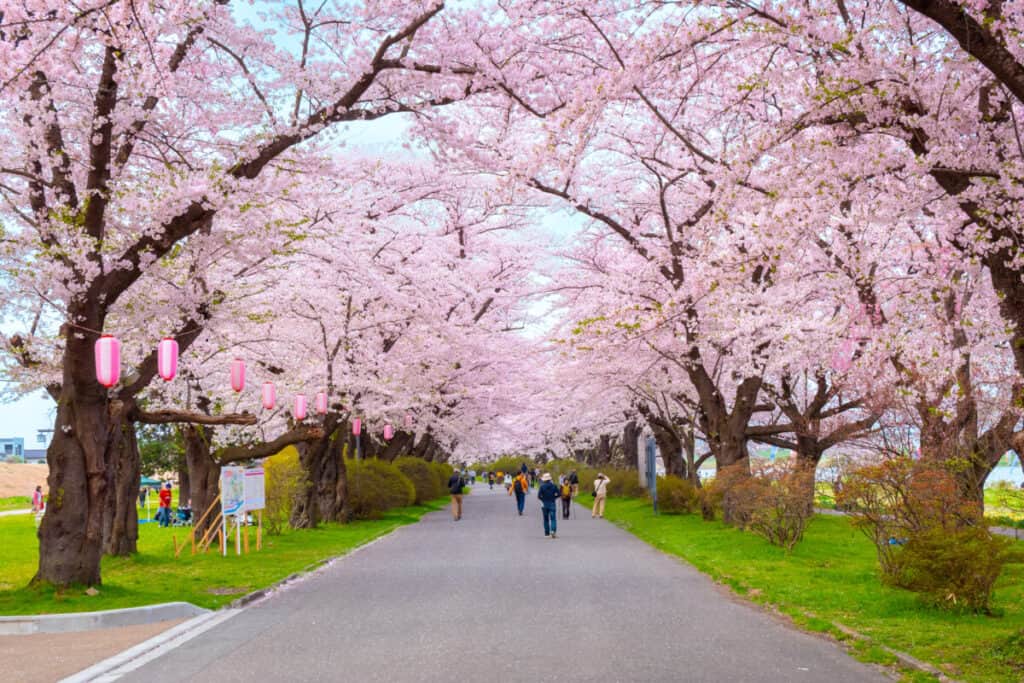
That said, with your JR Pass or IC Card and some snacks bought at a convenience store beforehand, you can easily spend at least half a day exploring Japan for free.
For instance, parks in Japan offer green space, plenty of seating, and even some amenities and trails to walk around.
Visit Temples And Shrines
Even if you don’t practice religion, visiting some of the thousands of Buddhist temples, Shinto temples, and accompanying shrines is not only inexpensive but will be an especially memorable experience.
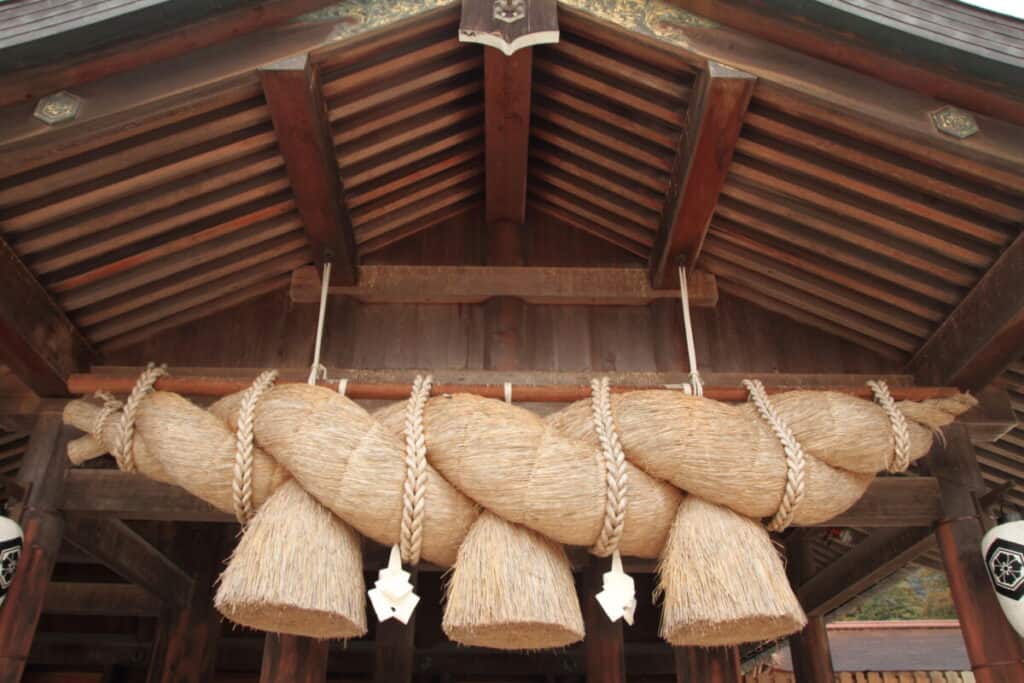
Many of these spots have guides you can learn from, picturesque gardens to walk through, and works of art in their architecture.
Hot Spring Baths/Onsens
An onsen is a hot spring bath, usually sourced from natural spring water in the area of the bath. One can find these baths indoors and outdoors, and onsen towns have been created by many sources of hot spring water throughout Japan.
These small and inviting towns are some of the best places to stay in Japan if you’re looking for a reprieve from the stresses of life.
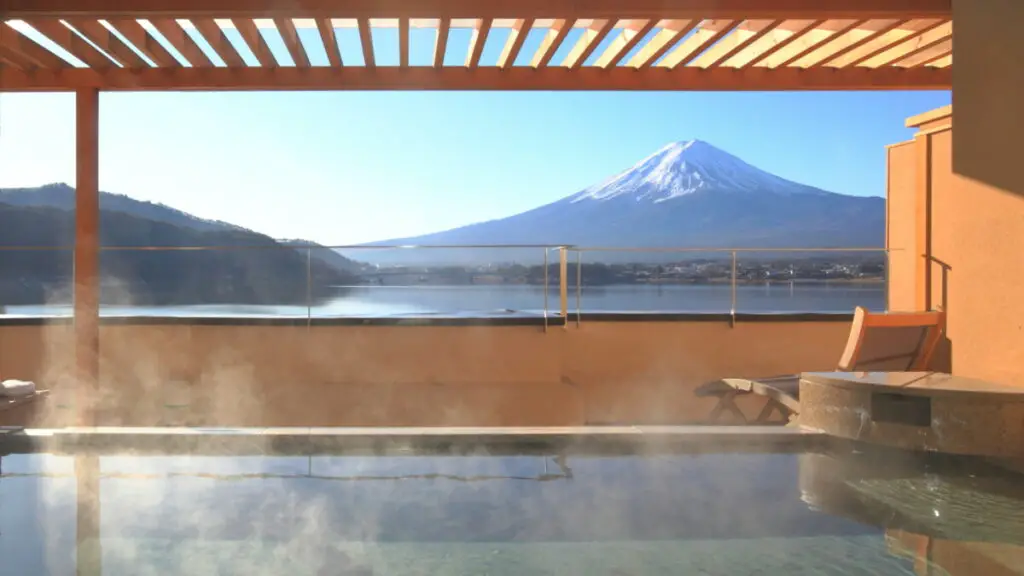
Hot spring baths and bathing culture are big in Japan. Before homes had accessible baths, the only option in Japan was to enjoy a public bath or Sento .
Outside of the social aspect of bathing culture, hot spring baths have been utilized in Japan for centuries for various ailments and health concerns.
If you plan on spending any time near Mount Fuji, you’ll definitely be able to enjoy your fill of hot spring baths. That said, there are plenty of onsens all around Japan so no matter where your travels take you, you’re likely to find at least one.
Where To Stay In Japan
The specific accommodations you book for your travels are going to be dictated by where you want to go.
The fantastic aspect of accommodations in Japan is that many of them is an experience in and of themselves rather than simply a place to sleep. Your options are quite extensive, from hostels to capsule hotels to traditional Japanese inns, also known as ryokans, that have a traditional Japanese private rooms.
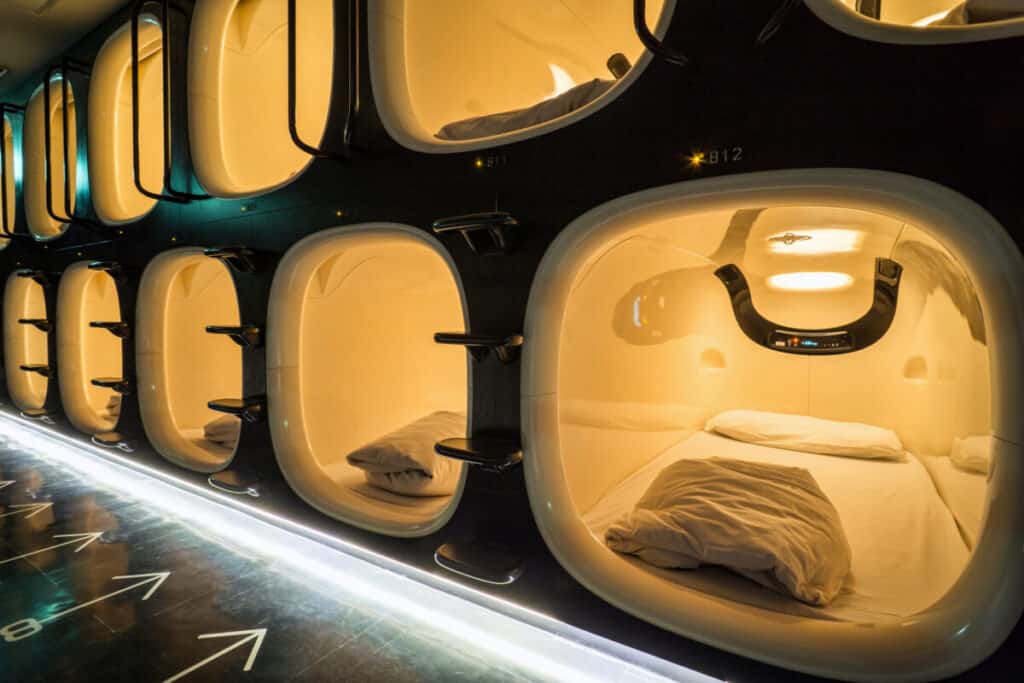
The language barrier is not as big a problem as you might imagine, as most accommodations will have at least one persons who understand basic English.
Japanese Hostels
A hostel is most often the cheapest option, especially if you’re not picky about your accommodations.
What’s important is to research hostels to ensure that where you’re staying is suitable to your needs and comfort level.
Best Hostels In Japan Via Tripadvisor
That said, Japanese hostels have a fantastic reputation for being clean, full of friendly and hospitable people, and very affordable.
Japanese Capsule Hotels
A Japanese capsule hotel is a unique experience where you sleep inside a pod. Most of these capsule hotels are fairly affordable, though, of course, a hostel or a hotel may end up being more affordable.
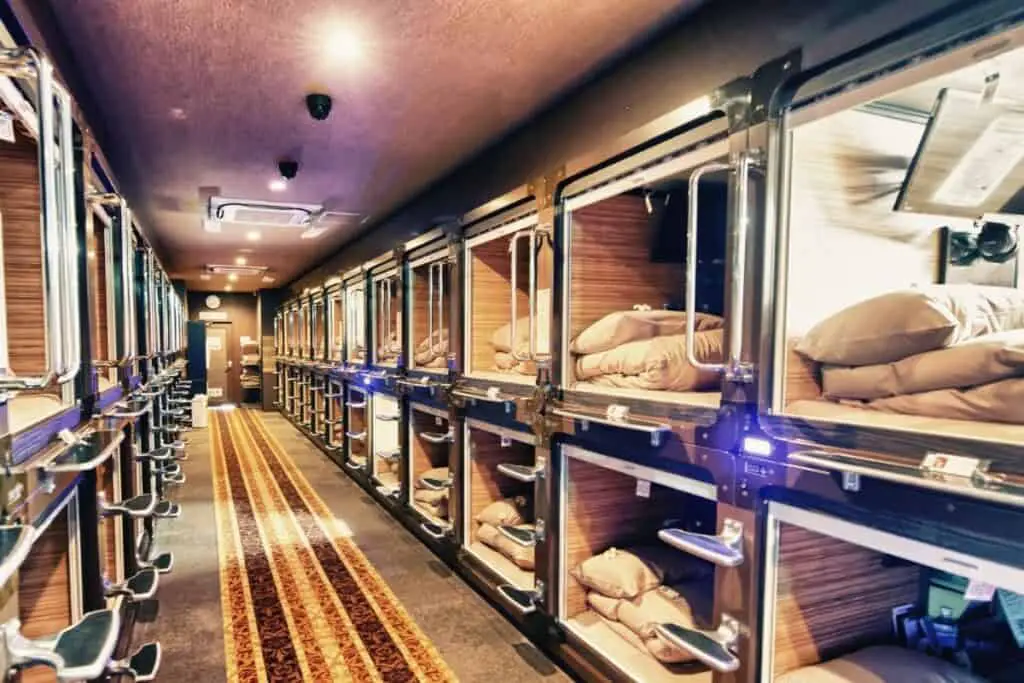
If you have the room in your budget, it’s worth checking out a capsule hotel for a night. If you’re looking for a cheap hotel, this is your best option.
Japanese Hotels
Staying at a regular hotel in Japan can easily become expensive, depending on what kind of hotel you choose to stay at. As expected, hotels range from mid-range to luxury in terms of price, amenities, and location. You can find a lot of recognizable hotel chains in Japan, as well as a mixture of local and smaller hotels.
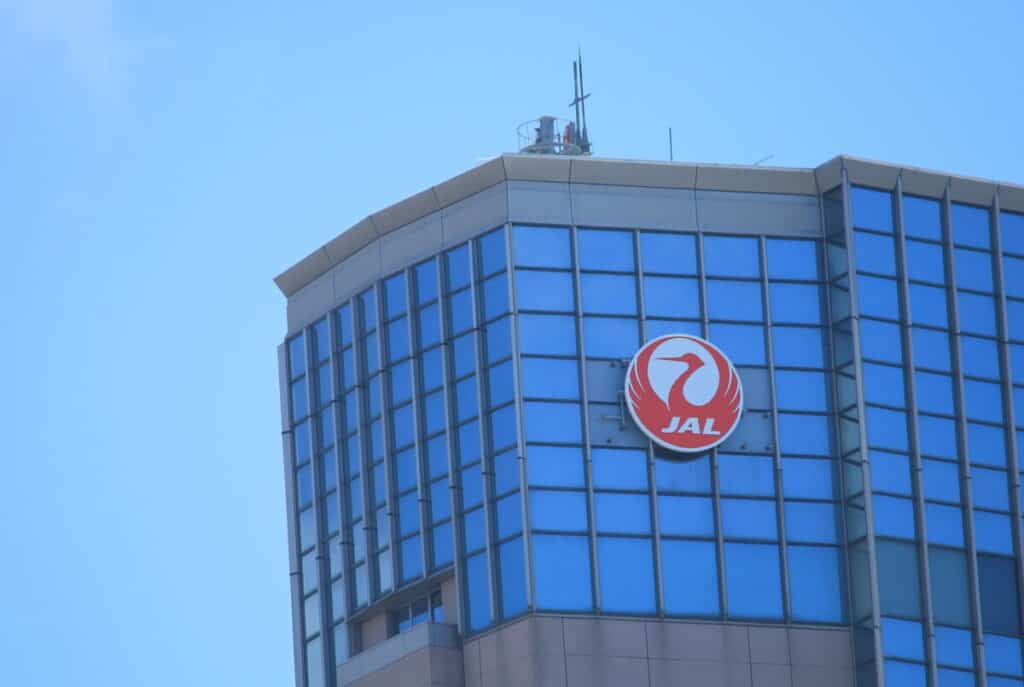
Hotels cost more if you stay right in the heart of major cities . Given how great public transportation is in Japan, there’s no need to stay in a hotel right in the city.
Instead, you can save a few bucks if you stay in a hotel just outside of the city and take the train in when you’re planning on sightseeing.
Japanese Ryokans
A ryokan is a preferred accommodation option if you’re looking to immerse yourself into Japanese culture as much as possible.
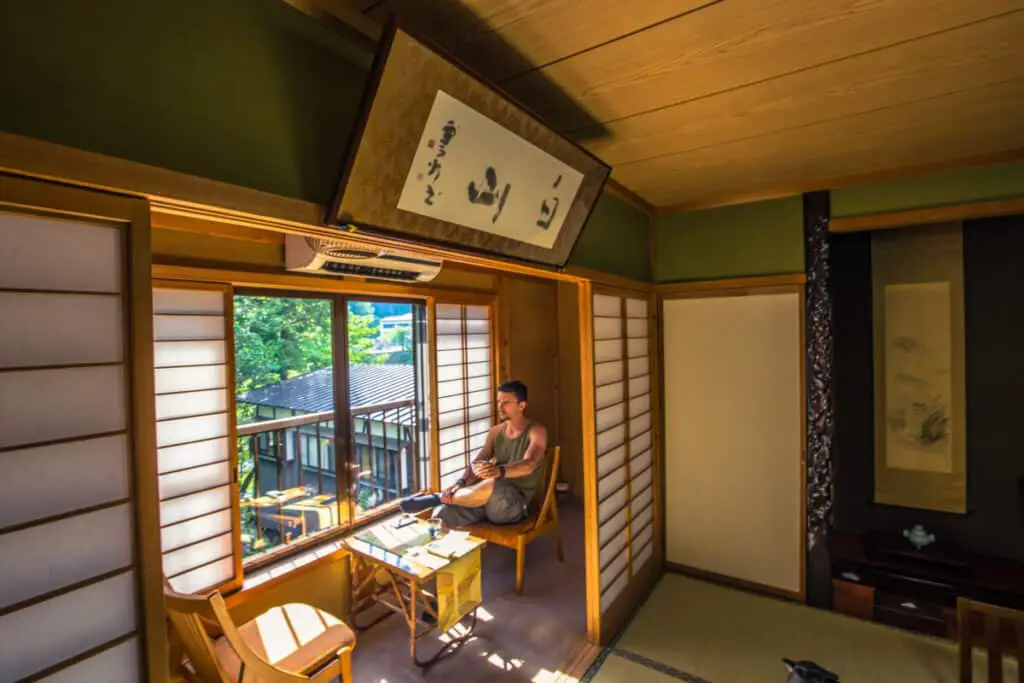
These traditional inns can offer a range of different experiences and amenities depending on where you’re staying. Typically, you’ll have a small, clean room to yourself, though bathrooms are often shared between guests. Most ryokan has hot springs on site.
Some of their hotel rooms even have a private onsen (hot spring bath) located within the room. One of the most important things to remember if your using a shared onsen with other guests is that nudity is part of the onsen experience.
Eating In Japan
Going out and experiencing authentic Japanese food is well worth making a part of your travel budget. While it’s not economical to indulge at five star restaurants every night, you don’t want to miss out on local delicacies and unique dining experiences based on where you’re staying.
There is so much more to Japanese food than sushi, though sushi in Japan is better than anywhere else.
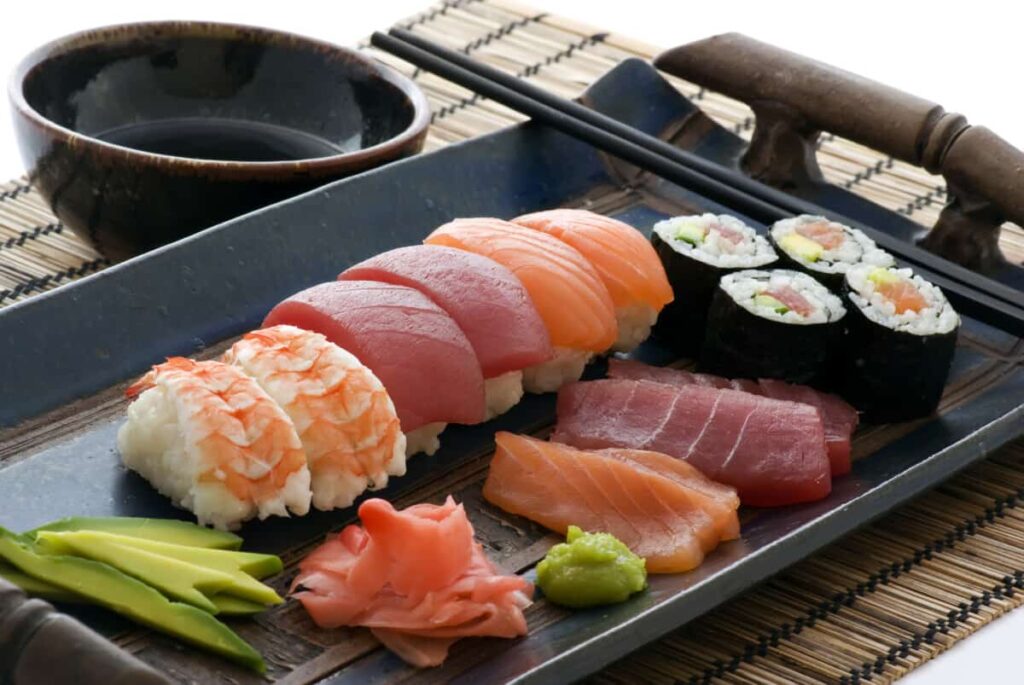
Comparatively, it’s not expensive to feed yourself when traveling through Japan. Your best plan of action to ensure you get to indulge in some memorable meals is to seek out the local delicacy in each place you stay in as you make your way through your itinerary.
You can either chat up the locals or do some research beforehand, depending on what you’re comfortable with.

Seeking out an izakaya is also highly recommended at least a few times when you’re in Japan. These are Japanese bars that serve small bites and snacks often using locally sourced ingredients crafted in unique ways.
Budget-Friendly Eating In Japan
You have a ton of options to get your fill of delicious Japanese food without blowing your food budget too quickly. You won’t miss out on good eating even when you opt for budget friendly options.
There are ways to find authentic, yummy Japanese fares without having to go to a restaurant for every meal.
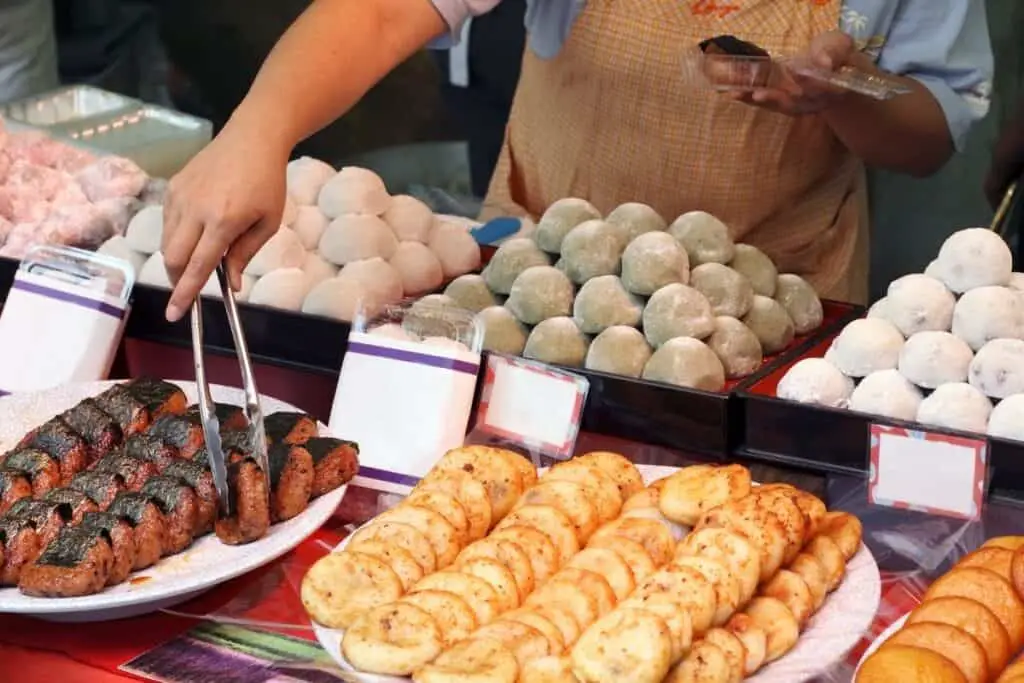
Street food is pretty bountiful in Japan, from vendors on the street to various stalls at a market. You can even find vending machines that offer inexpensive yet delicious snacks.
You can also grab some quick meals at convenience stores that are high quality, made with fresh local ingredients, and are also very budget-friendly.
Shopping In Japan
Japan is an epicenter of some very unforgettable shopping, as it’s one of the biggest fashion trend-setting countries in the world.
Outside of fashion, there is so much shopping to be done in Japan that it’s very easy to spend a lot of money doing so.
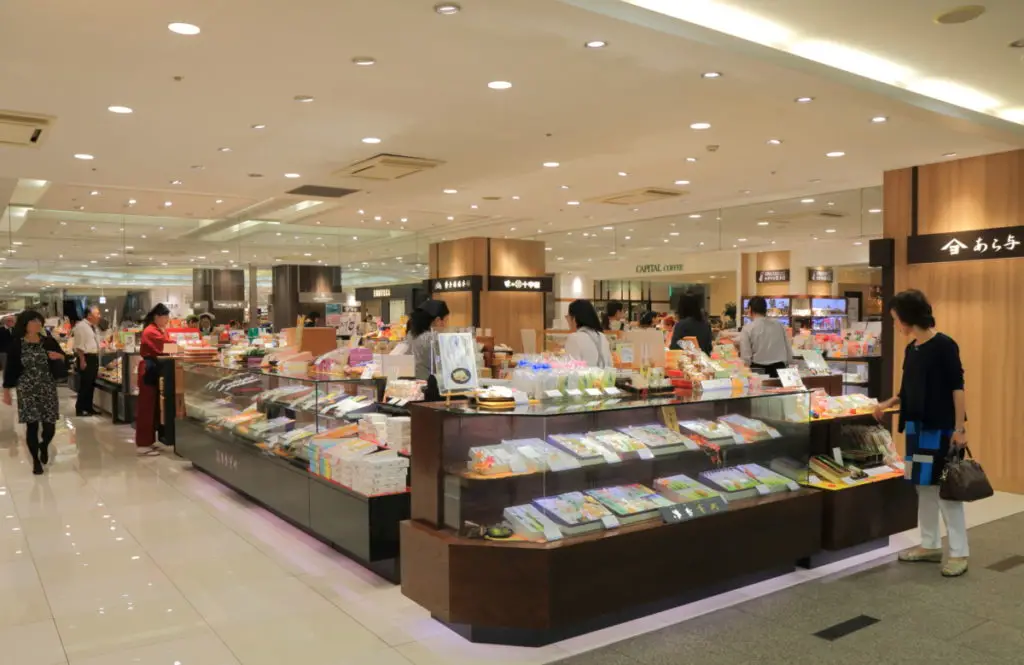
Having a strict budget for yourself can help you avoid spending all your money on other parts of your trip buying things. Tokyo department stores often have multiple levels of goods and services. The best thing is the onsite restaurants that have incredible dining experiences.
Japan is known as a cash-based society, so its a great idea to have Japanese yen in case credit cards are not an option. Many small mom-and-pop coffee shops are cash-only.
Budgeting For Your Trip To Japan
Budgeting is a major priority as soon as you know you’ll be planning a trip anywhere. The time of year you opt to travel to Japan can have some influence on cost. For instance, Japan is a popular place during cherry blossom season , which starts in April, so you can end up paying premiums for travel and accommodations.
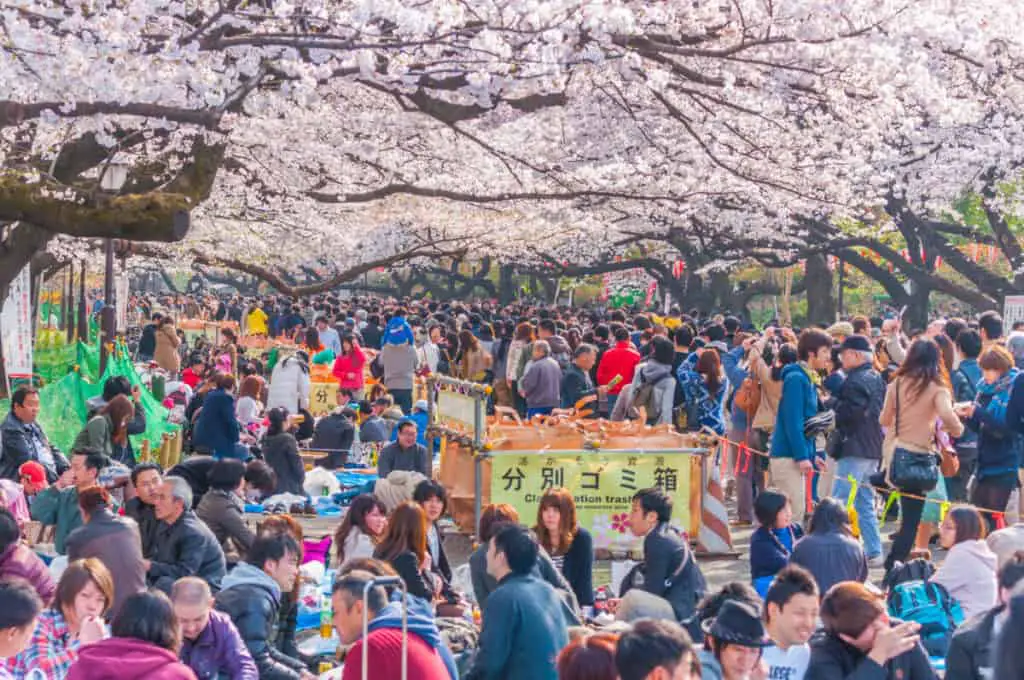
Despite popular belief, traveling within the country of Japan isn’t as expensive as one might assume. Some careful planning and having an itinerary mapped out beforehand can help you get a better sense of how much money you’ll need.
Having a safety net such as a credit card that doesn’t charge foreign exchange fees can give you some peace of mind, even if you don’t end up using it.
You can use a credit card at many places in Japan you’ll likely frequent, though it’s good to note that many places, especially tourist destinations, prefer cash when possible.
An Estimated Budget Of A Two Week Japan Trip In 2023
The biggest expenses you’re likely to see will be your flights and your accommodations. Your flight costs will vary depending on where you’re flying from, what season you’re choosing to fly in, and whether you pick a direct or indirect route, with added advice on the best time to fly.
Keeping your eye out for deals or seeing if you can cash in some reward points towards your flight can potentially save you a lot of money flying such a potentially long way.
There’s no exact answer for how much money you’ll need for a trip to Japan, no matter if you’re looking for a trip on a budget or not. All things considered, you could travel to Japan and stay for two weeks with between $3000 to $6000 USD based on what your final itinerary looks like and how well you manage your money in the country.
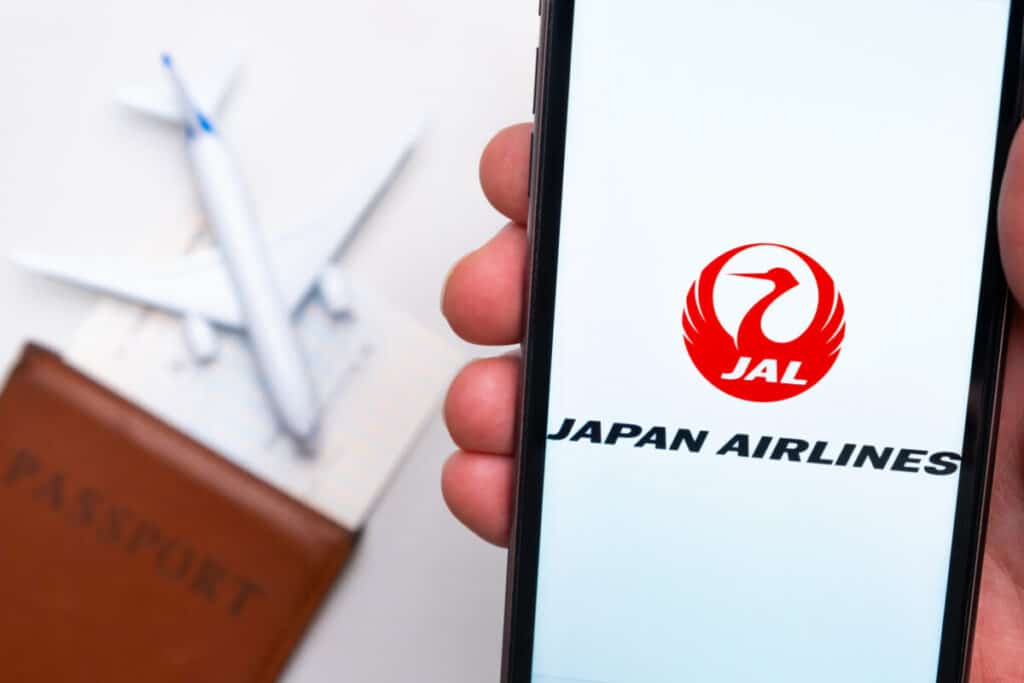
The following list features estimates based on a two week stay in Japan, considering some of your major and minor expenses. It’s important to note that estimates are just estimates and cannot be considered exact due to the numerous variances in costs associated with travel.
Furthermore, this chart and the estimated costs are based on traveling from the United States and are based on American currency USD.
Estimates may also be a little bit higher than what you could actually spend based on a number of factors. It’s always better to budget extra and have extra wiggle room than underestimate how much your trip will cost.
Estimated Costs (USD)
Airfare (international flights)
$1000-$2500
Transportation
Accommodations
Attractions and Experiences
Miscellaneous Expenses
TOTAL (Estimate by Budget)
Below is a further explanation of the budget seen above in the chart to understand how prices can vary depending on your specific plans and overall Japan cost.
It is a good idea to purchase a sim card to ensure your phone will operate on Japanese networks. The following is a more detailed look at cost of your Japan itinerary:
You’re likely looking at anywhere between $1300 to $1800 USD for your flights to and from Japan if you’re traveling from the United States.
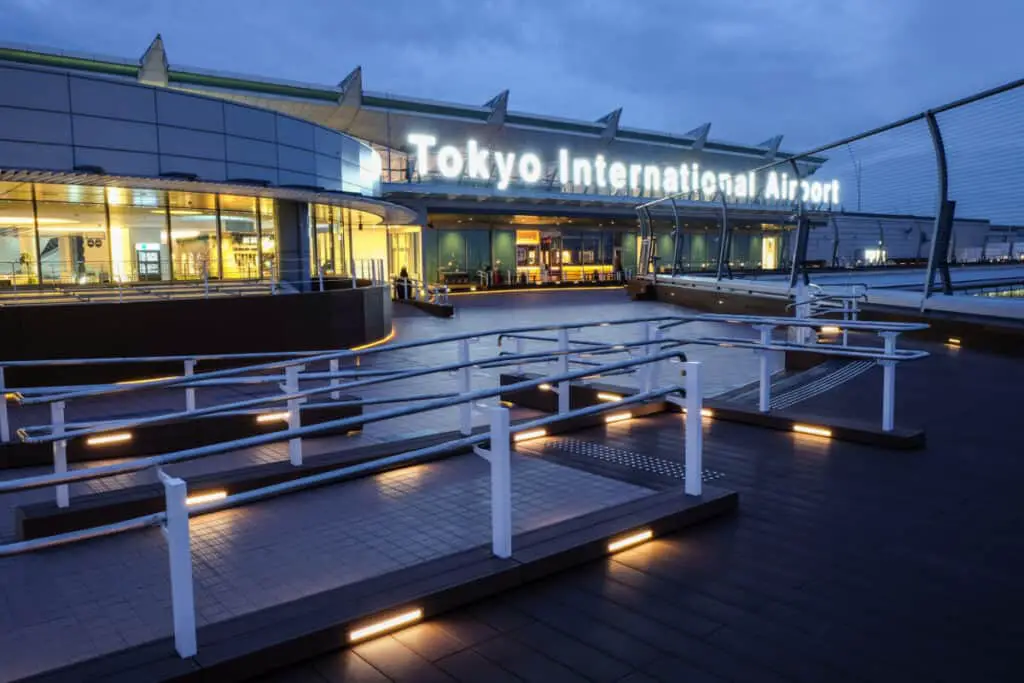
If you have the option to, fly into the Haneda Airport . It’s the most convenient airport to fly into as it’s close to Tokyo, which you’re likely going to travel in or through as you make your way through Japan.
Depending on your origin city, there are many direct flights to Tokyo and Haneda and Narita are the easiest way to begin a journey in Japan.
Transportation
Conveniently, you can purchase a JR Pass for a 14 day trip for unlimited travel on most of Japans train system. The cost for a 14 day Japan Rail pass is about $400 USD.
If you decide you want the upgraded pass, you’re looking at around $600. With how clean, safe, and accommodating transportation is in Japan, it’s really not needed for you to upgrade to a green pass to get luxury seating. If your traveling with a small group JR Pass will save you a lot on public transport.
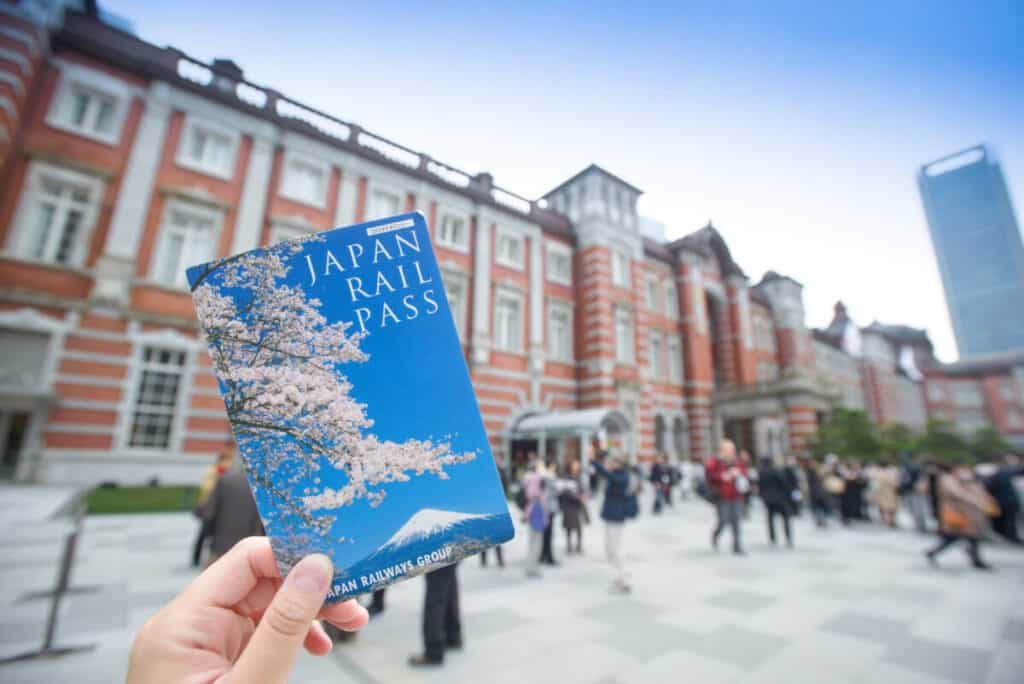
If you also plan on getting an IC card, you’ll have to account for the deposit and the minimum amount needed on the card. This only accounts to about $15 USD altogether.
If you put $50 USD on your card, you’ll be able to use it for local transportation fares and likely not have to reload it, though doing that is pretty simple.
You can also choose to add a little more since you can also use the card at vending machines and select convenience stores. It’s good to have a little extra cash on you for transportation in the very off-chance you can’t use either of your passes.
Accomodations
Accommodations can make up a moderate to big portion of your budget depending on what kinds of places you choose to stay in.
Generally speaking, accounting for between $100 and $125 dollars per night you’re in Japan is a good place to start.
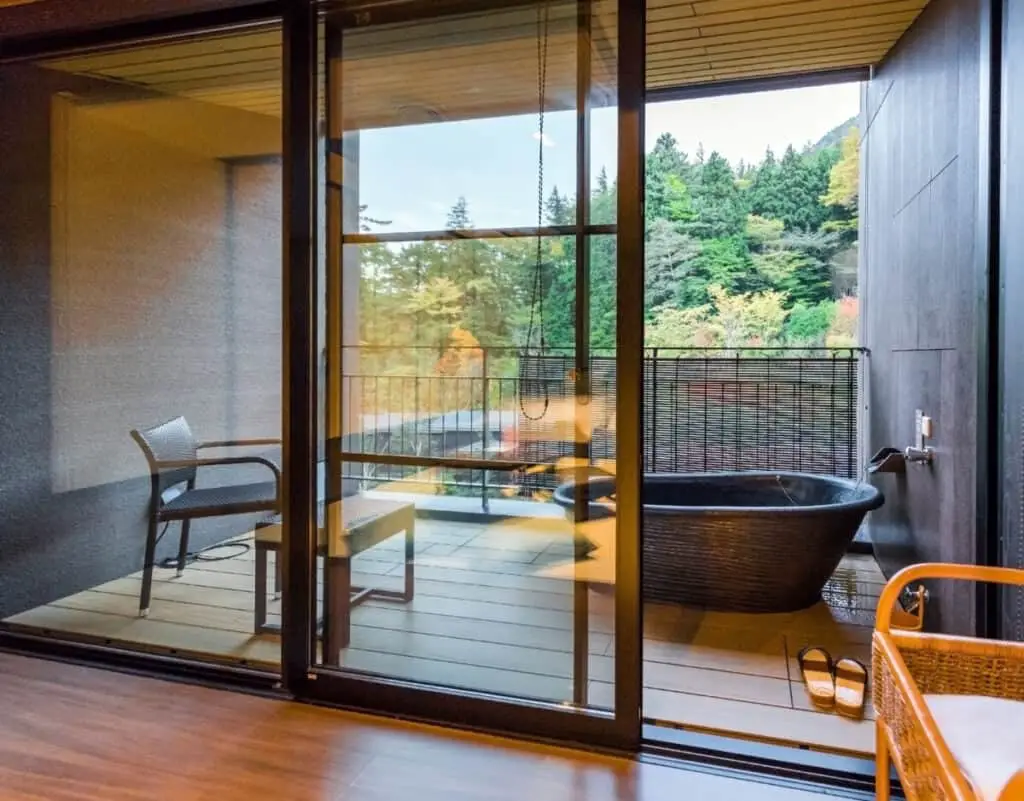
You’ll find quite a few accommodation options that are going to fall under this amount, though whether or not you choose to stay in those options is based on your comfort level.
You could easily feed yourself well on a budget in Japan without missing out. If you consider a food budget of about $30-$50 USD a day, you’ll have a lot of freedom in terms of being able to mix in some indulgences with some more budget-friendly options.
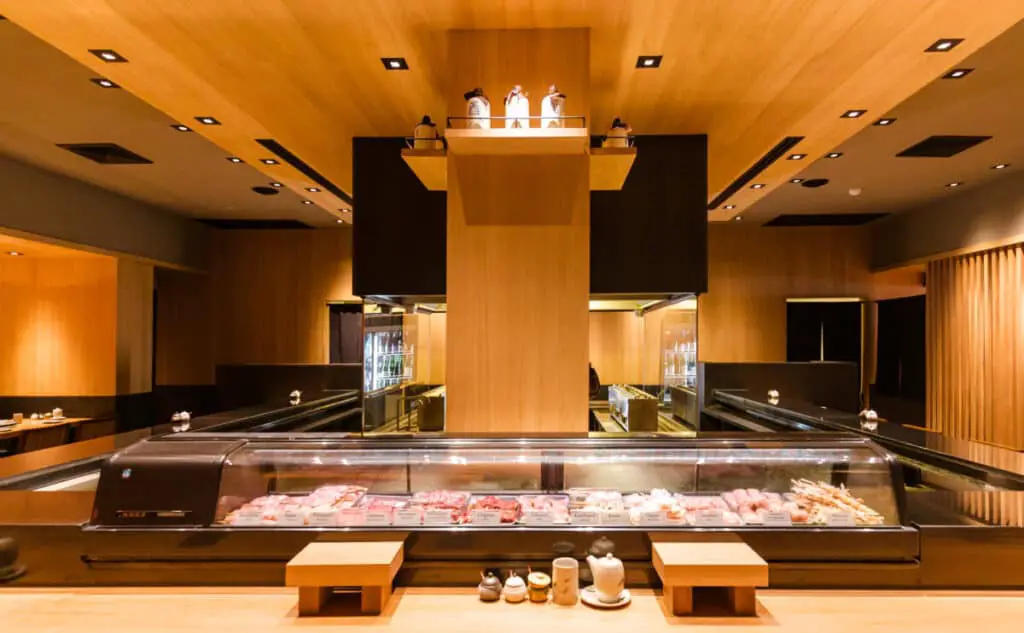
For two weeks, you’re looking at anywhere between $400 to $700 USD, though it’s very easy to be flexible with your food budget at many great restaurants .
Attractions And Experiences
This is likely to be one of the trickiest parts of your budget to plan. Traversing through Japan can be affordable or very expensive depending on how you plan and what it is you’d like to do.
The good thing is that you have a range of affordable places to see and things to do in Japan, many of which are highly desirable tourist spots.
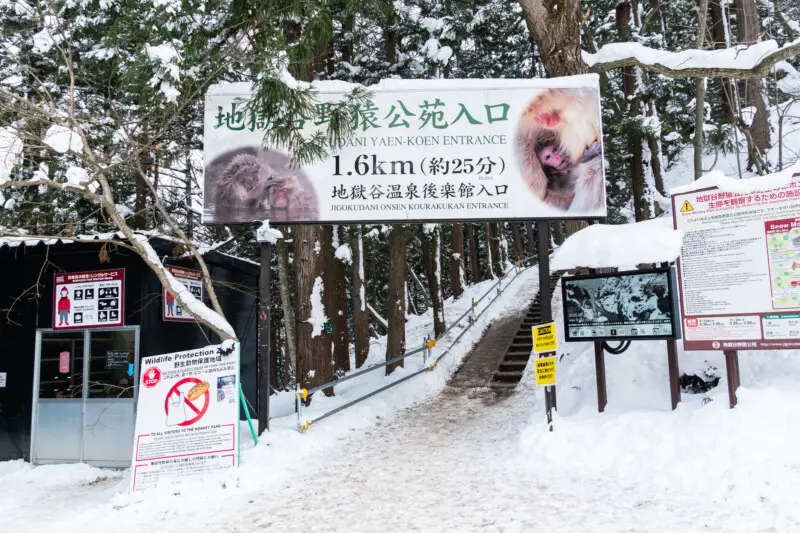
When possible, it’s worth seeing if you can purchase admission or tickets for your planned excursions in advance.
This won’t usually save you money, but in some cases, it might; it’ll definitely save you a lot of time you could waste waiting in long lines to get admissions. It can also help you reserve your spot should you indulge in something where participants are limited.
Your shopping budget will also have a lot of flexibility depending on your shopping habits. You always want to keep in mind what you have the capacity to bring back with you.
You want to be somewhat generous with your shopping budget no matter your habits, as letting yourself experience all the incredible districts with unique shopping opportunities is a must.
It’s important that you don’t over-promise people regarding what kinds of souvenirs you’ll bring back for them, as you don’t want to blow your spending budget on souvenirs for other people.
There are many places where you can find inexpensive souvenirs for people, however, and not just cheap, boring souvenirs, either.
Miscellaneous Expenses
You’ll want to have some room in your budget for things like incidentals or extras that you may not necessarily need but can make your trip more convenient. This can include things like a pocket wifi device so you can look up maps and connect to the internet safely when needed.
If you can budget for some wiggle room or have a backup plan should you run out of money, it can be a safety net of sorts if you find a few things you just can’t do without.
This is where a credit card with no foreign fees can be handy, though not if you’re the type of person who will be tempted to continuously swipe their card.
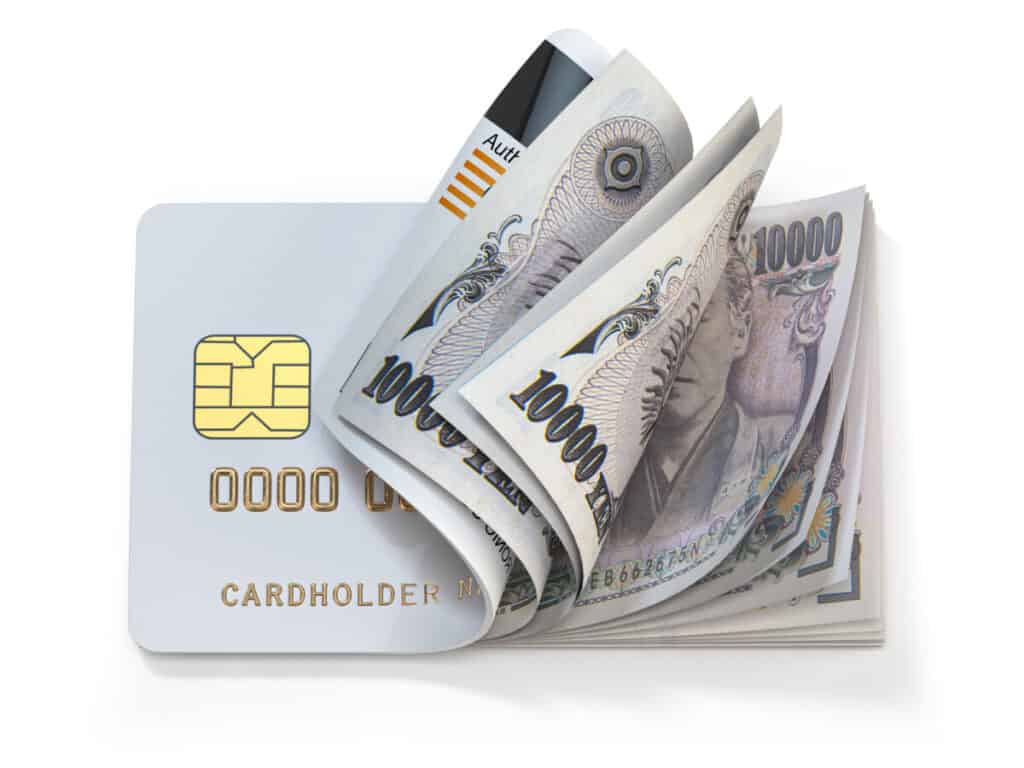
There are some costs associated with traveling to Japan that can’t be avoided, such as your plane ticket and your accommodations. The further in advance you can plan your trip, the better off you’ll be in terms of being able to shop for deals on tickets to sites, plane tickets, and even hotels or ryokans .
Don’t just stick to fancy restaurants when eating out either; some of the best food you’ll find will be in the streets or in little hole-in-the-wall restaurants that you’ll only discover once a local tells you about it.
Final Pro Tips On Visiting Japan
Depending on what your travel goals are, Tokyo is the best place to begin your exploration. Even if you are planning on spending your time in another city, it’s best to plan at least one full day there.
It’s a great way to see ultra-modern Japan and experience good food, luxury hotels, and the many Buddhist temple sites.
japan is known as an expensive country to visit and so having credit cards for an unplanned emergency is a great idea.

The Japanese people are incredibly well-mannered and kind. First-time visitors will be surprised, even in crowded Tokyo, by how willing they are to assist you if you find you need help.
The price range for visiting Japan can vary greatly depending on your personal budget, and travel guides are a popular option for your first day in Japan.
It is one of the most expensive countries in the world to visit there is still room for a good deal for savvy travelers. Some single-room business hotels can have lower average prices over larger chains, and many of Japan’s big cities have business hotels.
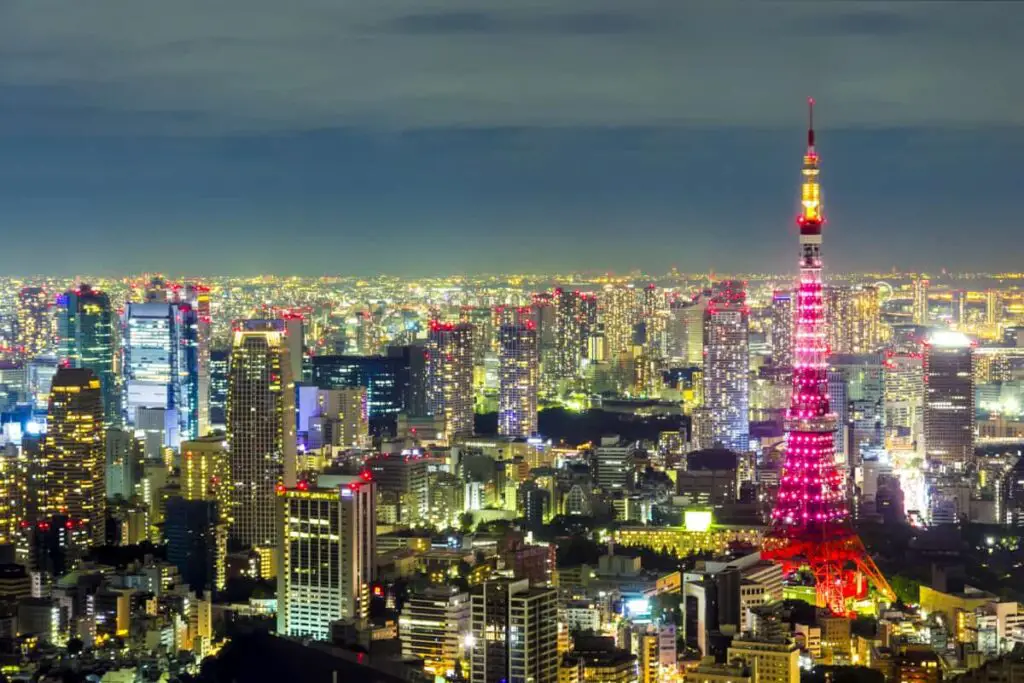
Finally, if your planning to travel long distances, then train travel is your best option, and comfort and speed is a good reason to opt for the shinkansen if only for a single trip between cities.
Flights can vary greatly depending on your home country, so remember to use sites that can search for great deals on flights, such as Kayak or Flight Hacker, which will charge a small commission to save more.
Latest Posts

Kyoto’s Autumnal Wonders: 25 Must-Visit Spots for Every Tourist

Tokyo on the Move: A Comprehensive Guide to the City’s Transport Tapestry

“Celebrating Sakura: Your Essential Guide to Japan in April – 25 Insider Tips for an Unforgettable Journey”

Tokyo Unveiled: The Ultimate Guide to the Top 100 Must-See Attractions and Optimal Timing for an Enriching Experience
- Cities & Regions 71
- Culture & History 64
- Events & Interest 41
- Learning The Language 5
- Pro Travel Tips 51
- Uncategorized 469
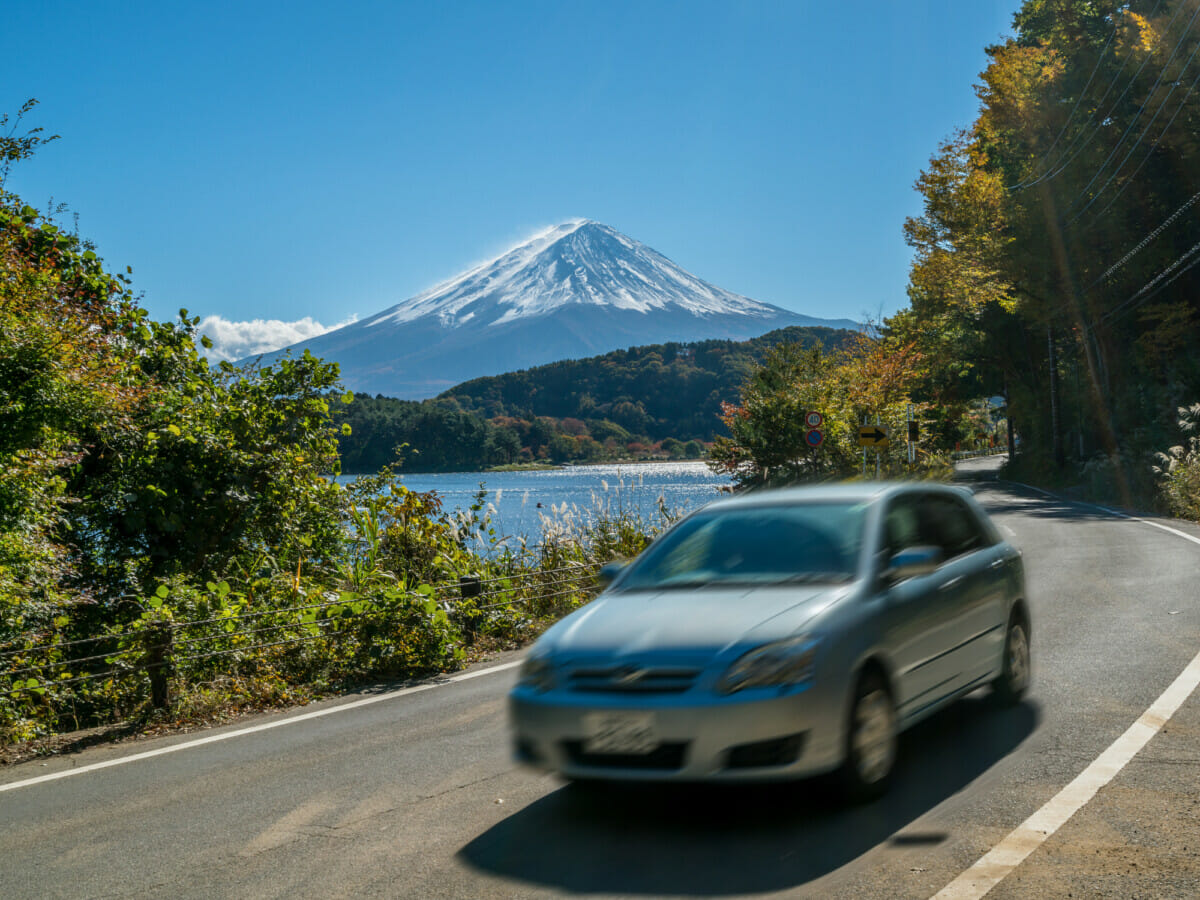
How to Get an International Driver’s License in Japan
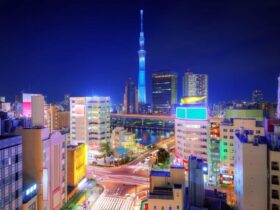
Tokyo Unveiled: The 100 Most Asked Questions
Travel Budget
This page is meant to give you a rough idea of the cost of individual travel in Japan by introducing some sample budgets. Note that accommodation rates can increase during peak seasons in popular destinations which is not reflected by the numbers below. View also our pages about budget travel , package tours and suggested itineraries to see the sample budgets applied to specific itineraries.
Sample daily budgets
The numbers below do not include the cost for transportation and heightened accommodation rates during peak seasons. Click here for the current yen exchange rates.
Accommodation
Below are typical rates for accommodation outside the peak seasons . Rates can increase considerably during the peak seasons! Check our accommodation page for more information on different accommodation types and corresponding price ranges.
Low budget: 3,000 - 5,000 yen per night and person Dormitories and hostels , found in most cities of Japan, typically charge below 5000 yen per night and person. Furthermore, booking services like Hostelworld offer great deals.
Medium budget: 6,000 - 12,000 yen per single room and night 8,000 - 15,000 yen per double room and night At this level, you will find rooms in business hotels , minshuku and inexpensive, no-frills ryokan . Some tour packages (for individual travelers) include accommodation at quality Western-style hotels at this price level.
High budget: over 12,000 yen per single room and night over 15,000 yen per double room and night Starting around 12,000 yen per person, you can get rooms in better business hotels and inexpensive Western-style hotels. A stay at a ryokan with two meals included typically costs between 15,000 and 30,000 yen per person and night. For a room in a 4 or 5 star Western-style hotel, you typically pay from 25,000 to 50,000 yen per room and night.
Low budget: 500 yen per day At this level, you will have to live from convenience store food (bread, rice balls, etc.) and fast food restaurants like McDonald's or Mister Donut which offer inexpensive breakfasts.
Medium budget: 500 - 1000 yen per day Many coffee shops and some restaurants in shopping areas and around train stations offer breakfast sets for around 500 to 1000 yen.
High budget: above 1000 yen per day Hotel breakfasts and breakfast buffets will usually cost you more than 1000 yen. Breakfast buffets in first-class hotels typically cost at least 3000 yen.
Low budget: 500 - 800 yen per day Inexpensive lunch boxes are available in convenience stores and stands in railway stations and business districts. Various fast food restaurants , specializing in noodles, curry, domburi or hamburger, also offer relatively filling meals for 800 yen or less.
Medium budget: 800 - 1500 yen per day At this level you will have an even larger range of inexpensive restaurants such as the above mentioned fast food places, plus restaurants which offer lunch set specials for around 1000 yen.
High budget: above 1500 yen per day A lunch at better restaurants costs typically between 1500 and 3000 yen.
Low budget: 500 - 1000 yen per day Convenience stores sell various, inexpensive ready-to-eat meals. Other options are again cheap fast food restaurants .
Medium budget: 1000 - 2500 yen per day Conventional restaurants are generally more expensive in the evening than during lunch time, as there are no lunch specials. At this level, you will be able to enjoy a nice dinner at a wide range of fast food and conventional restaurants, including the restaurants found in department stores where meals typically cost between 1000 and 2500 yen, not including alcoholic drinks.
High budget: above 2500 yen per day With 3000 yen per person you will be able to have a good dinner at a wide range of restaurants . Calculate 5000 yen upwards per person for a dinner at upper class restaurants specializing in sushi , French cuisine, sukiyaki, kaiseki ryori, steaks, etc.
Sightseeing
Low budget: 0 - 500 yen per day Japan offers many free attractions. Most shrines and some temples do not charge admission fees. A few museums charge no admission on one day of the week or month.
Medium budget: 500 - 2000 yen per day Admission to famous temples costs between 300 and 1000 yen. Most museums and castles charge about 500-1500 yen per person.
High budget: above 2000 yen per day Some museums and attractions (usually outstanding ones or tourist traps) charge between 1,500 and 3,000 yen per person. Admission to large theme parks typically cost around 5,000-10,000 yen per day.
Transportation
Low budget: Highway buses , the Japan Bus Pass and the Seishun 18 Kippu (only available during certain times of the year) are among the cheapest ways of traveling in Japan.
All budgets: Travelers of all budgets should consider purchasing a rail pass . Over long distances, domestic flights are often more economical, if you take advantage of the various discount offers .
Questions? Ask in our forum .

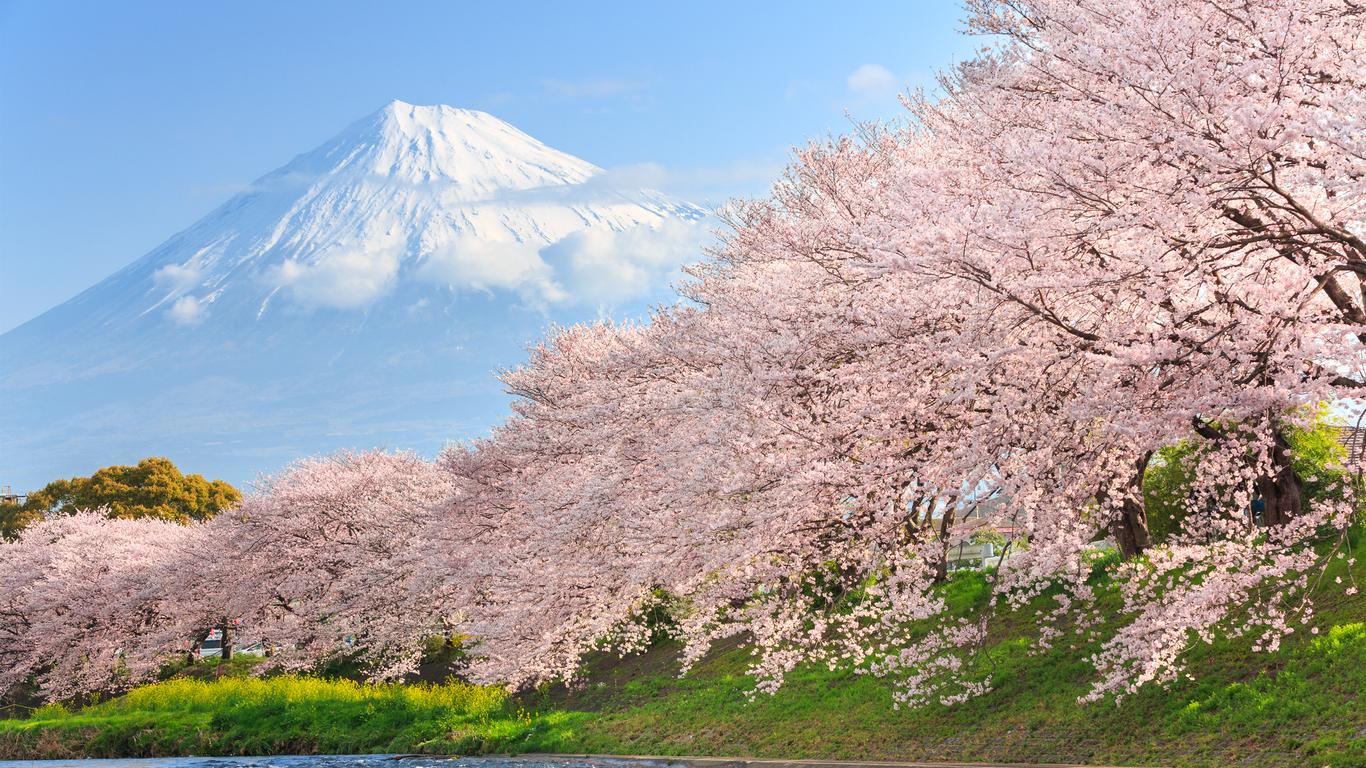
Find cheap flights to Japan from $313
This is the cheapest one-way flight price found by a kayak user in the last 72 hours by searching for a flight from the united states to japan departing on 4/22. fares are subject to change and may not be available on all flights or dates of travel. click the price to replicate the search for this deal., search hundreds of travel sites at once for deals on flights to japan.
Save 20% or more Compare multiple travel sites with one search.
Track prices Not ready to book? Create a price alert for when prices drop.
Filter your deals Choose cabin class, free Wi-Fi and more.
Bundle and save Save money when you bundle your flight + hotel.
Best Japan Flight Deals
Cheapest round-trip prices found by our users on KAYAK in the last 72 hours
Good to know
Faqs - booking japan flights, if i am traveling with children to japan, are there any child seat laws i should know about when renting a car in this country.
There is a national child restraint law in this country that states that any child up to four years old needs to travel in a forward-facing car seat and that kids up to six years old need to travel in a booster seat or on a booster cushion.
If I plan on flying to Tokyo, which airport should I fly to?
Most travelers flying to Tokyo will choose the Haneda Airport (HND) because it offers a location that is closer to the center of Tokyo. That said, some of the cheapest flights available from the west coast of the United States to Tokyo travel to Narita International Airport (NRT). Another one of the advantages of this airport is that it offers abundant rail service to get travelers not really into the center of Tokyo but to a number of other destinations that surround this large city.
If I want to travel to Sapporo in the north of Japan, what are some of the best choices for flights?
When flying to the New Chitose Airport (CTS) that serves Sapporo from cities on the west coast of the United States, some of the quickest options are the one-stop flights from San Francisco International Airport (SFO) aboard ANA Airlines.
What are some transportation options to get from Haneda Airport into downtown Tokyo?
The Tokyo Monorail travels from the airport to the downtown area in around 23 minutes, with trains departing the airport every 10 minutes or so. There is also a bus service provided by Airport Limousine that can make the trip in around 40 minutes, with buses departing roughly every hour from the airport.
Which airport should I use to visit Mt. Fuji?
Mt. Fuji is the highest mountain in Japan, lying just below the center of Honshu island and south of Tokyo. If you intend to visit the area you can fly to Tokyo Haneda Airport and get a connecting flight to Mt. Fuji Shizuoka Airport, about 50 mi away from the peak.
Which Tokyo airport is closer to the downtown area?
Of the two international airports serving the Tokyo metropolitan area, Tokyo Haneda Airport is the closer to the city center which is a little less than 9 mi away. Tokyo Narita Airport lies about 37 mi from the center of the city, so plan your travel itinerary carefully when booking your flight from the US to Japan.
Should I buy Japanese Yen before I leave the US?
Most international travelers tend to buy local currency once they arrive at their destination and all the major Japanese airports have currency exchange offices where you can buy yen to pay for your taxi, rental car or to use public transportation.
Do the Japanese airports have facilities for families?
Yes, they do. All the international airports serving US flights provide facilities for parents traveling with children. These services include Baby Rooms equipped with changing tables and microwaves, nursing rooms for mothers with infants and Children’s Play Areas where the young ones can tire themselves out before the long flight home.
How long is the flight to Japan?
An average nonstop flight from the United States to Japan takes 14h 21m, covering a distance of 6087 miles. The most popular route is Los Angeles - Tokyo with an average flight time of 11h 15m.
What is the cheapest flight to Japan?
The cheapest ticket to Japan from the United States found in the last 72 hours was $249 one-way, and $402 round-trip. The most popular route is Los Angeles to Tokyo Haneda and the cheapest round-trip airline ticket found on this route in the last 72 hours was $724.
Which airlines fly to Japan?
ANA, United Airlines & Japan Airlines fly the most frequently from the United States to Japan.
What are the most popular destinations in Japan?
The next most popular destinations are Osaka (7%) and Okinawa (1%). Searches for flights to Fukuoka (0.4%), to Sapporo (0.4%) and to Hiroshima (0.1%) are also popular.
How does KAYAK’s flight Price Forecast tool help me choose the right time to buy?
KAYAK’s flight Price Forecast tool uses historical data to determine whether the price for a given destination and date is likely to change within 7 days, so travelers know whether to wait or book now.
Top tips for finding cheap flights to Japan
- Enter your preferred departure airport and travel dates into the search form above to unlock the latest Japan flight deals.
- Passengers need to have a valid passport for their trip to Japan, and they need to ensure that their passport remains valid during the entire length of their stay in Japan. It is also important to keep one blank page in the passport for an entry stamp.
- A popular departure airport in the United States for a flight to Japan is Los Angeles International Airport (LAX). Passengers looking for the quickest way to get from downtown Los Angeles to this airport should travel on the FlyAway bus that travels from Union Station in downtown Los Angeles to the airport in about 40 minutes.
- Two of the biggest annual events in Japan are New Year's Day and Obon, which occur in the summer months. If traveling to Japan for either of these events, it is best to book tickets as far in advance as possible to ensure availability and the lowest prices.
- One of the largest international airlines in Japan is ANA Airlines, and most travelers might be surprised to learn that one of their major hubs in the United States is Daniel K. Inouye International Airport (HNL), where passengers will find a number of nonstop flight options to a variety of cities in Japan.
- If you plan on traveling to the southern part of Japan, one of the most popular airport options is Nagasaki International Airport (NGS). There are a number of one-stop flight options available to this airport aboard both ANA Airlines and Japan Airlines from a variety of cities in the United States.
- US citizens do not require a visa to visit Japan, but permanent residents should check online with the nearest Japanese embassy or consulate to see if one is required for their respective countries. Bear in mind that you will be allowed to stay for up to 90 days.
- The Japanese capital city of Tokyo is served by two major airports: Tokyo Narita (NRT) and Tokyo Haneda (HND), which handle most of the international air traffic, but flights from the US to Japan also use Osaka Kansai Int’l (KSI) as well as Fukuoka Airport (FUK) and Okinawa Naha (OKA), so choose the one which is closest to your destination.
- Japan has four main islands in very close proximity to each other. The northern island of Hokkaido is not serviced by international flights from the US, so you’ll have to get a connecting flight from one of the two Tokyo hubs or use another form of surface transportation in order to get there.
- Due to their geographic location many of the flights from the US to Japan originate on the West Coast, where you can get several flights with connections from Los Angeles (LAX), San Francisco (SFO) or Seattle (SEA). The only nonstop flights to Japan are from the Hawaiian city of Honolulu (HNL) to Osaka via Air Asia X.
- Osaka has excellent ferry connections to the many southern Japanese cities like Miyazaki and Okinawa, but if you wish to visit the cities of Hiroshima and Nagasaki then you should use Fukuoka Airport, which is midway between them and therefore is a perfect launching point.
Top 5 airlines flying to Japan
First I will say this was really NOT an ANA flight. ANA used a UNITED jet to perform this flight. I specifically booked with ANA because I did NOT WANT TO FLY UNITED FOR INTERNATIONAL FLIGHTS. So to spend $1800.00 and then discover after booking that it was going to be handled by United was very disappointing. I will be more careful next time when I book. The interior was very cramped in economy class; the dinner meal was terrible and also had extremely small portions for an international flight - the bread roll was ice cold and stale - that salad was very wilted; I’ve never had a “snack” that was so salty that it was difficult to eat; the breakfast “waffle” was practically unrecognizable. Really horrible meals for a very expensive international flight. Bathroom floor was also pretty dirty. I’m hoping my return flight is a real ANA airplane that is cleaned and serviced by ANA personnel with ANA meals. I will never book with ANA again if they continue to use UNITED airline jets. Yuck!!!🤢
Ticket was purchased as a United Airlines flight (operated by All Nippon) like what does that even mean? Makes for a VERY confusing flight experience. For instance, what do I look for a United drop off signage and ticket counter or ANA? No explanation anywhere to be found. I also felt a little bit scammed by the obsurdely restrictive seat selection provided. Only middle seats available!! Are you kidding me!! On 6hr + 10hr flights you're forcing me into the middle seat without telling me before I purchased the ticket?? This should be illegal. And to top it off, on the Tokyo LA leg there were quite a few empty seats including window seats! I must also say, the food was a dissappointing as well for my taste, fish with rice ( mostly plain white rice) or a vegetable medly for the breakfast meal? Should be at least 4 choices and at least 1 with eggs. Outside of these issues flight was otherwise ok.
Ground and flight crew were all courteous, extremely helpful and professional. Overall, process is really organized, from boarding to disembarkation.
This is a very long flight and the first time I have flown on a Japanese airline. I was very impressed with the staff. They worked hard and offered food and drink regularly. Plane was very well cared for. The let room was good . Food was ok but better than other airlines.
It was very nice. I was a bit disappointed by the few meal services. There were probably more drink services that I missed while sleeping, but I would have liked the crew to bring more than one drink service before landing and to bring more than one drink service and coffee service after take off
The space and bed was very comfortable , flight attendants very nice. The food was not tasty at all. I ordered the rib eye and it was so tough I couldn’t cut it.
I wish the serve should leach and drink. Maybe because only 2hr
Seat was roomy enough . The Asian selection for a meal was good . The tortellini was not very good. Service was excellent. O
It was very good. Lots of room with superior food and service. I will not hesitate to fly ANA in the future!
I love everything about this airline but it could be better if the waiting time for boarding is on time.
-Bathrooms were regularly checked/maintained. -Food was okay, but the miso soup was good. -Top of my foot got bitten by a bug when I took off my shoes and was only wearing my socks. It was swollen and very itchy for several days.
Truly impressive service in the air. After the main meal, they have a delicious a la carte menu that you can order anytime until 1.5 hrs prior to landing. Flight crew were so pleasant and very efficient. Wish I could fly JAL more often!
Attentive crew, great service with regular rounds of drinks and trash collecting. Only complaint is the food, which was mediocre.
Japan airlines is excellent. I had a great flight with them, and they are the consummate professionals. I booked my flight through Kayak and they sent it on to Underpricer. That felt really scammy. My Oneworld number would not attach to the reservation and I could not choose a seat. I called Japan Airlines and got one but it was in the back. Later I drove to the airport and worked with the excellent agents there to find a better one. Later that day, I got a phone call from Underpricer trying to upsell me the option of choosing a seat. It felt like a Spirit Airlines level crappy move. The flight itself was exactly as nice as you would expect from JAL. The meal was good and the flight crew was awesome.
Liked the food. Needs improvement: 1) the flat bed was very hard and the set up was not at all passenger friendly 2) the announcement were impossible to understand even in English. 3) the flight information on the monitor was terrible it showed a airplane with no information like altitude, airspeed, heading. You could not zoom in or out to orient the aircraft to where you were in the flight. 4) movies were old and very limited as was the music selection.
This flight was operated by American Airlines. AA was completely unprepared for the crowds at DFW for Spring Break and were ridiculously understaffed. They had only three operating kiosks for self check-in, and ONE agent to handle hundreds (thousands?) of dropped off bags. She also had to do double duty to assist passengers at the kiosks. In comparison, flying on United Airlines at Christmastime was a much smoother experience.
Need new movies, a lots of them are 20-10 years old or older. It us a very long flight we need good entertainment. Please load more new movies!
Good and movies are so old. Needs to have more up-to-date movies.
It was an outstanding flight and service. The only thing is the seat cushion for economy could be a little more comfortable. More cushion.
Although delayed leaving the crew were lovely, comfort of the seats was excellent. Cabin was a little too warm but overall the best economy flight we have taken
Too many fees (but that seems to apply to all airlines nowadays)
Packed in like sardines, very uncomfortable. Sitting the aisle my shoulder was rammed into numerous times by rushing flight attendants. Also flight was very cold.
Your app is impossible to use. I couldn't load it. Then i couldn't open it. When i finally got both those things done -with much help -then i couldn't open the app to install a credit card. The upshot was 4 flights without access to food or drink. When i first tried to download united app some company called starlier opened instead and i would up signing up for some 49 dollar a month music service which i still have not been able to cancel.
Delayed a day due to snow storm. Was upgraded. That kind of made up for significant delays from FLL to COS with no compensation or acknowledgement.
It was delayed several hours which delayed our connection in Denver. Not happy.
Ok, but comfort was lacking as the seats were way to small
The Polaris experience is top notch. From departure lounge to arrival lounge. Everything was top notch. One of the best first class experience
The plane was delayed 2 hours. The wifi did not work. The seat in first class was not comfortable because the bottom felt like it lost all of its padding. And I did not like when the flight attendant made me wait at my seat to use the bathroom and didn't tell me why. If there were too many people using the 1st Class bathroom, she should have told me to go in the back, coach bathrooms. I guess I have to feel fortunate that they found 2 local pilots to still fly the plane tonight after the original pilots ended up at an airport 60 miles away due to high winds.
EWR terminal C United Club is great. Flight and everything else mediocre
Flight delayed for 2 hours due to a part. The plane sat waiting for boarding for a long time and during final preflight inspection the issue was found. Why not do the preflight inspection sooner if you know the plane is being used?
internet didn't work. No offer of drinks or snacks.
Flight was seamless. Free wifi helped pass the time. Food was okay, just make sure you pre order or pick something up from the airport
Internet connection very poor, means you can not even order items through their own shop.
Paid for business class lay flat seat. Significantly less comfortable than other carriers. No built in entertainment or WiFi. I barely saw flight attendants at all and they wanted to charge me for a bottle of water if i wanted more than what came with the meal (that i also paid extra for). Essentially you’re just paying for a slightly more comfortable seat than the rest of the plane and nothing else
Een prijsvechter, dus dat moet je ook verwachten. Voor alles moet je betalen. We hebben vooraf een maaltijd en een amenitiesset besteld. Die kregen we netjes uitgereikt aan boord. Het is BYOD voor het amusement tijdens de vlucht en dit werkte uitstekend. Geen trage wifi, helemaal niet. Alles kost geld, zelfs een flesje water. Misschien op langere vluchten wel gratis water, thee, koffie. Maar daarentegen mag je na de security je lege drinkflessen gewoon vullen en mee aan boord nemen
Wifi could have been better. Arrived 55 mins earlier than scheduled :)
Best part are two crying babies throughout the whole 11 hour trip
Clean and comfortable cabin. Friendly on board service. No vegetarian food options and movie options were very limited. Internet was very slow
I didn’t eat the food but there wasn’t an option. Seat was a little too small for me but everything else was great
Never again on Zipair. People please spend a little extra to fly on better airlines. After all, it’s your vacation! No screen TV, internet sucks. You can’t change or modify anything after purchasing your tickets, Our friends tried to change from paying for carryon to checking in bags. No no no, you’d have to pay for whatever the check in bags cost. Myself, change my mind and continue to travel to other destinations after Japan. The only refund they were going to paying me back was $67.00 tax? So I’ve decided to just let my family use the extra seats and take my carry on back with them. At Narita airport, they’re not allowed my husband to my carry on back with them although I’ve already paid for. He end up have to paid $50.00 to check in that bag? You tell me, do you want to travel with Zipair? Hell no!
Short flight, crew members were very nice, so much so I'll take the return flight next weekend
The trip was fine and uneventful. The seat in business class was very uncomfortable which was disappointing given the extra cost. It was spacious but it felt like I was sitting on metal bars. The food in business class wasn't very good. The flight was ahead of time, the staff was professional and courteous and our luggage arrived safely.
Food could be better, lie flat seats could be a little more cushioned. The business class dinner before the flight is excellent at Toronto airport
Food could be better, lie flat seats could be a little more cushioned
Again we were late leaving Austin , there was no tv screen for the 3.5 hr flight, the pizza I bought was kinda bland
It was fine. The seating was tight. My husband is 6' 2", so we were glad to get seats with no one in front of him. I was glad that the plane wasn't packed so I could spread out.
I love flying with AC. I love that they have power outlet and free messaging wifi for aeroplan members.
Both flights to and from Phoenix were delayed 2 hours each direction. Unacceptable. Disappointed with Air Canada I was given a food voucher fror trip to Phoenix but nothing on return. Both baggage claims took 2 hours to collect baggage
I liked Seattle but nothing air Canada did there was any good at all neither was kayak as when I purchased my flights the price I purchased at was not what kayak charged to my card and there has been no responses to my emails ....
I didn't understand what "limited wifi" mean. Everything is money money money. I didn't have any other choice other than Air Canada since I couldn't find any other direct flight.
Book Cheap Japan Plane Tickets
Recent round-trip flight deals, search by stops, search by airline, search by price, recent one-way flight deals, last minute flights to japan, last minute flight, train and bus deals, flights to japan, return flight deals:.
Japan - United States
Cabin classes:
Browse origins:.
- Flights »
- United States
Browse destinations:
- Worldwide »

Enjoy fast, free delivery, exclusive deals, and award-winning movies & TV shows with Prime Try Prime and start saving today with fast, free delivery
Amazon Prime includes:
Fast, FREE Delivery is available to Prime members. To join, select "Try Amazon Prime and start saving today with Fast, FREE Delivery" below the Add to Cart button.
- Cardmembers earn 5% Back at Amazon.com with a Prime Credit Card.
- Unlimited Free Two-Day Delivery
- Streaming of thousands of movies and TV shows with limited ads on Prime Video.
- A Kindle book to borrow for free each month - with no due dates
- Listen to over 2 million songs and hundreds of playlists
- Unlimited photo storage with anywhere access
Important: Your credit card will NOT be charged when you start your free trial or if you cancel during the trial period. If you're happy with Amazon Prime, do nothing. At the end of the free trial, your membership will automatically upgrade to a monthly membership.
Buy new: $16.97

Download the free Kindle app and start reading Kindle books instantly on your smartphone, tablet, or computer - no Kindle device required .
Read instantly on your browser with Kindle for Web.
Using your mobile phone camera - scan the code below and download the Kindle app.

Image Unavailable

- To view this video download Flash Player

Japan Travel Guide 2024: The Up-to-Date Budget-Friendly Manual & Travel Tips with Essential Maps and Photos (First Edition) (The Complete 2024 Travel Guide) Paperback – April 3, 2024
Purchase options and add-ons, japan adventure updated 2024.
Ready for an adventure in Japan? Our beginners manual is like a magic map, filled with secrets and fun places that will make your trip super cool!
Why This Book is Your Best Travel Buddy :
- Ever felt lost about where to go in Japan? Don’t worry! We've got you covered with the best places to see and fun things to do.
- You'll find out about the coolest spots in Tokyo, Kyoto, Osaka, and even in snowy Hokkaido!
- Love food? We’ll show you where to find yummy sushi, ramen, and more.
- Want to see cool festivals and events happening in Japan? We’ve listed them all for you!
- Maps and photos? Yep, we have those too! They make finding places super easy.
- Worried about spending too much? We’ve got awesome tips to save money and still have loads of fun.
- Plus, we'll share Japan’s secret spots that not many people know about!
What’s Inside? Let’s Check it Out :
- Tokyo Tales : Discover hidden alleys, giant robots, and yummy snacks in Japan’s buzzing capital.
- Kyoto Wonders: Walk in beautiful gardens, see old temples, and maybe even spot a geisha!
- Osaka Eats: Get ready to try the best street food ever!
- Hokkaido Adventures: Play in the snow and see amazing ice sculptures.
- Okinawa’s Sunny Beaches: Build sandcastles and splash in crystal-clear water.
- Autumn Leaves and Cherry Blossoms: See Japan’s famous colorful trees!
- Easy Travel Tips: Learn how to ride bullet trains and find your way around like a pro.
- Festivals and Fun: Dance at festivals and see cool fireworks.
- Budget Tricks: Save your pocket money and still see all the cool stuff.
Come on, Let’s Go!
Grab your copy of Japan Travel Guide 2024 now and start planning your most amazing trip ever. Japan is waiting for you with lots of fun, yummy food, and cool places to explore. Let’s make your adventure in Japan the best time ever!
Get your guide today and get ready for an adventure in Japan that you’ll never forget!
- Book 1 of 2 The Complete 2024 Travel Guide
- Print length 147 pages
- Language English
- Publication date April 3, 2024
- Dimensions 6 x 0.37 x 9 inches
- ISBN-10 180362826X
- ISBN-13 978-1803628264
- See all details

From the Publisher

Product details
- Publisher : Travel, Travel and Travel (April 3, 2024)
- Language : English
- Paperback : 147 pages
- ISBN-10 : 180362826X
- ISBN-13 : 978-1803628264
- Item Weight : 9.9 ounces
- Dimensions : 6 x 0.37 x 9 inches
- #8 in Travel Tips (Books)
- #106 in General Japan Travel Guides
- #711 in Adventure Travel (Books)
Customer reviews
Customer Reviews, including Product Star Ratings help customers to learn more about the product and decide whether it is the right product for them.
To calculate the overall star rating and percentage breakdown by star, we don’t use a simple average. Instead, our system considers things like how recent a review is and if the reviewer bought the item on Amazon. It also analyzed reviews to verify trustworthiness.
- Sort reviews by Top reviews Most recent Top reviews
Top reviews from the United States
There was a problem filtering reviews right now. please try again later..
- Amazon Newsletter
- About Amazon
- Accessibility
- Sustainability
- Press Center
- Investor Relations
- Amazon Devices
- Amazon Science
- Start Selling with Amazon
- Sell apps on Amazon
- Supply to Amazon
- Protect & Build Your Brand
- Become an Affiliate
- Become a Delivery Driver
- Start a Package Delivery Business
- Advertise Your Products
- Self-Publish with Us
- Host an Amazon Hub
- › See More Ways to Make Money
- Amazon Visa
- Amazon Store Card
- Amazon Secured Card
- Amazon Business Card
- Shop with Points
- Credit Card Marketplace
- Reload Your Balance
- Amazon Currency Converter
- Your Account
- Your Orders
- Shipping Rates & Policies
- Amazon Prime
- Returns & Replacements
- Manage Your Content and Devices
- Recalls and Product Safety Alerts
- Conditions of Use
- Privacy Notice
- Consumer Health Data Privacy Disclosure
- Your Ads Privacy Choices

- Southeast Asia
- North America
- Central & South America
- Middle-East
- Australia & South Pacific
- Luxury Awards
- Family Travel
- Solo Travel
- Beaches & Islands
- Zodiac Travels
- Wellness & Spas
- Accessories
- Points and Miles
- #TheGreenEdit
- T+L Tastemakers
- Sustainable Travel
- T+L Experiences
Asia's Budget-Friendly 2024 Summer Destinations: These Cities Made It To The List
Bengaluru, udon thani, narita – embark on an affordable adventure this summer through asia's most budget-friendly destinations for 2024..
By: Priyaja Bakshi Published: Apr 06, 2024 04:00 PM UTC

Summer is approaching swiftly, bringing along the excitement of planning a memorable vacation in 2024! Before you begin your selection process, delve into the budget-friendly destinations of Asia for summer 2024, where you can travel without exceeding your limit.
Agoda, the popular online travel agency, surveyed to determine the most budget-friendly destination in Asia for 2024 by comparing the average room rates across top destinations in the Asia-Pacific region. This exclusive list features Udon Thani from Thailand as the top-ranked destination, followed by Surabaya in Indonesia, Hue in Vietnam, and Kuching in Malaysia. These cities offer affordability and unique experiences within their respective countries, with Bangalore standing out as India’s most budget-friendly destination.
Discover the most budget-friendly summer destinations in Asia 2024
Udon thani, thailand – (usd 27).

Ranked first in Asia, Udon Thani offers affordability without compromising on cultural and natural richness. Explore archaeological wonders such as Kham Chanot, the Red Lotus Sea, and Phu Phra Bat Historical Park.
Surabaya, Indonesia – USD 38
Located on Java island in Indonesia , Surabaya blends the traditional and the modern along the coast. Discover the myth of Sura and Baya as you navigate the bustling streets of the port city through its Javanese, Chinese, and Arab influences. Explore the nightlife, local cuisine and culture at Pasar Atum and Townsquare Surabaya.
Hue, Vietnam – USD 42
Former home of the Nguyen Dynasty, Hue is steeped in history, making it a fascinating destination in Vietnam. Explore the UNSECO-enlisted Hue Citadel and the tombs of past emperors. Also famous for its cuisine, the Dong Ba Market is the centre for relishing world-class Vietnamese dishes like Banh Khoai and Banh Beo.
Related Stories
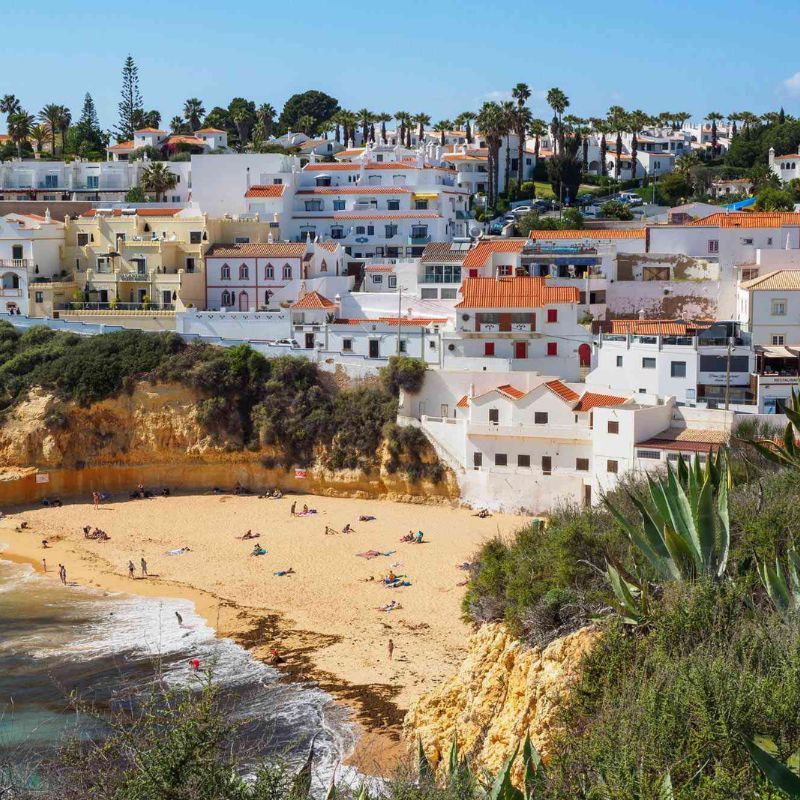
8 Affordable Countries To Own A Vacation Home
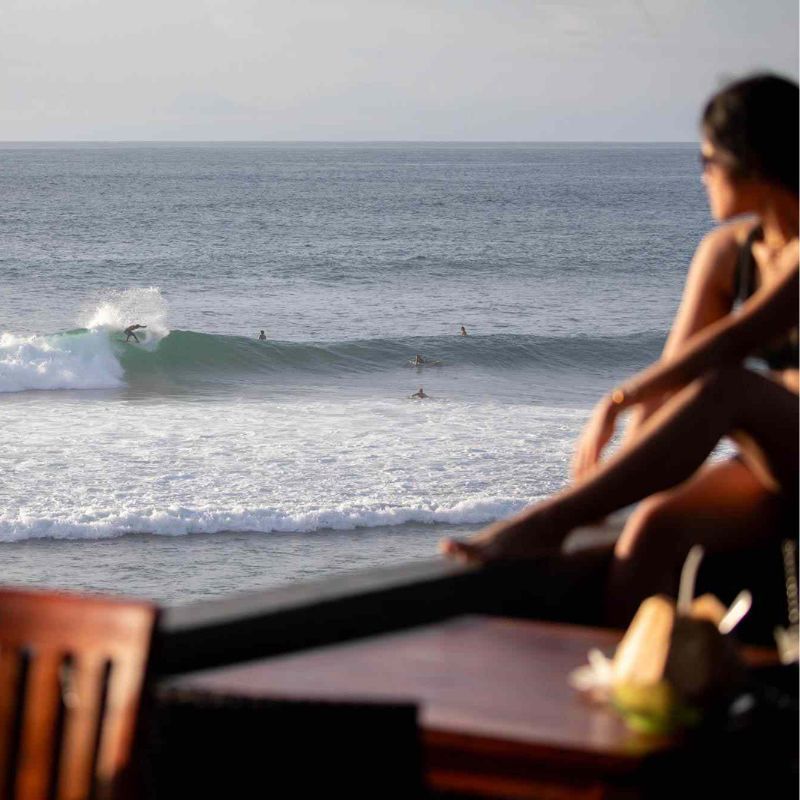
This Affordable Island Is The Top Vacation Spot For Couples, Research Finds
Kuching, malaysia – usd 48.
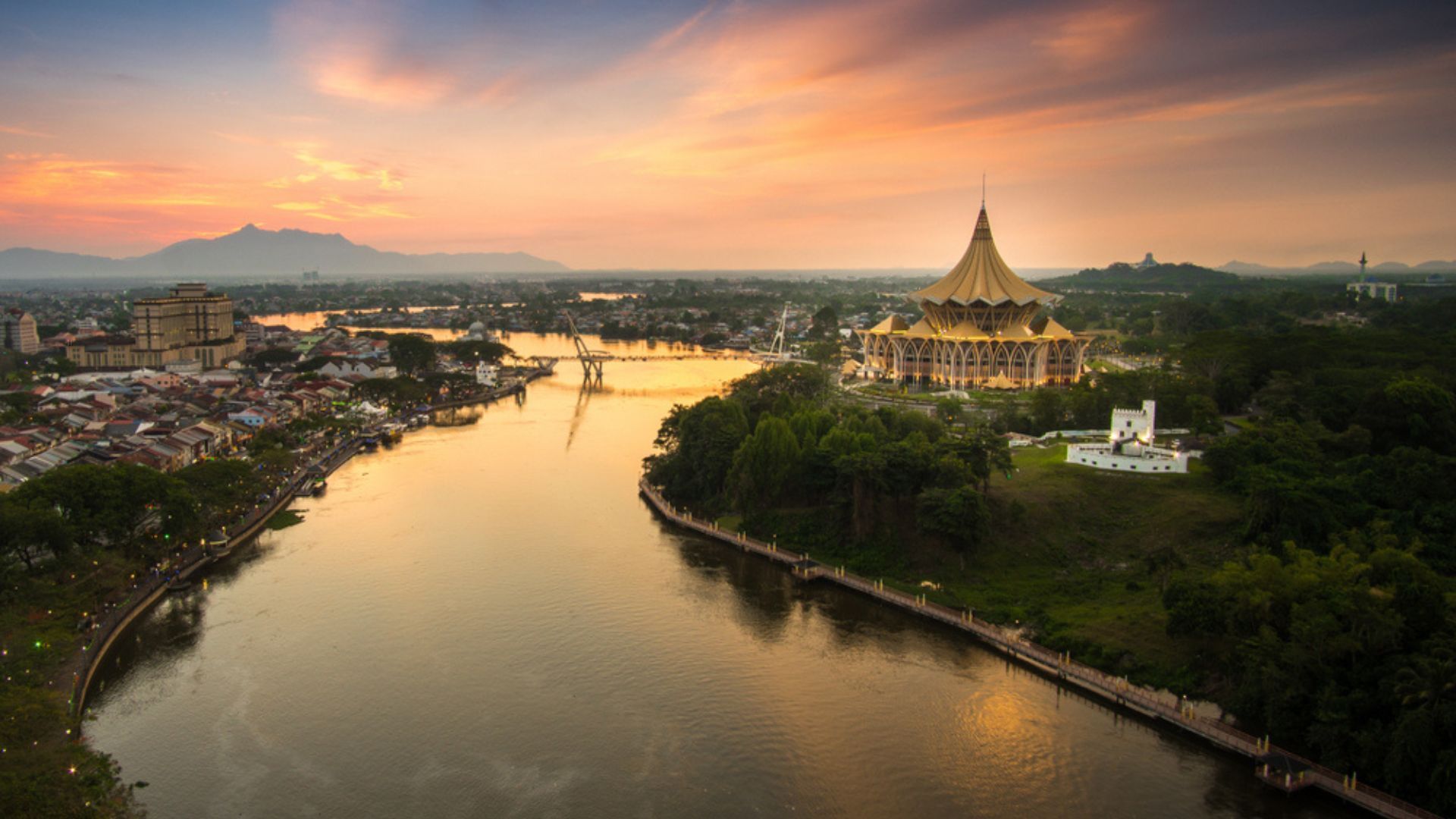
The capital of Sarawak, Kuching offers breathtaking nature on Borneo island and showcases Malaysia’s diverse culture. Witness the lush greenery, stunning landscapes and pristine waters of Bako National Park, Kubah National Park, Kuching Waterfront and Semenggoh Wildlife Centre.
Iloilo, Philippines – USD 49
Designated as UNESCO’s first “Creative City of Gastronomy” in the Philippines, Iloilo offers a blend of history, culture, delicious cuisine, and nature in one destination.
Bangalore, India – USD 54
Dubbed the “ Silicon Valley of India “, Bangalore is also the most affordable destination in the country. You can witness India’s past, present, and future through its monuments, bustling streets, and innovative spaces like Bengaluru Palace, Cubbon Park, Commercial Street, Tipu Sultan’s Summer Palace, and Visvesvaraya Industrial and Technological Museum.
Explore India’s most budget-friendly destination with our ultimate Bangalore travel guide.
Narita, Japan – USD 70
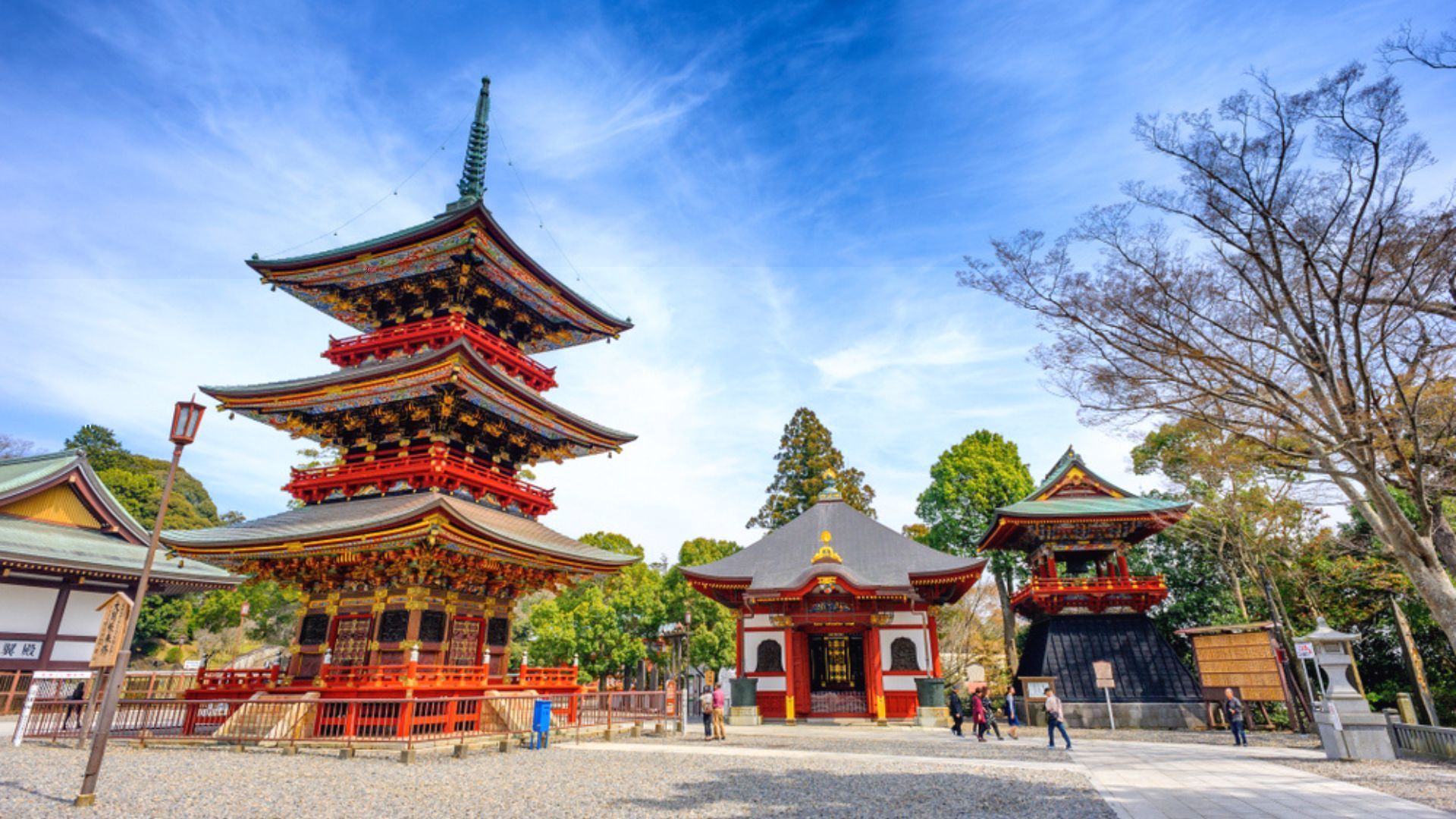
Beyond being a gateway to Tokyo, thanks to the Narita International Airport, Narita offers cultural gems like Naritasan Temple, Katori Shrine, Sawara Town and Boso no Mura, providing a glimpse into Japanese heritage.
Kaohsiung, Taiwan – USD 100
The port city on the tip of Taiwan , Kaohsiung is a major trading centre and metropolis. Catch a glimpse of Taiwanese city life through Liouhe Tourist Night Market, Ruifeng Night Market, The Pier-2 Art Center, Kaohsiung Music Center and Great Harbor Bridge.
(Feature image credit: saiko3p/Shutterstock)
Related: These Are The Most Affordable Places To Retire Abroad Without Sacrificing Quality Of Life
- budget travel
- summer travel

Priyaja Bakshi
Priyaja took her love for reading to the next level by majoring in English and minoring in Journalism at Lady Shri Ram College For Women (DU). She is extremely curious about the world and wishes to visit all the countries once in her life. She identifies as a foodie and loves to spend her free time exploring different cuisine and curating new dishes. .. Read More As a former Food Writer at NDTV, she can help you find the best places to eat in Delhi! Read Less
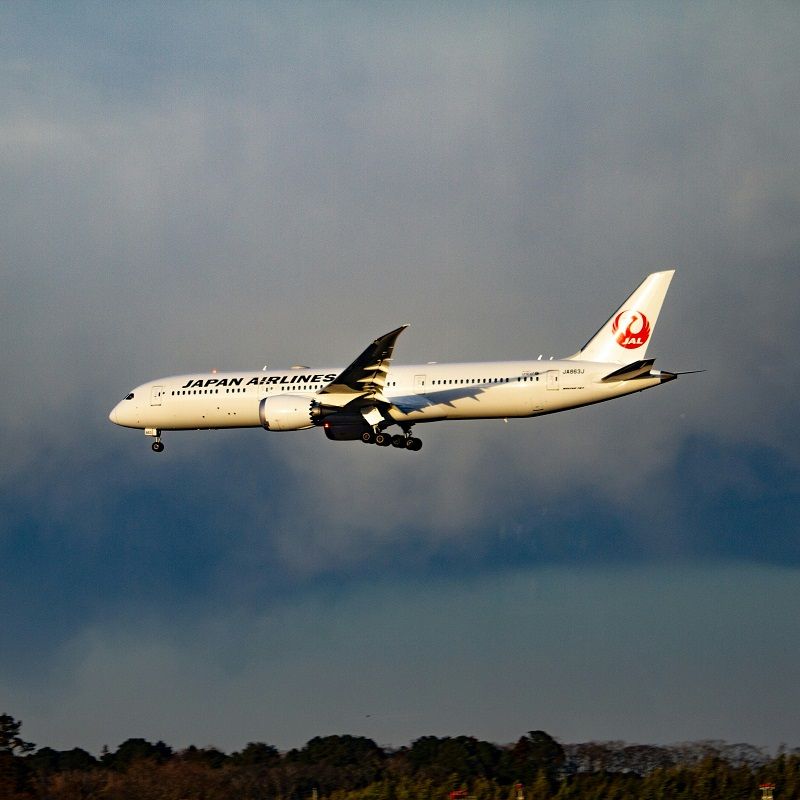
Now Fly Direct From Tokyo To Doha With Japan Airlines’ Non-stop Flight Services
By Pyusha Chatterjee
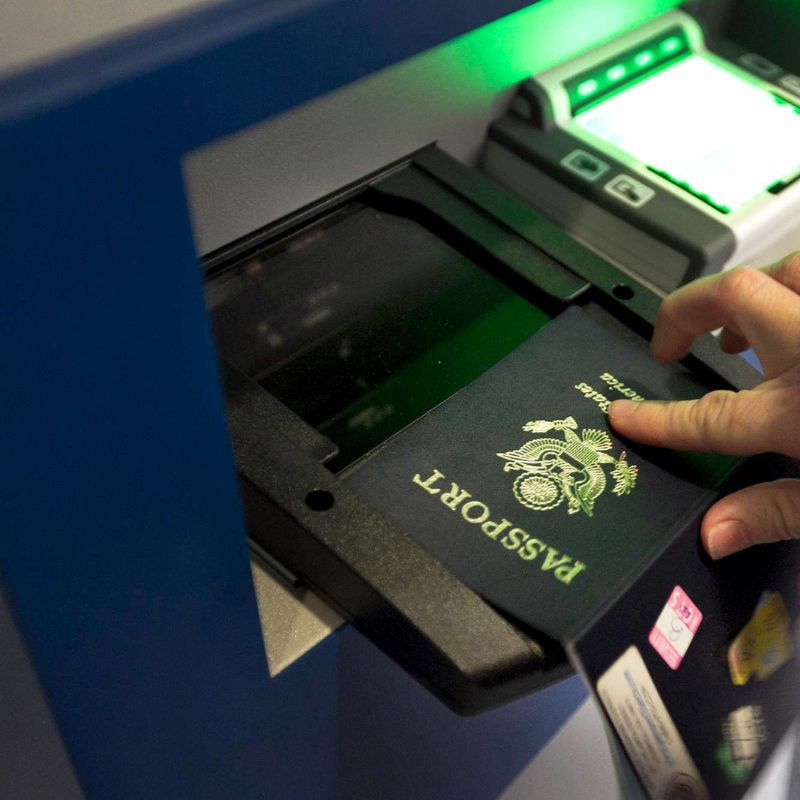
The Fee For Global Entry Is Increasing — Here's How Much It'll Cost
By Alison Fox
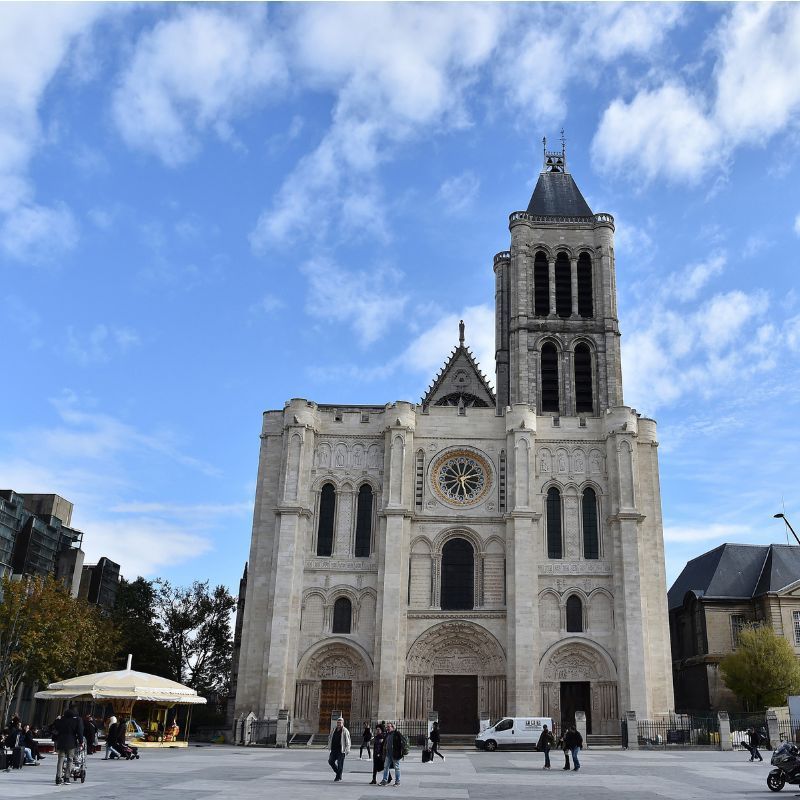
Olympics 2024: Skip Paris Crowds & Explore The Hidden Gems Of Nearby Seine-Saint-Denis
By Travel + Leisure
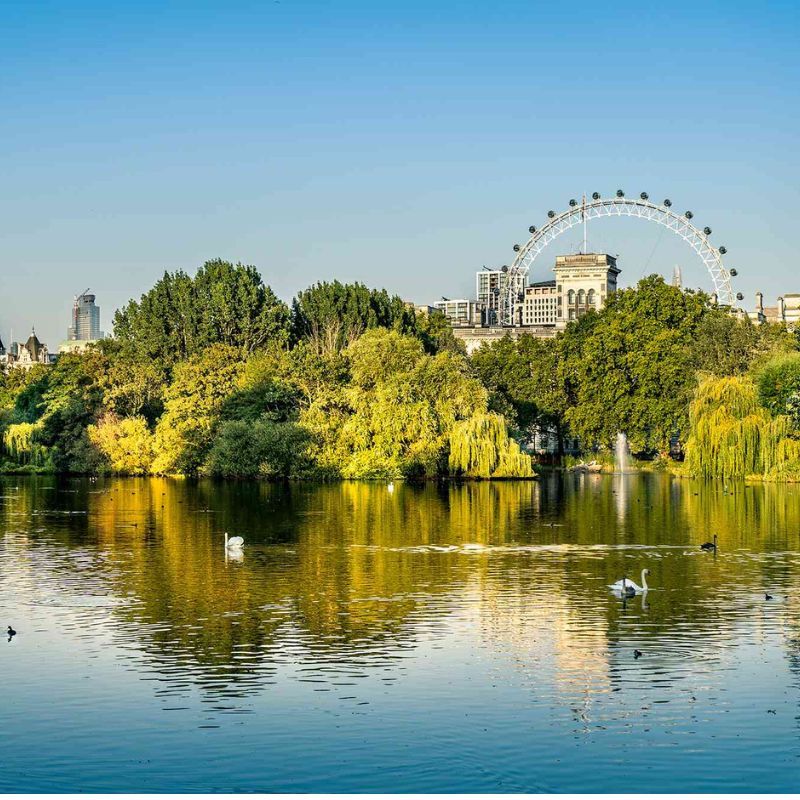
These Are The Most Popular Summer Travel Destinations, According To Google

Safari World: Oman’s Largest Zoo Opens To Travellers After Eid al-Fitr

Greece Grants Limited-Access Visa To Turkish Citizens
By Esha Dasgupta

The Total Solar Eclipse Month Is Here — Along With A Meteor Shower & Much More
By Stephanie Vermillion

Air Travel Disruptions Predicted Due To Total Solar Eclipse 2024
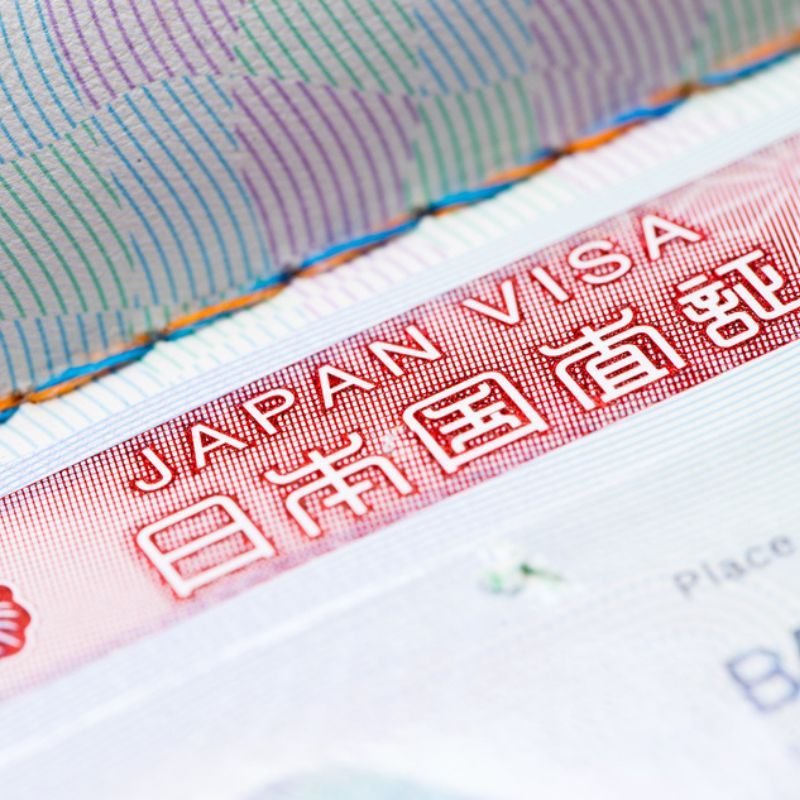
Japan Shall Welcome 820,000 Foreigners Under Its Newly Expanded Work Visa
By Priyaja Bakshi
Subscribe to our newsletter to get the latest on travel, stay & dining.
You’re all set
Thank you for your subscription.

FinanceBuzz
15 incredible 1-Week Vacations You Can Book for $1,000 or Less
Posted: October 2, 2023 | Last updated: October 3, 2023

You don’t have to break the bank to go on vacation. By picking the right destination, you can have fun and save money on travel .
Let’s explore affordable domestic and international locations to help you plan your next week-long trip. Here are our favorites that cost less than $1,000.
Compare the best travel credit cards for nearly free travel
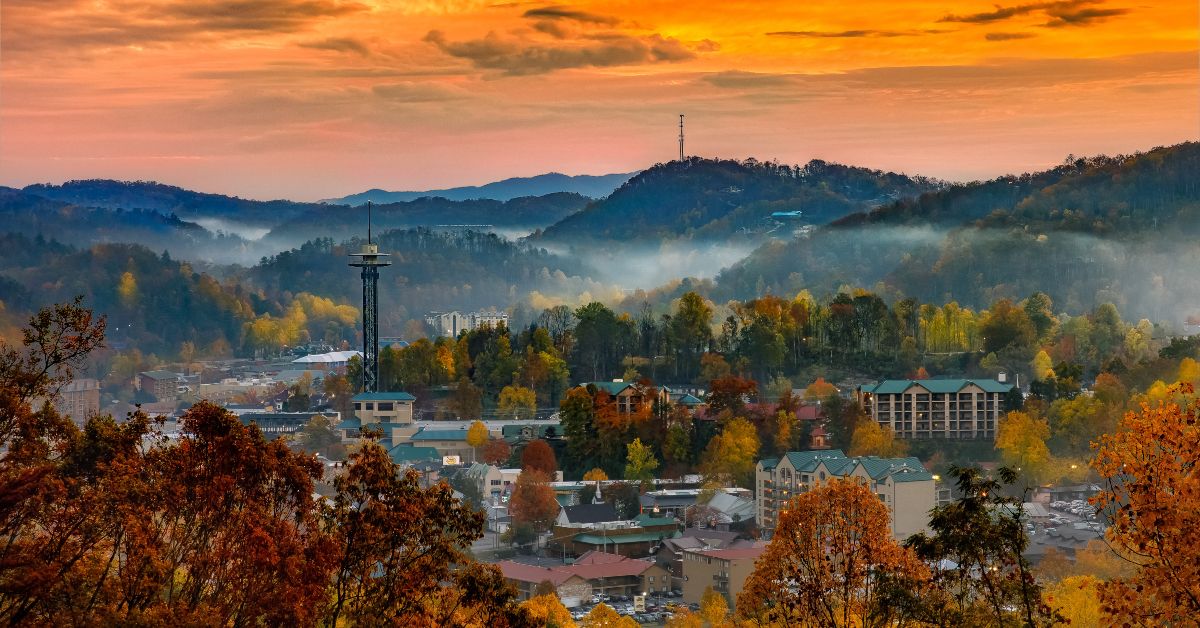
Gatlinburg, Tennessee
How does a trip to the Great Smoky Mountains sound? Gatlinburg is a popular tourist destination, but you can save on high hotel prices by booking early or planning an off-season trip during the winter or spring months.
Nearby Knoxville can have flights for as cheap as $100 roundtrip and much more affordable lodging options. Note that you can travel for nearly free by using credit card points and miles.
Get expert advice on making more money - sent straight to your inbox.
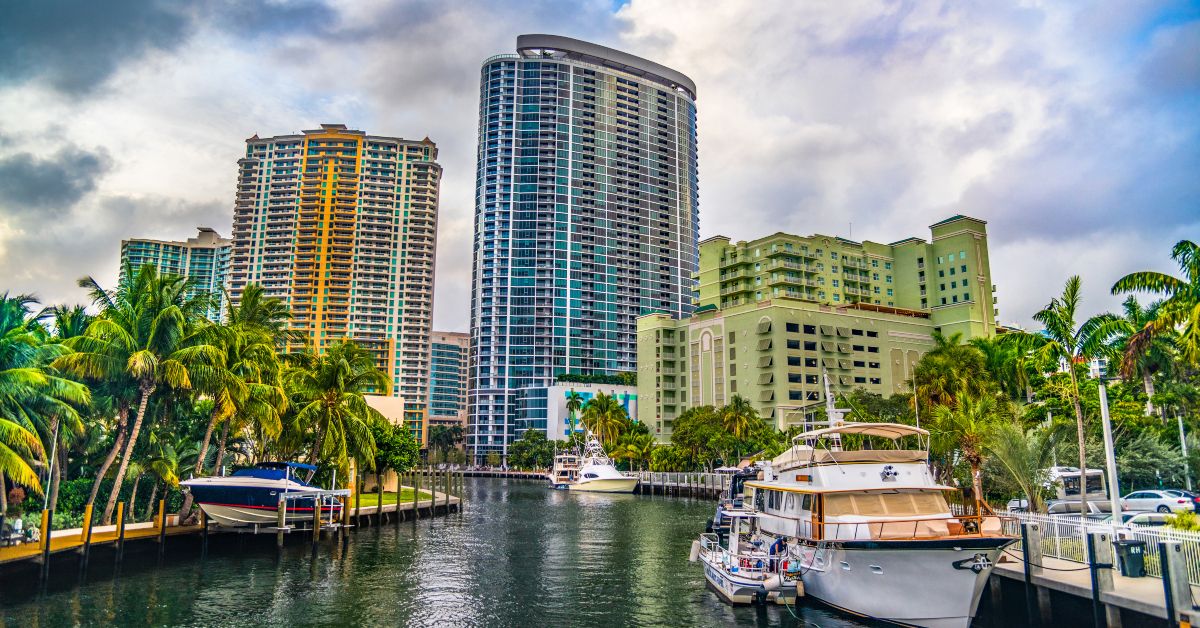
Fort Lauderdale, Florida
Fort Lauderdale-Hollywood International Airport (FLL) offers direct flights from locations all around the U.S. on multiple affordable carriers, including Southwest, Spirit, and JetBlue. It’s common to find roundtrip flights for under $200.
To continue saving money after you arrive, you can choose to use public transportation and opt for lodging that’s not right on the beach.
It’s also an option to book a cheap cruise to the Bahamas or another destination while you’re in town, which could cover your food and lodging for multiple days. Cruise companies also often have last-minute deals.
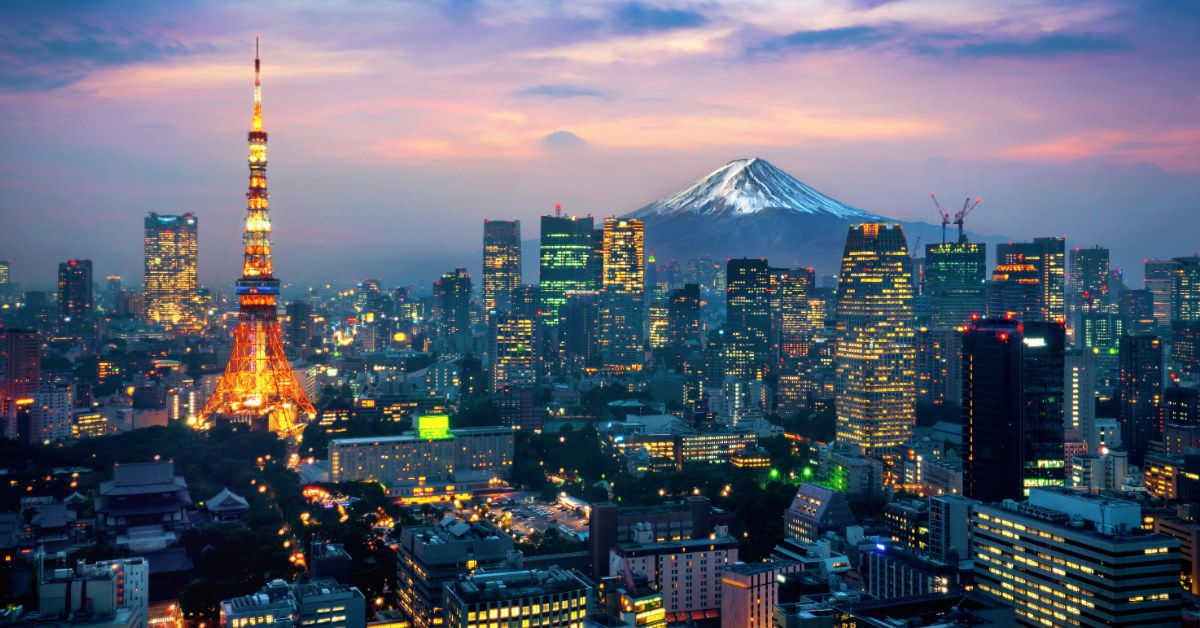
Tokyo, Japan
The “Land of the Rising Sun” might seem out of reach budget-wise, but did you know you could snag roundtrip tickets to Tokyo from the $500s or less?
It’s more than possible with Zipair, a budget airline that flies from California and Hawaii to Japan. And once you get there, it can be surprisingly cheap. We’re talking meals for $7 or less and lodging (with free breakfast) for $50 or less.
You can use the best travel credit cards to help reduce the cost of flights and hotel stays on your next trip.
6 ways to build a life where you can travel any time you want
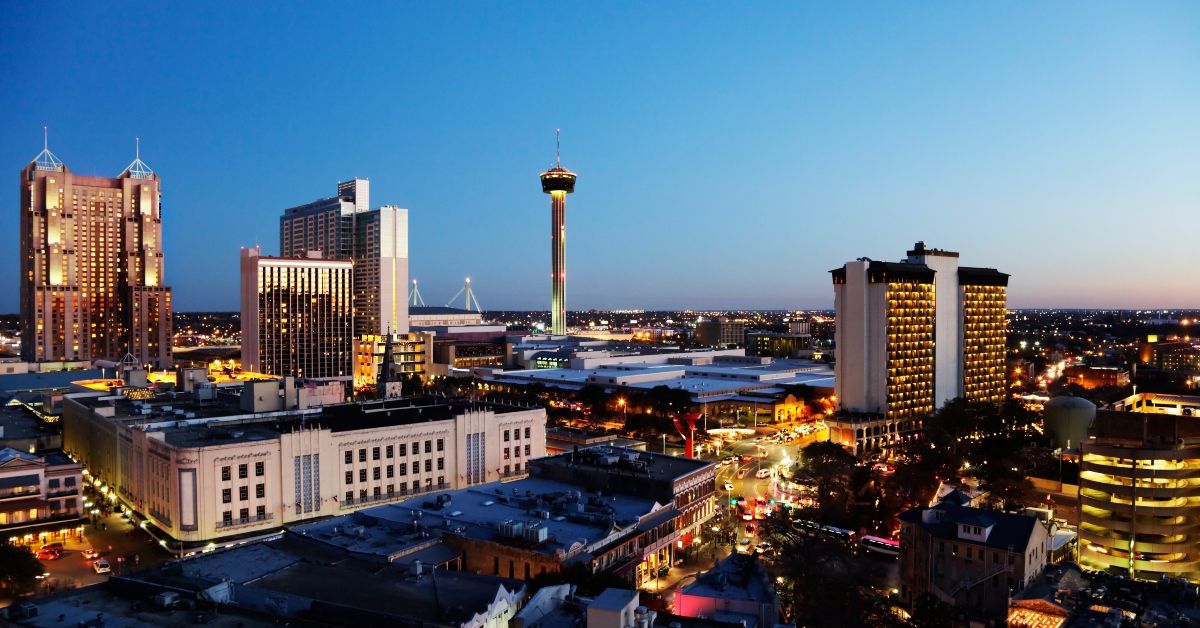
San Antonio, Texas
San Antonio is sometimes overlooked in favor of other Texas cities, but don’t sleep on this vibrant destination and its beautiful riverwalk.
You can find sub-$100 hotel prices close to downtown and San Antonio International Airport (SAT) has flights from across the U.S. and Mexico. With proper planning, you can find flights for under $200 round trip.
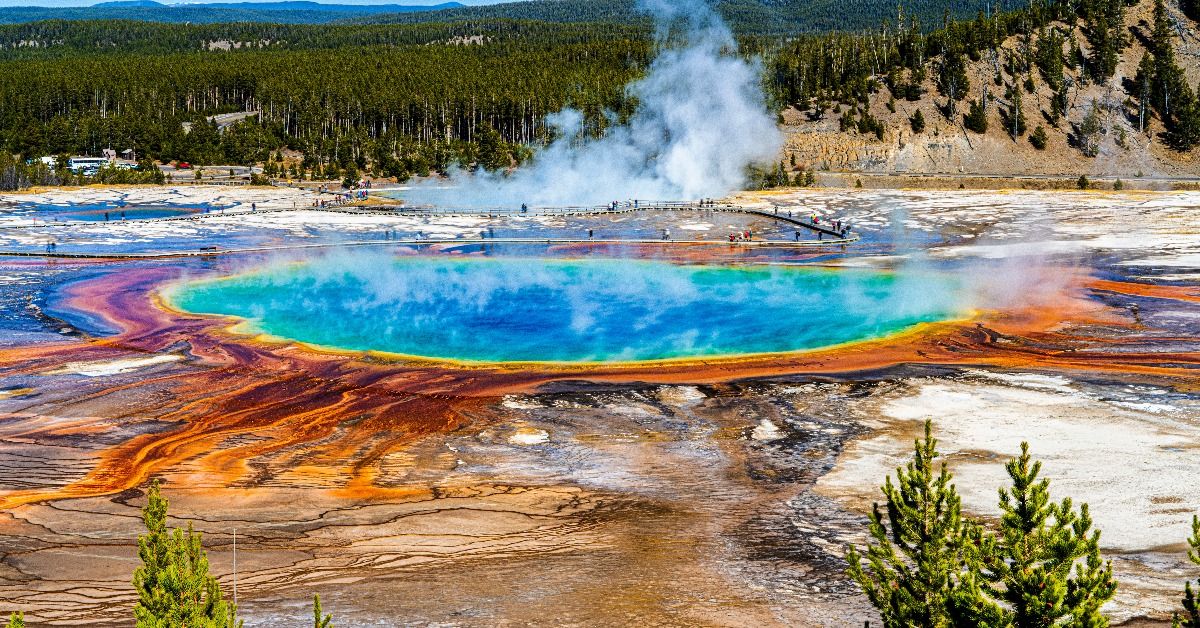
Yellowstone National Park
Are you up for an adventure? If so, Yellowstone can be a surprisingly affordable destination.
While you typically have to pay an arm and a leg for cabins inside the park, you have the option to go camping in nearby KOA campgrounds. Depending on the time of year, you might pay in the $60s per night.
Actually getting to Yellowstone is another story, but there are some potential flight options into Bozeman and Idaho Falls.
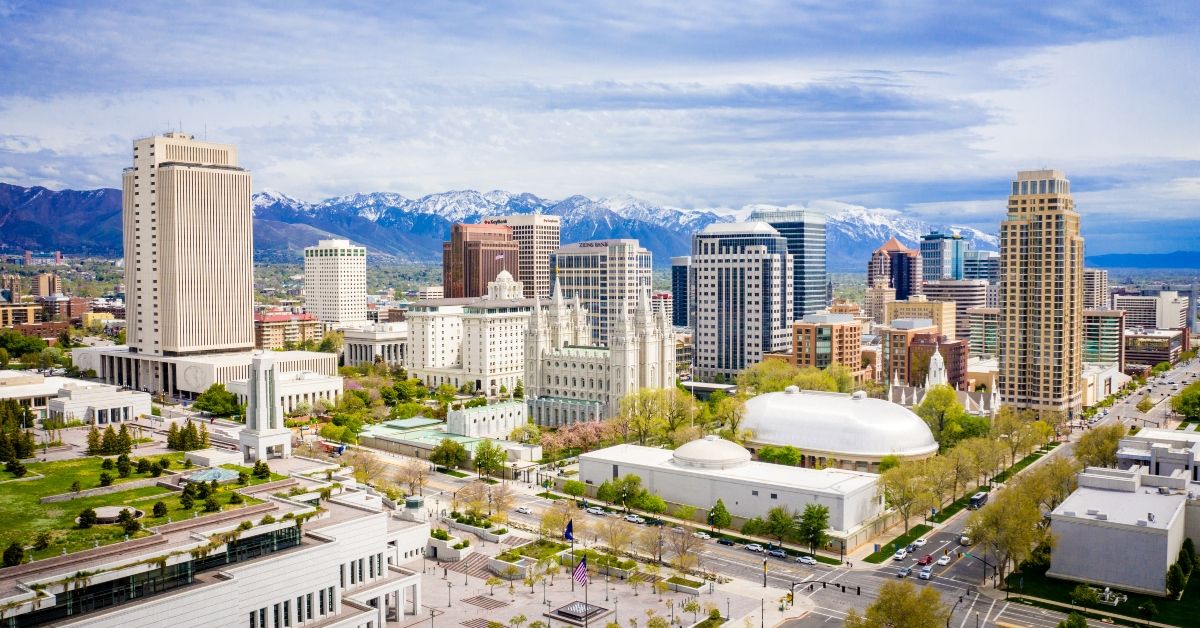
Salt Lake City, Utah
Salt Lake City is an excellent base camp for exploring the outdoor wonders of Utah. You can get to Park City in less than an hour or head south to wander through multiple national parks.
Salt Lake City International Airport (SLC) is a Delta hub but also services Southwest and JetBlue. It’s not uncommon to find roundtrip flights from the East Coast for around $200, while West Coast destinations can have even cheaper fares.
Even better, downtown Salt Lake City has a free fare zone where you don’t have to pay to ride certain buses and TRAX trains.
13 legit ways to make extra cash
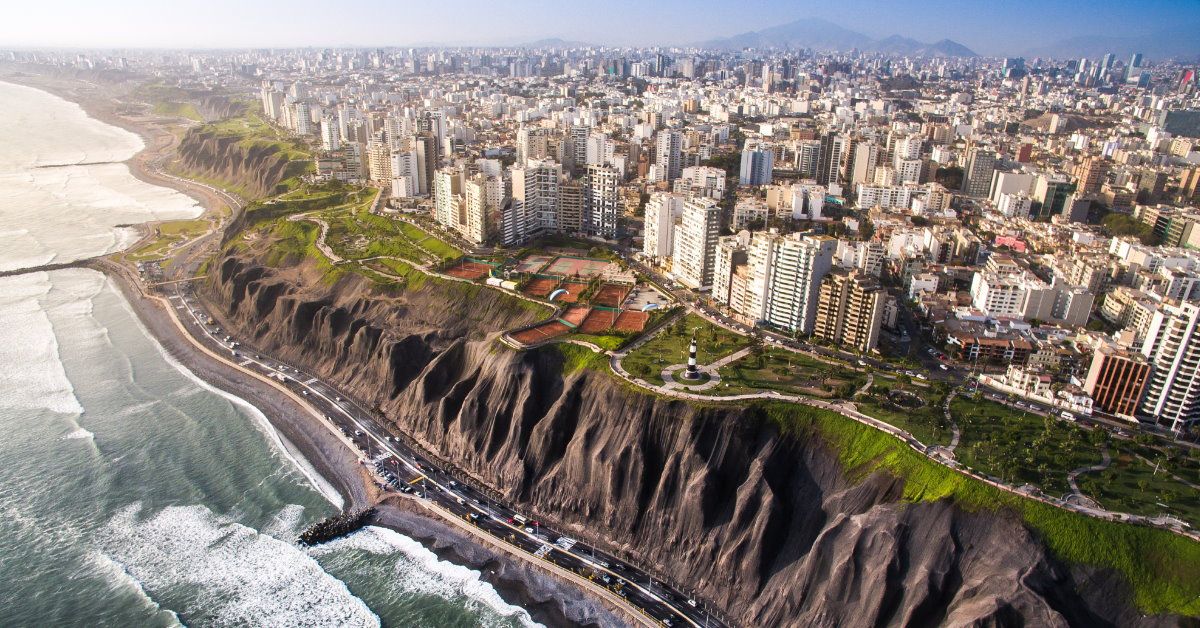
Peru has world-renowned food, including the best restaurant in the world, and loads of ancient historical sites.
Depending on your budget, you might not be able to fit Cusco and Machu Picchu into your trip, but you can still take a culinary tour of Lima.
Both Spirit and JetBlue fly to Lima out of Fort Lauderdale, providing affordable options for getting there. Once you’re there, both lodging and food are generally much cheaper than in the U.S., thanks to a favorable exchange rate.
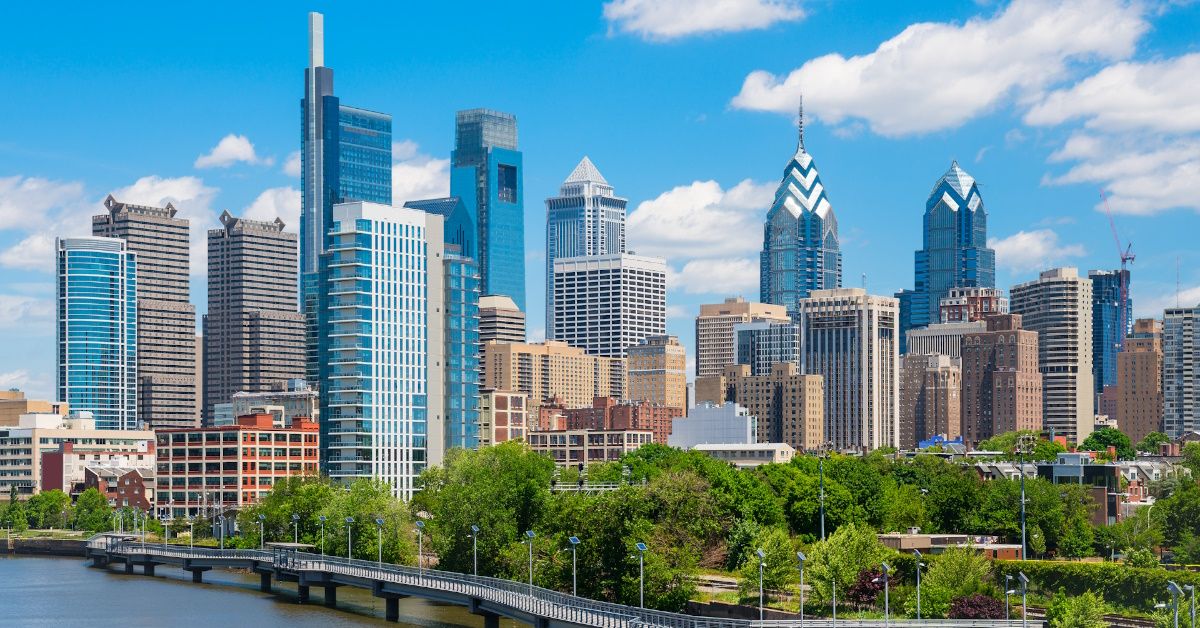
Philadelphia, Pennsylvania
Compared to nearby cities like New York and Washington, D.C., Philadelphia might be a bargain.
There are easy ways to get downtown without needing a car and you can find sub-$100 prices on lodging per night.
Equally important, it’s not hard to fly into Philly from around the U.S. You can find roundtrip flights for around $200 on American, or less if you’re flying Spirit or Frontier.

Kansas City, Missouri
Kansas City has multiple professional sports teams and plenty of restaurant options for foodies. It also doesn’t hurt that it can be quite cheap to visit.
Paying less than $100 per hotel night isn’t hard to do, which leaves you extra money to treat yourself to some delicious barbecued meats.
It’s also nice that Kansas City International Airport (MCI) has connections around the country on multiple airlines, including Southwest and Allegiant. A direct flight from New York could cost as little as $138 round trip.
9 nearly secret things to do if you fly Southwest
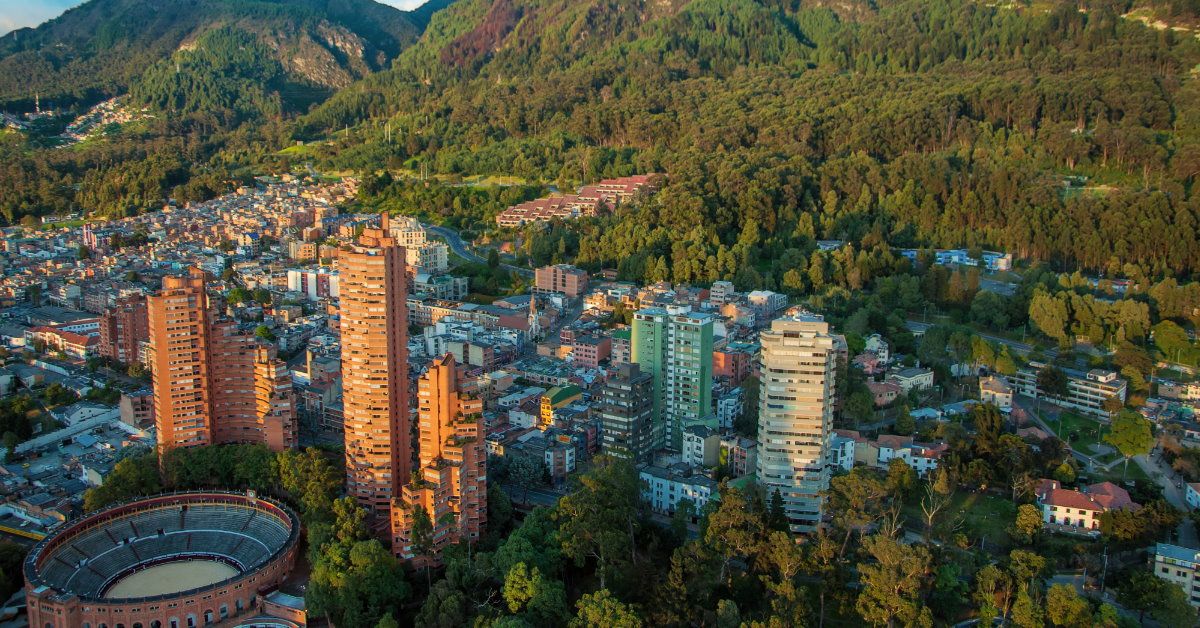
Bogota, Colombia
Meals for around $4 or less. Lodging for as low as $20 or $30 per night. And roundtrip flights from the $300s (or less from Florida).
Bogota is beyond affordable and definitely worth a visit. Take in all the sights and sounds, including delicious street food and colonial-era architecture.
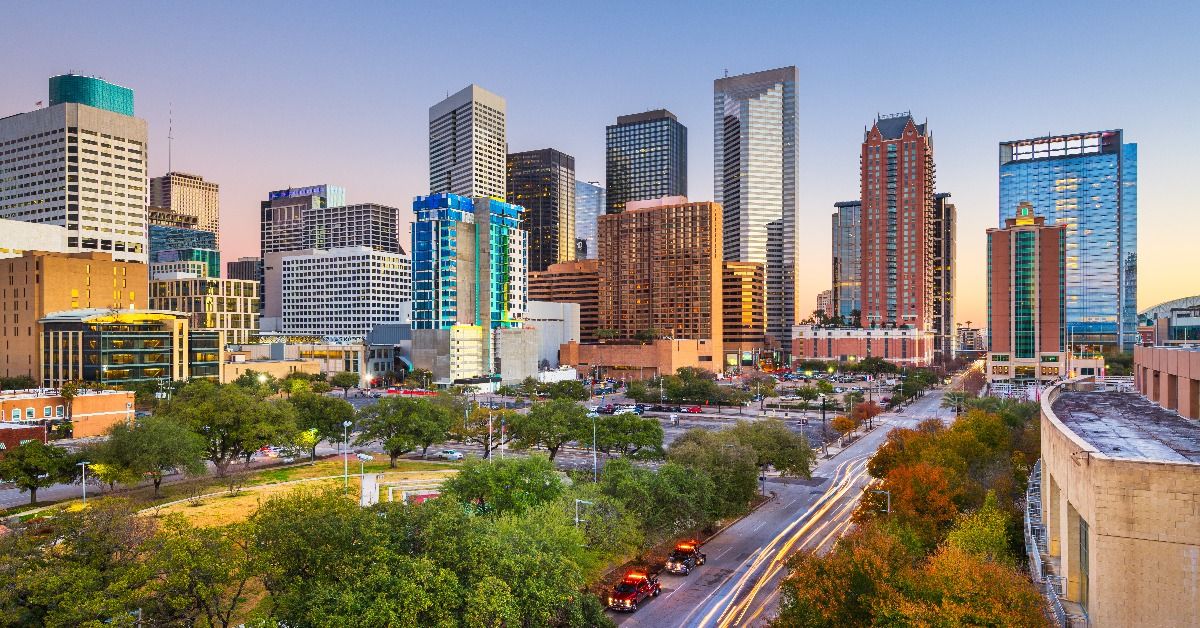
Houston, Texas
George Bush Intercontinental Airport (IAH) offers flights all over the U.S. and worldwide. This makes it easy to find cheap roundtrip flights, including in the $200s or less from as far away as Seattle.
Once you arrive, you can take the 102 Bush IAH Express bus downtown for less than $2. That saves you some money to use on lodging, which can easily be under $100 per night.
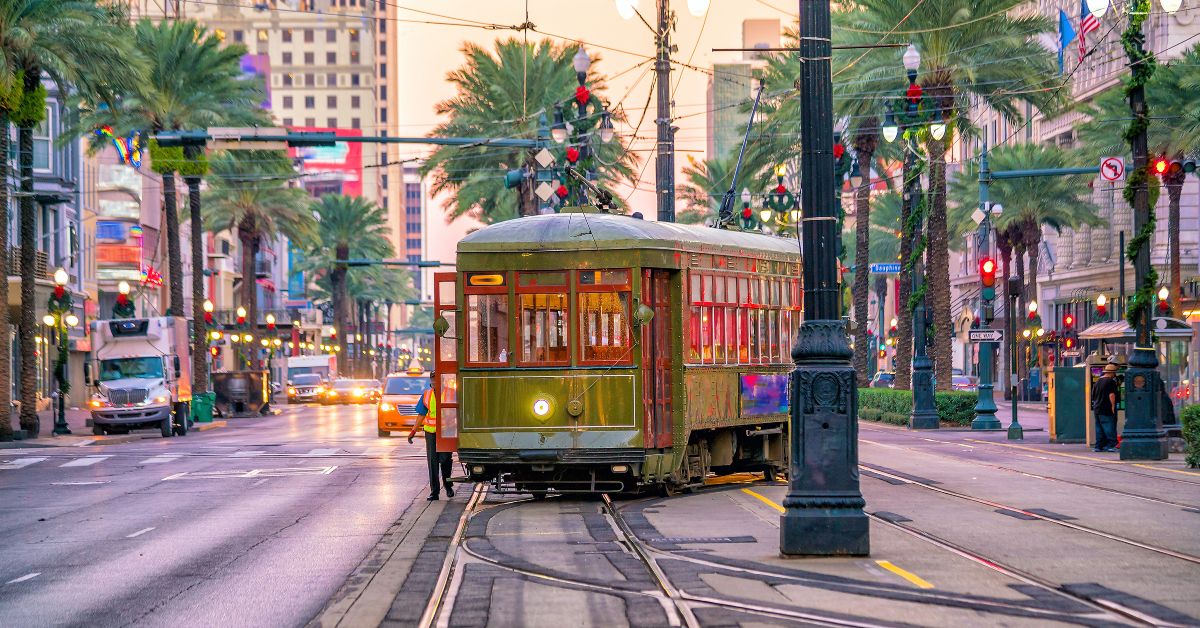
New Orleans, Louisiana
New Orleans is a happening place, but that doesn’t mean it has to be expensive. You can find lodging for under $100 per night in downtown locations. Flights can also be affordable, typically costing $200 or less if you find a good deal.
Where you might blow your budget is on all the tasty food New Orleans has to offer, or the fun attractions, like swamp tours through gator territory.
5 signs you're doing better financially than the average American
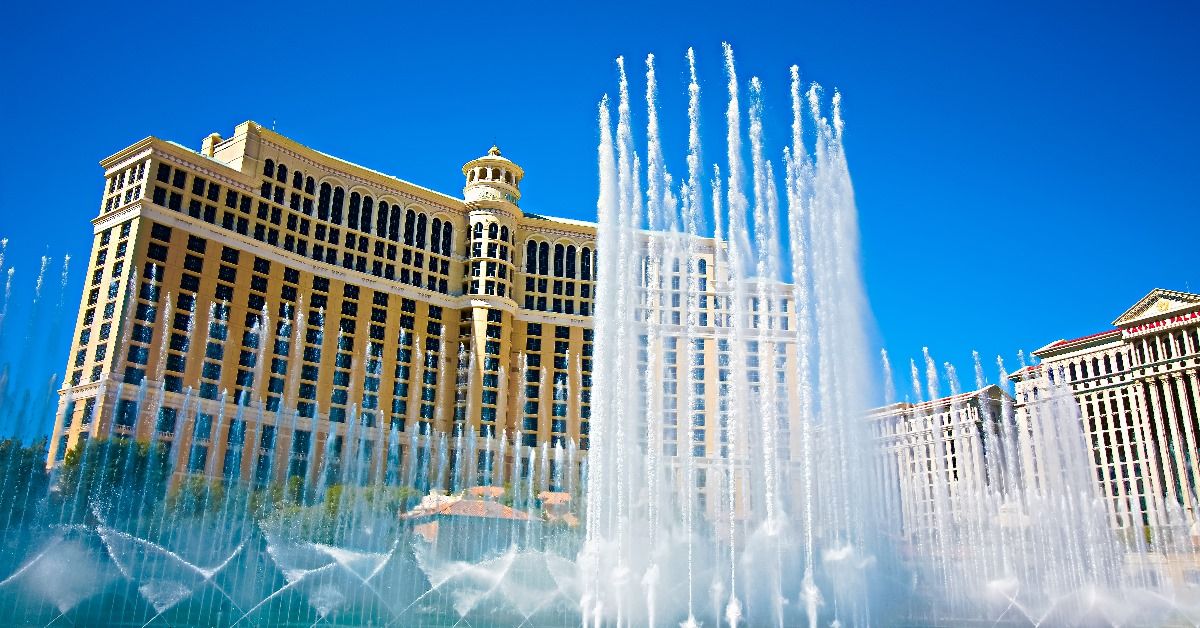
Las Vegas, Nevada
Vegas can be a huge money pit for multiple reasons, but you can save money if you do your research.
For example, staying on the Strip might seem expensive, but you can find cash prices for around $20 to $30 a night at multiple casino hotels. In some cases, even $10 or less per night is a thing.
The kicker is that you’re often on the hook for resort fees. But you can get those waived in certain situations if you have elite status with a loyalty program. For example, Diamond status with Caesars Rewards.
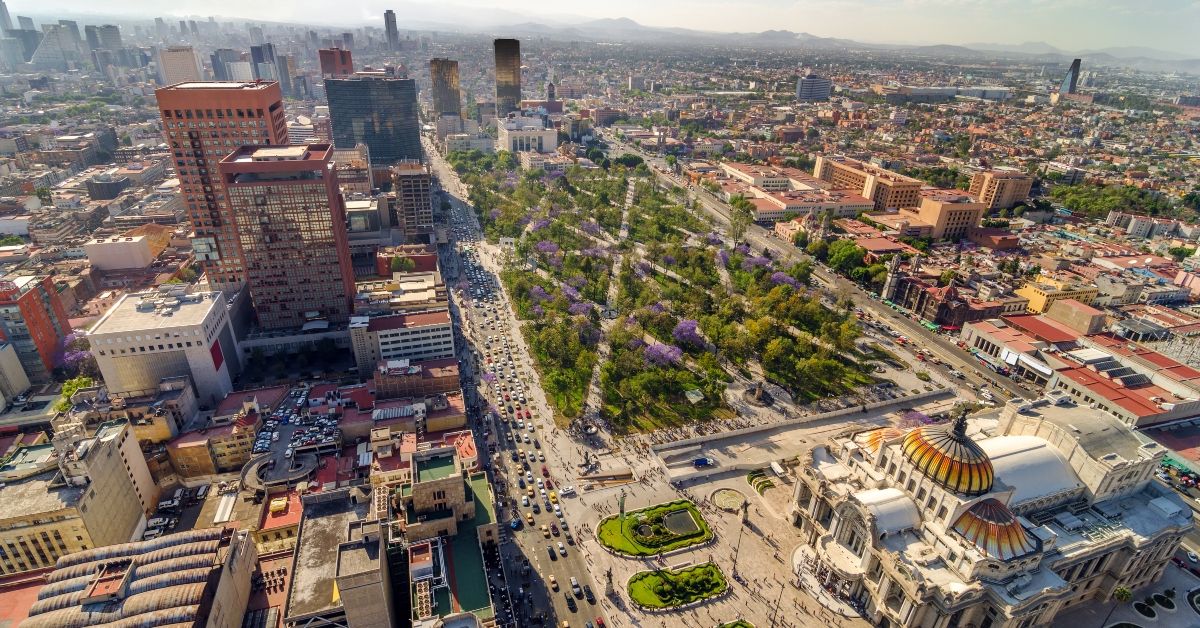
Mexico City, Mexico
Mexico is a prime location for getting the best bang for your buck. Of course, you can visit Cancun, Cabo, or Puerto Vallarta, but for a diverse urban experience, check out Mexico City.
Lodging can easily run under $100 per night and even under $50 per night. And if you’re adventurous, you won’t have any problems finding cheap eats.
We’re talking meals for easily under $10 per person, but probably even lower if you find less touristy spots.
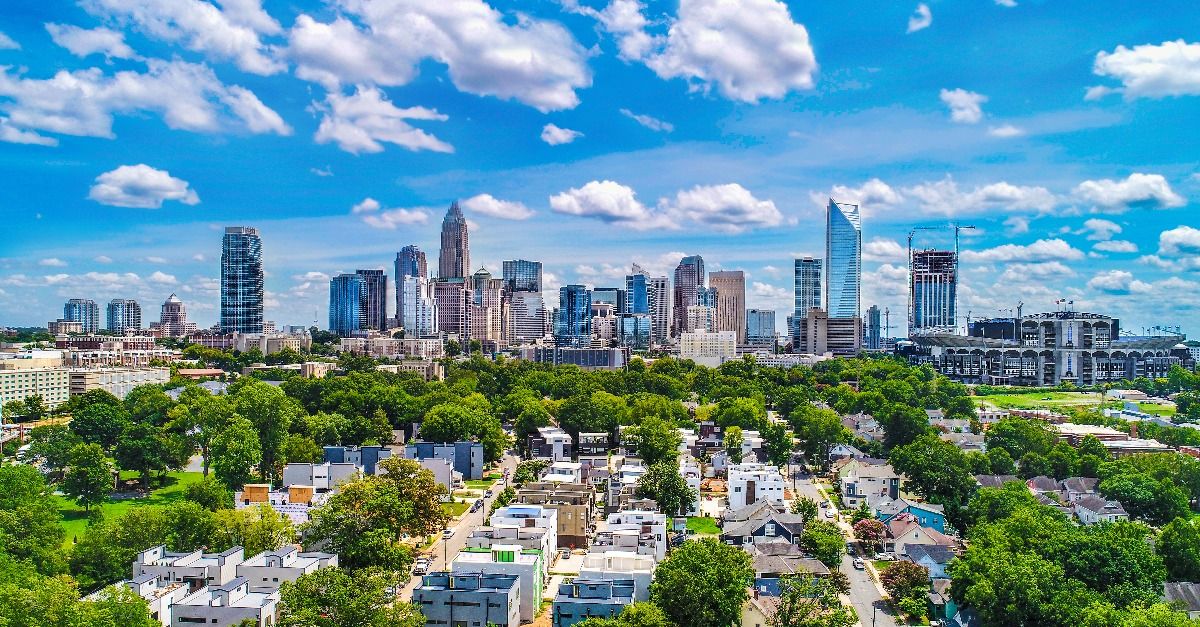
Charlotte, North Carolina
Charlotte has quickly become a bustling city filled with big companies and professional sports teams. And it’s the perfect place to visit if you want to lower your financial stress and open up your budget.
Sub-$100 prices per night are fairly common for lodging and Charlotte Douglas International Airport (CLT) is more than big enough to offer competitive prices.
For example, roundtrip flights in the $100s can easily be found whether you’re flying from the East or West Coast.

Bottom line
Vacations are fun, but they can get expensive. With proper planning and research, however, you can find a way to enjoy a new area for a lot less than you think by making smart money moves !
It’s truly possible to take an enjoyable trip without breaking the bank if you choose the right destination you can enjoy without worrying about overspending.
You might even be able to leave the country on your budget!
More from FinanceBuzz:
- 6 genius hacks Costco shoppers should know
- 9 things you must do before the next recession.
- Can you retire early? Take this quiz and find out.
- 9 simple ways to make up to an extra $200/day
More for You
South Carolina's Dawn Staley draws strong reactions over remarks about trans participation in women's sports
Ryan Gosling, Matt Damon & More Crash Kristen Wiig's ‘SNL' Monologue To Welcome Her Into 5-Timers Club
Gavin Newsom's Restaurant Offers $16 Hourly Wage To Employee
The 10 movies everyone's watching on Amazon Prime Video this week
8 Places You Should Never Charge Your Phone
This new 'blended-wing' plane looks like a military stealth bomber and just got the green light to fly after decades of development
Gabbie Marshall: Received death threats after call vs. UConn
Over 150 Jewish creatives sign open letter defending Jonathan Glazer for Oscars speech on Gaza
Lauren Boebert Gets Good News Out of Colorado
Christian Bale Transforms Into Frankenstein's Monster in First Look at The Bride
The least popular dog breeds in America, based on American Kennel Club data
Restaurants We Didn't Realize Were Owned By The Cheesecake Factory
Greta Thunberg Dragged Away From Climate Protest in The Hague
USA vs. China aircraft carriers
14 Childhood Toys That Are Now Worth a Fortune
Solar Eclipse: Experts Had The Map Of Totality Wrong, See Updates
40 Photos of the 'Lord of the Rings' Cast, Then and Now
West End theatre company blasts racial abuse directed at Black actor starring in Romeo and Juliet
18 Smartest Dog Breeds, Ranked for Intelligence
The Toyota Crossover That Outsells Its Entire Hybrid Lineup
- Tours & Experiences
- Tailor-made Trips
- Bahasa Indonesia
We are happy to see you again!
Continue with
Or use email.
No Account? Create one
Create account
Already have an account? Sign in
Quickly Sign up with
I agree to Japan Travel's Terms of Service and Privacy Policy . Terms of--> and acknowledge that Japan Travel's Privacy--> applies to me.-->
Email reset password link
Please check your inbox and click the link we will send to you.
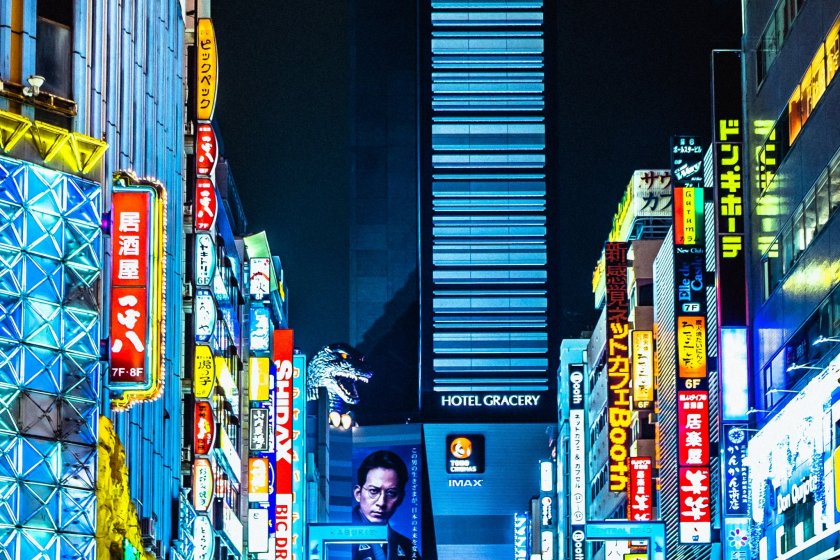
Tokyo Named As a Budget-Friendly Travel Spot for 2024
The results of this U.K.-based report might surprise you!

Japan is often viewed as a destination with a reputation for being expensive. From luxurious hotels and ryokan (traditional Japanese inns) to its world-renowned dining scene, this perception as a pricey travel spot has been ingrained in the minds of many travelers. However, there are a wealth of opportunities for budget-conscious explorers, and this is especially so at the moment with the weak yen offering favorable exchange rates and allowing travelers to stretch their money further.
This was highlighted in a recent publication from the U.K.'s Post Office Holiday Money Report for 2024 , which is now in its 18th year. The report saw Tokyo take out fourth spot as one of the year's most economical travel spots, beaten out only by Hoi An in Vietnam, Cape Town in South Africa, and Mombasa in Kenya. It was noted that an average of £59.05 a day (approximately $74.43 USD at the time of writing) is needed for essential tourist purchases, with specific costs mentioned like a glass of wine averaging only $4.56 and a bottle of water averaging 77 cents.
Outside of what the report covers, it's worth noting that there are a plethora of free or cheap activities to enjoy in the Tokyo metropolitan area. From temples and shrines to parks and gardens, and even free observation decks like the Tokyo Metropolitan Government Building , there are plenty of ways to keep costs down.
For the savvy-saver travelers out there, be sure to explore the following budget-friendly articles on our site:
- Free Options and Facilities (a general guide to some things in Japan you can do on the cheap)
- Top 4 Free Things to See in Tokyo
- MyMizu Free Water Refill App (this is a great resource for both your overall travel expenses and the environment!)
- Share on Facebook
- Share on Twitter
- Copy link to share
Japan Travel Staff

Information
postoffice.co.uk
Top Articles
- Recommended

Art Meets History at Sannomaru Shozokan

Extraordinary Experiences in the Great Nature of Izu-Oshima, the Closest Island From Central Tokyo

Currency Conversion & Exchange Rates

Seishun 18 Kippu: Japan's Cheap Nationwide Train Ticket

2-Day Hachijojima Retreat: Recharge Your Mind and Body

Nobeoka: A Treasure Trove of Delights

Asakusa Shutter Art

Universal Studios Japan to Open Donkey Kong Country Area in Spring 2024

Kodaira, Honjo City, a Place of Faith and Rich in Nature

Guide to Bringing Medicines Into Japan

Your Name: Real-Life Locations in Tokyo

Hachiko Statue in Shibuya

Iwatayama Monkey Park

Shibuya Crossing

Daikoku Car Meet

Guide to PASMO Cards

NAKED Sakura Festival 2024

Guide to Suica Cards

Japanese Urban Legends
More from this category, guide to bringing medicines into...
By Japan Travel
Your Name: Real-Life Locations..
By Jianne Soriano
By Ignatius Koh
By Victoria Vlisides
Leave a comment
Let us know how we can help.
Help us improve JapanTravel.com
We welcome any suggestions regarding this content. Your feedback is confidential and will be used to help improve this page.
Suggest an edit
https://en.japantravel.com/news/tokyo-named-as-a-budget-friendly-travel-spot-for-2024/70747
Thank you for your support!
Your feedback has been sent.
By providing an email address. I agree to the Terms of Use and acknowledge that I have read the Privacy Policy .
What tops Pinoy travel goals these days? Most likely, Japan
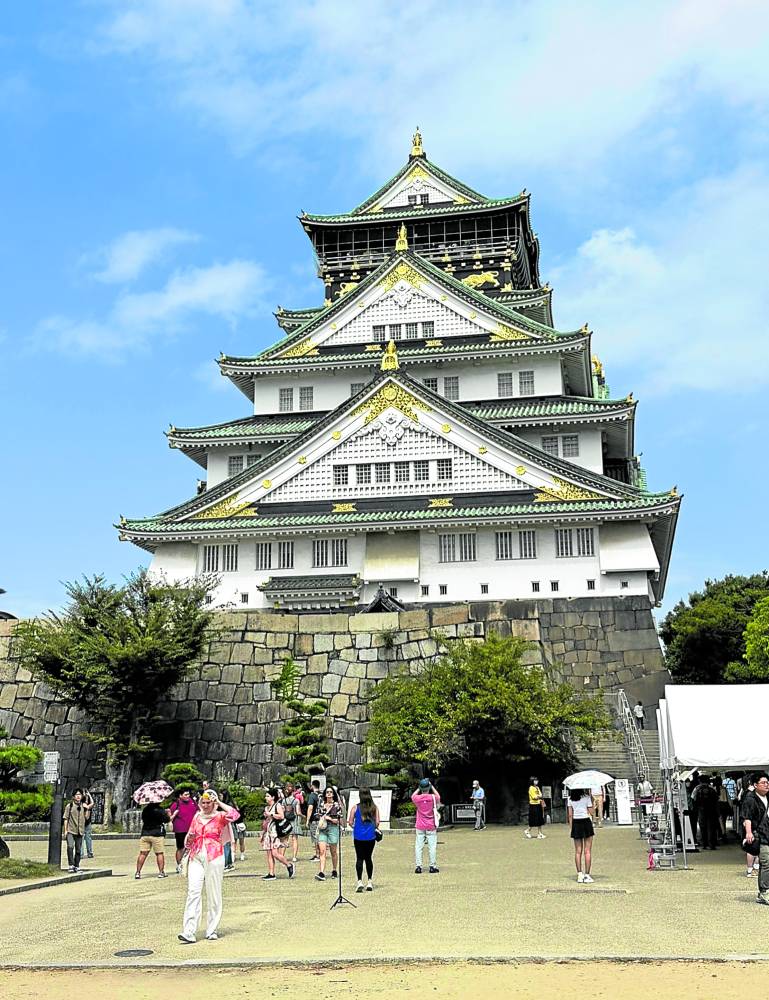
FORTRESS Built in the 1580s, Osaka Castle in Kansai region is an important Japanese historical landmark. —INQUIRER FILE PHOTO
Japan has its allure that tourists cannot seem to resist. After all, it is a travel destination filled with bucket list items: gazing at the blooming sakura, walking across the busy Shibuya crossing and marveling at the majestic Mt. Fuji, to name a few.
So it is no wonder this popular Asian tourist spot always welcomes millions of visitors yearly, including Filipinos.
In fact, Japan is the top choice among Filipinos for leisure travel this year as it was in 2023, according to Green Shoots Radar study by global payment services provider Visa. This January, tourism data showed that about 56,800 Filipinos have gone to Japan, or nearly double the number last year.
The Land of the Rising Sun also pulled in more tourists with the mounting of global pop icon Taylor Swift’s “Eras Tour” concert. A report by research platform Economic Impact.NET estimates that this sold-out event generated $228 million for the country.
READ: Taylor-mania hits Tokyo as Swift resumes tour before Super Bowl
To further boost tourism between the countries, the Philippines’ Department of Tourism and Japan’s Ministry of Land, Infrastructure, Transport and Tourism inked a landmark agreement in November last year. Their goal is to increase tourist arrivals for both countries by encouraging tourists to visit attractions, including those in the rural areas. This move is also seen as an opportunity for tourists to be exposed to local customs and culture.
Planning ahead
But Japan is just tip of the iceberg. The Visa study reveals that Filipinos are also keen on traveling to other popular destinations in Asia.
Majority or 65 percent of surveyed Filipinos say they are planning to go overseas for leisure in the next 12 months.
READ: PH named as top Asean country for tourist arrivals in Japan in July
Apart from Japan, Filipinos also want to go to South Korea and Singapore for vacation. For business travel, they will likely go to Japan, Canada and South Korea this year.
This finding is in line with the study of online travel platform Klook, which reveals that 76 percent of surveyed Filipinos intend to travel abroad this year. Their preferred destinations include Japan, Hong Kong, Singapore and Thailand.
The Klook study also finds that travelers prioritize sightseeing, shopping and outdoor adventures when visiting these places.
The online travel platform shares that Filipinos’ top choice of activities include going to Hong Kong Disneyland, Tokyo Disneyland, Universal Studios Japan and Universal Studios Singapore.
READ: Filipinos raring to travel around PH, abroad, says Klook
The travelers book their trips usually to celebrate birthdays, anniversaries and other family events while others are encouraged by airline promotions like seat sales.
Majority or 73 percent of the respondents also go on trips to take advantage of the long weekends during public holidays. This is supported by the findings of the study that 63 percent of the respondents who plan to travel already booked tickets, accommodations and activities ahead of the anticipated long breaks.
Travel budget
According to the Klook study, Filipino travelers usually allot P15,000 to P50,000 for their foreign trips.
The Visa study shares that the respondents who booked their accommodations via online travel agencies mostly used credit cards and mobile or e-wallet options for payment.
When traveling, about 89 percent swipe their credit and debit cards. This is because card payments are widely accepted by many merchants across the world and can also be used for online payments, Visa explains.
“As cross-border travel gains momentum in the Philippines and the region, we have a significant opportunity to maintain visibility throughout travelers’ journeys,” Visa Philippines country manager Jeff Navarro says.
Subscribe to our daily newsletter
“This involves being present during destination searches and bookings, using Visa cards on travel apps for smoother transactions, and engaging consumers with authentic travel and shopping content to create a secure and seamless digital payments experience for everyone, everywhere,” he adds.
Curated business news
Disclaimer: Comments do not represent the views of INQUIRER.net. We reserve the right to exclude comments which are inconsistent with our editorial standards. FULL DISCLAIMER
© copyright 1997-2024 inquirer.net | all rights reserved.
We use cookies to ensure you get the best experience on our website. By continuing, you are agreeing to our use of cookies. To find out more, please click this link.
- Japan Tourism
- Japan Accommodation
- Japan Bed and Breakfast
- Japan Holiday Rentals
- Japan Flights
- Japan Restaurants
- Japan Attractions
- Japan Travel Forum
- Japan Photos
- All Japan Hotels
- Japan Hotel Deals
- Last Minute Hotels in Japan
- Things to Do
- Restaurants
- Holiday Rentals
- Travel Stories
- Rental Cars
- Add a Place
- Travel Forum
- Travellers' Choice
- Help Centre
Website for buses and normal trains - Japan Forum
- Asia
- Japan
Website for buses and normal trains
- Australia Forums
- United States Forums
- Europe Forums
- Canada Forums
- Asia Forums
- Central America Forums
- Africa Forums
- Caribbean Forums
- Mexico Forums
- South Pacific Forums
- South America Forums
- Middle East Forums
- Honeymoons and Romance
- Business Travel
- Train Travel
- Traveling With Disabilities
- Tripadvisor Support
- Solo Travel
- Bargain Travel
- Timeshares / Holiday Rentals
- Asia forums
- Japan forum

Hi everyone,
Could you please share some websites where i could book buses and "normal" train tickets from?
We are on a low budget and won't use bullet trains and don't mind wasting couple of hours extra per journey.
Thank you in advance!
5 replies to this topic

https://japantravel.navitime.com/en/area/jp/route/

The cheapest trains are locals, no reservations.
Thank you both! What about buses, is there any official website for them or highway buses? If i google it many results appear but don't want to be scammed. We will use the Alpico one from Matsumoto to takayama, the only one i am sure of. Cheers
check out https://expatsguide.jp/travel-transportation/intercity-trains-and-buses/by-highway-bus/
https://japanbusonline.com/en
- Question - train from Haneda Airport at 6am 20:36
- Nara day trip - tour booked at 530 pm in Osaka 20:28
- 8 days in Tokyo--day trip recommendations please! 20:16
- Alternative way to purchase Shinkansen tickets... 20:10
- Planning to spend 4-5 days in Kyoto 20:07
- Website for buses and normal trains 20:05
- Transiting through Haneda Terminal 2 to Terminal 3 19:07
- Would like to confirm that this travel agency is legit 19:02
- Vehicle Booking and Transportation from Chitose Airport 18:04
- Hertz rental 17:45
- Day trip- Osaka-Hiroshima (Hijemi Castle) 17:21
- Clarification needed for luggage storage nozomi Shinkansen 17:07
- Transfers Narita airport to Tokyo Disneyland H 15:56
- Transfer time in Shin-Osaka station 15:46
- 'semi double' rooms 5 replies
- What part and where to stay in Kyoto 8 replies
- Best Skiing in Japan? And When? 3 replies
- Best places to visit in Japan 7 replies
- Pocket WiFi Rental Experience? 315 replies
- ski gear - cheaper on sale in australia or wait til japan? 6 replies
- Best place to go skiing in Japan? 4 replies
- Kyoto - Bike Hire 5 replies
- Japan Rail Pass Cheapest Place to Buy 3 replies
- Best/cheapest time of year to visit?? 3 replies
- 2024 public holiday chart in East Asian countries
- Where can I find more onsen in Japan?
- Driving Information
- Catholic mass in English and other languages
- How can we access tourist attraction from cruise port?
- Pocket WiFi Rental Experience?
- Halal Information
- Tokyo trip report here

- Transylvania
- Central Europe
- Central & Eastern Europe
- Christmas Markets
- Sail Turkey
- Croatia Sailing
- Frequently Asked Questions
- Fair Travel Protocols
- Subscribe to Newsletter

- Booking Terms & Conditions
- Responsible Travel
- Privacy Policy

- My Bookings
- Log in/Sign Up
Where to See Cherry Blossoms in Japan – Viewing Guide
Every year in Japan, ancient castles, serene lakes, and historic towns are transformed into a canvas with the delicate hues of cherry blossoms. Make sure you are up-to-date with all the essentials before your cherry blossom viewing trip to Japan!
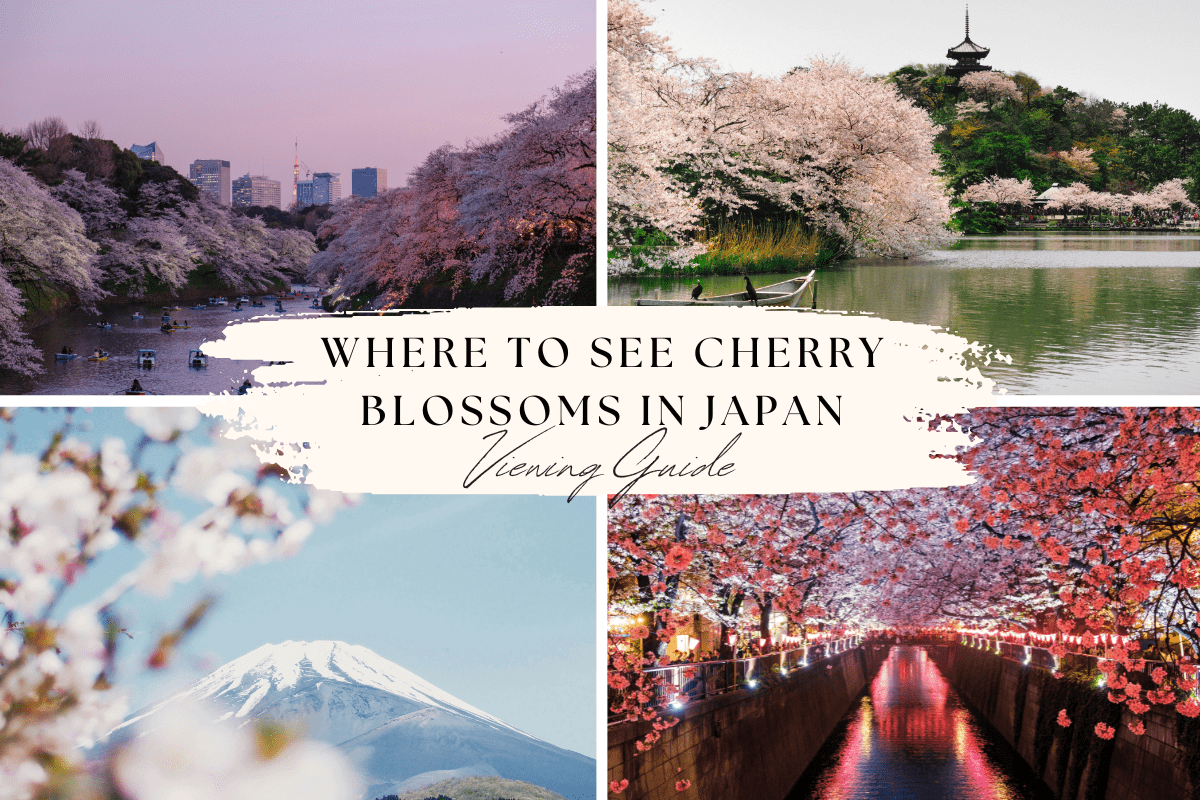
Japan transforms into a picturesque canvas of pink and white hues each spring, making it a dream destination for travelers seeking the serene beauty of cherry blossoms, or sakura. In this comprehensive guide, we will unveil the best places to see cherry blossoms in Japan, from the iconic slopes of Mount Fuji adorned with floral splendor to the tranquil beauty of Hirosaki Park’s ancient trees.
Are you wondering “Where to see cherry blossoms in Japan?”? Here is all you need to know.
Cherry Blossom Season 2024
As the winter chill gives way to the gentle warmth of spring, Japan prepares for its most awaited spectacle – the cherry blossom season of 2024. This enchanting period, typically stretching from late March to early May, sees the country awash with the soft, mesmerizing hues of sakura.
Interesting Fact about Cherry Blossoms in Japan:
The fleeting nature of cherry blossoms, blooming for a brief moment before drifting away, mirrors the Japanese philosophy of mono no aware – the poignant awareness of the impermanence of things.
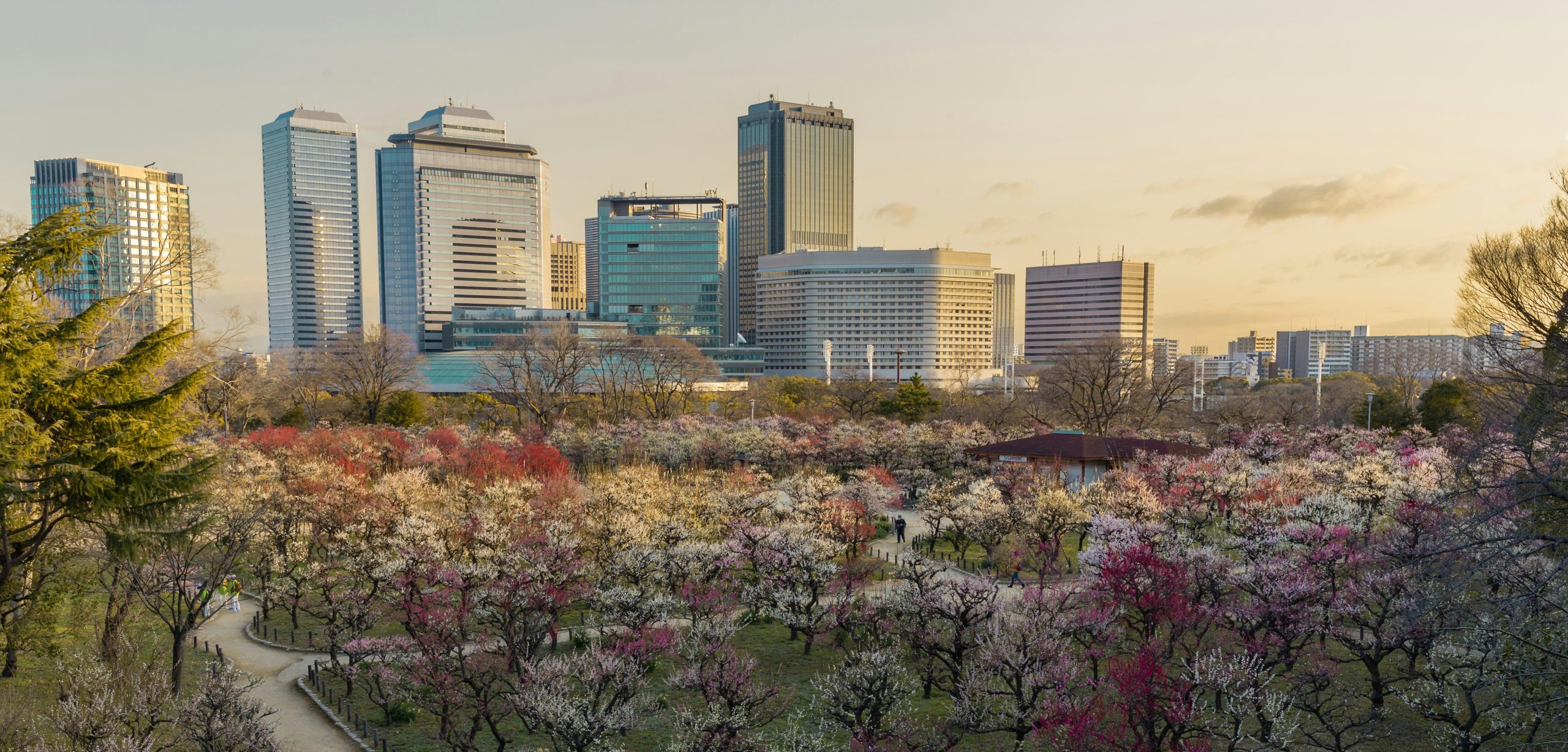
The best time to visit Tokyo for cherry blossoms is typically from late March to early April. This is when most of the cherry trees in Tokyo are in full bloom, transforming the city’s parks, gardens, and temple grounds into stunning landscapes of pink and white.
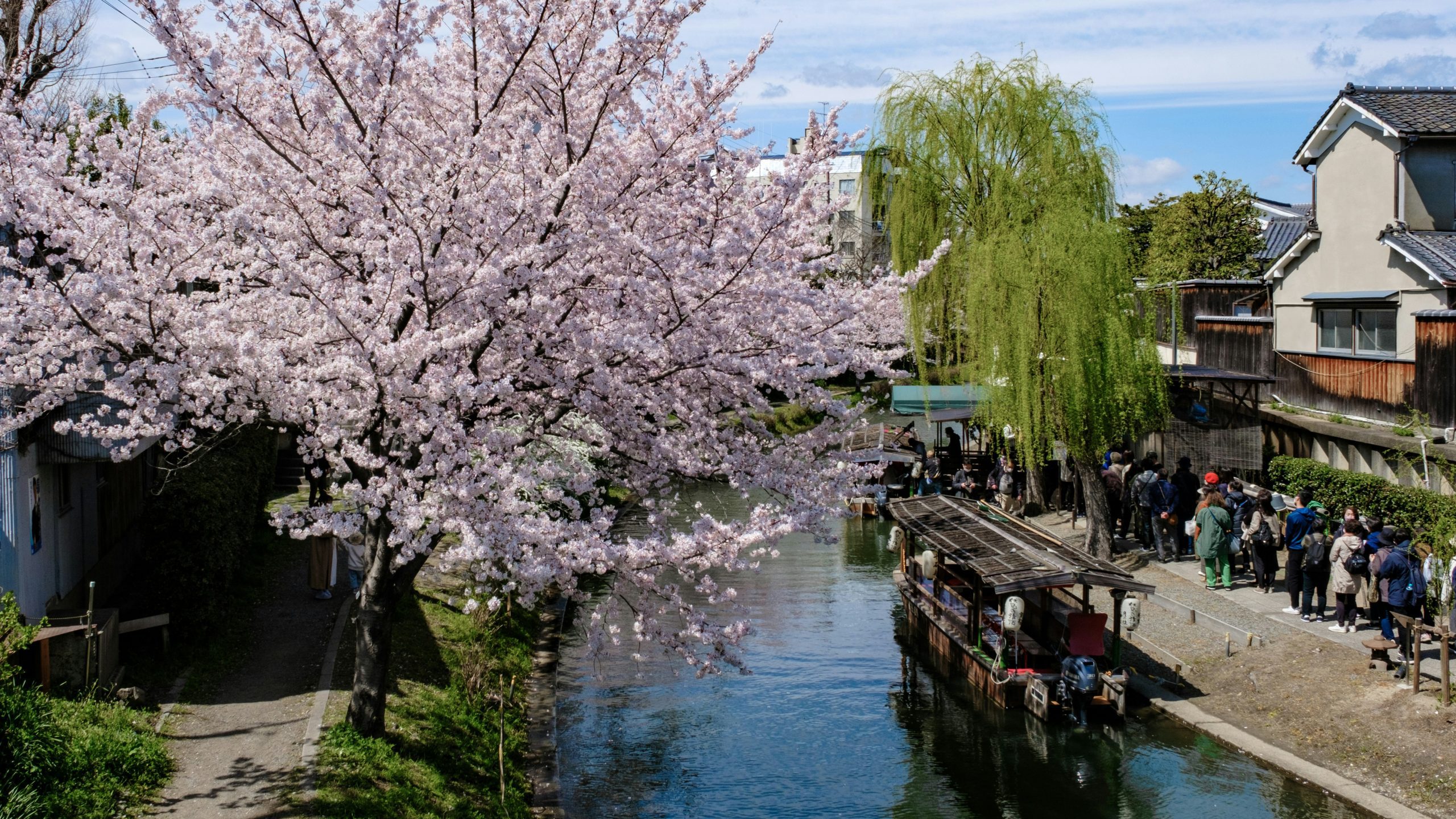
Mount Fuji is surrounded by several areas where you can enjoy the breathtaking beauty of cherry blossoms with the iconic mountain as a backdrop. The combination of the delicate sakura blooms and the majestic Mount Fuji offers one of the most quintessential Japanese springtime scenes, attracting photographers and travelers from around the world.
Best Places for Cherry Blossoms in Japan
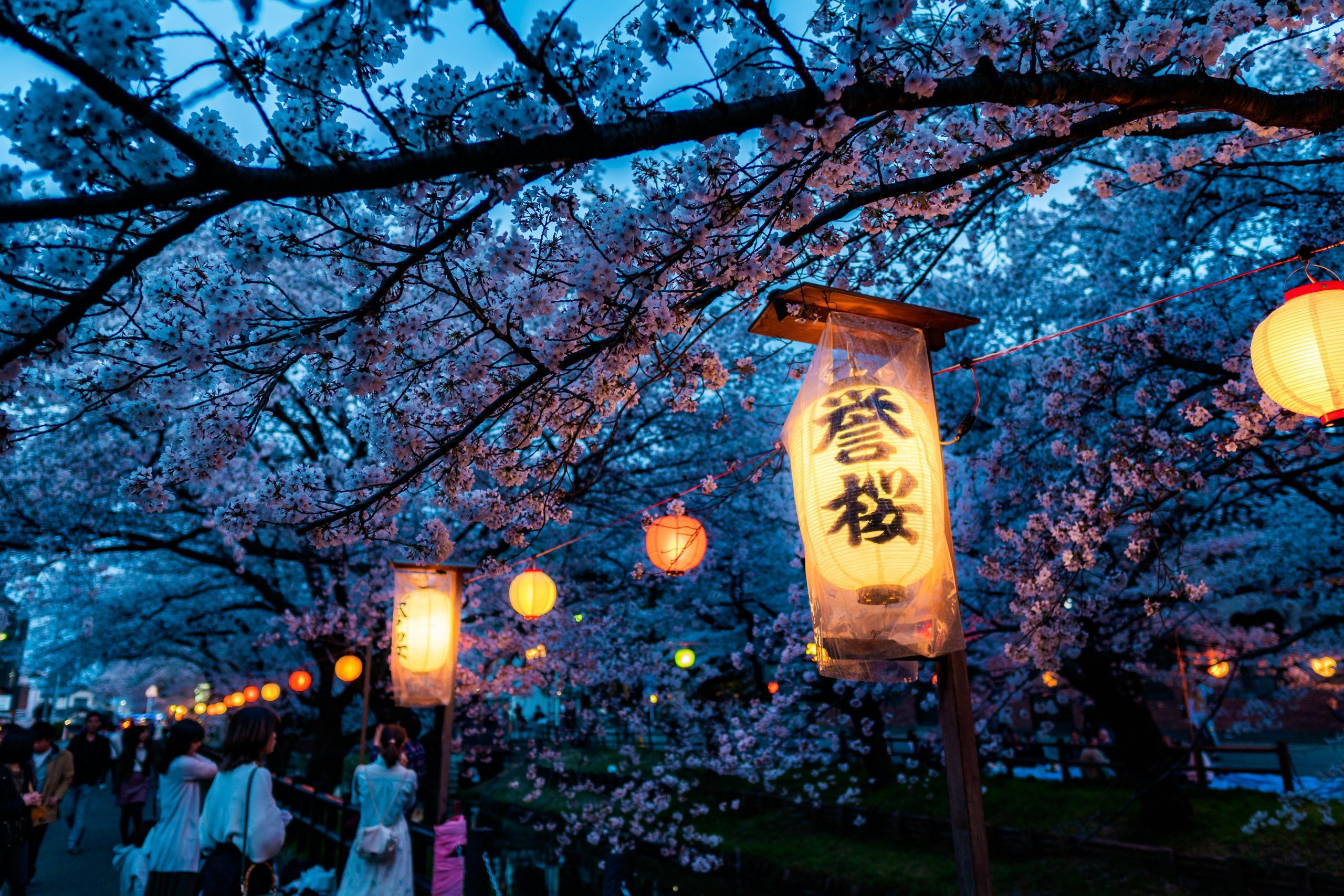
1. Mount Yoshino, Nara
Mount Yoshino in Nara is often considered the pinnacle of cherry blossom viewing in Japan. With over 30,000 cherry trees that blanket the mountainside in shades of pink and white, the area is divided into four main zones—Shimo Senbon (lower), Naka Senbon (middle), Kami Senbon (upper), and Oku Senbon (innermost).
Mount Yoshino has been a pilgrimage site for centuries , celebrated in Japanese literature and poetry, particularly in waka and haiku.
The area is rich in historical sites, such as Kinpusen-ji, a temple that is considered the second most important pilgrimage site in Yoshino and famous for its large Zao-do Hall.
The tiered effect ensures that visitors can enjoy the sakura in Mount Yoshino at various elevations from early April to late April.
2. hirosaki castle, aomori.
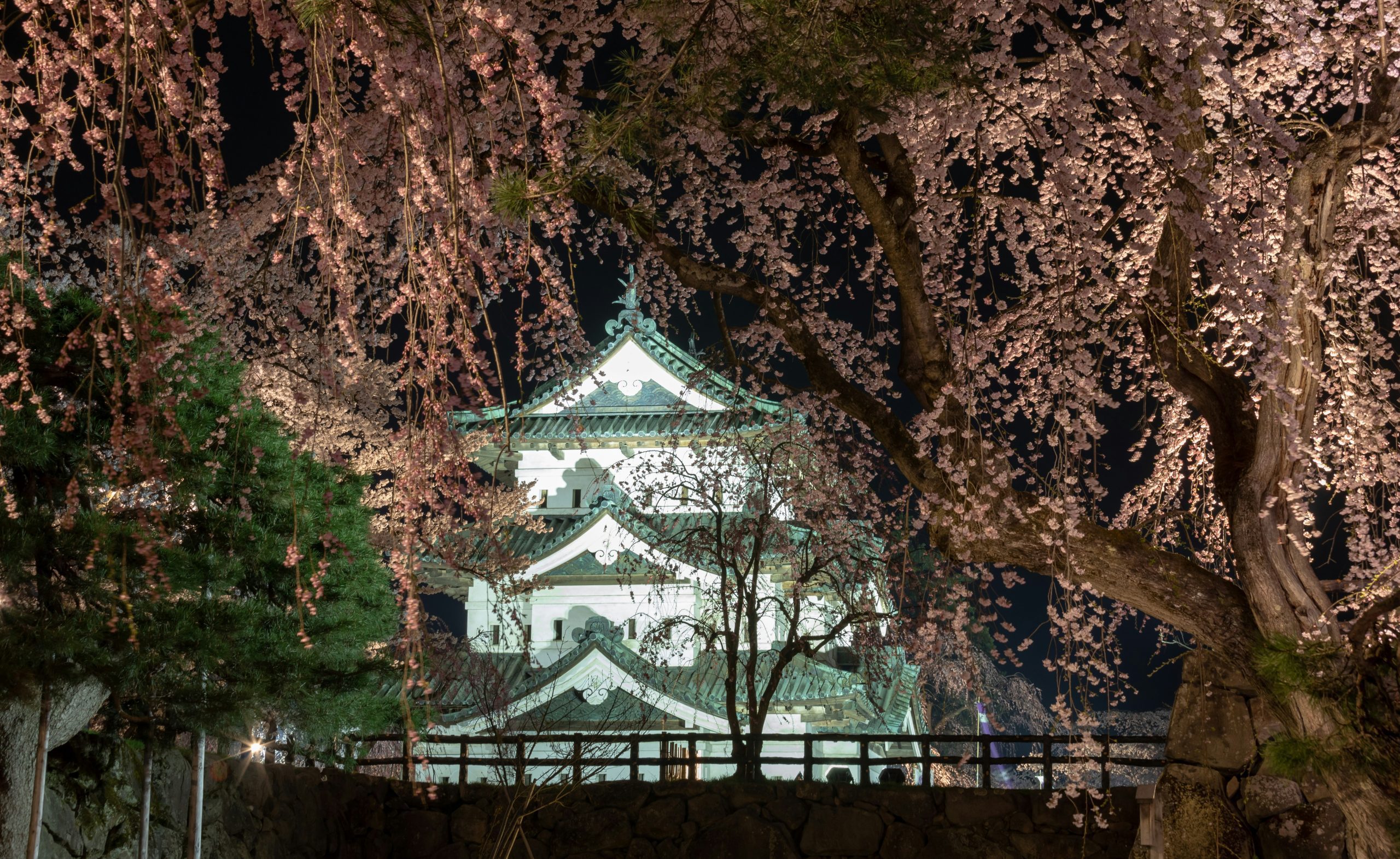
Hirosaki Castle, located in the heart of Aomori Prefecture, is surrounded by one of the most spectacular cherry blossom spots in Japan. The park surrounding the castle is home to over 2,500 cherry trees. The floating petals create a mesmerizing scene, often described as a carpet of pink and white that moves with the water’s flow.
During the cherry blossom season, the park hosts the Hirosaki Cherry Blossom Festival, one of the most anticipated events in the region. Night illuminations highlight the blossoms’ delicate beauty against the night sky, and stalls offer local gourmet treats and crafts.
3. Chureito Pagoda, Yamanashi
The Chureito Pagoda in Yamanashi Prefecture offers one of the most iconic scenes in Japan, especially during the cherry blossom season.
During the sakura season, the area around the pagoda is awash with the pink and white hues of blooming cherry trees. It creates a stunning contrast against the pagoda’s elegant structure and the s now-capped peak of Mount Fuji .
The climb up to the pagoda through the cherry tree-lined pathways is itself a memorable part of the experience. Once at the top, the panoramic view that unfolds is unparalleled, providing a moment of awe that encapsulates the beauty of Japan’s spring.
You can take part in traditional hanami picnics and capture memories against one of the country’s most breathtaking backdrops.
4. ueno park, tokyo.
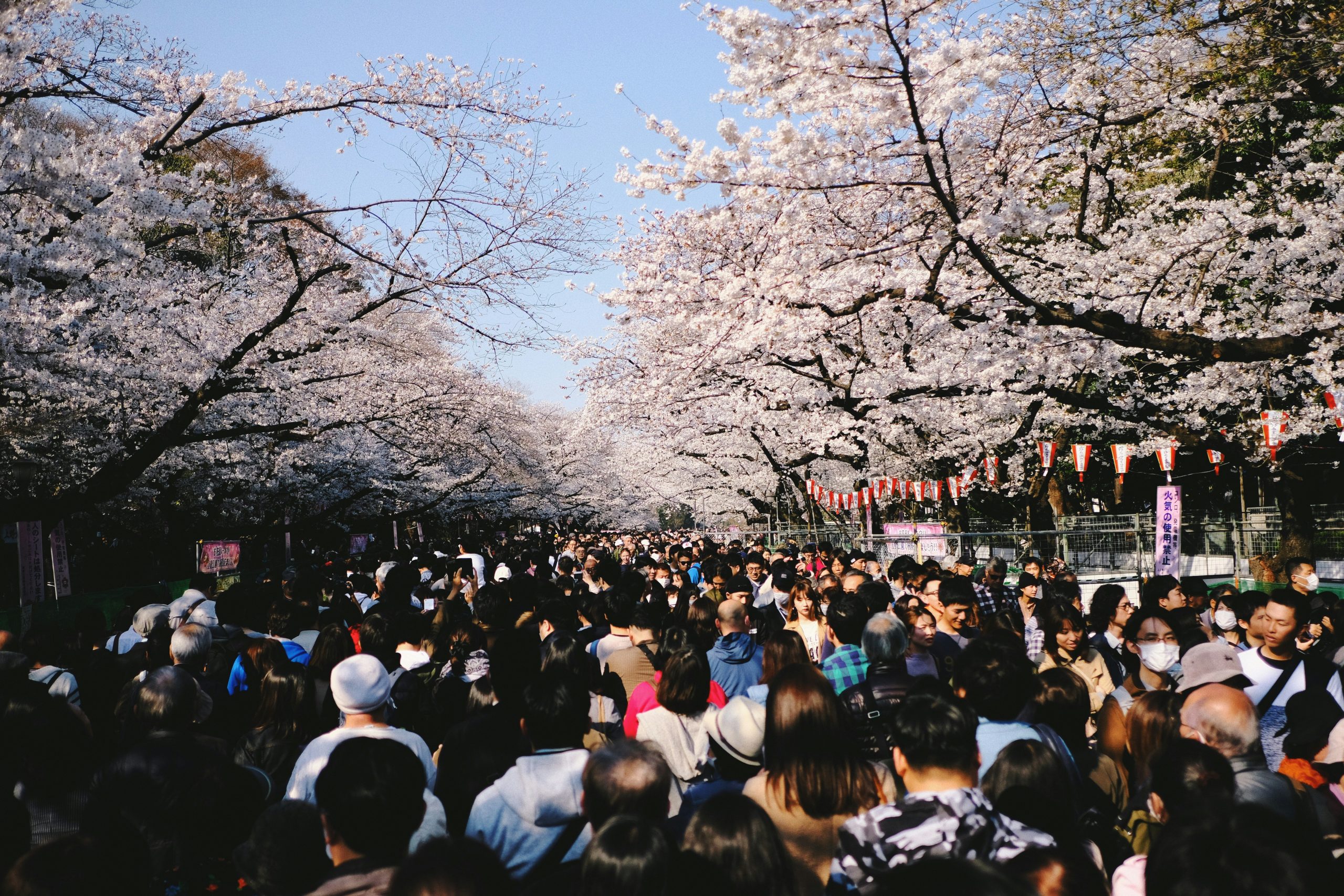
Ueno Park, situated in the heart of Tokyo, is a sprawling public space that comes alive in a spectacle of pink. With over 1,000 cherry trees lining its spacious avenues and surrounding its historic temples and museums, the park offers a stunning setting for the traditional Japanese custom of hanami, or flower viewing.
Beyond the visual feast of the cherry blossoms, Ueno Park is also a hub of cultural and recreational activities, especially during the sakura season.
The park’s grounds house several significant institutions, including the Tokyo National Museum, the National Museum of Nature and Science, and the Ueno Zoo.
5. Philosopher’s Path, Kyoto
The Philosopher’s Path in Kyoto is a serene walkway that invites both introspection and admiration of nature’s beauty. Stretching between two of the city’s most celebrated temples, Ginkaku-ji (the Silver Pavilion) and Nanzen-ji , this narrow path follows a quaint canal lined with hundreds of cherry trees.
During the spring, these trees burst into a soft cloud of pink, creating a tranquil canopy that perfectly complements the philosophical journey the path is named for. The path’s origins are linked to the daily meditative walks of one of Japan’s most famous philosophers, Nishida Kitaro .
The area becomes a lively but peaceful celebration of spring, where visitors can enjoy the blossoms, sip on matcha at a nearby cafe, or discover local crafts at a boutique.
6. Maruyama Park, Kyoto
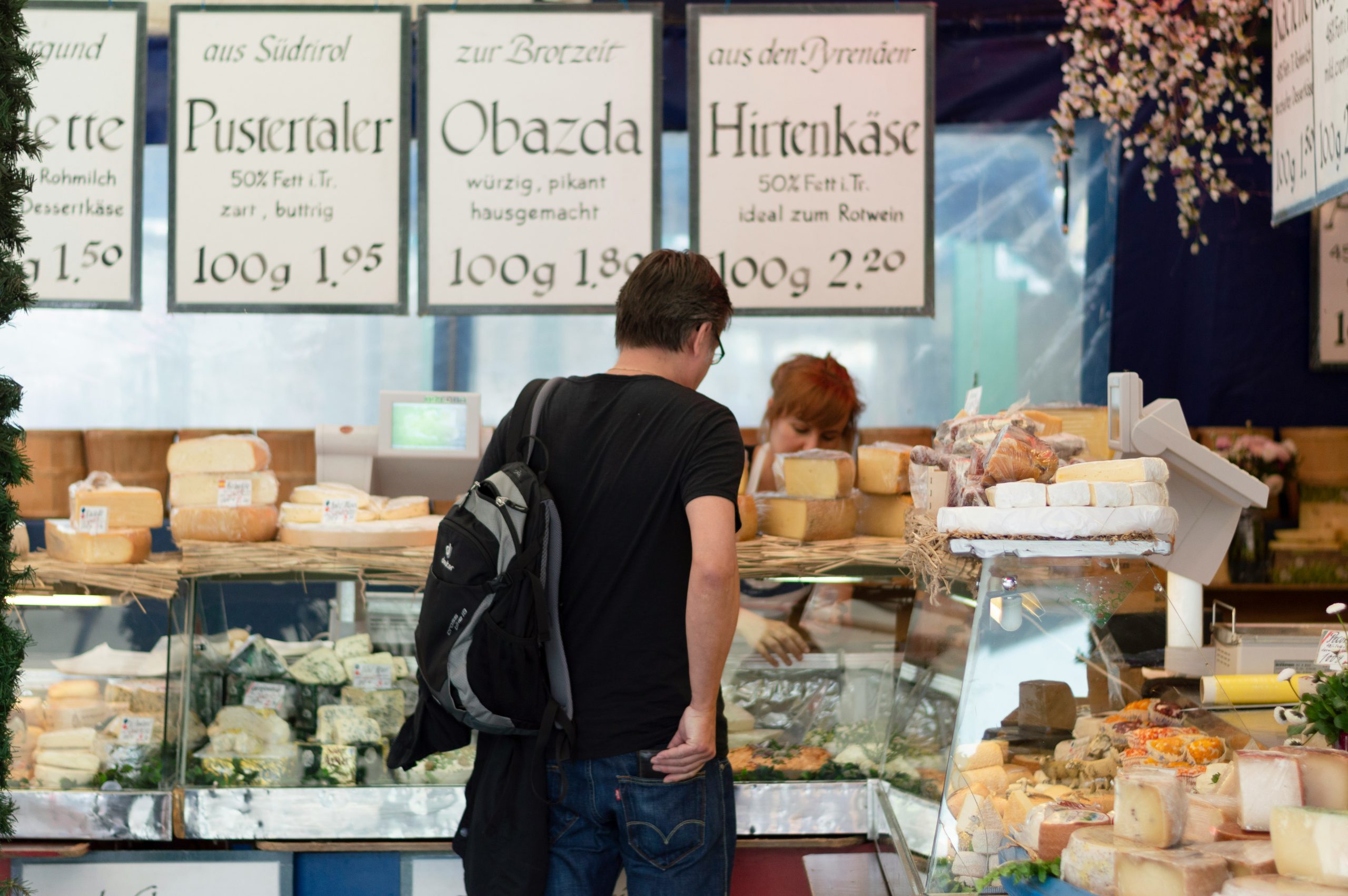
Maruyama Park, nestled in the historical heart of Kyoto, is renowned for its spectacular display of cherry blossoms, centered around a majestic weeping cherry tree that becomes the park’s crowning glory during sakura season.
The large weeping cherry tree, illuminated at night, transforms into a breathtaking spectacle, its delicate pink blossoms glowing against the evening sky, creating an almost ethereal atmosphere.
Beyond the central weeping cherry tree, Maruyama Park unfolds in a variety of sakura , from vibrant somei yoshino trees to the deeper hues of yaezakura, offering a palette of pinks and whites that blanket the landscape.
7. Kanazawa’s Kenrokuen Garden
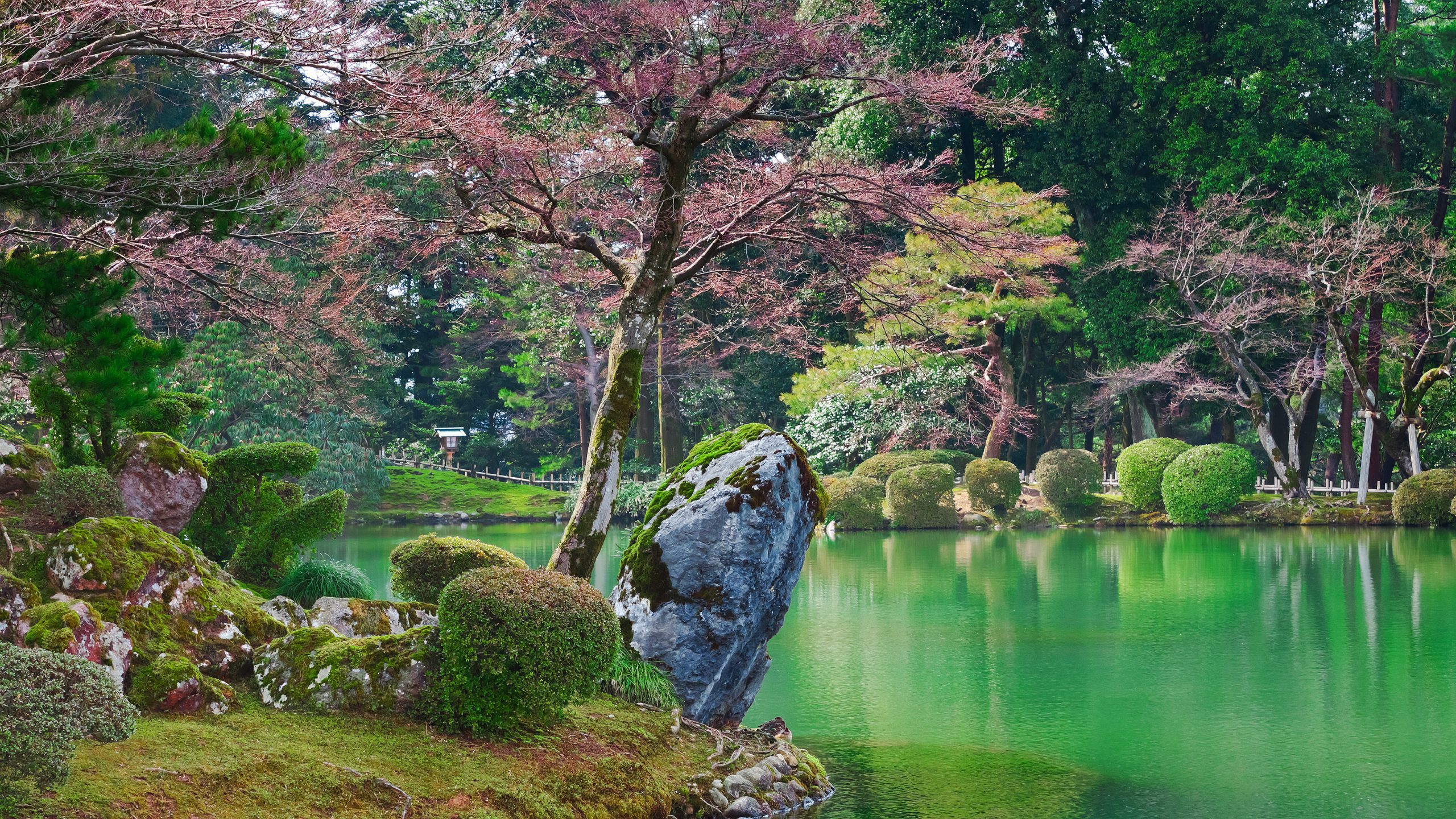
Kanazawa’s Kenrokuen Garden stands as a testament to the enduring beauty and meticulous craftsmanship of traditional Japanese landscape design. No wonder it is recognized as one of the Three Great Gardens of Japan . In spring, this historical garden transcends its year-round splendor to embrace the cherry blossom season, making it a particularly captivating time for a visit.
The garden’s name, Kenrokuen, means “Garden of the Six Sublimities,” referring to the six essential attributes for a perfect garden: spaciousness, seclusion, artifice, antiquity, water-courses, and panoramas. Each of these qualities is enhanced by the delicate overlay of pink from the cherry blossoms.
Adding to the allure of Kenrokuen during the sakura season are the various traditional teahouses and rest spots scattered throughout the garden. Here, you can pause to enjoy matcha and sweets while taking in the views.
8. Himeji Castle, Hyogo
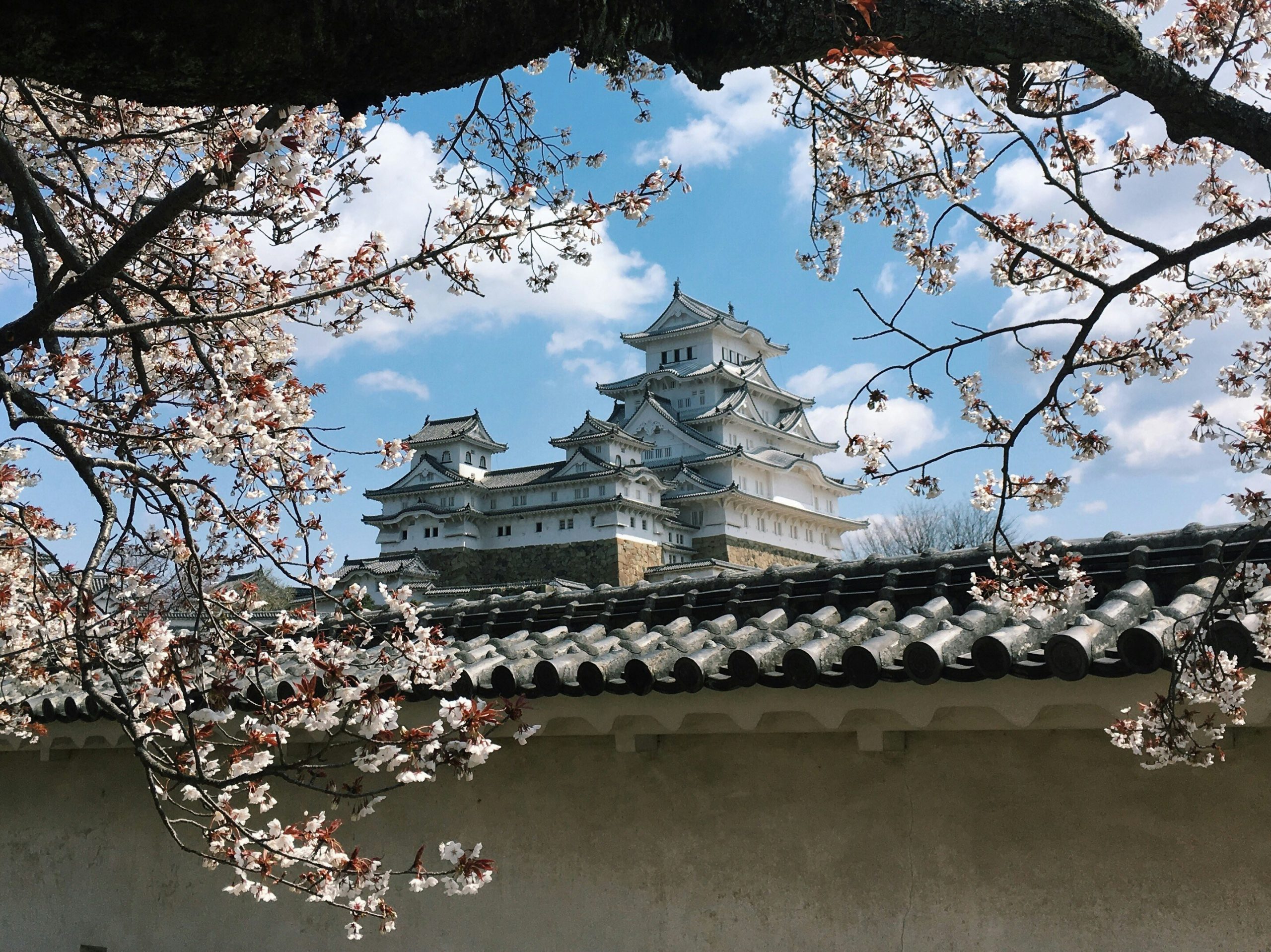
Himeji Castle in Hyogo, often referred to as the “White Heron Castle” due to its elegant, white façade, stands as a pinnacle of ancient Japanese architecture and is considered one of the most spectacular castles in Japan.
During the cherry blossom season, this UNESCO World Heritage site is enveloped by the soft pinks of blooming sakura, creating a mesmerizing contrast that seems to be pulled straight from a fairy tale.
The surrounding gardens, with their meticulously arranged cherry trees, become the perfect setting for hanami. The castle’s intricate design and formidable presence, set against the fleeting beauty of the cherry blossoms, offer a visual feast that attracts photographers.
9. Kakunodate, Akita
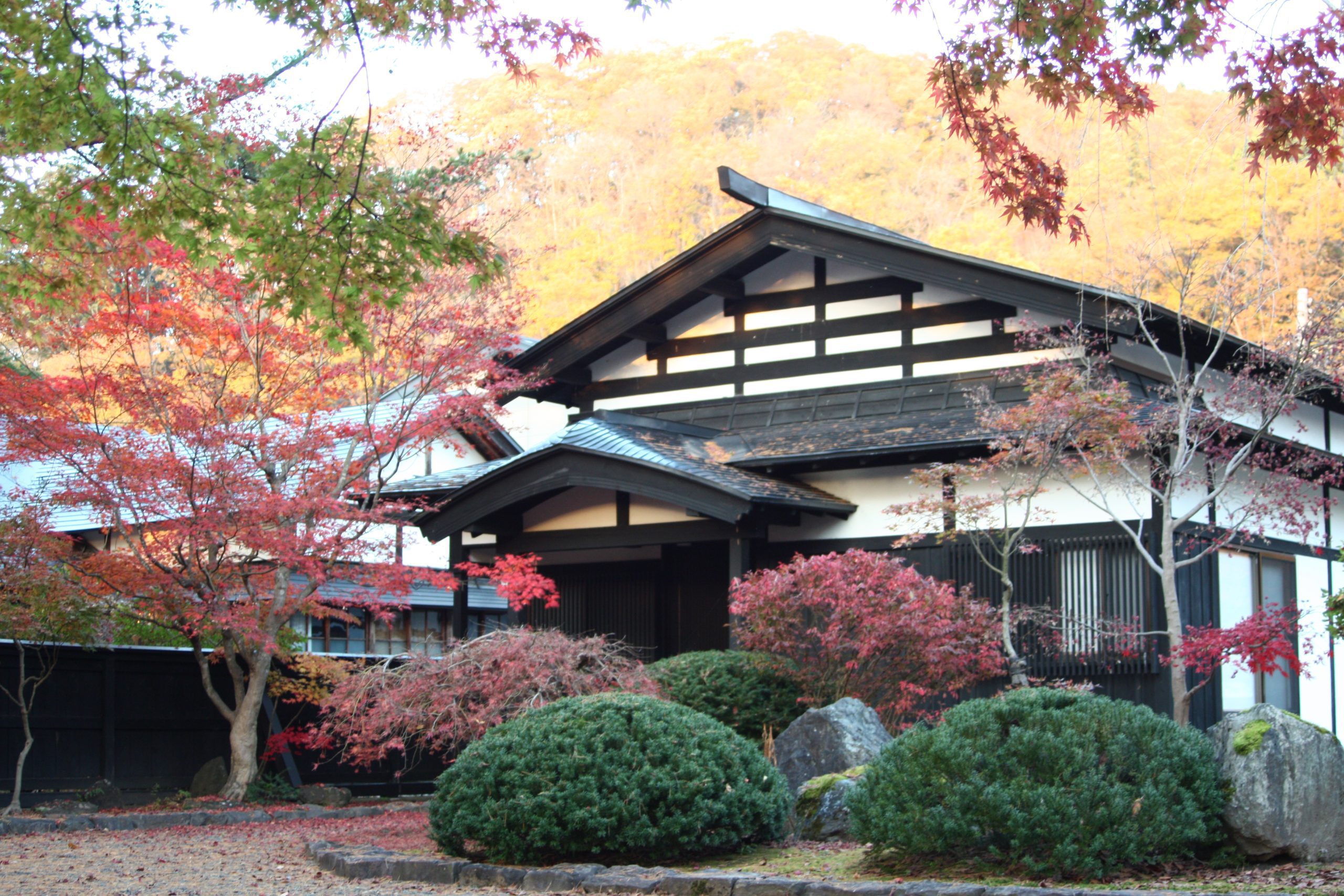
Kakunodate, a charming town in Akita Prefecture, is celebrated for its well-preserved samurai district , where time appears to stand still. Known as the “Little Kyoto of Tohoku,” Kakunodate’s historical ambiance is further accentuated in spring when the weeping cherry trees lining the samurai residences bloom.
Wander through the same streets where samurai once walked, all while being surrounded by the breathtaking beauty of sakura. The contrast of the dark wooden fences and traditional architecture with the vibrant blossoms draws cultural aficionados and nature lovers alike.
10. Lake Kawaguchiko, Yamanashi
Lake Kawaguchiko, situated in the scenic Fuji Five Lakes region of Yamanashi Prefecture, boasts one of the most iconic views in Japan. Here, the majestic Mount Fuji is framed by the delicate pinks and whites of cherry blossoms.
The northern shores of Lake Kawaguchiko become particularly enchanting during the Fuji Shibazakura Festival , when the area near the lake is blanketed with a vibrant carpet of shibazakura, or “moss phlox,” complementing the sakura.
Best Time to See Cherry Blossoms in Japan
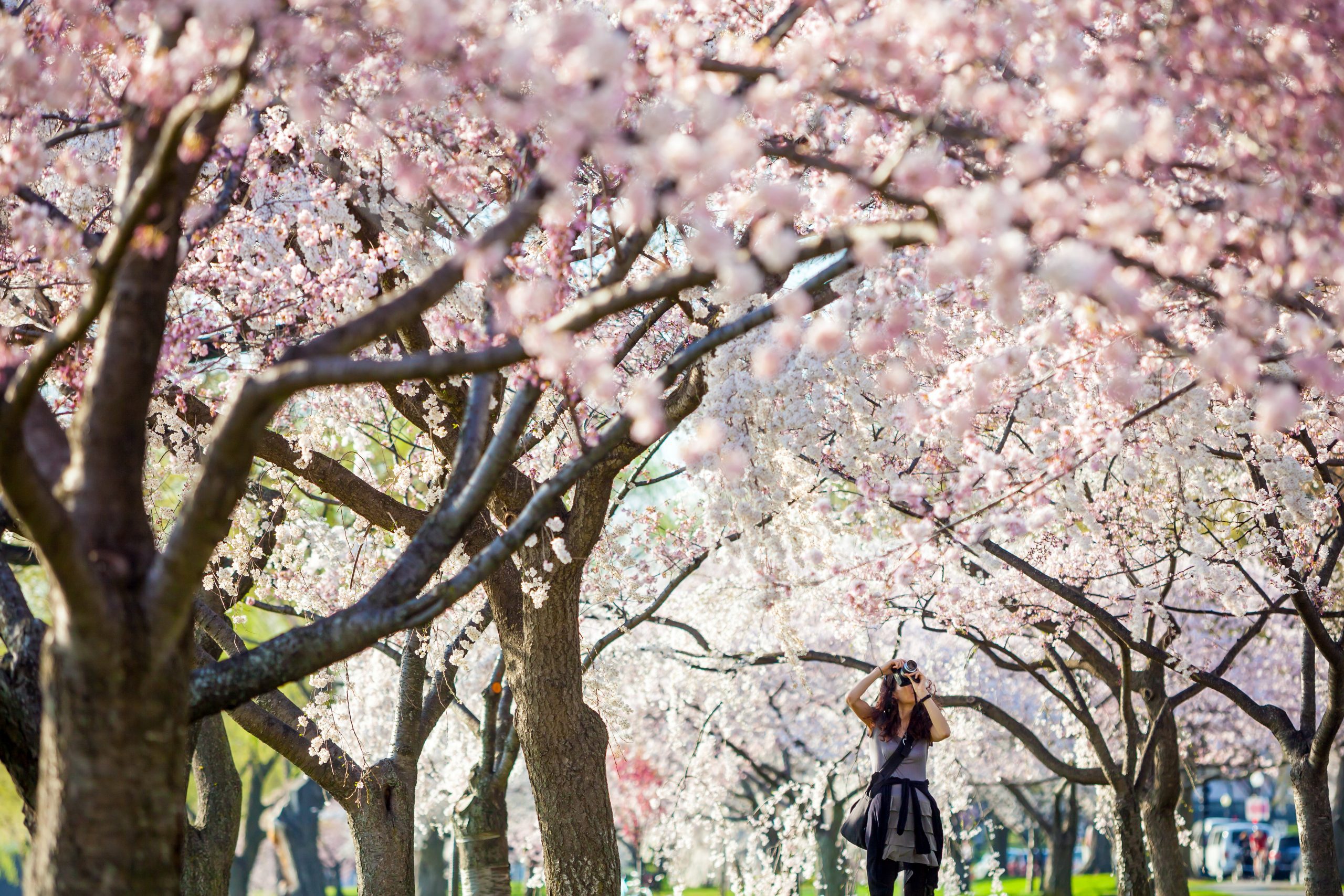
The best time to see cherry blossoms in Japan typically spans from late March to early April . This magical window, known as sakura season, varies slightly from year to year and across different regions due to Japan’s diverse climate. In southern regions, such as Kyushu, the cherry blossoms may start blooming as early as late March, while in northern areas like Hokkaido, the spectacle can be enjoyed as late as May.
Tokyo and Kyoto, two of the most popular destinations for cherry blossom viewing, usually reach full bloom in the first week of April. The blossoms last for about a week before the delicate petals begin to fall, creating a picturesque “snowfall” of petals.
For those planning to partake in this quintessential Japanese experience, it’s crucial to monitor the annual cherry blossom forecasts released by meteorological agencies.
Visiting Cherry Blossoms in Japan on a Budget
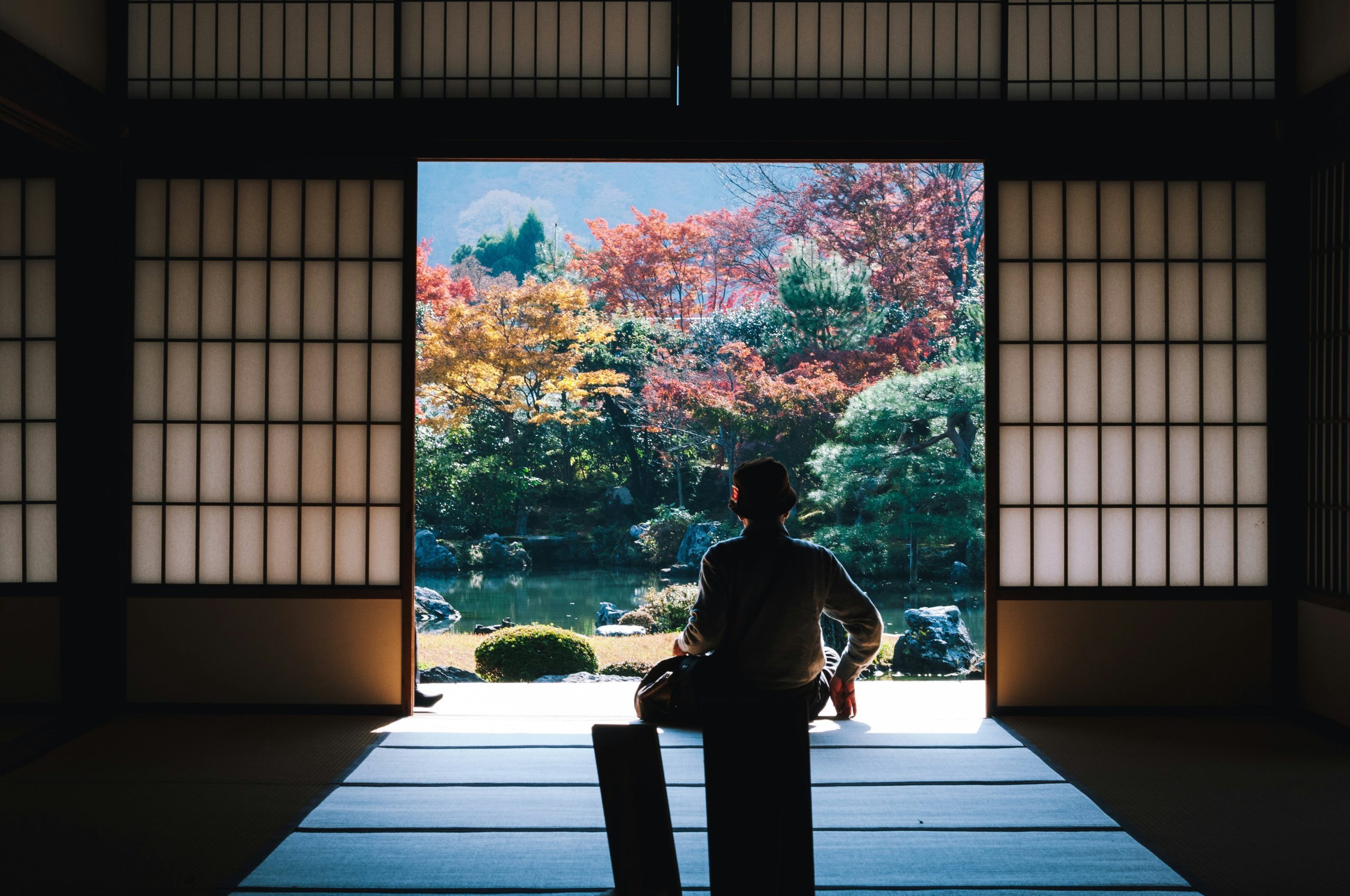
Exploring the ethereal beauty of cherry blossoms in Japan doesn’t have to strain your wallet. For budget-conscious travelers, particularly those venturing solo, joining group tours can be a game-changer. These tours not only offer the advantage of reduced costs through shared expenses but also provide a curated experience that ensures you don’t miss any of the breathtaking sakura spots.
Whether you’re a solo adventurer seeking the camaraderie of fellow sakura enthusiasts or a budget traveler looking to maximize your experience, group tours in Japan during cherry blossom season offer an enriching and cost-effective way to explore the country’s iconic natural beauty.
How to Photograph Cherry Blossoms
Start by choosing the right time of day; early morning or late afternoon offers softer light, enhancing the delicate hues of the sakura petals.
- Utilizing a shallow depth of field can help isolate a cluster of blossoms against a beautifully blurred background, making the flowers pop.
- Consider the composition by incorporating elements like temples, rivers, or mountains , which can add a sense of place and scale to your photos.
- Playing with perspectives—such as shooting upwards towards the sky or including people for a sense of scale—can add dynamism and context to your images.
- Finally, patience is key when photographing cherry blossoms in Japan. Wait for the perfect light, the gentle sway of the branches, or a serene moment that encapsulates the transient beauty of the cherry blossoms.
Cherry Blossoms Festivals 2024
Cherry Blossom Festivals in 2024 promise to be a spectacular showcase of spring’s ephemeral beauty, with events planned across Japan to celebrate the fleeting season of sakura. These festivals, known locally as “sakura matsuri,” are a cultural highlight, offering visitors a unique blend of traditional and modern celebrations.
- Tokyo Ueno Park Cherry Blossom Festival : A vibrant hanami experience under the bloom-filled canopies, complemented by cultural events and food stalls.
- Kyoto Maruyama Park Cherry Blossom Viewing : Historic and scenic, featuring a large weeping cherry tree illuminated at night for a breathtaking view.
- Hirosaki Cherry Blossom Festival at Hirosaki Castle : Set against a traditional castle, this festival is famous for its stunning landscapes filled with thousands of cherry trees.
- Takada Castle Cherry Blossom Festival in Niigata : Renowned for its spectacular nighttime viewings, with over 4,000 cherry trees lit up, creating a magical atmosphere.
- Yoshinoyama Cherry Blossom Festival in Nara : Celebrated on Mount Yoshino, home to over 30,000 cherry trees, offering one of the most extensive and varied sakura experiences in Japan.
Cherry Blossoms in Japan – Gallery
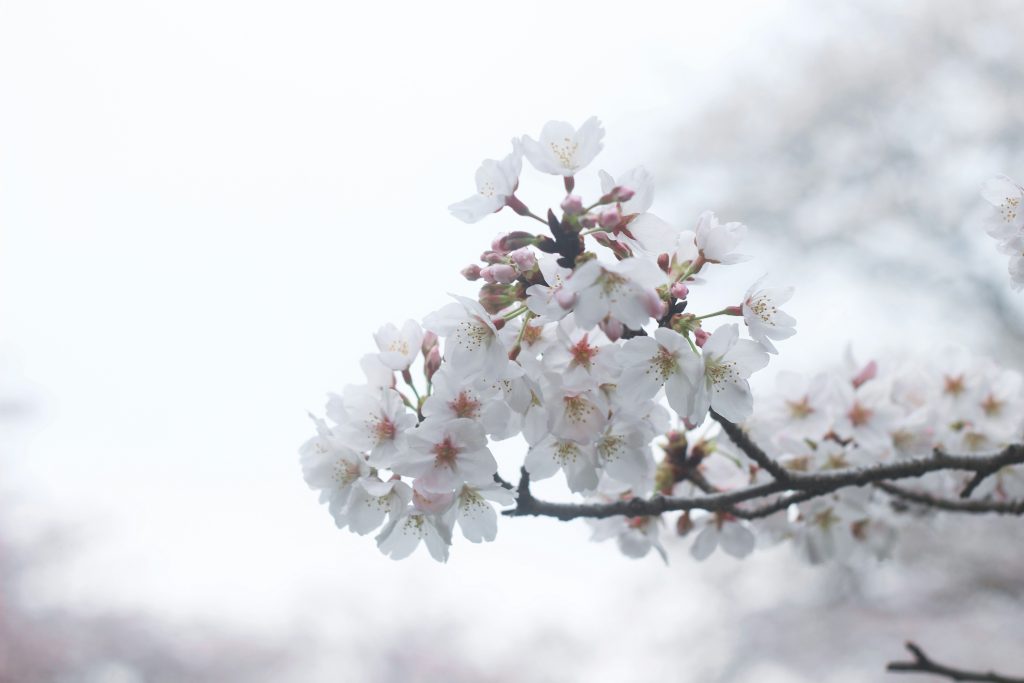
Check out Travel Talk Japan tours to begin your cherry blossom viewing in Japan!
- Adventure Travel (17)
- Africa (16)
- Americas (16)
- Anzac Tours (1)
- Balkans (5)
- Cambodia (3)
- Central America (9)
- central europe (3)
- Costa Rica (6)
- Destinations (34)
- Europe (40)
- Festivals and Events (12)
- Greece (14)
- Iceland (8)
- Indonesia (14)
- Jordan (12)
- Morocco (18)
- New Zealand (16)
- Reasons to Travel (7)
- Sail Croatia (7)
- Sail Greece (2)
- Sailing (4)
- Singapore (15)
- Ski Tours (5)
- Spain & Portugal (8)
- Sri Lanka (4)
- Thailand (4)
- Top Tips (9)
- Transylvania (6)
- Travel & Wellbeing (4)
- Turkey (22)
- Uncategorized (8)
- Vietnam (10)
Recent Posts
- Where to See Cherry Blossoms in Japan – Viewing Guide by Travel Talk April 4, 2024
- 10 Things to Know about Munich – Facts and FAQs by Travel Talk April 2, 2024
- A Guide to the Best Coffee Houses and Cafes in Vienna by Travel Talk March 28, 2024
- 10 Incredible Vienna Facts You Must Know Before Your Trip by Travel Talk March 28, 2024
- Best Destinations to Visit in Central & Eastern Europe Summer 2024 by Travel Talk March 27, 2024
- You are comparing tours.
Open until midnight
+44 20 809 995 96 [email protected]
Monday - Friday: 09:00 AM - 6:00 PM Saturday: 10:00 AM - 5:00 PM Sunday: Closed W. Europe

IMAGES
VIDEO
COMMENTS
How much does a one week, two week, or one month trip to Japan cost? A one week trip to Japan usually costs around $865 (¥130,999) for one person and $1,730 (¥261,998) for two people. This includes accommodation, food, local transportation, and sightseeing. A two week trip to Japan on average costs around $1,730 (¥261,998) for one person and ...
Nara - Kyoto: 700 Yen ( $5) Kyoto - Hiroshima: 10,500 Yen ( $70) Hiroshima - Osaka: 10,000 Yen ( $67) So if you were to replicate my Japan route exactly, you would end up spending $381 on rail tickets. It sounds like a lot of money but I do want to stress that the trains in Japan are some of the best in the world.
6. The Japan Rail Pass is a great travel bargain. Like the famous Eurail Pass, the JR Pass is one of the world's great travel bargains and is the best way to see a lot of Japan on a budget. It allows unlimited travel on Japan's brilliant nationwide rail system, including the lightning-fast shinkansen (bullet train).
From the United States, a round-trip flight to Japan can be anywhere from $800 USD to $1500 USD. This cost will fluctuate depending on the time of year you choose to travel and where you're traveling from, so keep an eye on prices and see if you can score yourself a deal.
A regular JR pass that allows travel across the whole country costs 29,100 yen. This is incredibly reasonable. If you take a train from Tokyo to Kyoto, throw in a day trip to Nara and you've started saving money. Our plan was as follows: 3 days - Hiroshima and Miyajima. 2 days - Osaka. 1 day - Himeji. 1 day - Nara.
Carry about $40 worth of cash per day in Japan. On a typical day, a mid-range budget traveler in Japan will need at least $40 in cash to cover food, transportation, and attractions. A daily cash expense breakdown can look like this: $15 at restaurants and cafes. $10 on shopping.
Bus Passes. One way to save on transport costs in Japan is by purchasing a Willer Express Bus Pass. This pass allows you to travel for 3, 5 or 7 days within a period specified by you. Advantages: The days of travel do not need to be consecutive, giving you flexibility in your itinerary.
Japan on a budget: Top money-saving tips. If you're looking for our top money-saving tips for traveling Japan on a budget, here they are! Travel during low season to get the best rates on accommodation.; Buy a Japan Rail Pass if you plan to visit several places during your trip.. This article breaks down how much the Japan Rail Pass costs and how to purchase it.
Transportation and Tours Price; 7-day Japan Rail Pass (Ordinary) from 50,000 yen: Tokyo Metro 24-hour ticket: 600 yen: Common 1-day ticket for Tokyo Metro & Toei Subway
Asia / Japan /. For a trip to Japan, you should plan for daily costs anywhere between $49 to $318. If there's two of you traveling, your daily expenses could range from $98 to $636. These price ranges are based on the average daily spending of $125 (¥18,714) per person which comes from the travel expenses of other visitors.
You can save money in Japan by living like a local. If you're staying in a hostel, buying a rail pass, eating relatively cheap food, and visiting a few attractions, budget around 10,000-13,000 JPY per day. However, by utilizing the tips above, I think you can travel Japan for 7,000-10,000 JPY per day.
Breakdown of budget for 2 weeks in Japan: Flights (from London to Tokyo return, via Warsaw on using Lot airlines)- $830. Accommodation - $870. Transport (14-day Japan Rail pass) - $360. Food (Daily cost averaged $30, which in most cases was street food lunch/snacks and a low-average priced dinner) - $420.
The Seishun 18 is a 5-day ticket, costing 2,370 yen per day - a total of 11,850 yen. A fraction of the price of the Japan Rail Pass, this is a great option if you want to do lots of little trips or one or two big journeys during the 5 day period. Interestingly, the ticket can also be shared between up to 5 people.
Kanpai's Budget Calculator provides a precise estimate of the travel expenditures item-by-item, with numerous possible choices. As a matter of fact, a backpacker's 10-days trip will not cost the same as a 3-weeks stay for a family looking for a very comfortable trip. Fill in the questionnaire below to discover the expenses to expect and ...
Travel Cost Calculator for Japan. The average traveler in Japan spends about € 130 ($ 138) per day. If you are a backpacker or on a small budget, you usually spend € 60 ($ 64) per day. Those traveling in more luxury will pay around € 320 ($ 340) per day. We even managed to stay under 40 € ($ 47) per day on our trip.
6. Book your accommodation ahead of time. Budget-friendly places fill up first. Unfortunately, Japan is one of those countries where planning ahead is going to save you lots of money. Our guesthouses and hostels were all booked on Booking.com and Hostelworld.com for anywhere from $7.50-$23 per person.
The bottom line is that the Japan trip cost for a two-week trip for a family of four, staying in four-star level accommodations with a few paid activities will cost about $13,420 or $280 per person, per day. However, while Japan is an expensive country, there are options for budget travel in Japan. The trip to Japan cost depends on your travel ...
The Japan Vacation Budget Calculator goes beyond presenting the total trip cost. It provides a detailed cost breakdown, categorizing expenses to unveil a more comprehensive view of your budget. The breakdown includes individual expenses for flights, hotel accommodation, daily transportation, food, travel insurance, and miscellaneous costs.
The traditional Japanese inns, with tatami, futon and onsen bath are one of the essentials of a trip to Japan. Count on average 20,000 - 30,000 ¥ / pers. with meals and breakfast included. Minshuku. Home cooking and direct contact with the locals, the minshuku are the equivalent of our guest rooms.
Unlike in much of the rest of the world, consumer prices in Japan have barely increased over the past decades. Add to it a weak yen, and you have a travel destination that is much more economical than the outdated misconceptions about expensive Japan would suggest.With careful planning and a little know-how, it is now easier than ever to enjoy a budget trip in Japan.
TOTAL (Estimate by Budget) $4600-6500. Below is a further explanation of the budget seen above in the chart to understand how prices can vary depending on your specific plans and overall Japan cost. It is a good idea to purchase a sim card to ensure your phone will operate on Japanese networks.
Medium budget: 500 - 1000 yen per day. Many coffee shops and some restaurants in shopping areas and around train stations offer breakfast sets for around 500 to 1000 yen. High budget: above 1000 yen per day. Hotel breakfasts and breakfast buffets will usually cost you more than 1000 yen.
What is the cheapest flight to Japan? The cheapest ticket to Japan from the United States found in the last 72 hours was $249 one-way, and $370 round-trip. The most popular route is Los Angeles to Tokyo Haneda and the cheapest round-trip airline ticket found on this route in the last 72 hours was $751.
Budget Tricks: Save your pocket money and still see all the cool stuff. Updates; Come on, Let's Go! Grab your copy of Japan Travel Guide 2024 now and start planning your most amazing trip ever. Japan is waiting for you with lots of fun, yummy food, and cool places to explore. Let's make your adventure in Japan the best time ever!
Before you begin your selection process, delve into the budget-friendly destinations of Asia for summer 2024, where you can travel without exceeding your limit. Agoda, the popular online travel agency, surveyed to determine the most budget-friendly destination in Asia for 2024 by comparing the average room rates across top destinations in the ...
The "Land of the Rising Sun" might seem out of reach budget-wise, but did you know you could snag roundtrip tickets to Tokyo from the $500s or less?
Japan is often viewed as a destination with a reputation for being expensive. From luxurious hotels and ryokan (traditional Japanese inns) to its world-renowned dining scene, this perception as a pricey travel spot has been ingrained in the minds of many travelers.However, there are a wealth of opportunities for budget-conscious explorers, and this is especially so at the moment with the weak ...
For business travel, they will likely go to Japan, Canada and South Korea this year. ... Travel budget. According to the Klook study, Filipino travelers usually allot P15,000 to P50,000 for their ...
Japan ; Japan Travel Forum; Search. Browse all 150,587 Japan topics » Website for buses and normal trains Watch this Topic. Browse forums; All. Browse by destination. ... We are on a low budget and won't use bullet trains and don't mind wasting couple of hours extra per journey. Secondly, our intended route is Tokyo, Kawaguchiko, Matsumoto, ...
Visiting Cherry Blossoms in Japan on a Budget. Exploring the ethereal beauty of cherry blossoms in Japan doesn't have to strain your wallet. For budget-conscious travelers, particularly those venturing solo, joining group tours can be a game-changer. ... Check out Travel Talk Japan tours to begin your cherry blossom viewing in Japan! Search ...